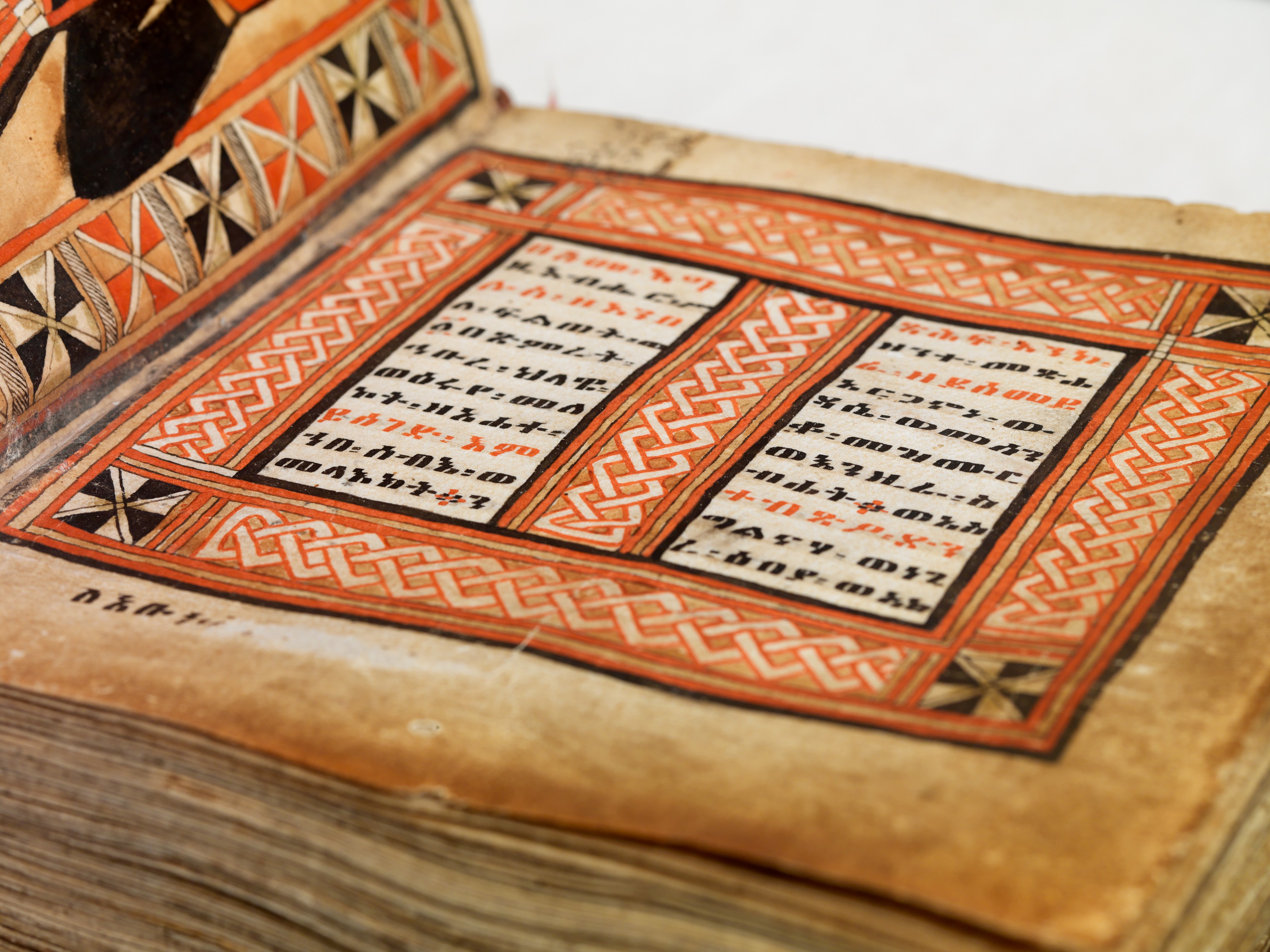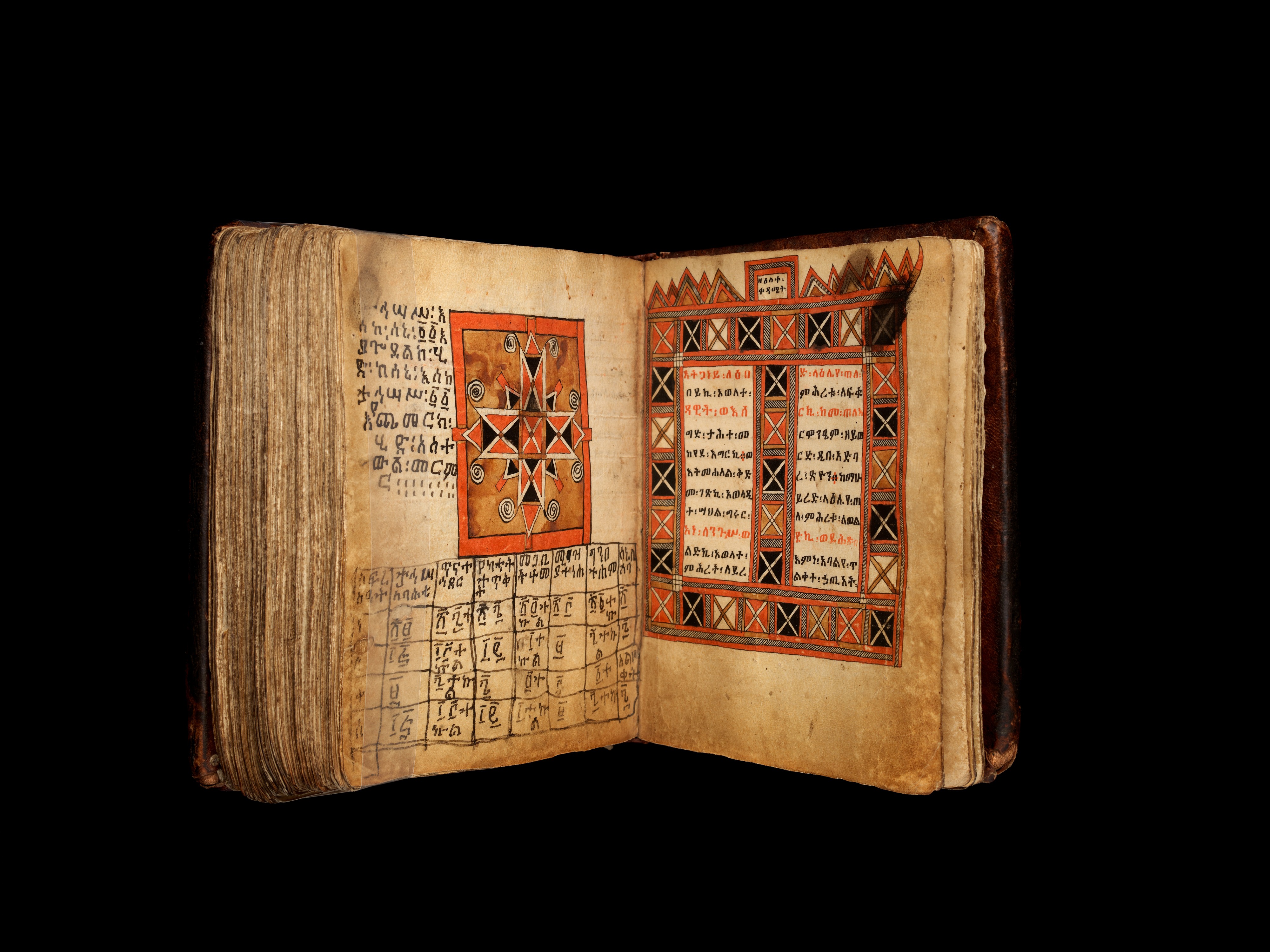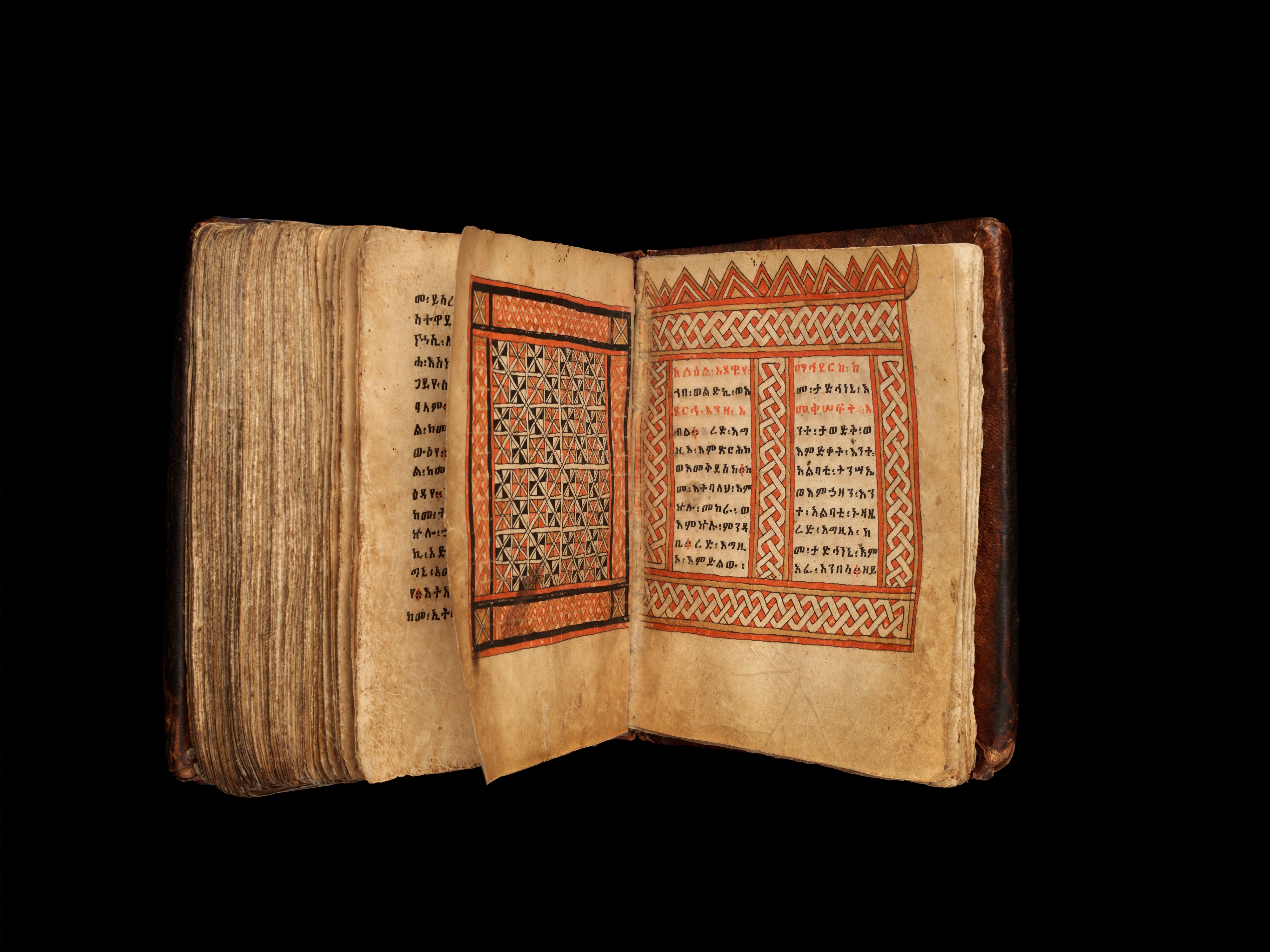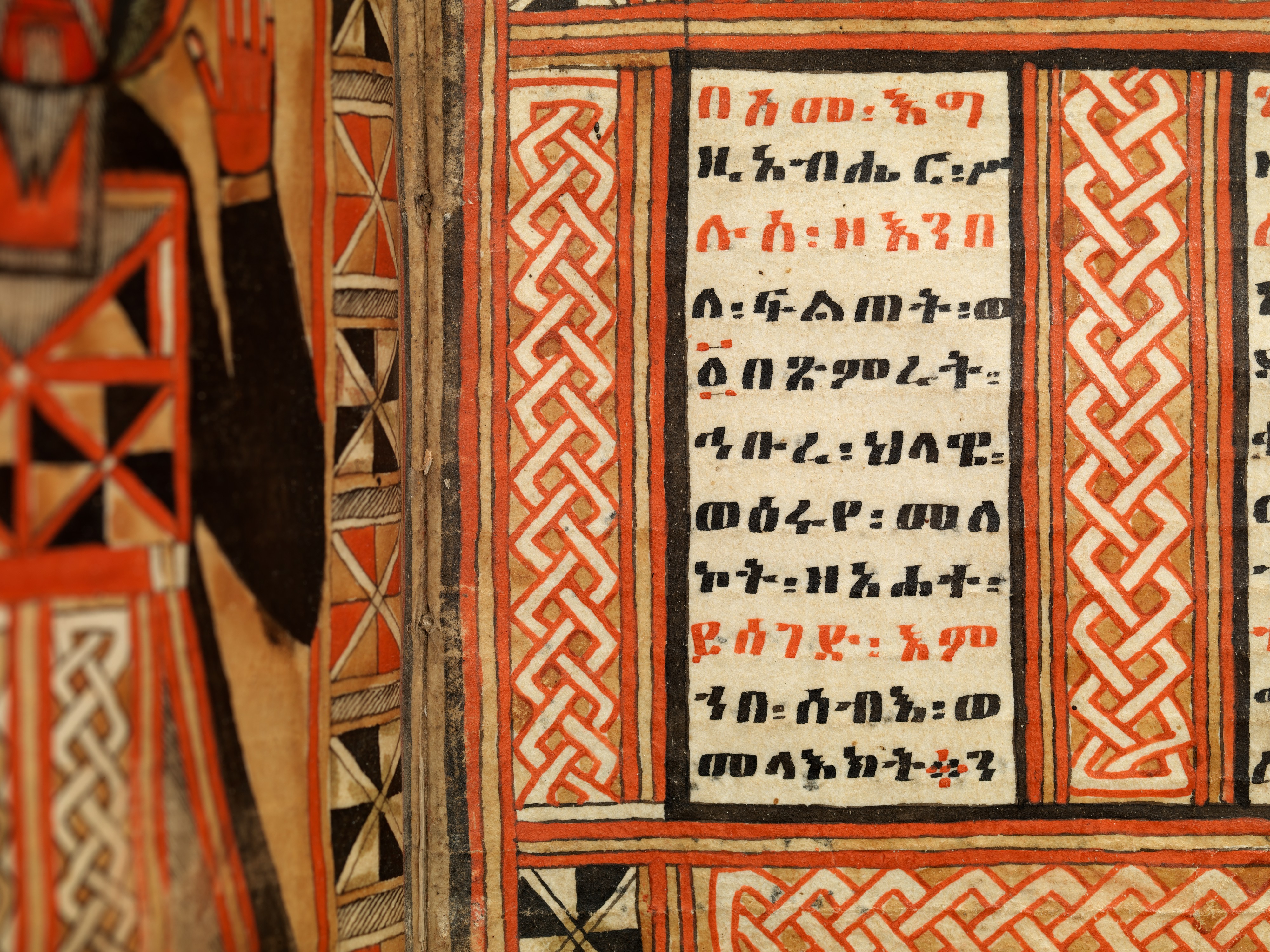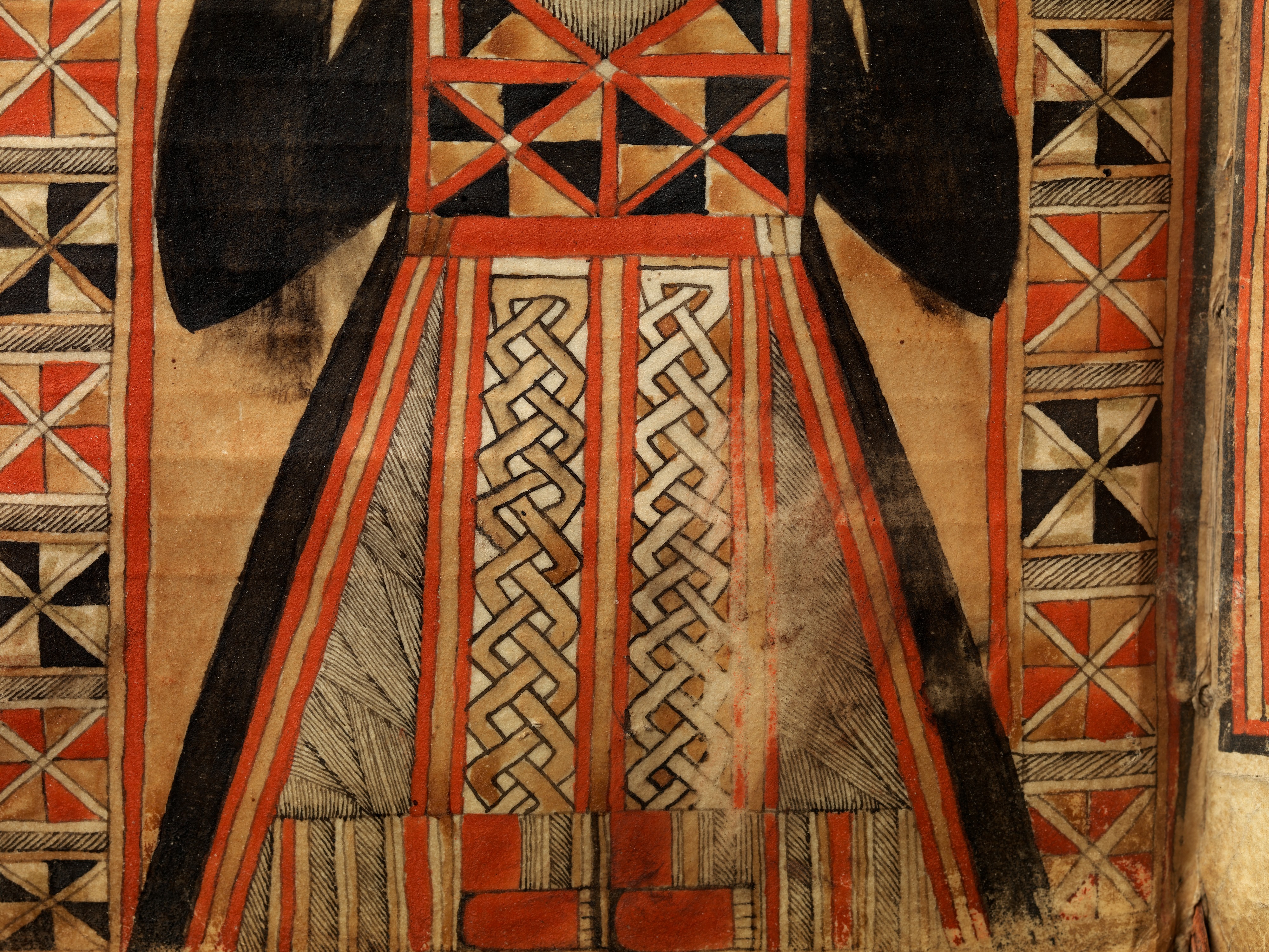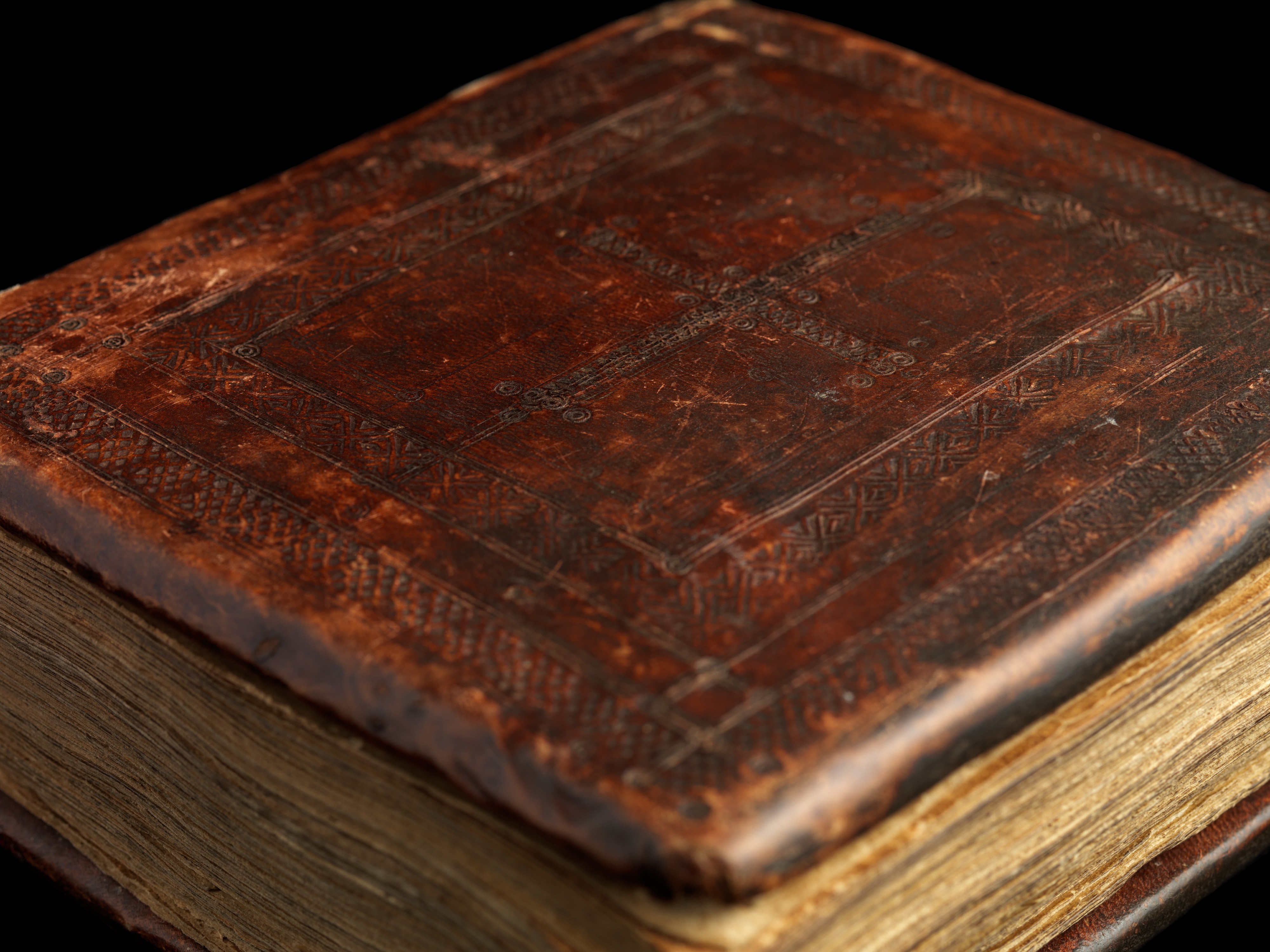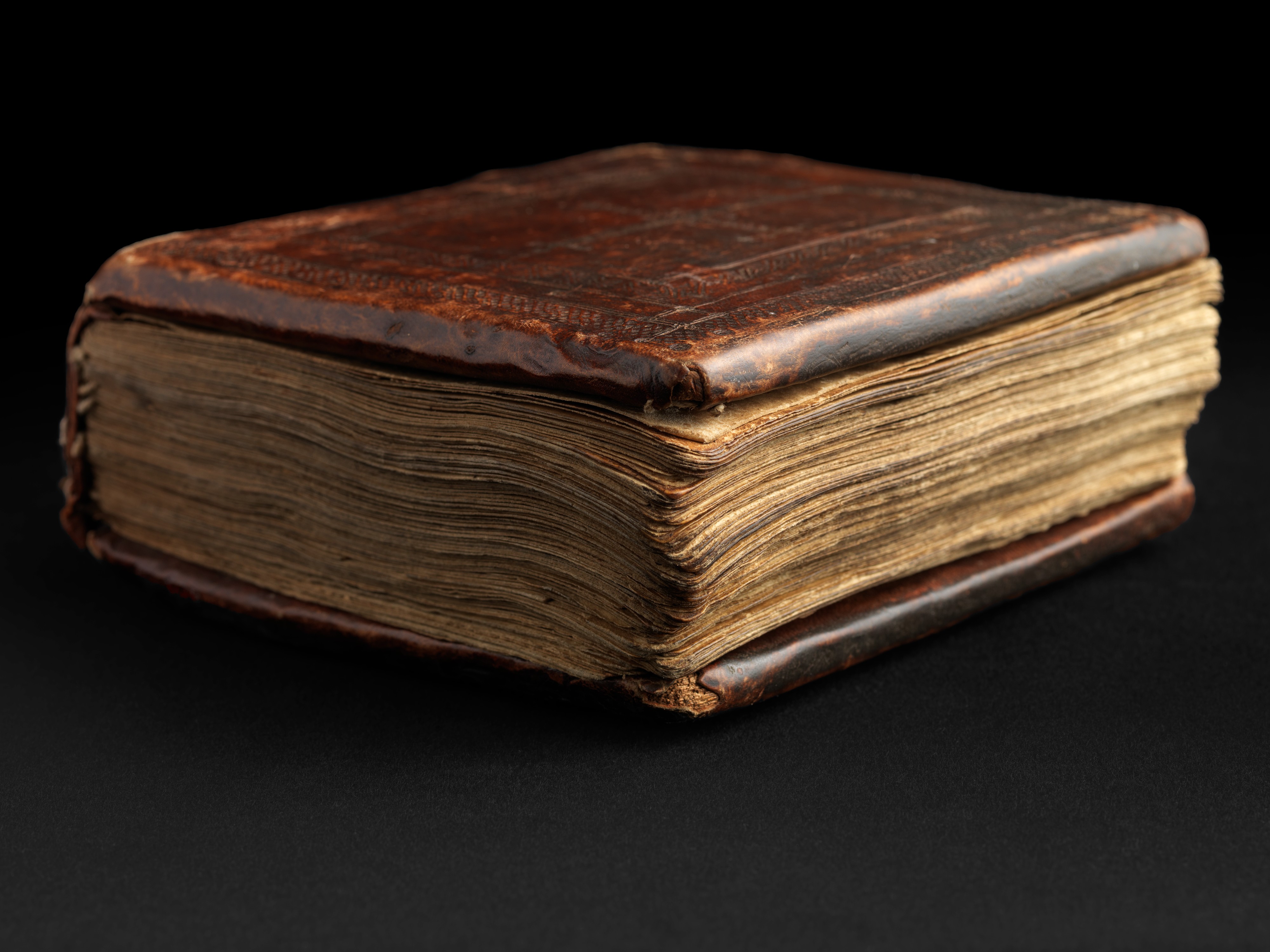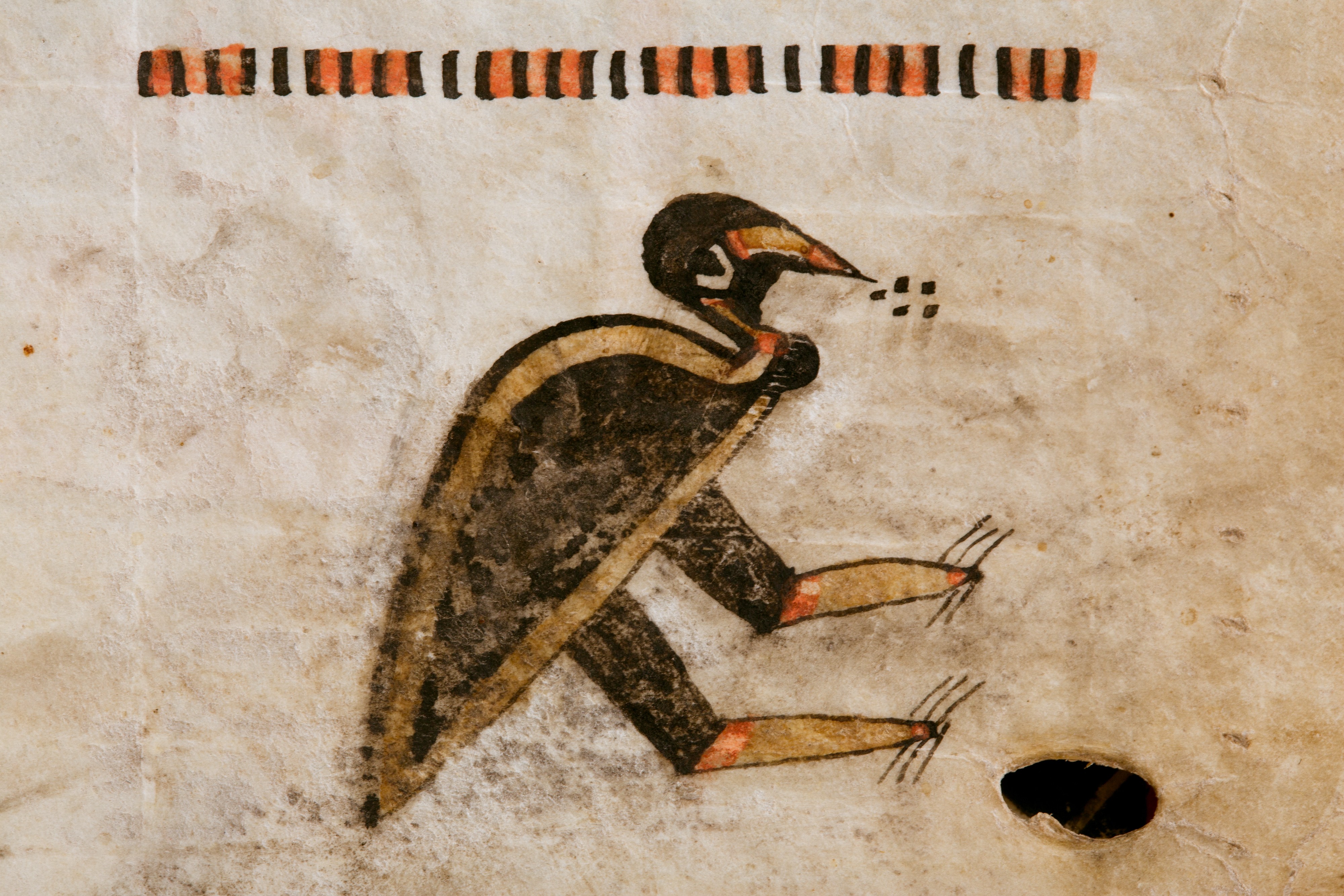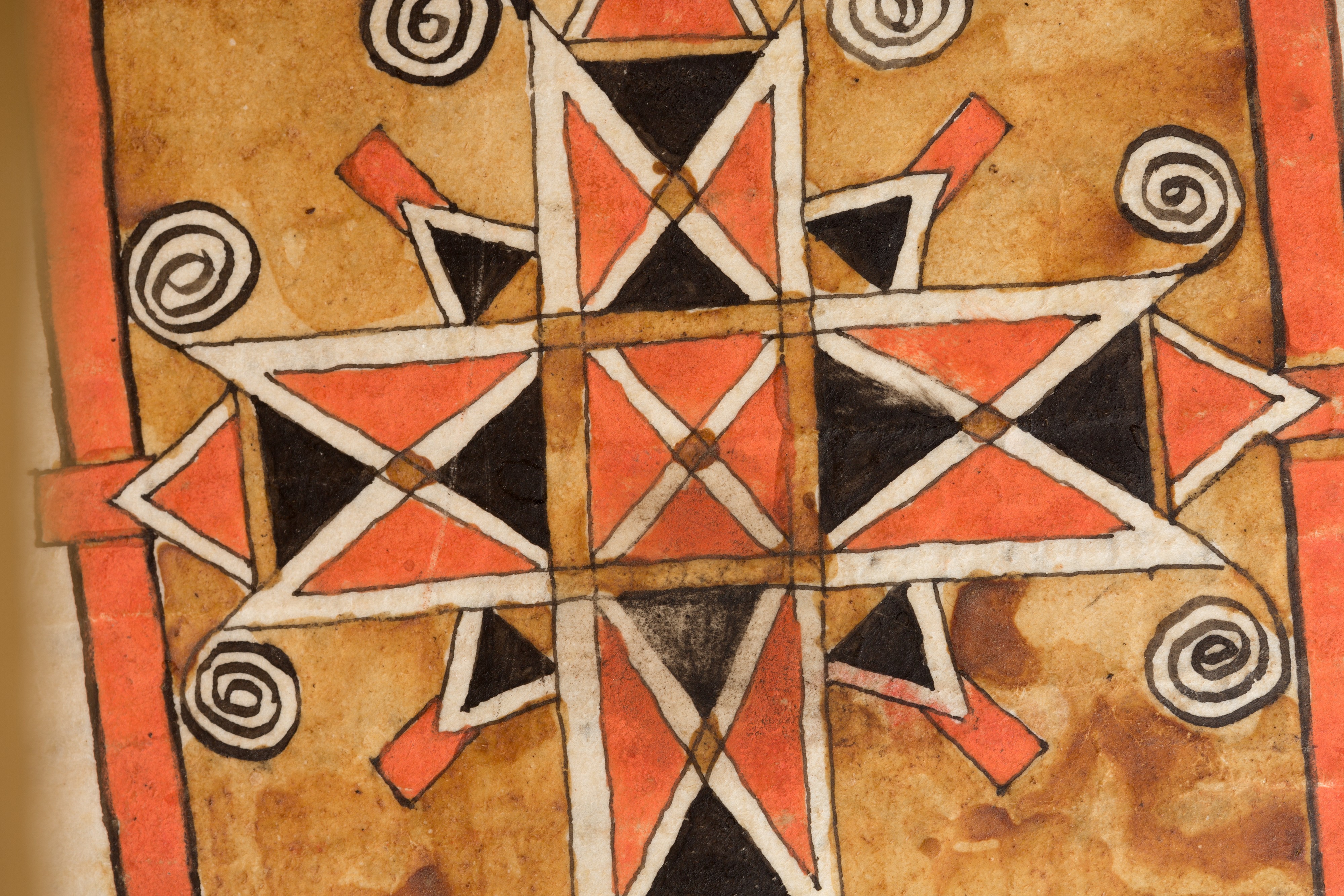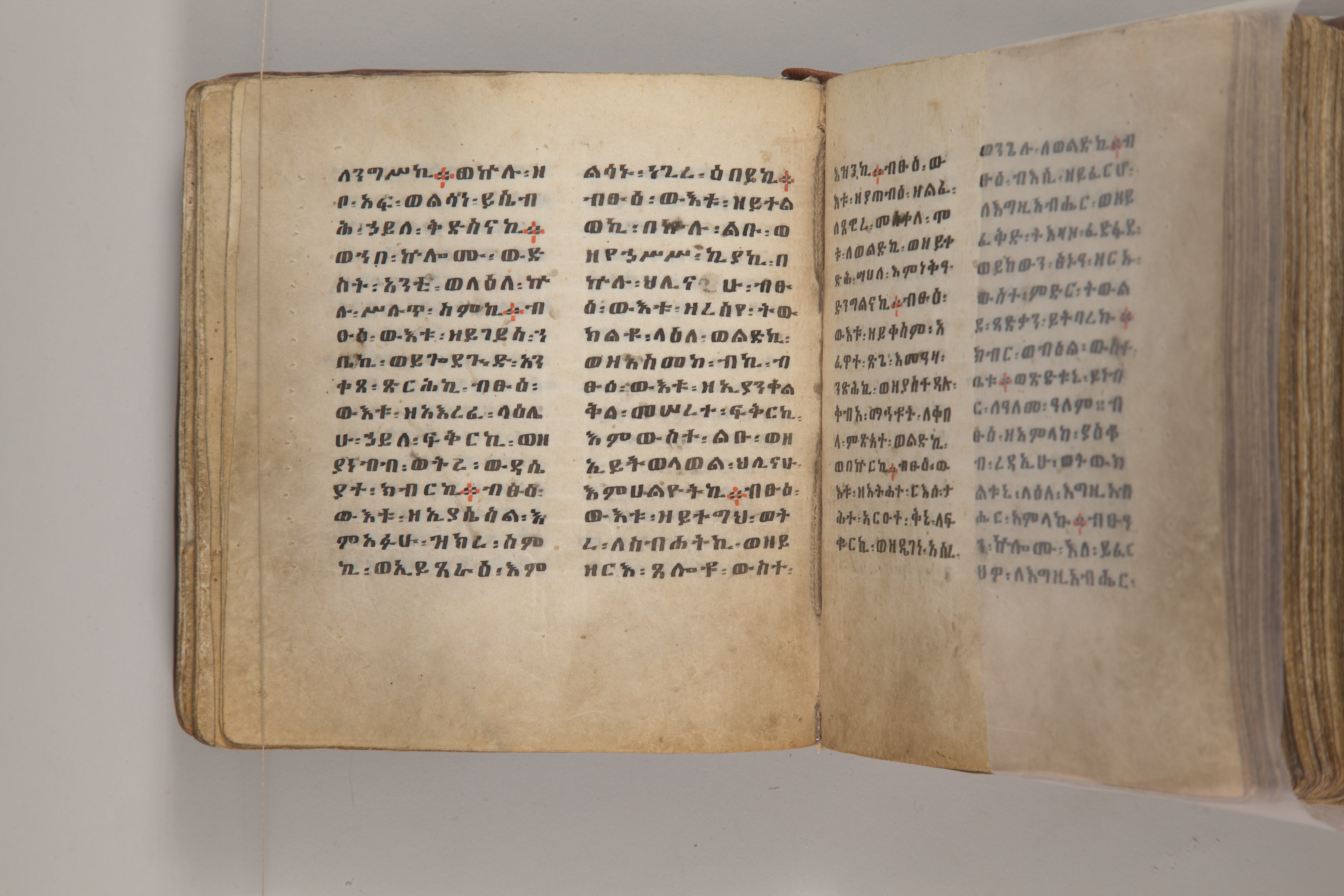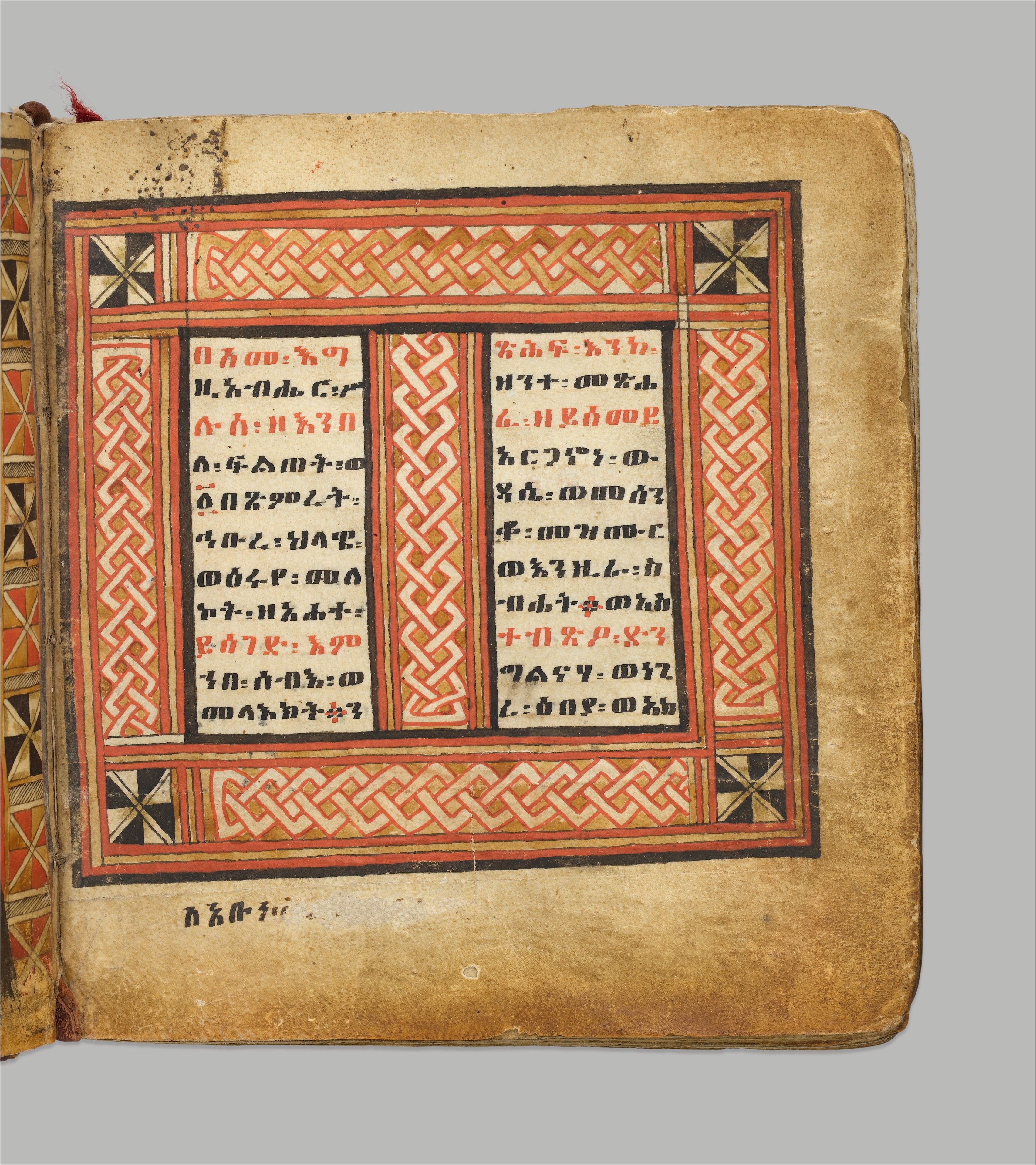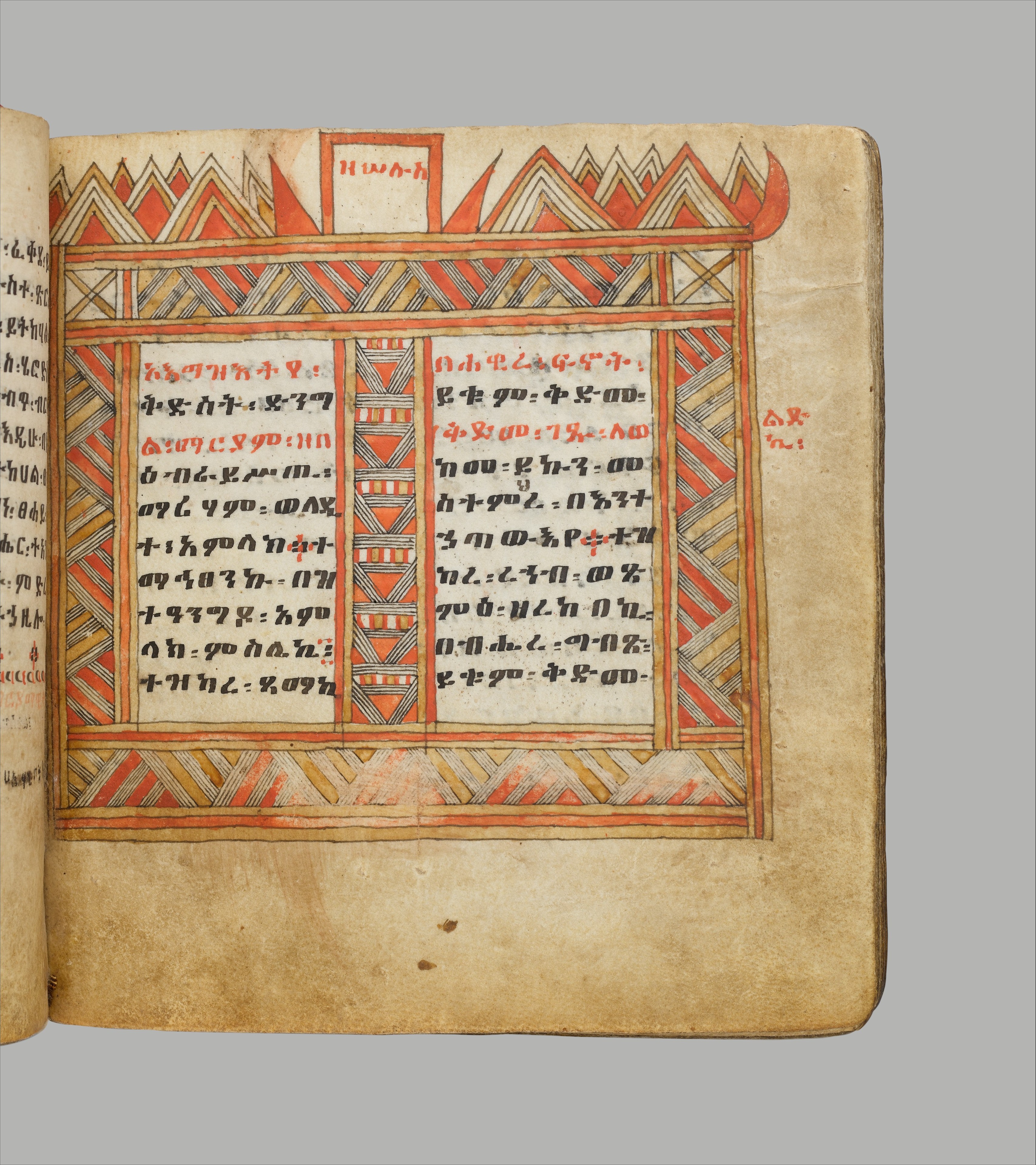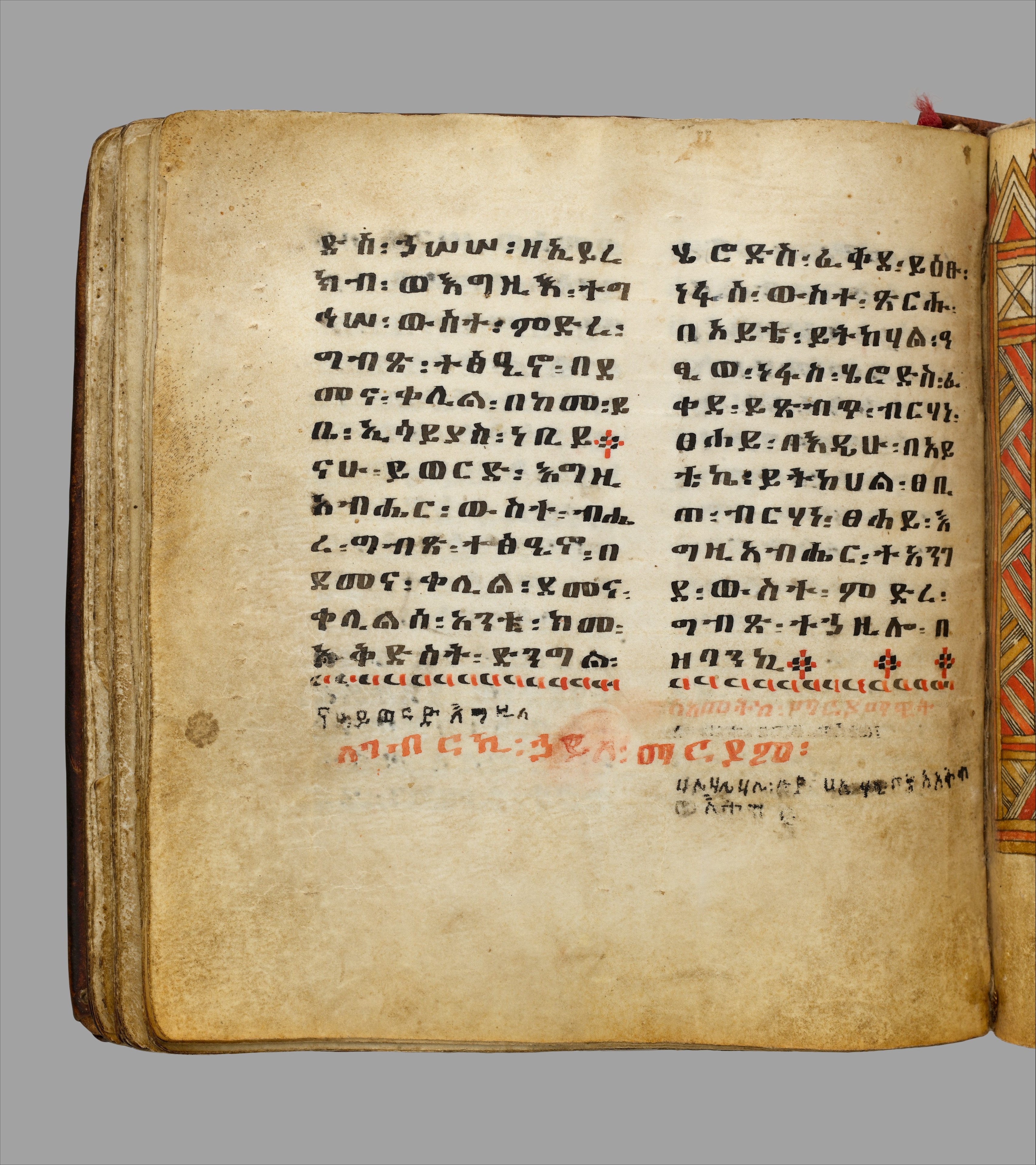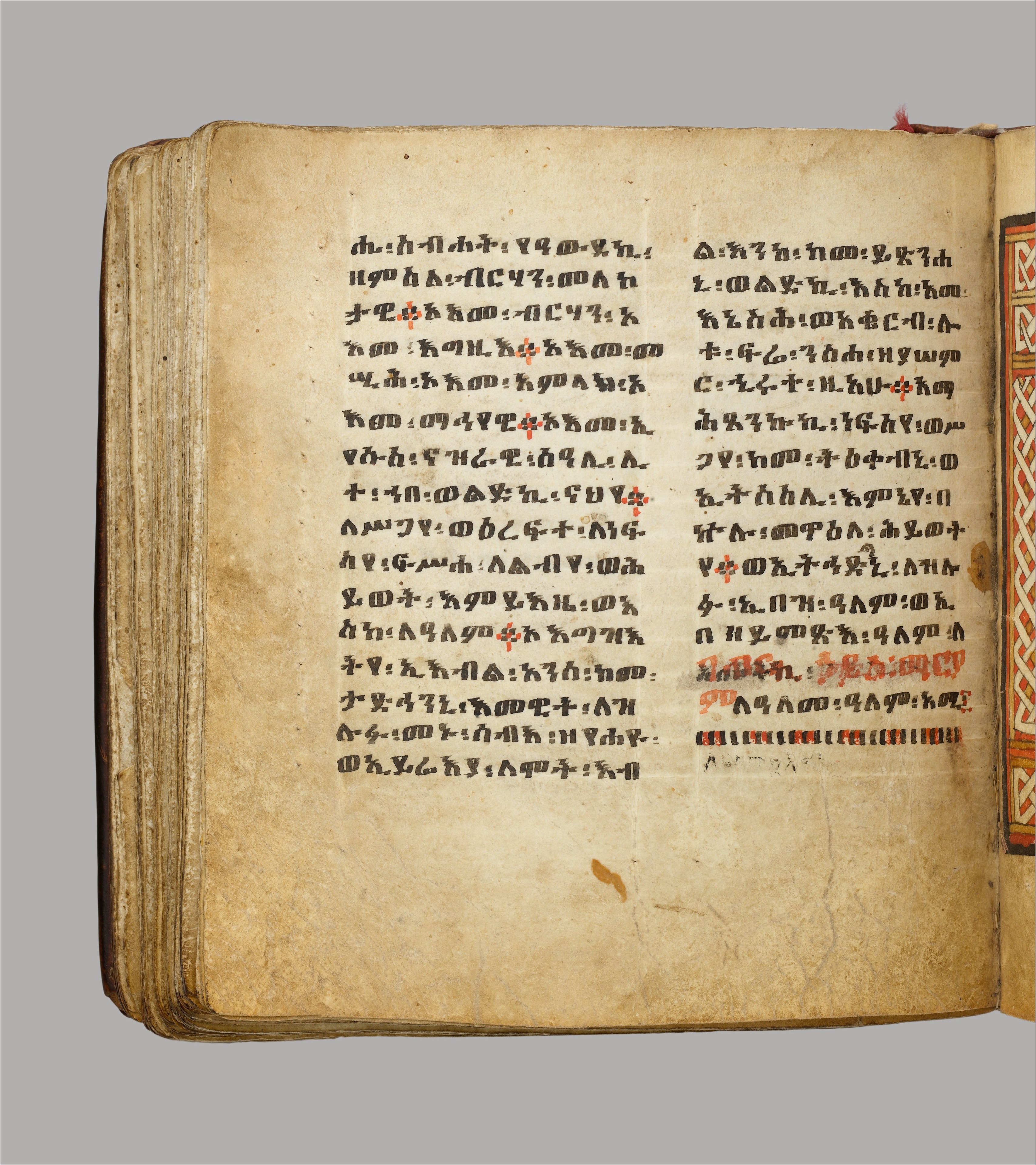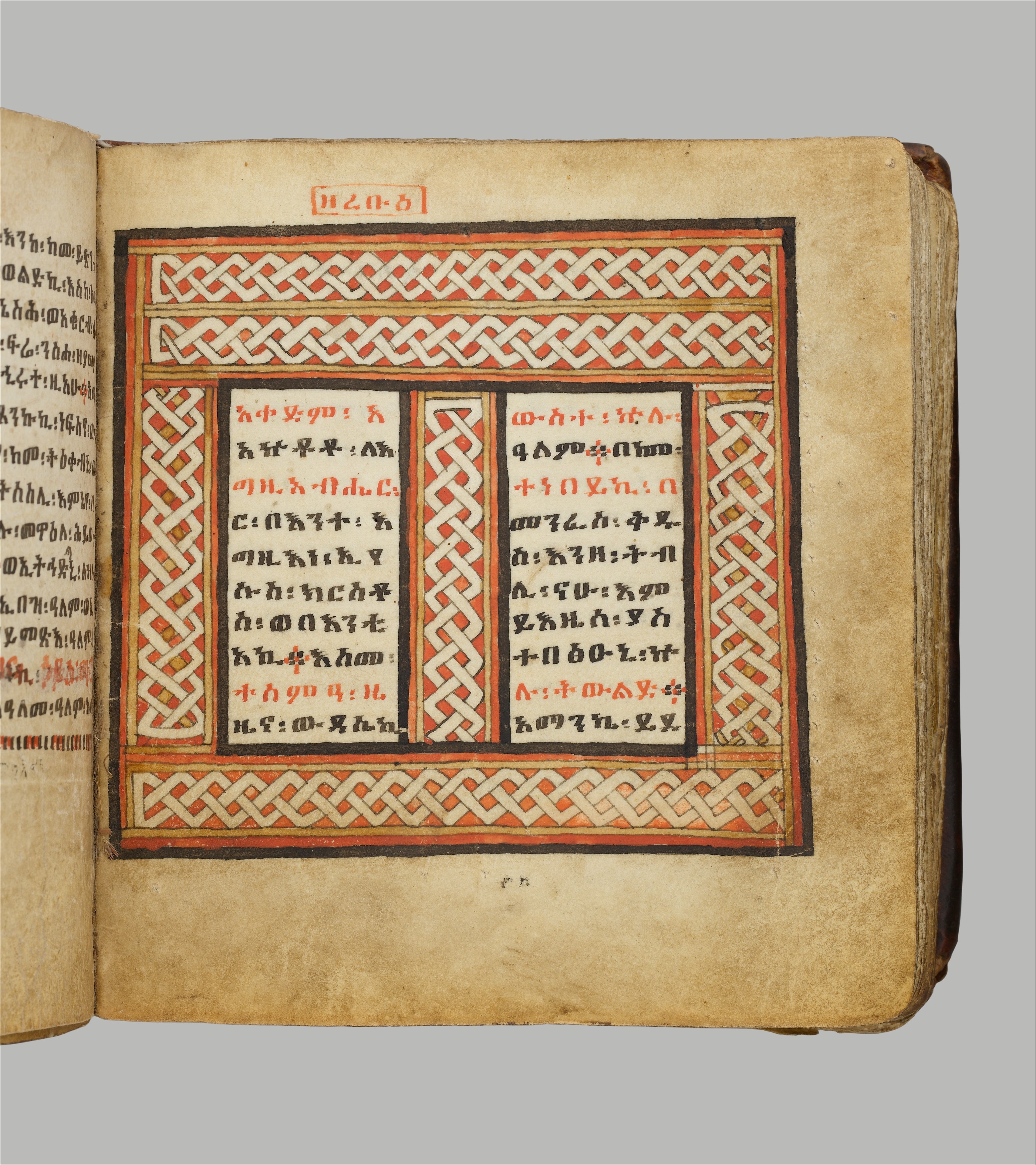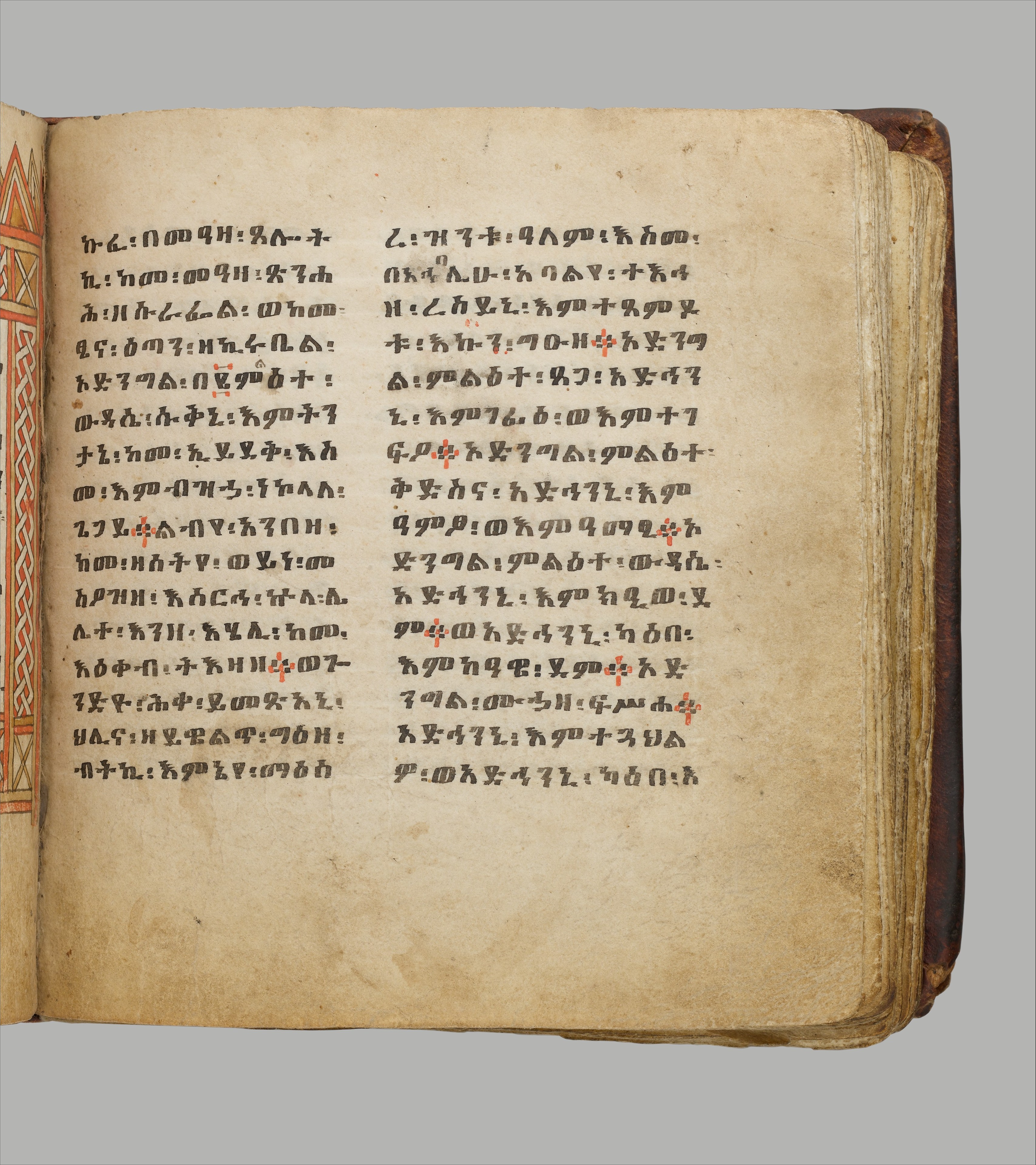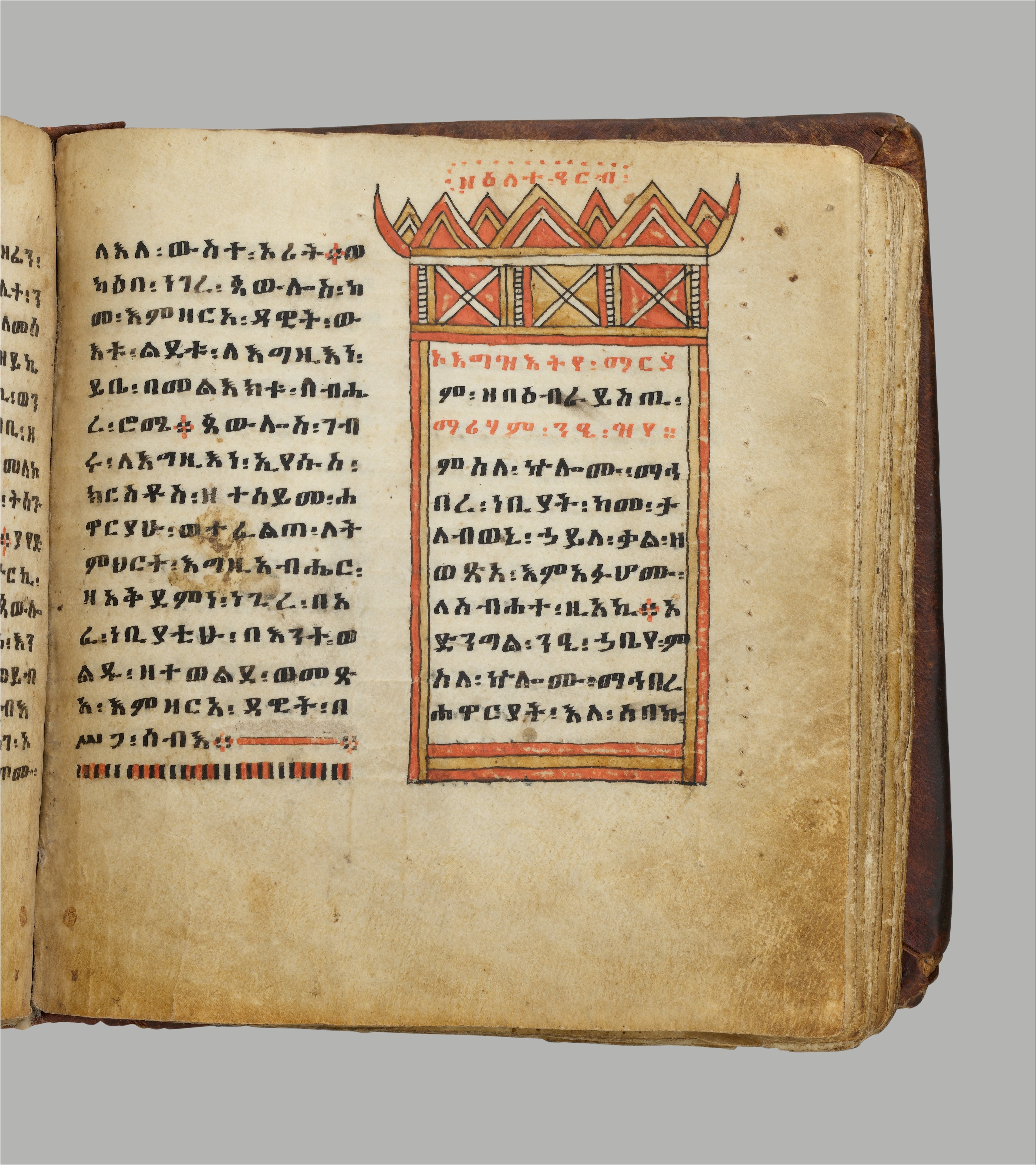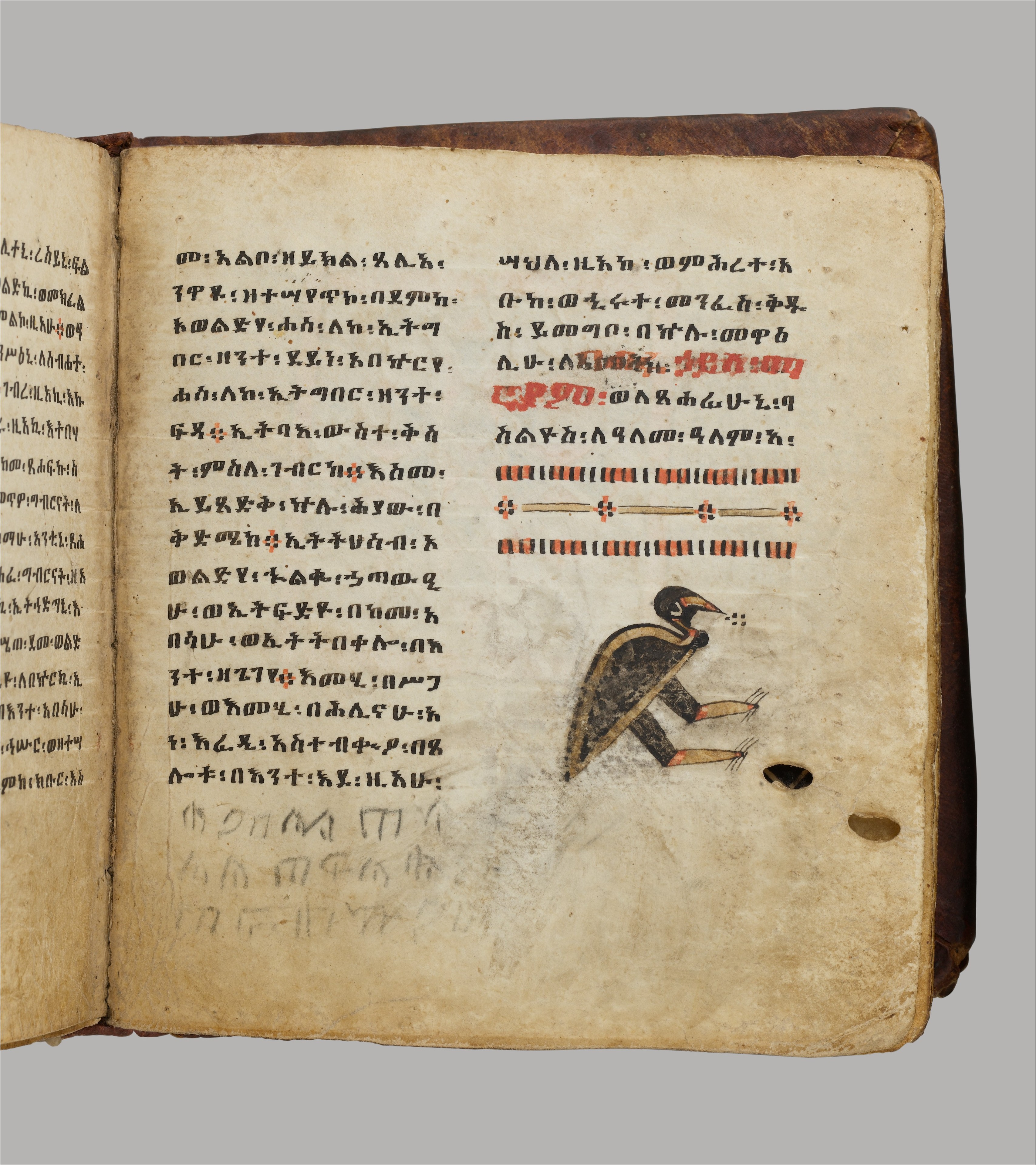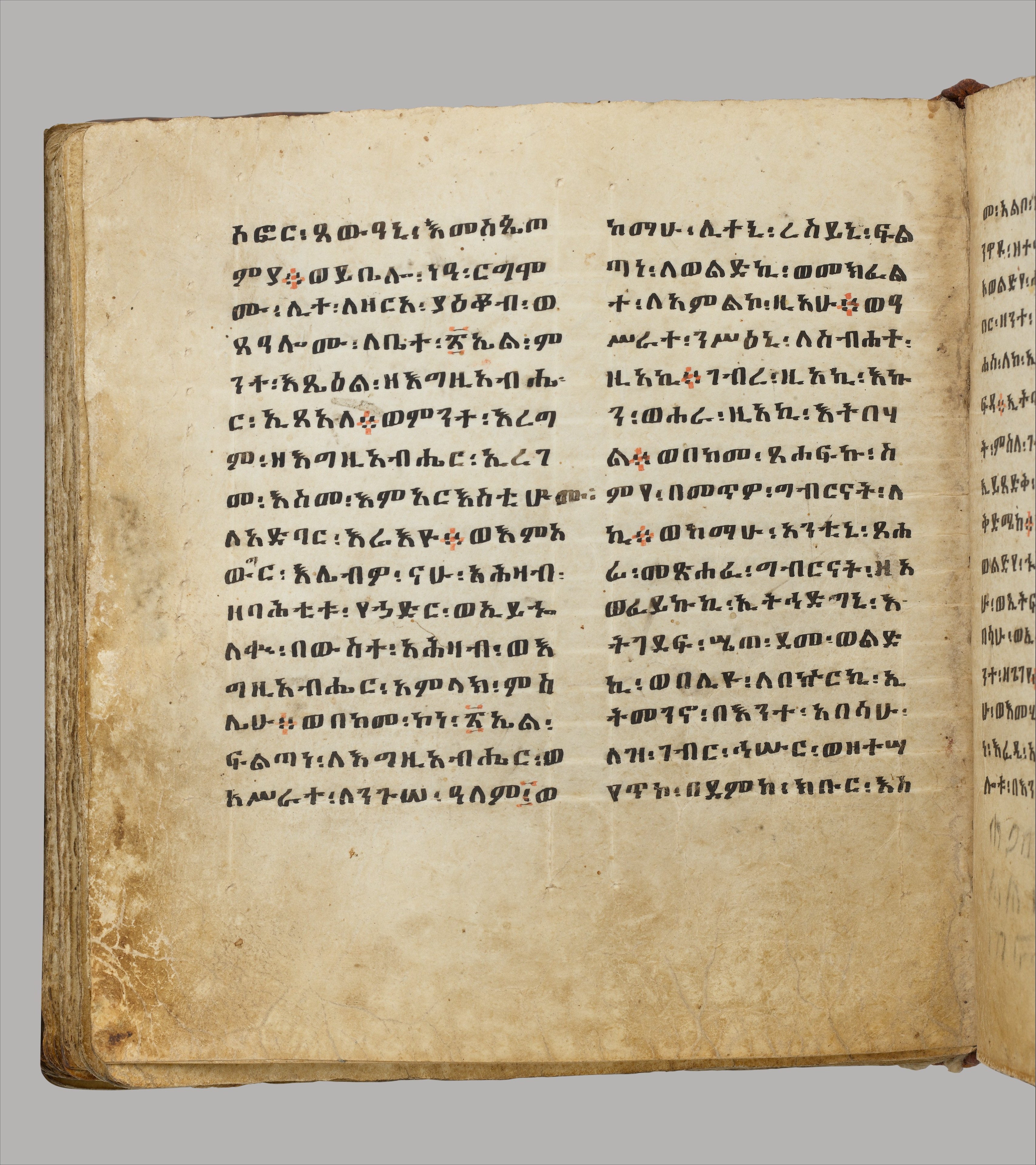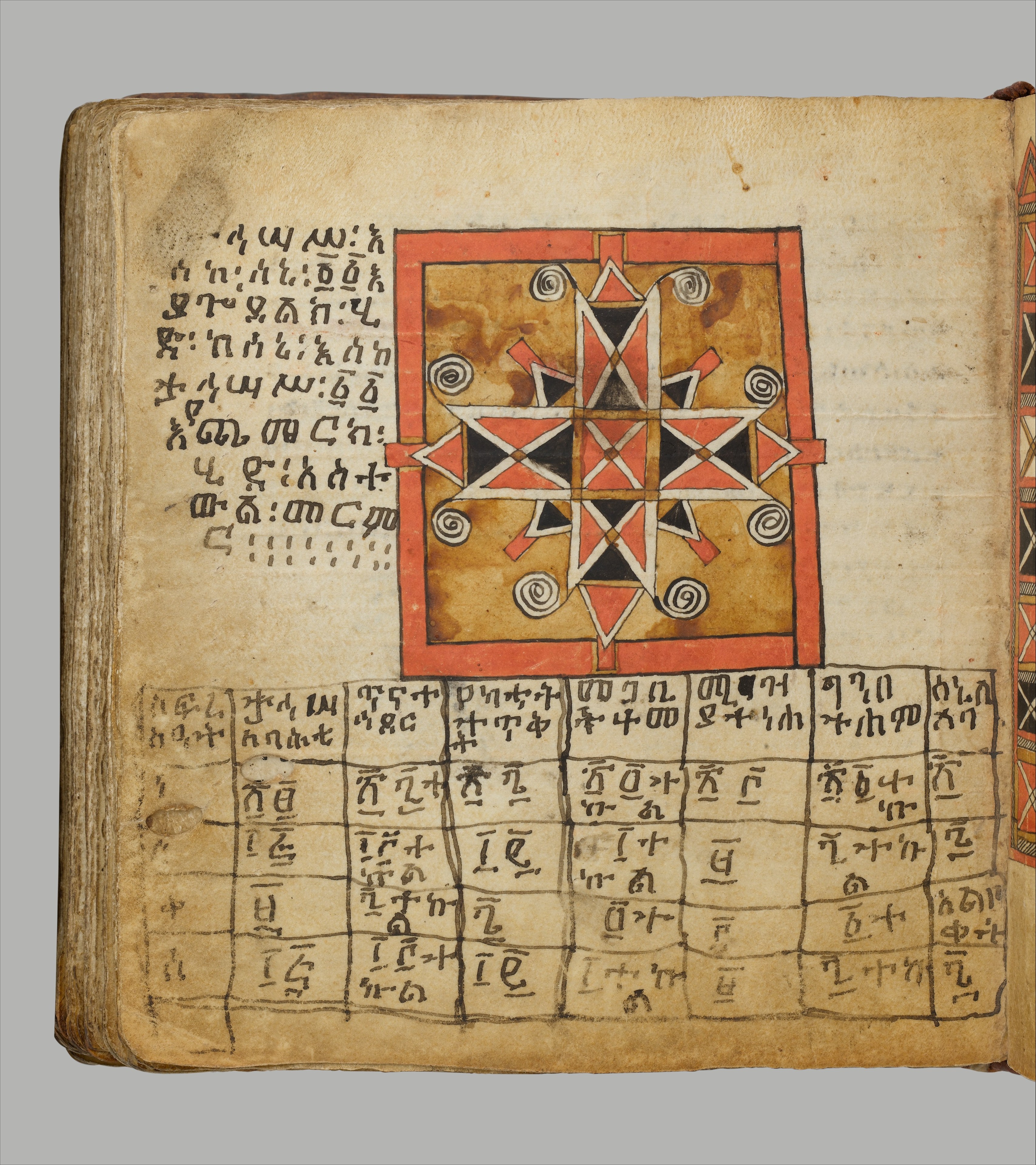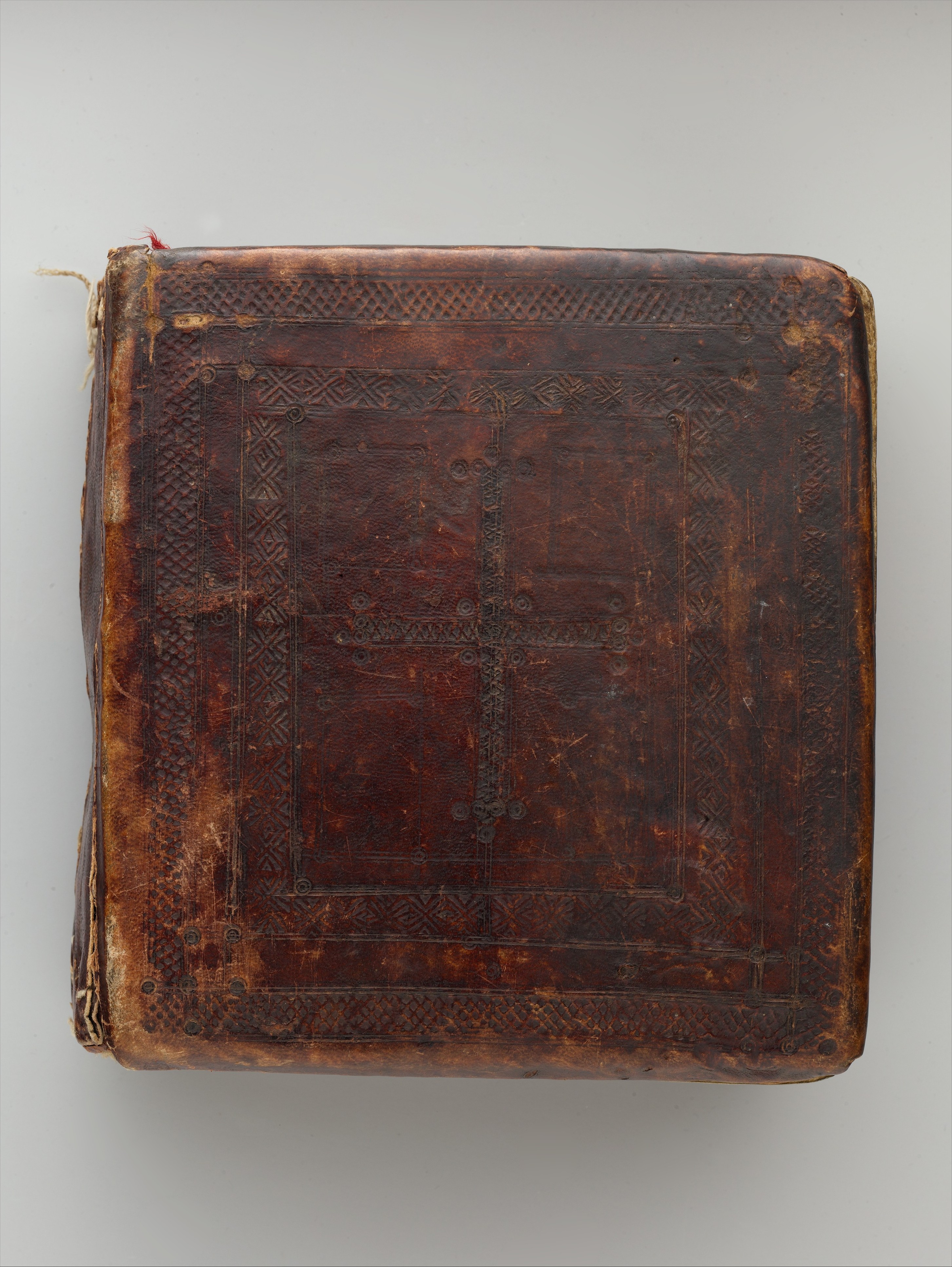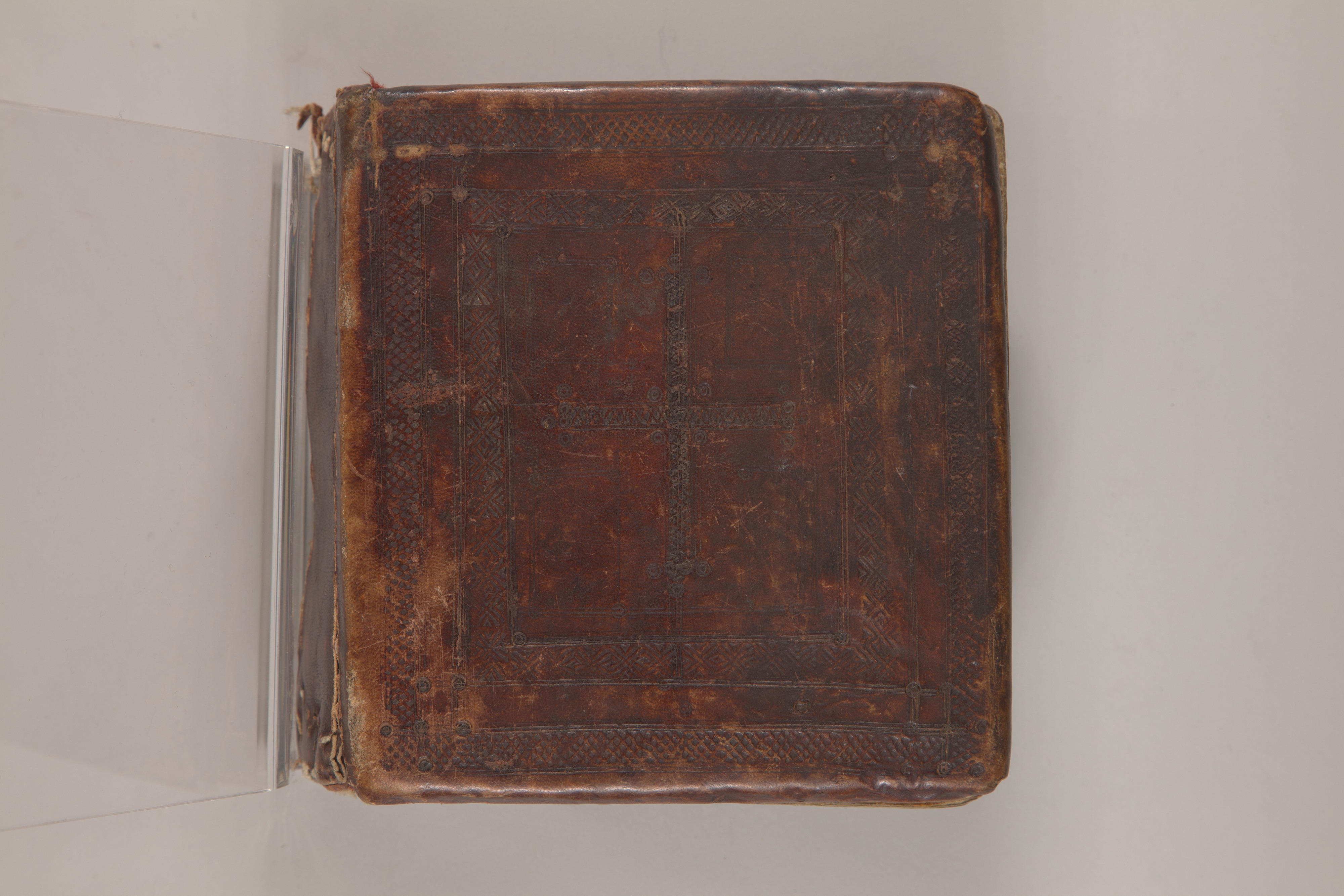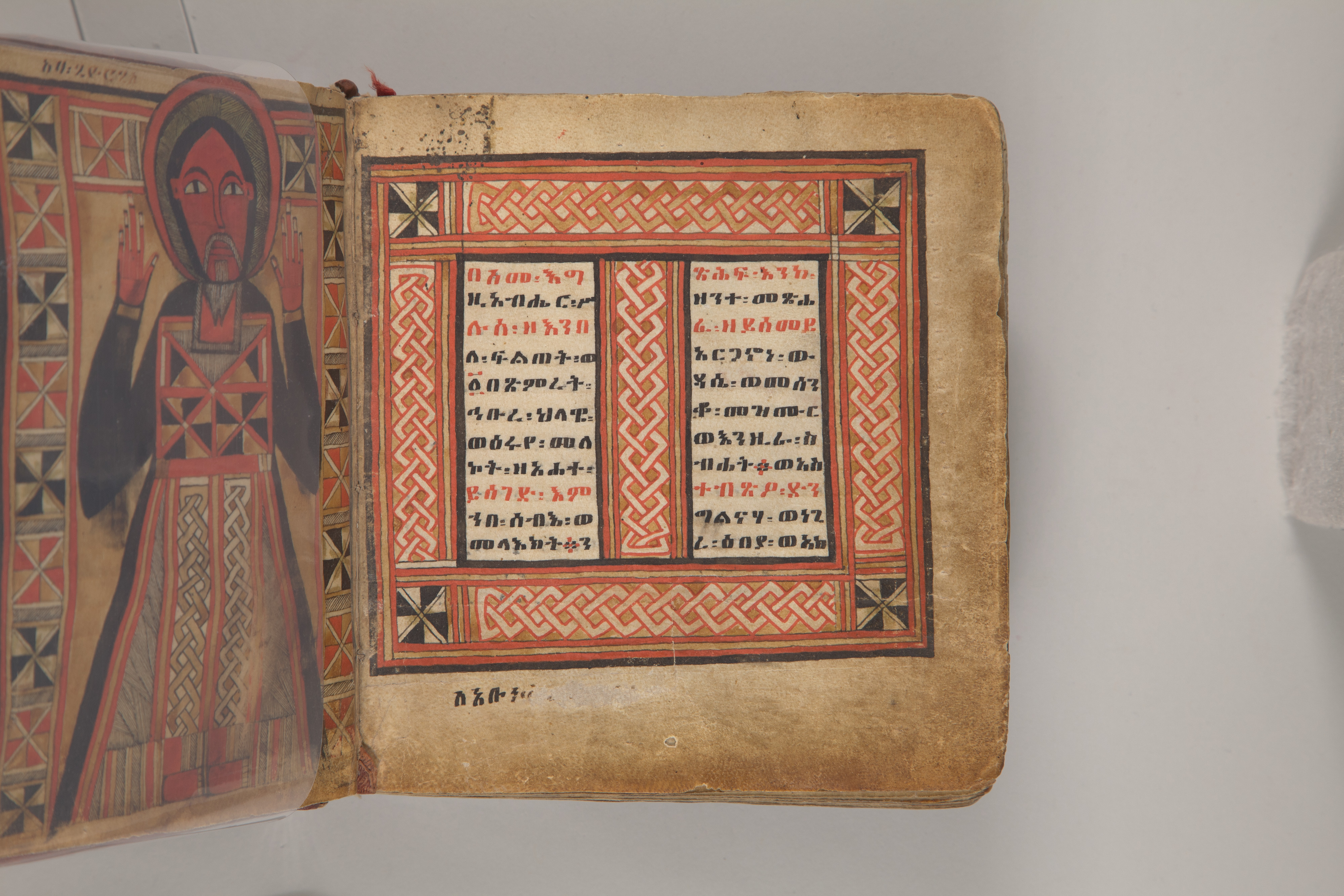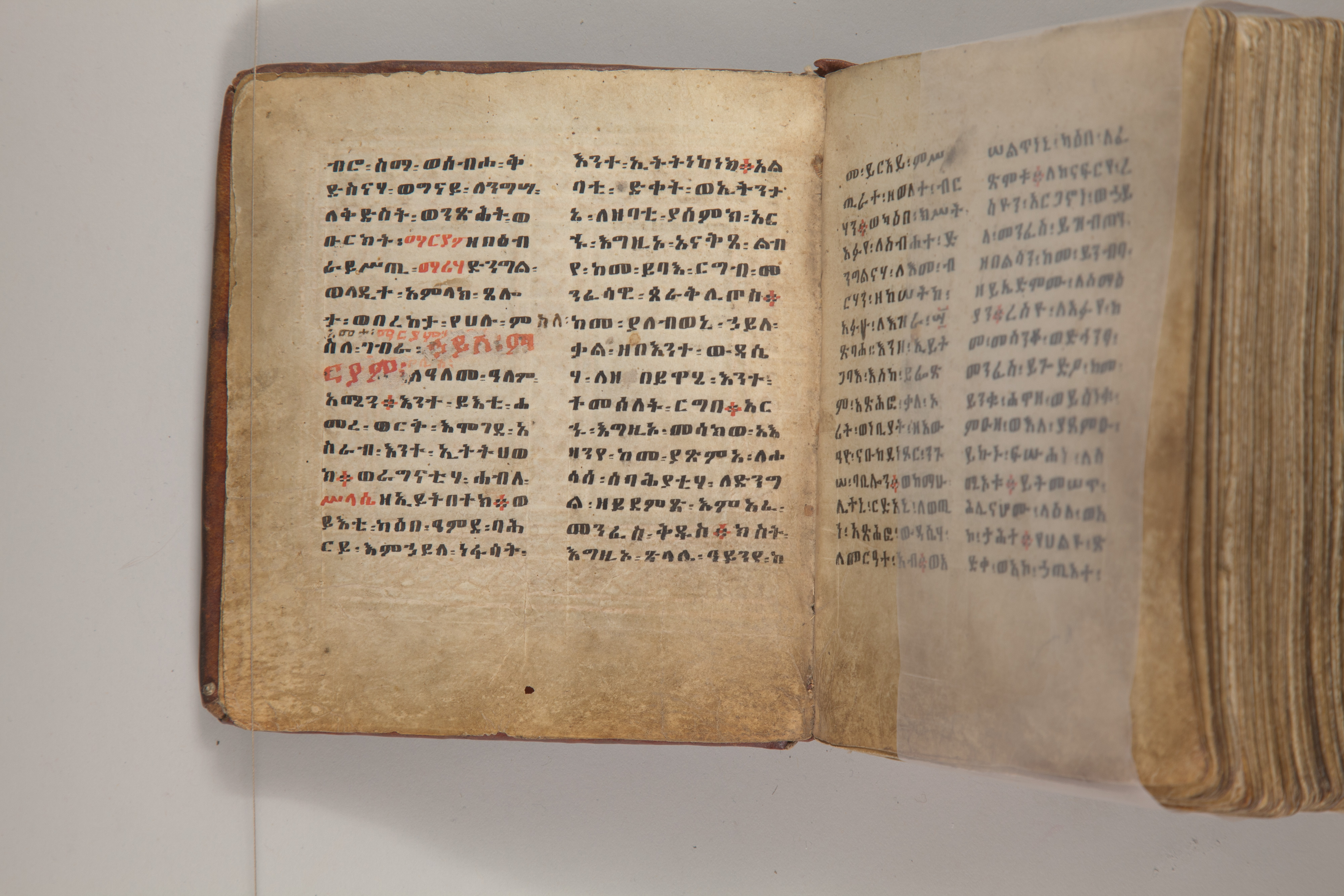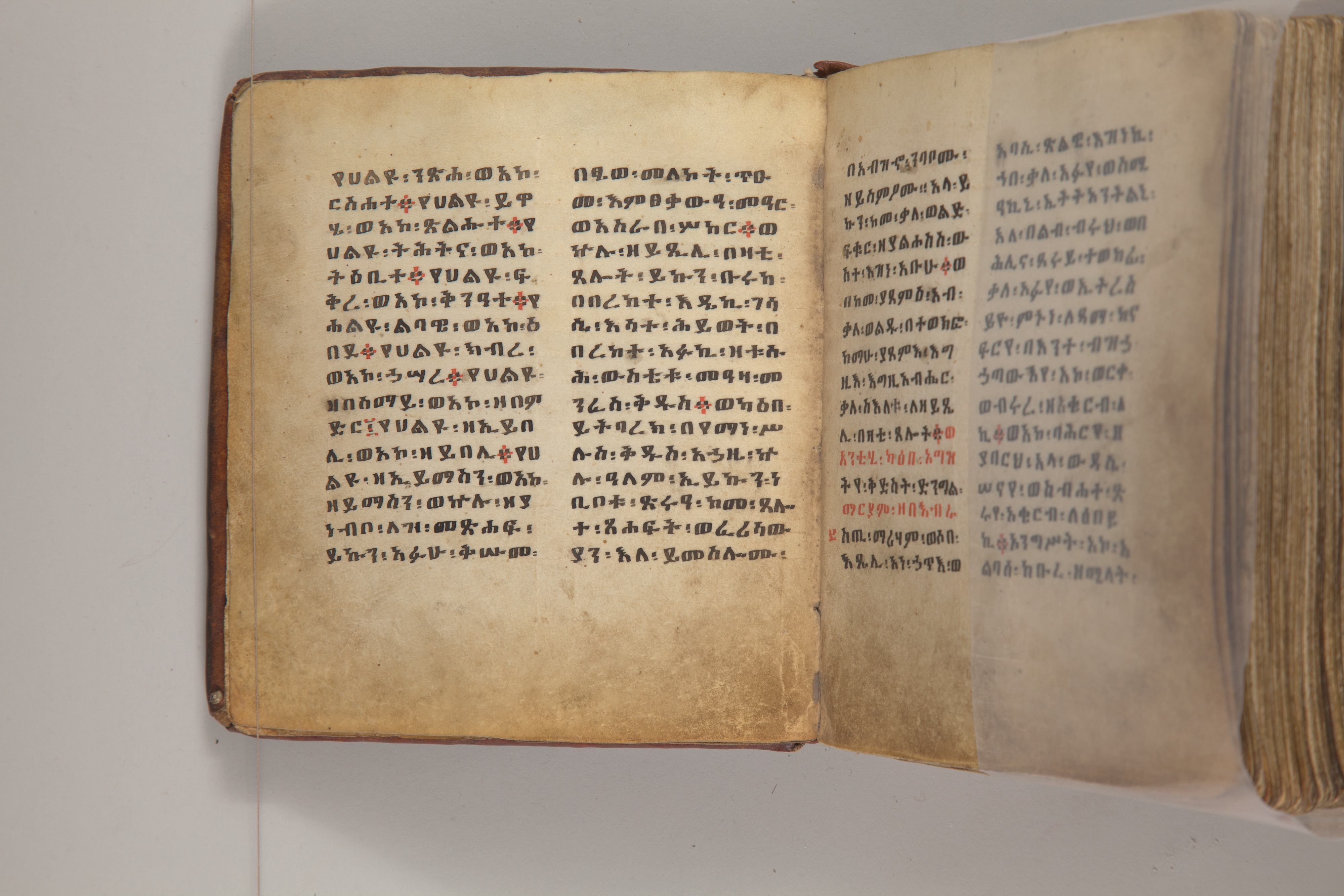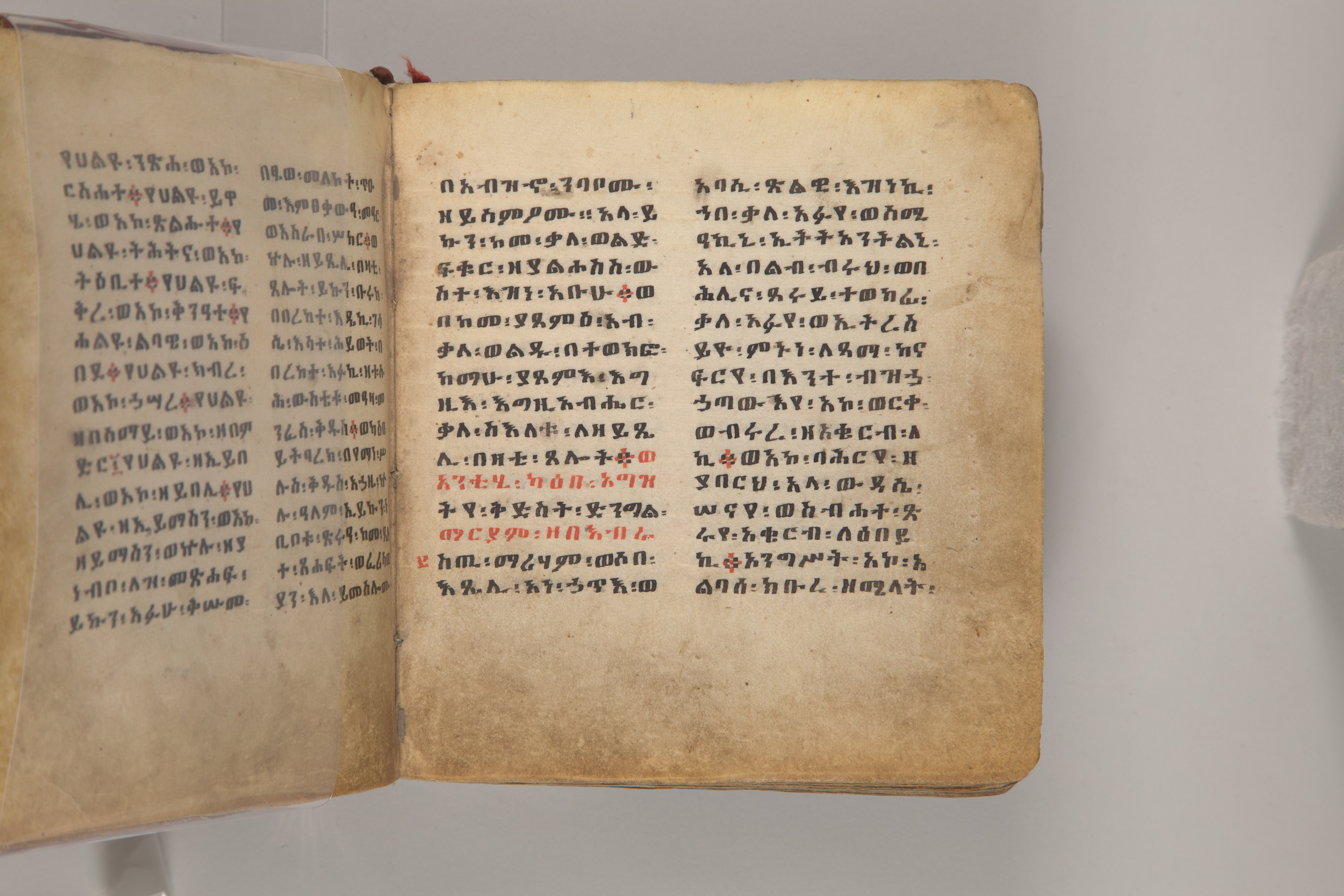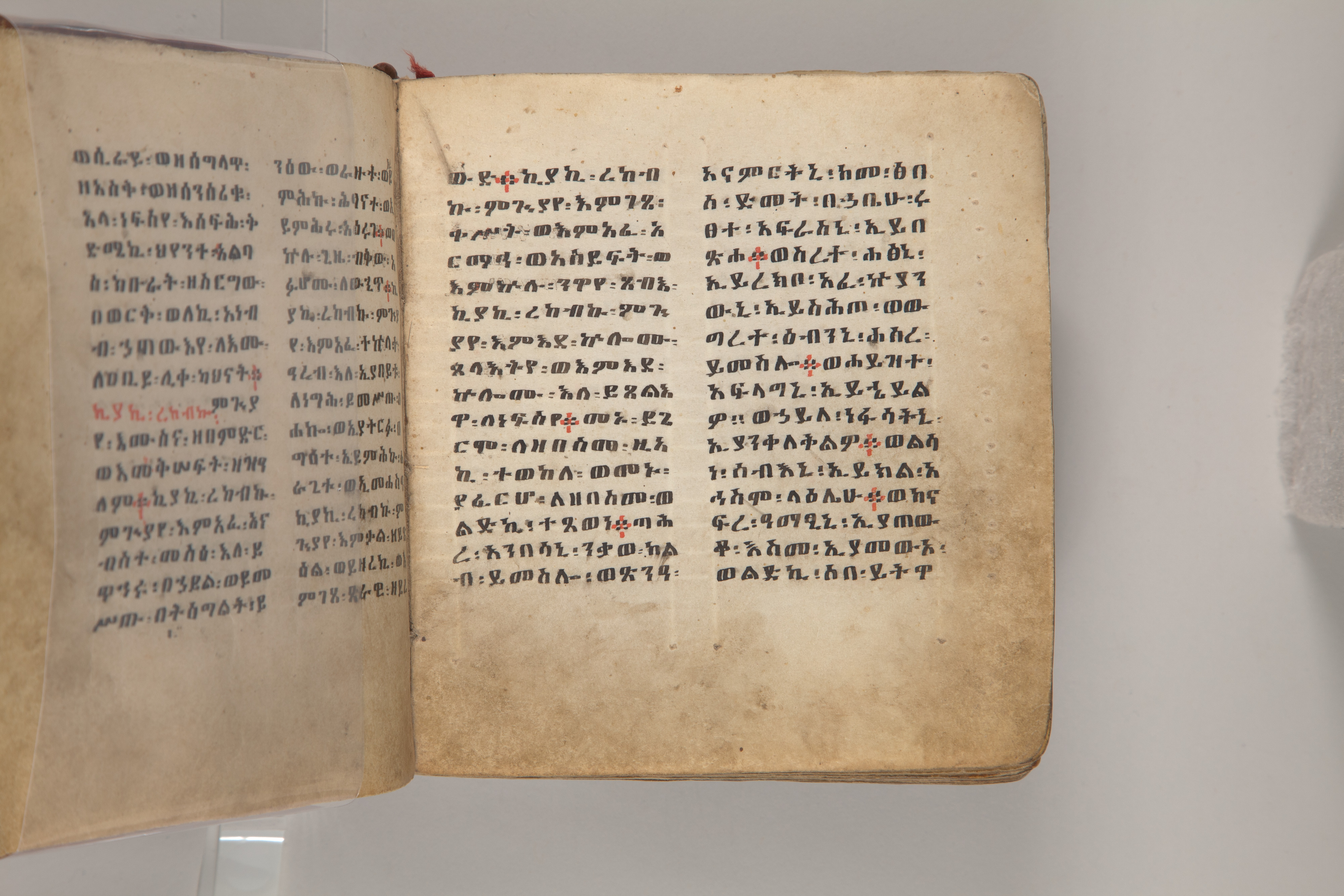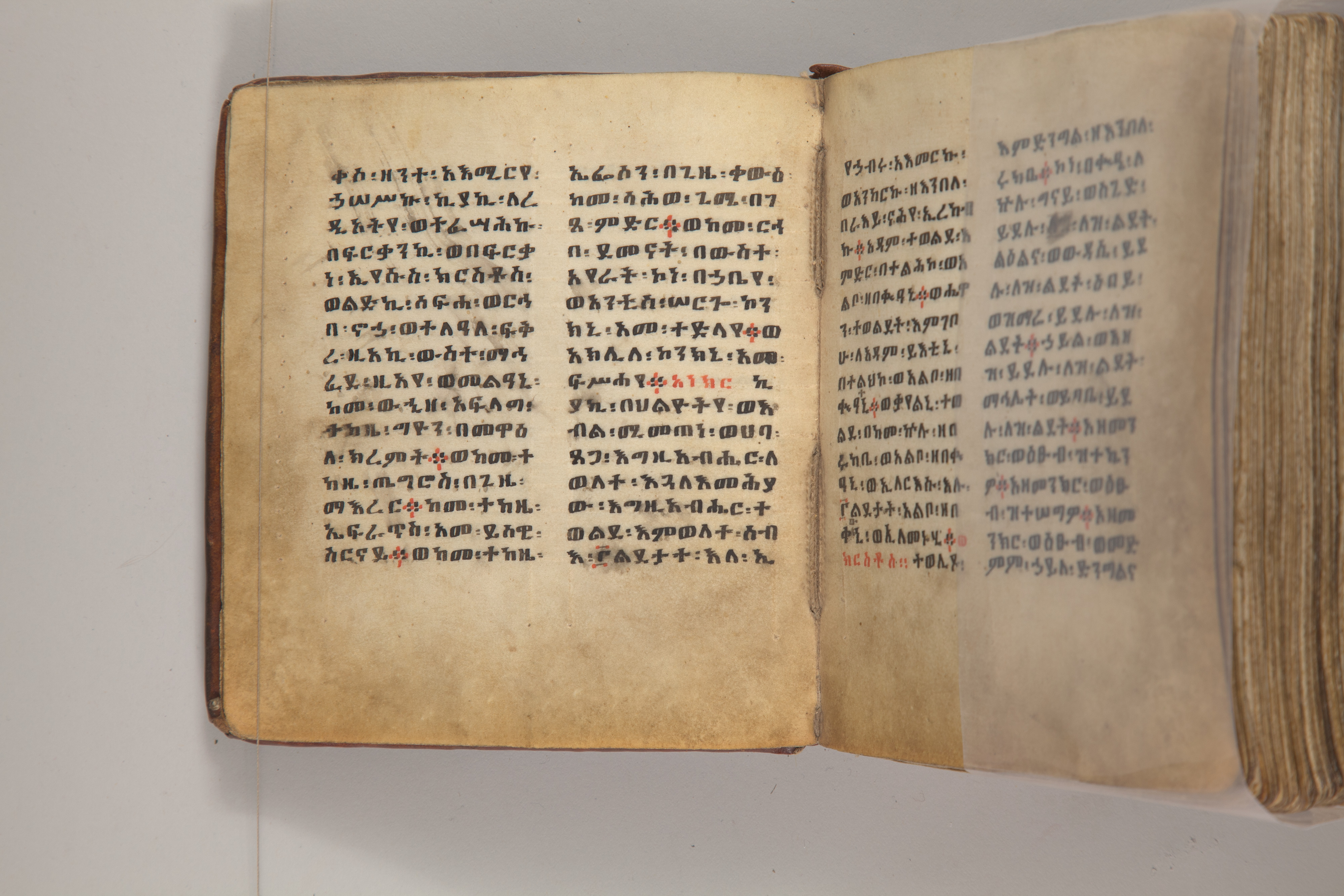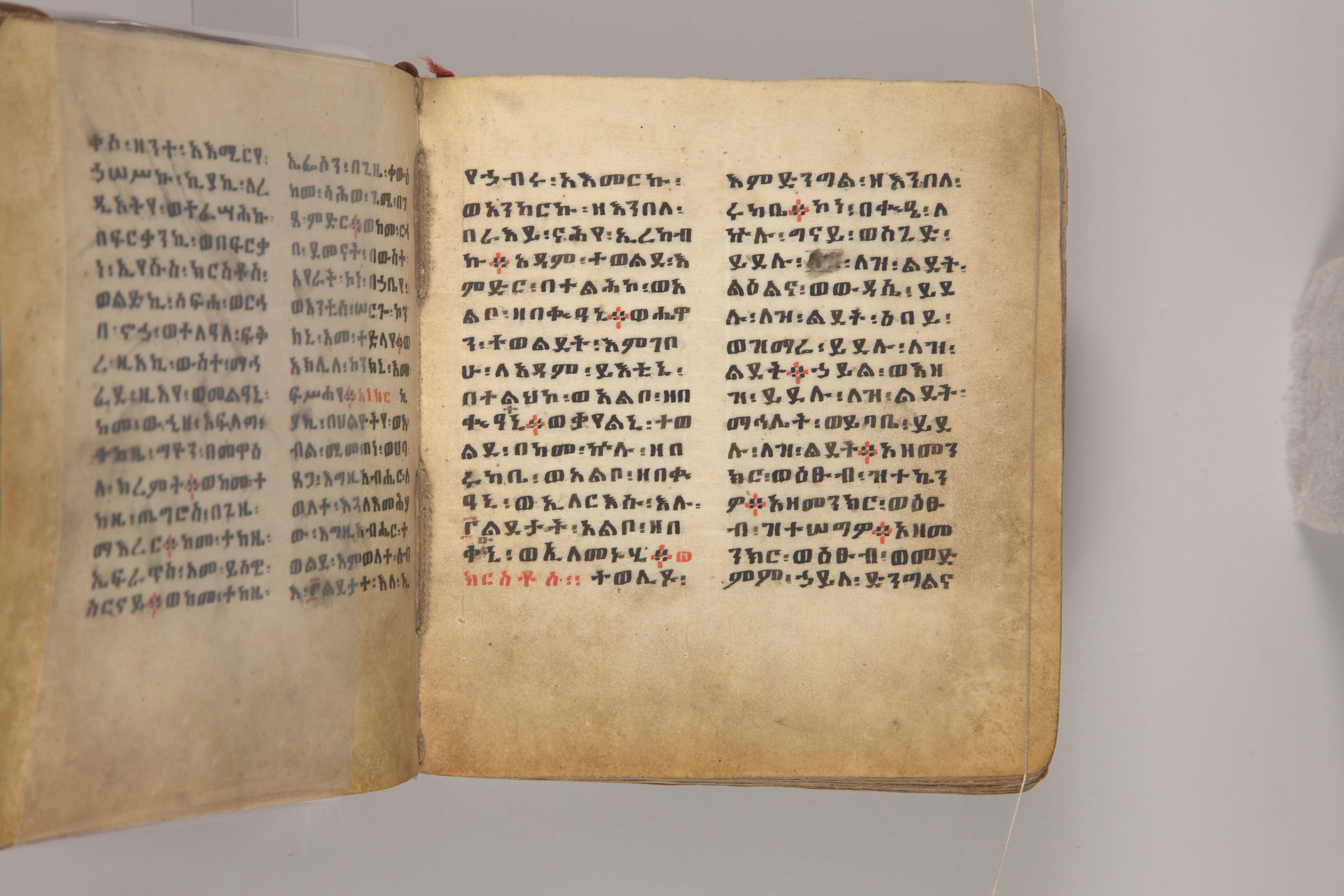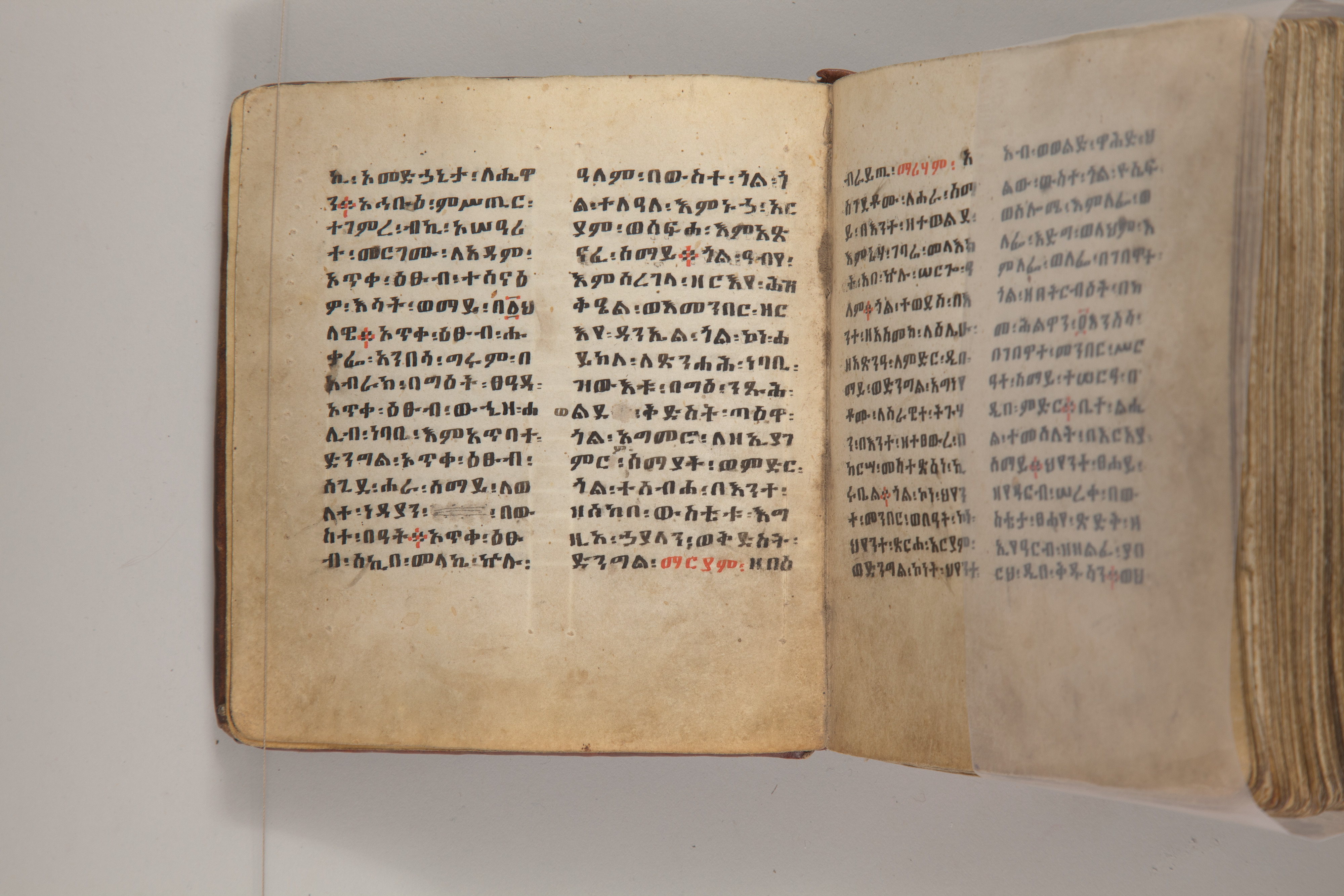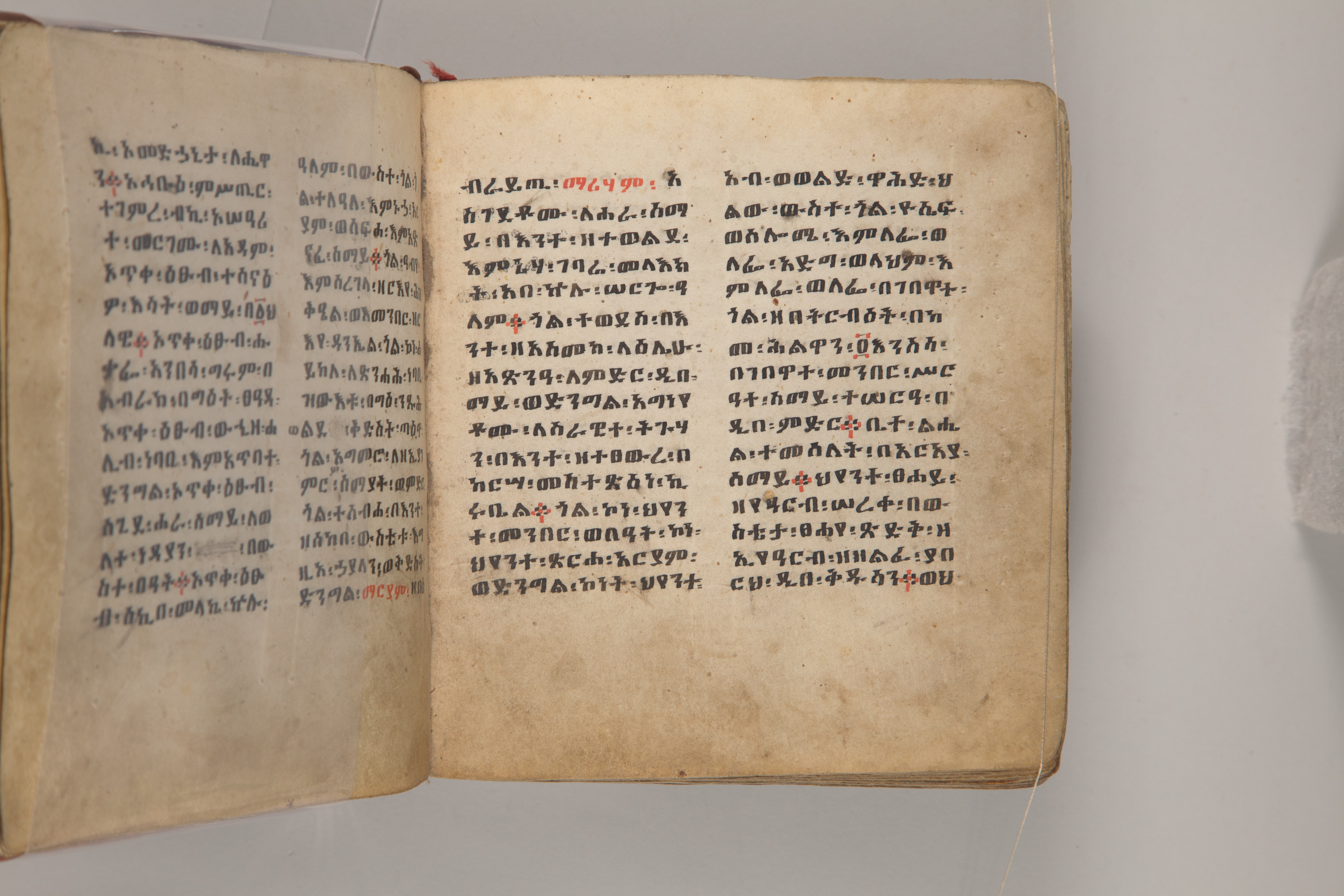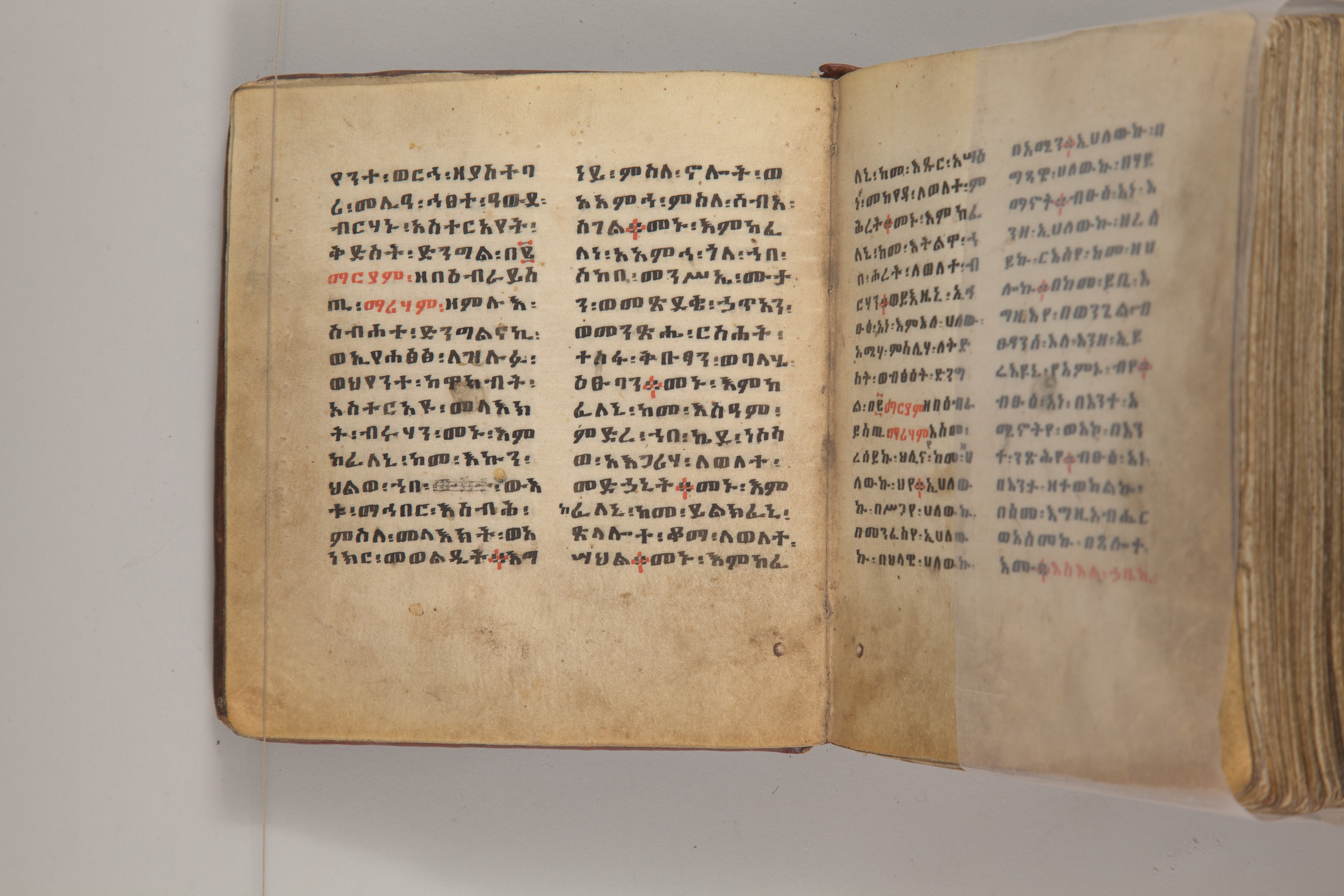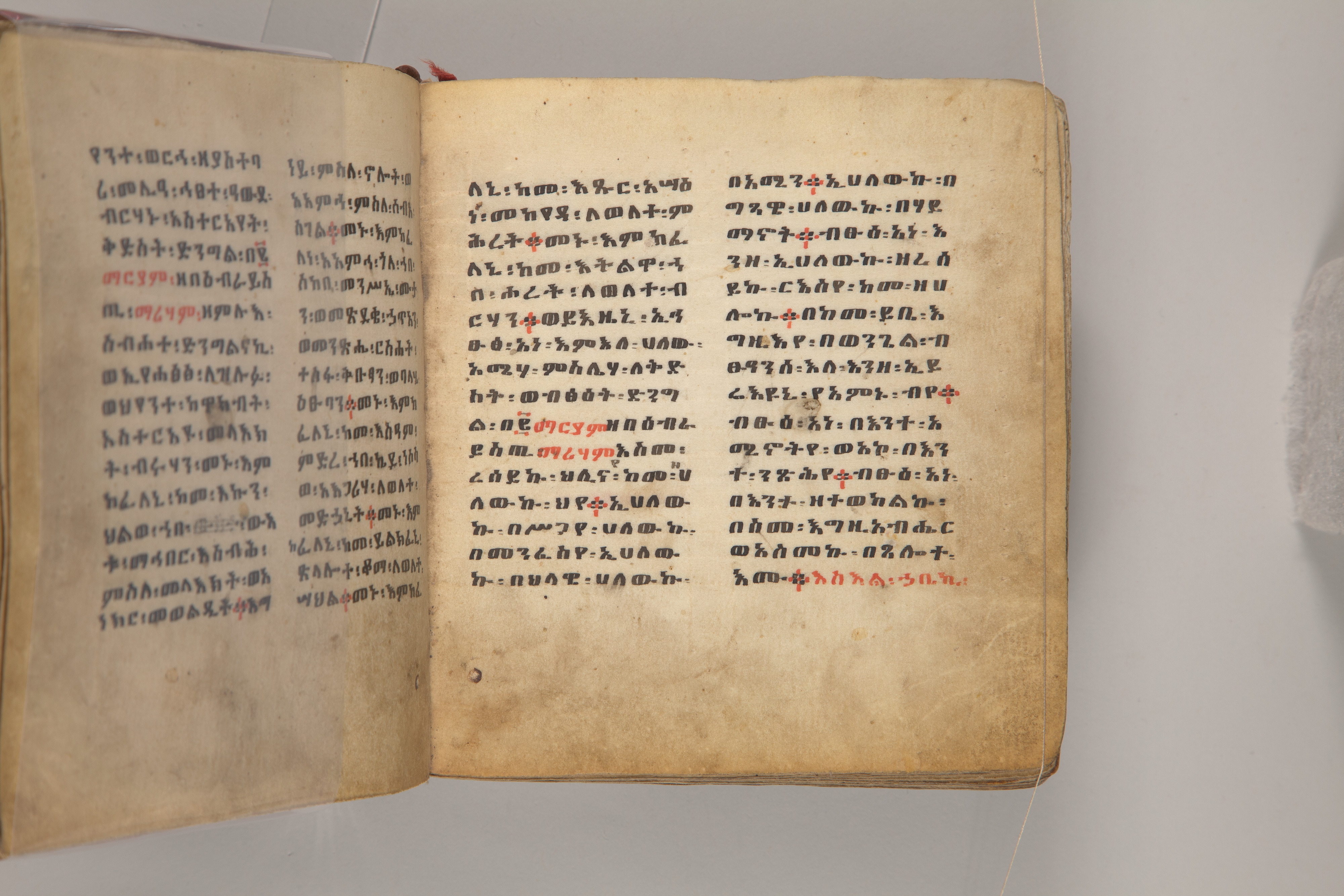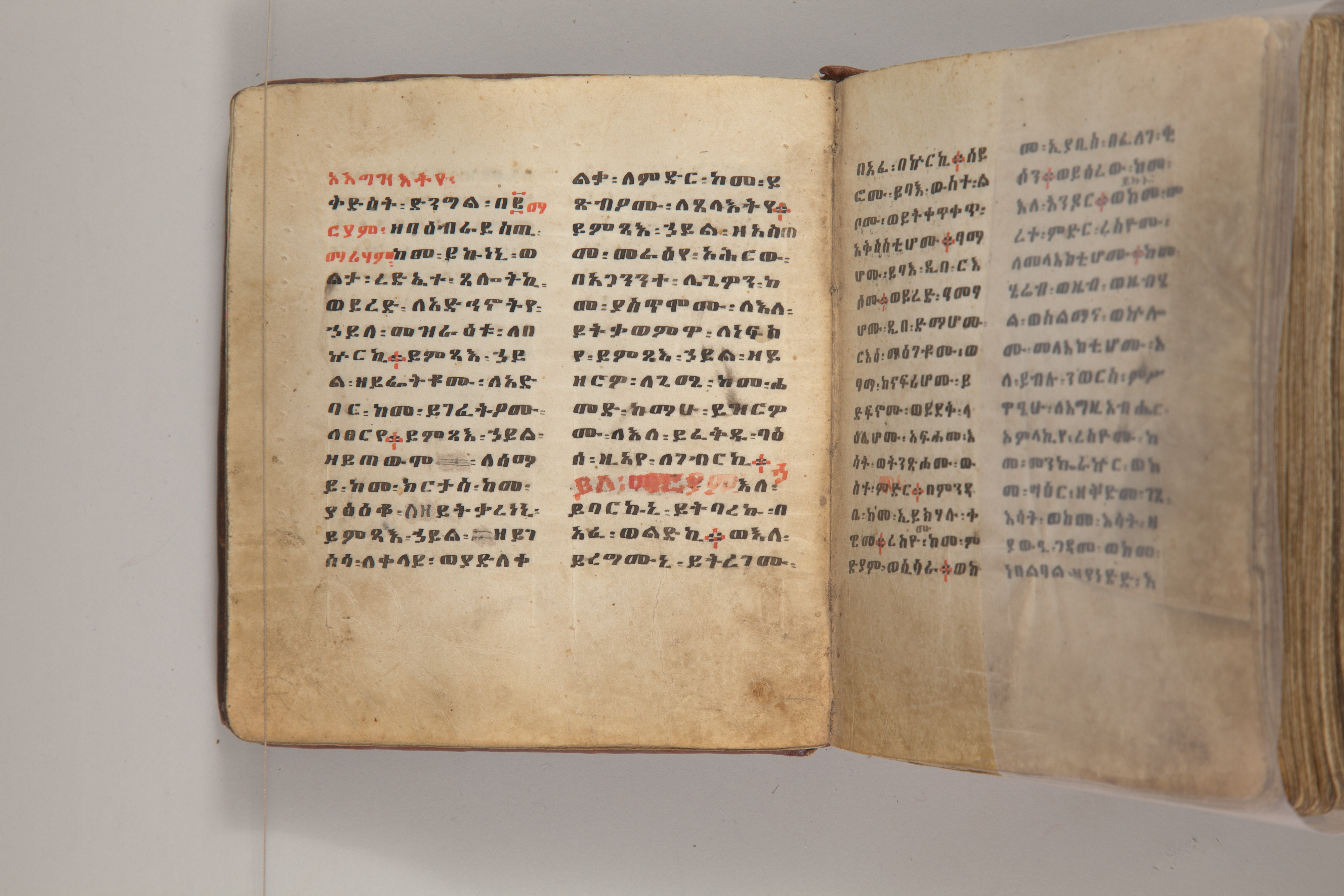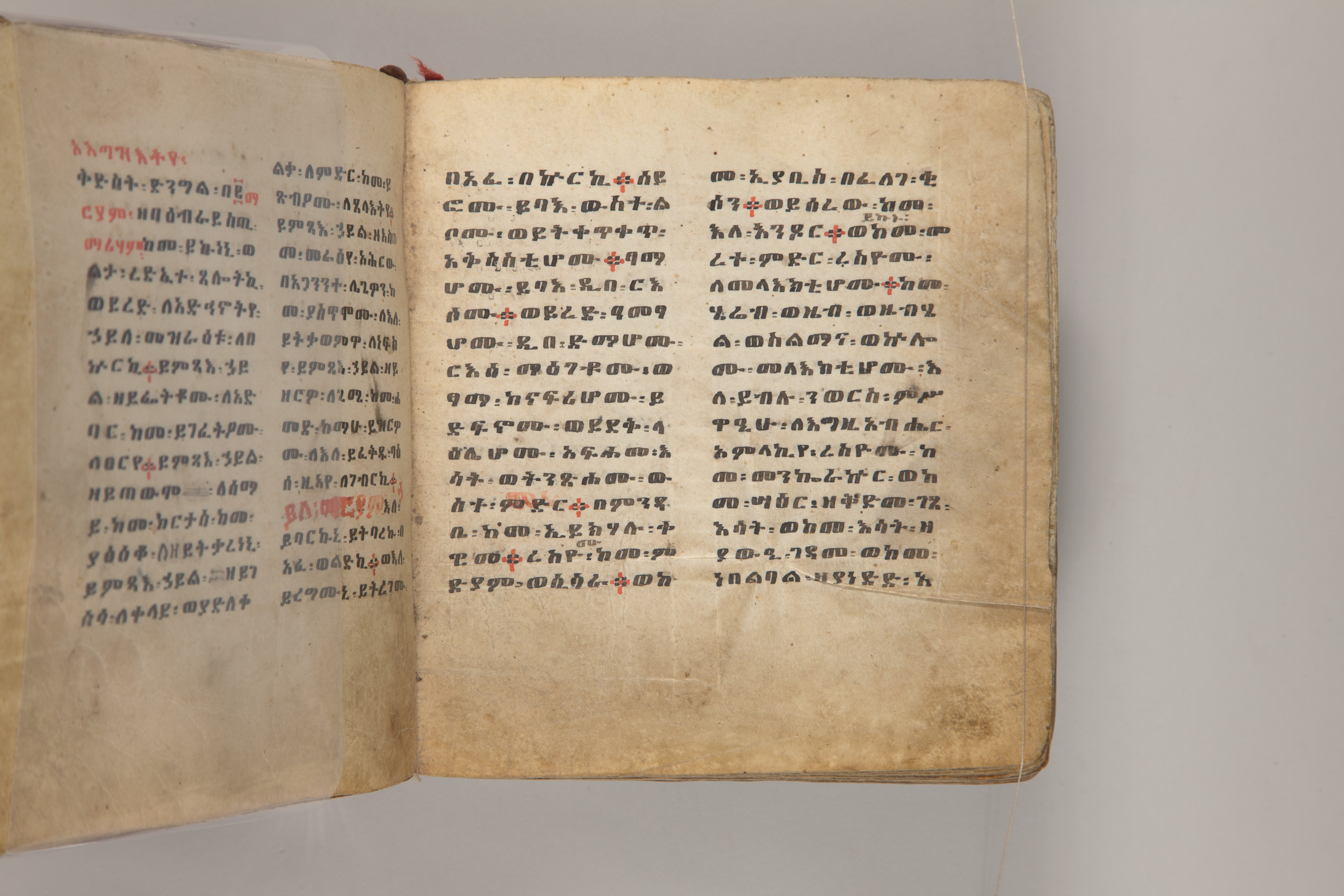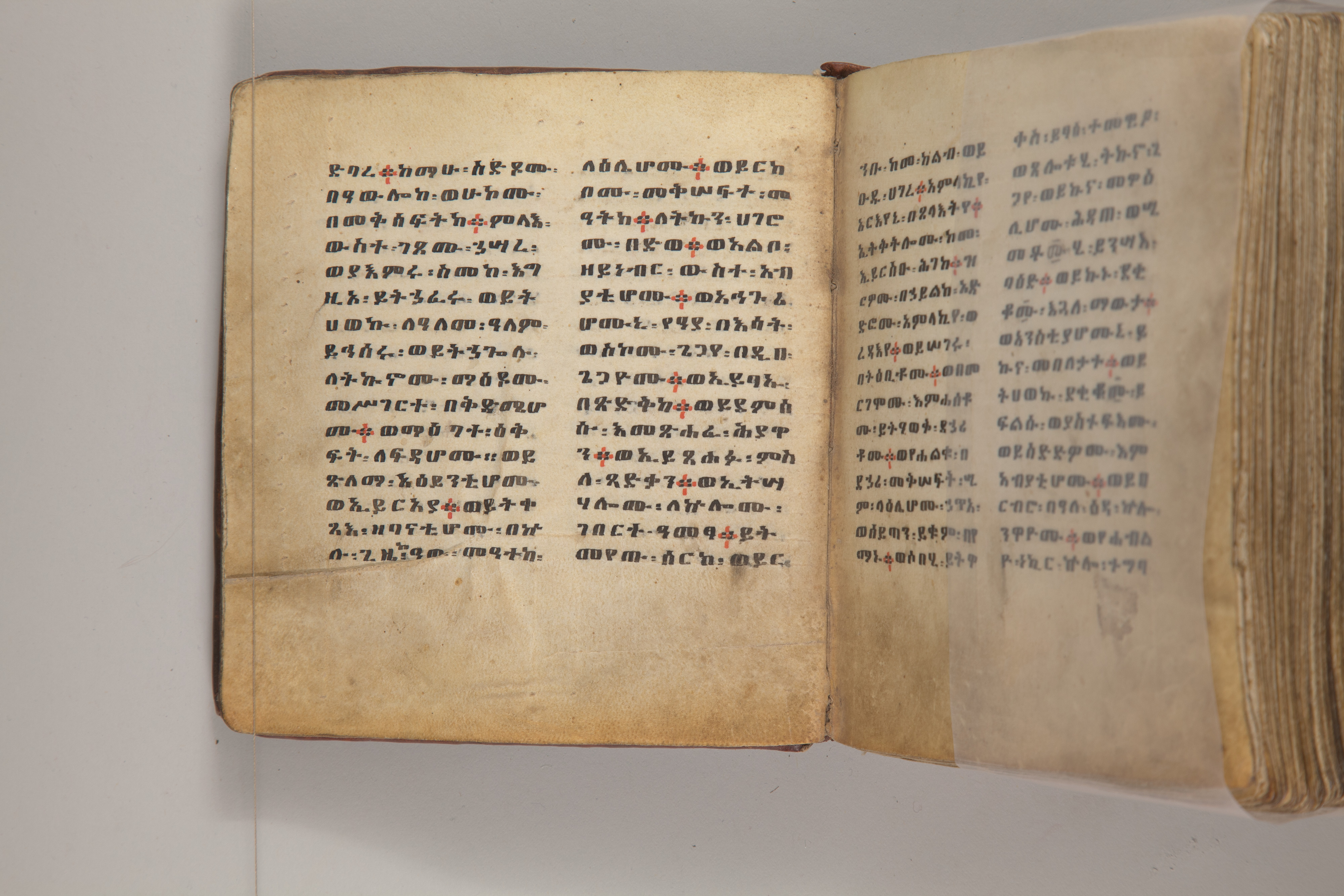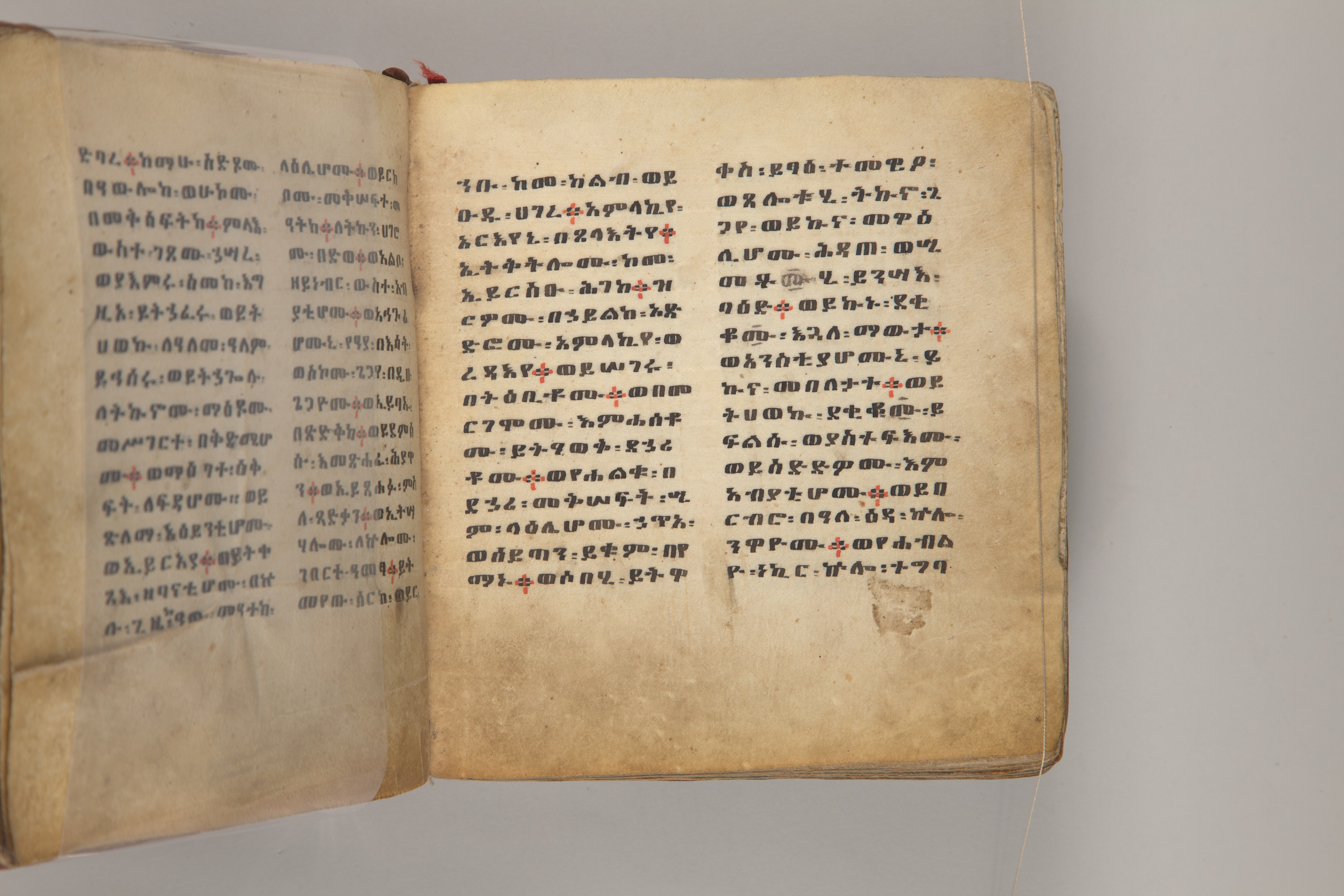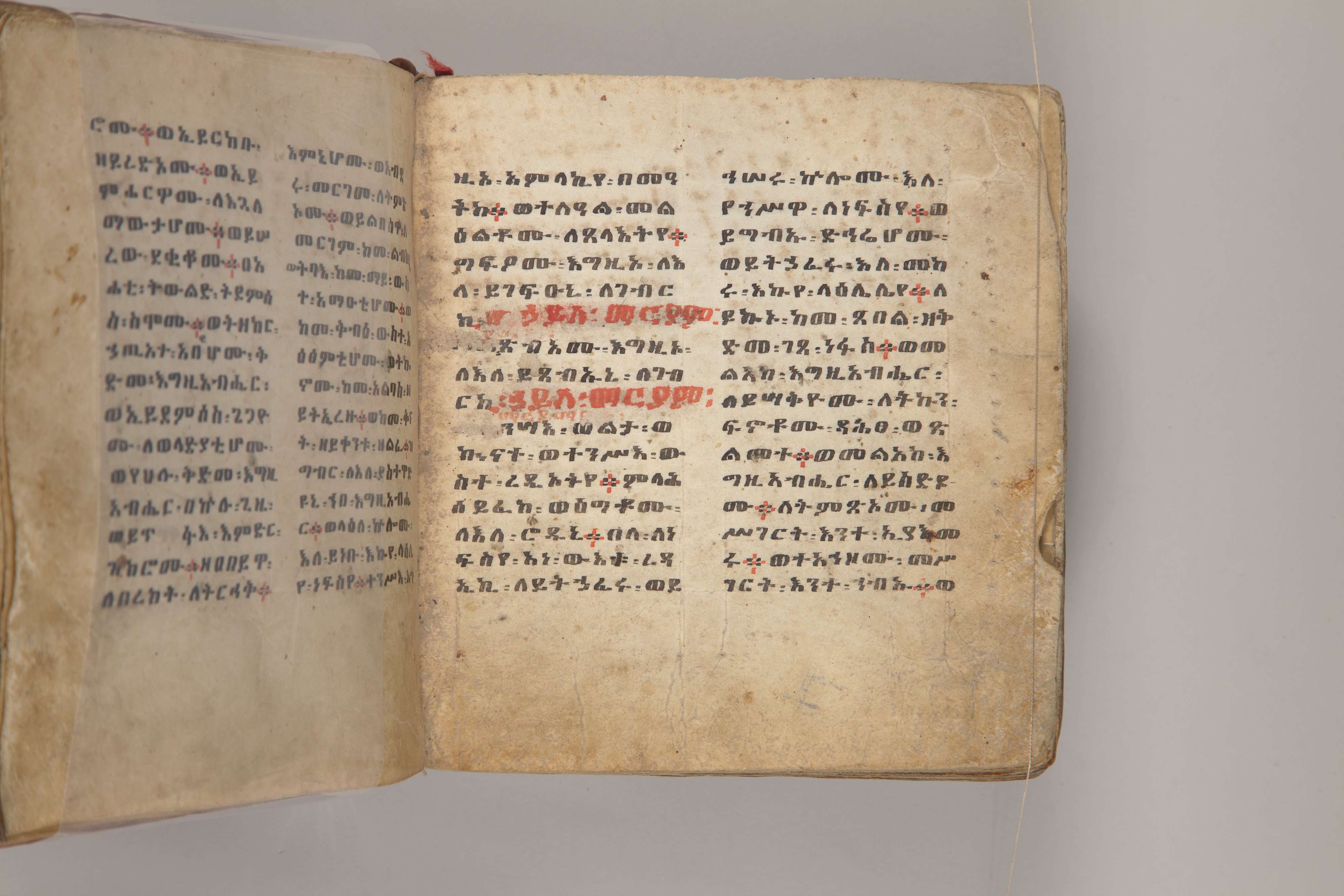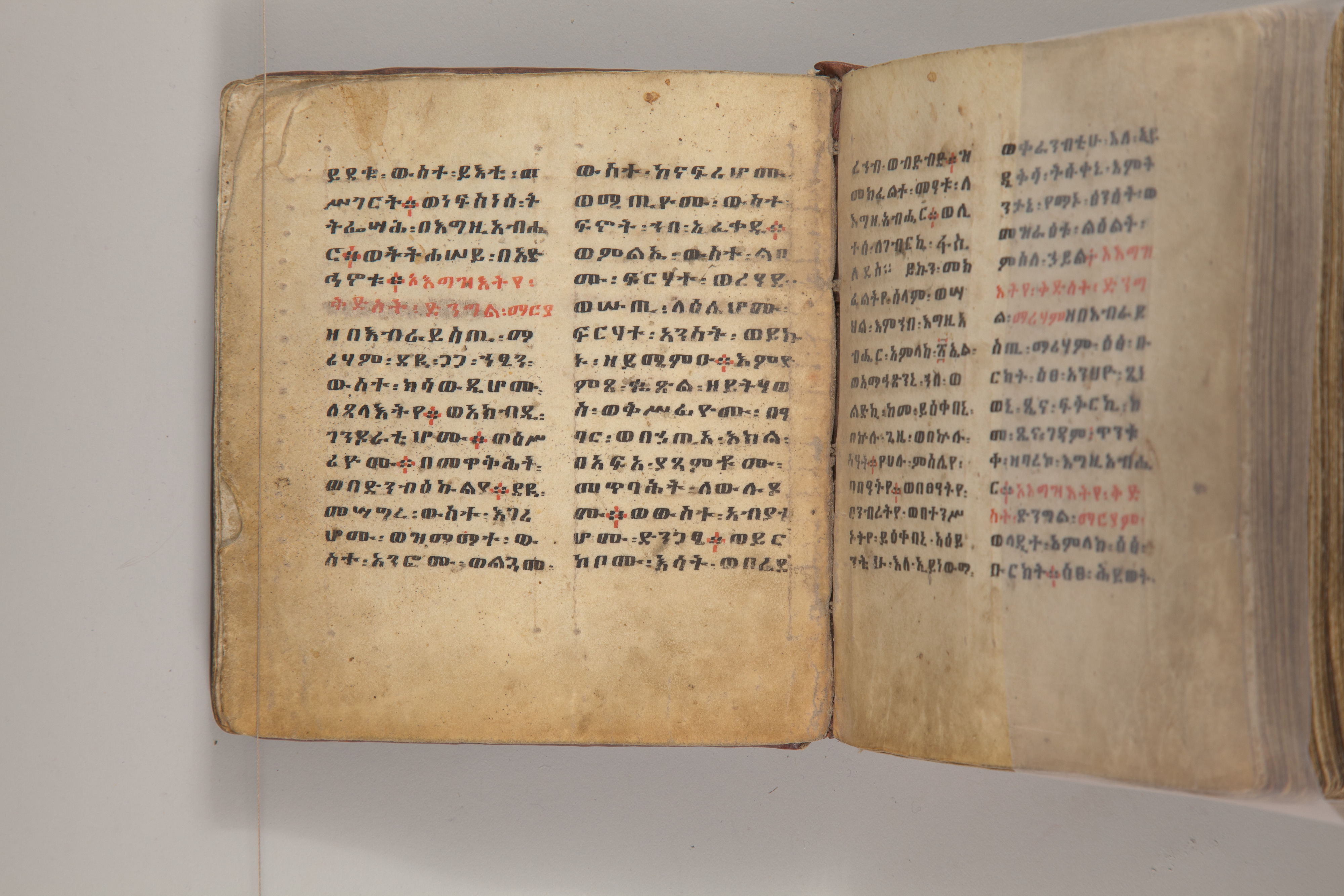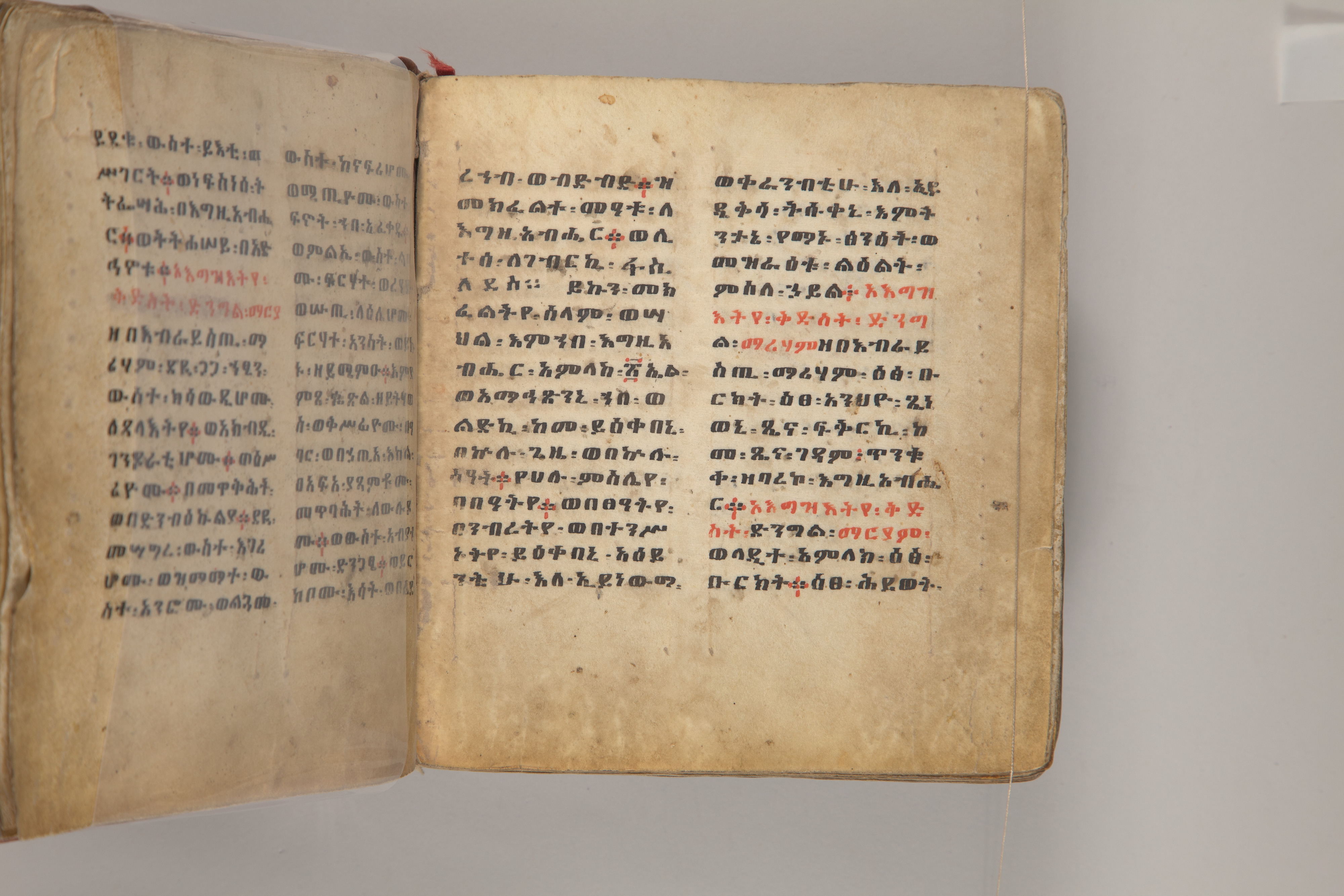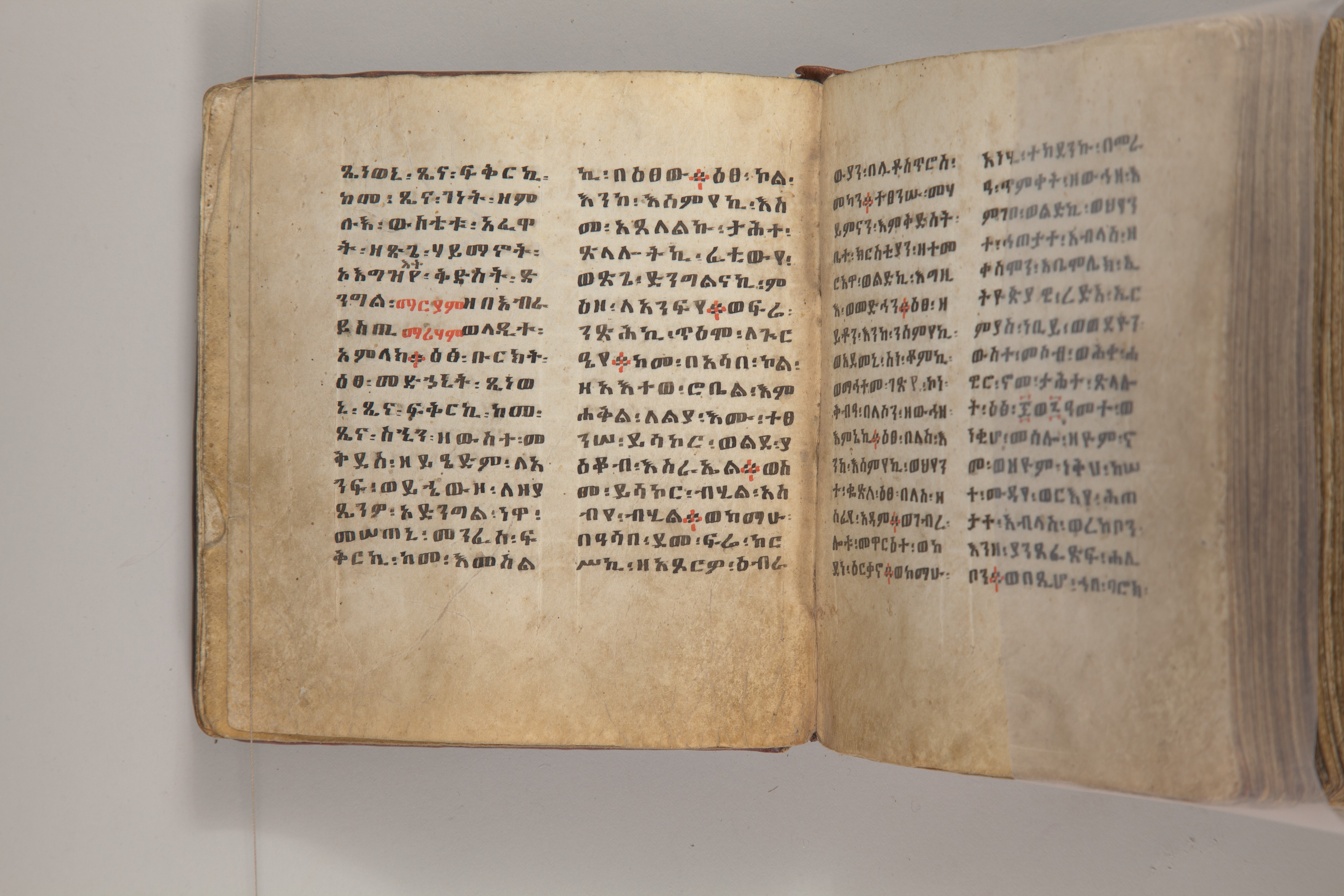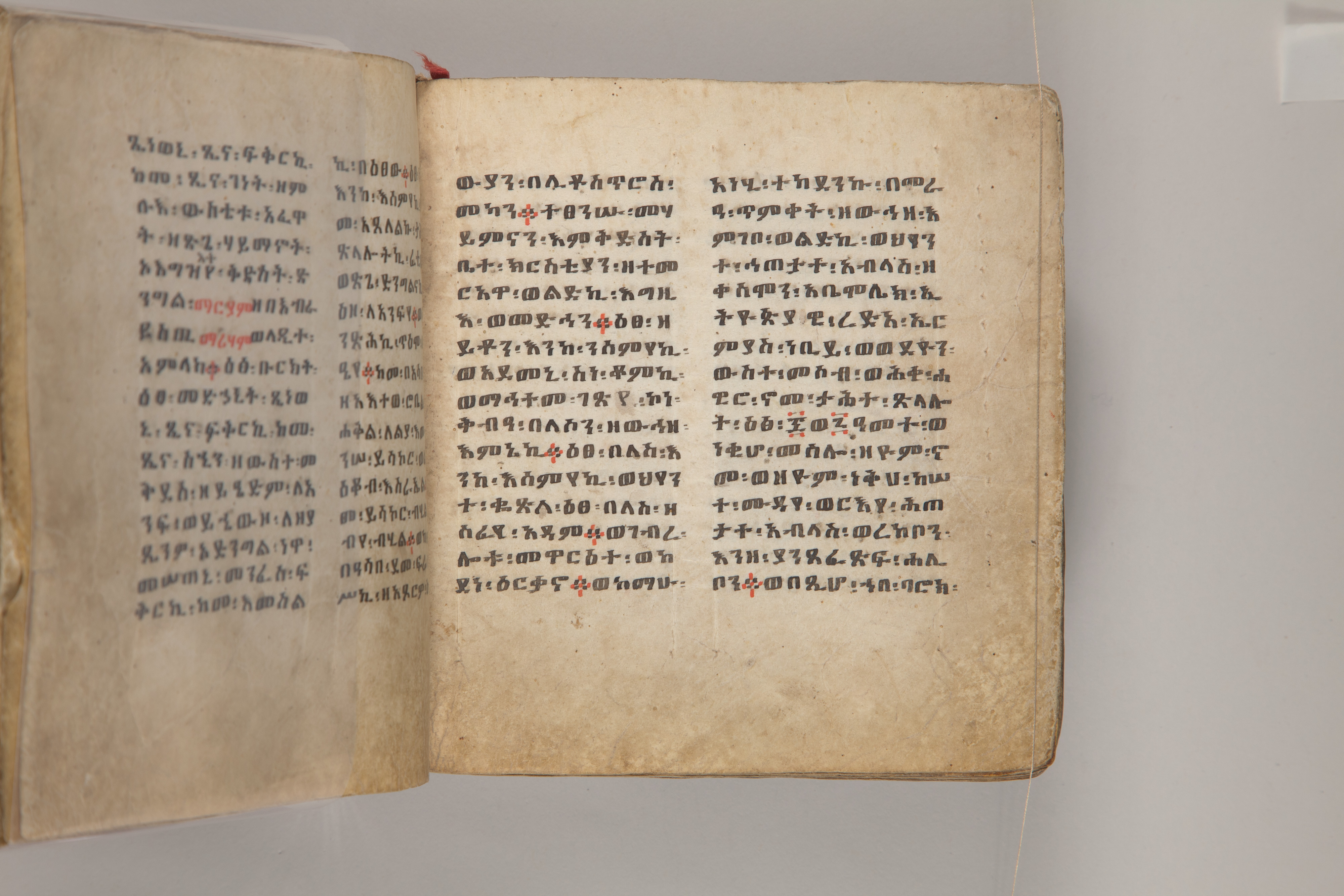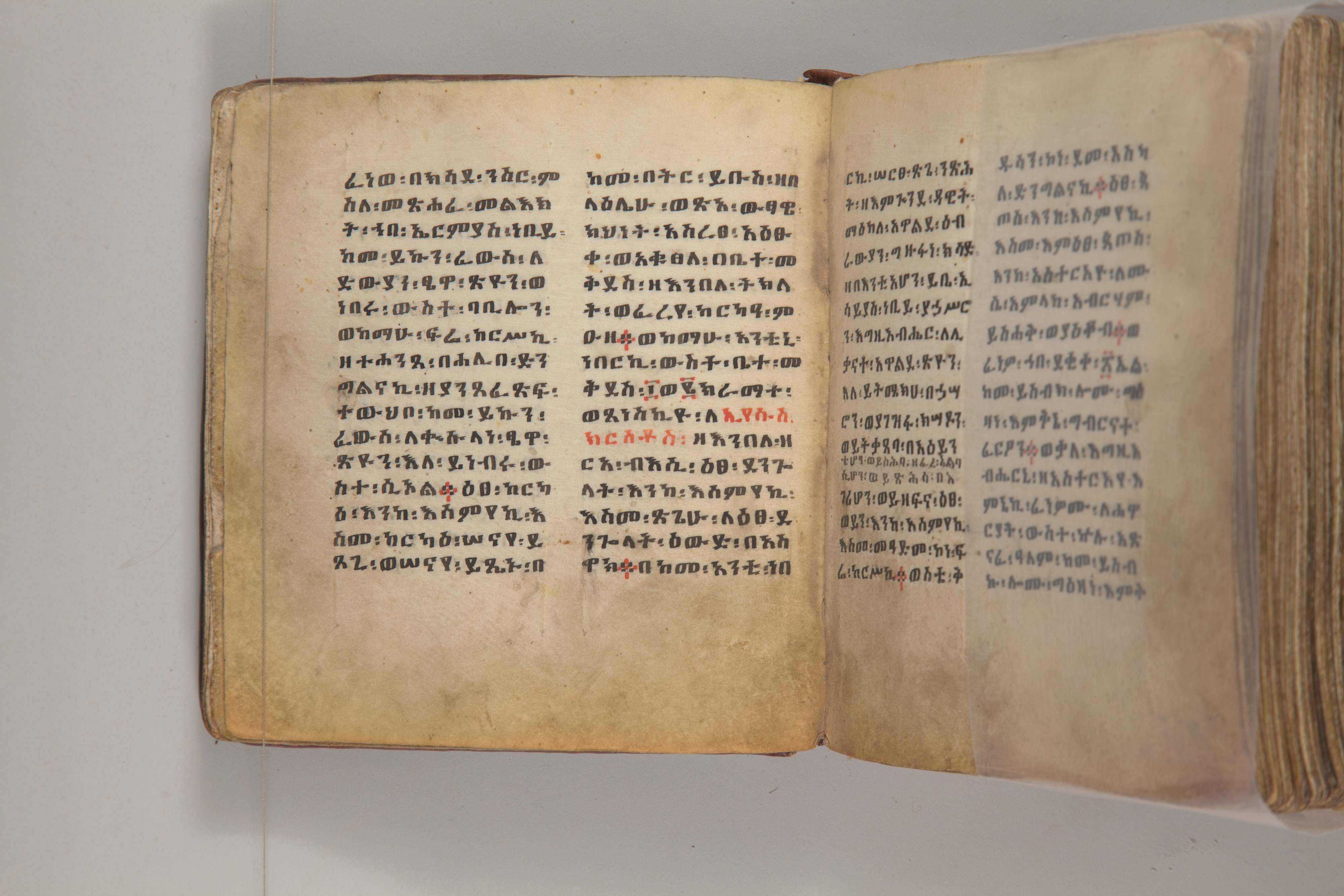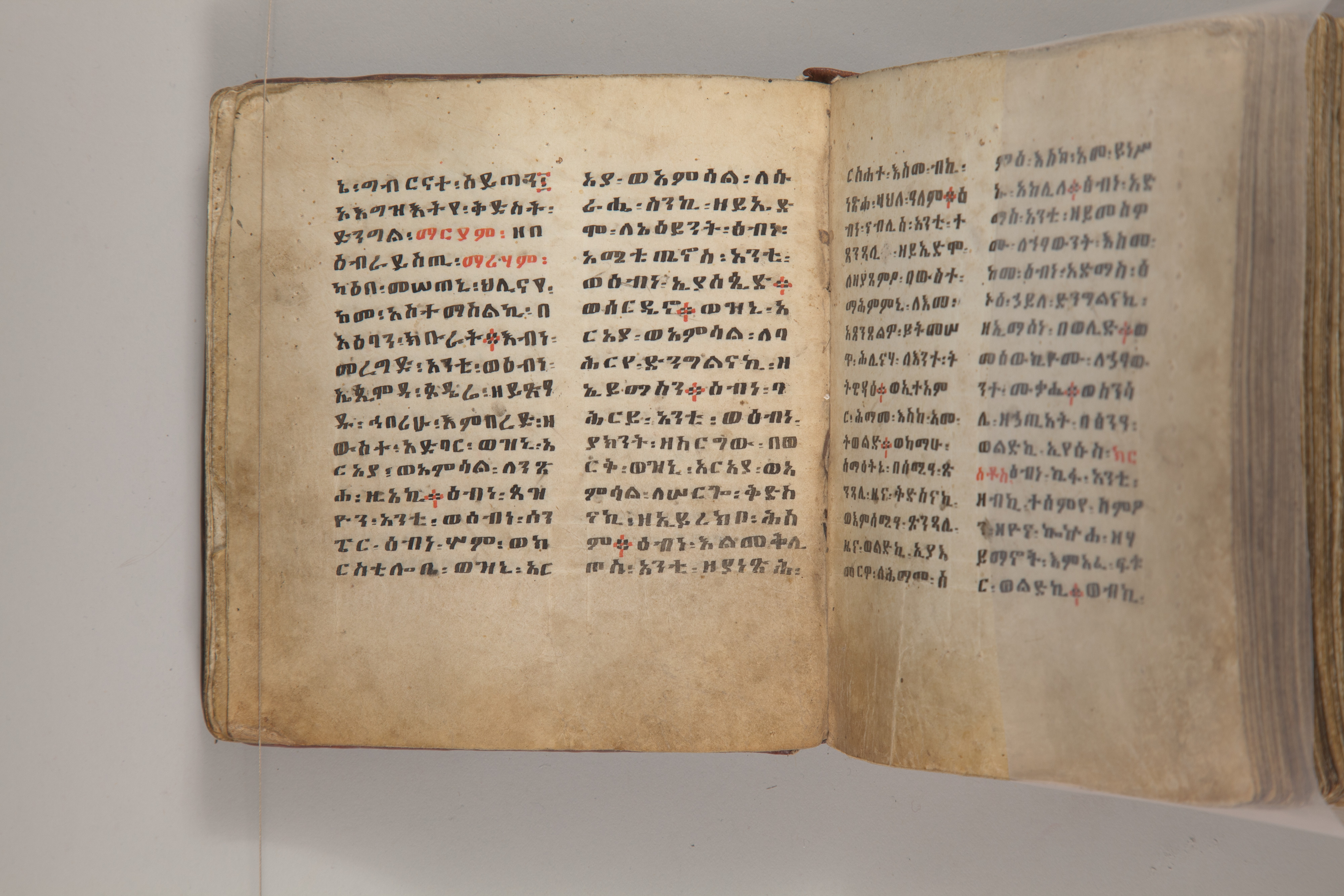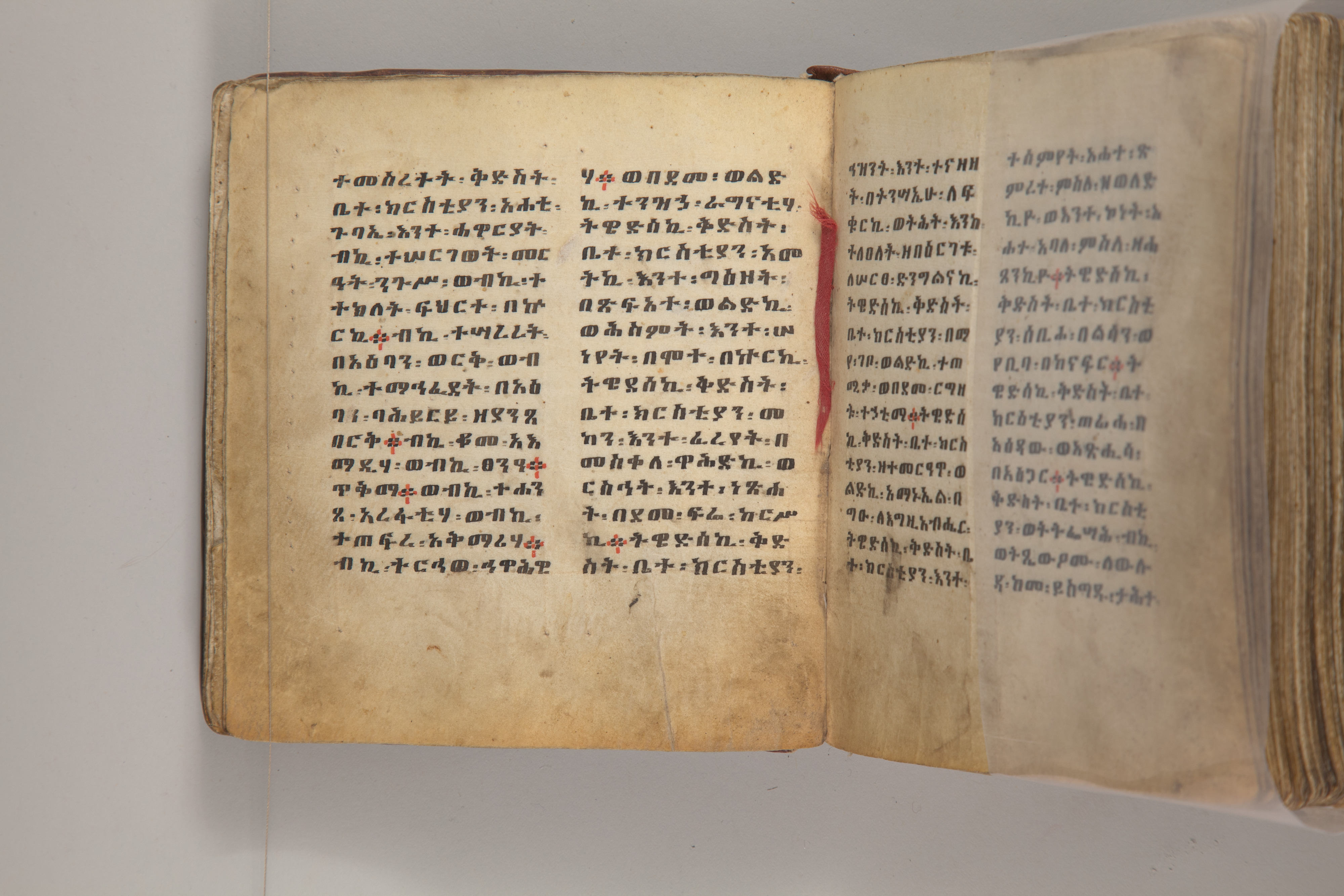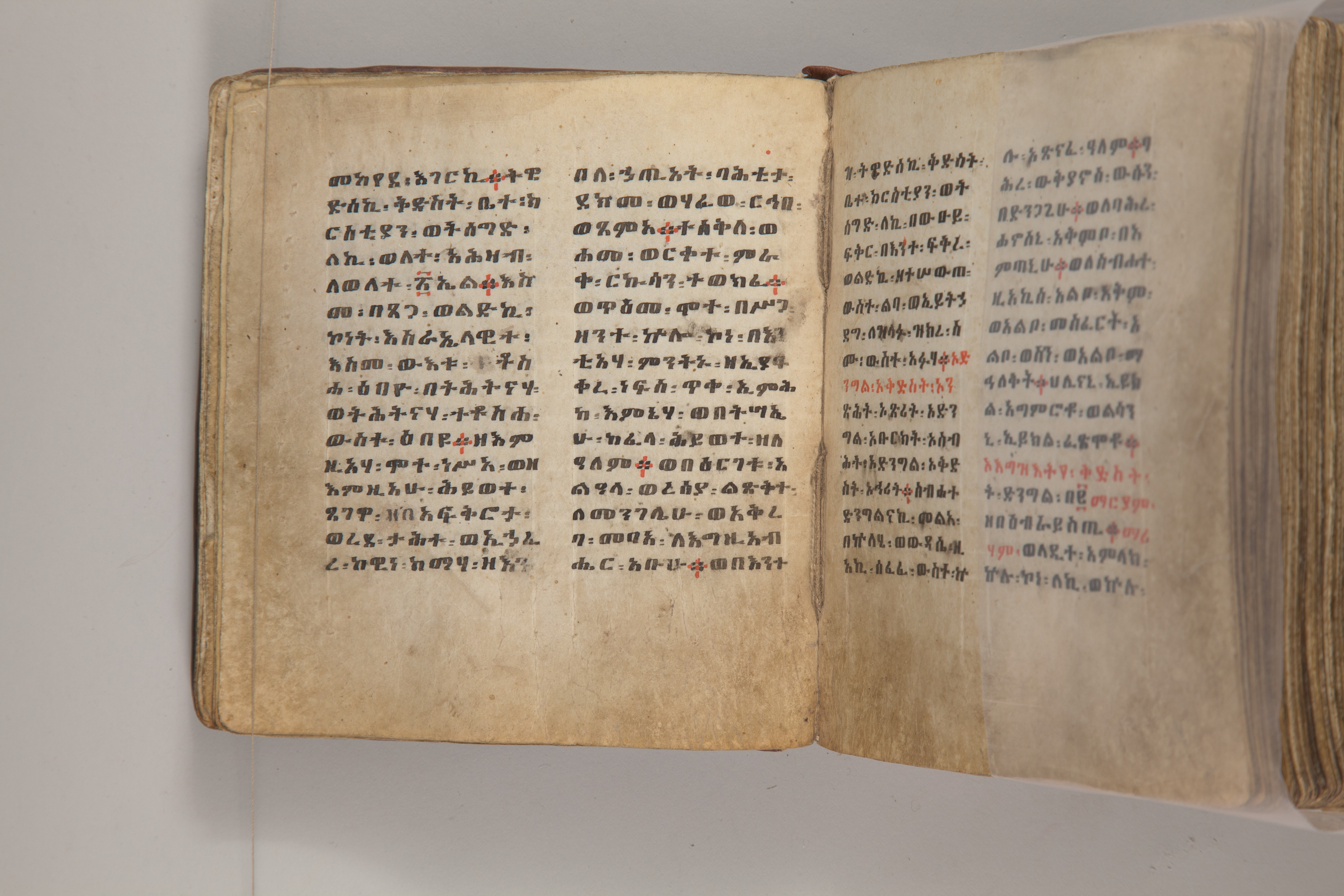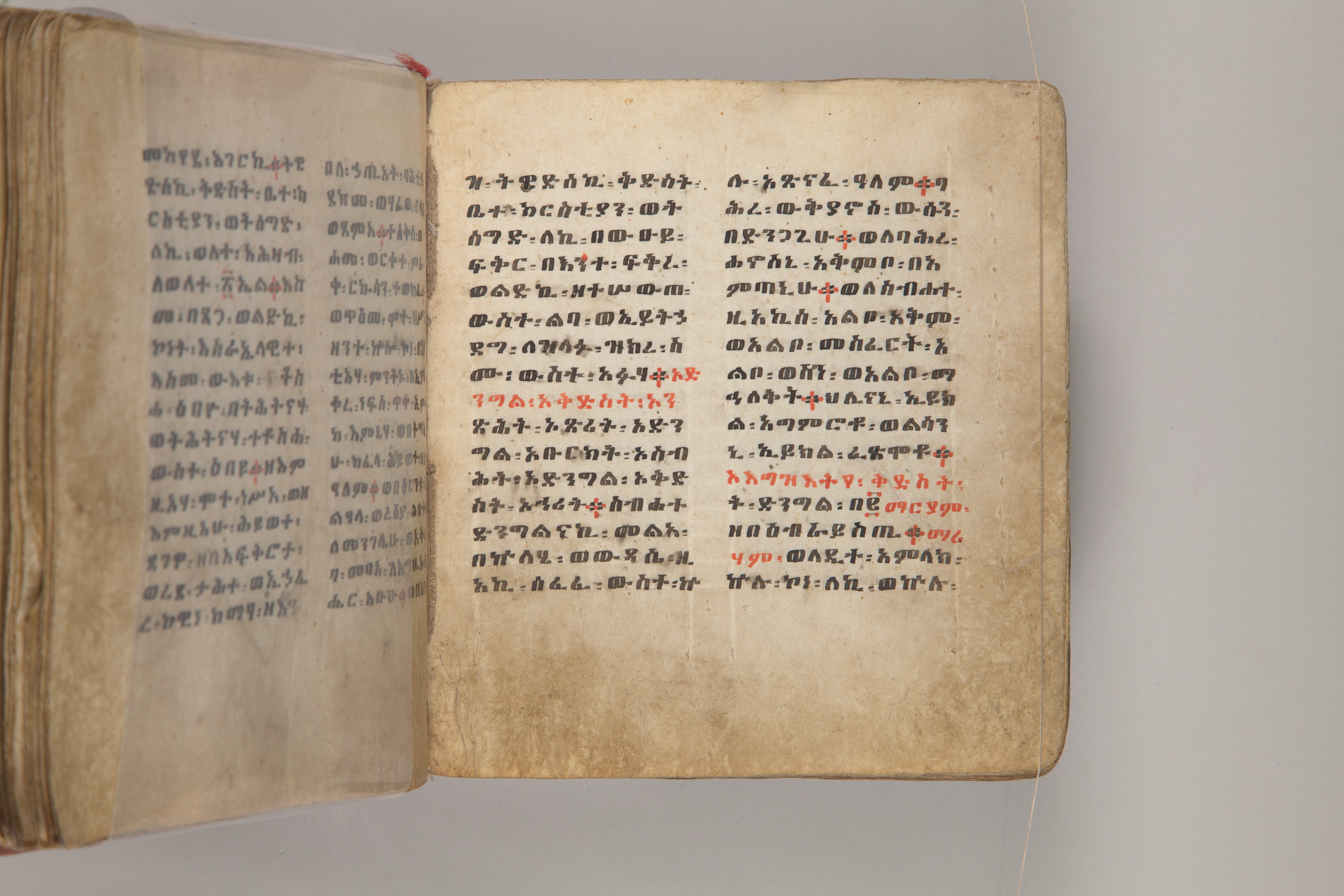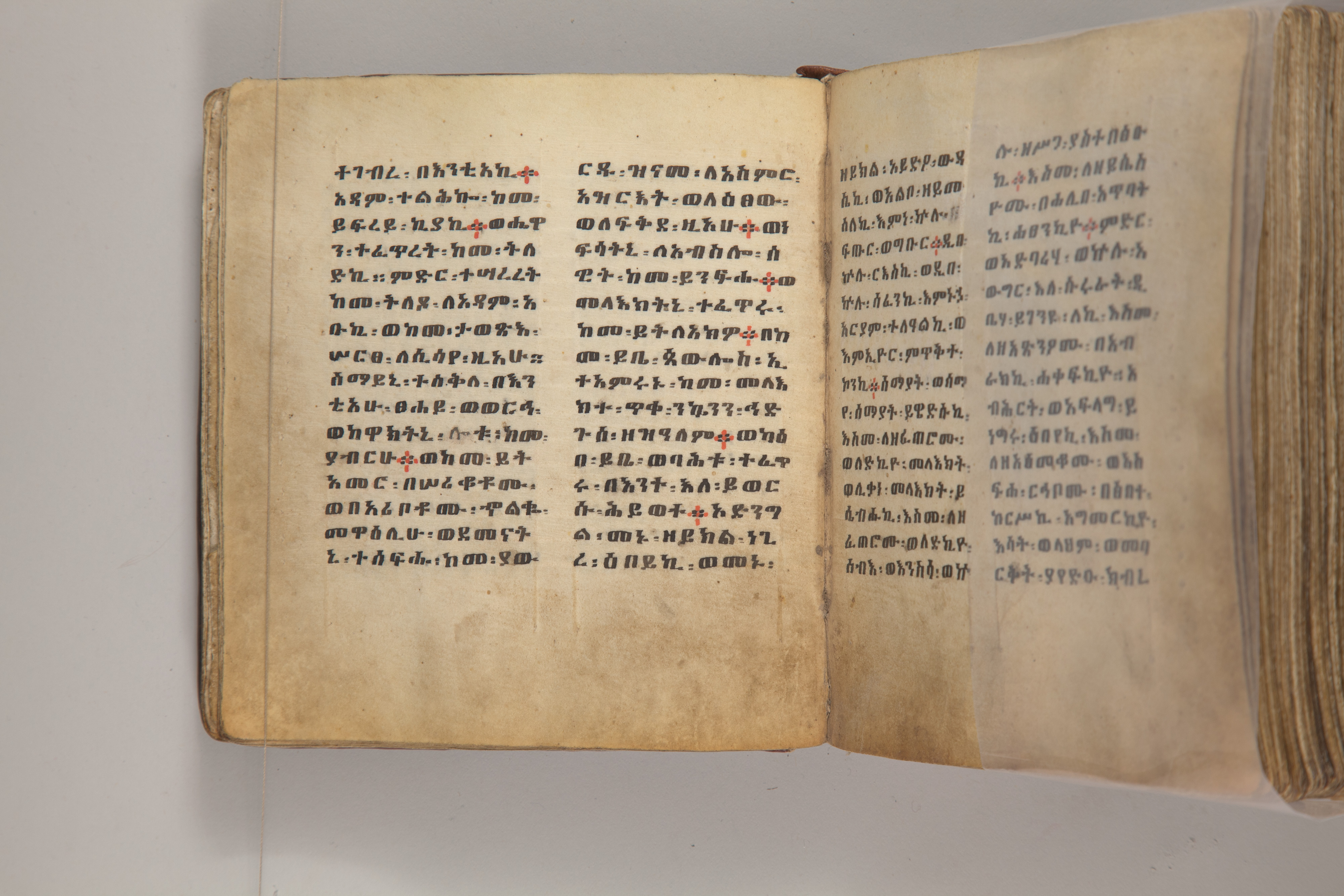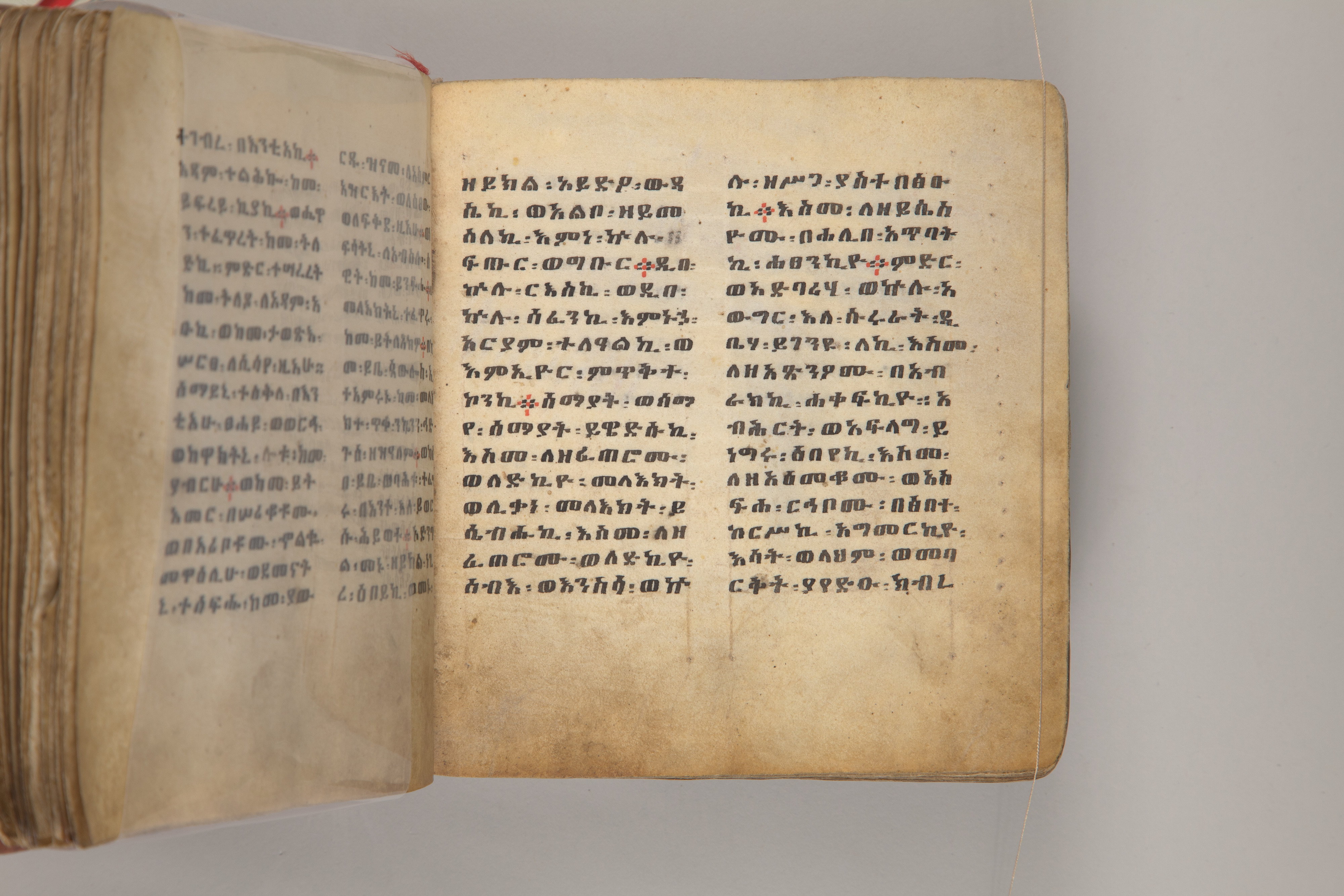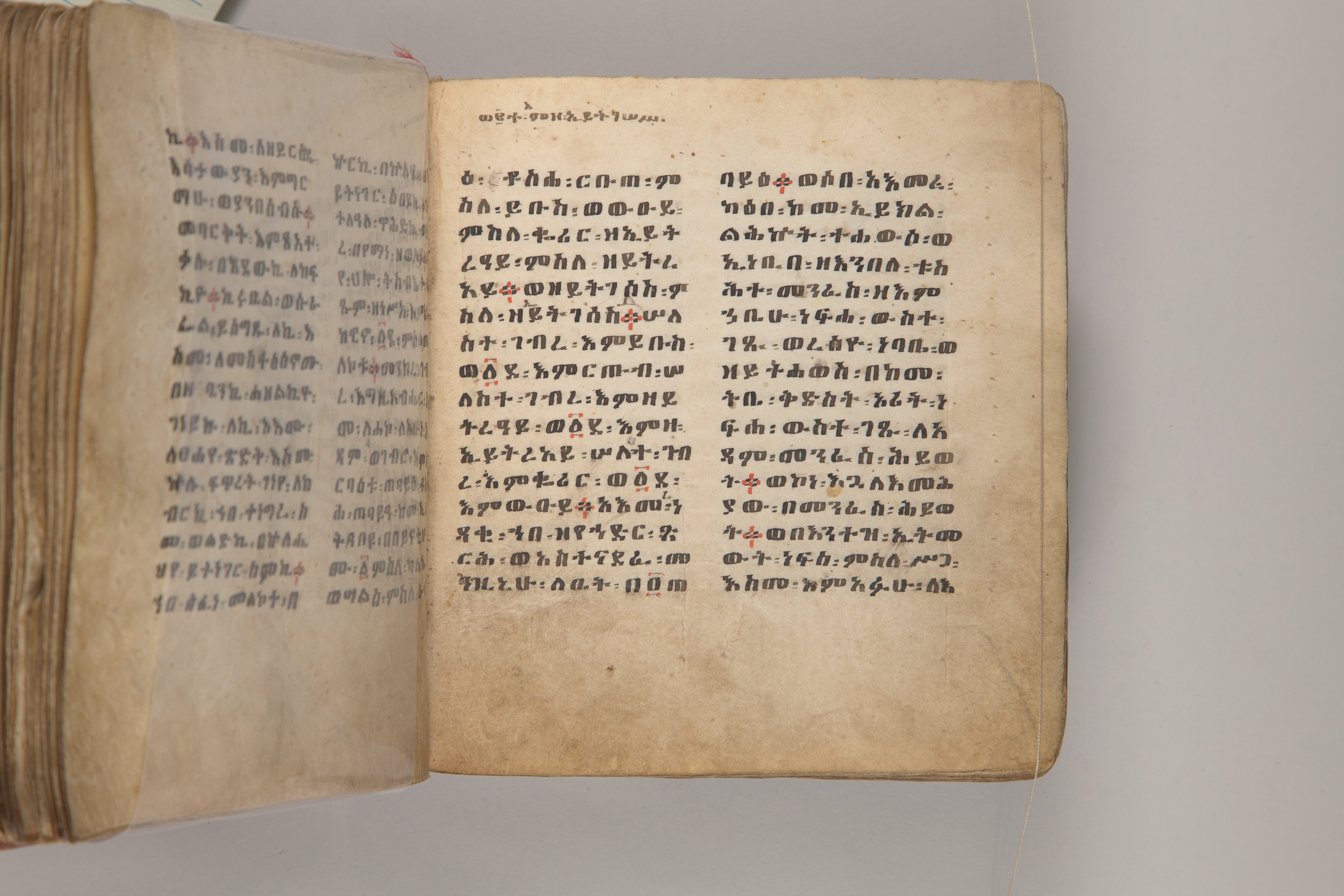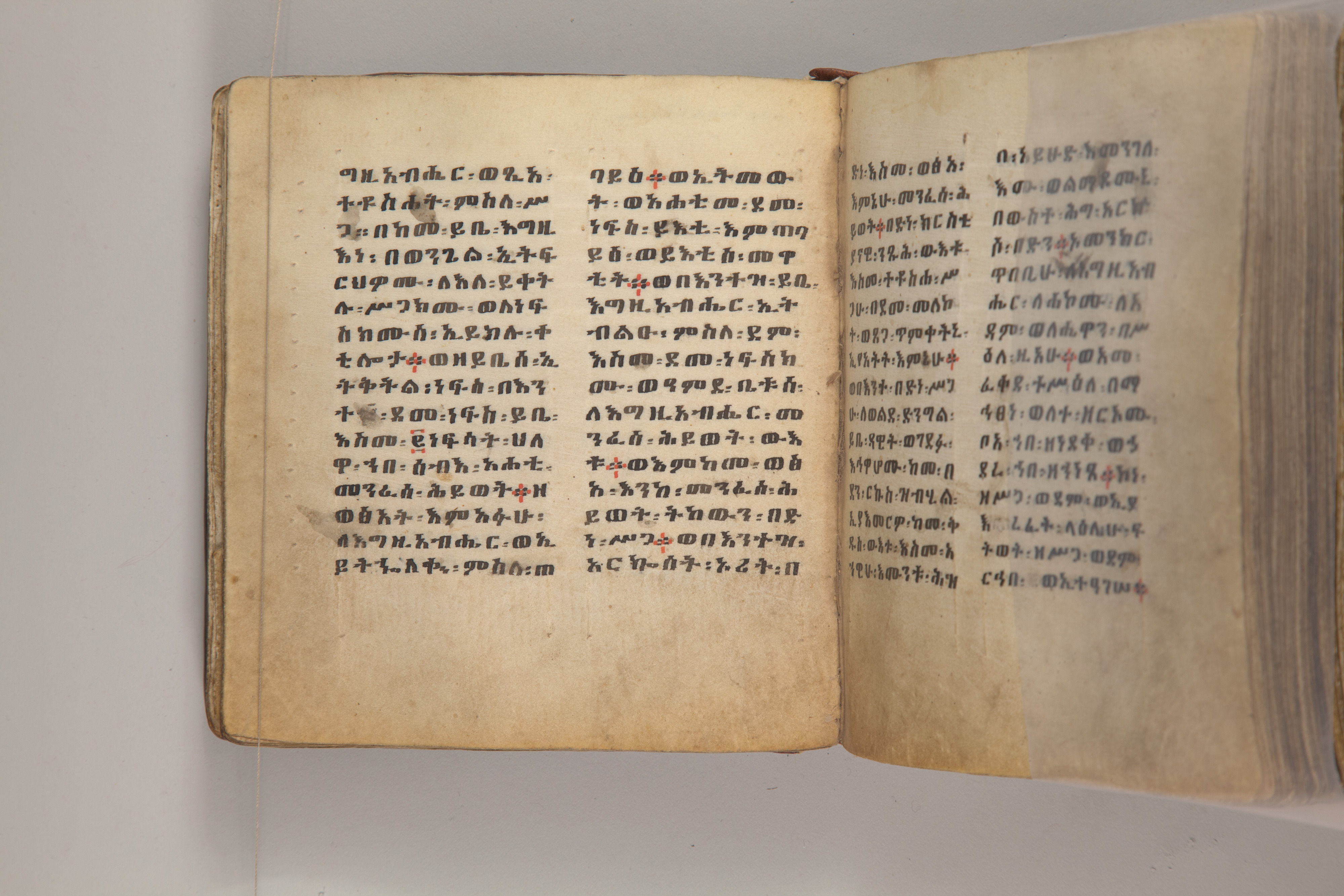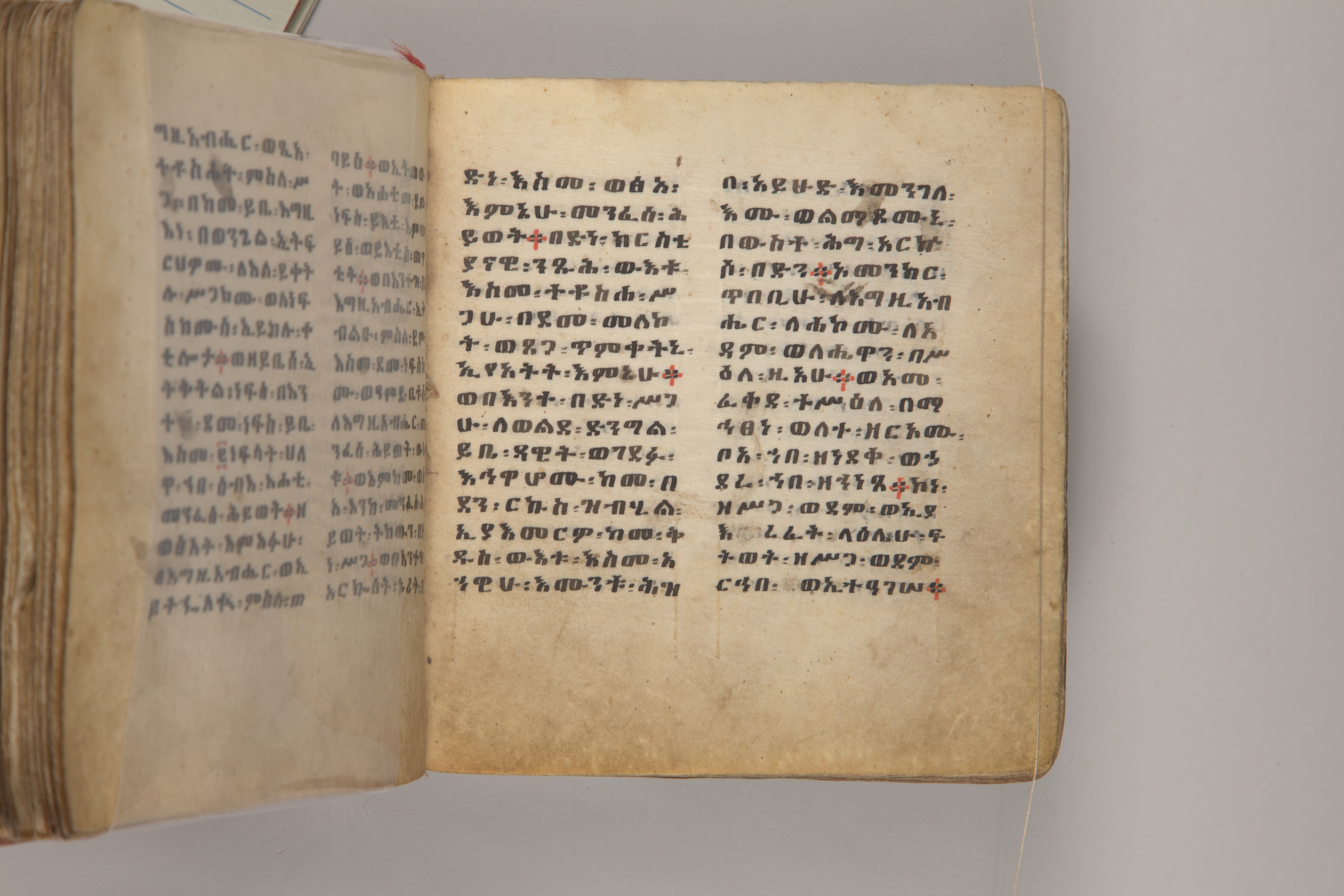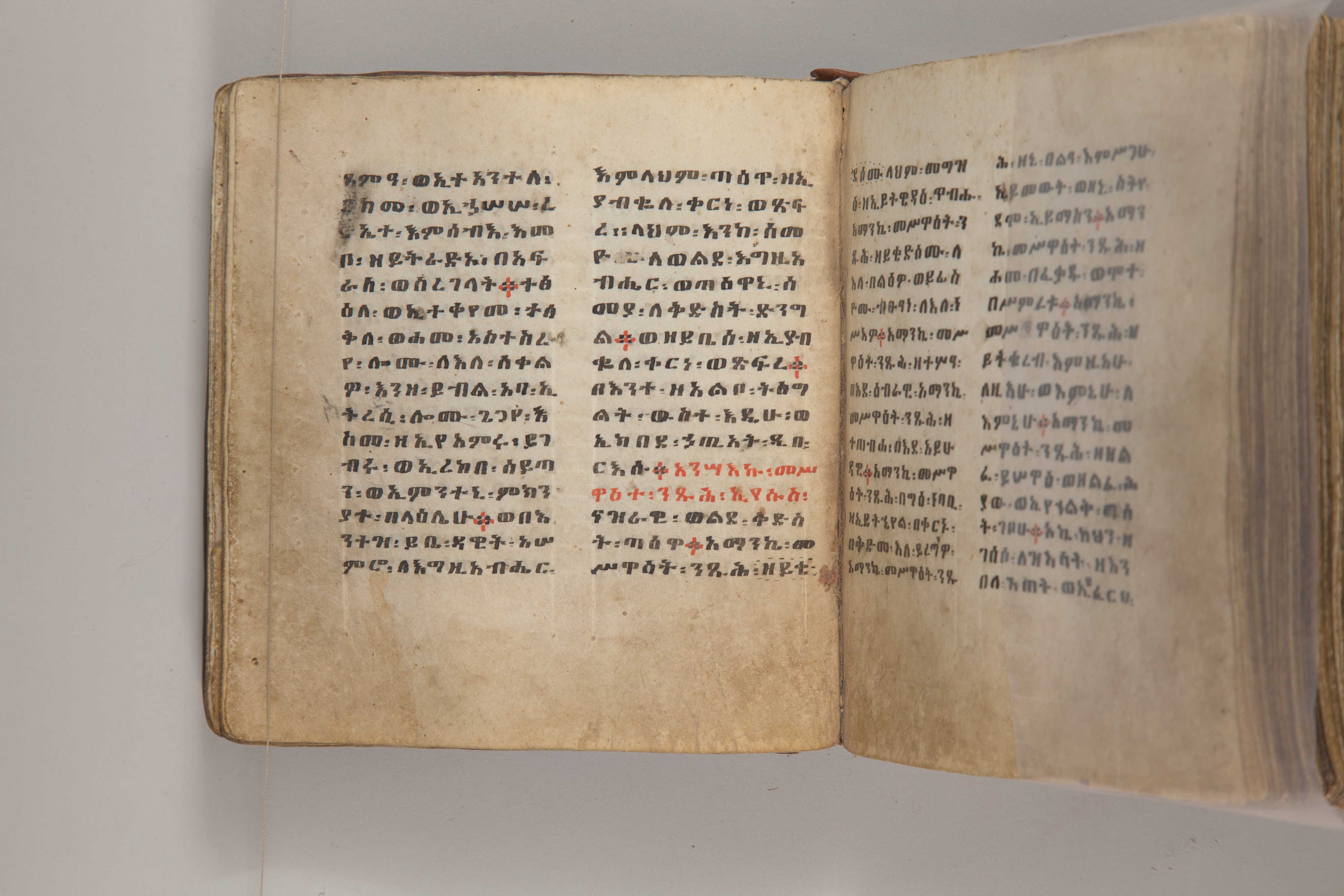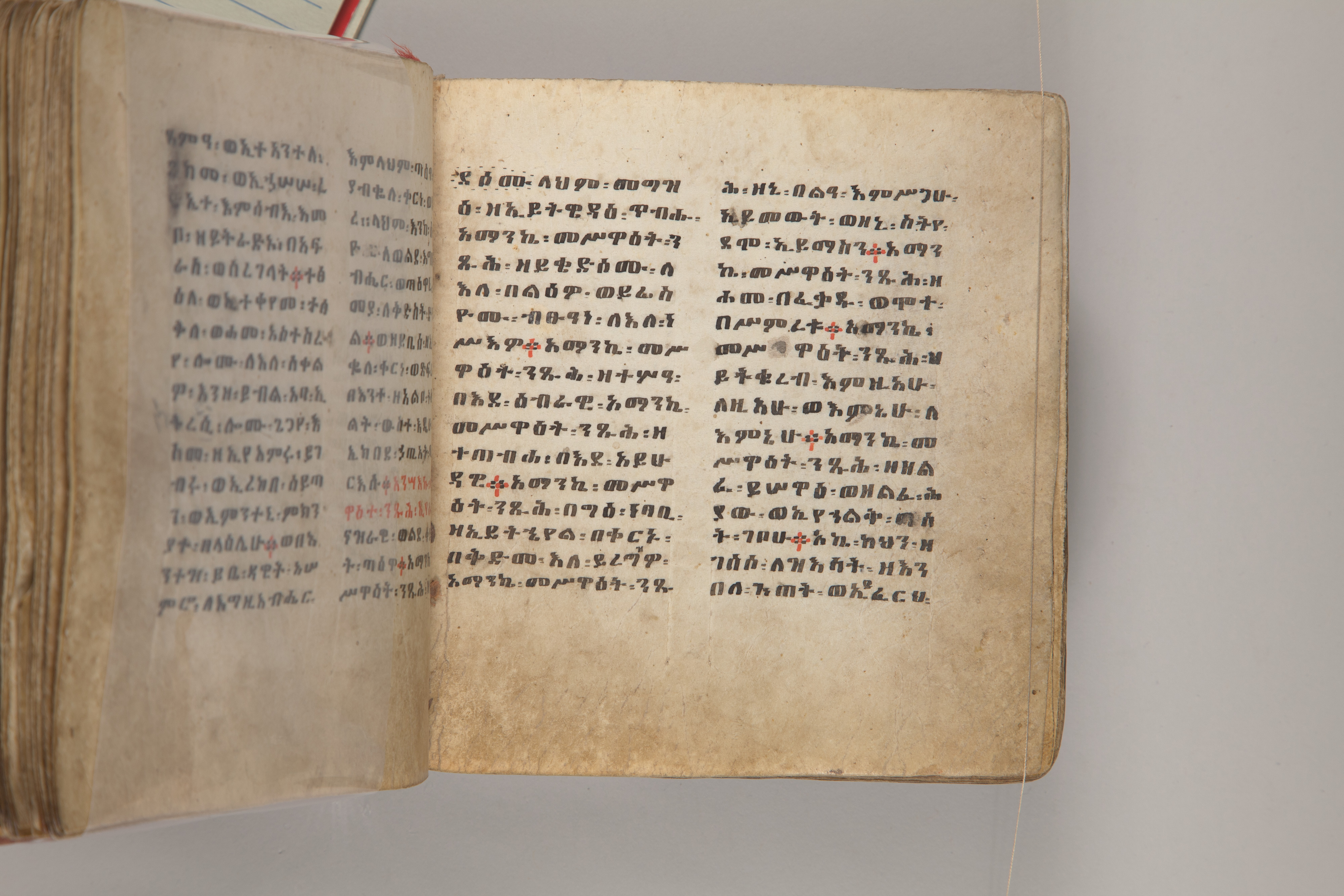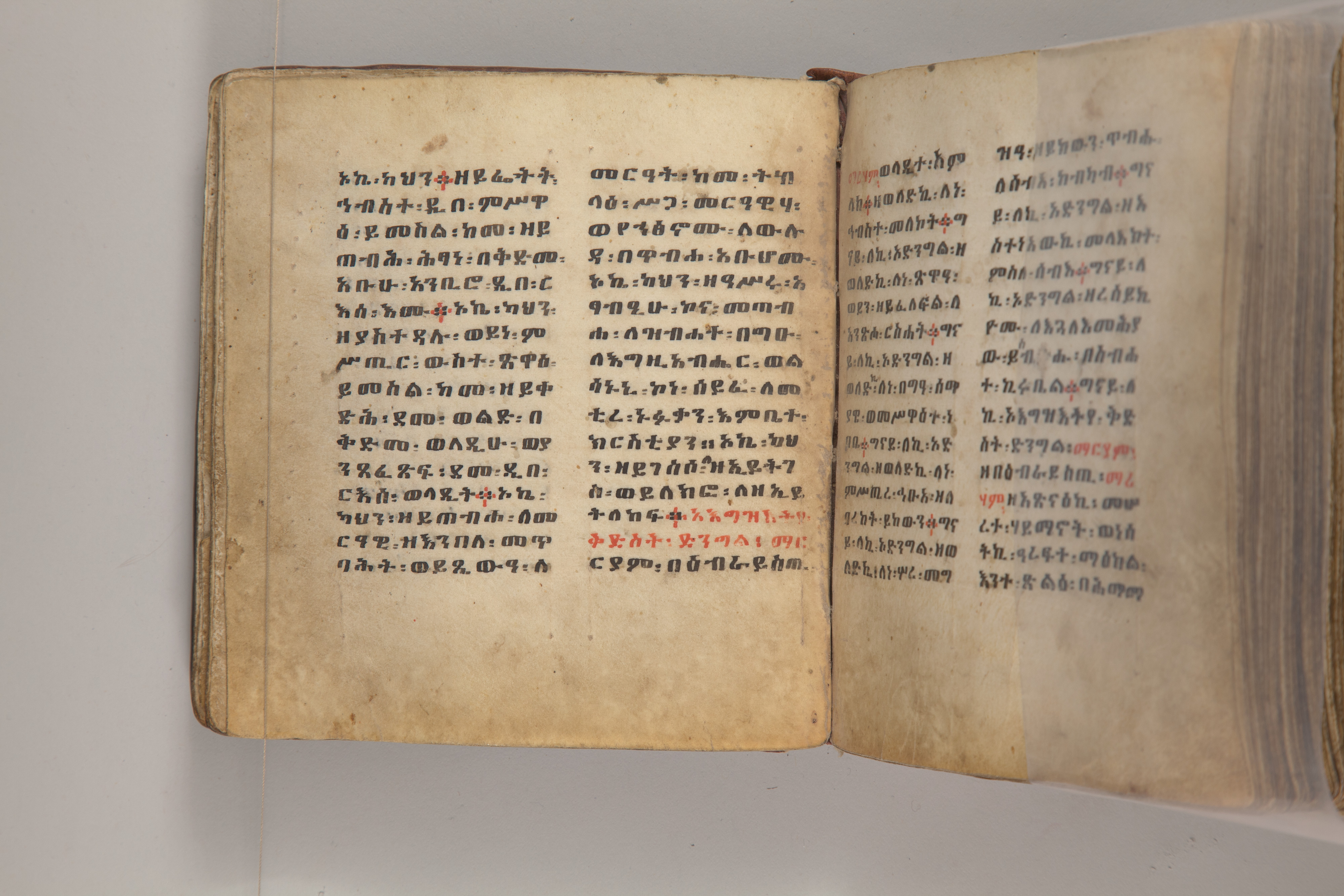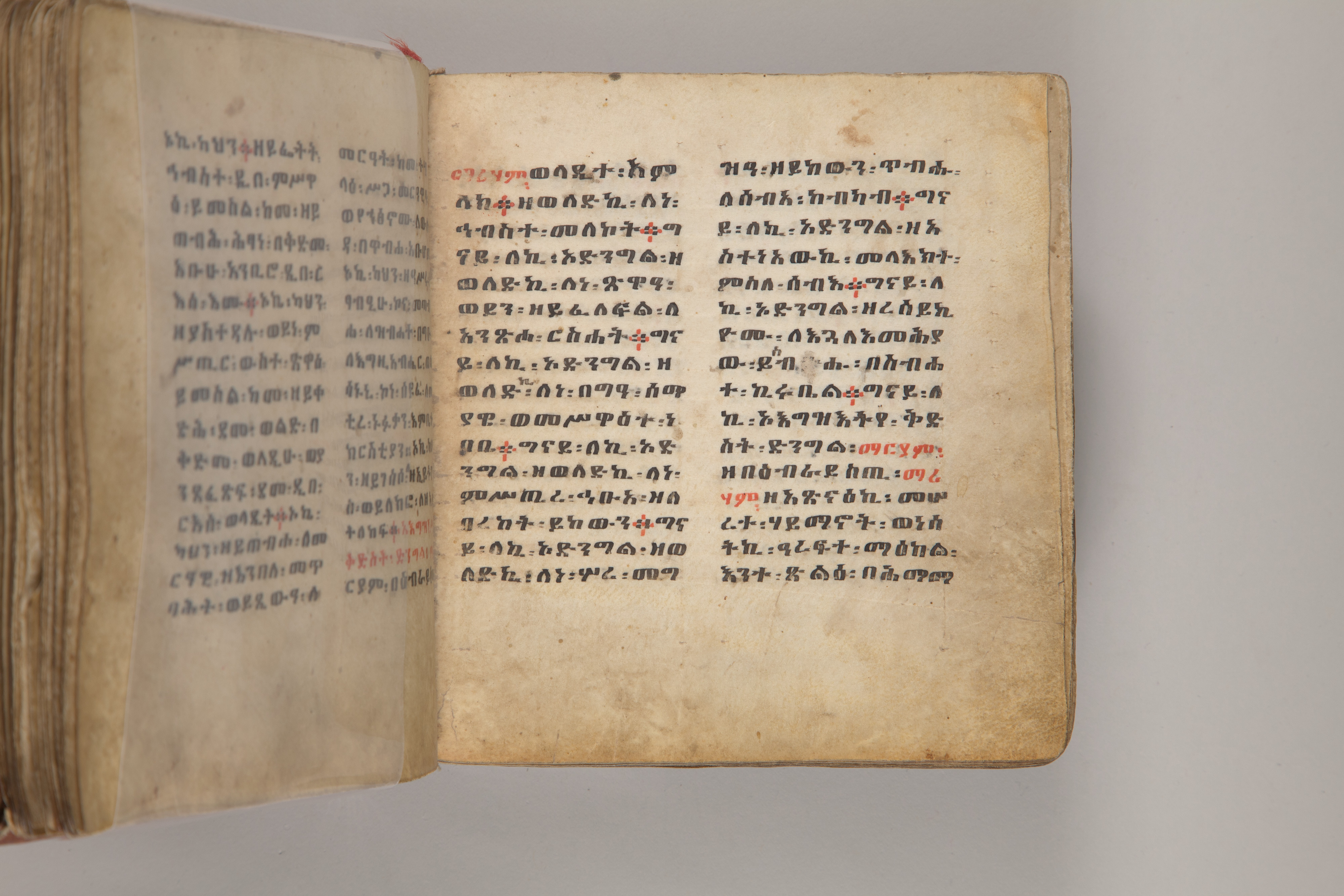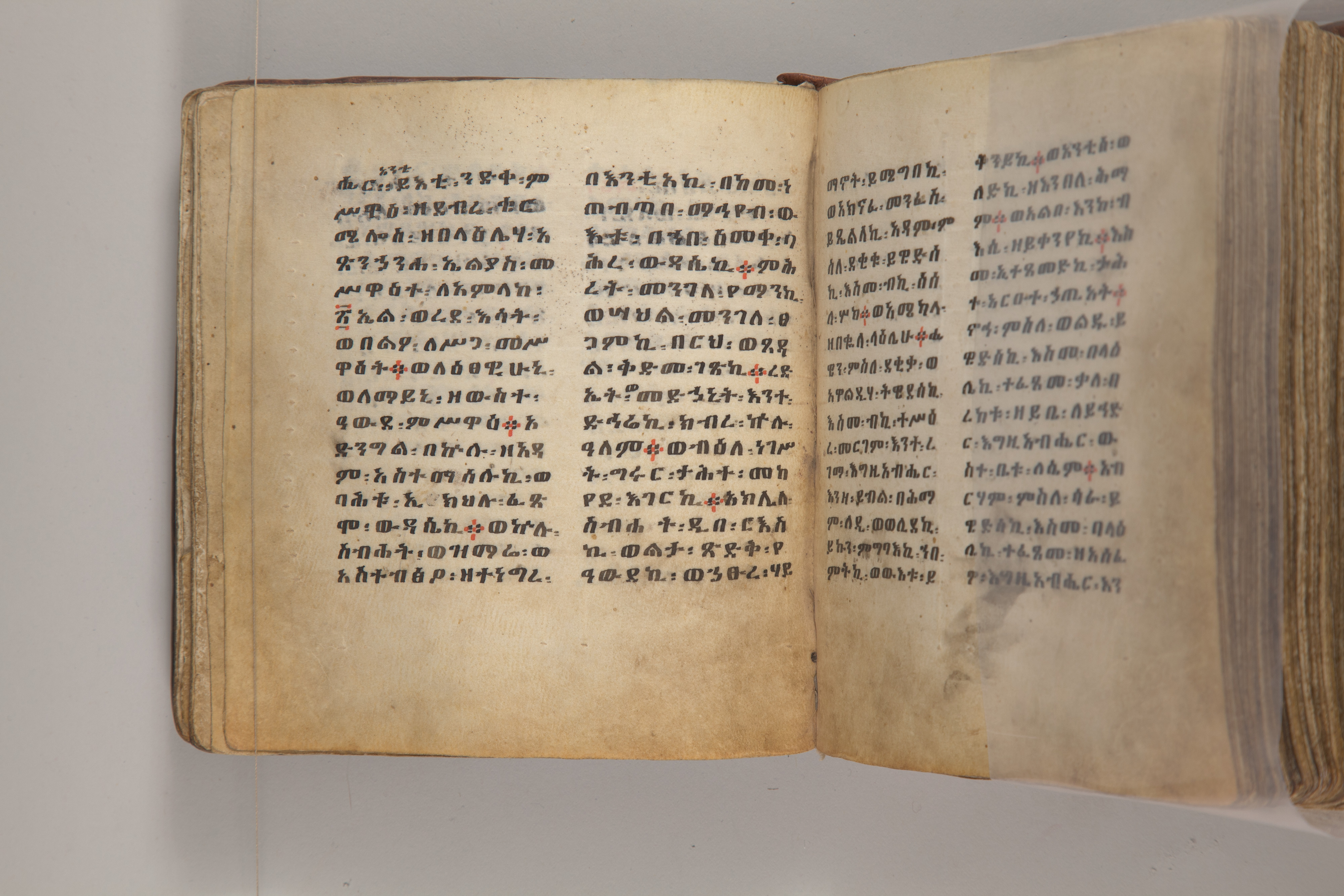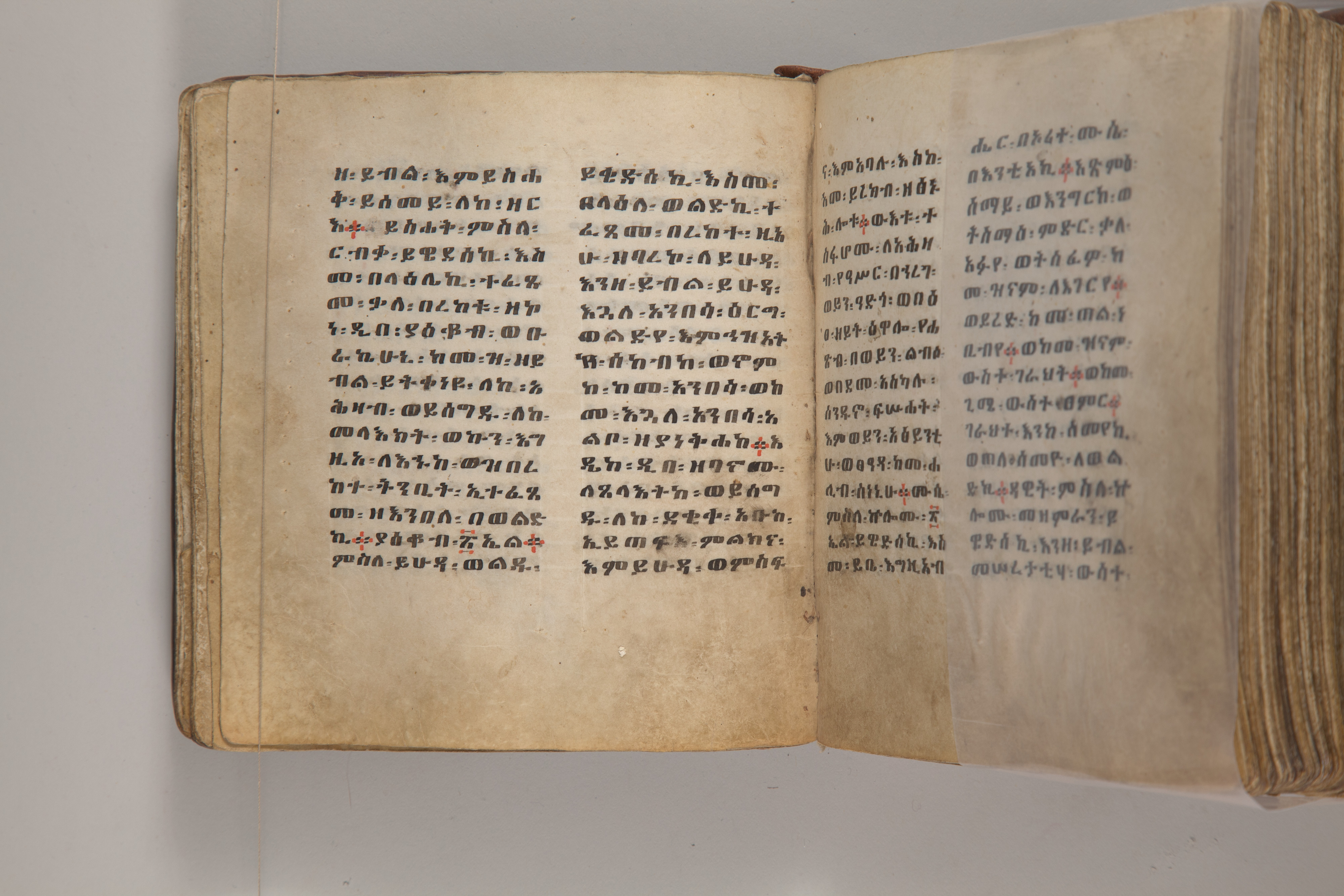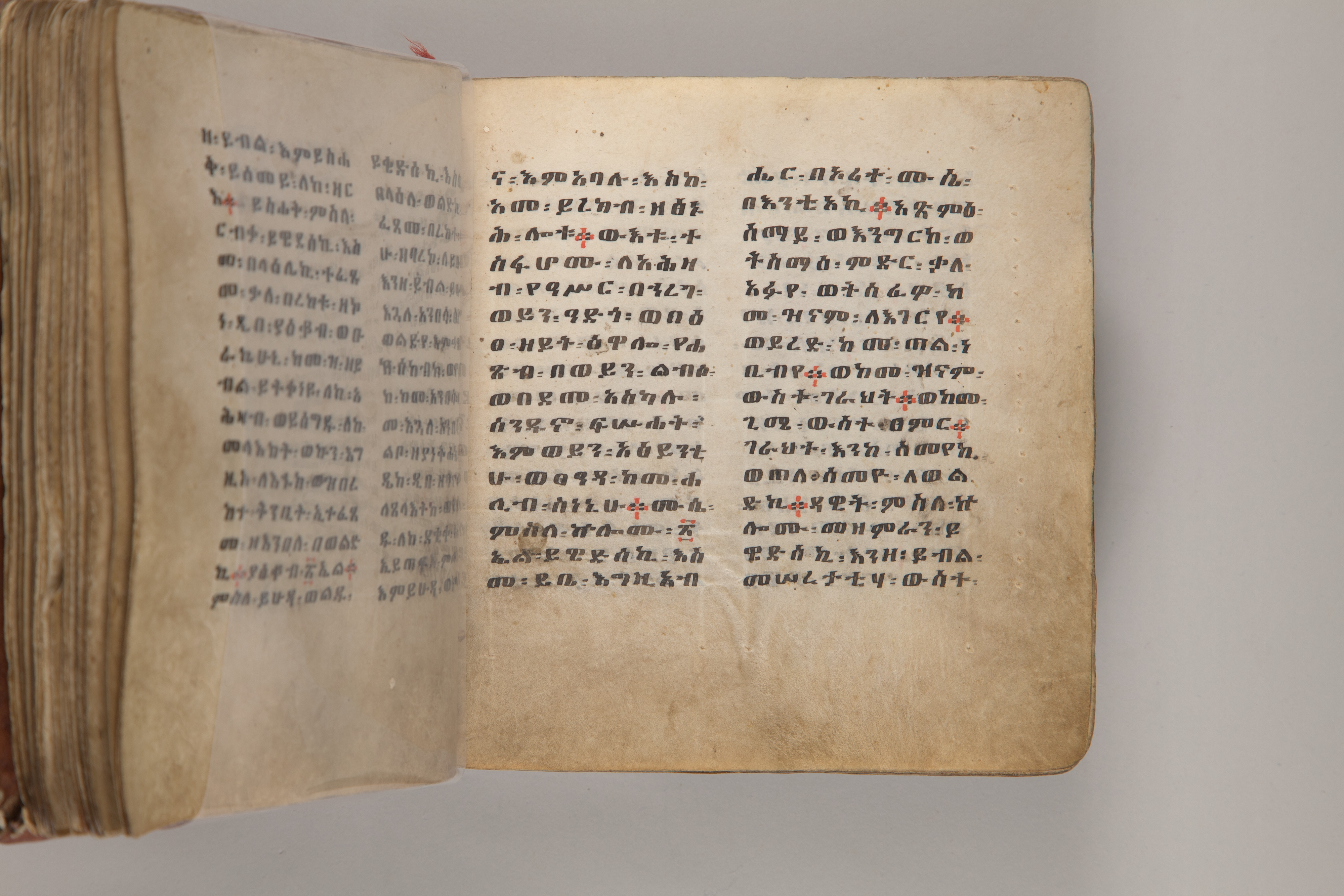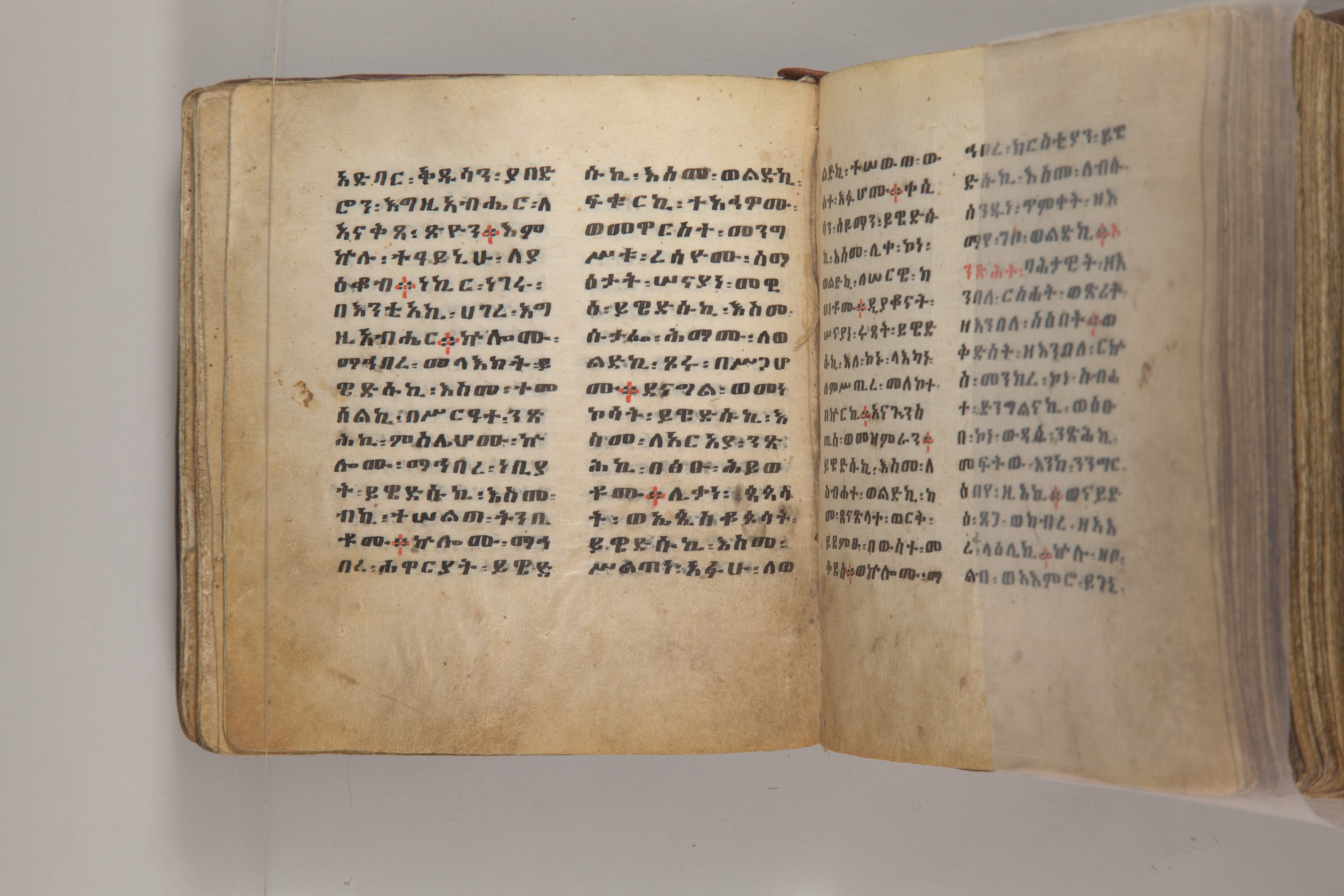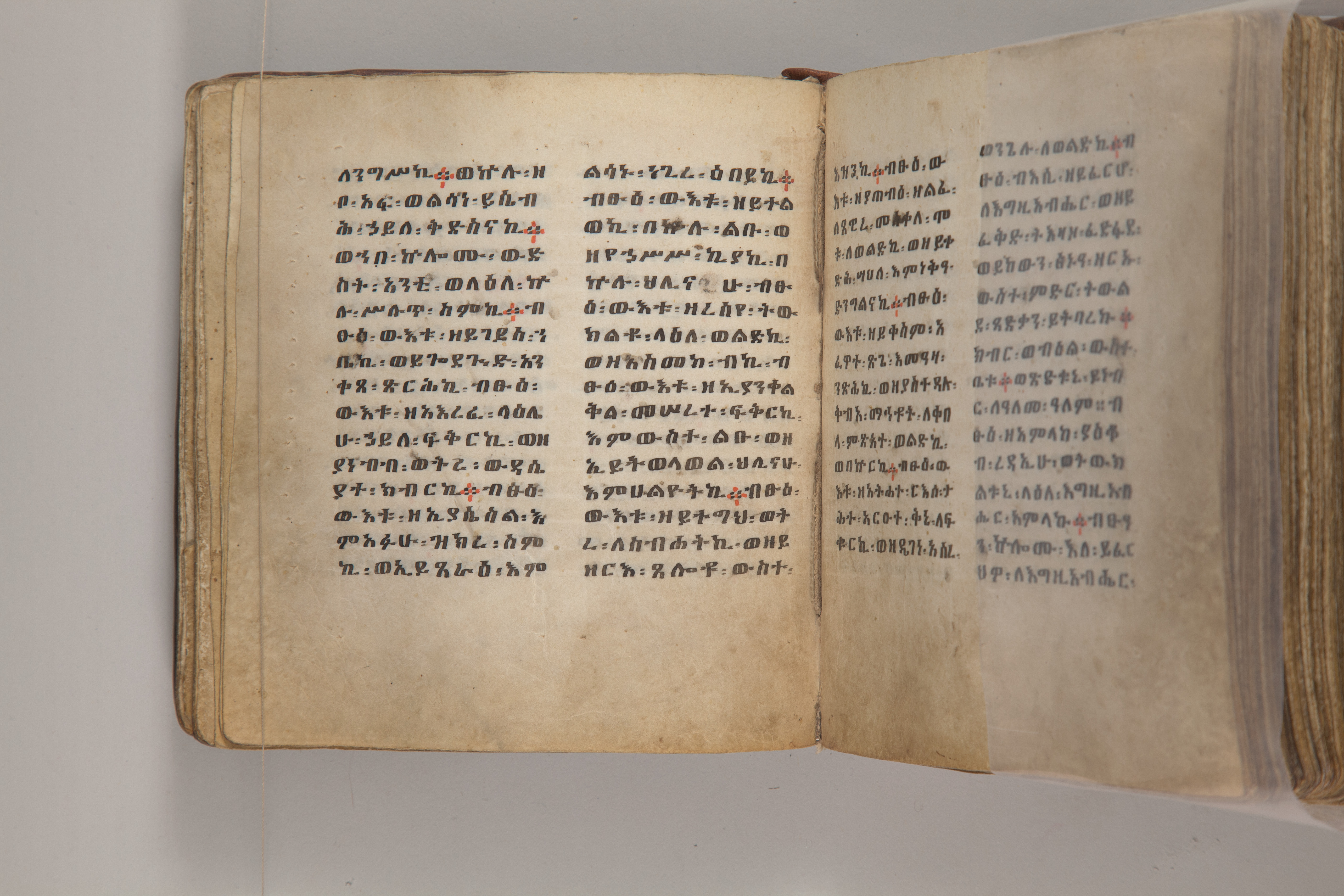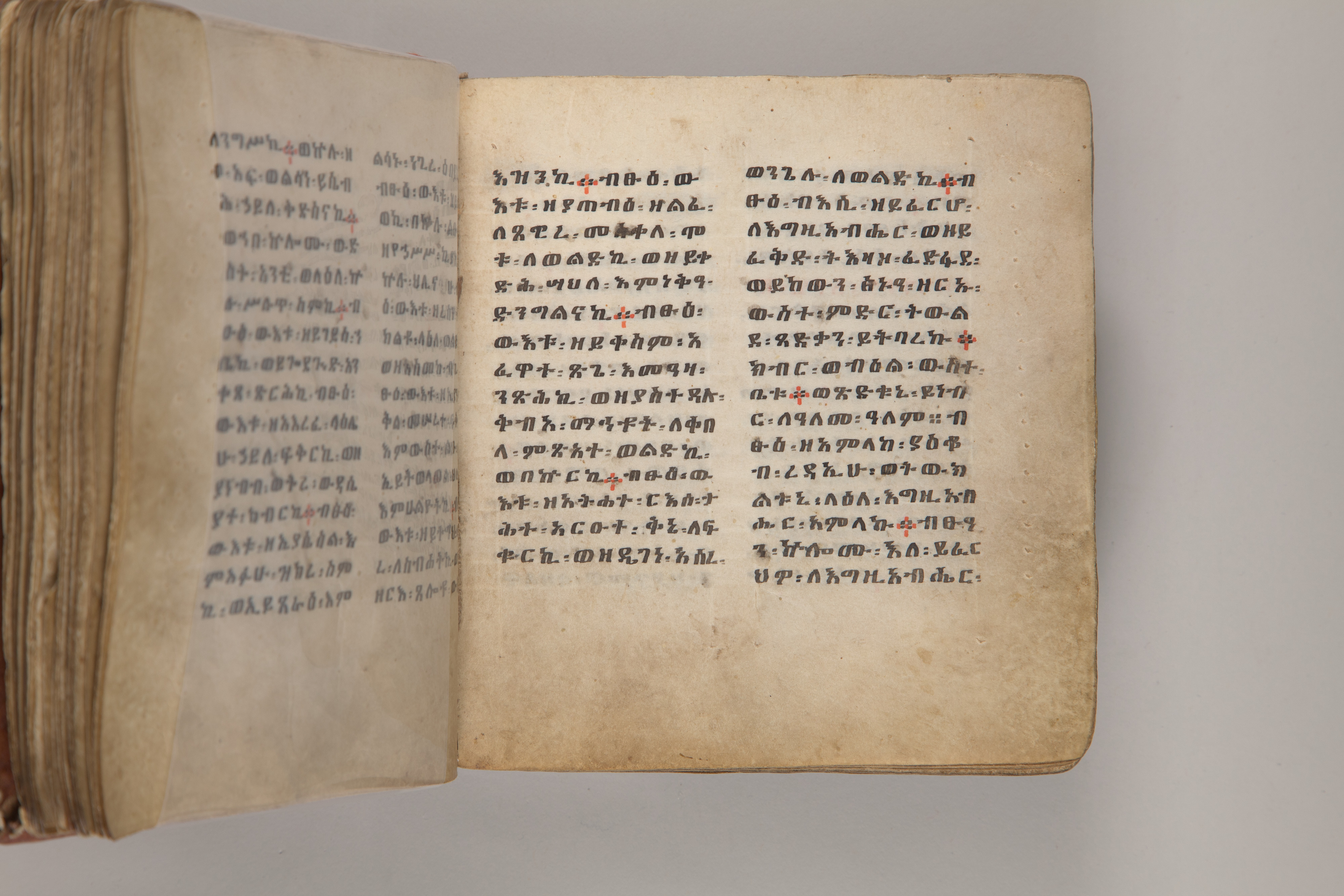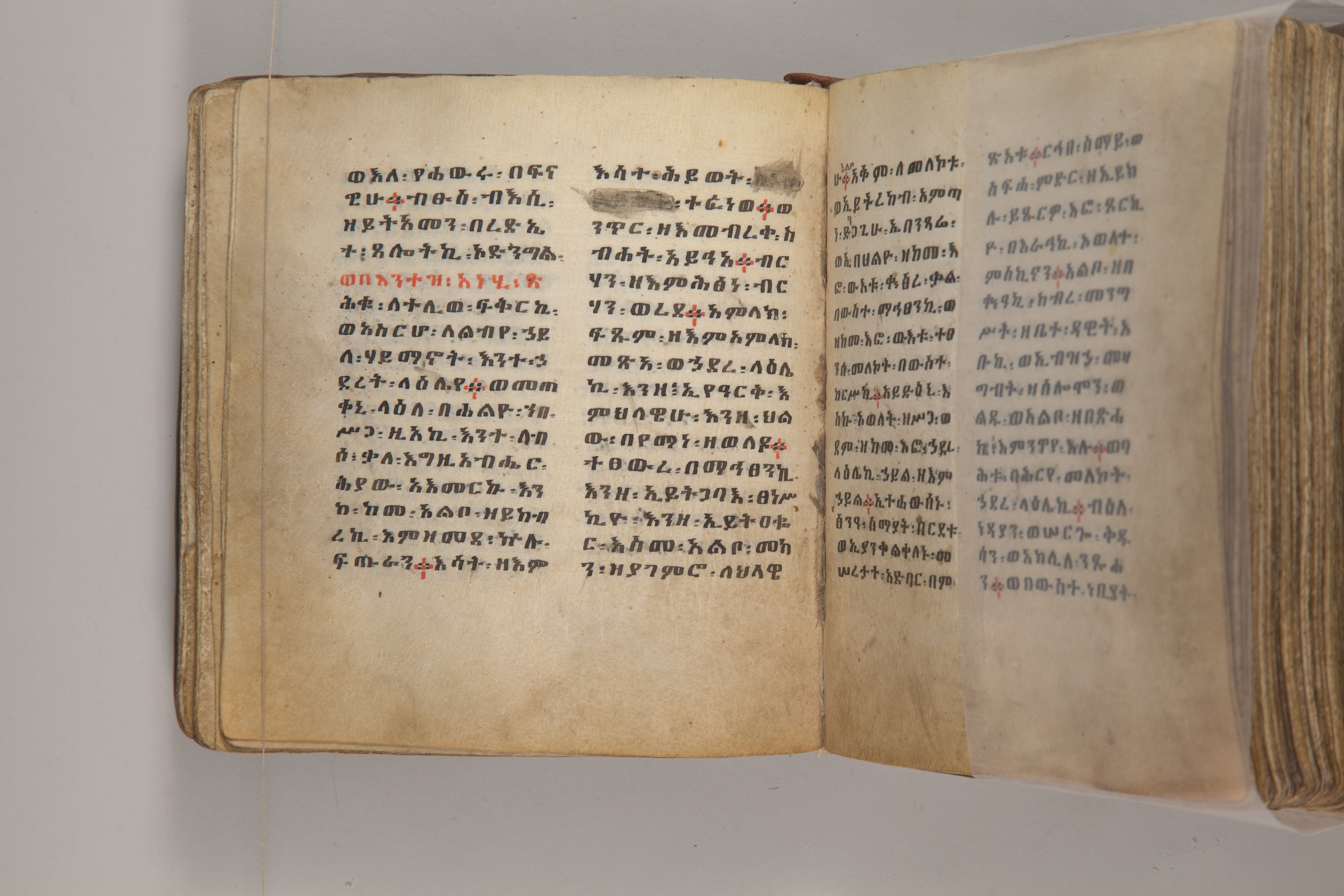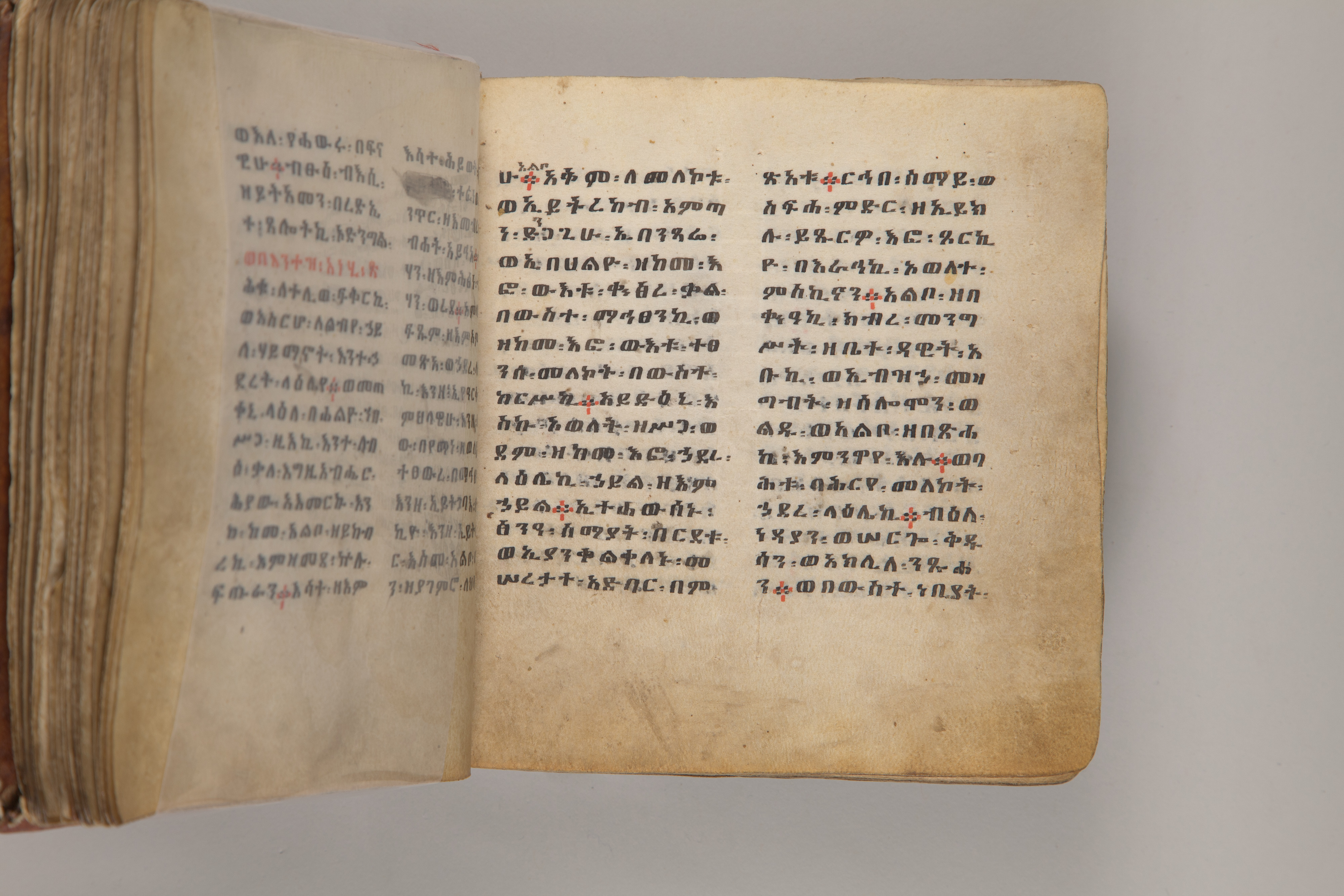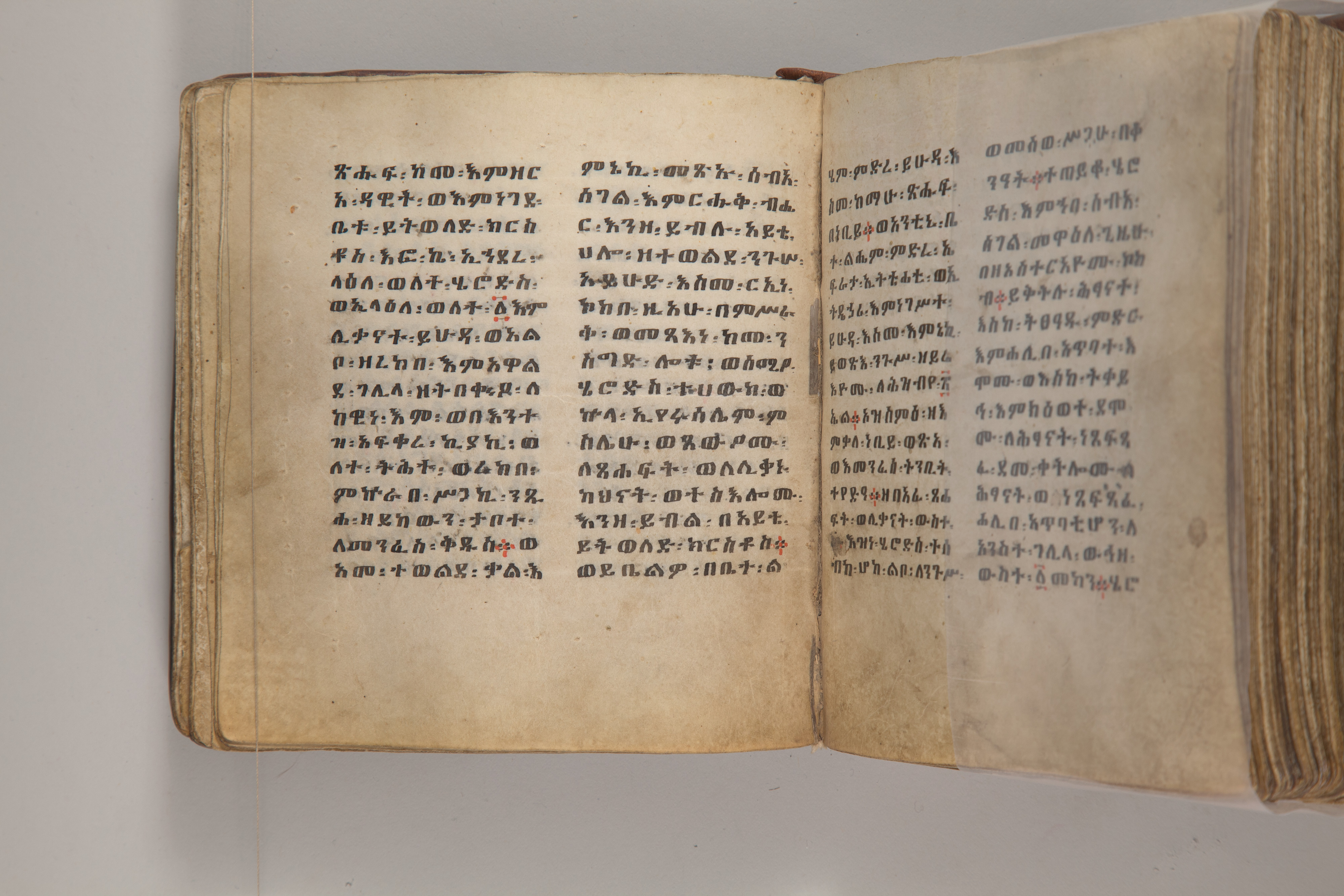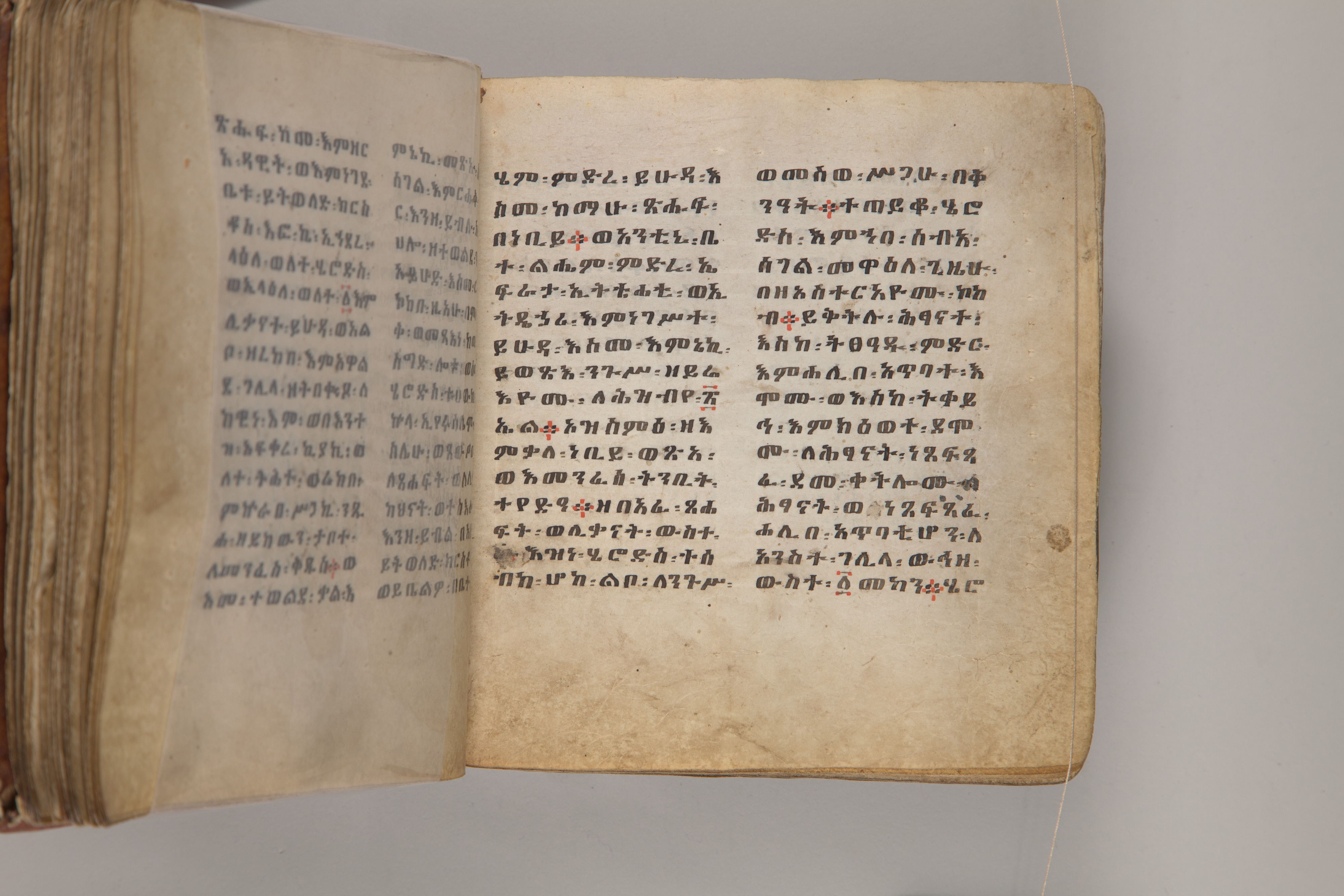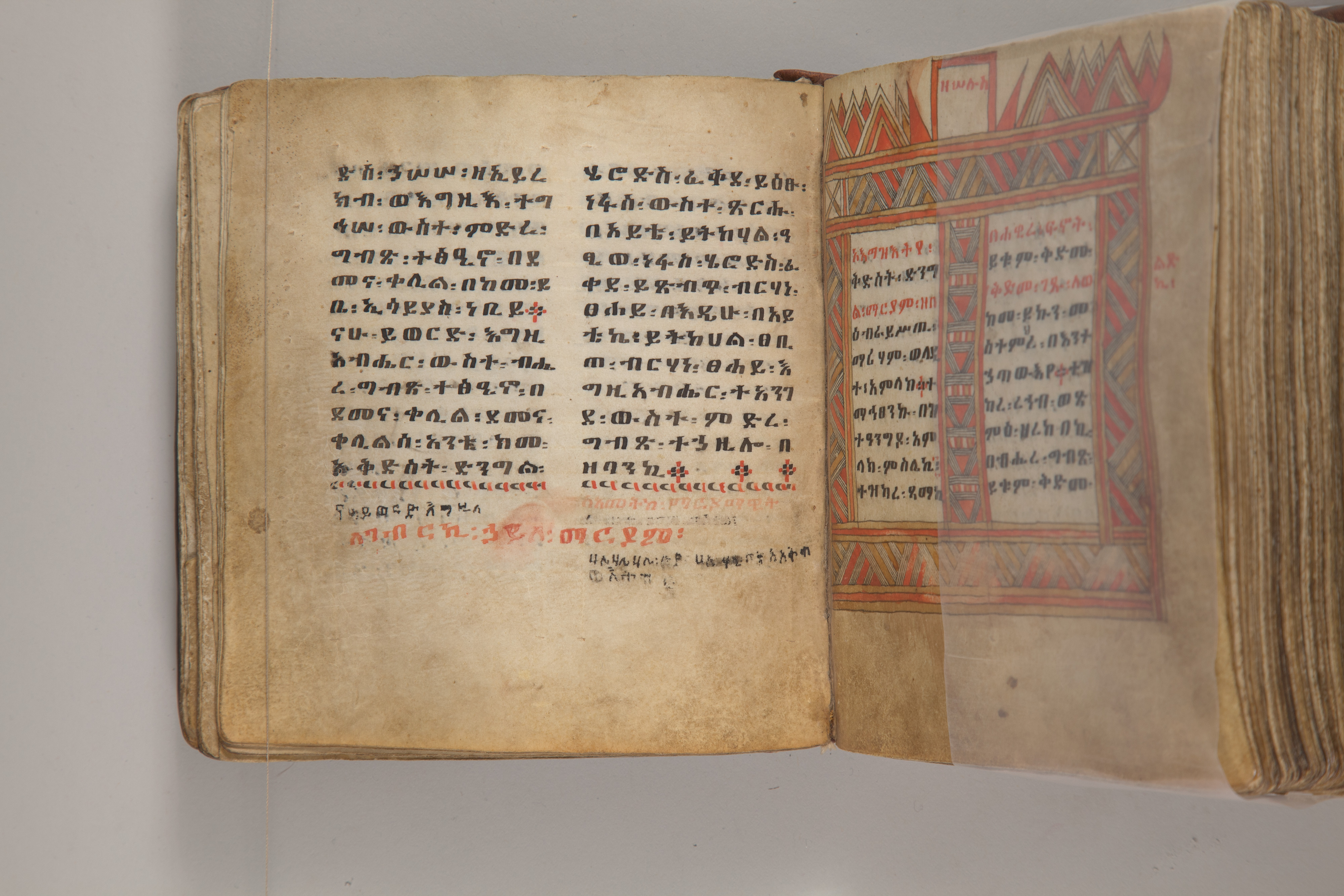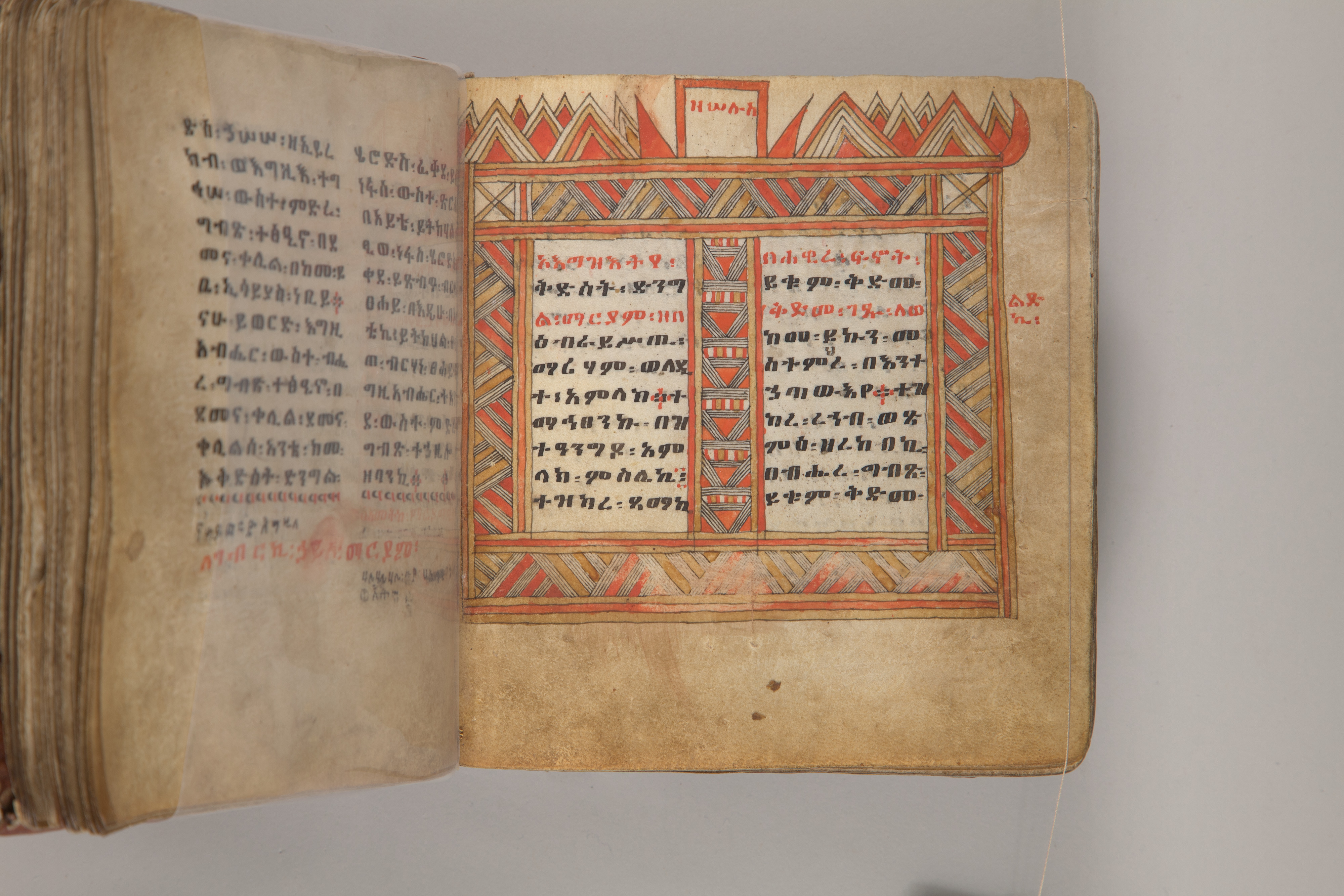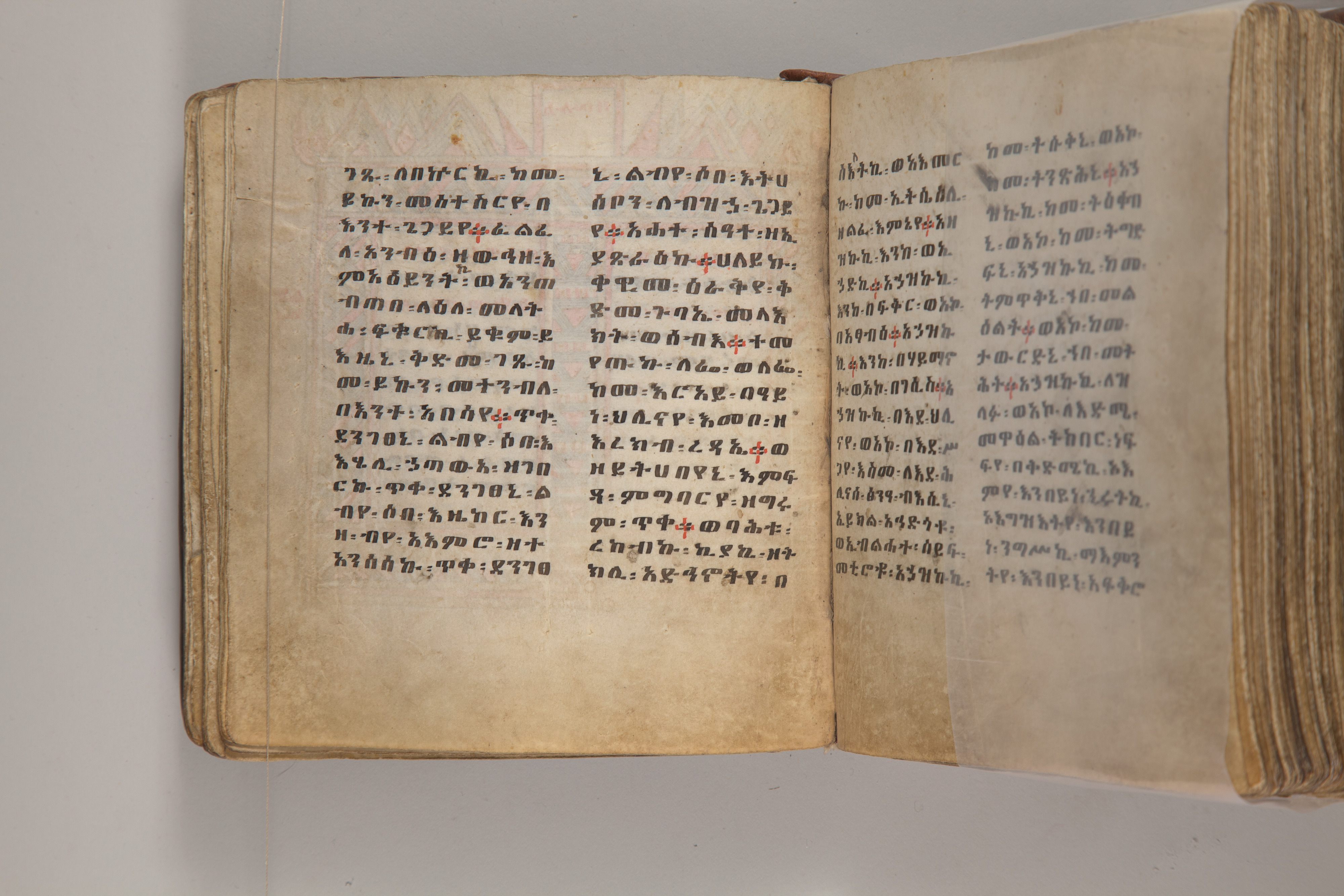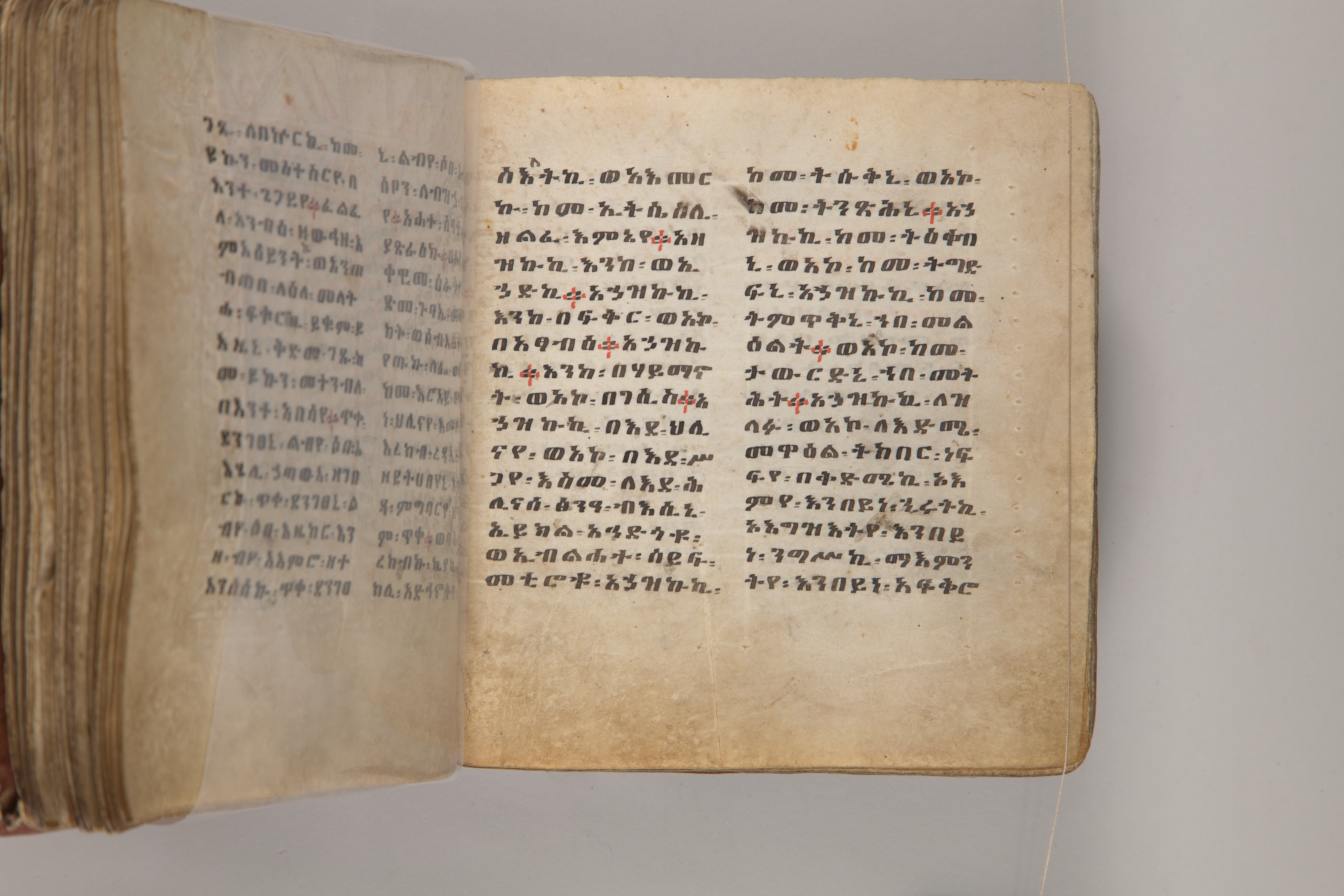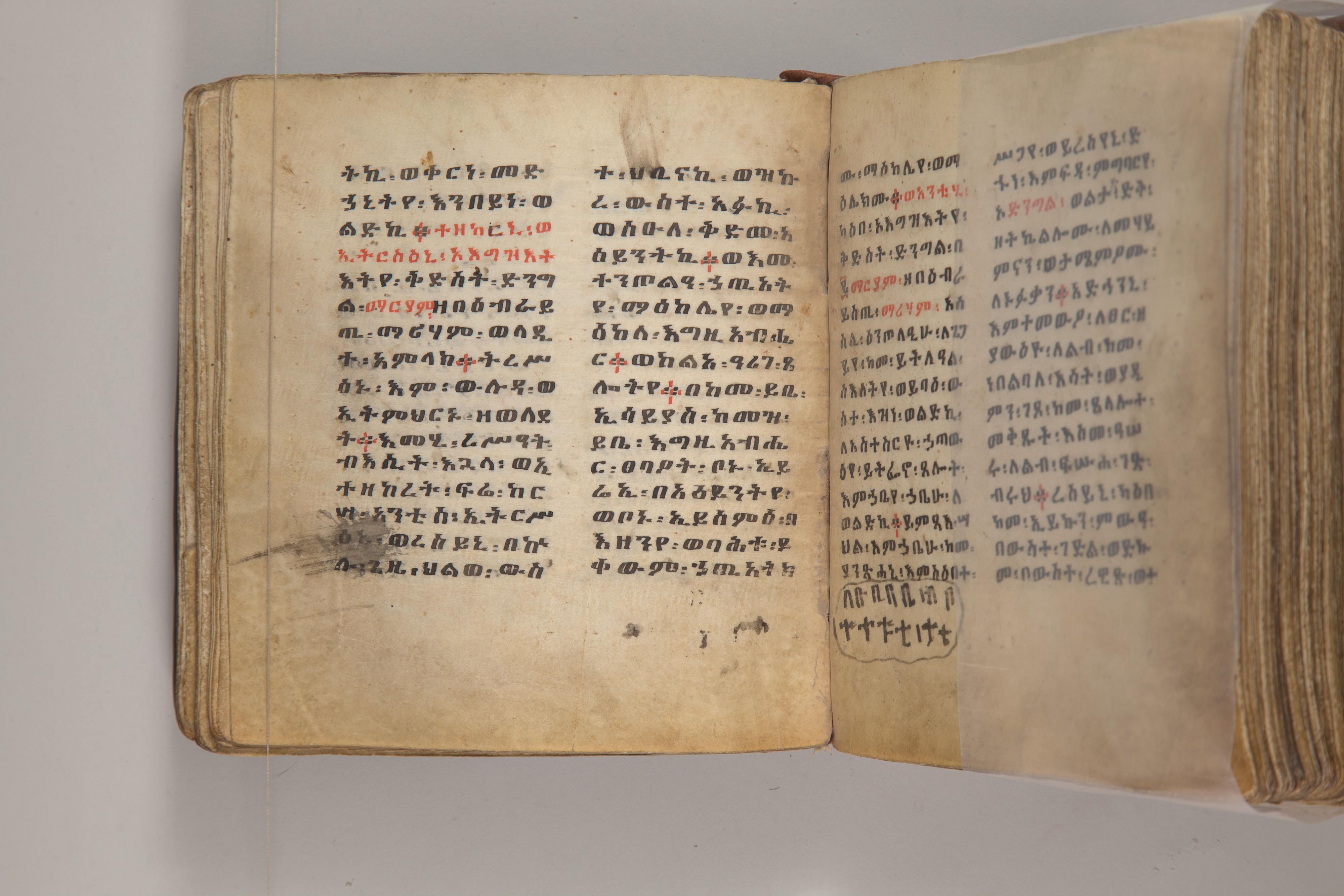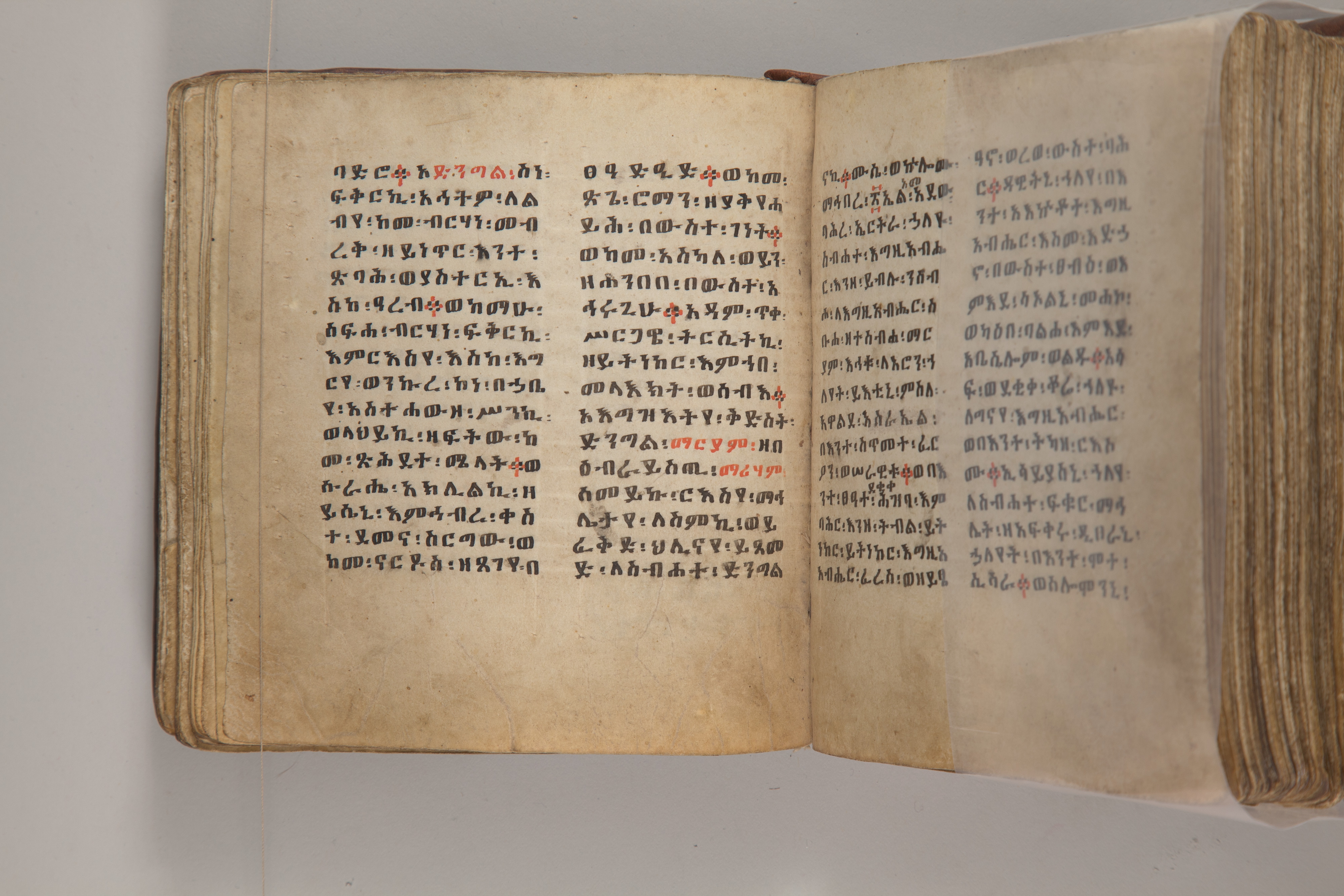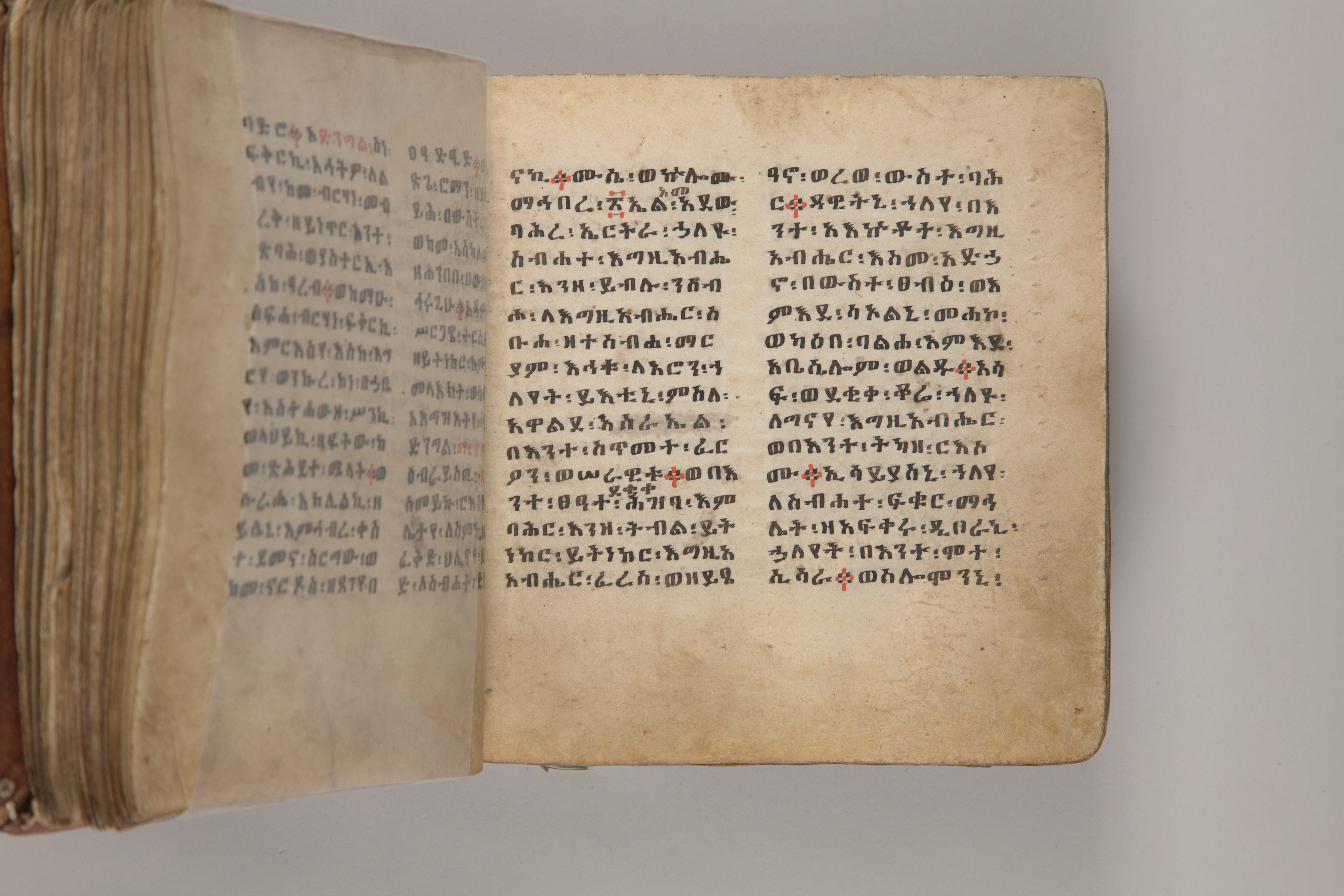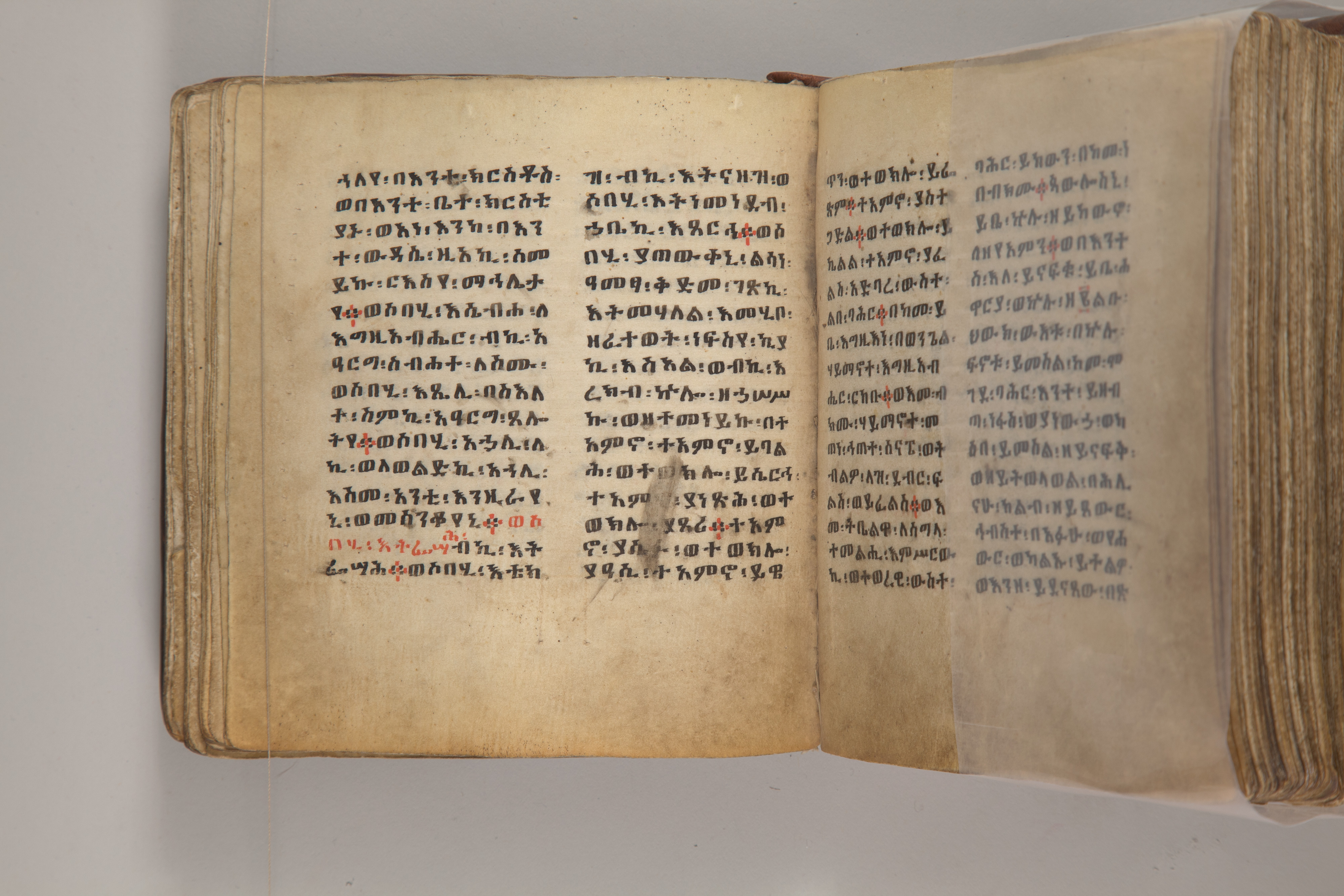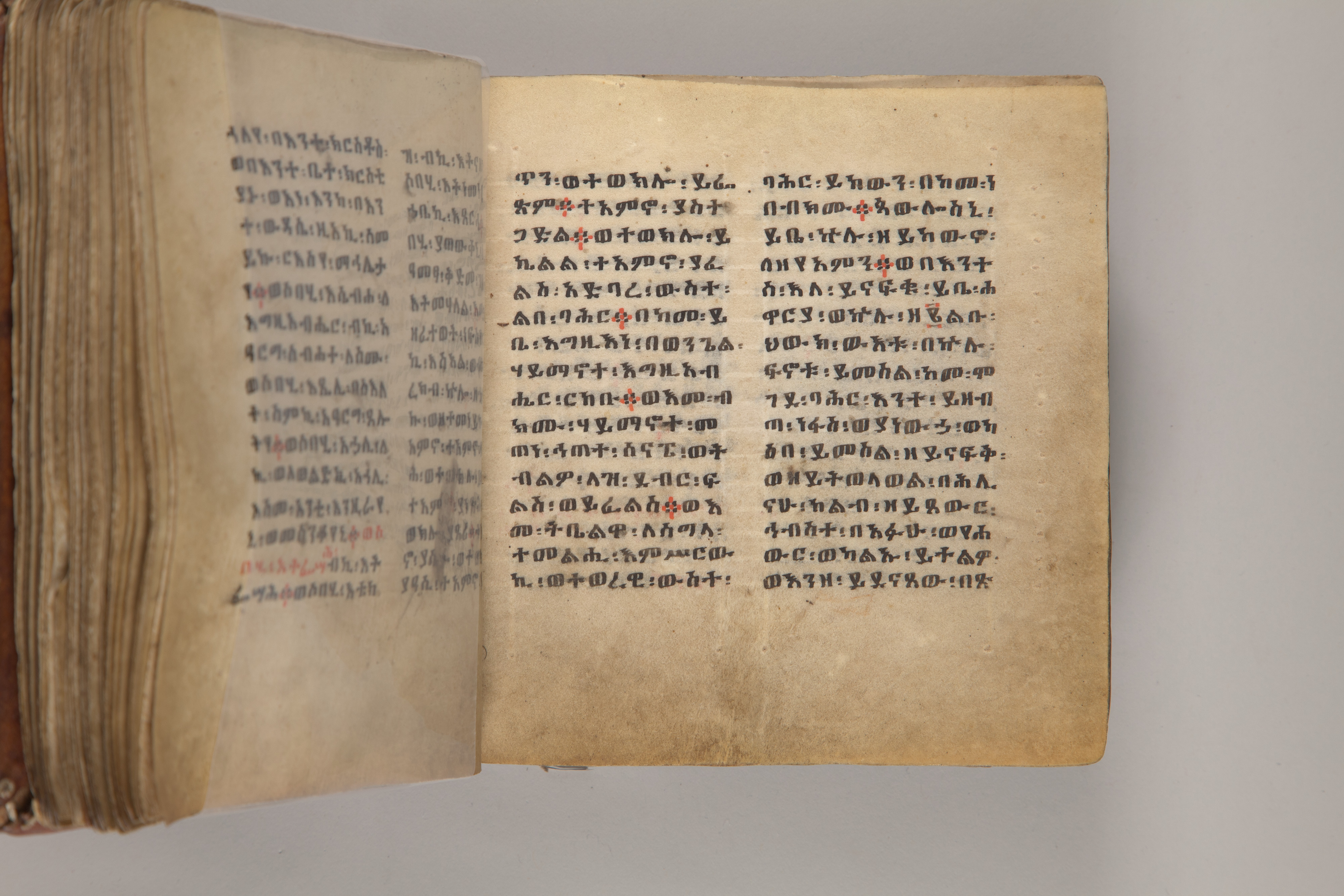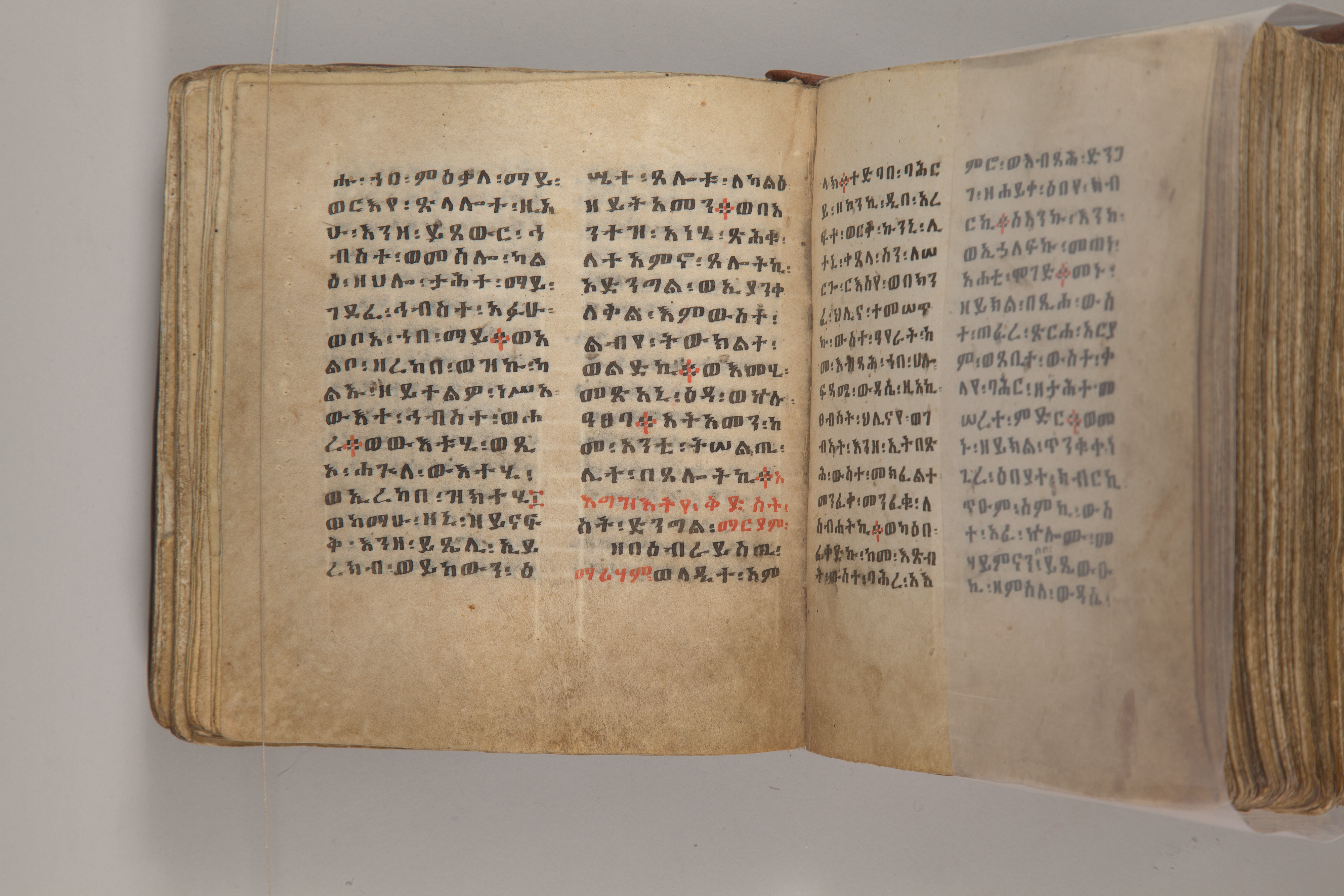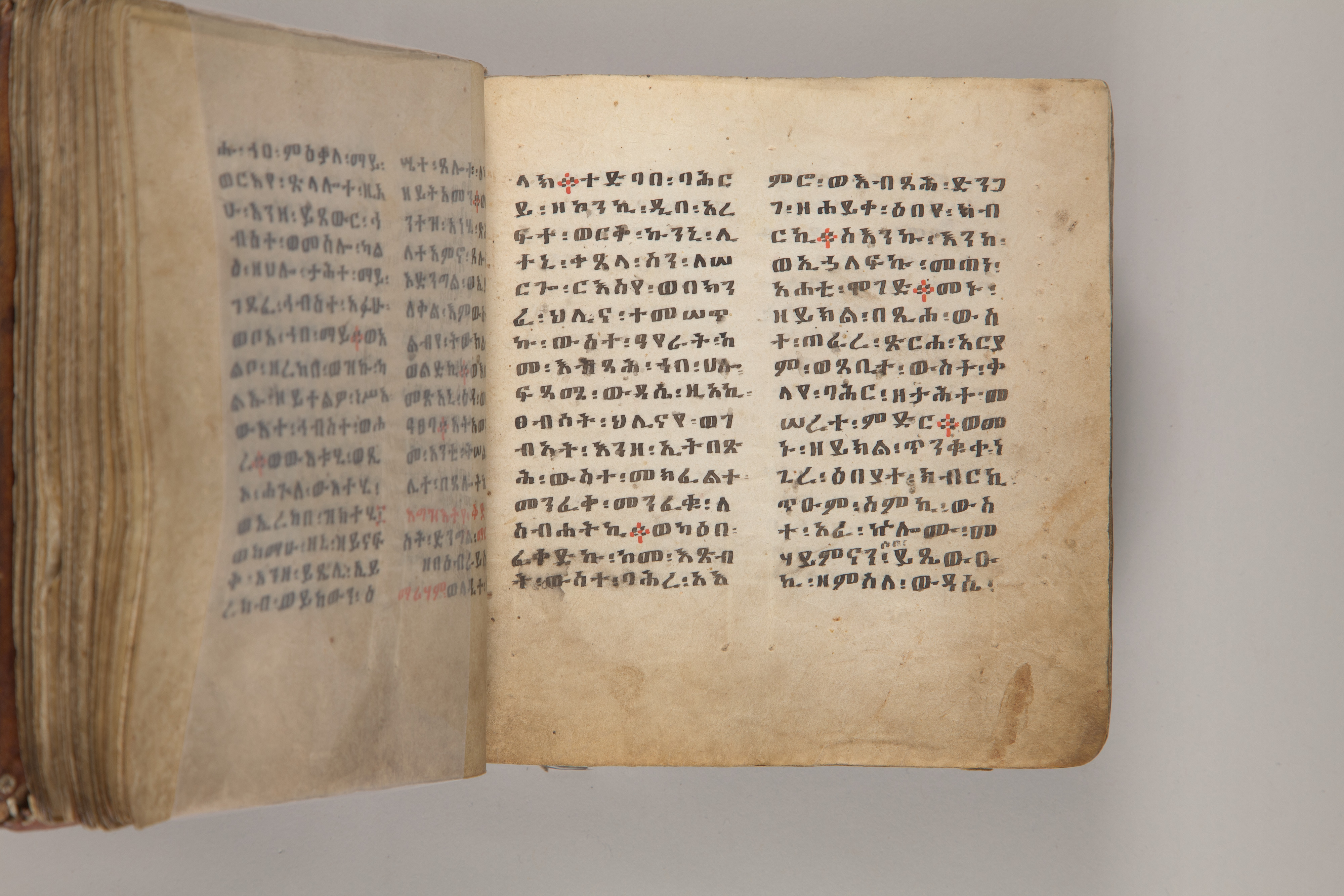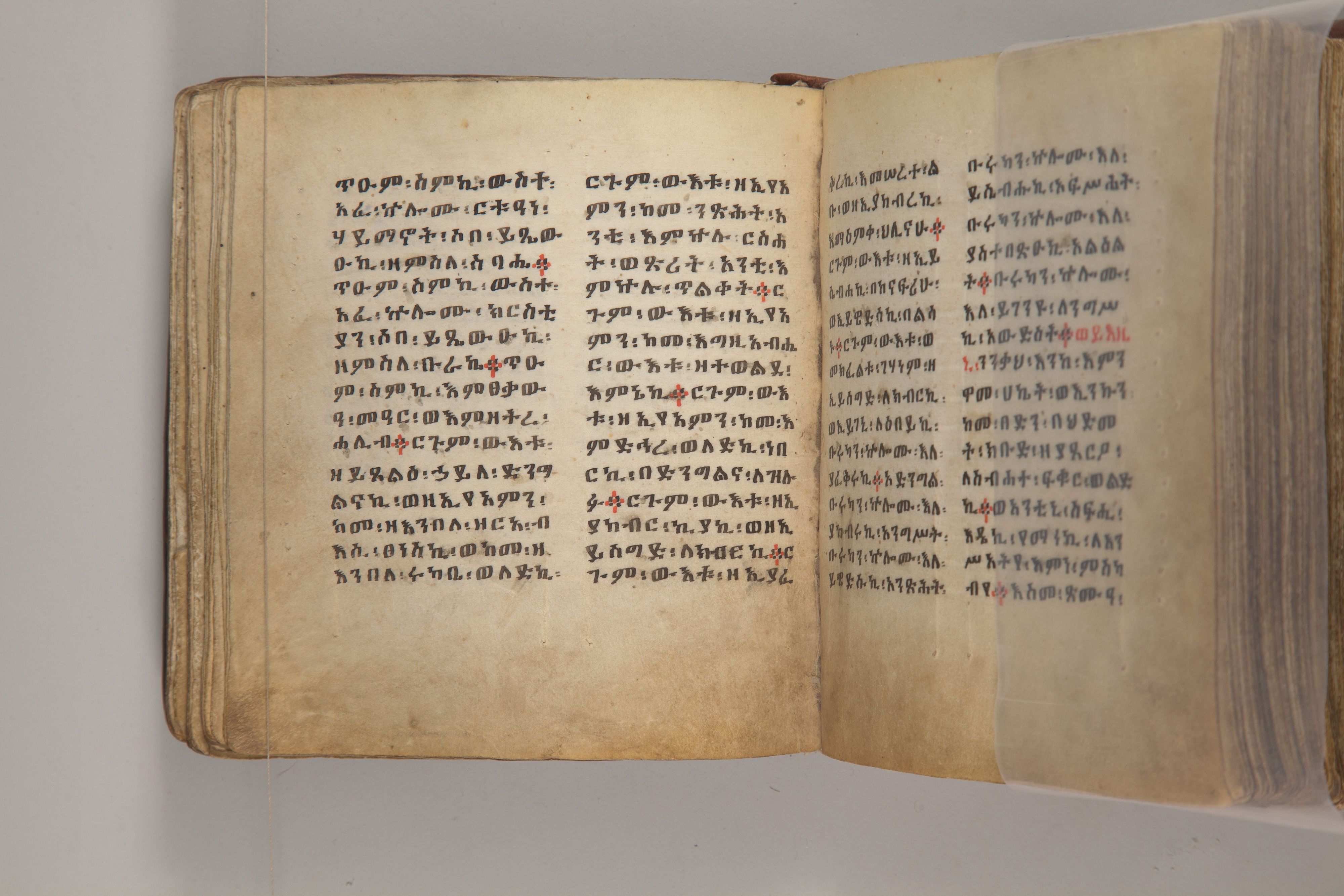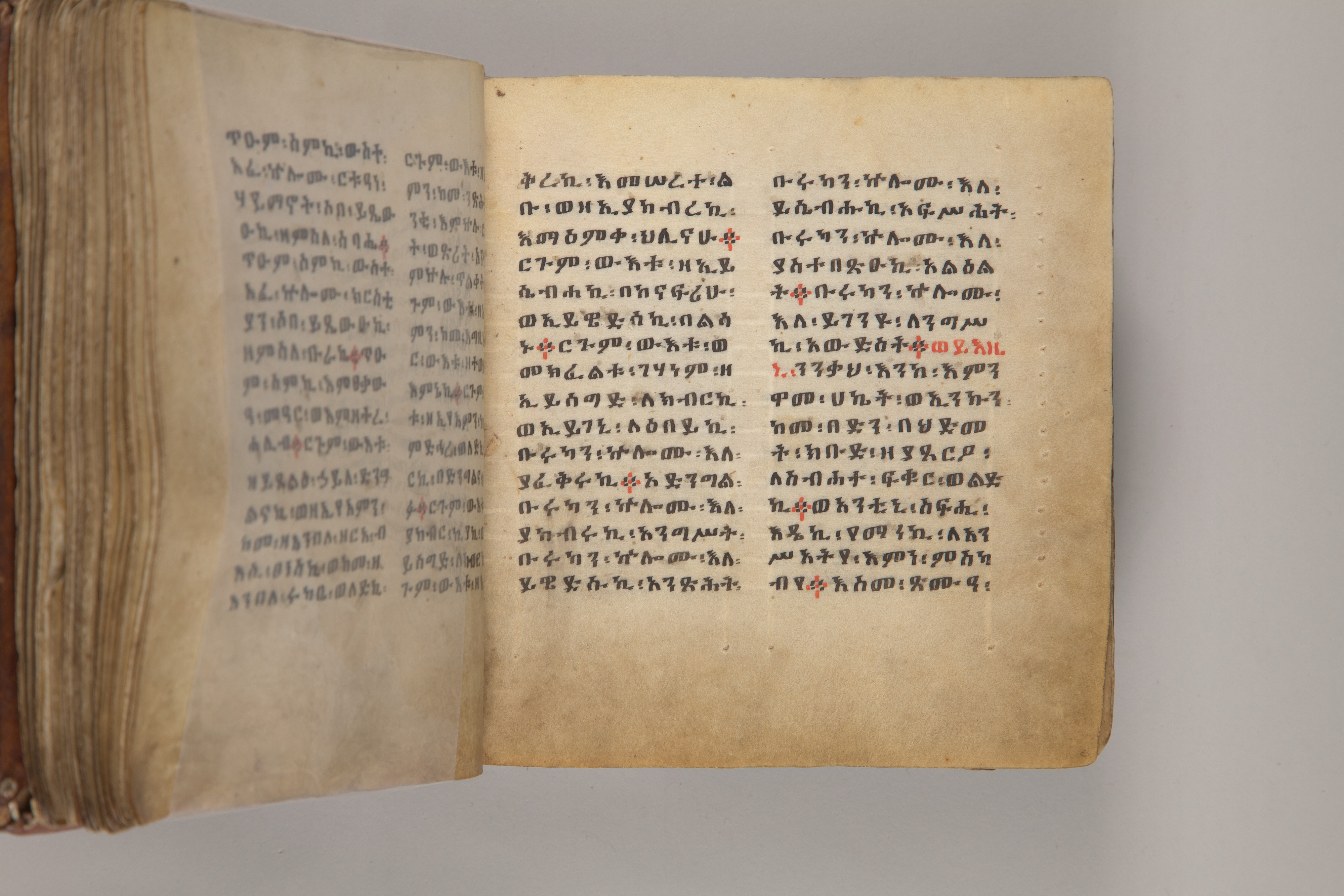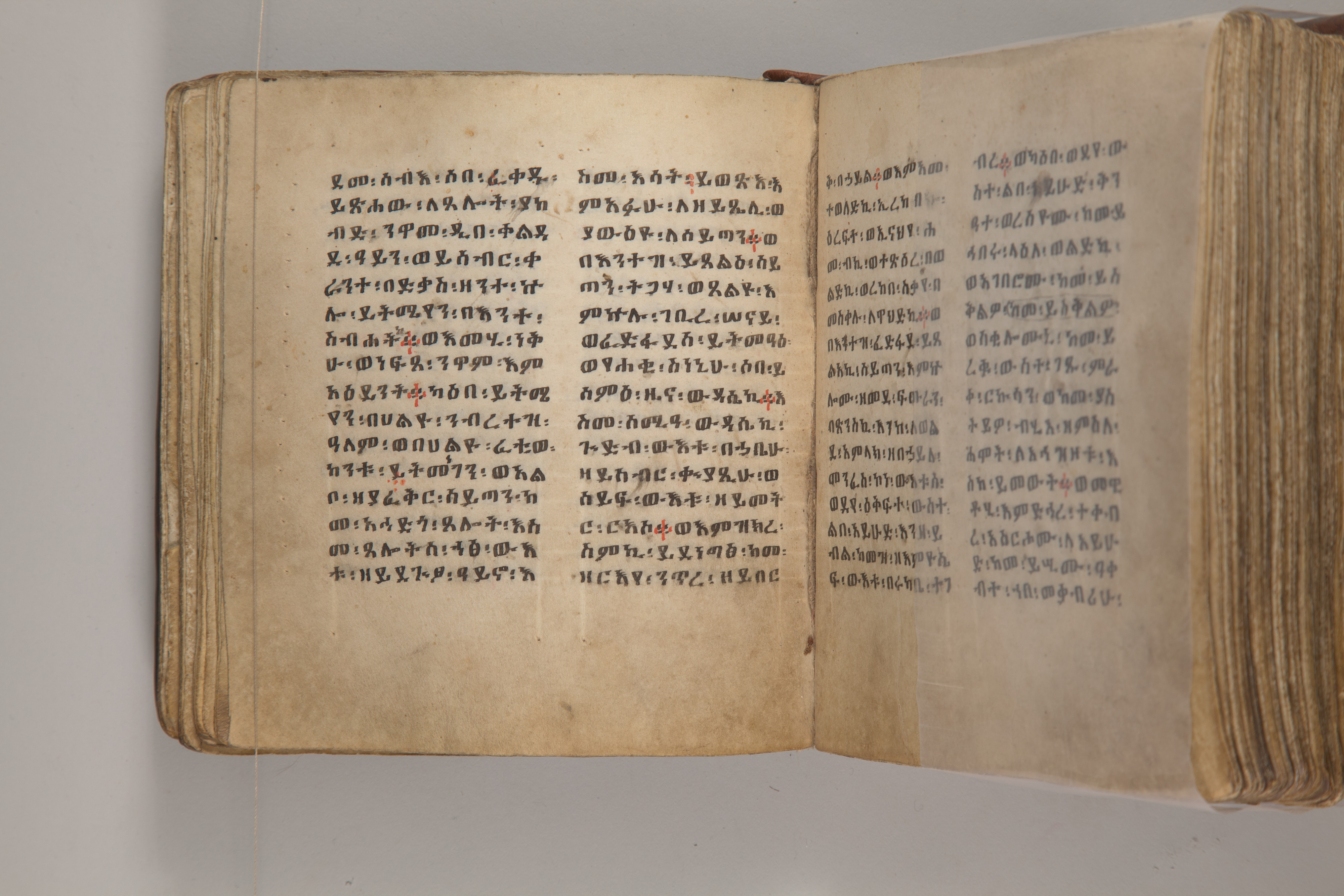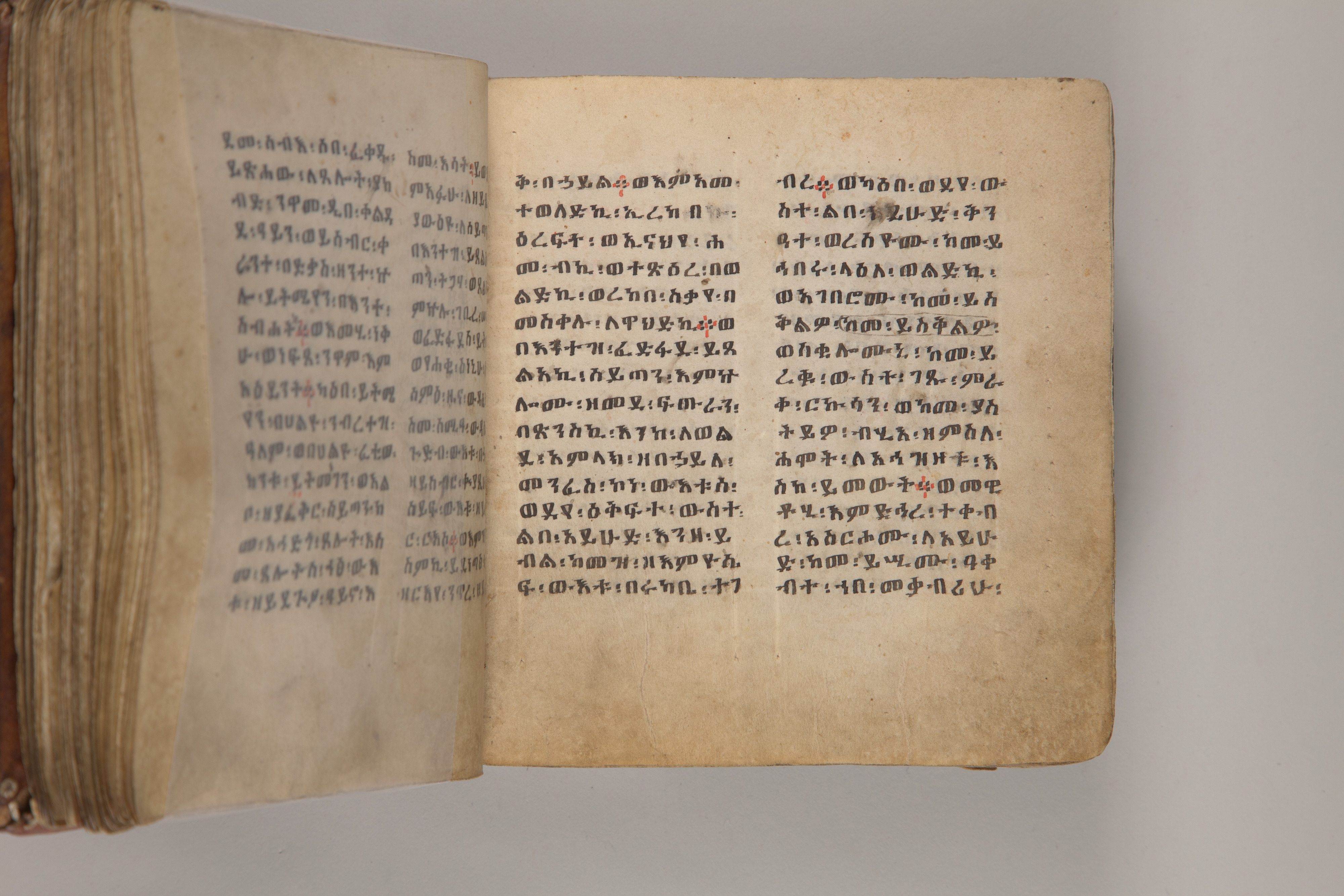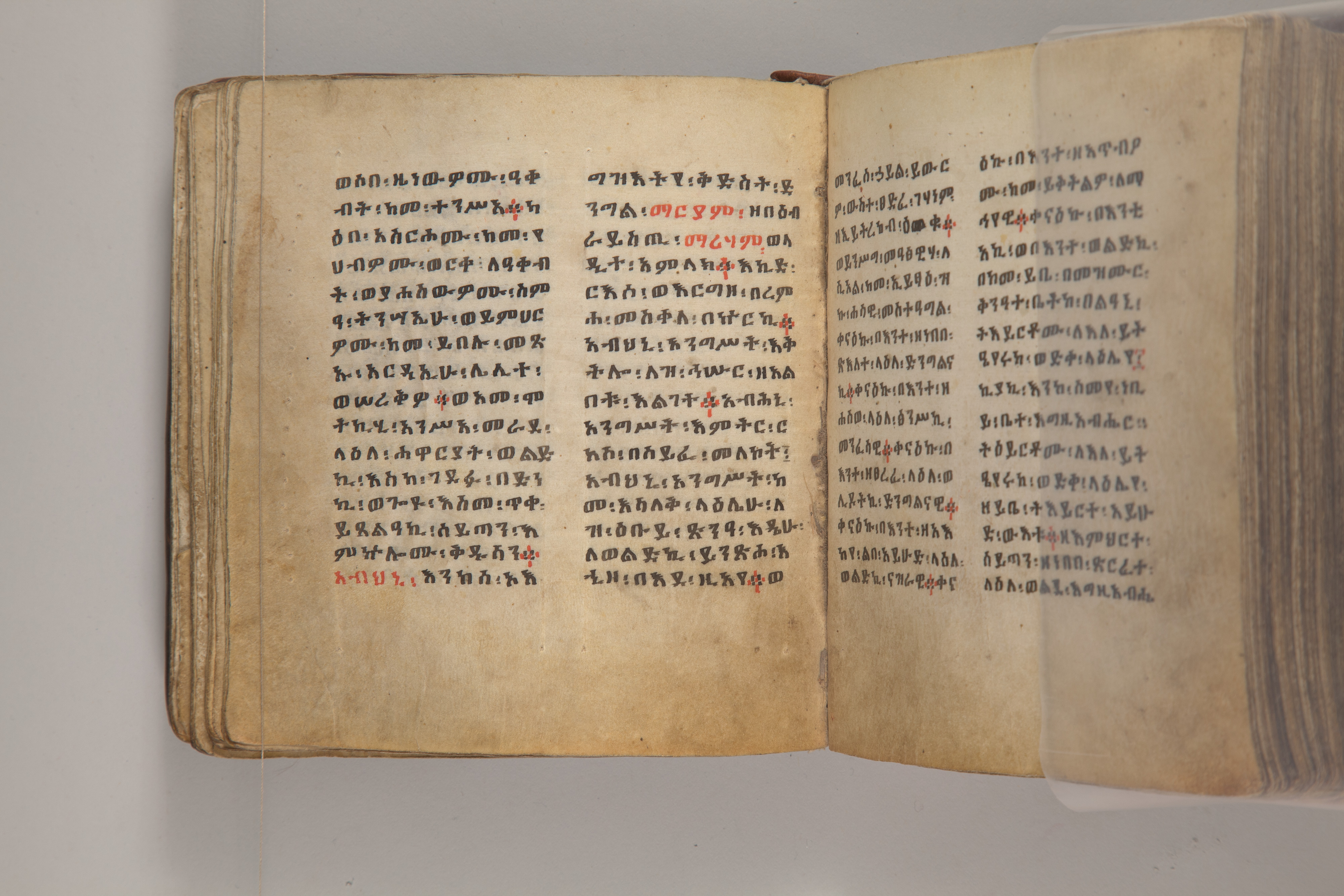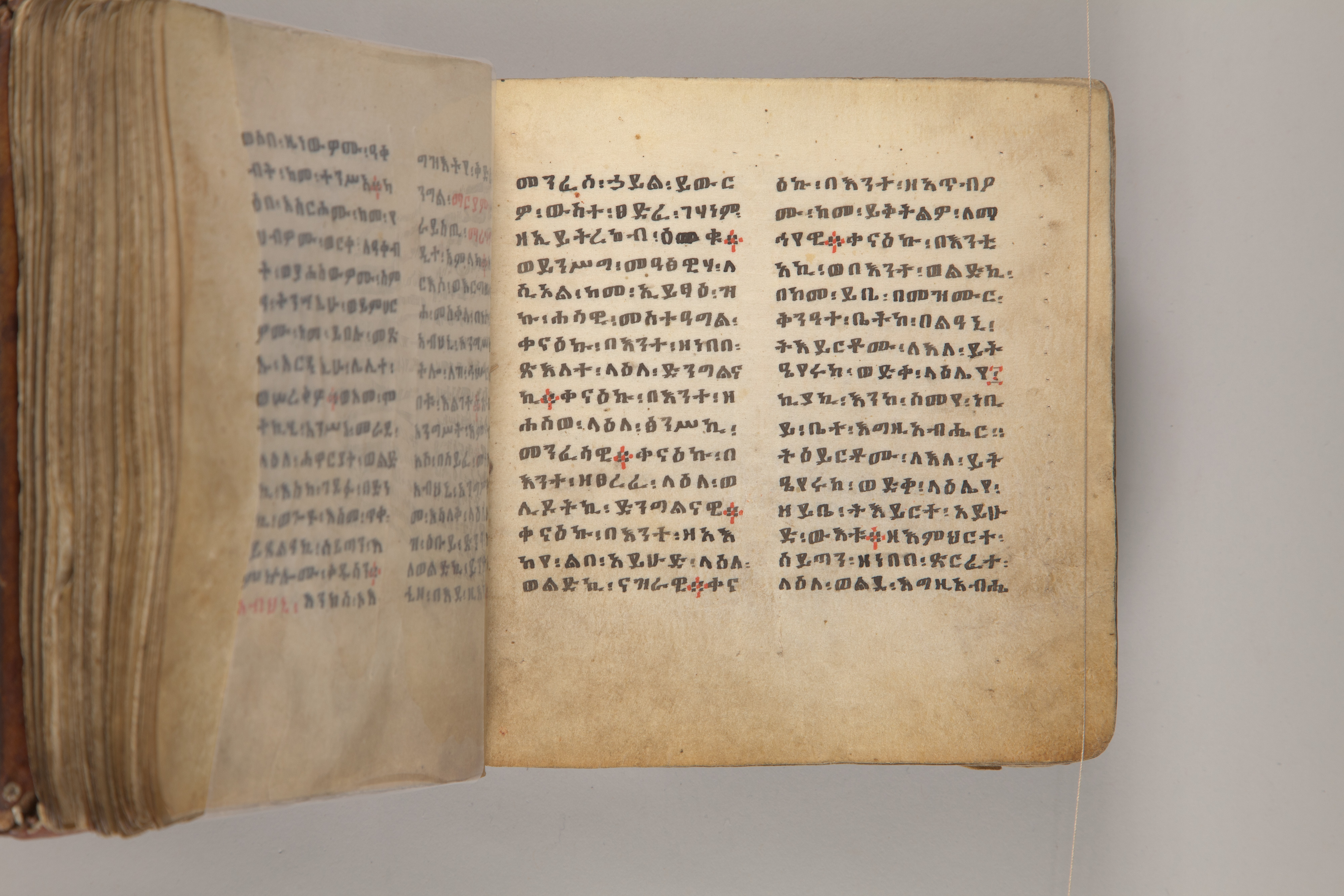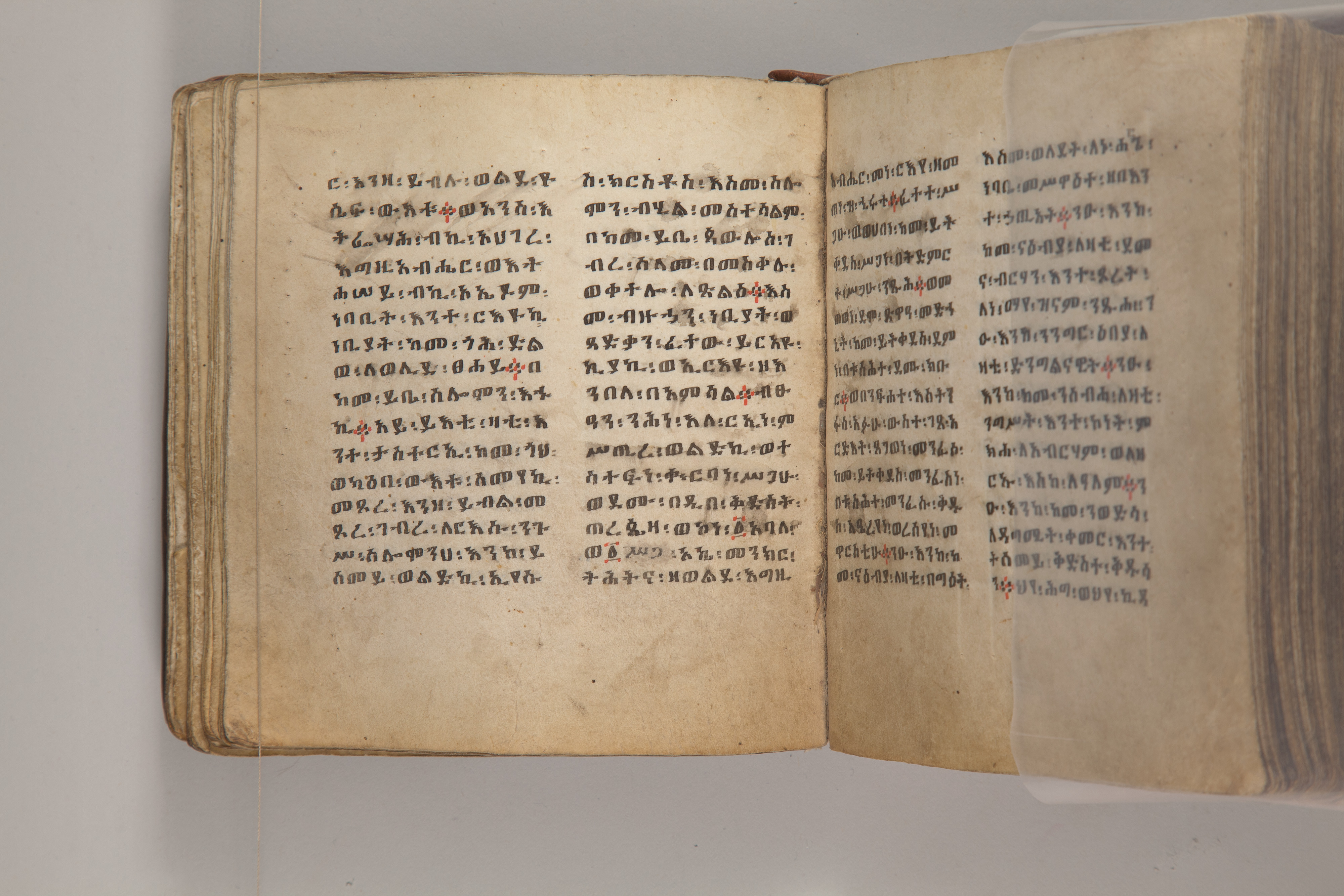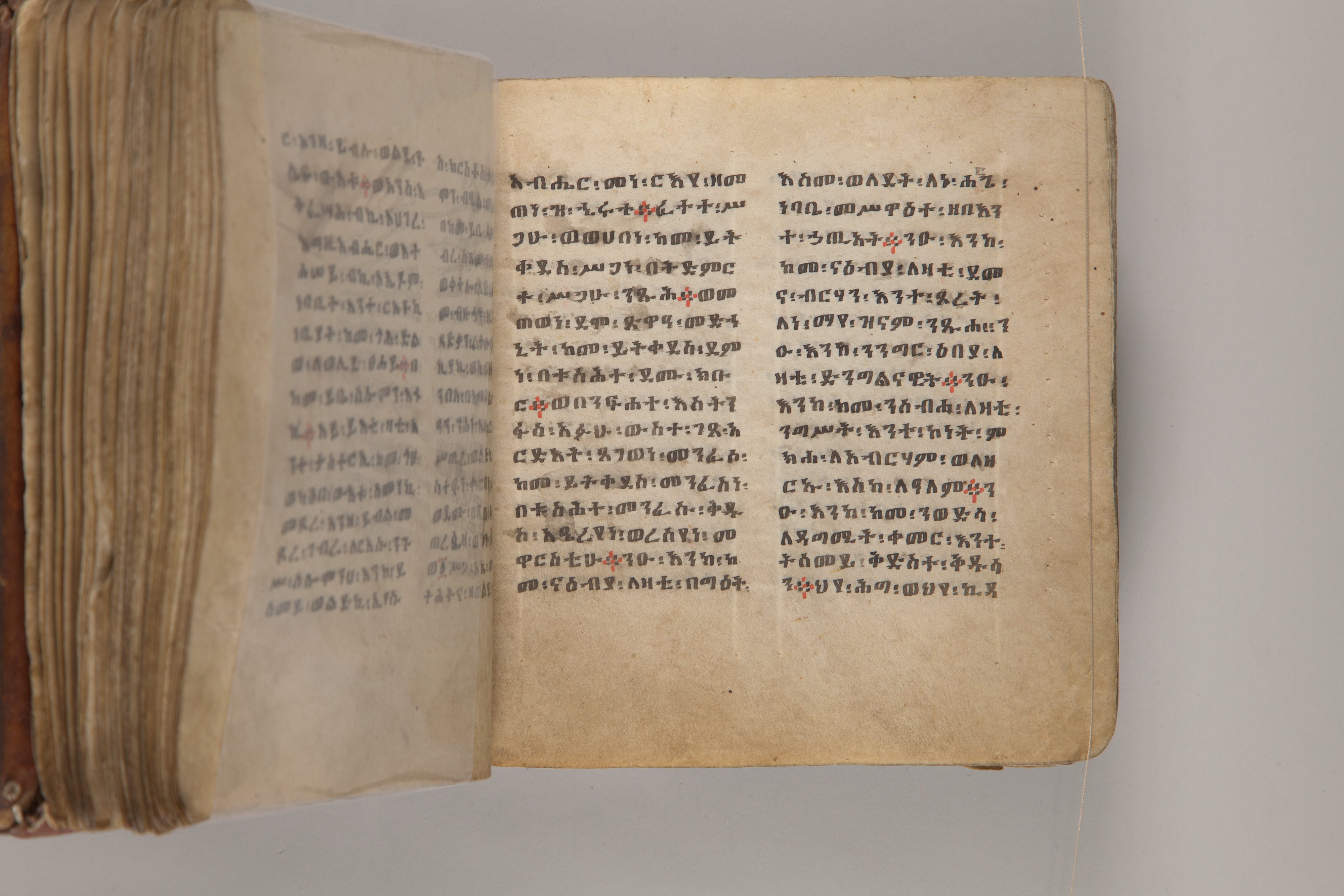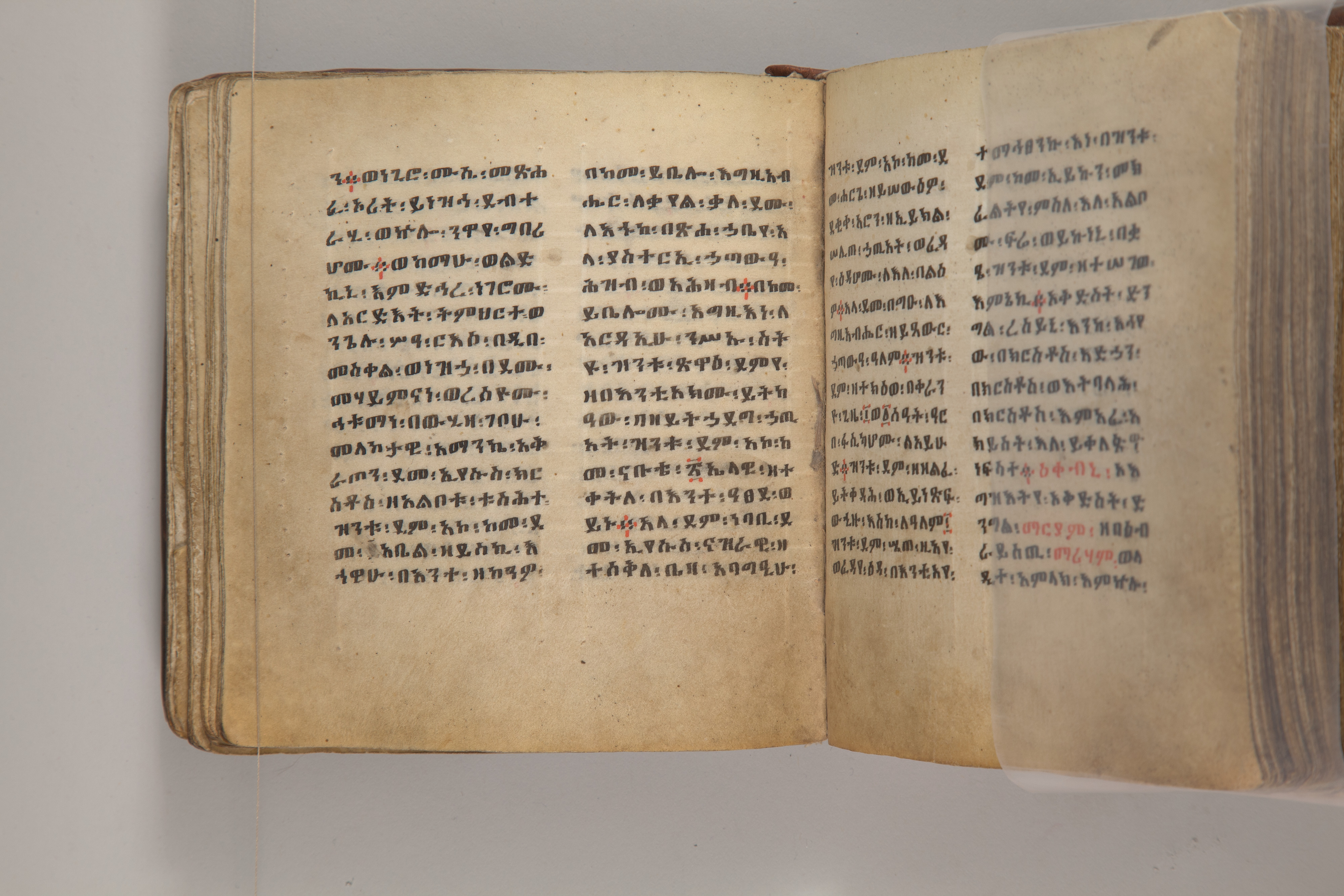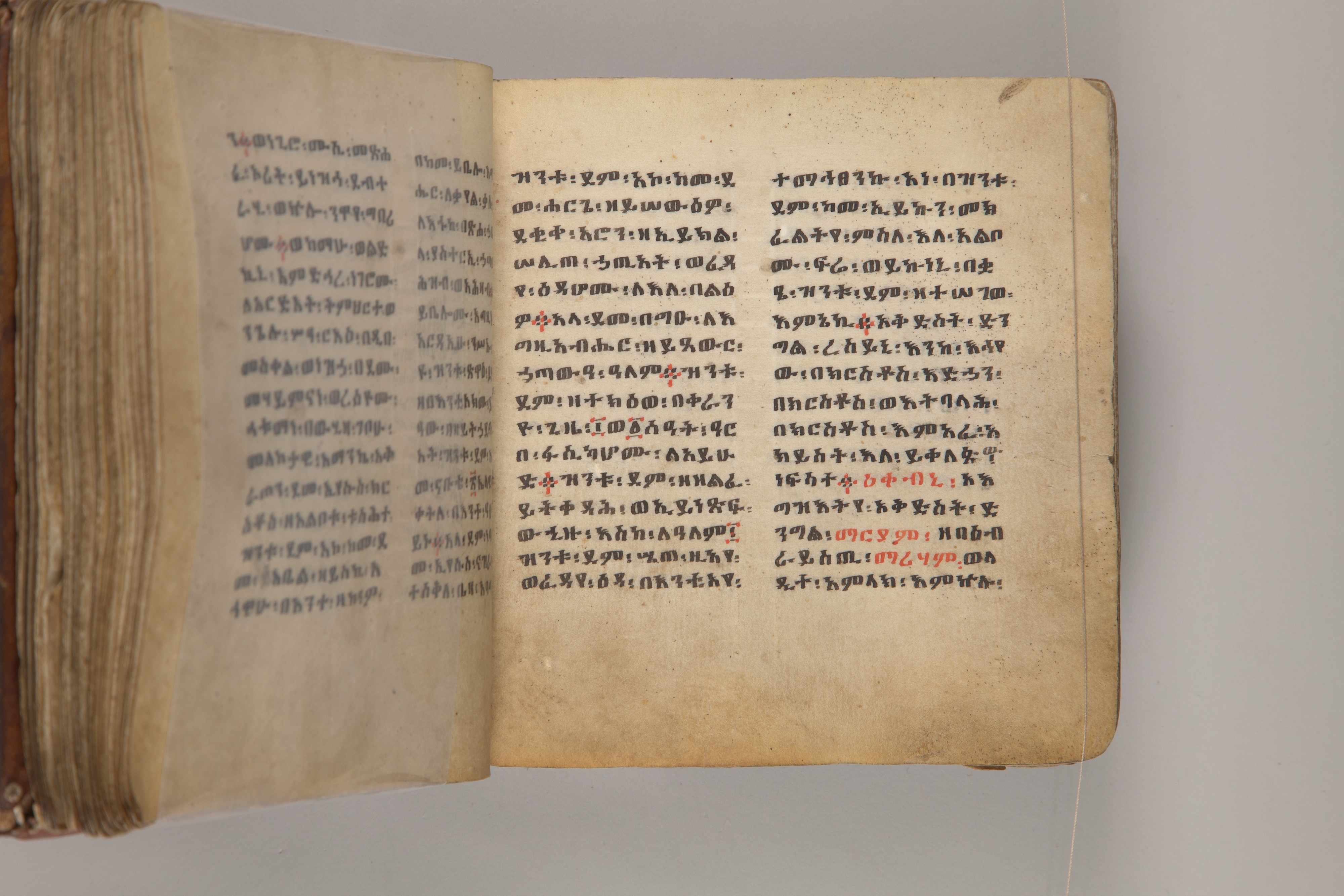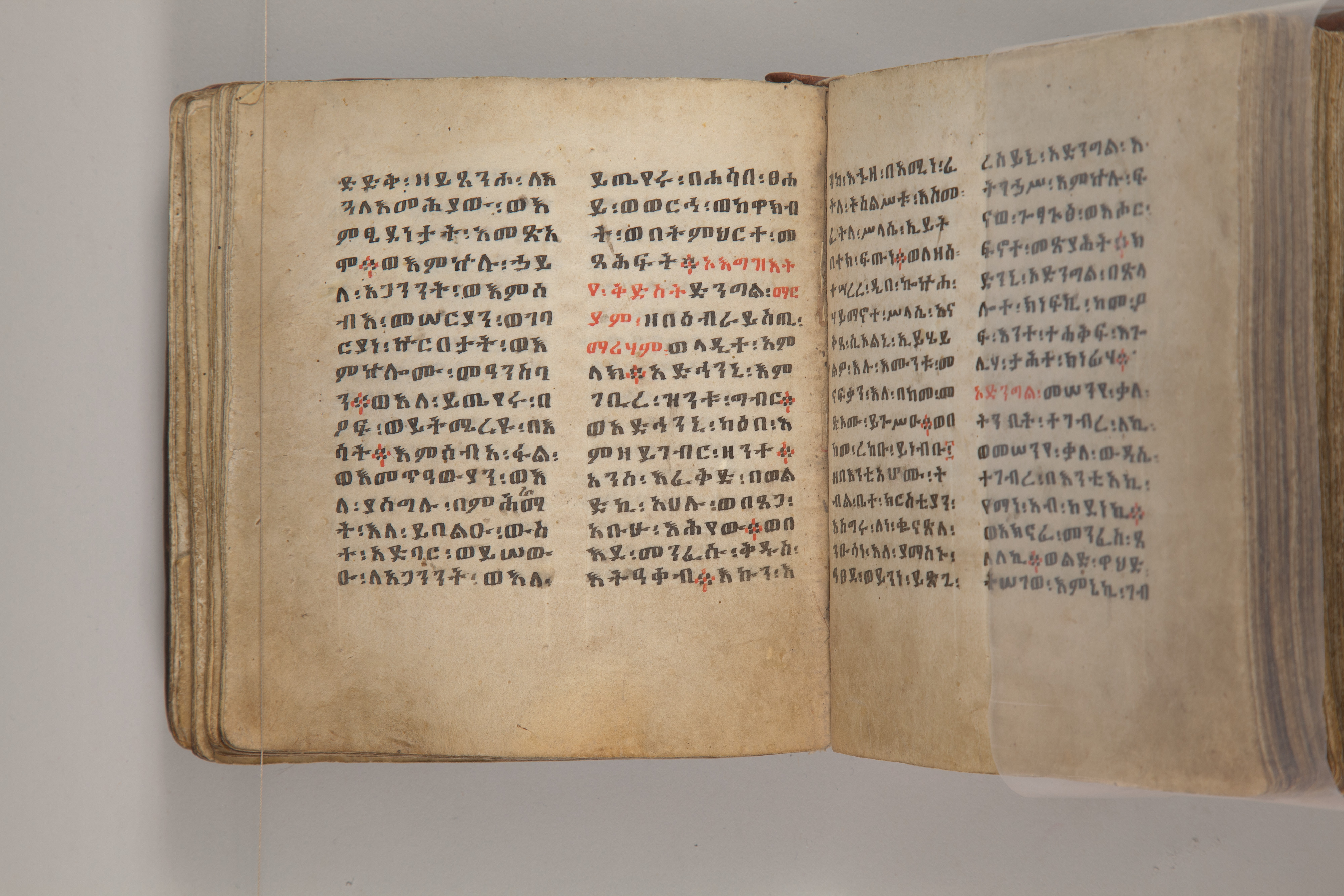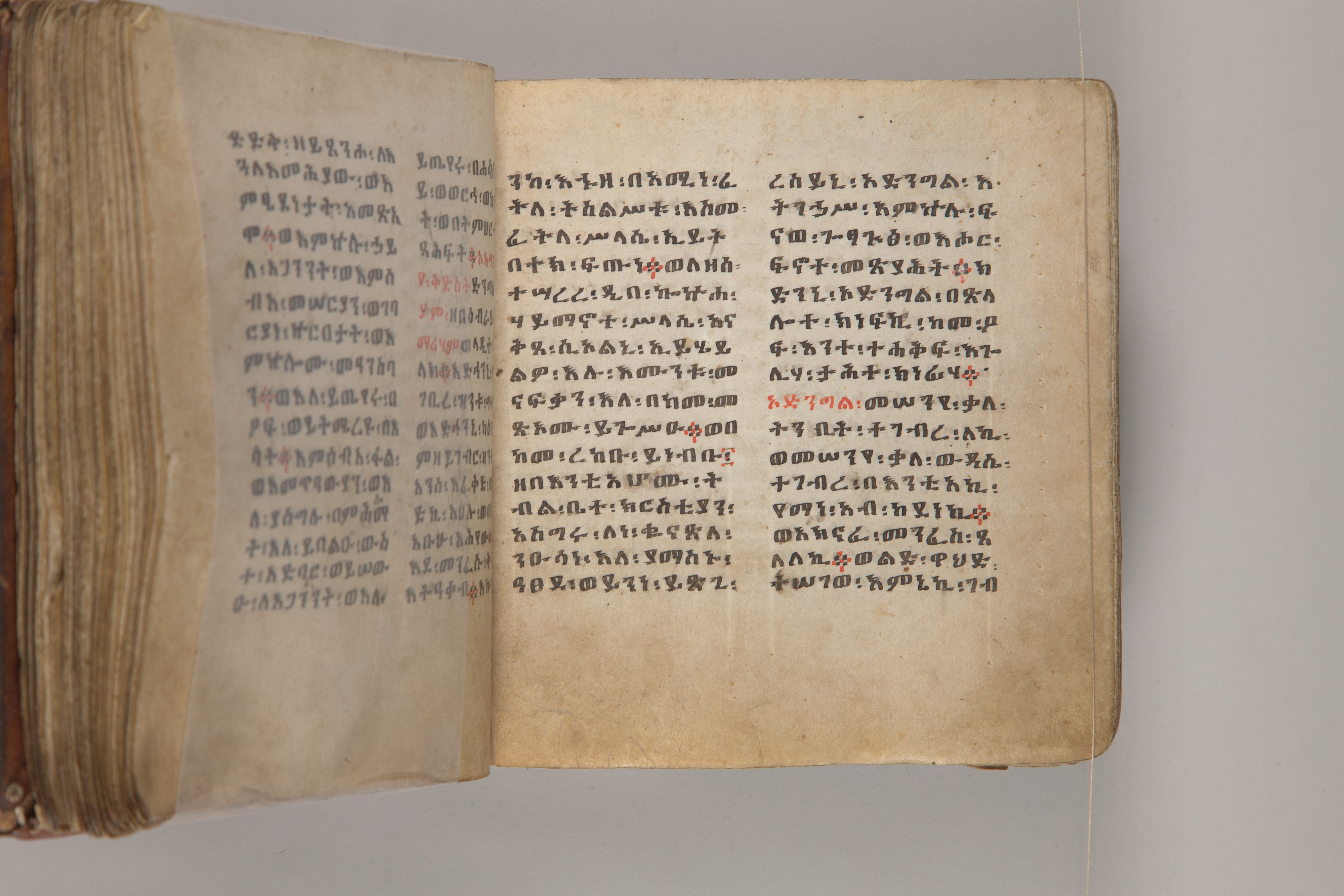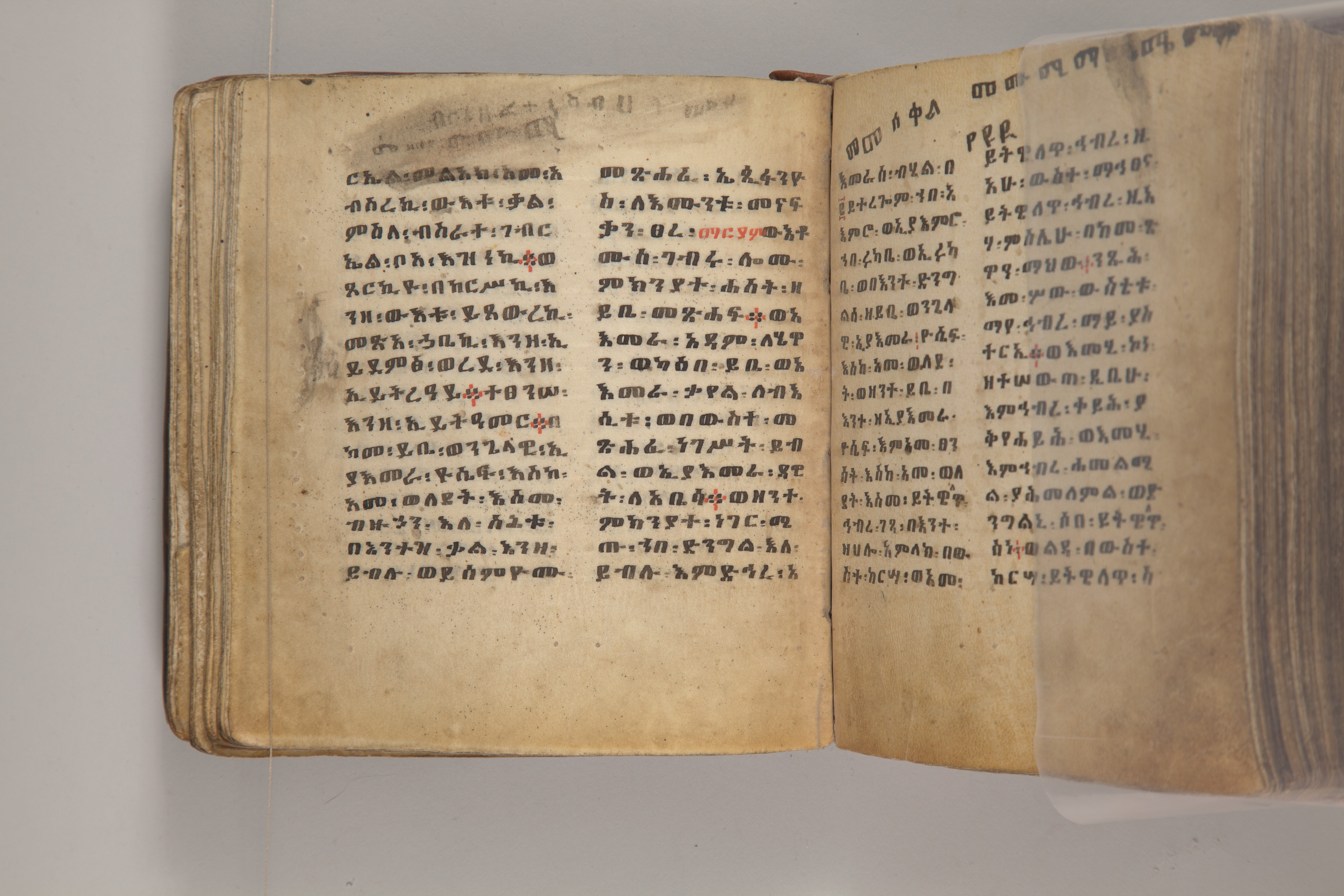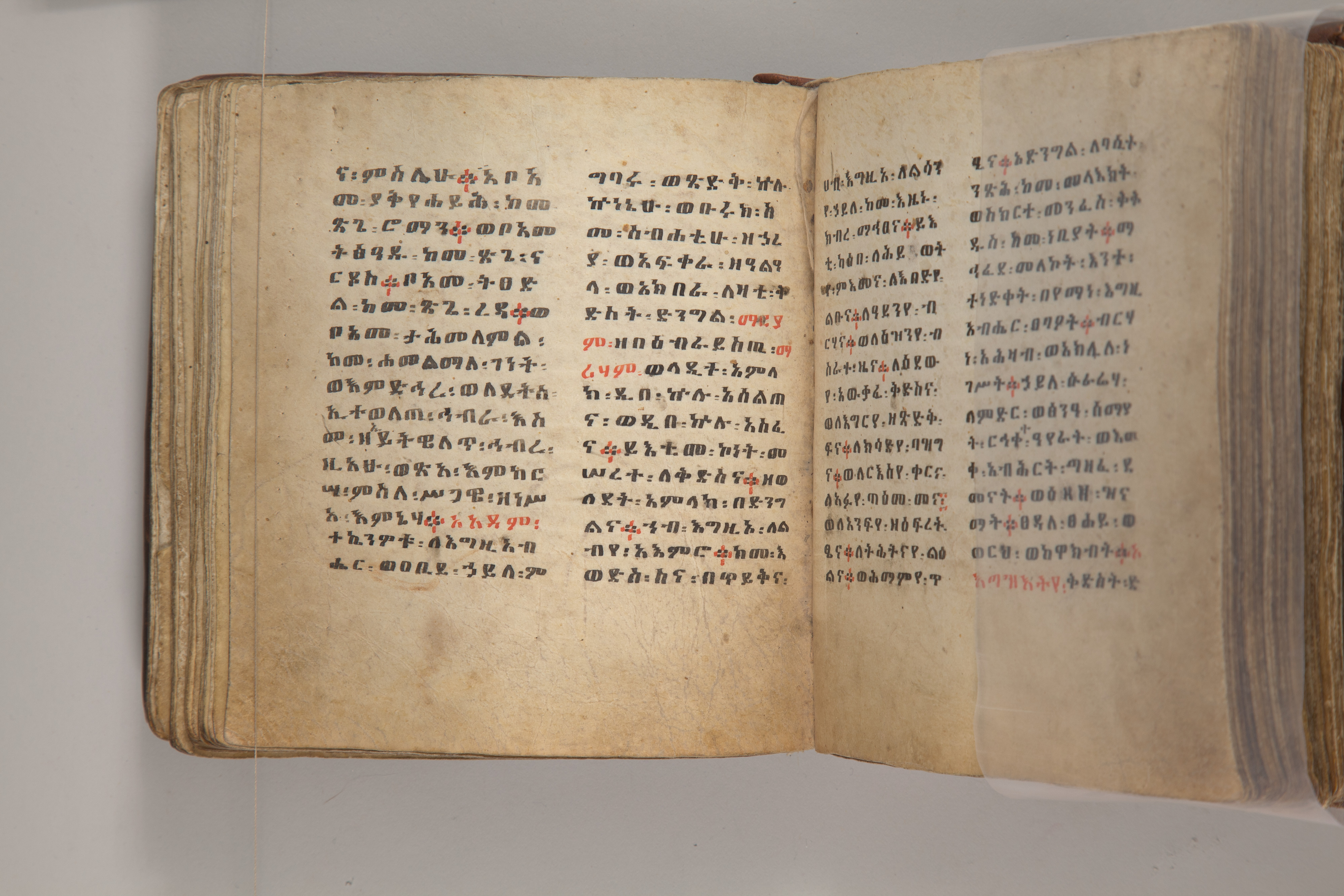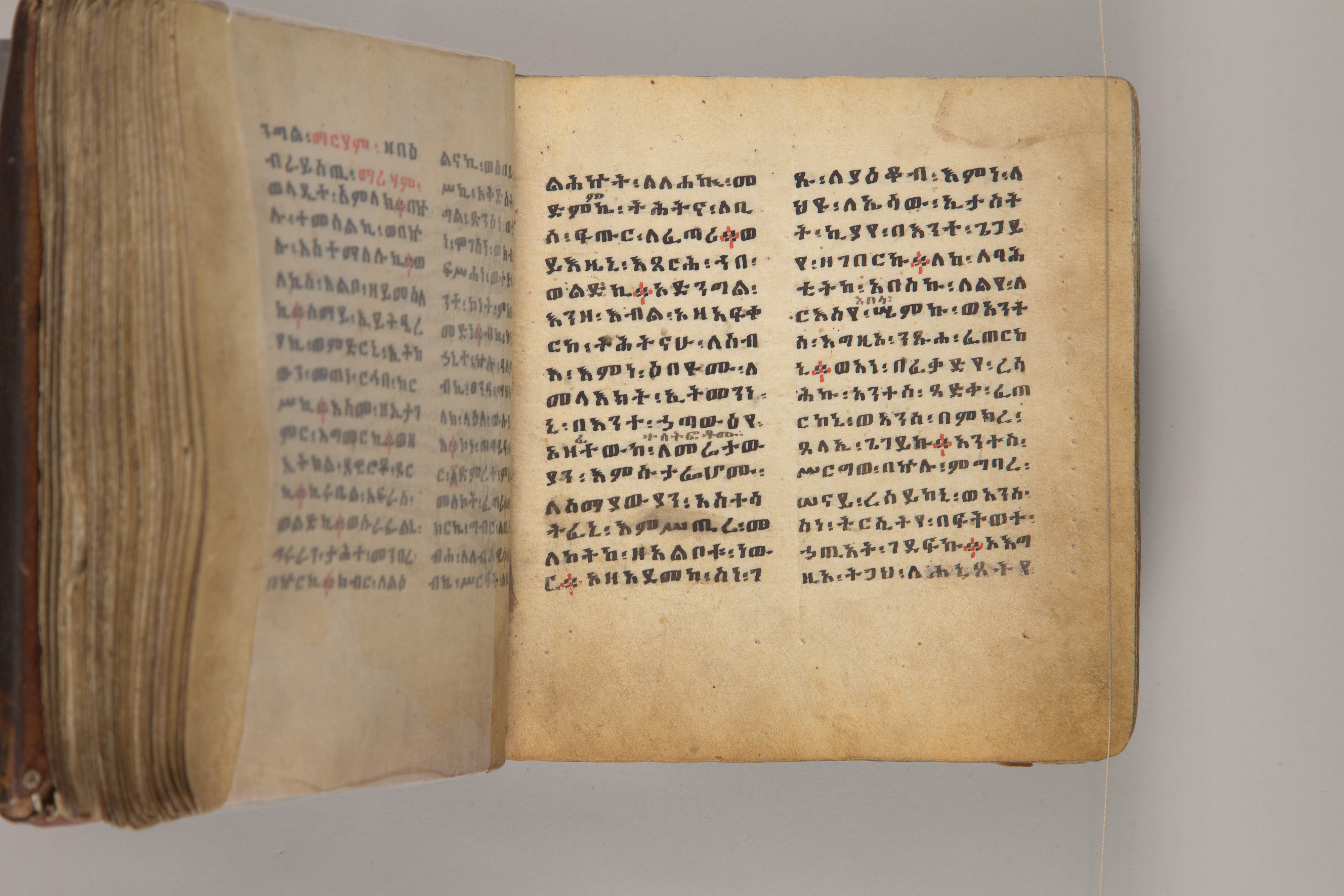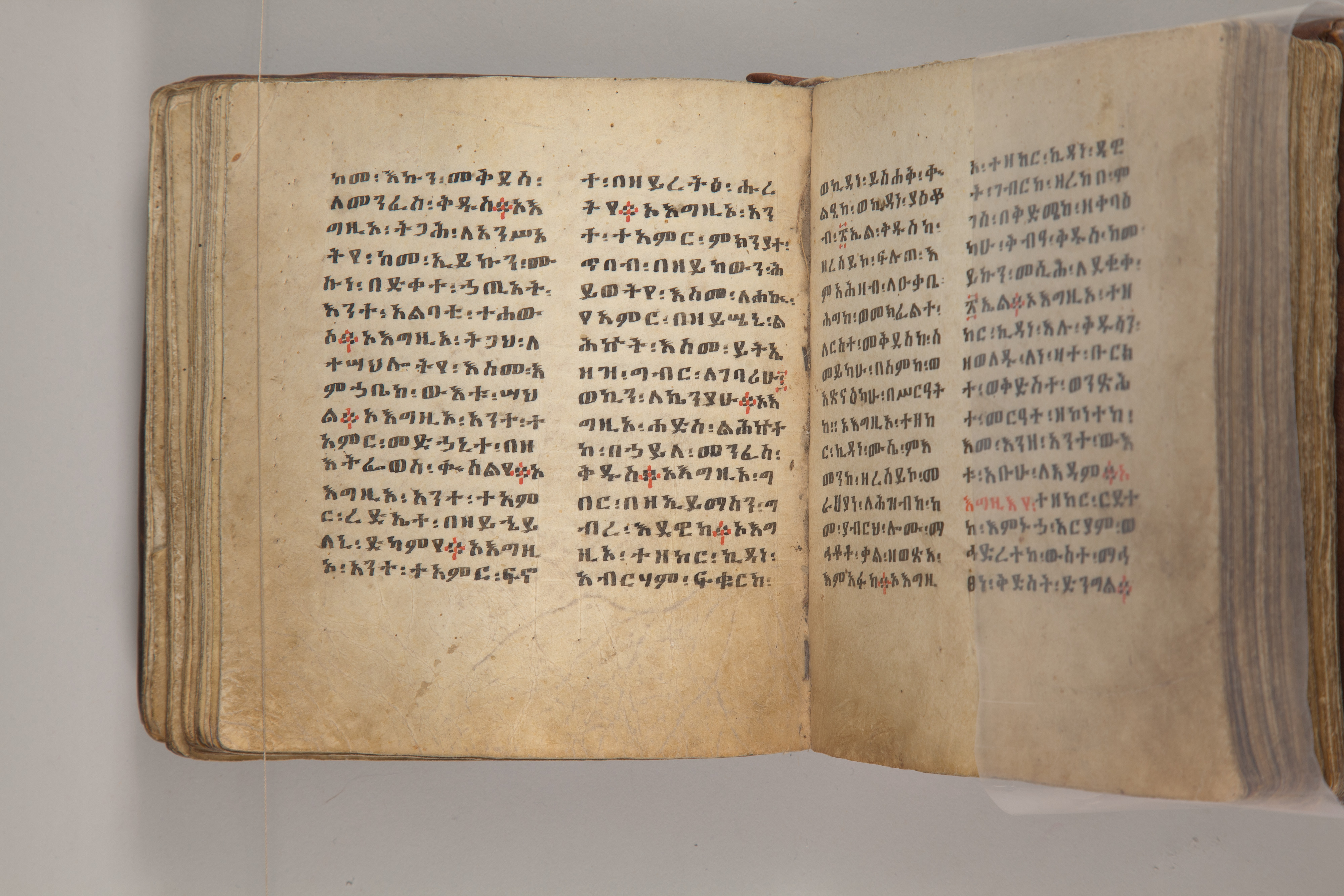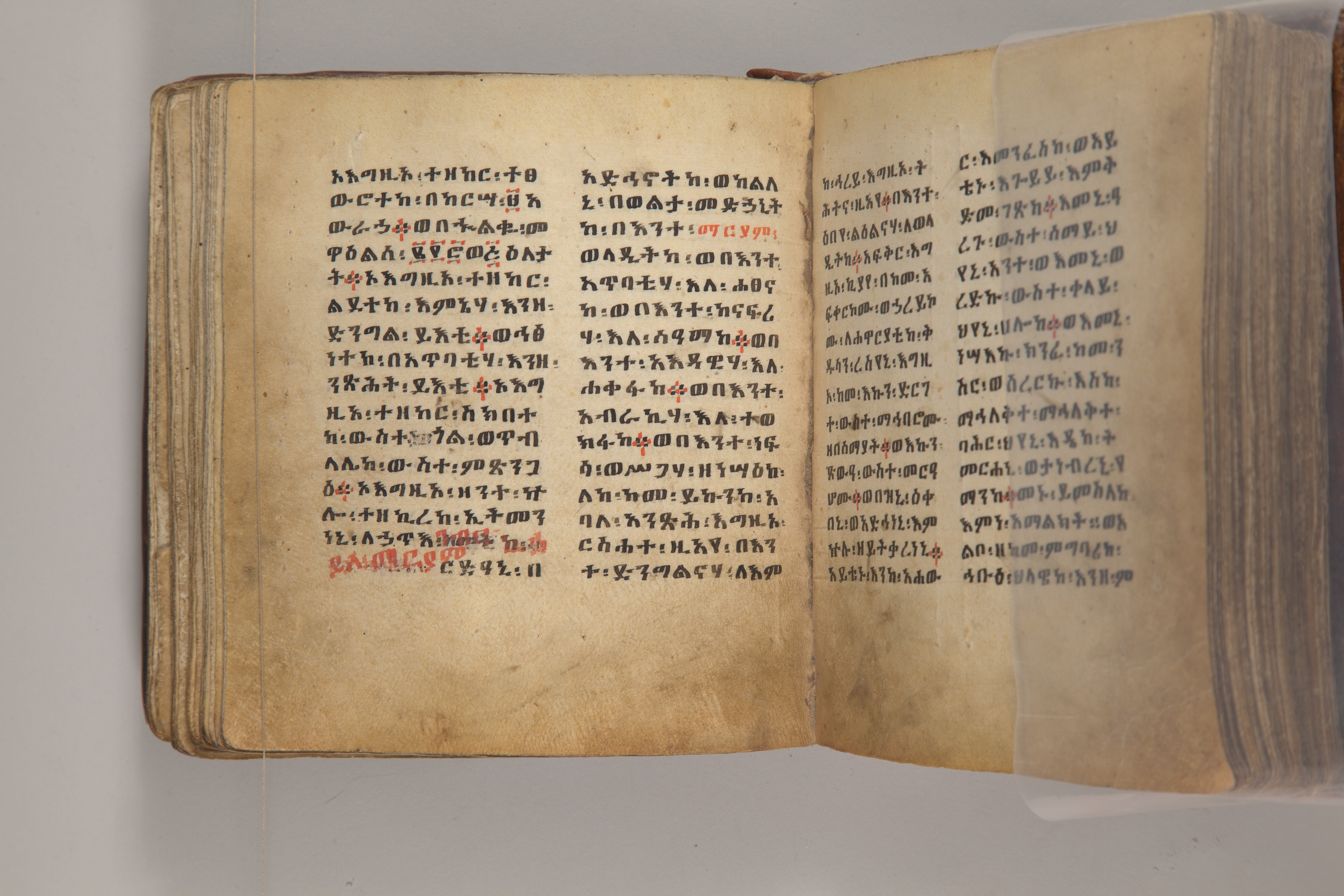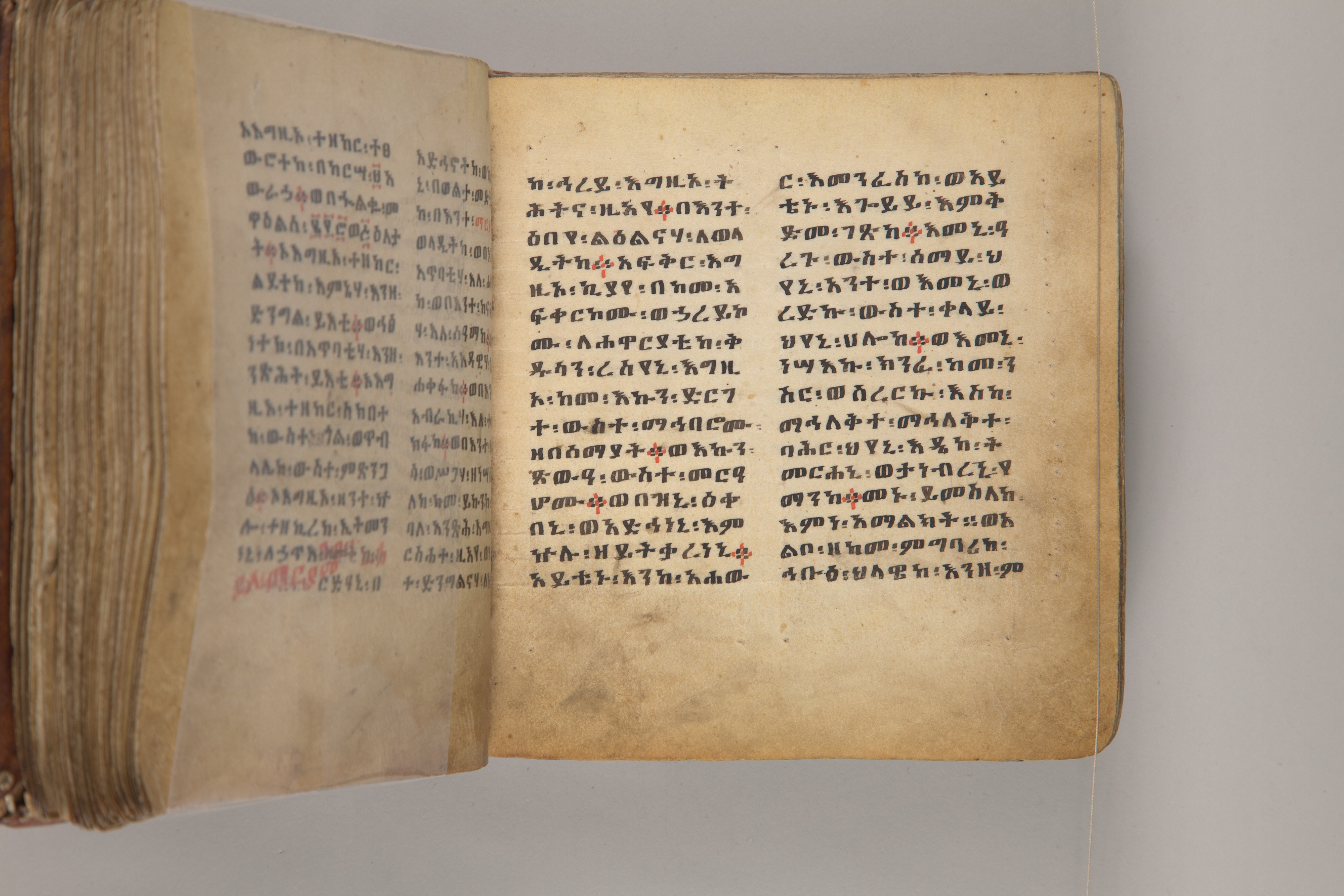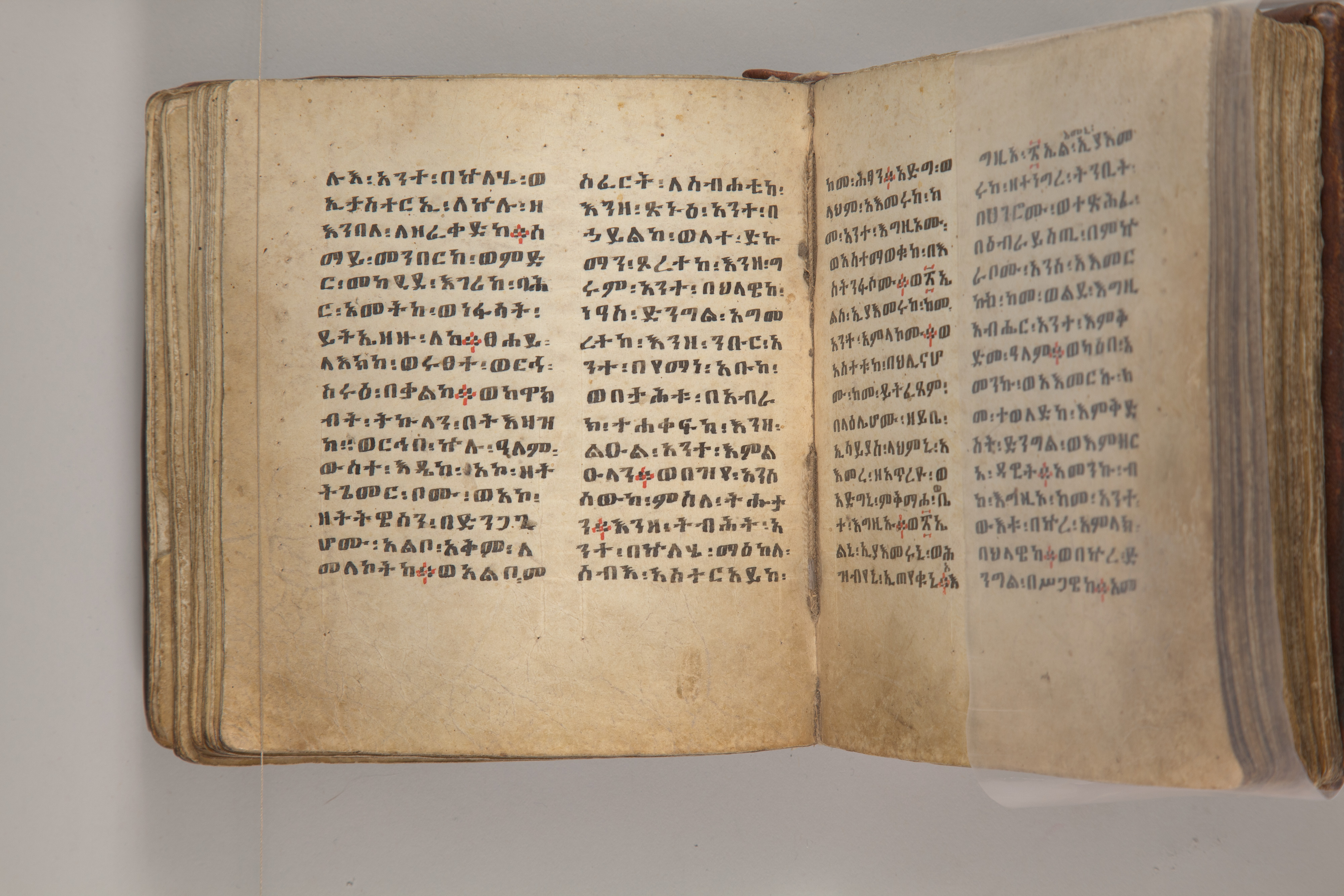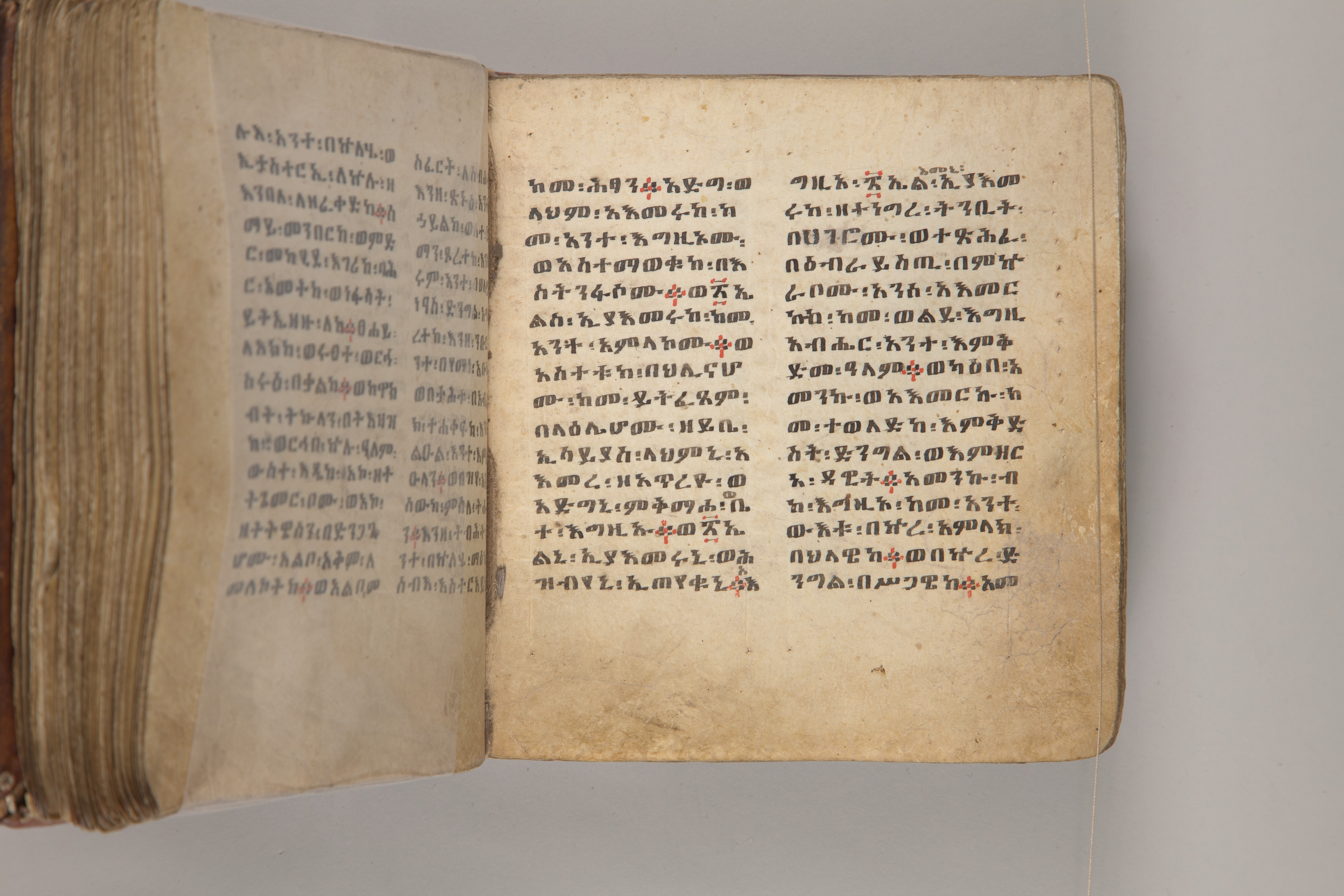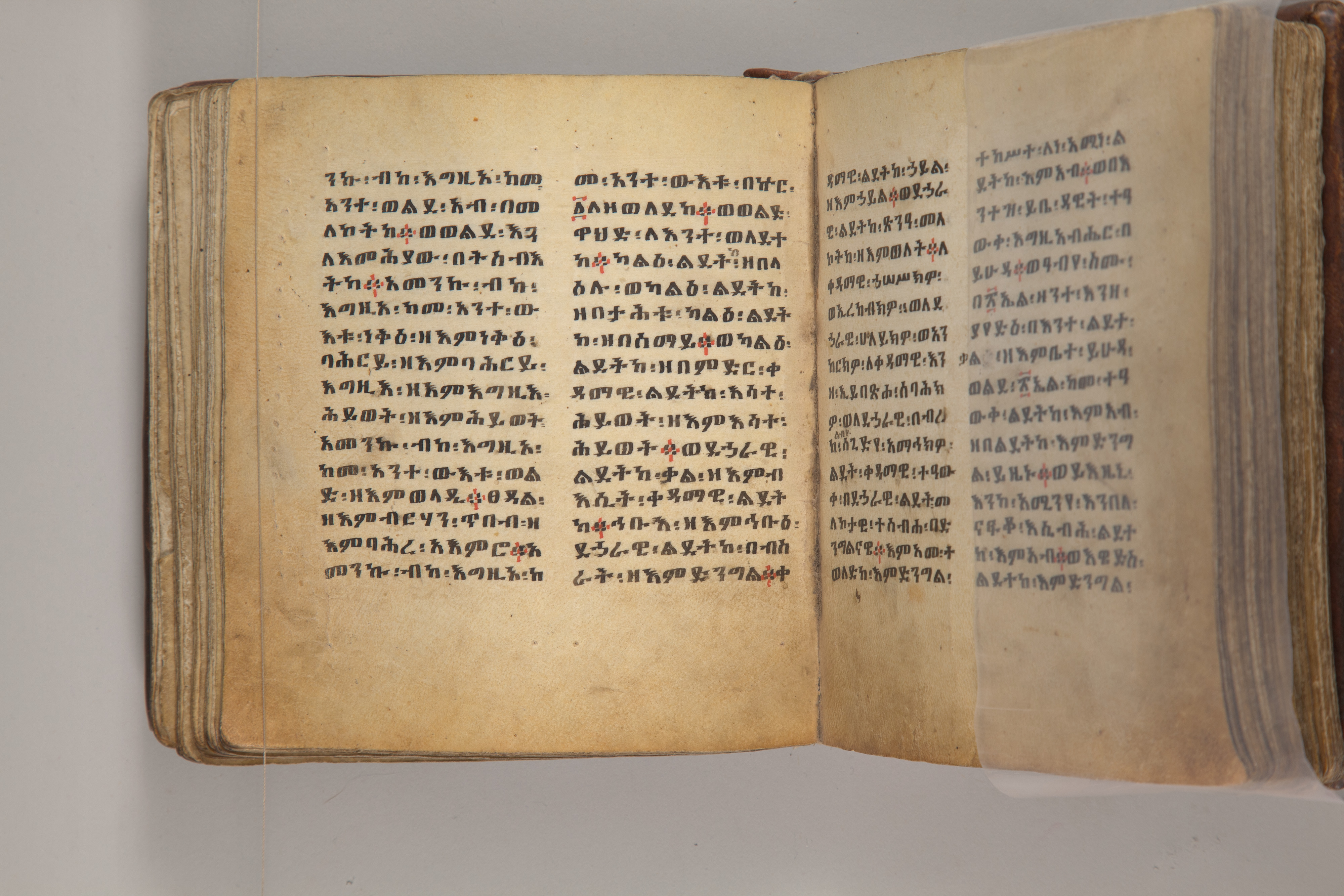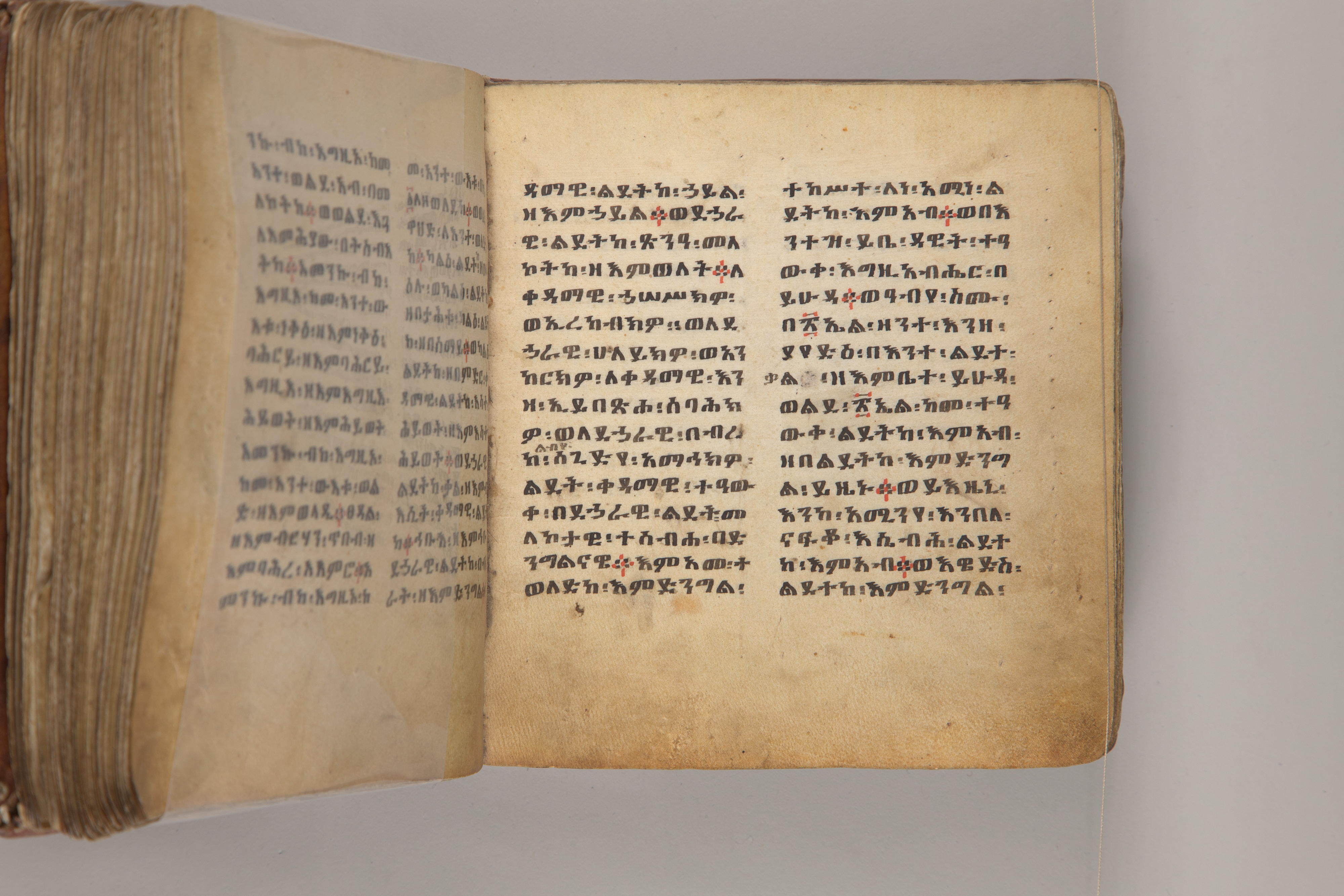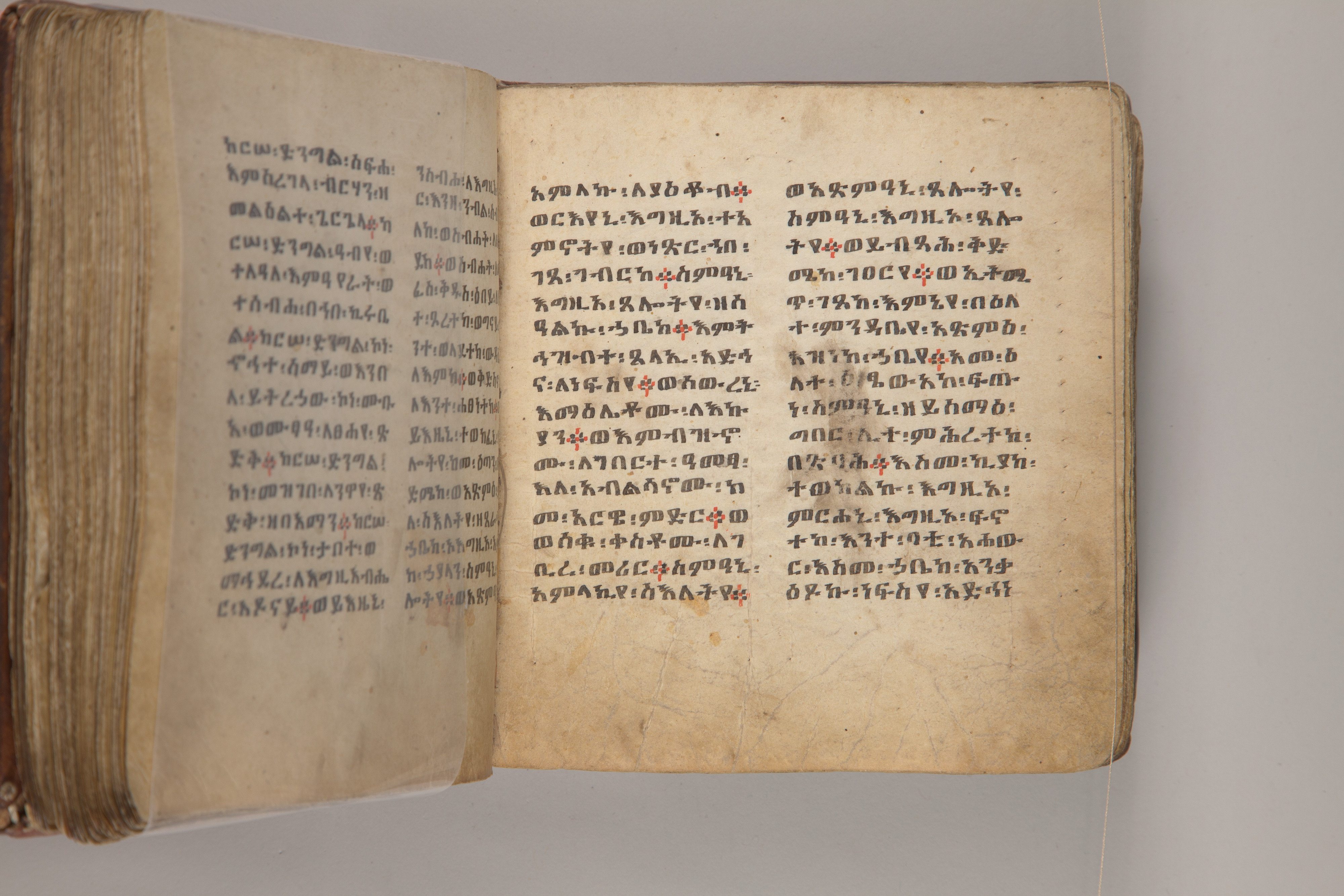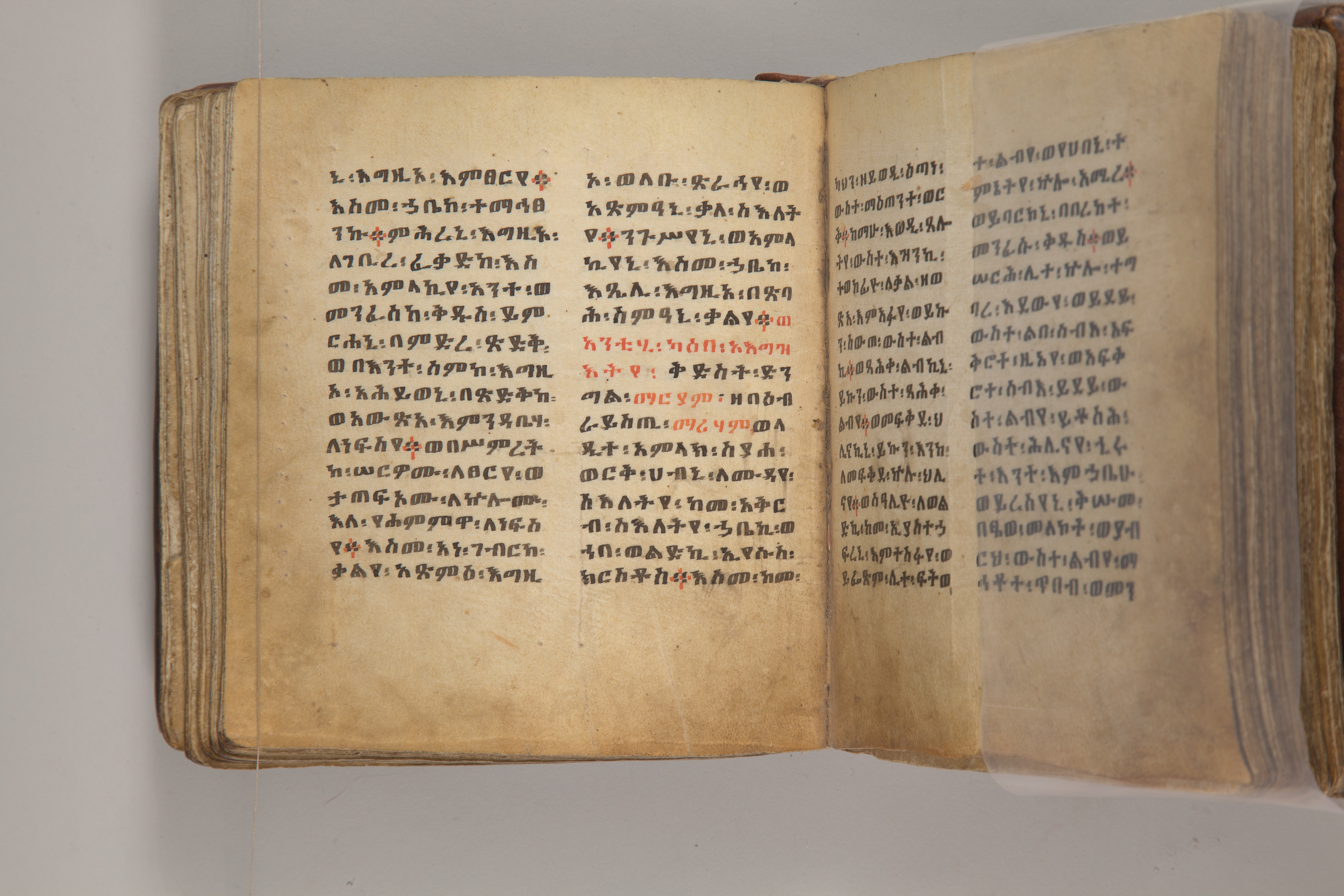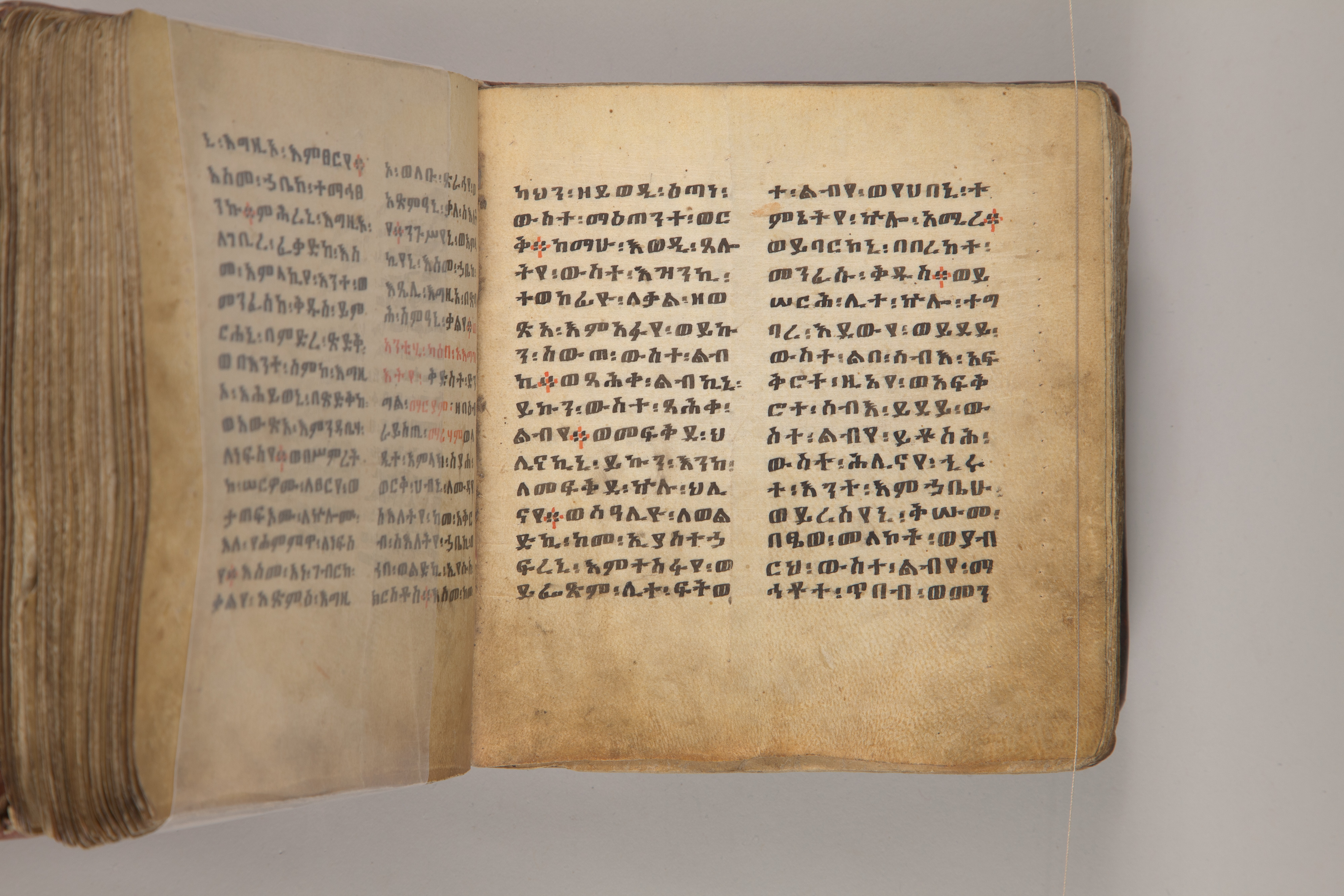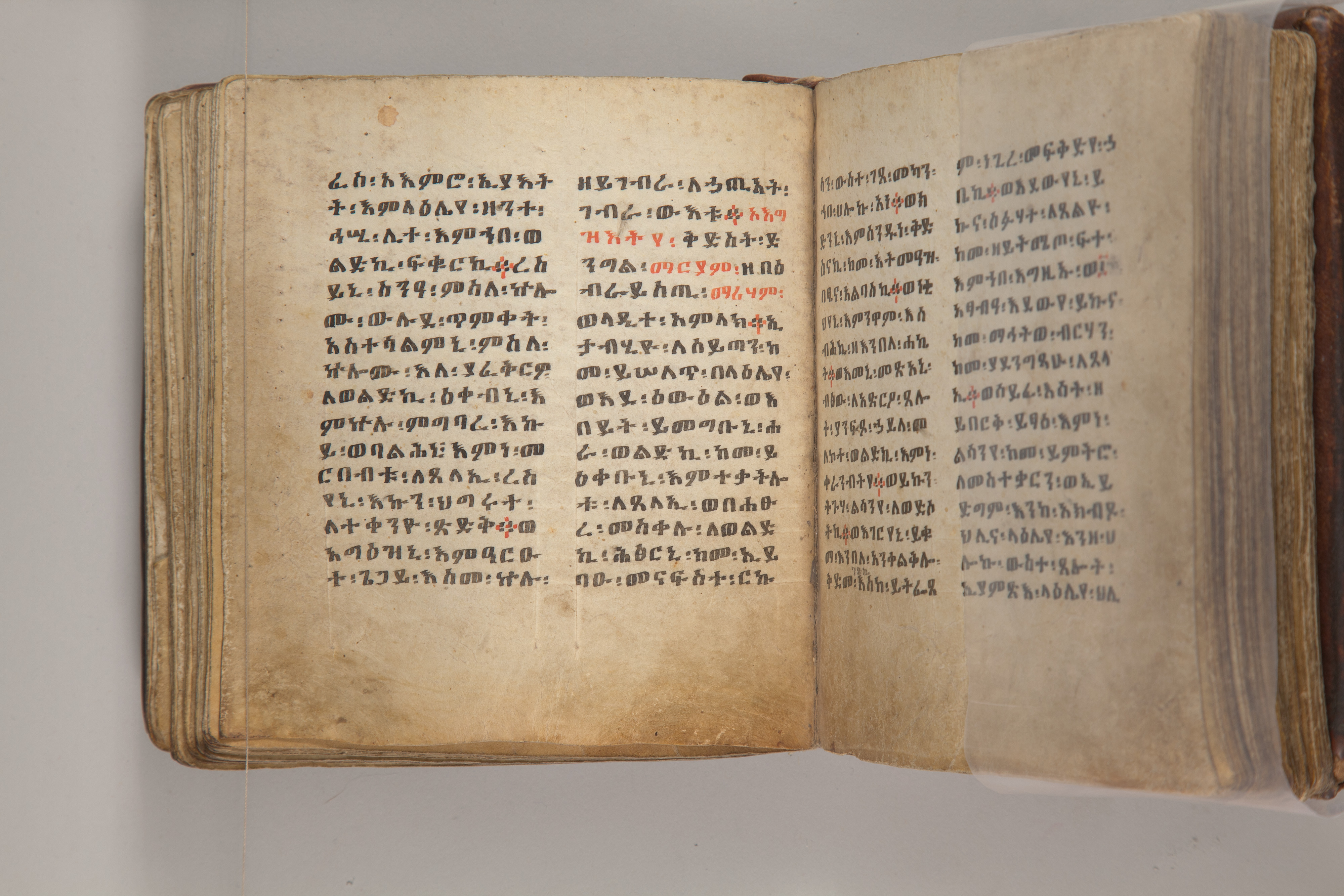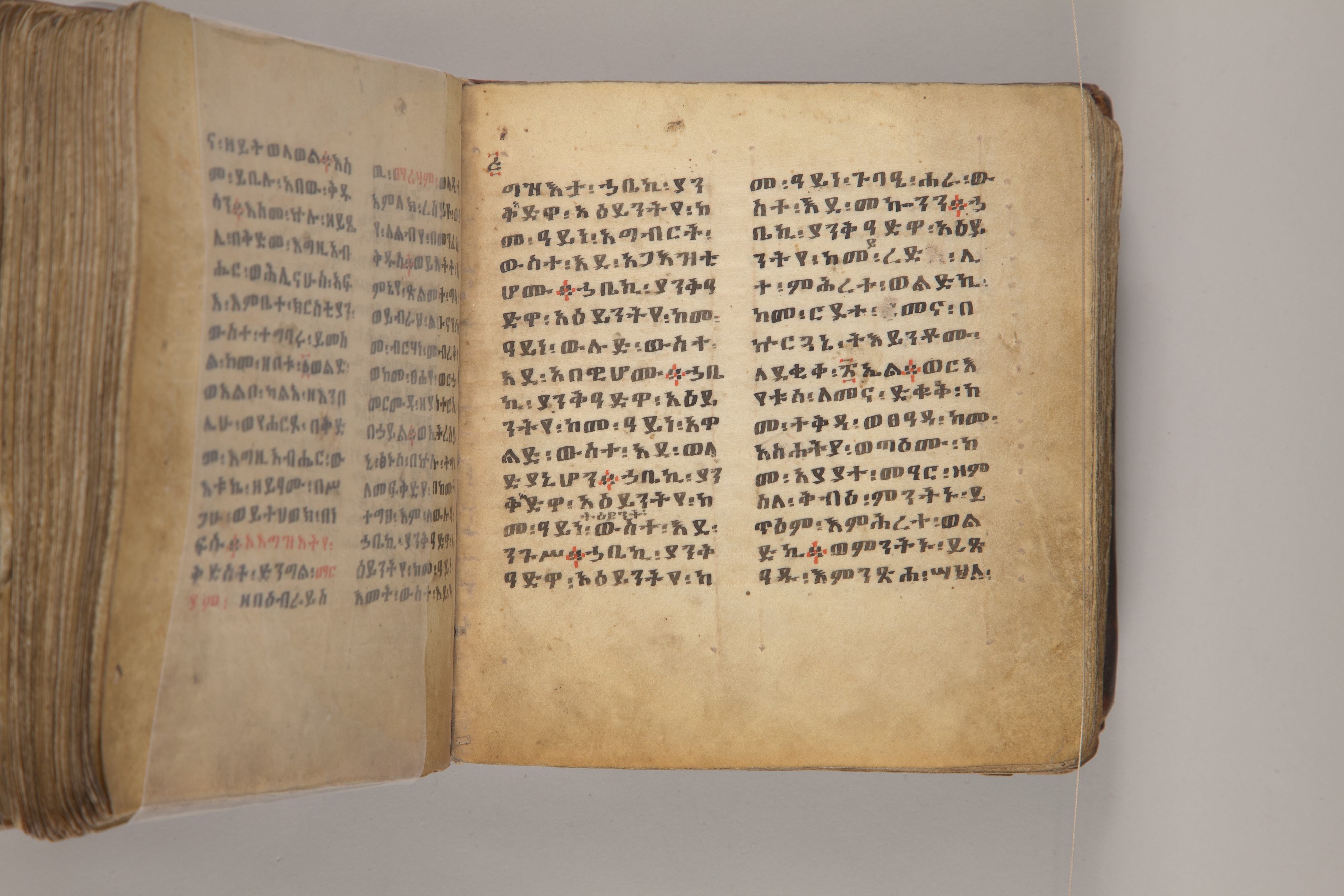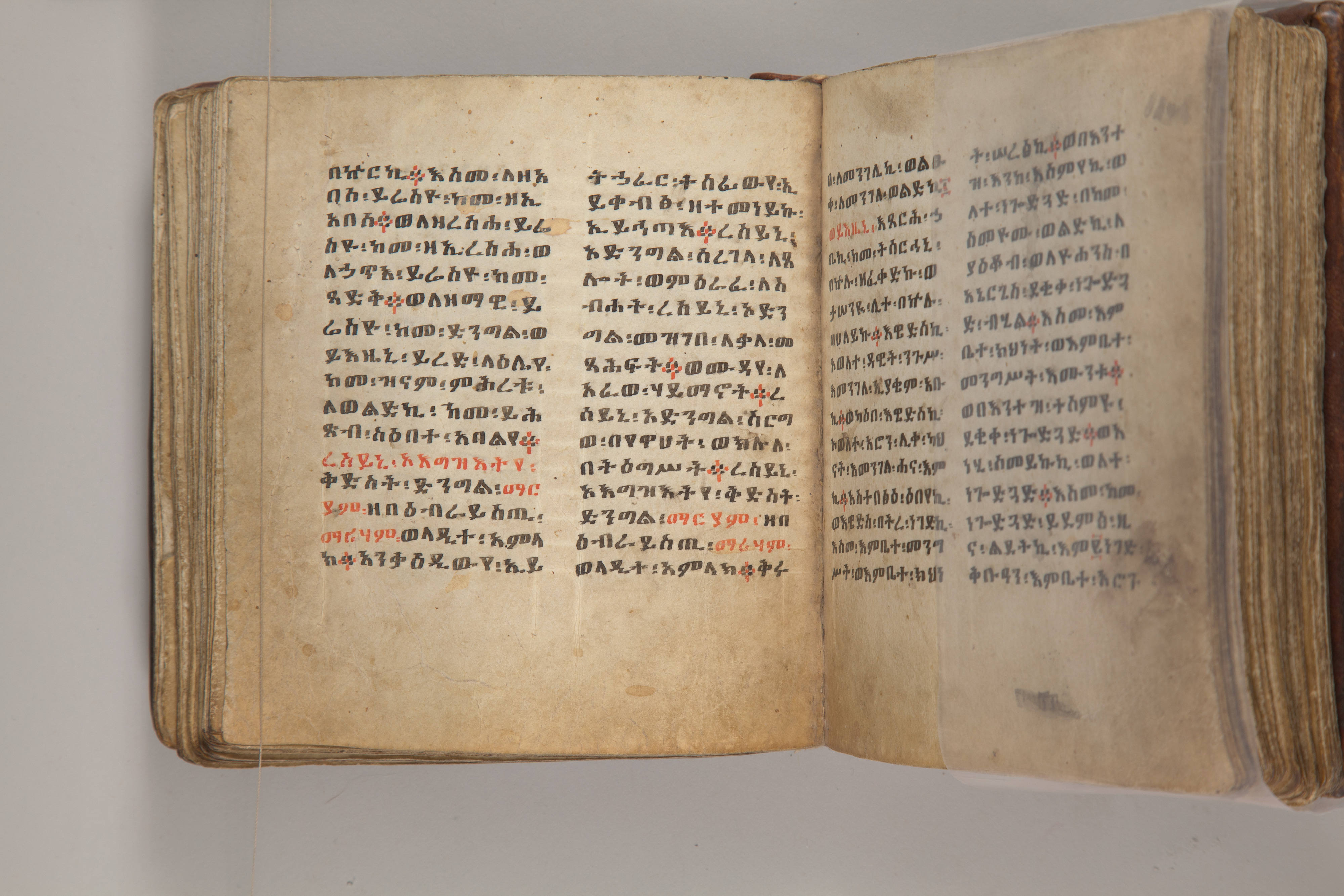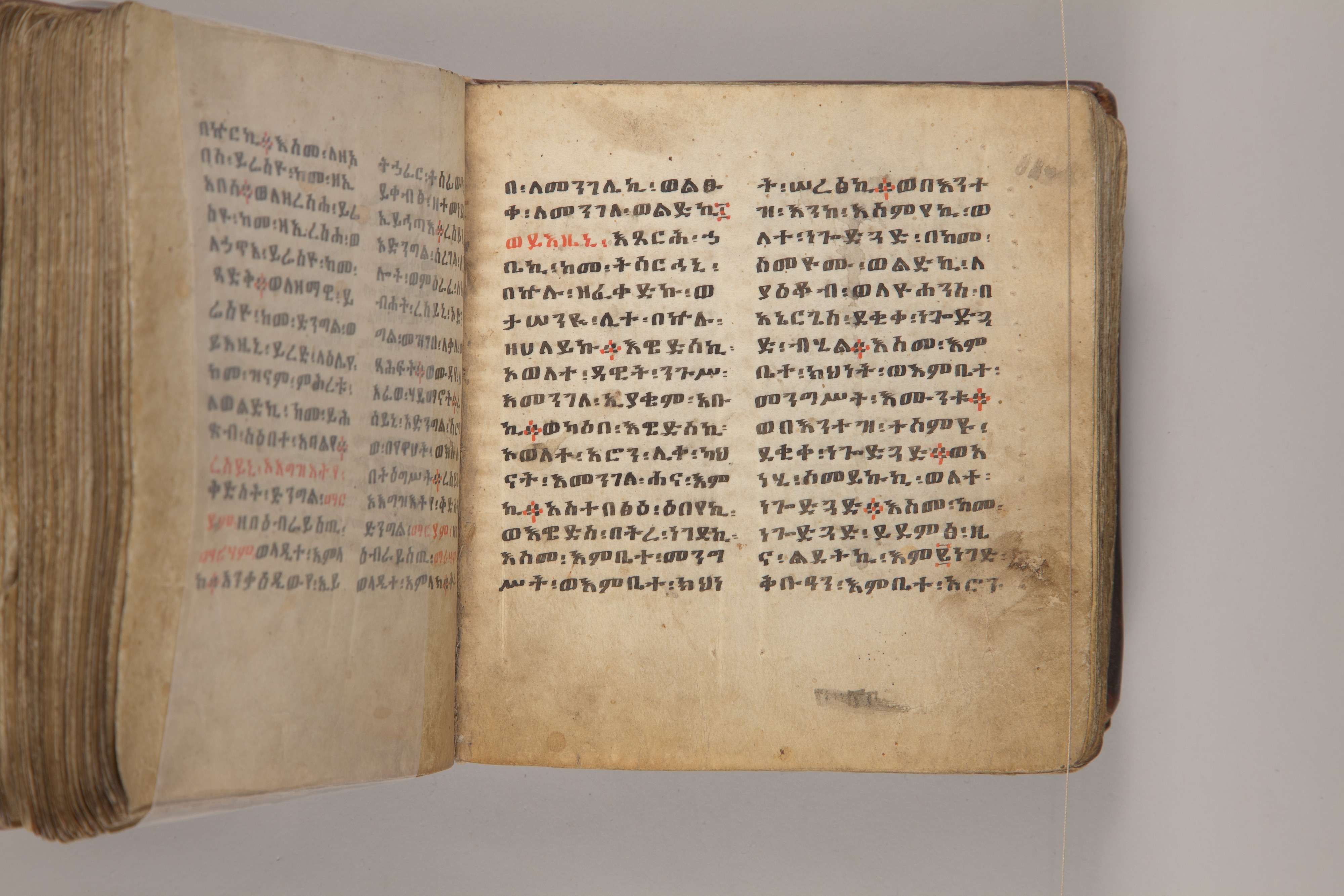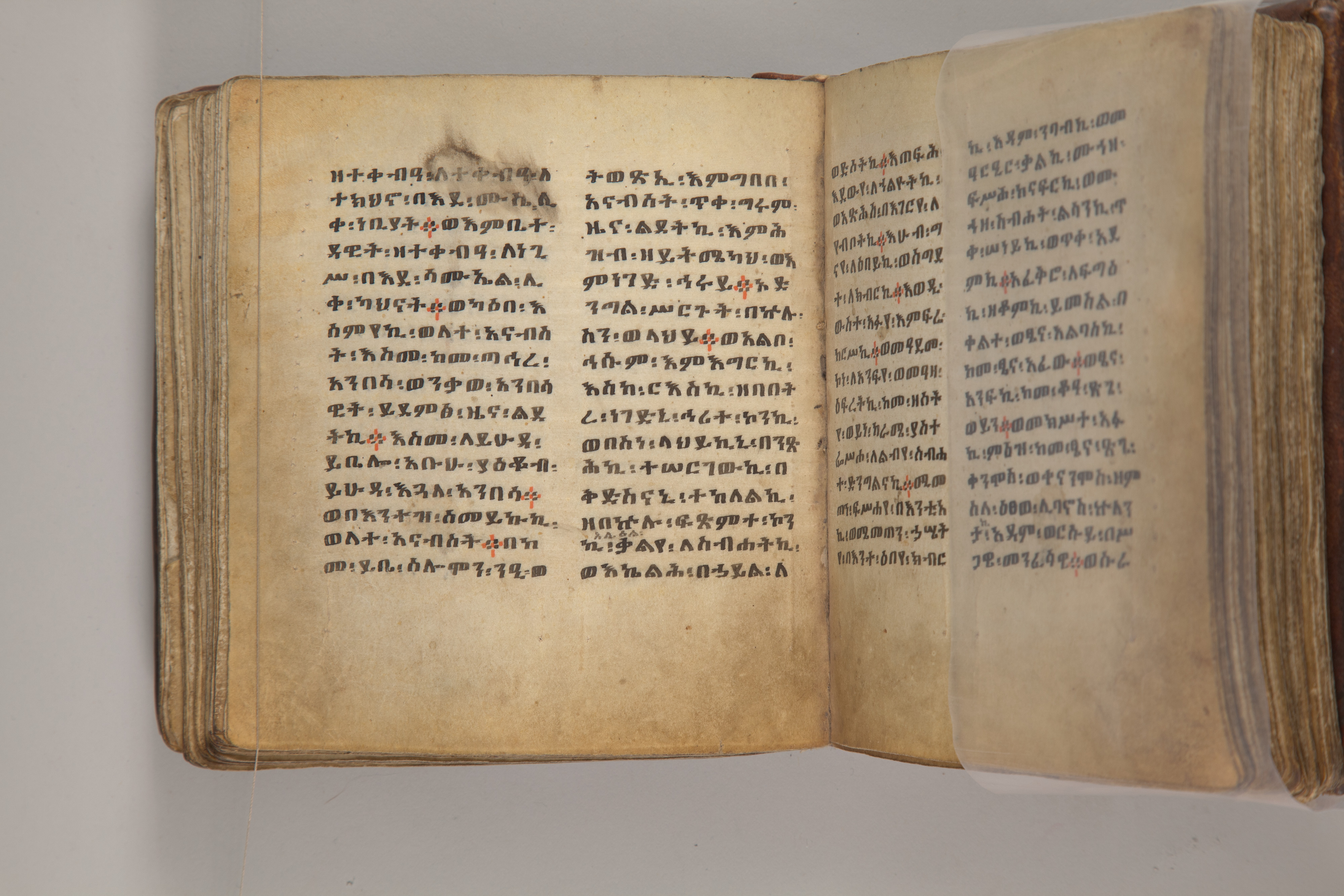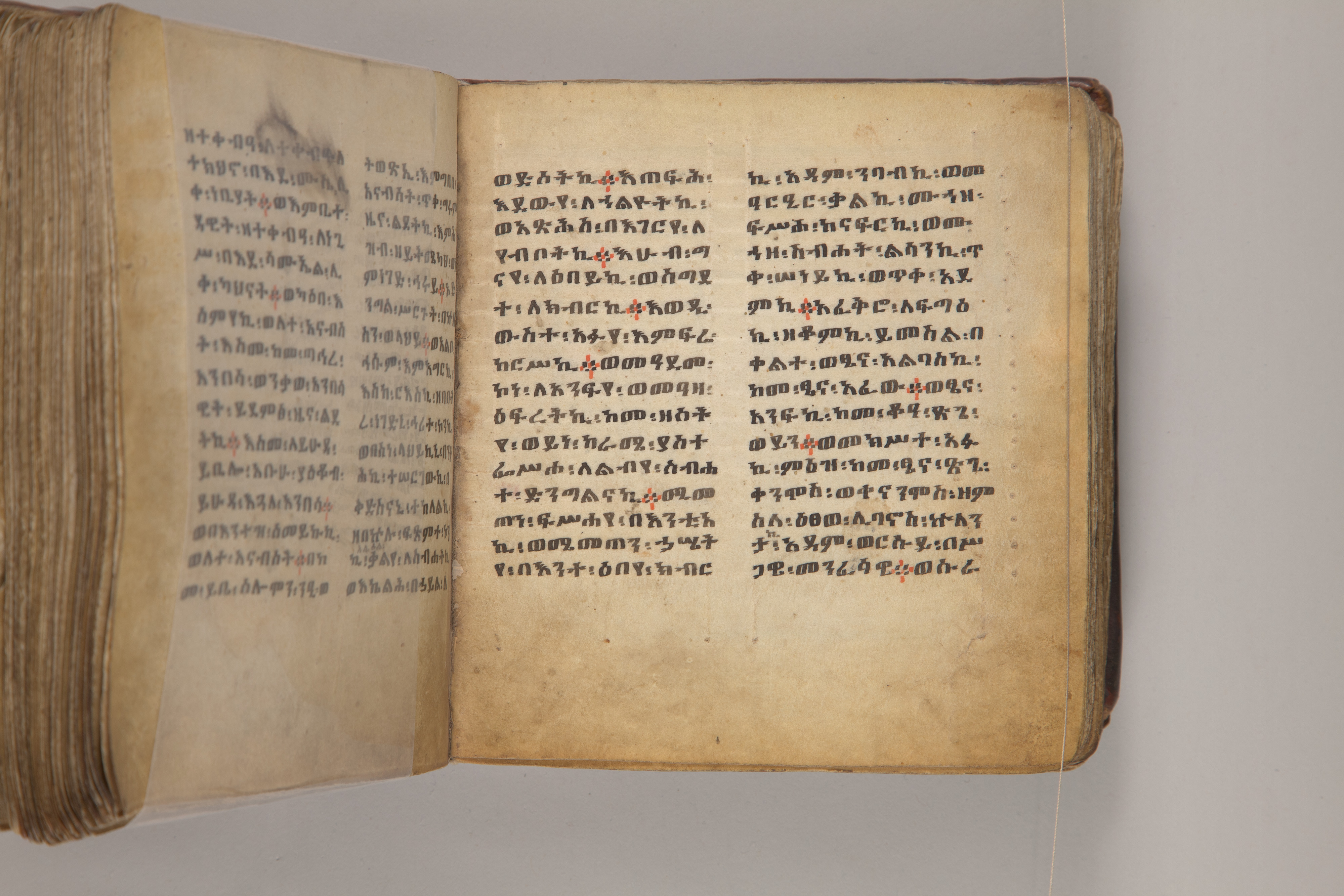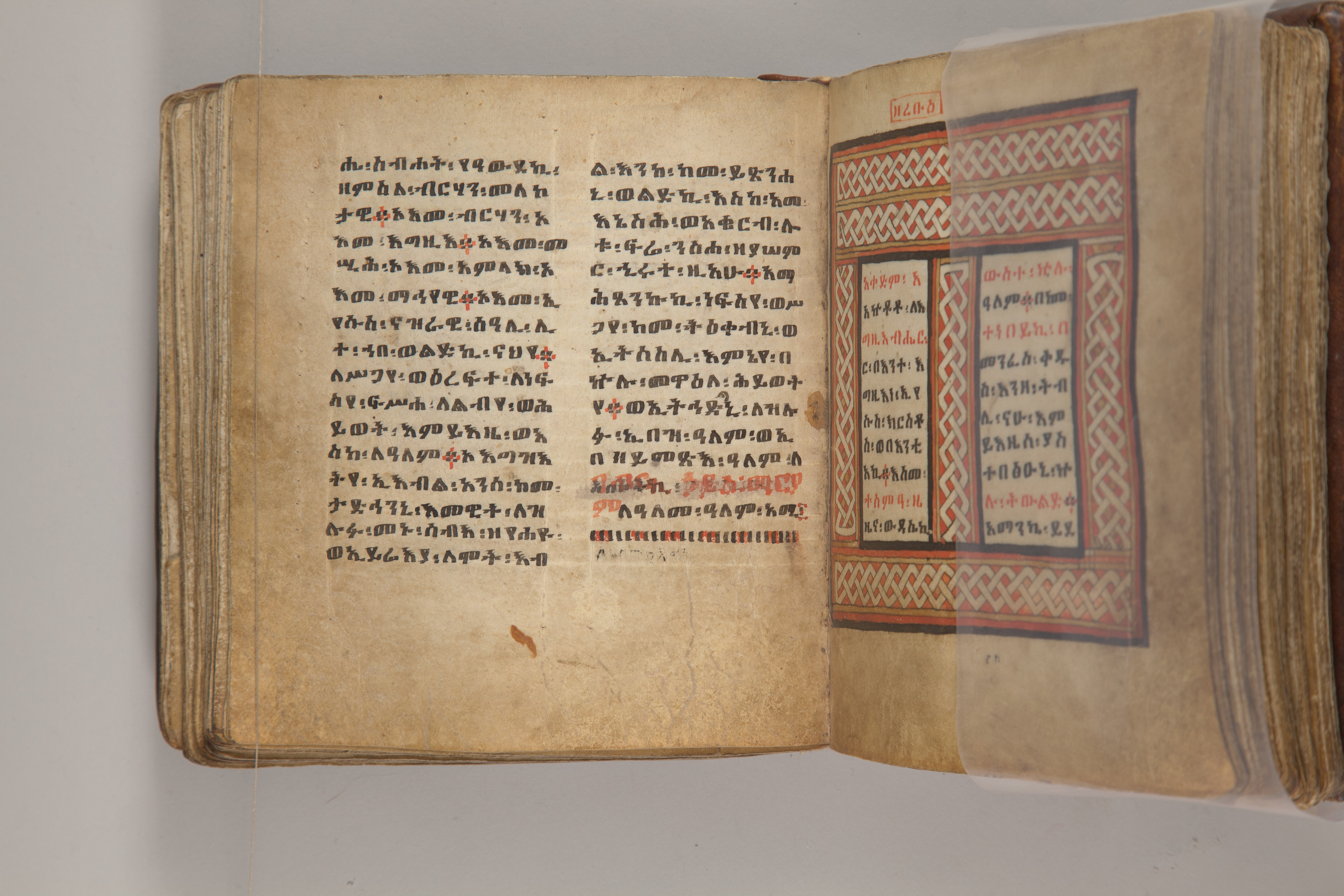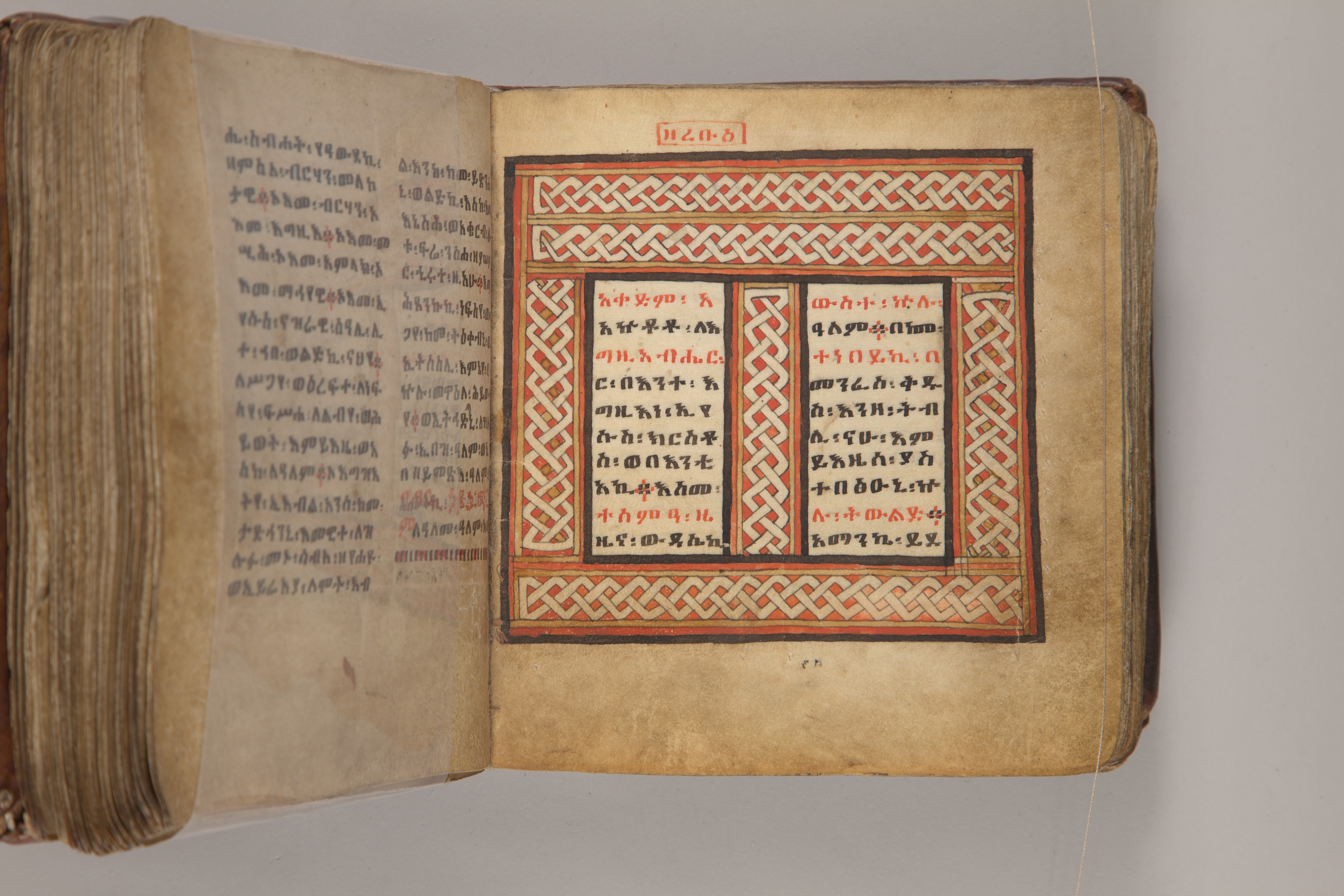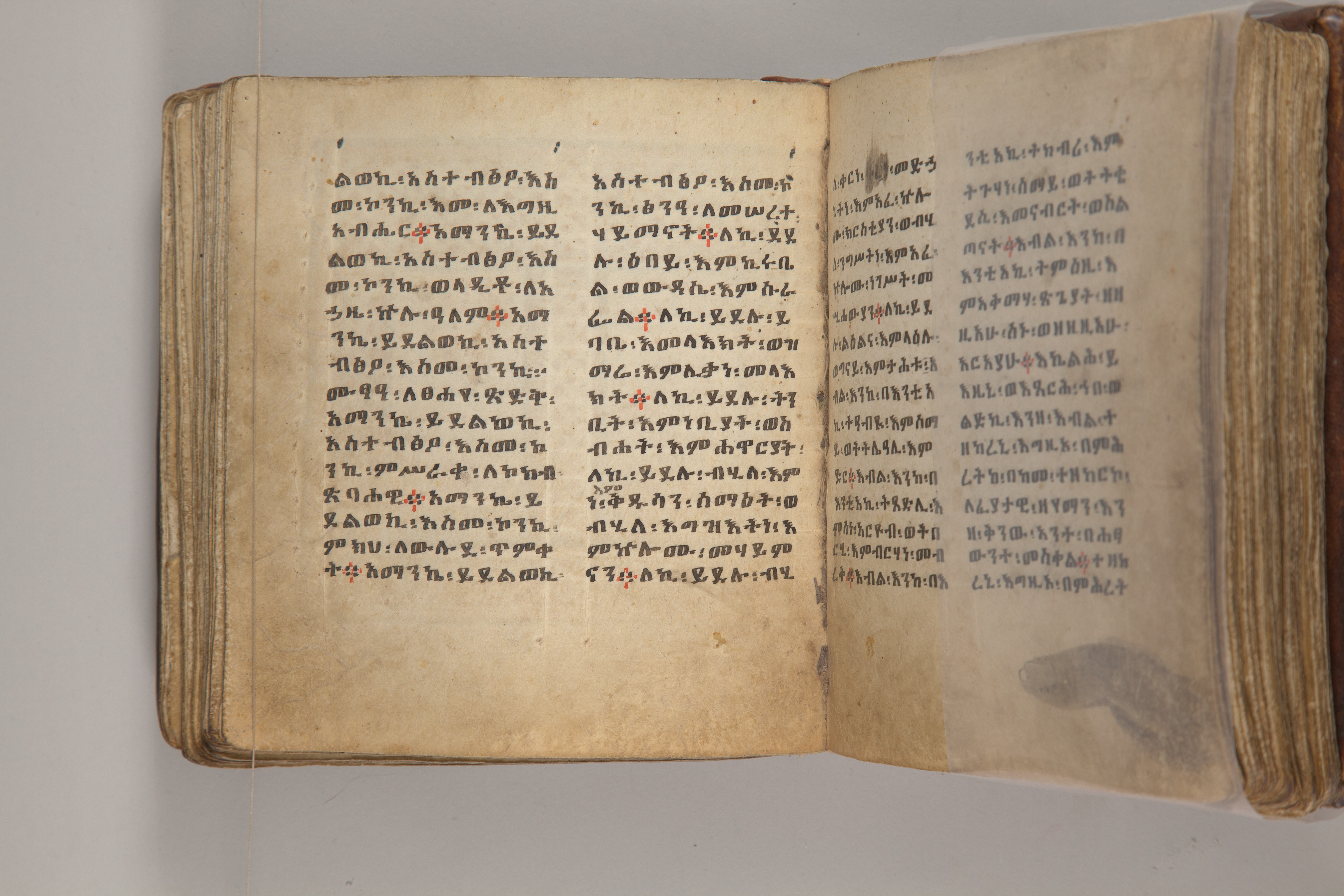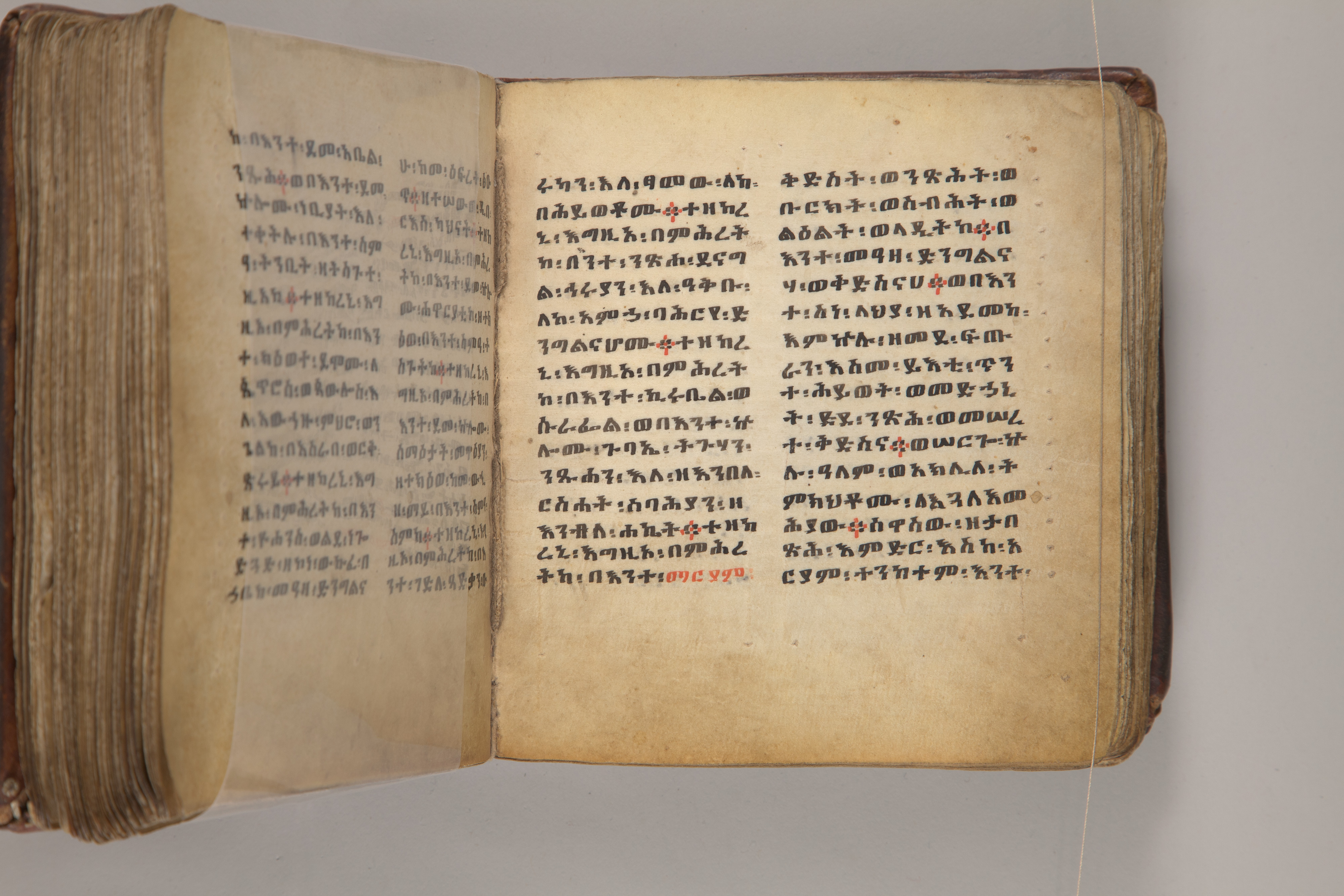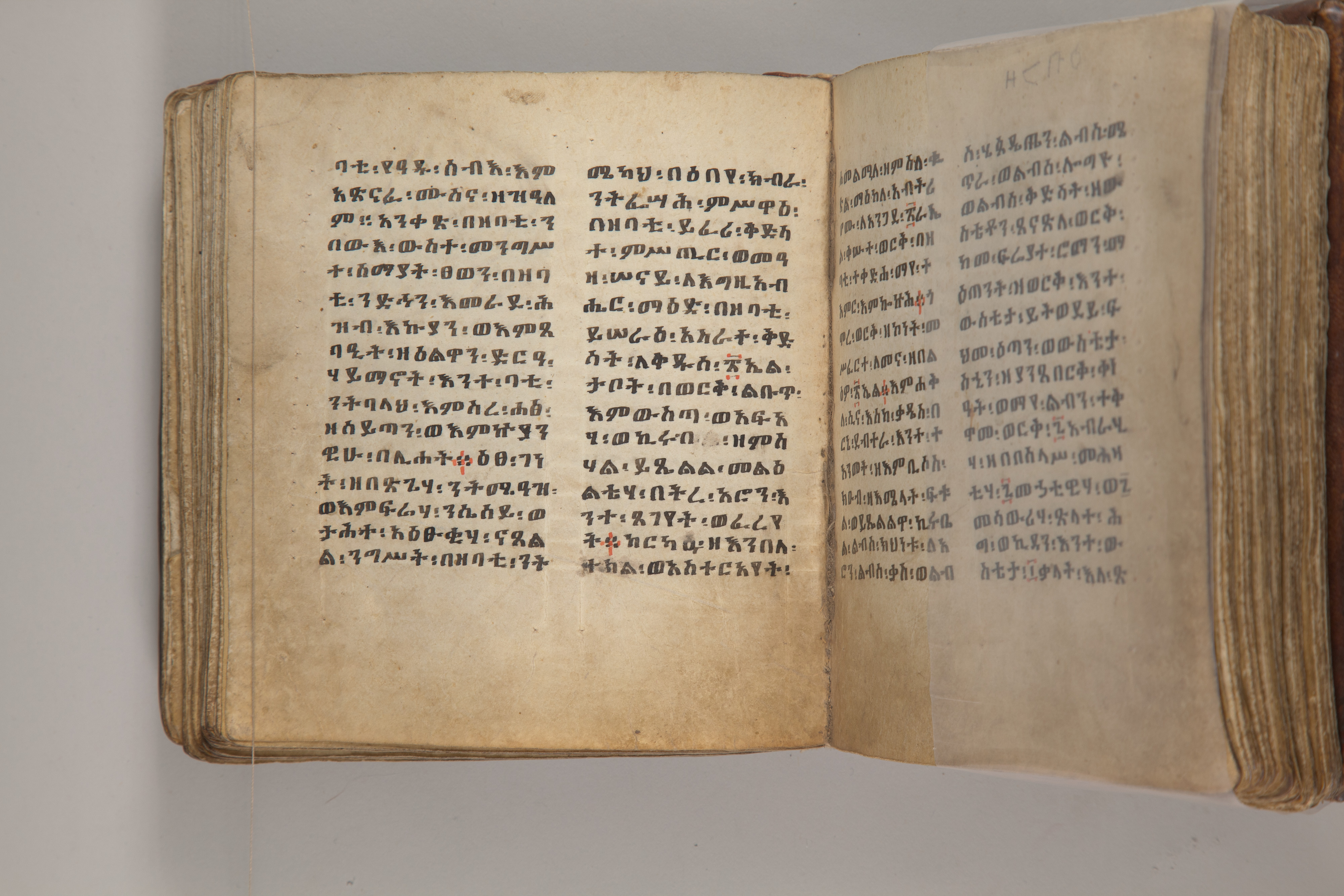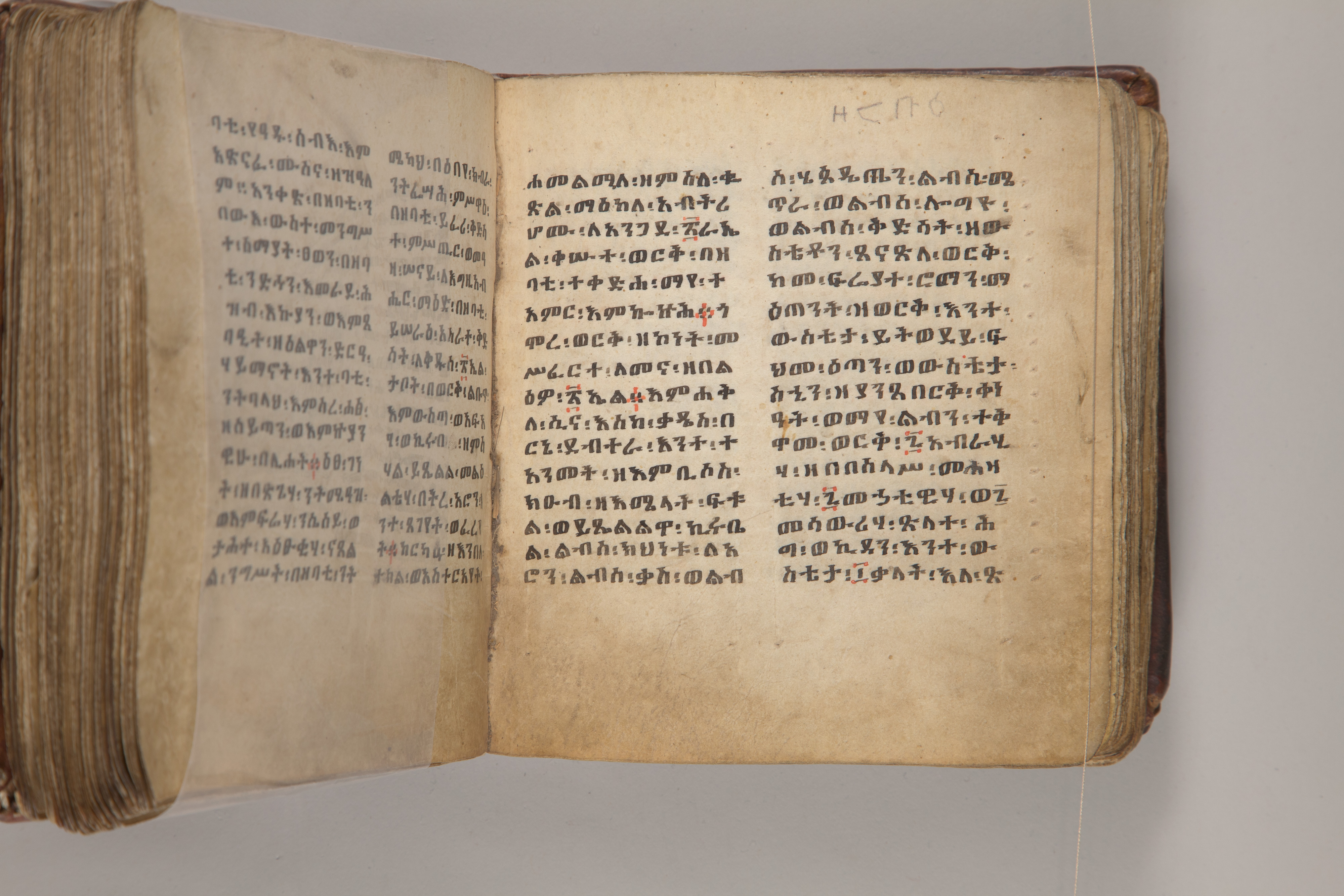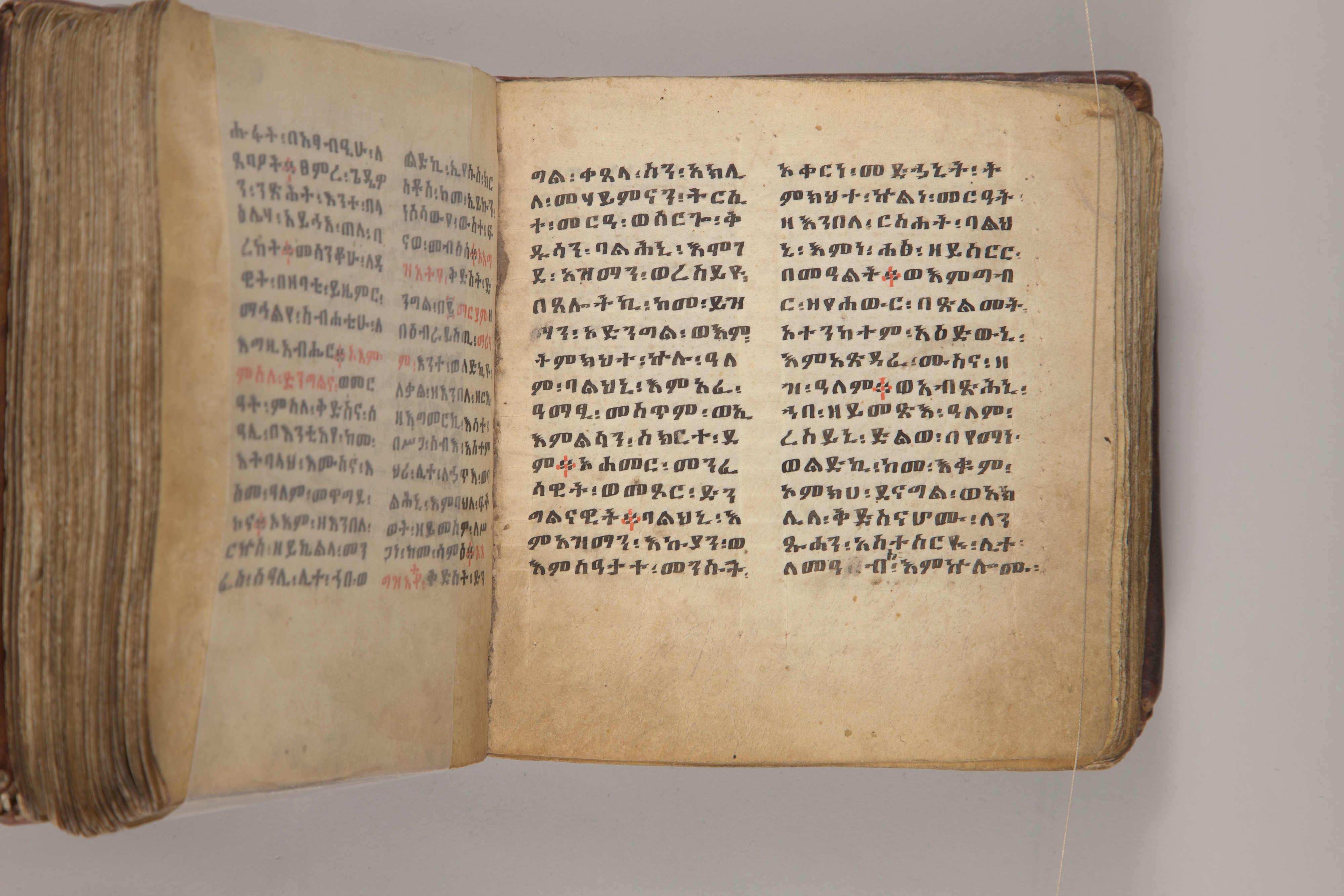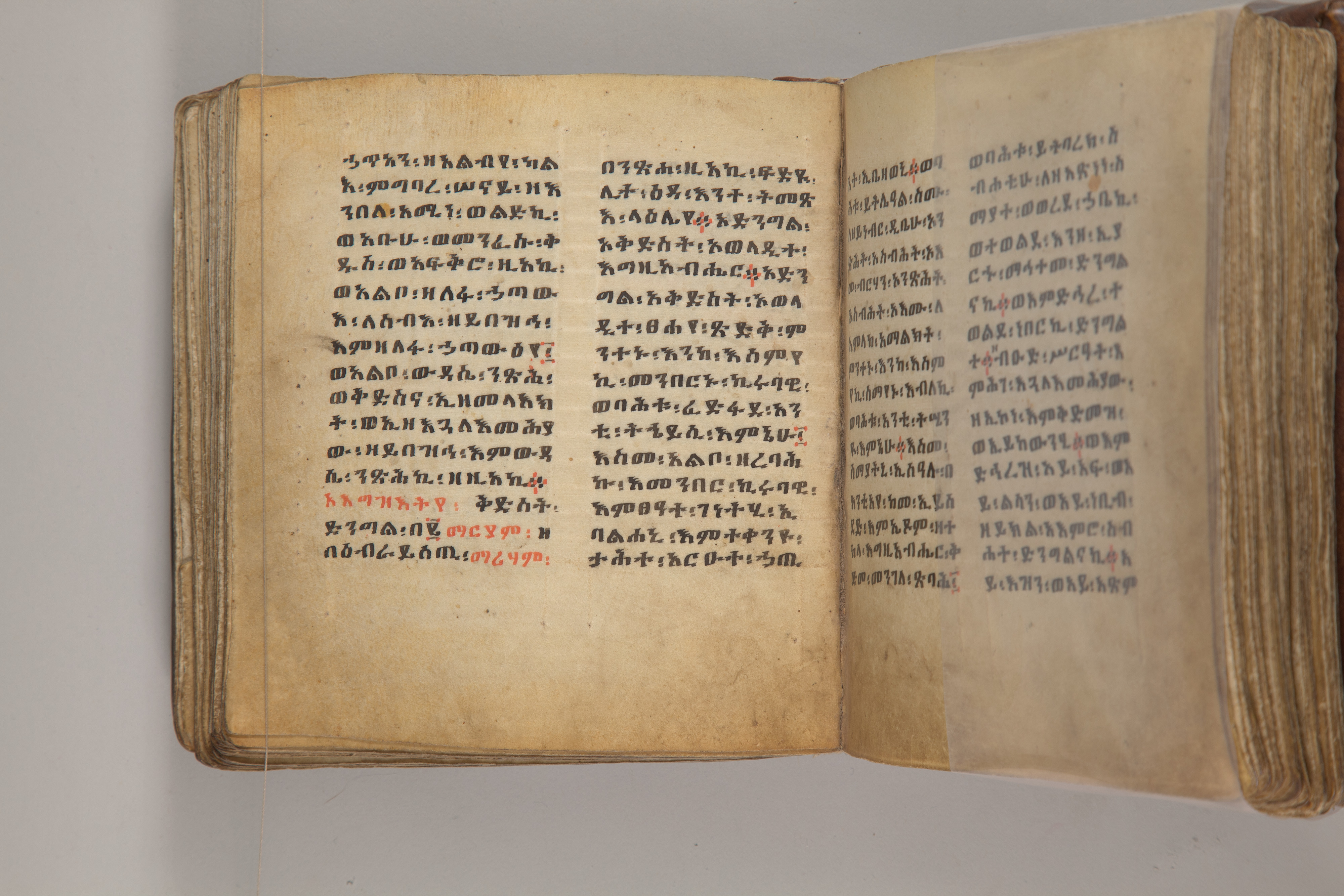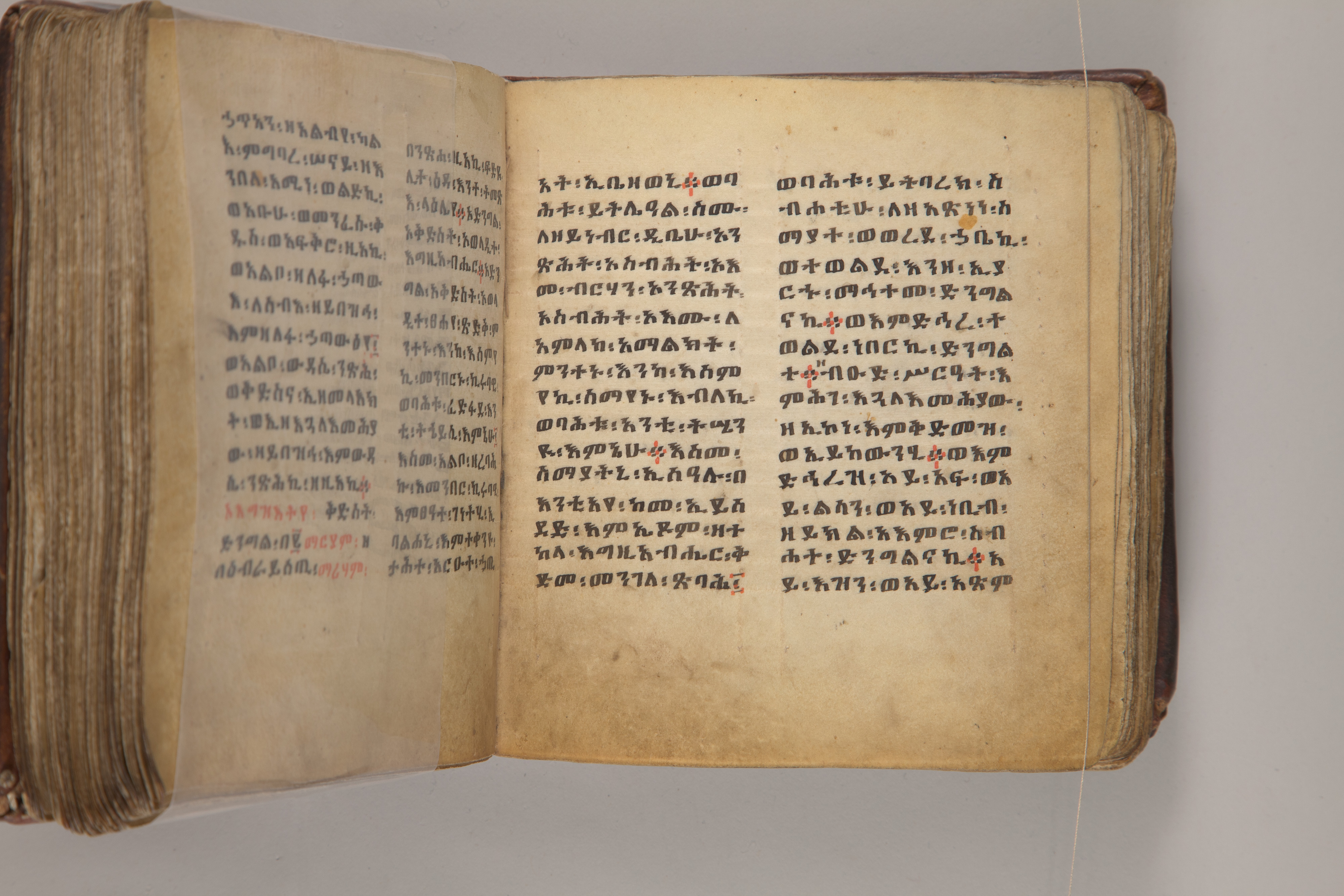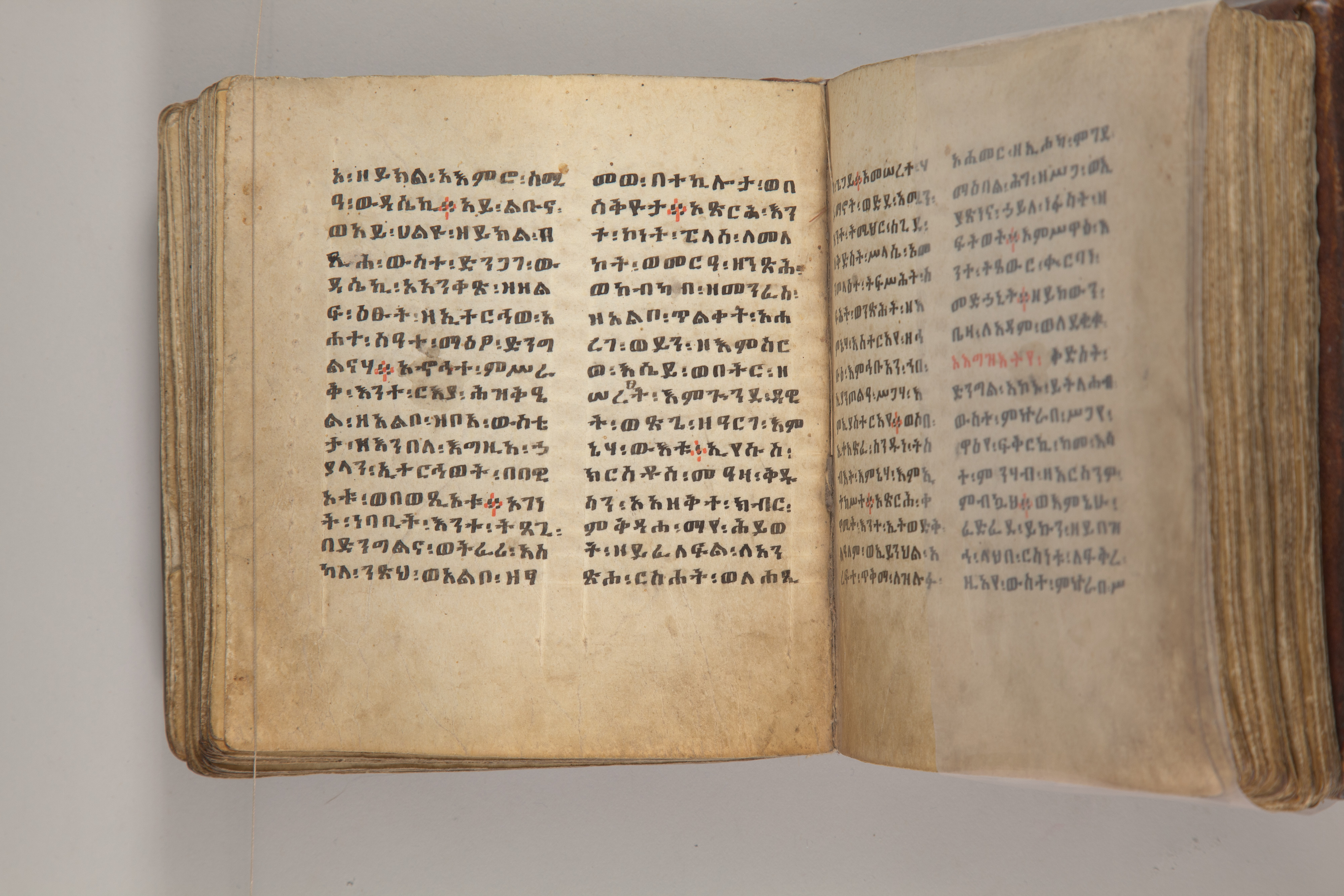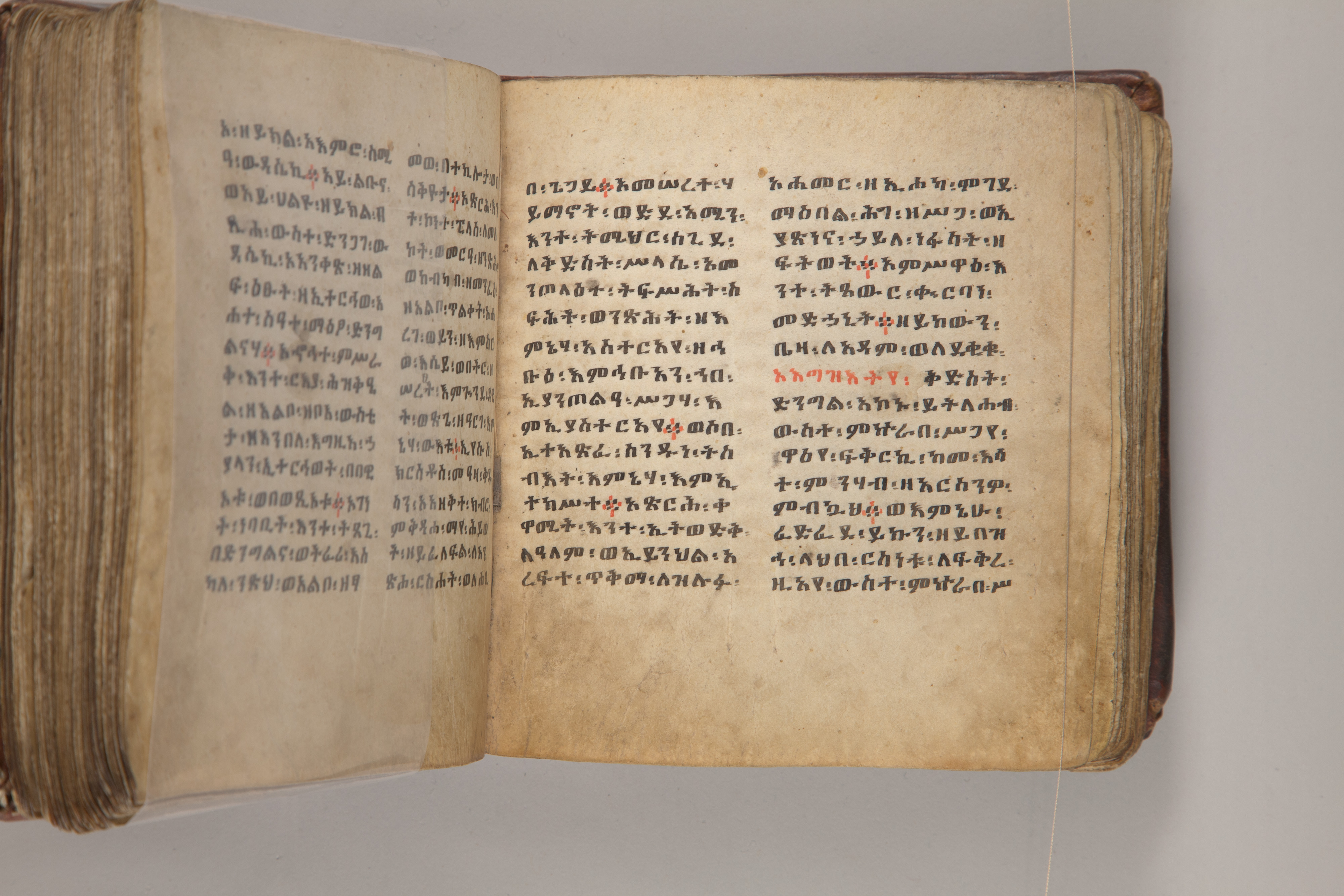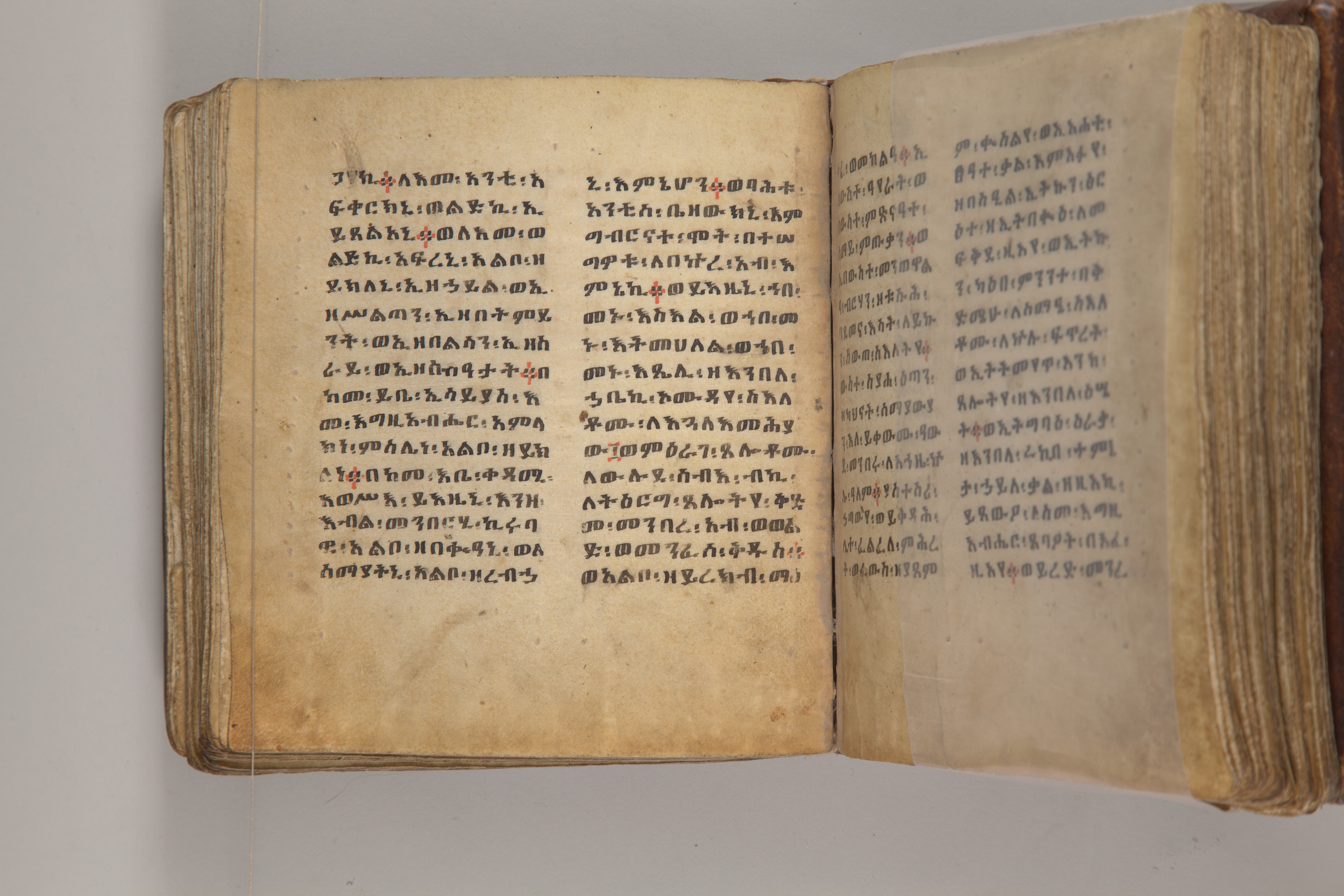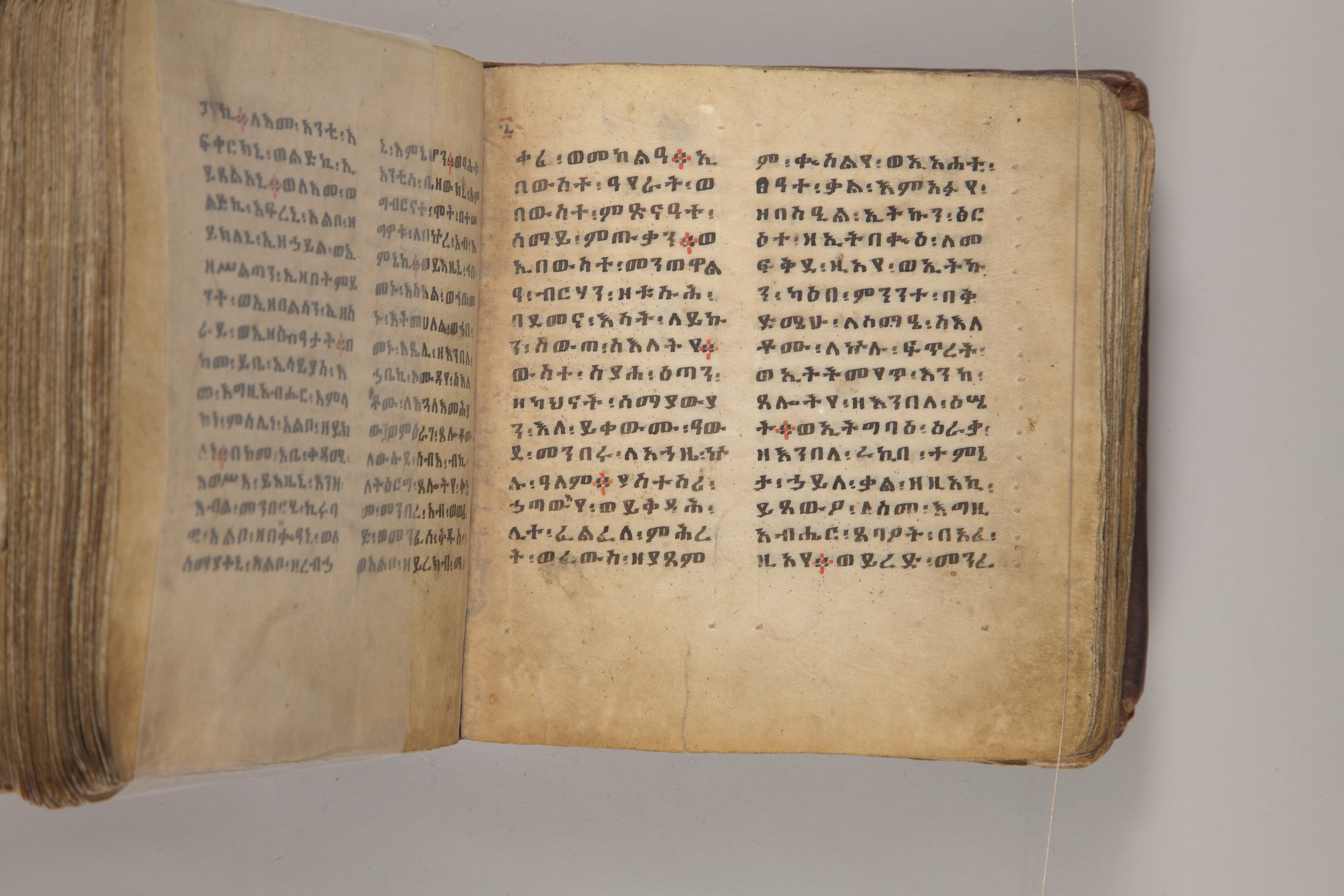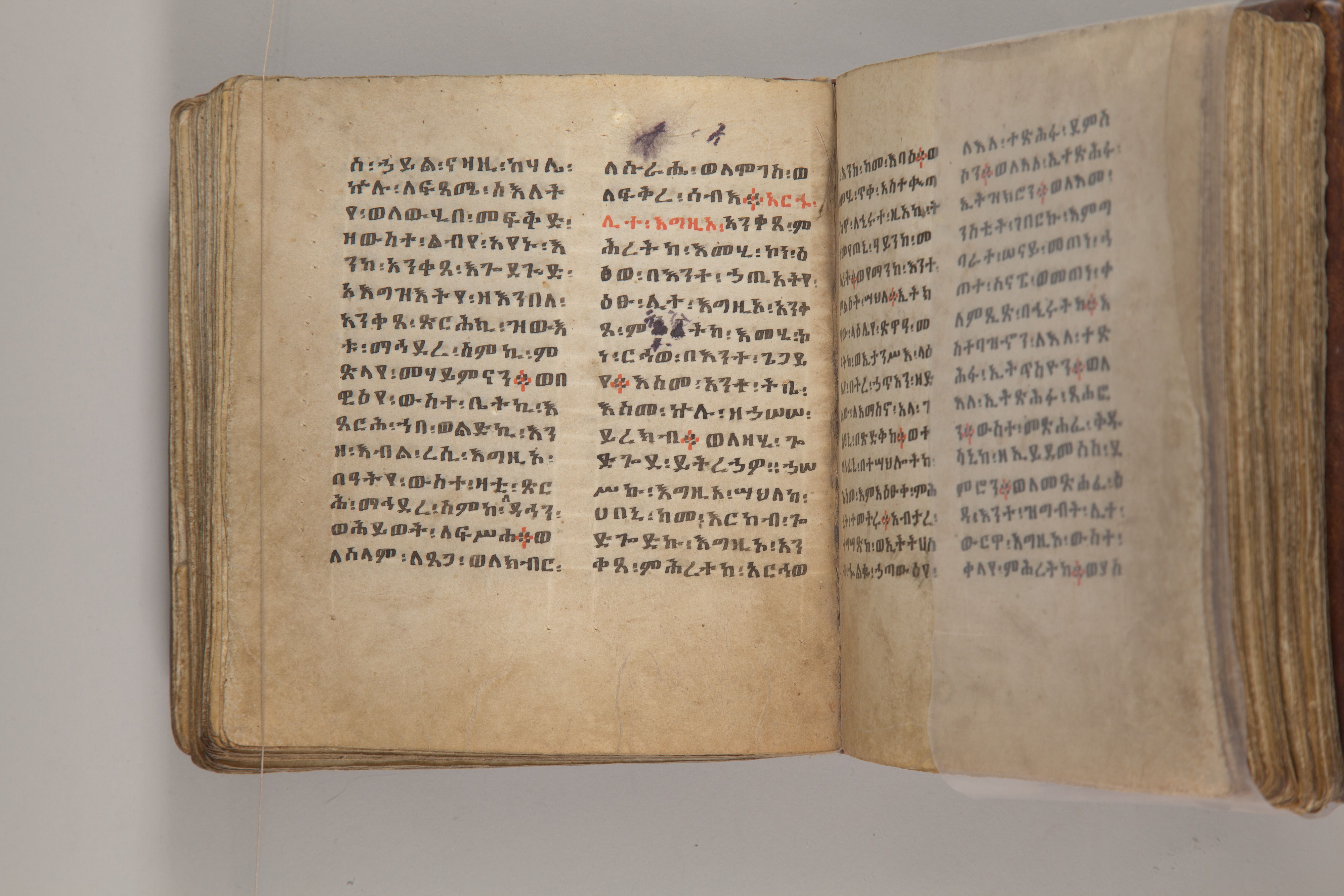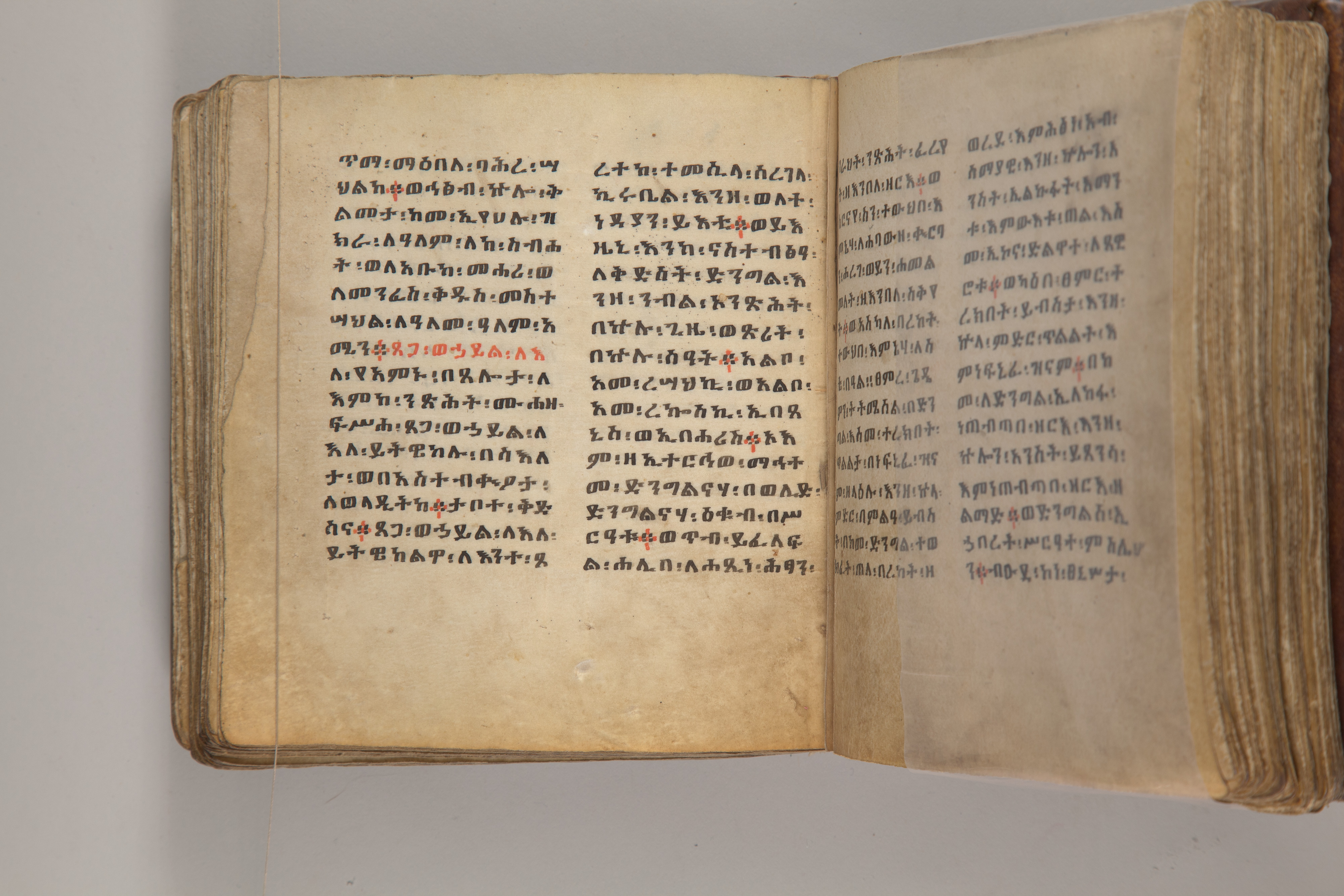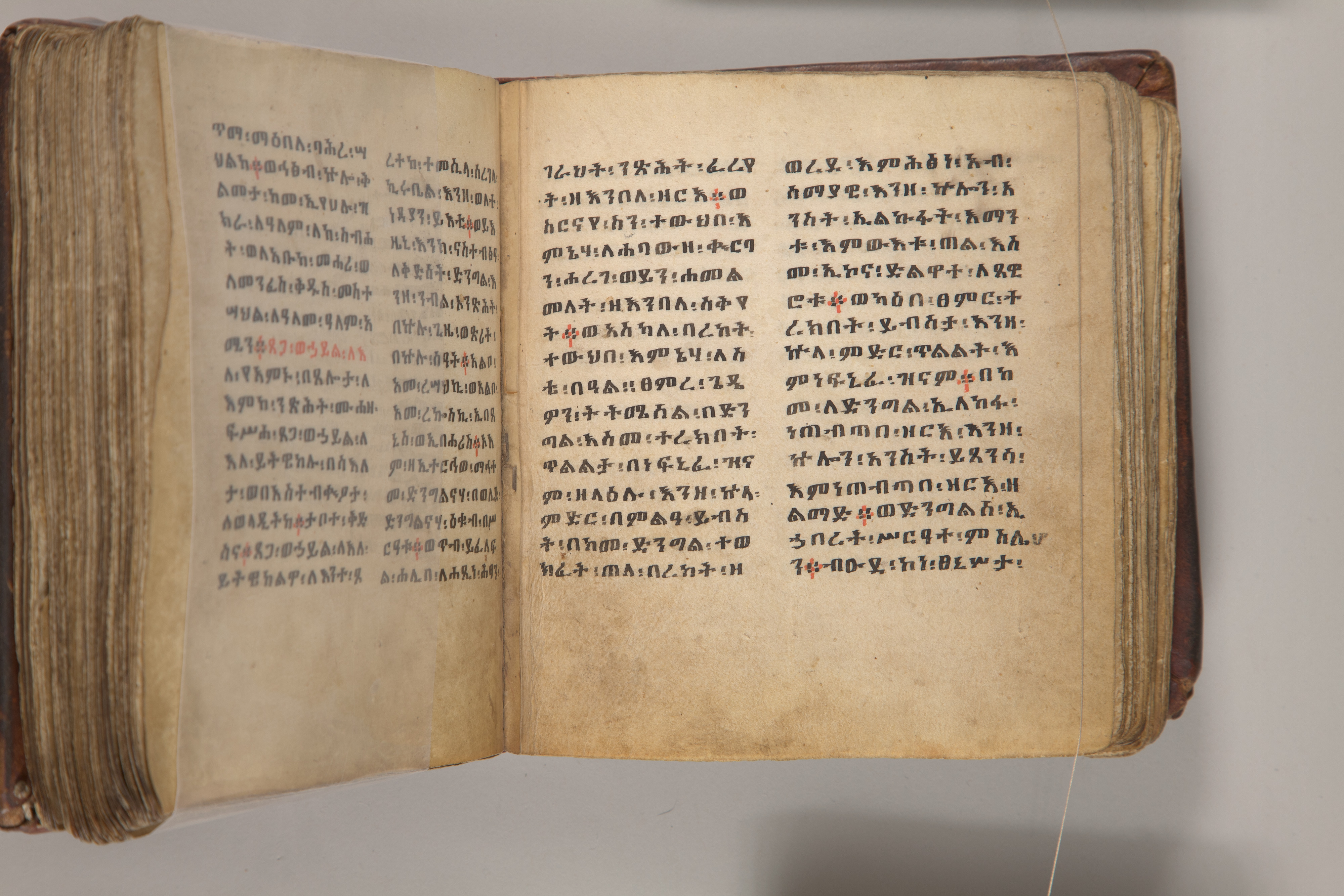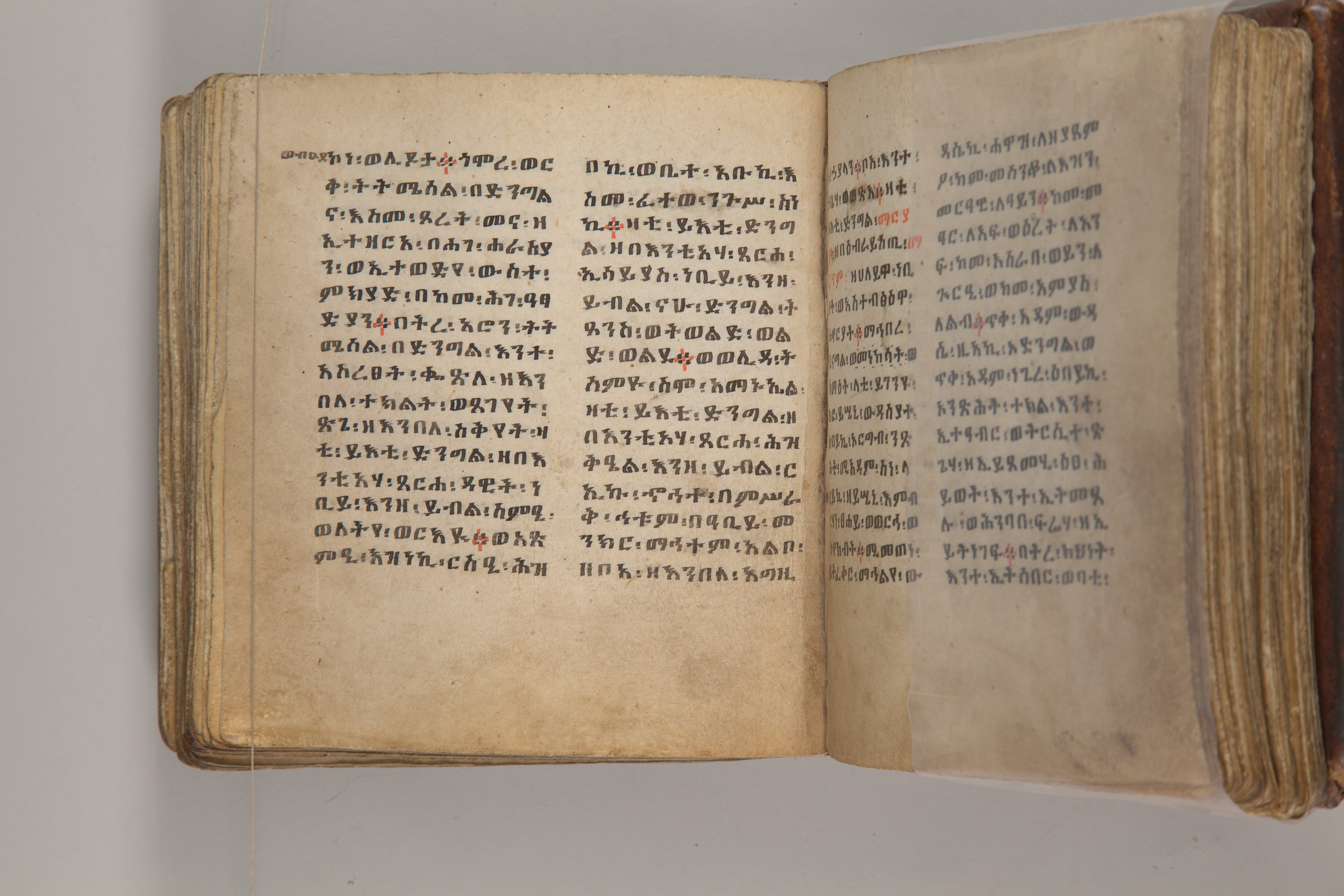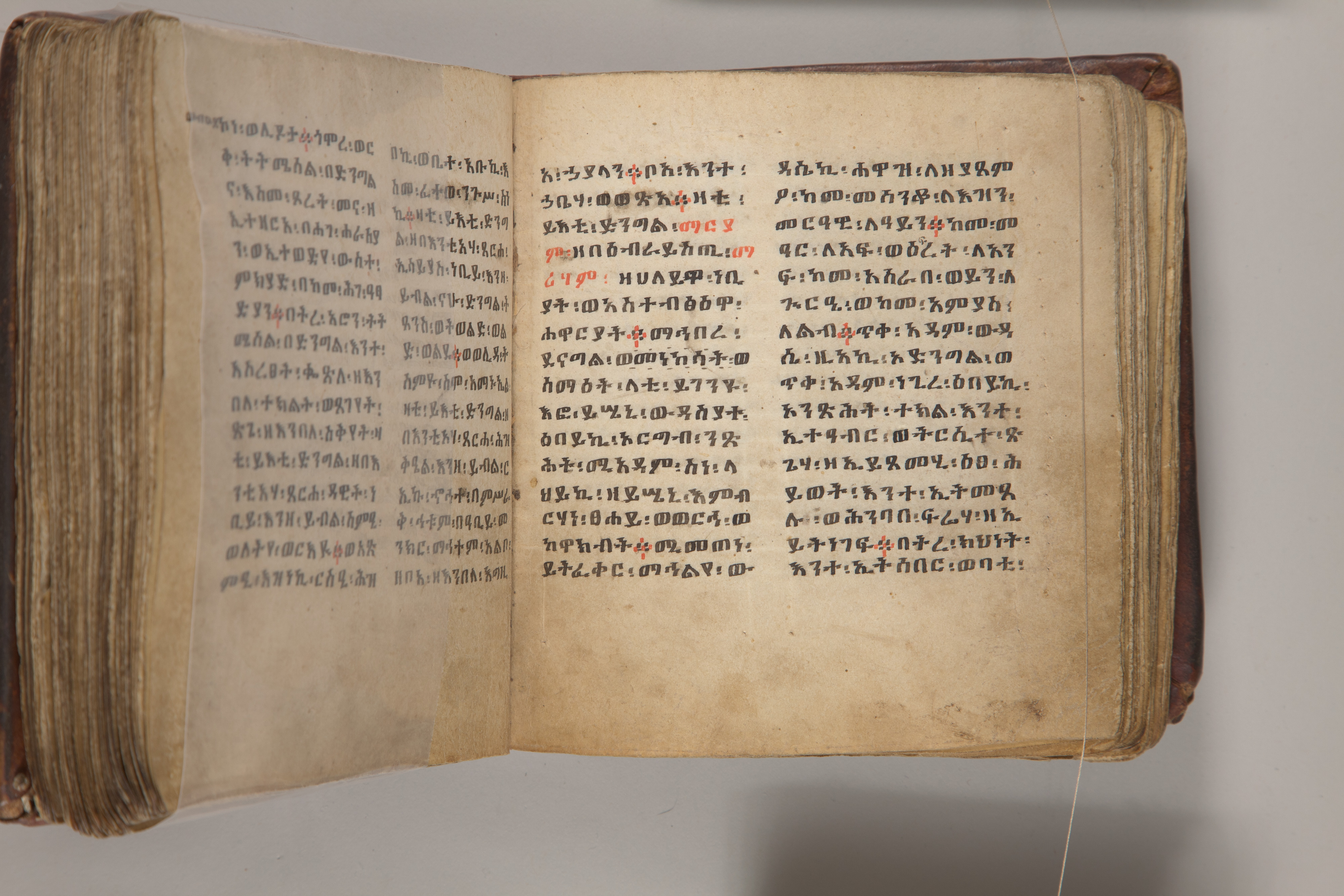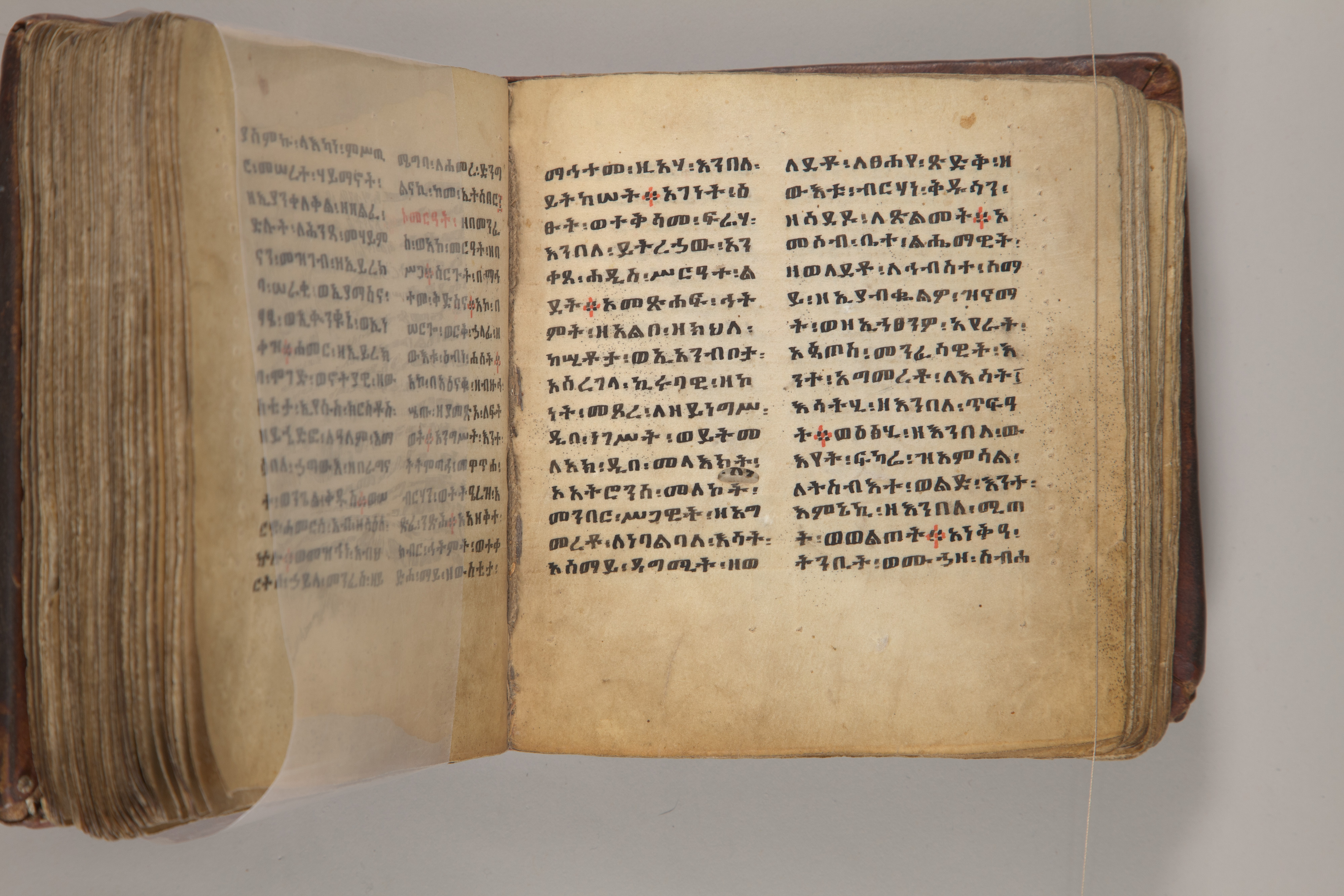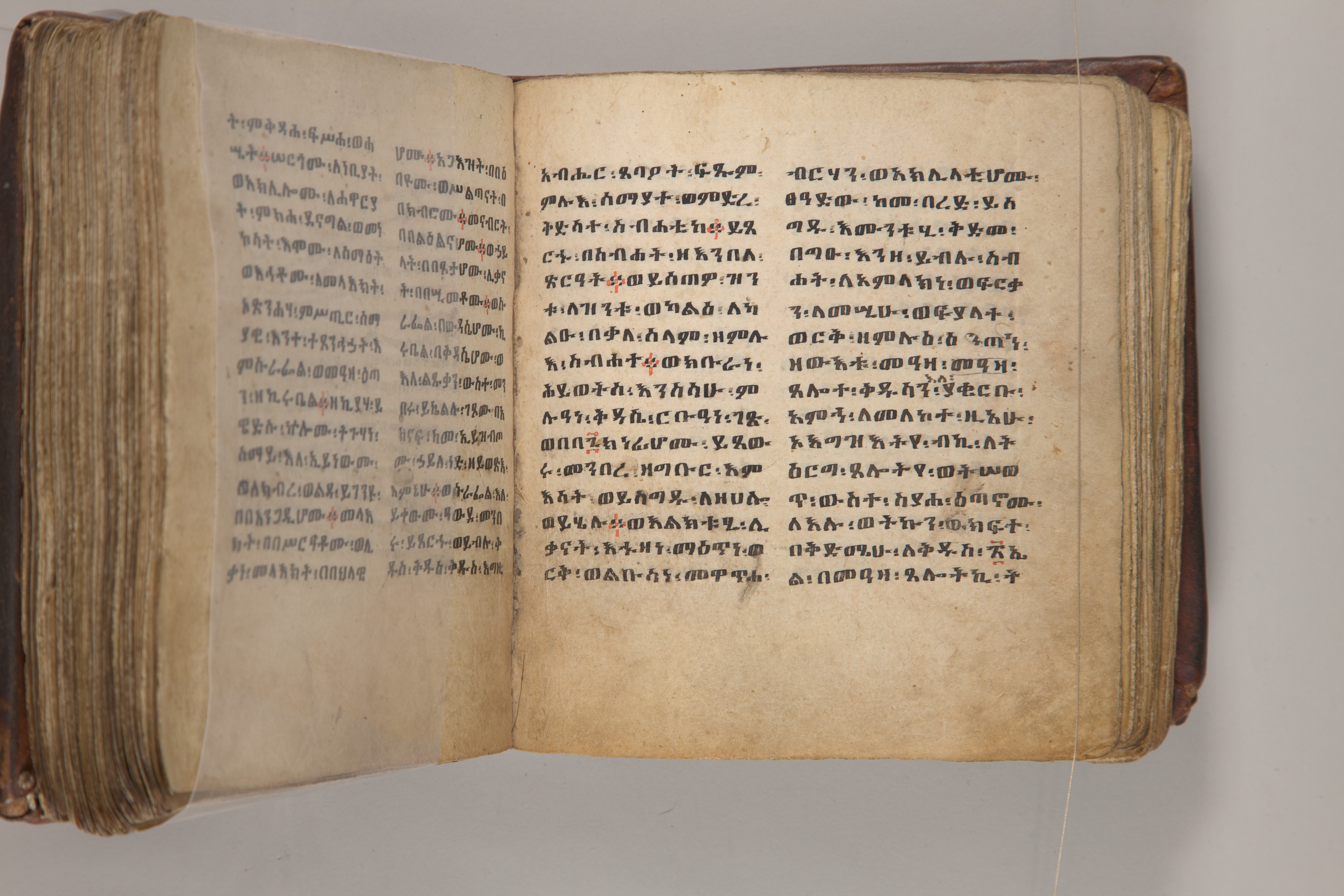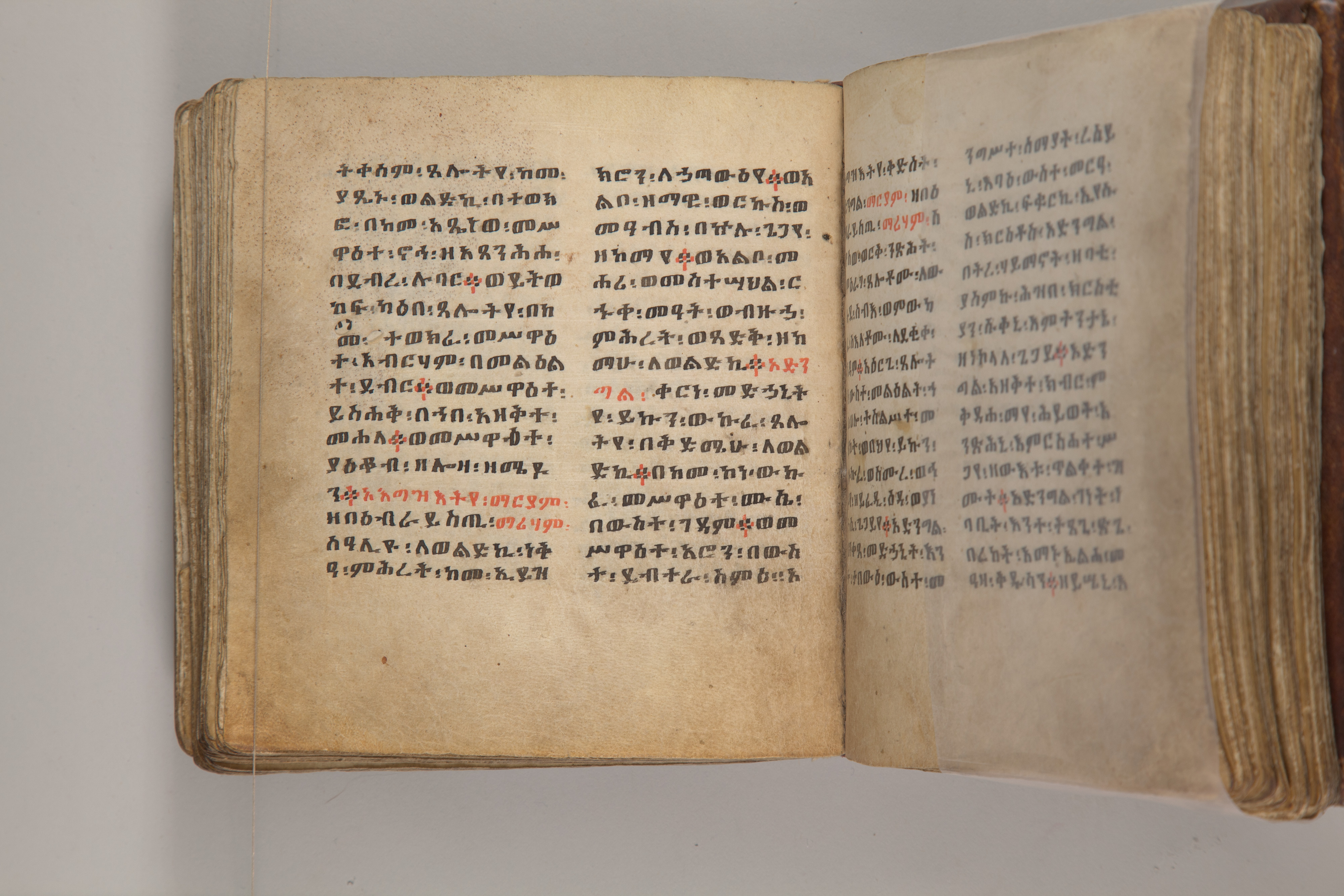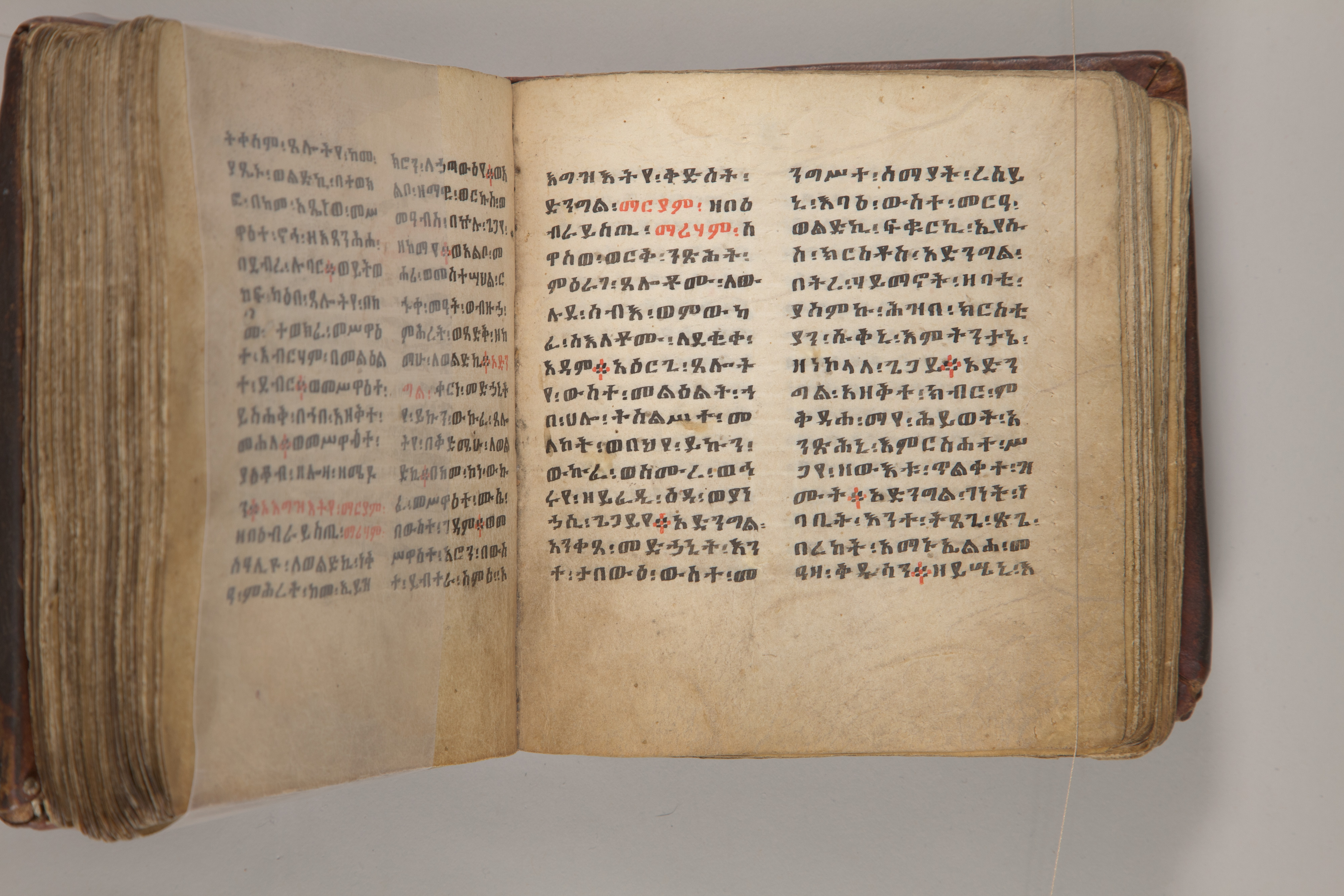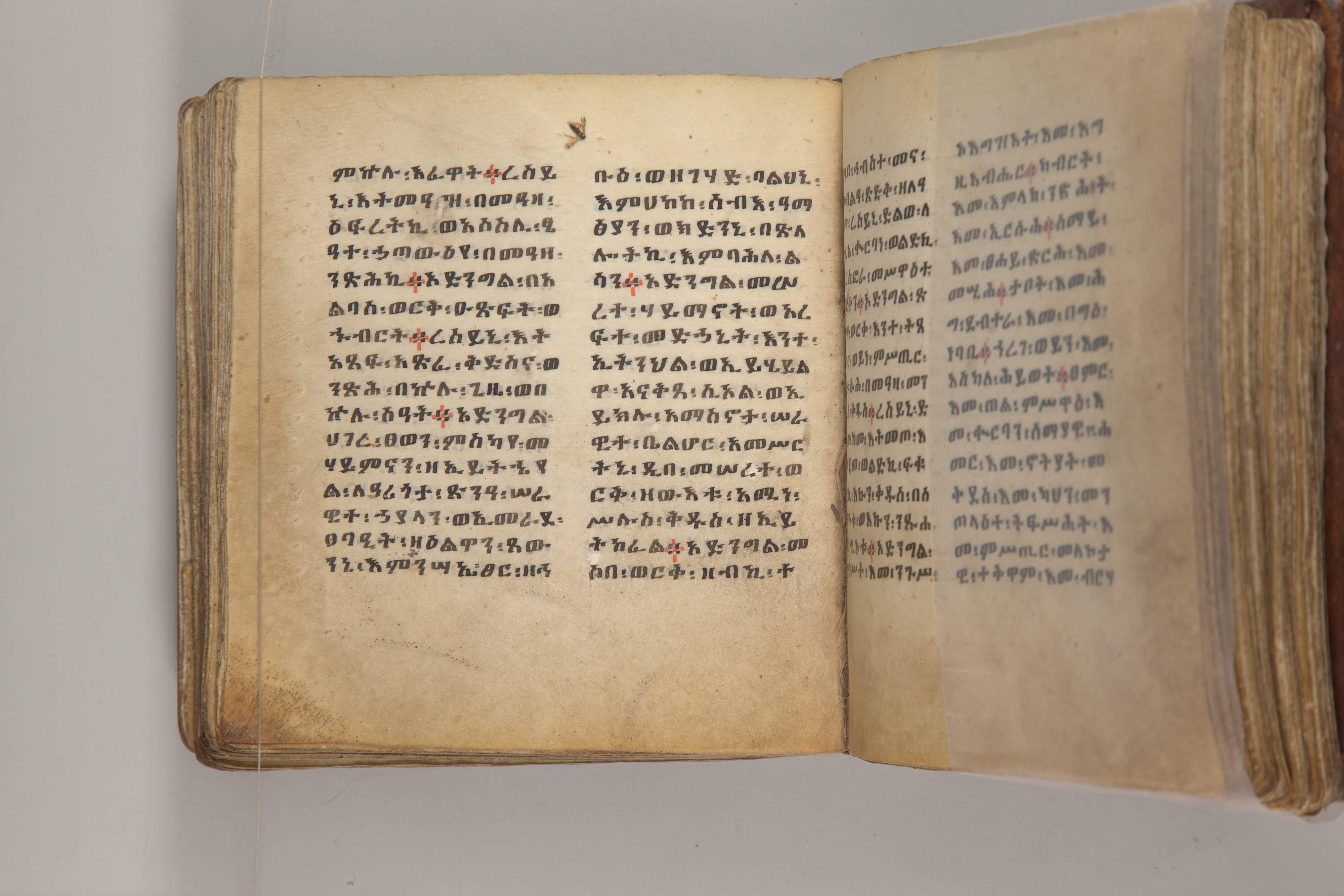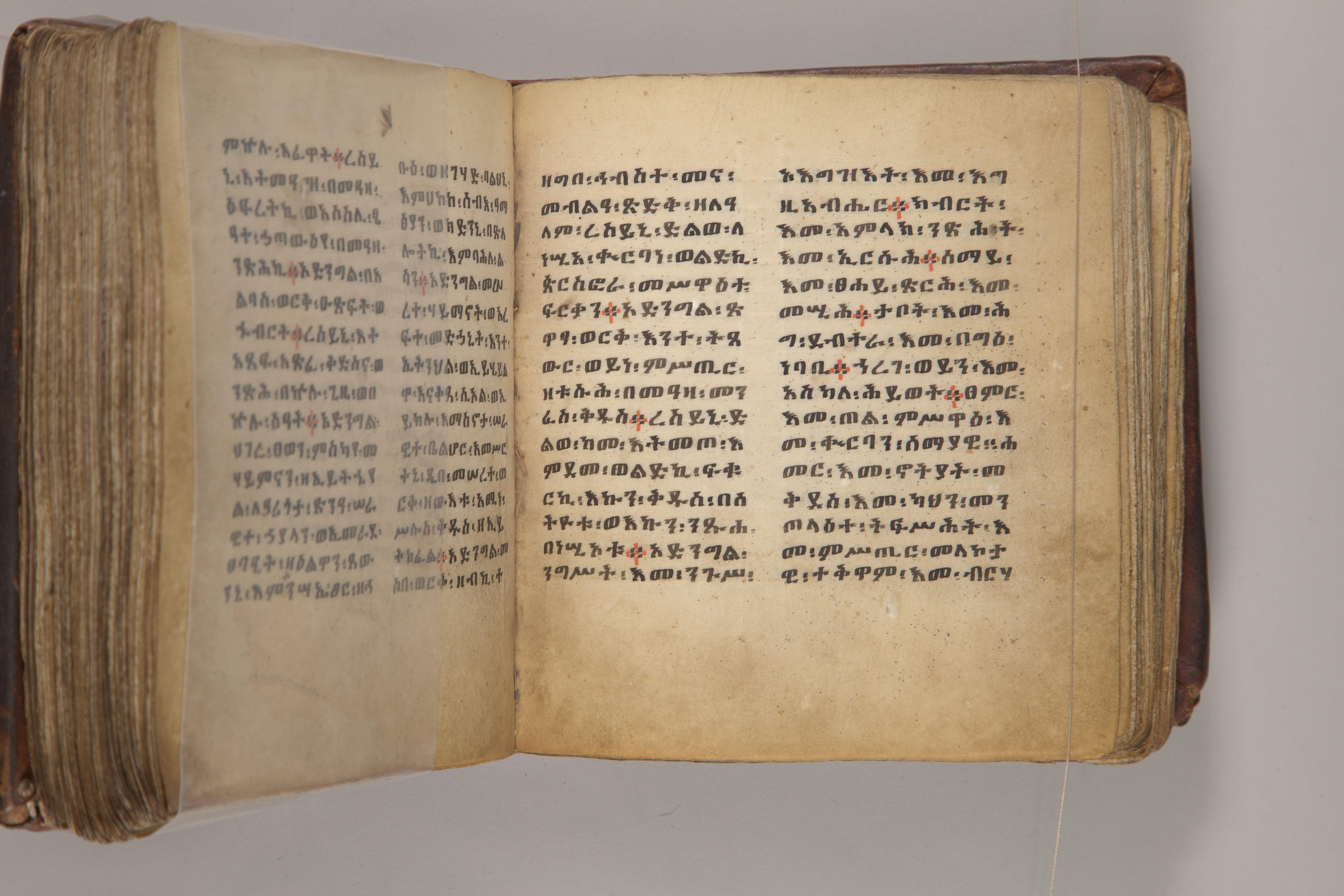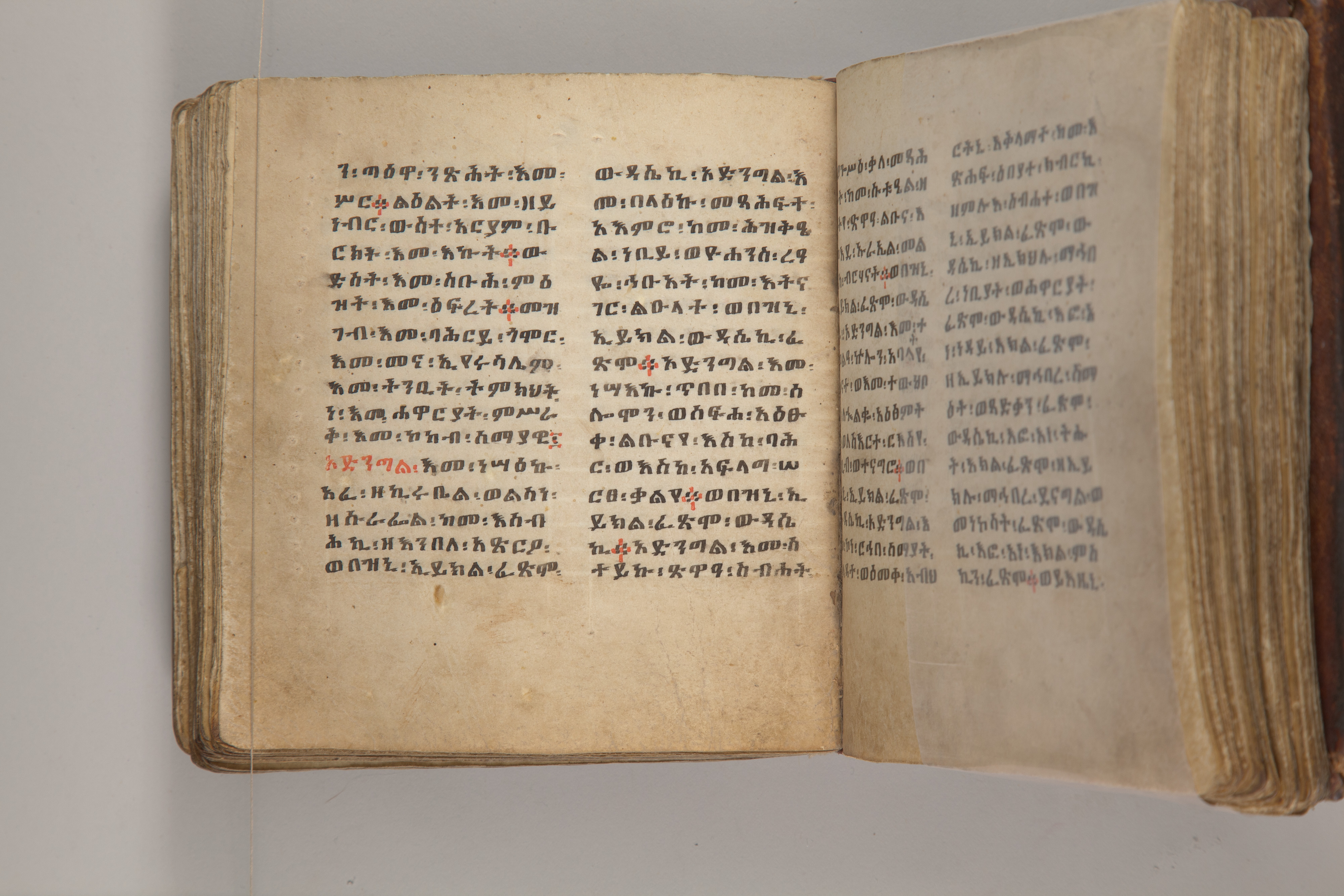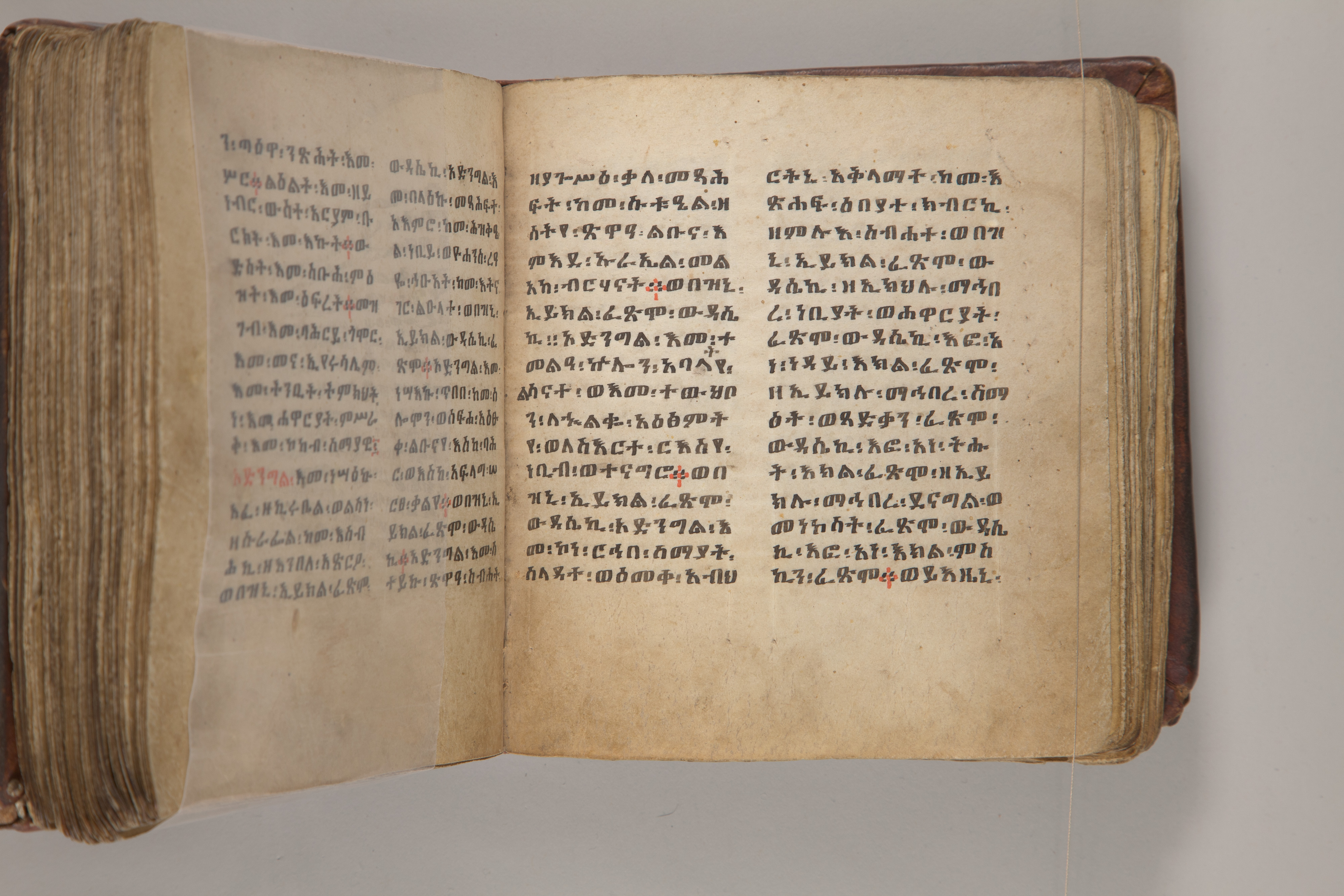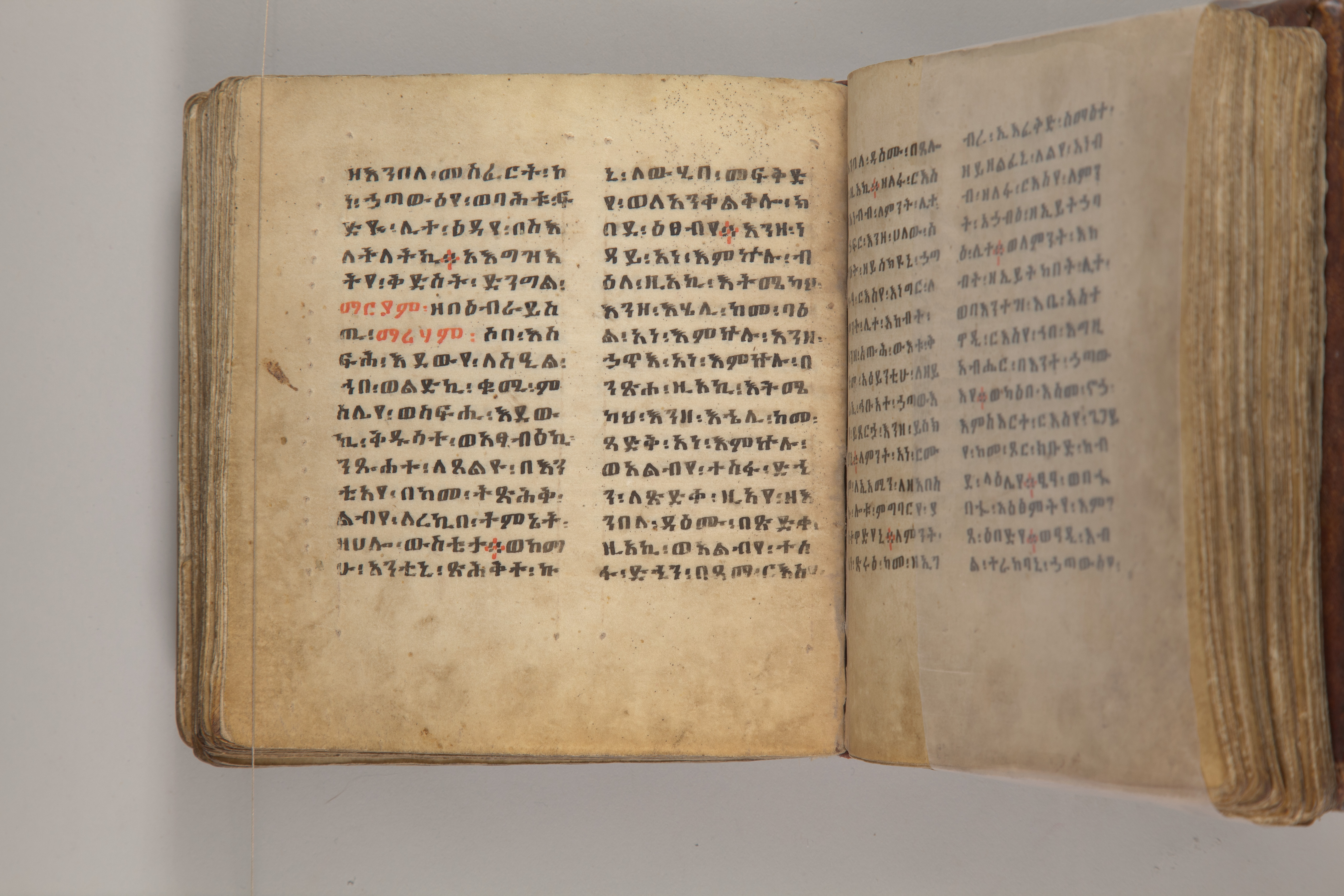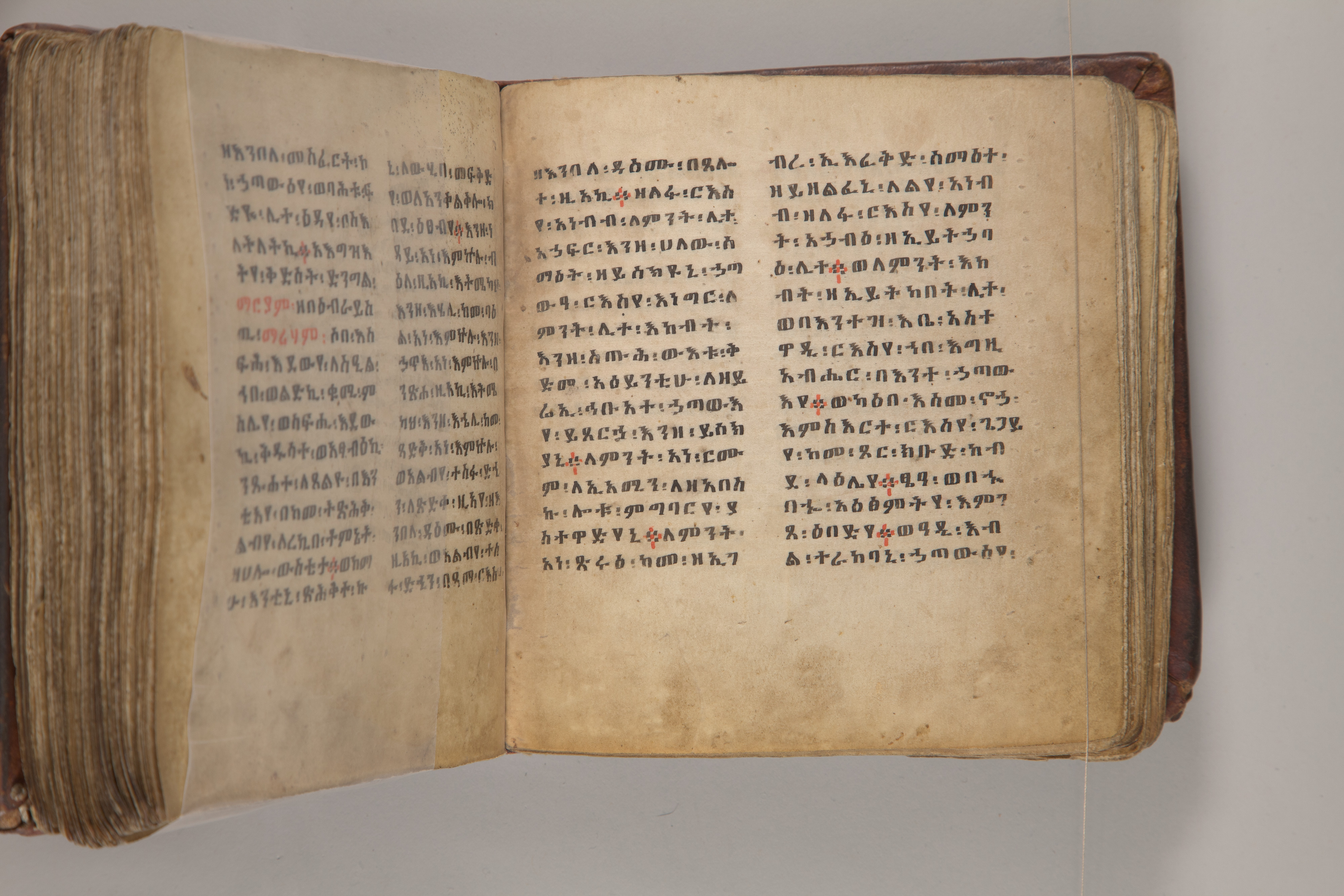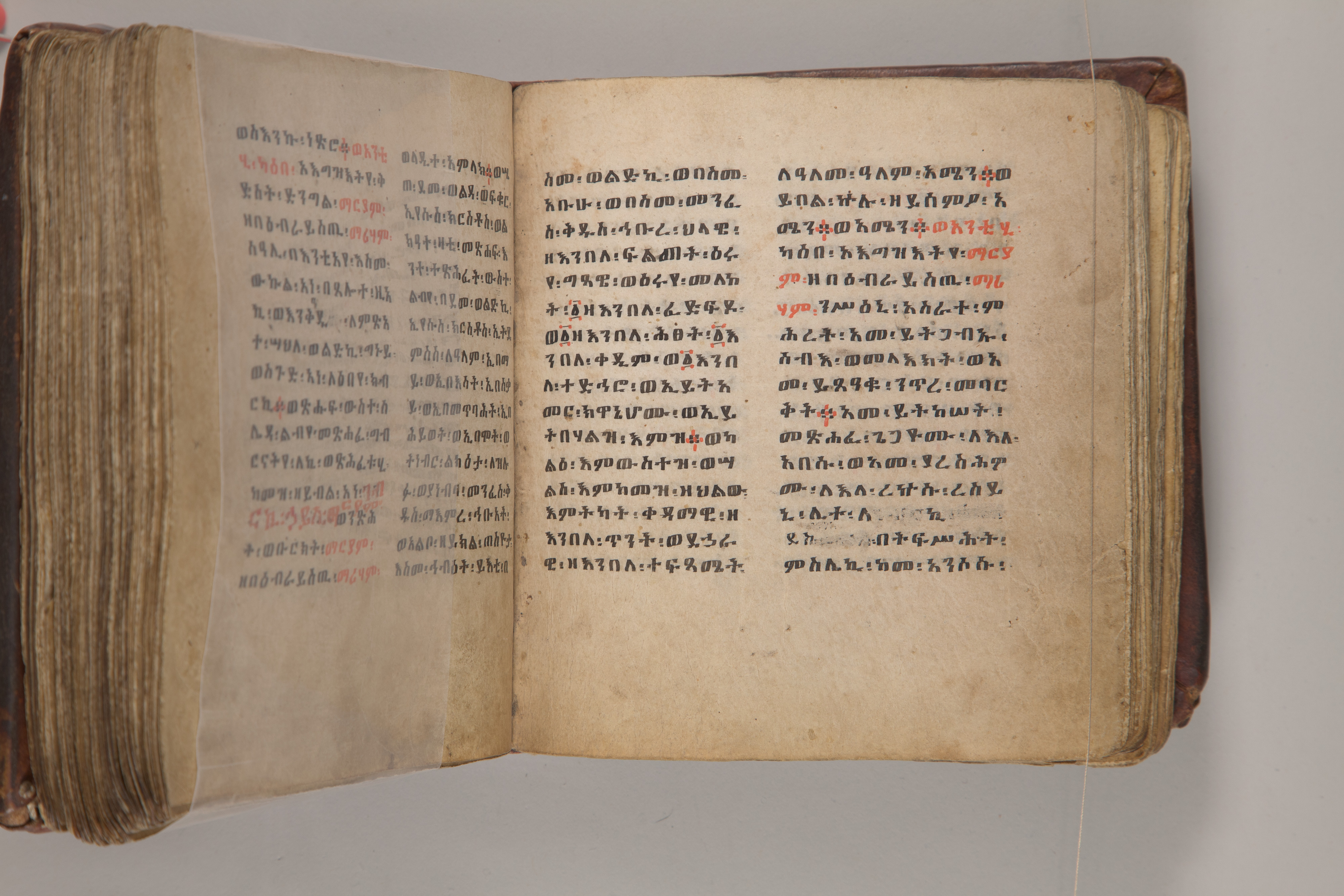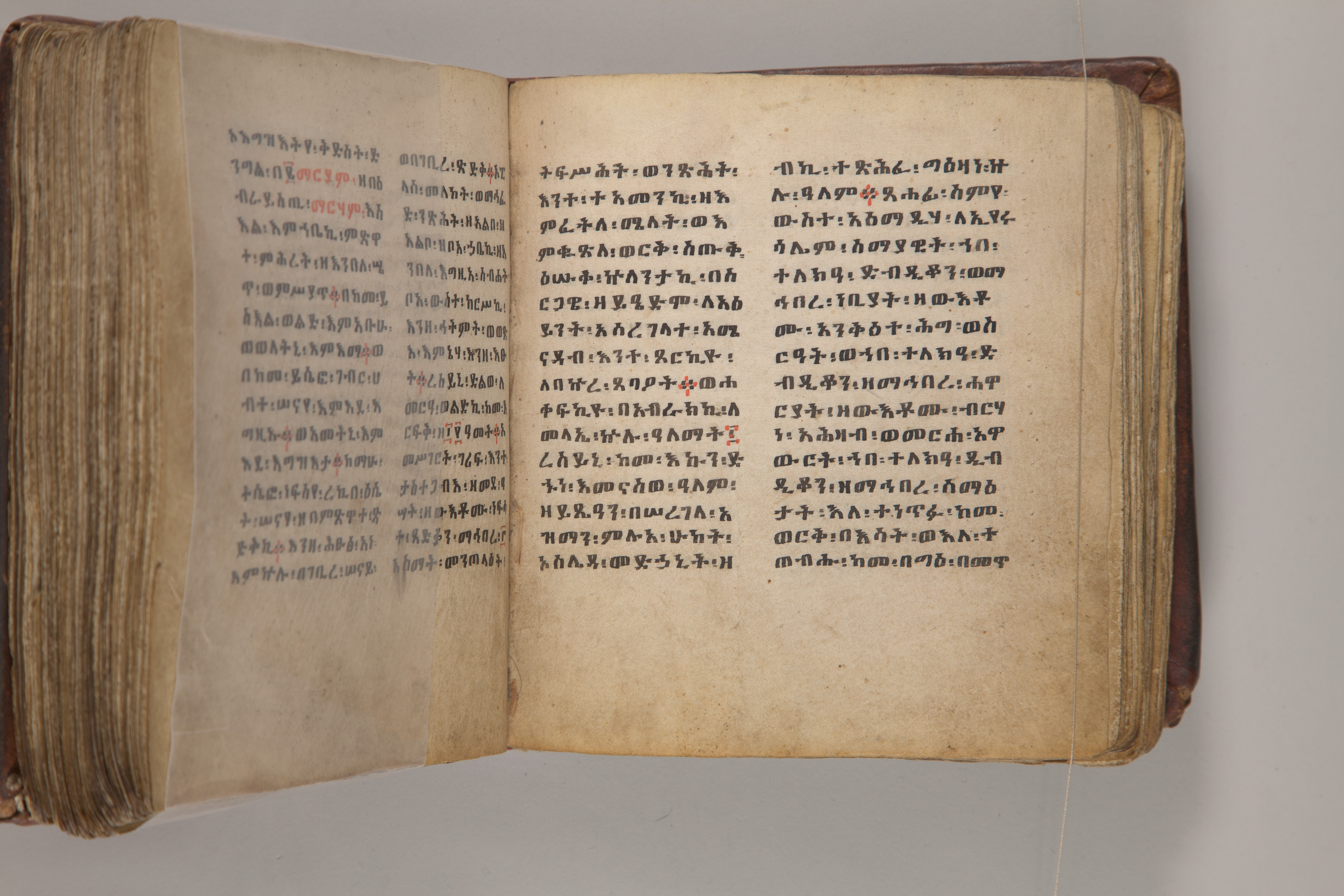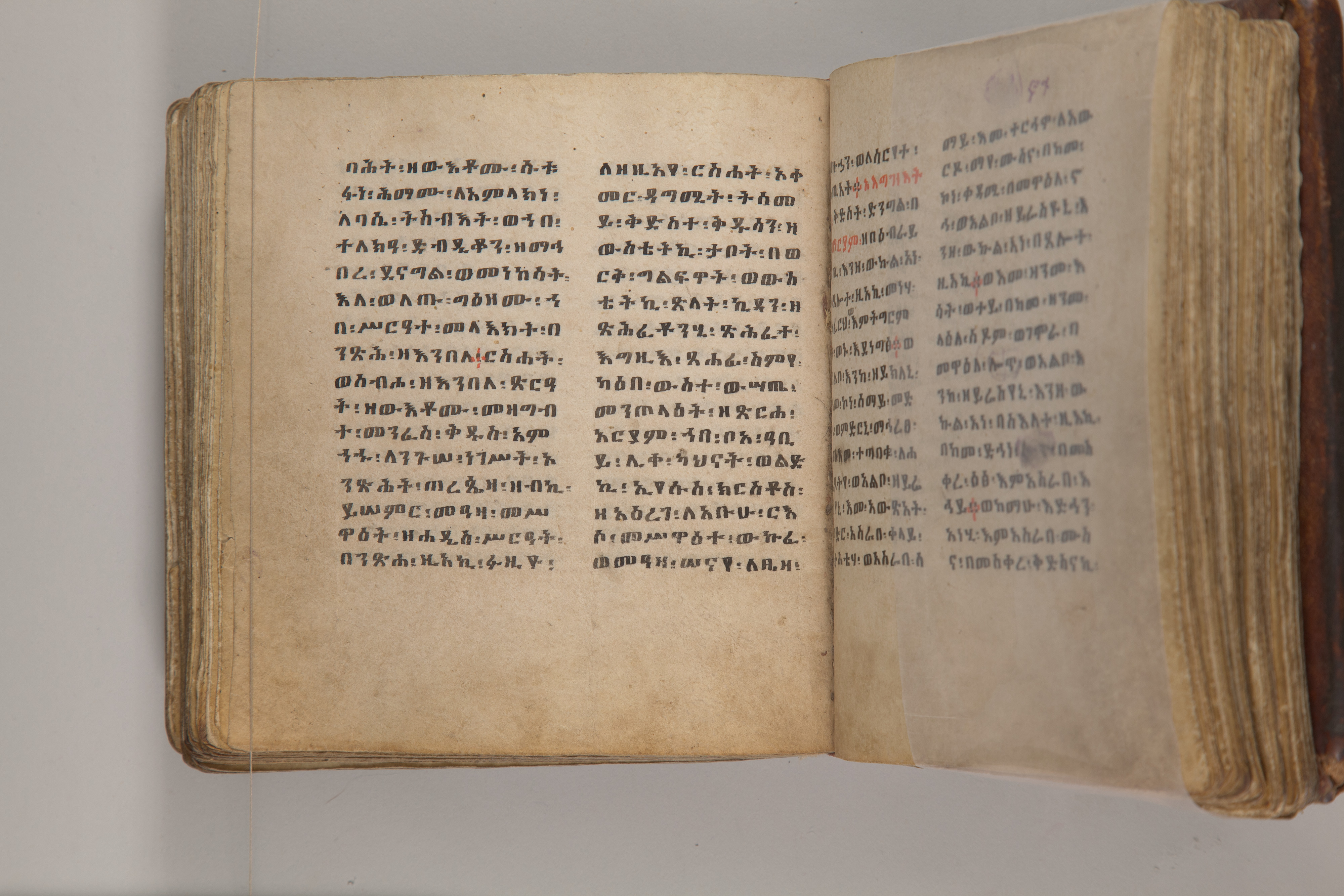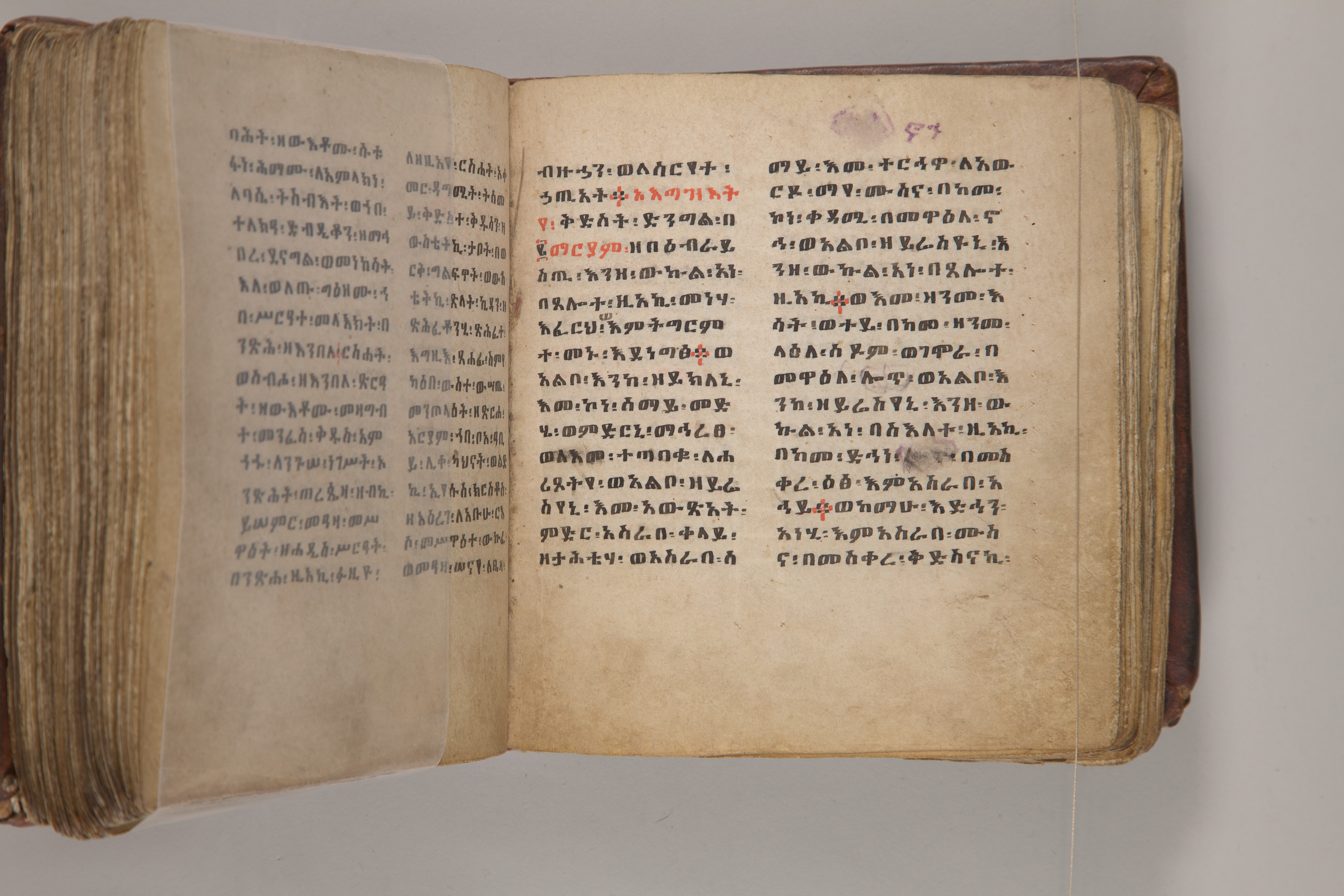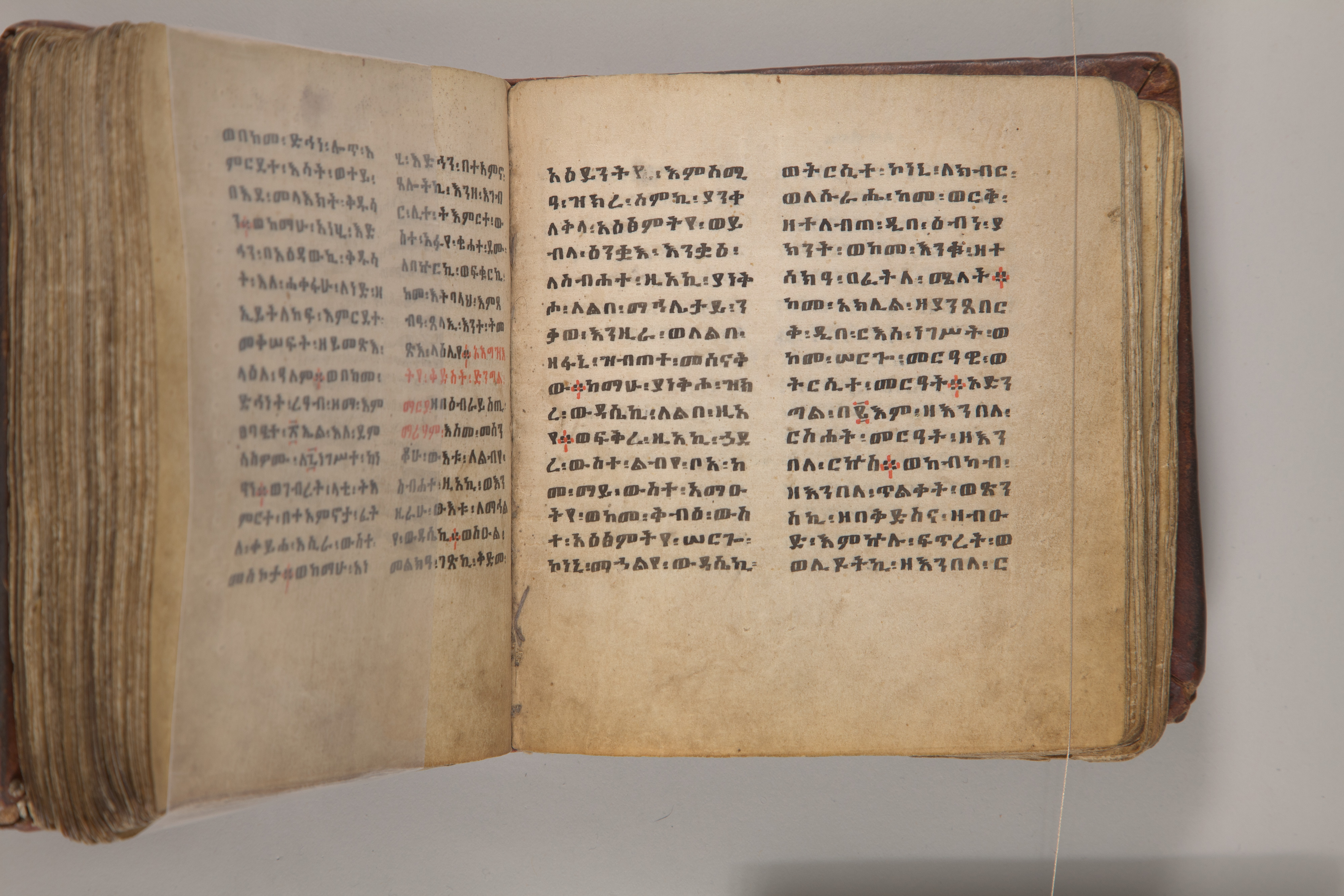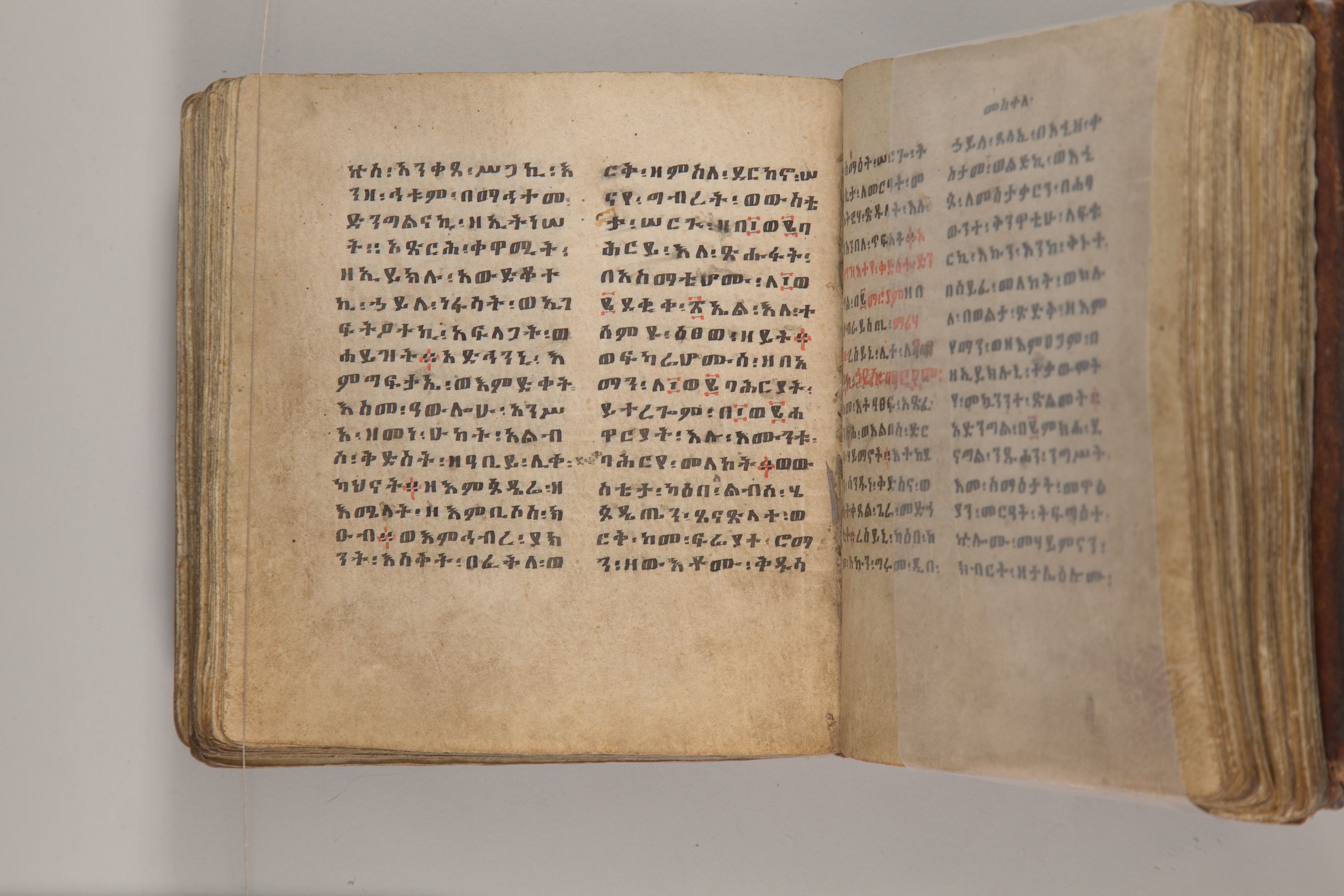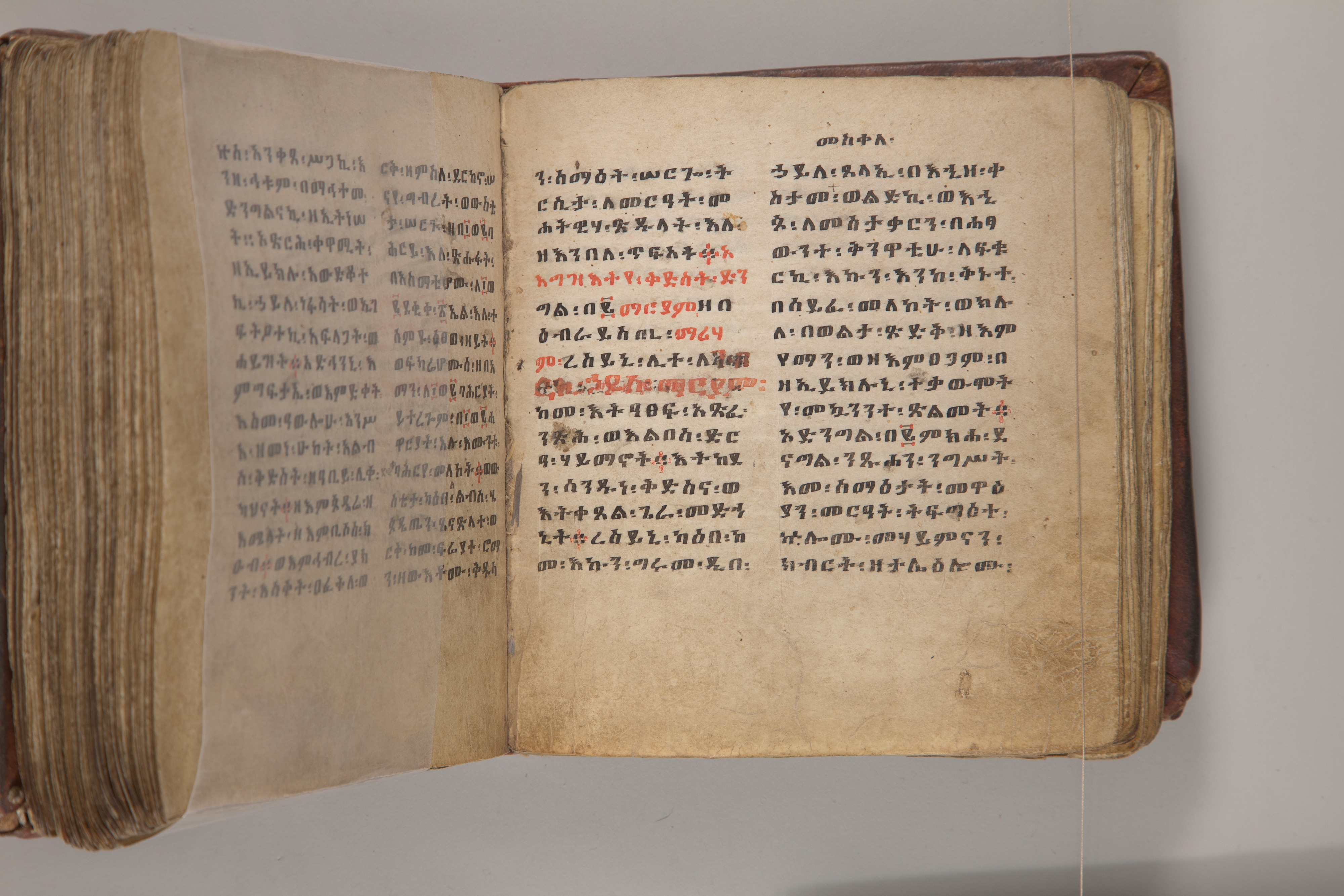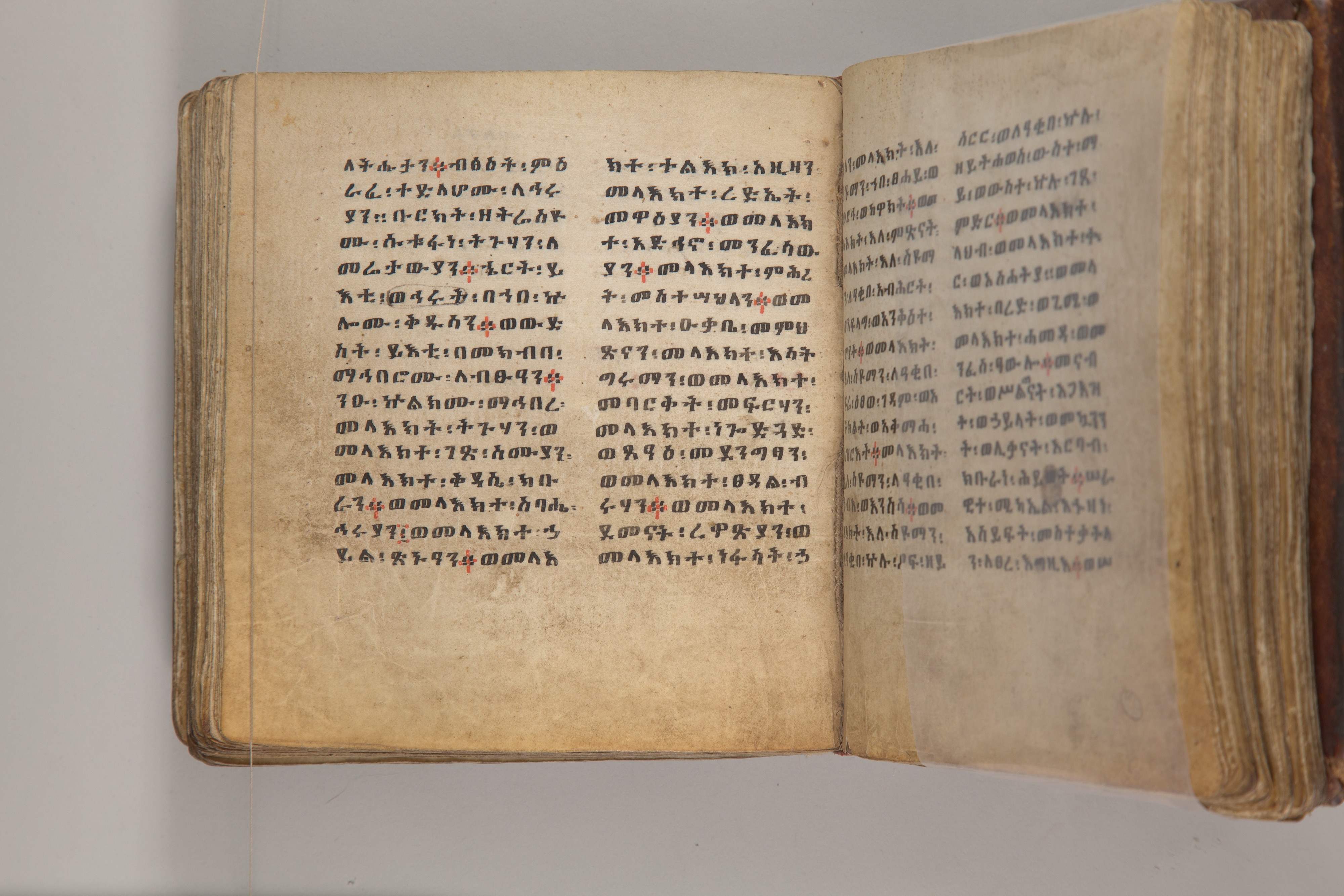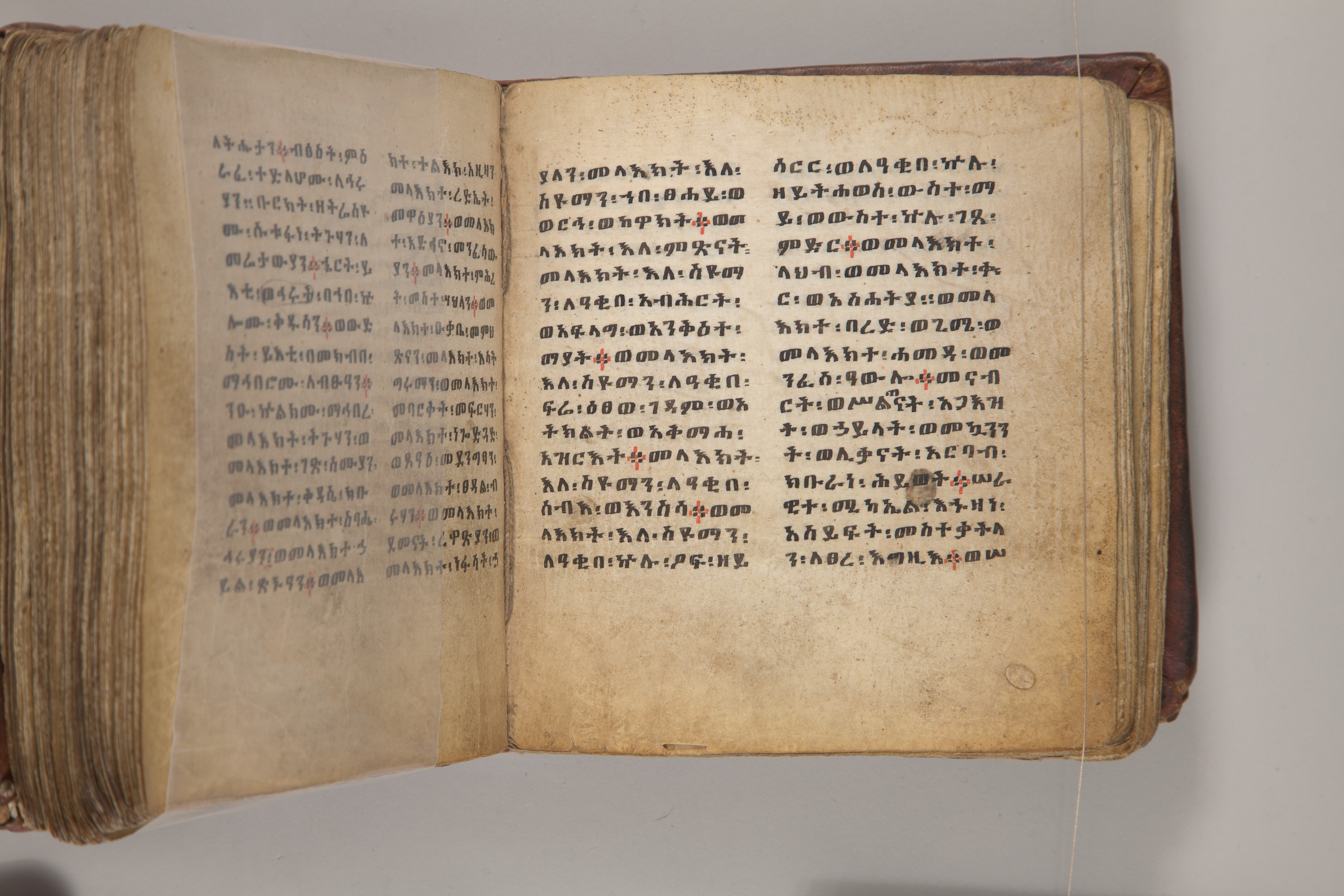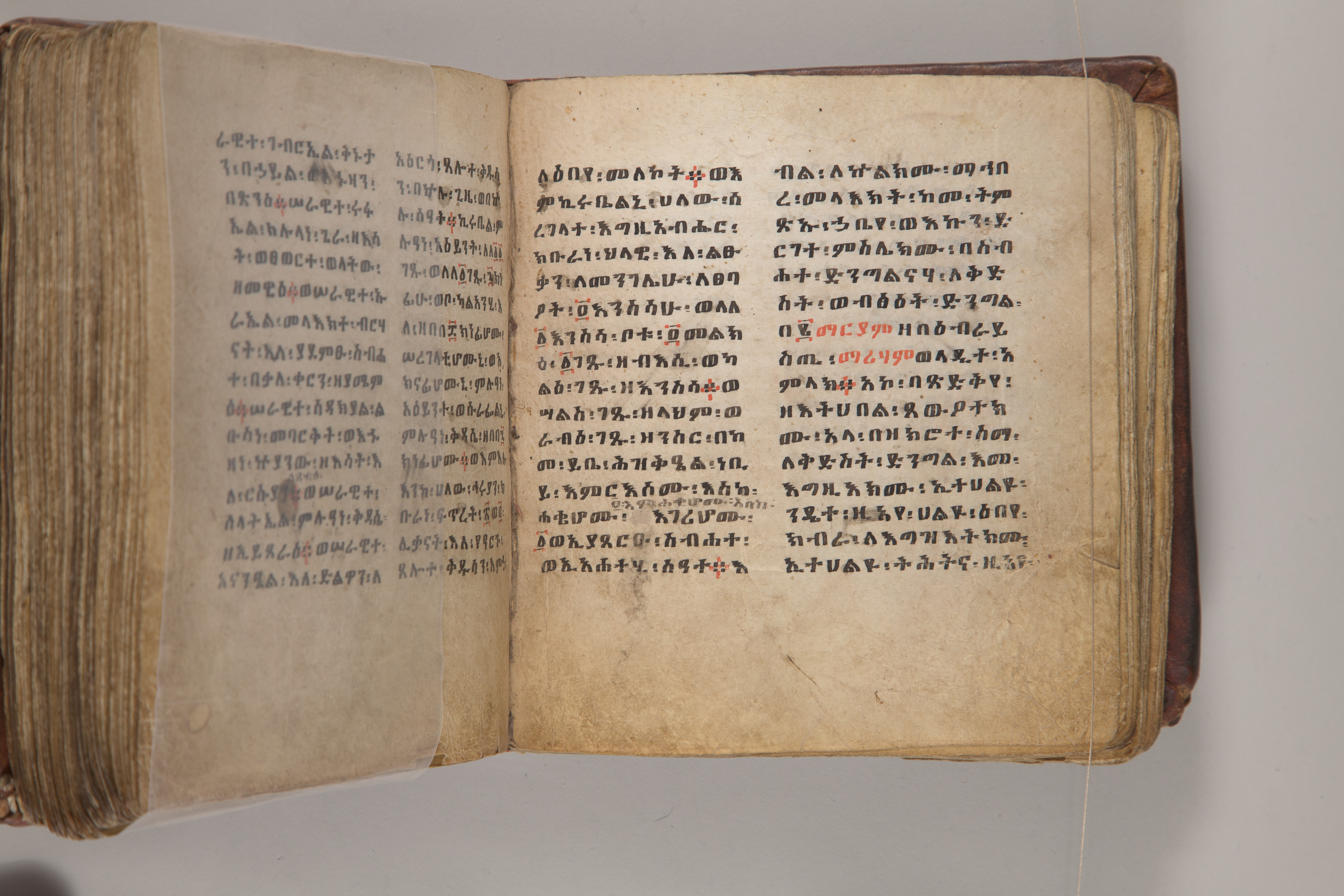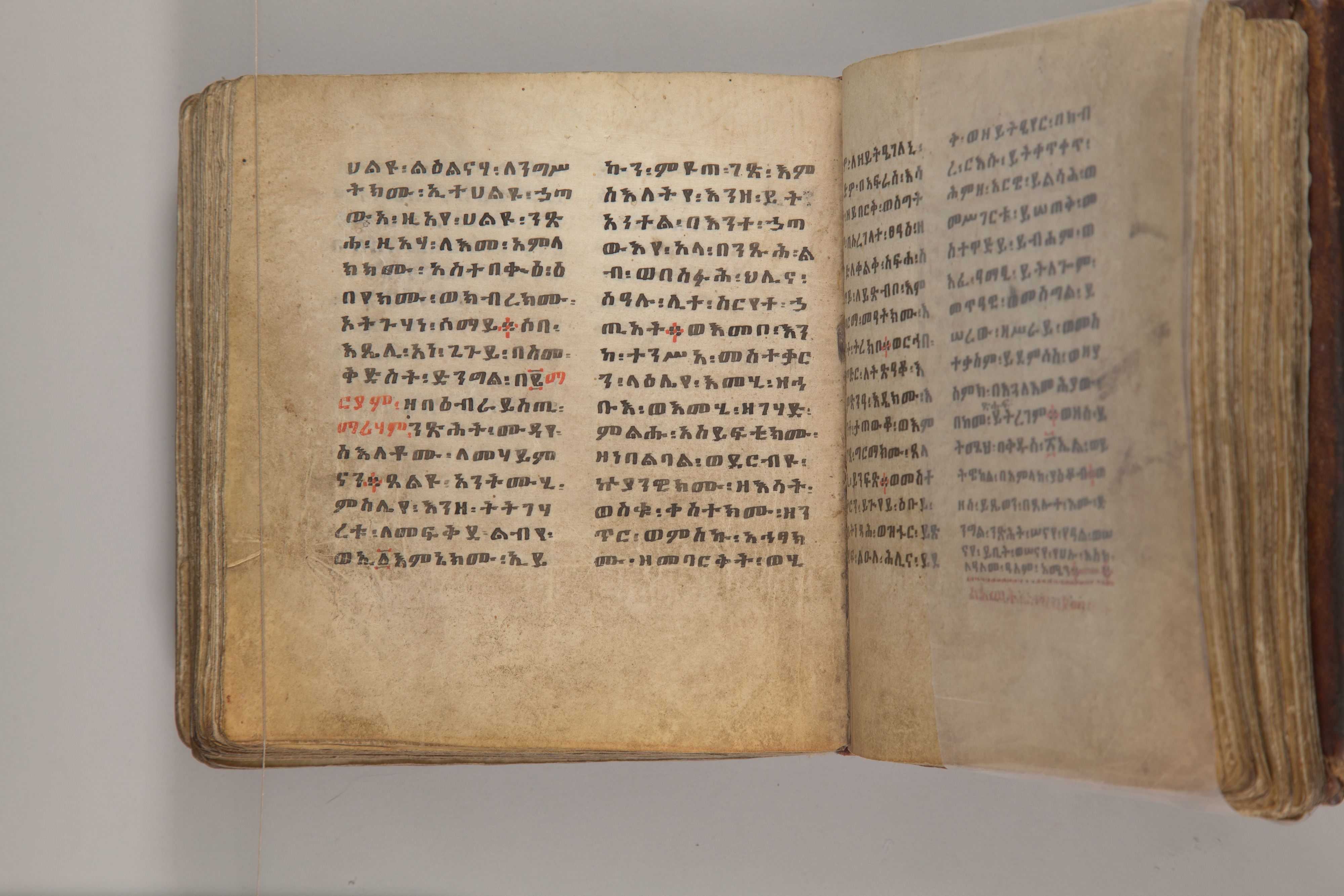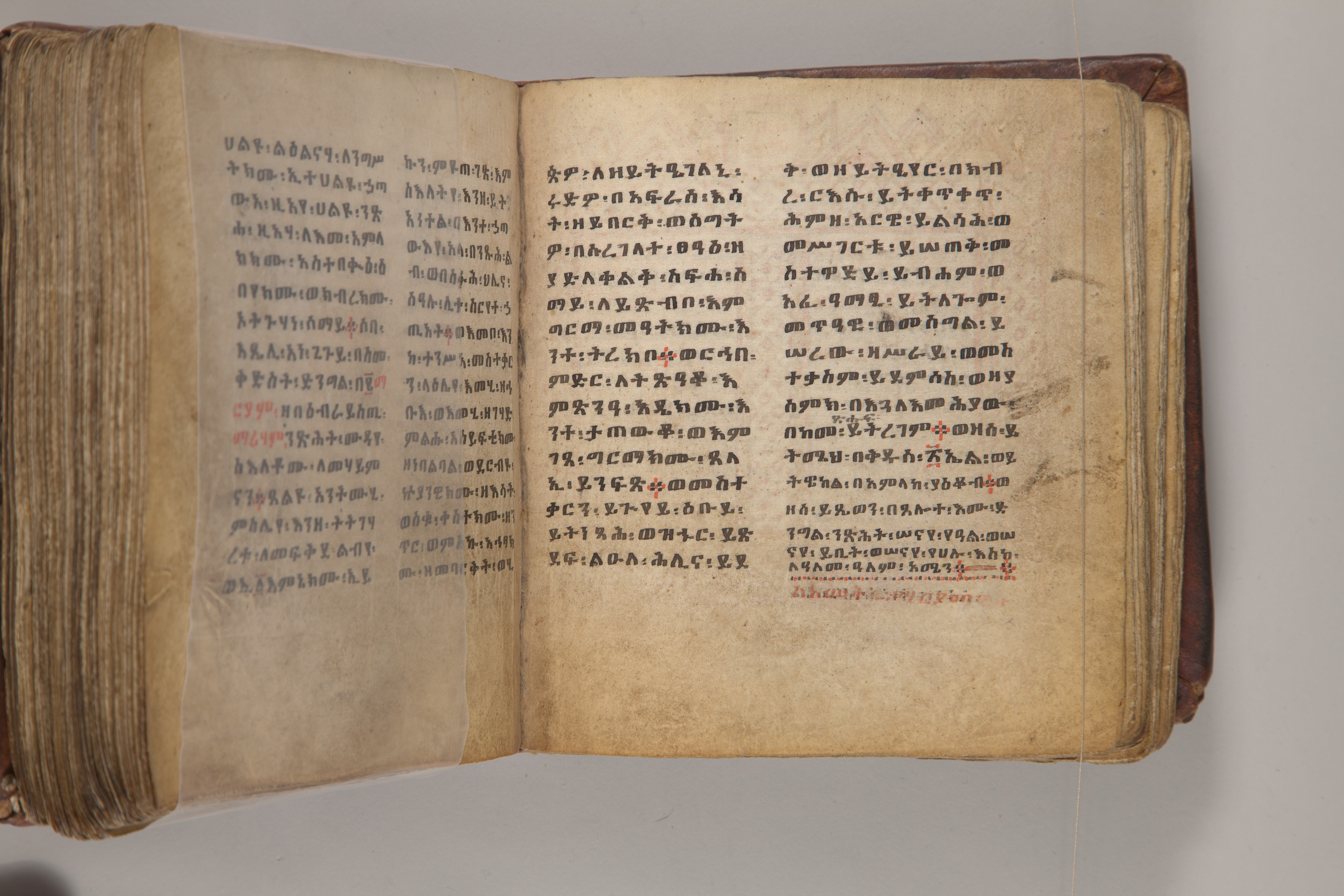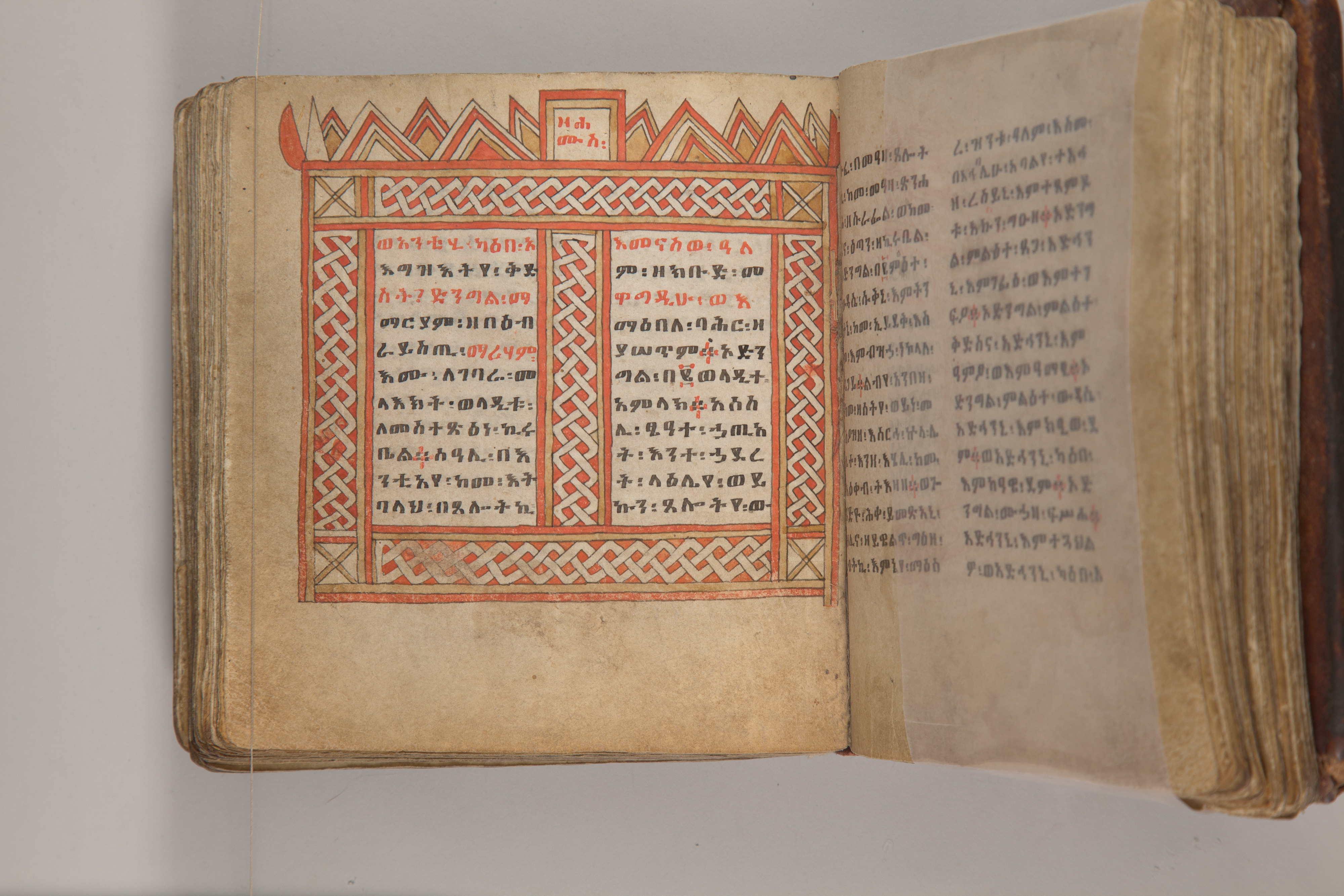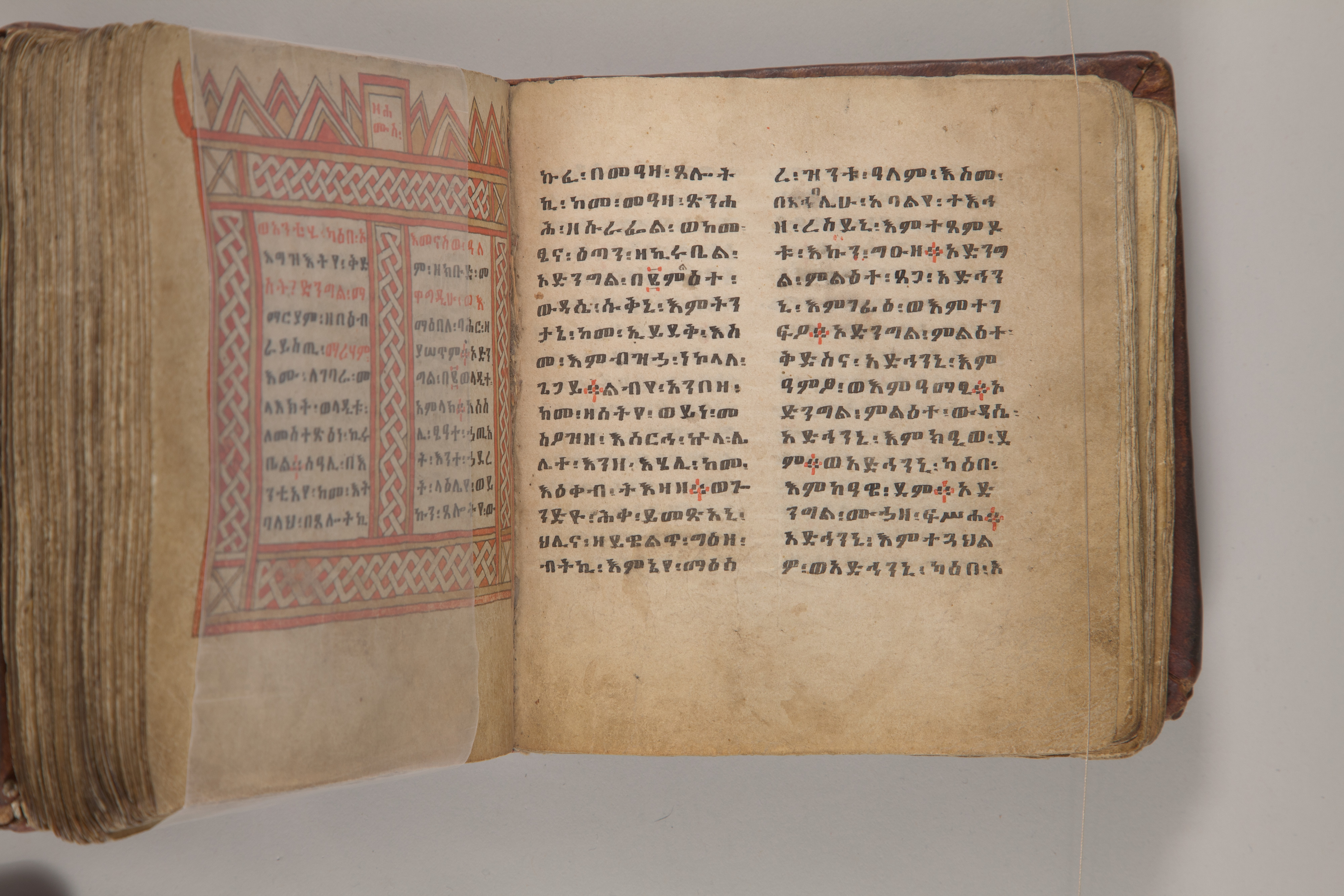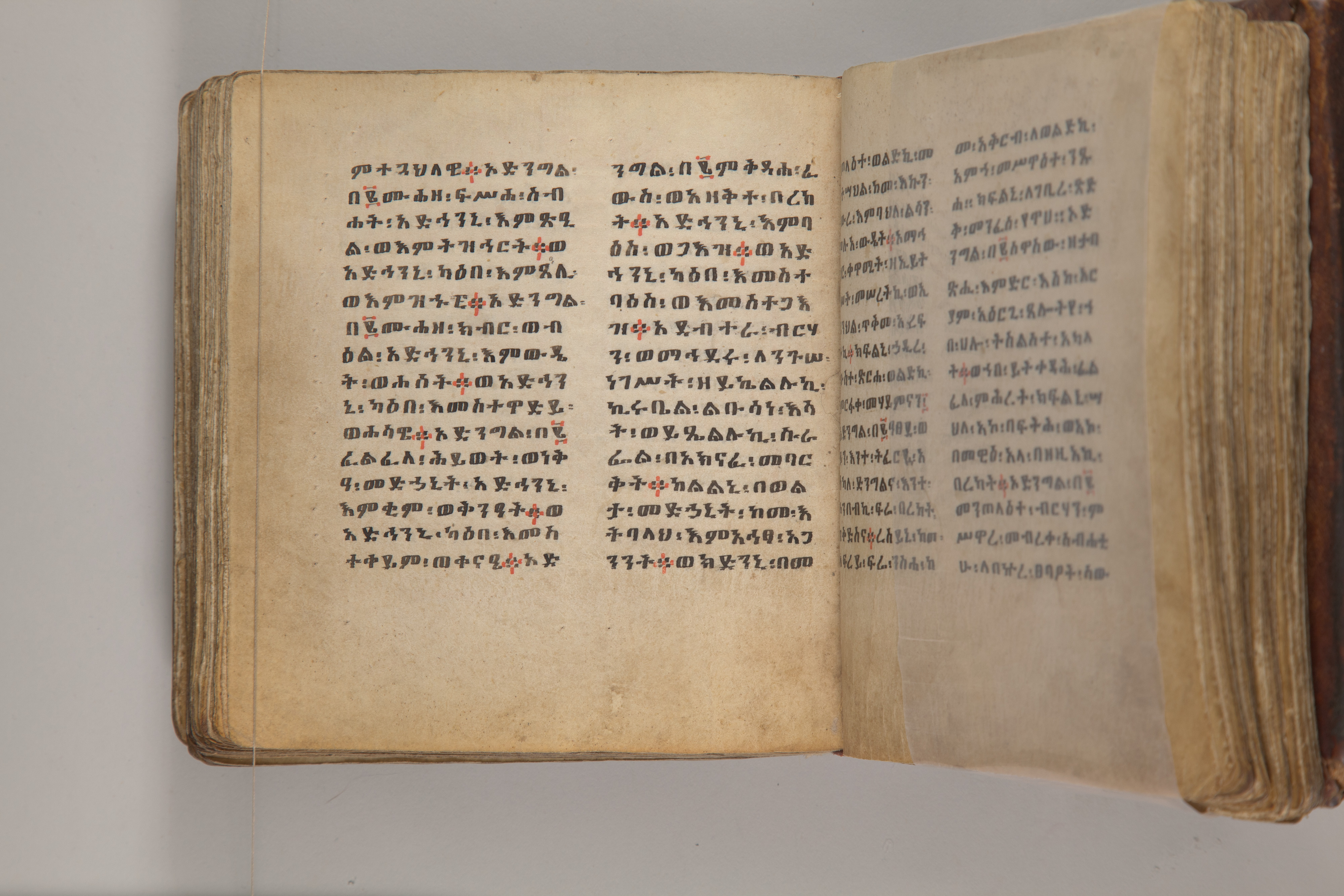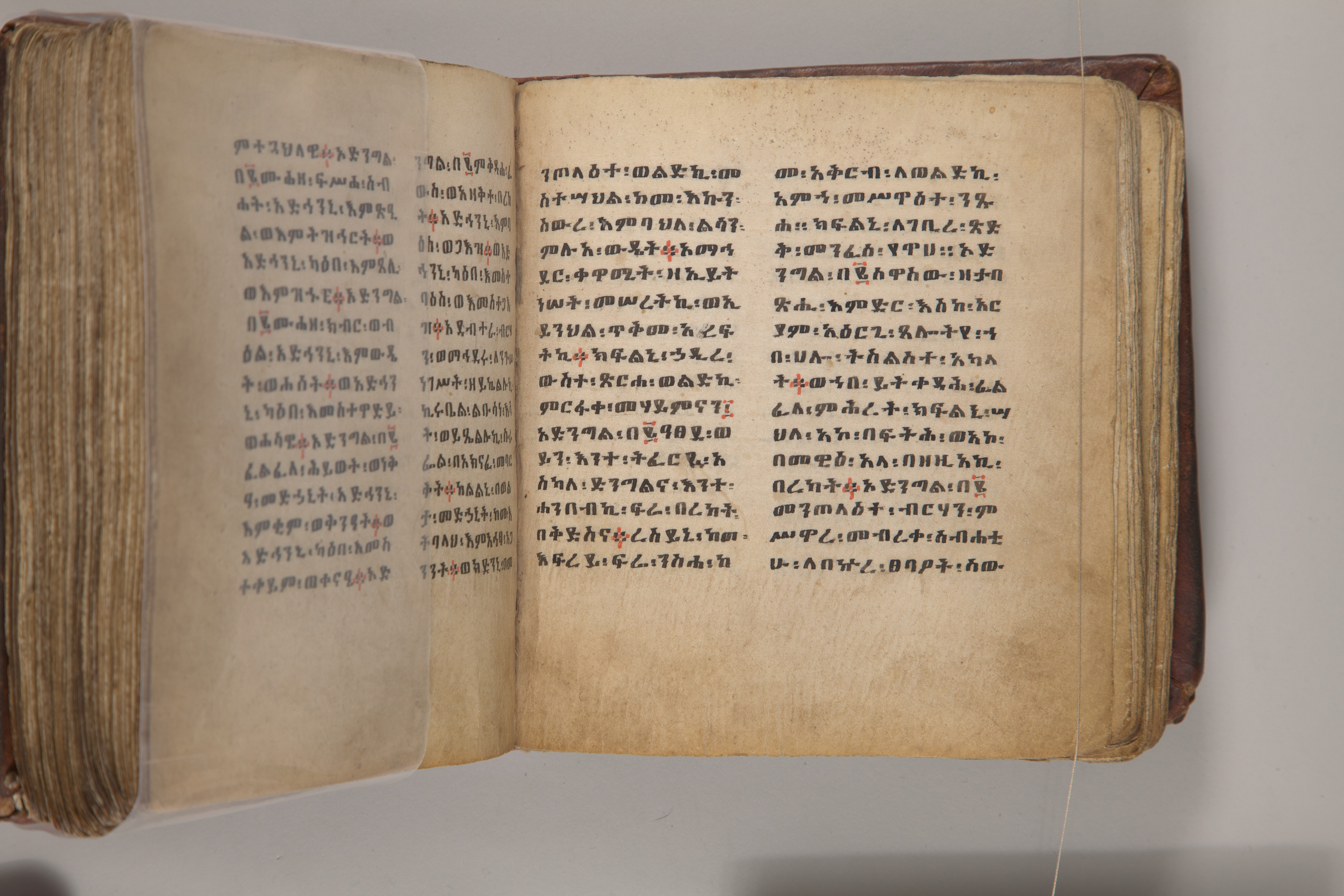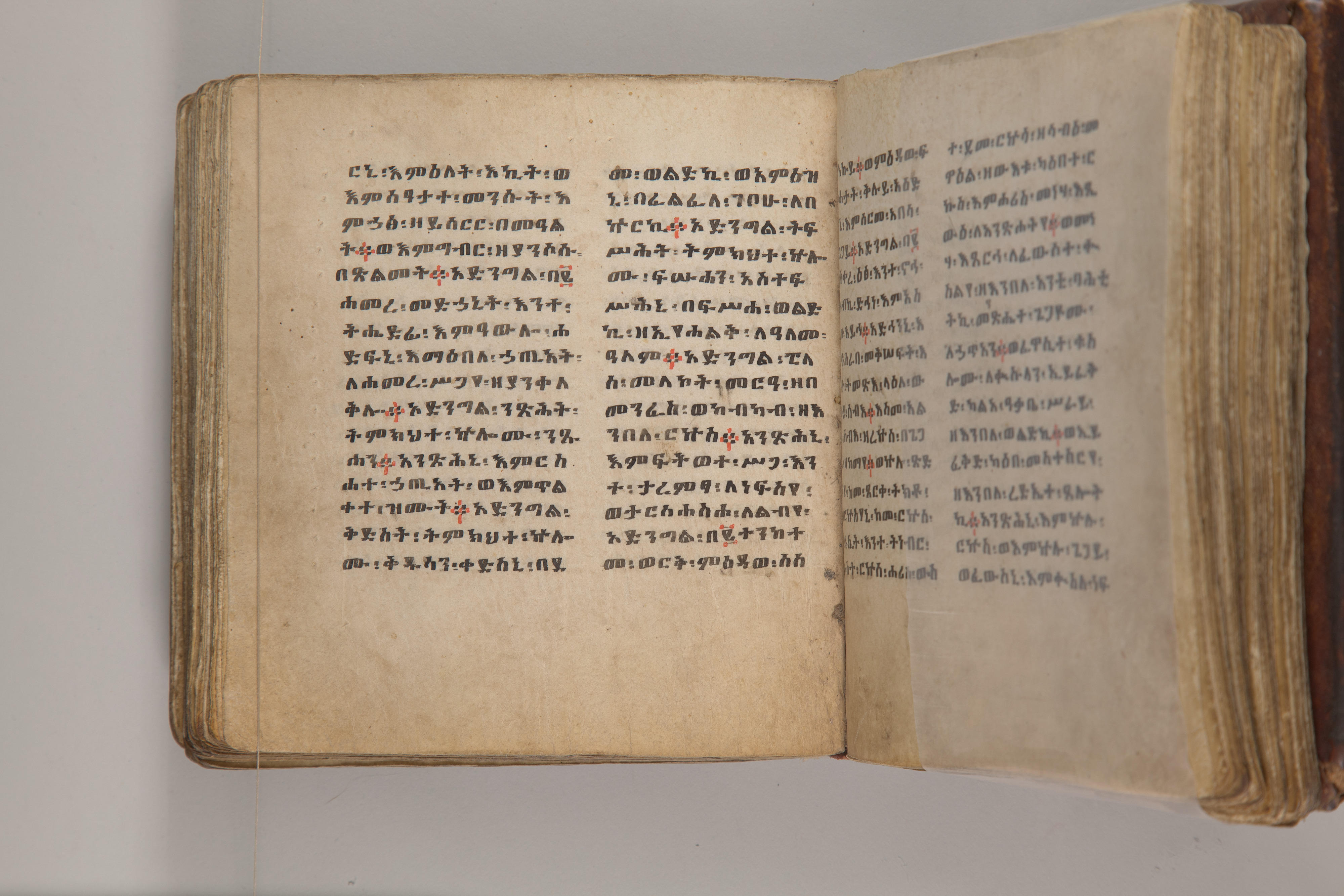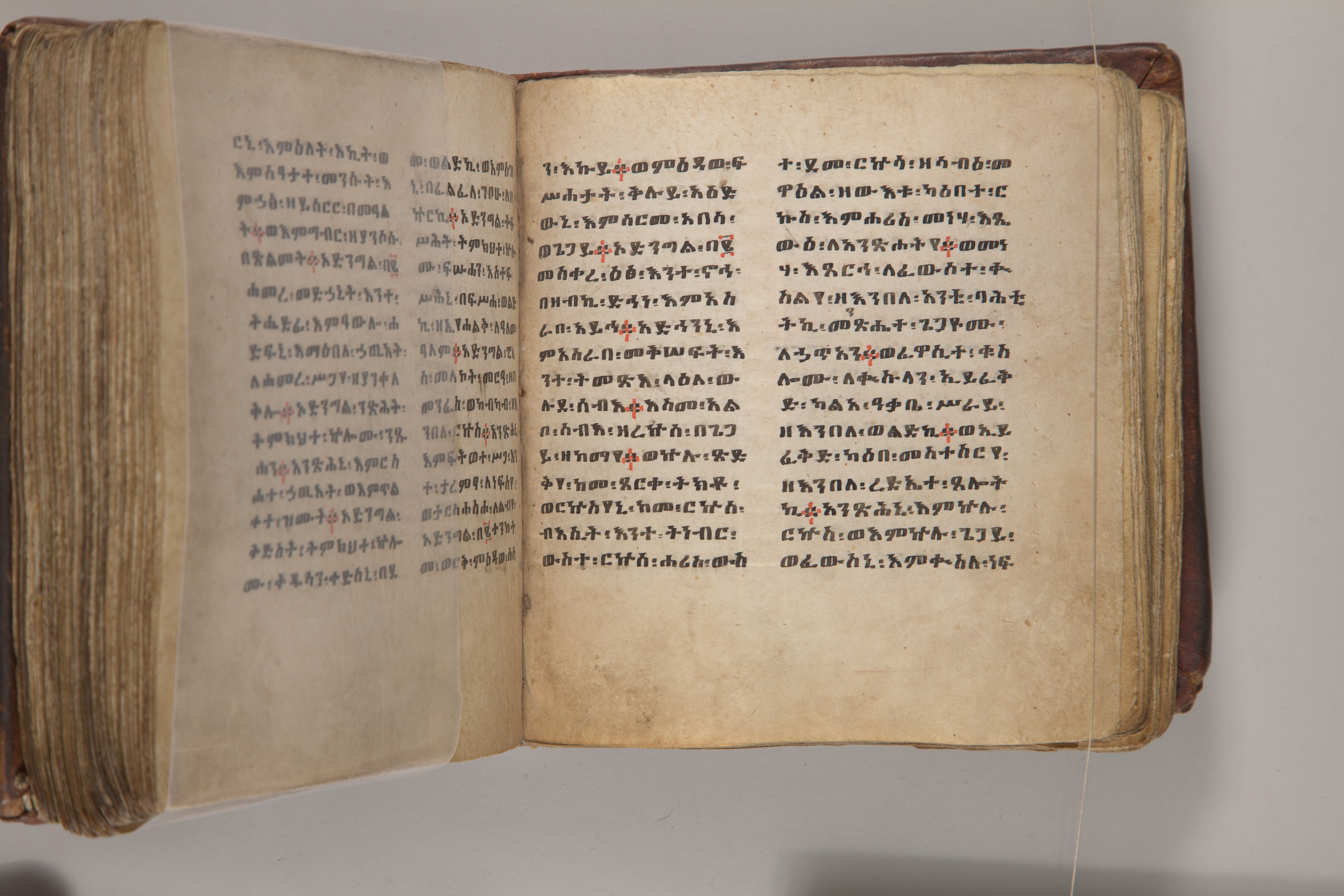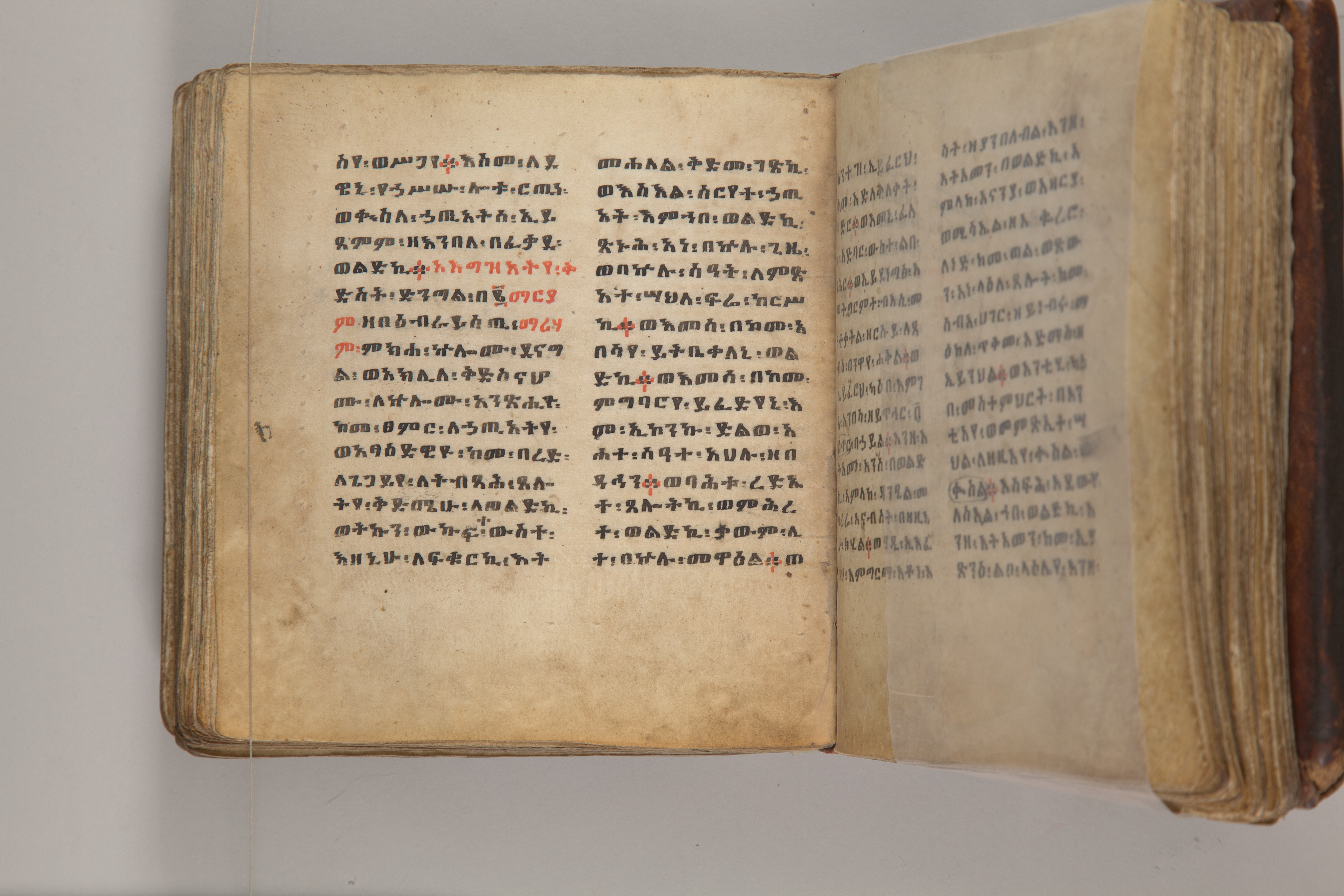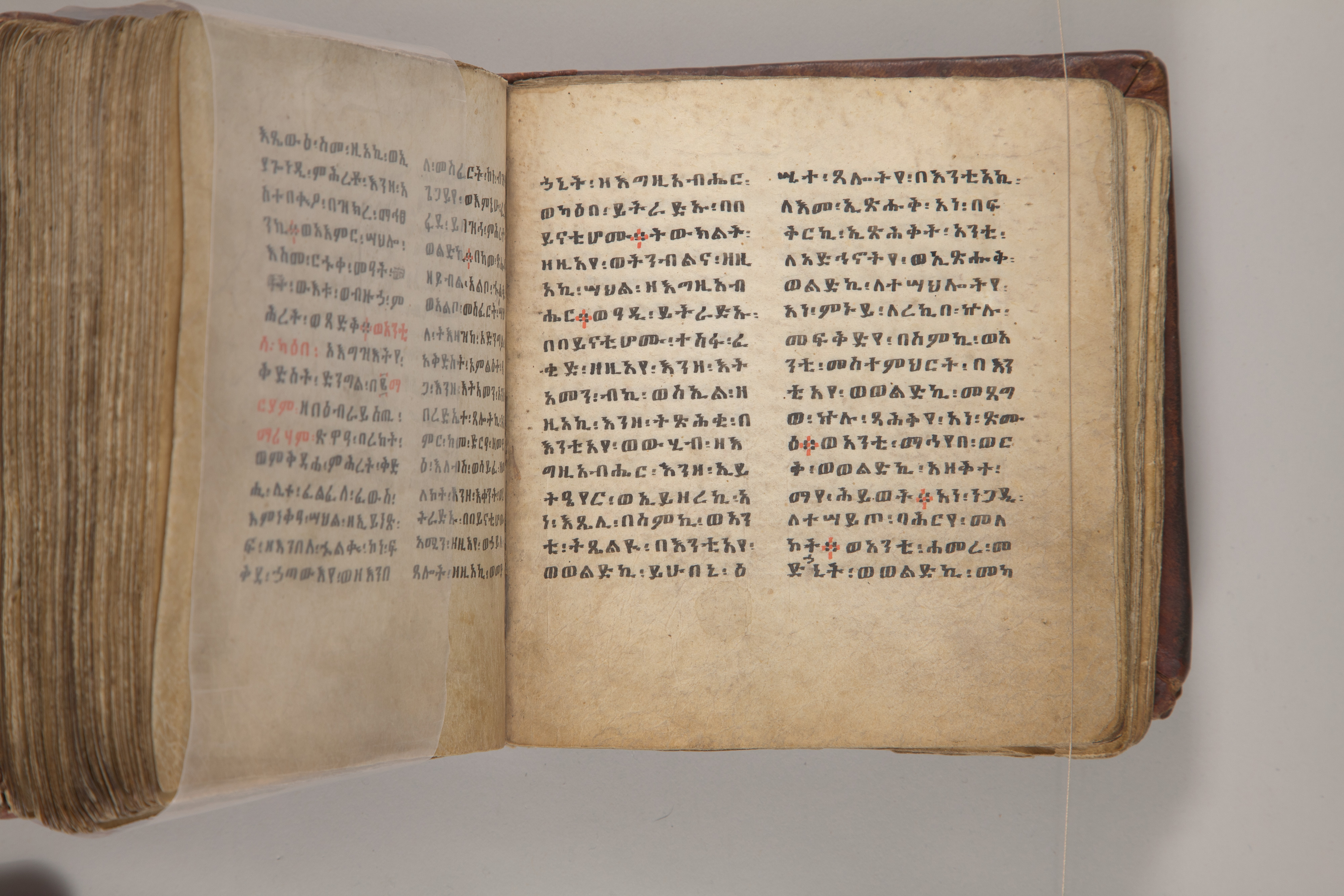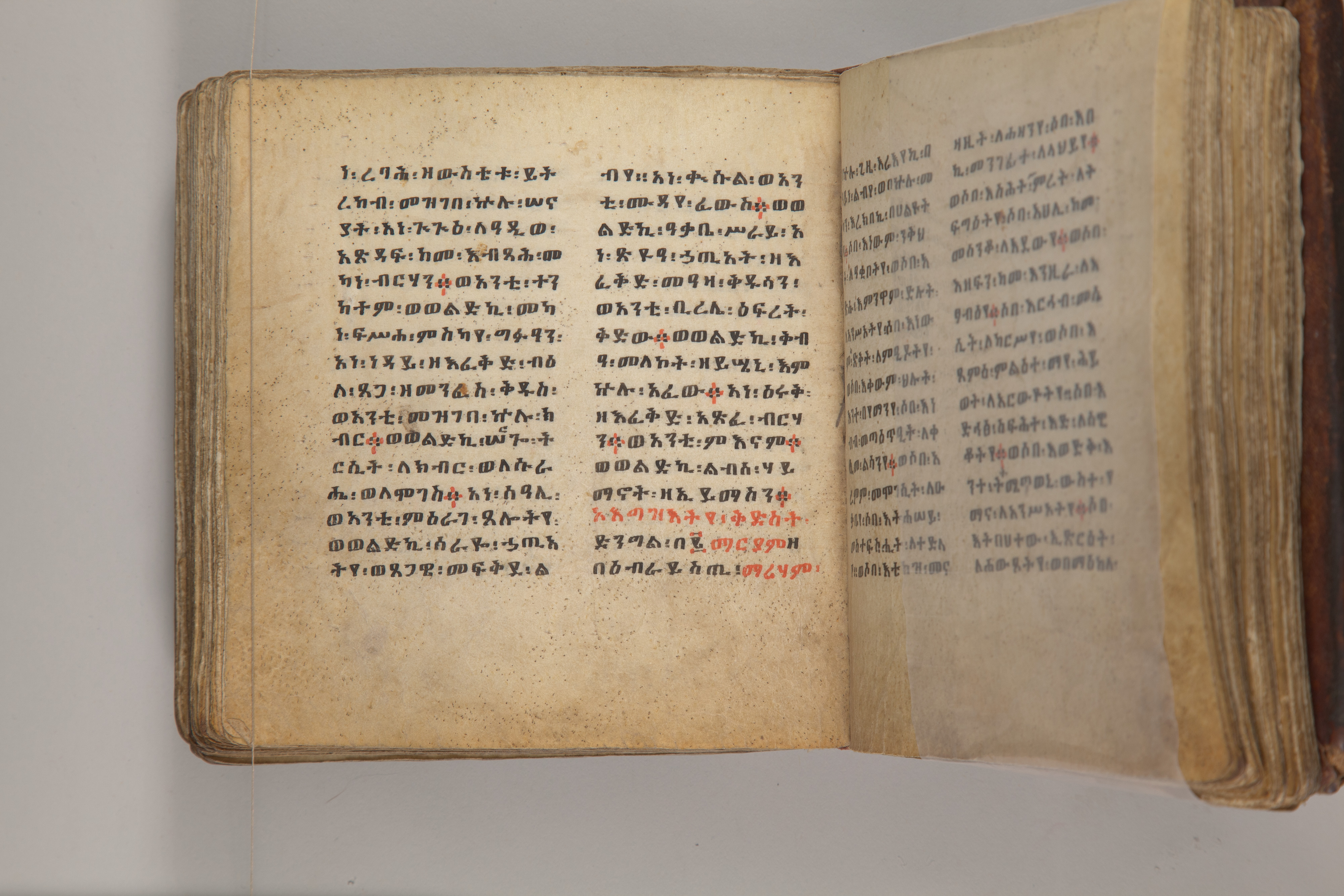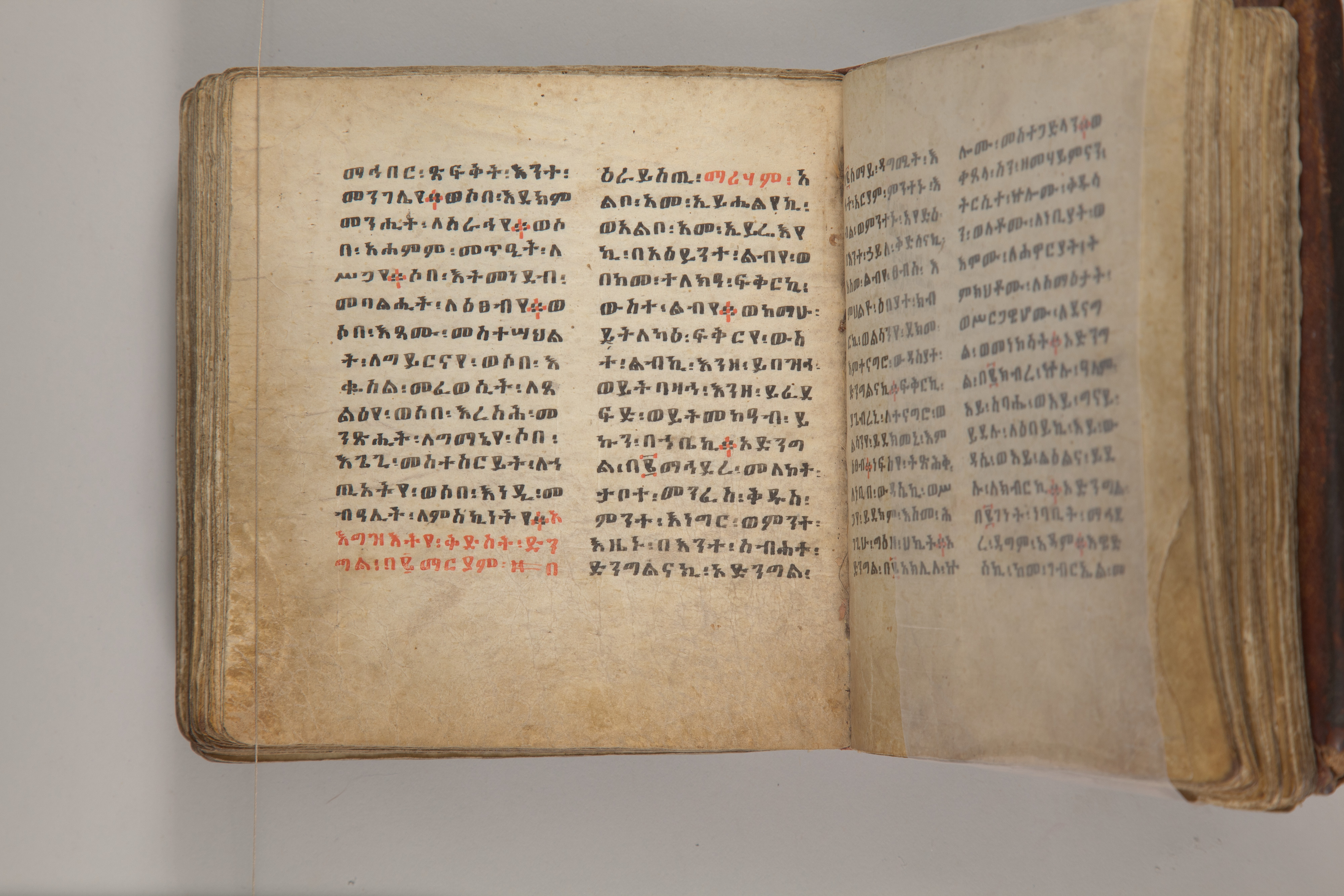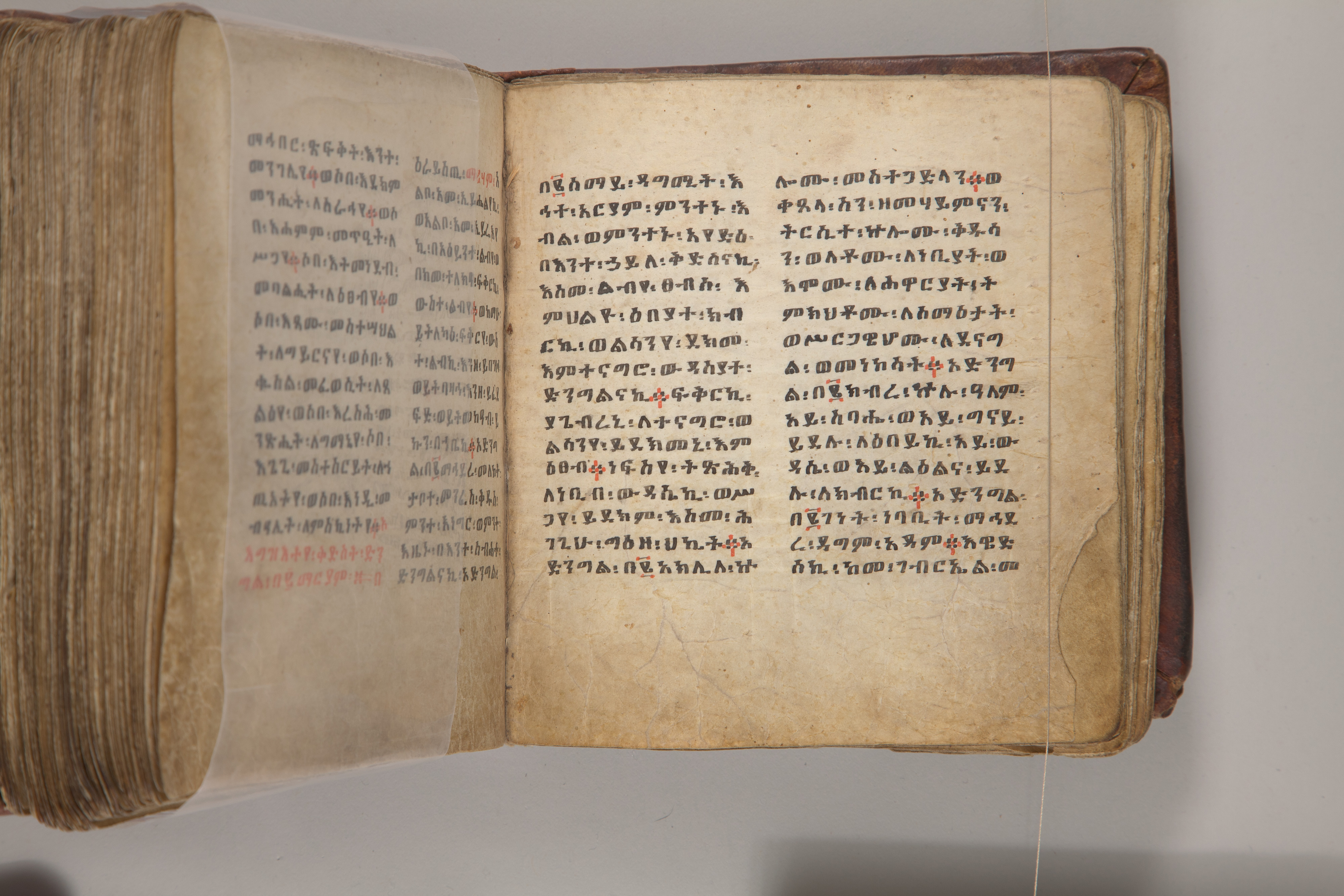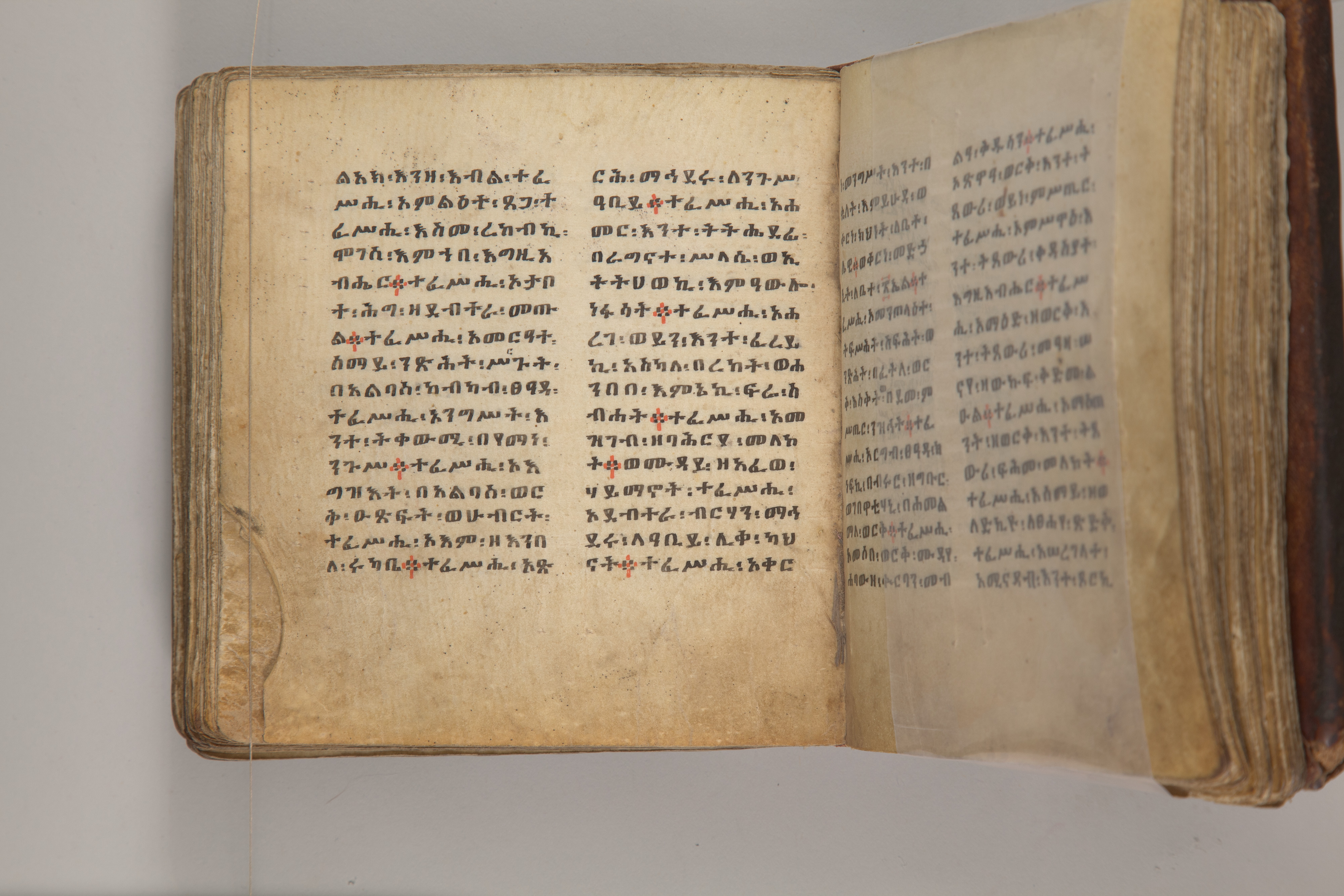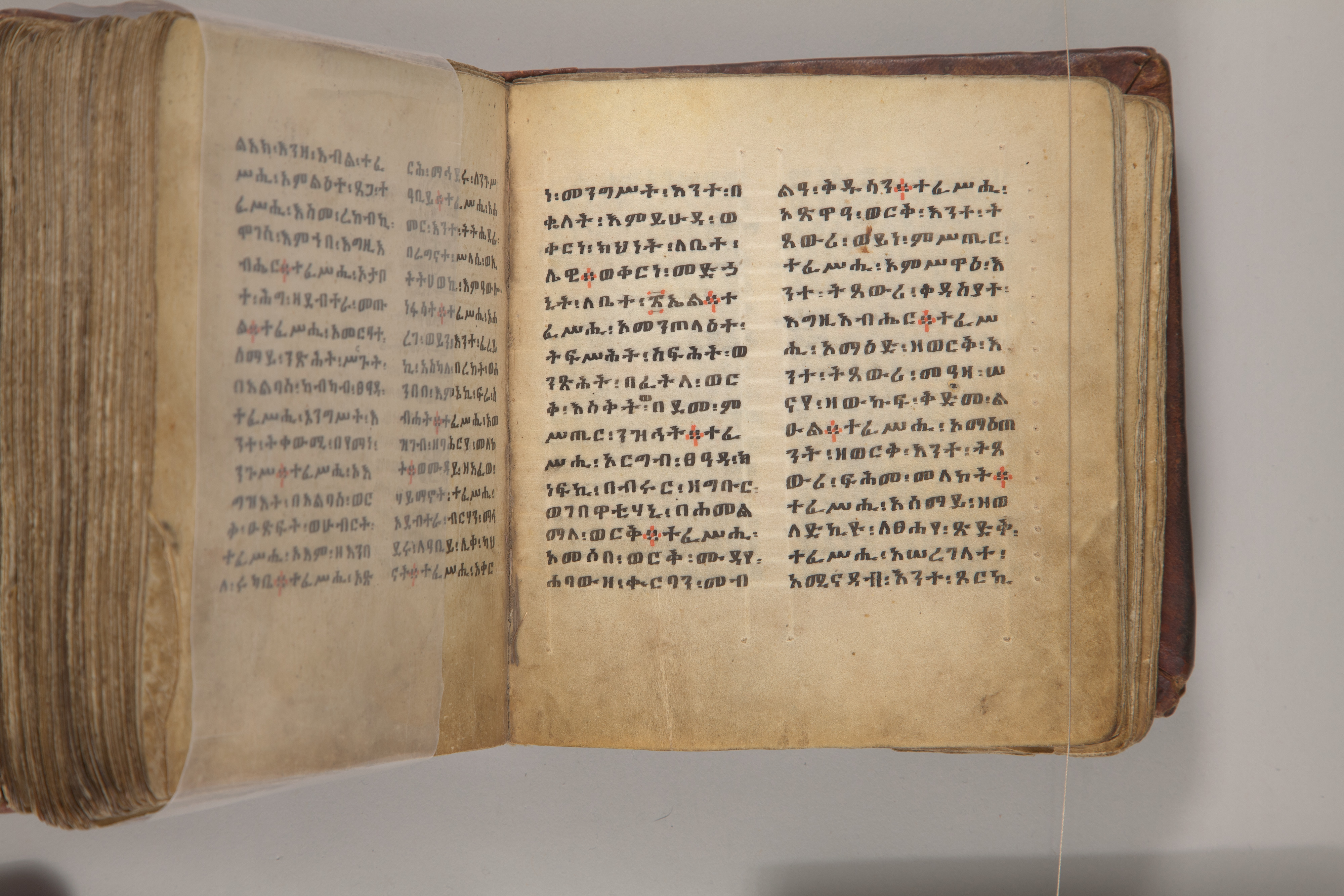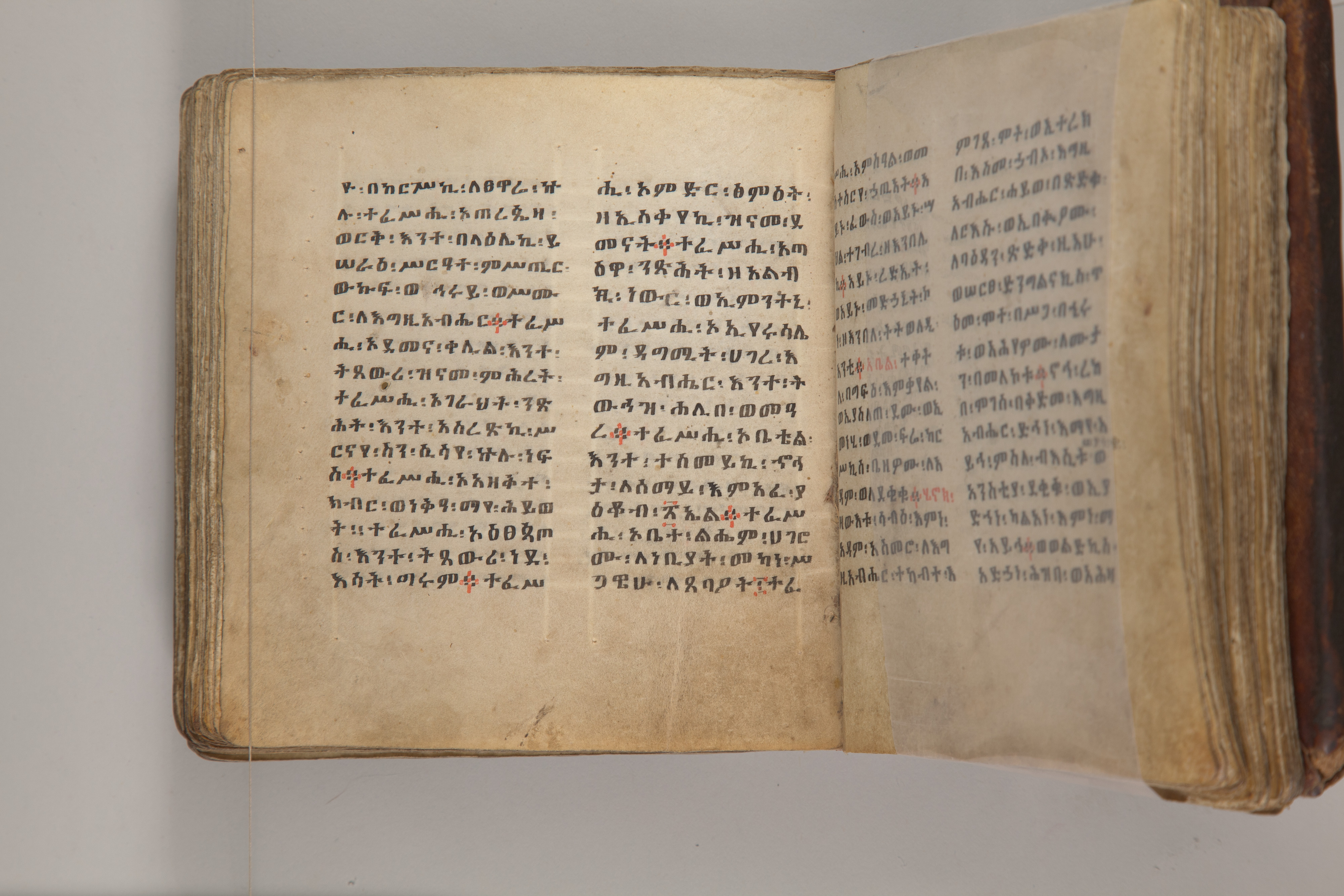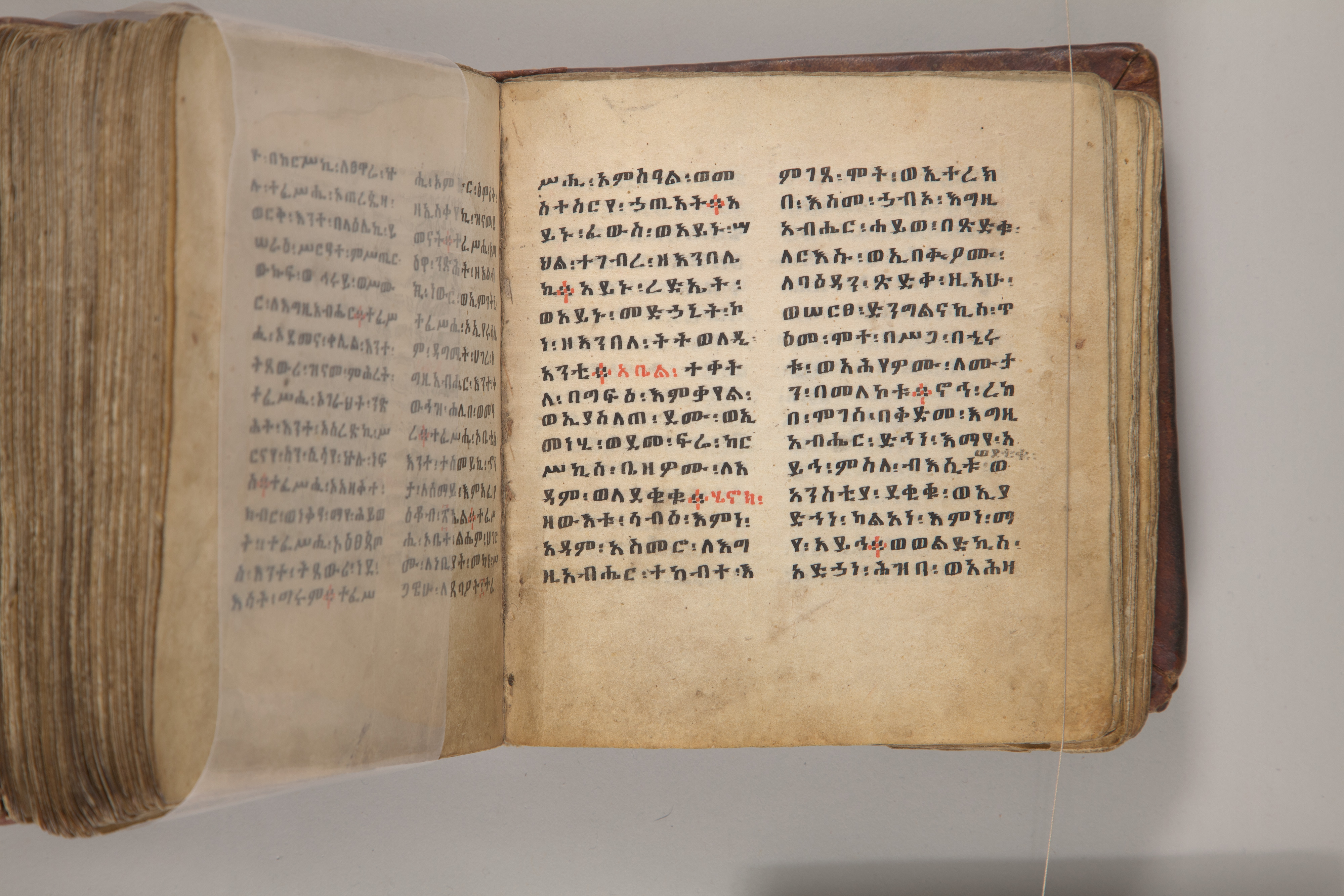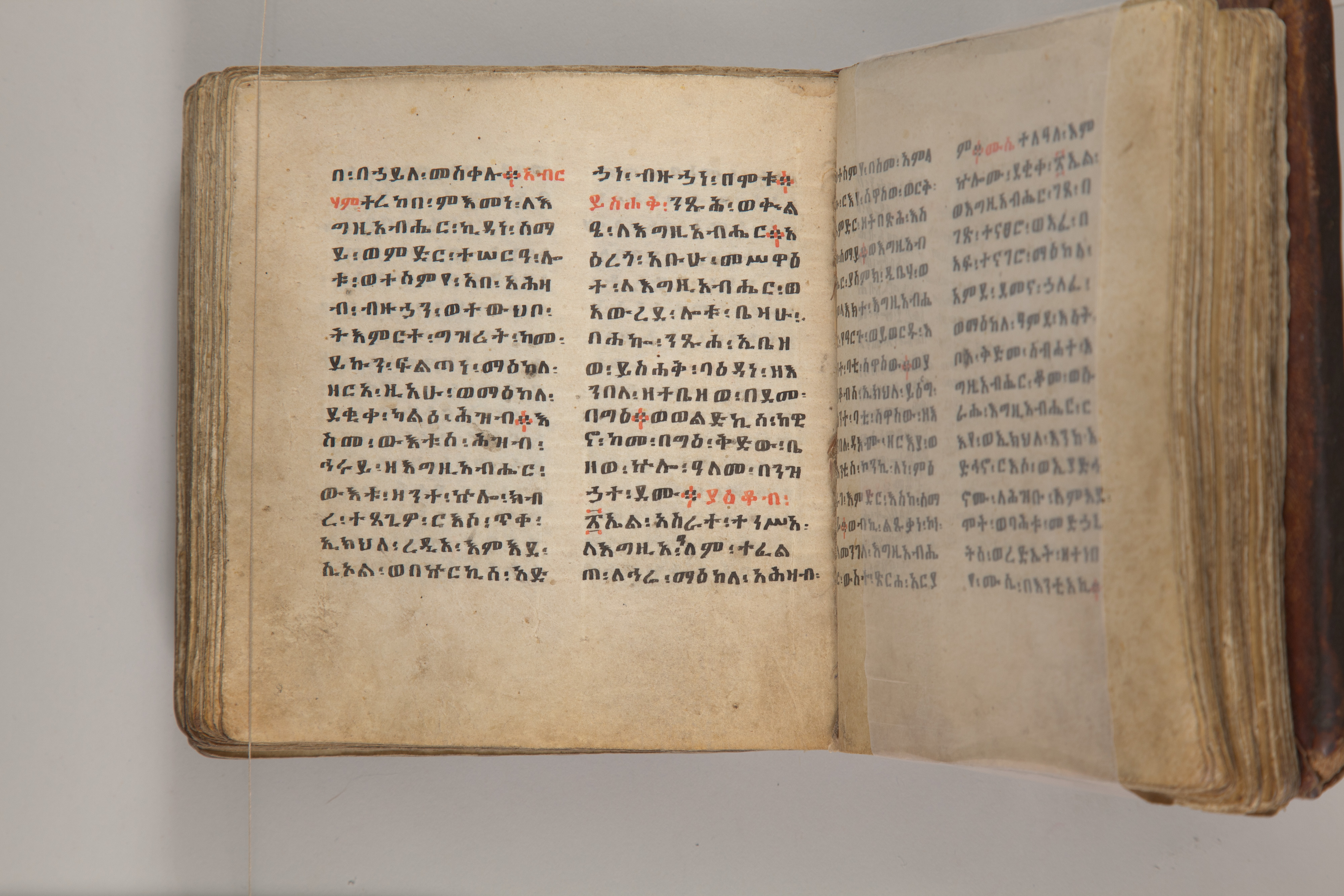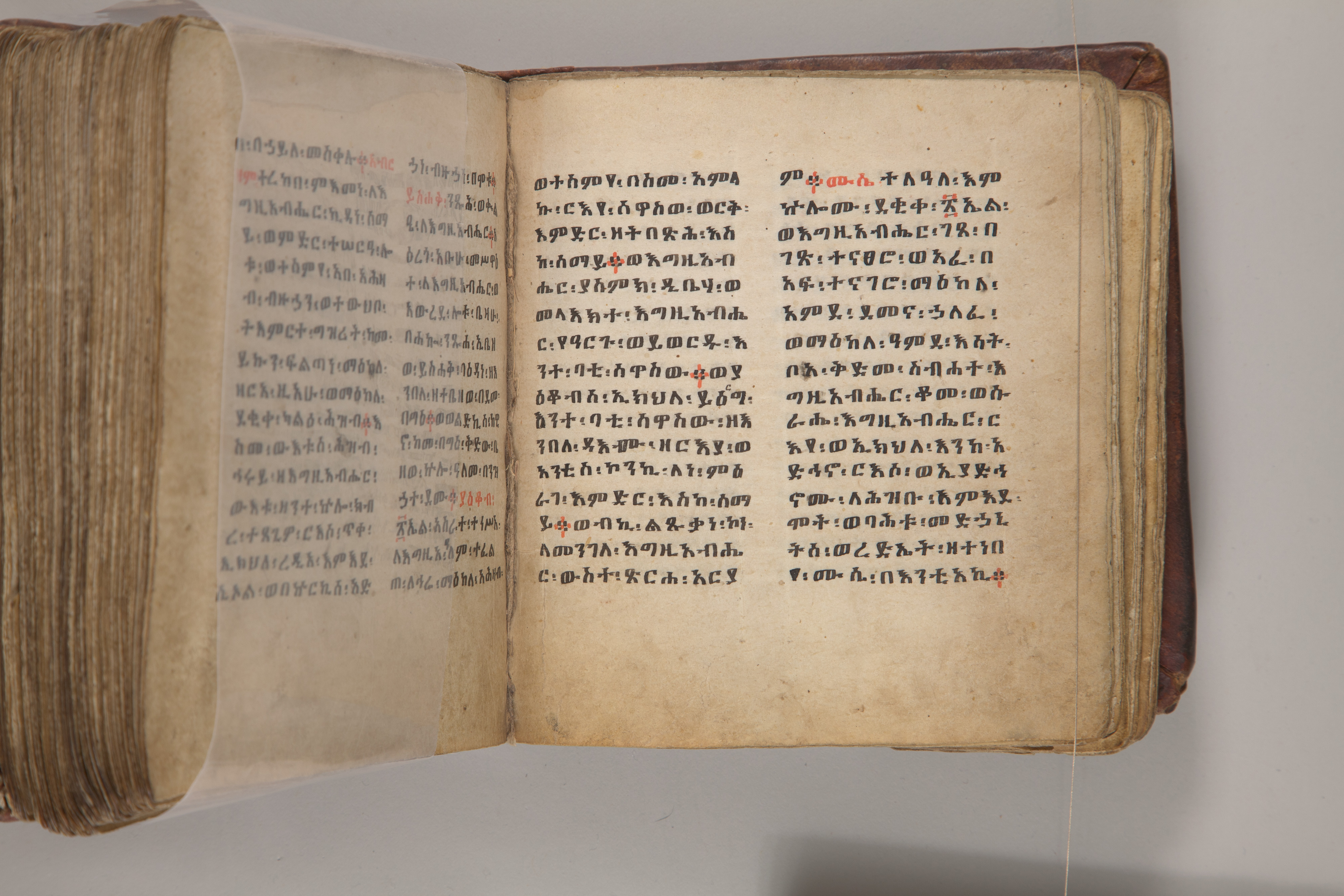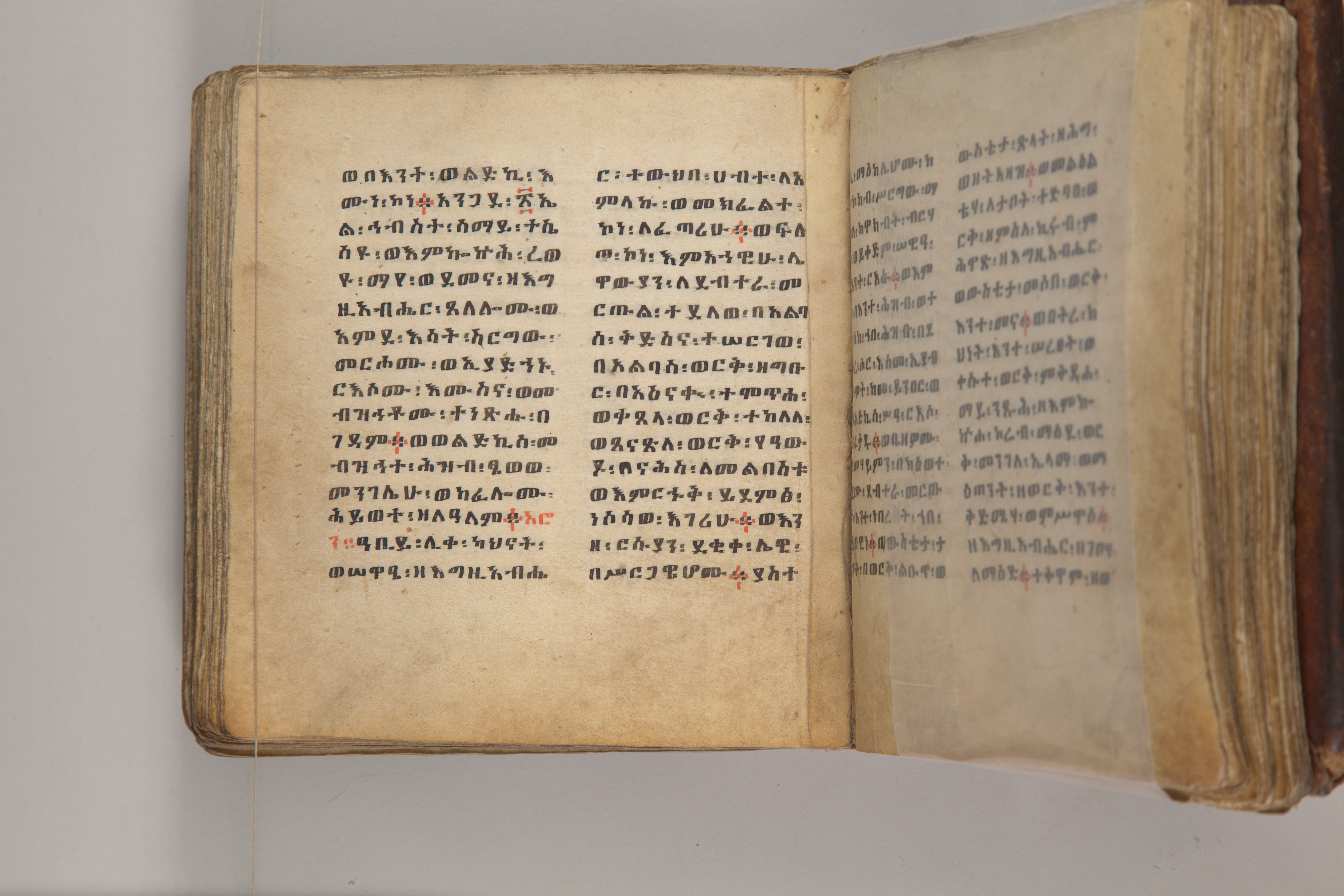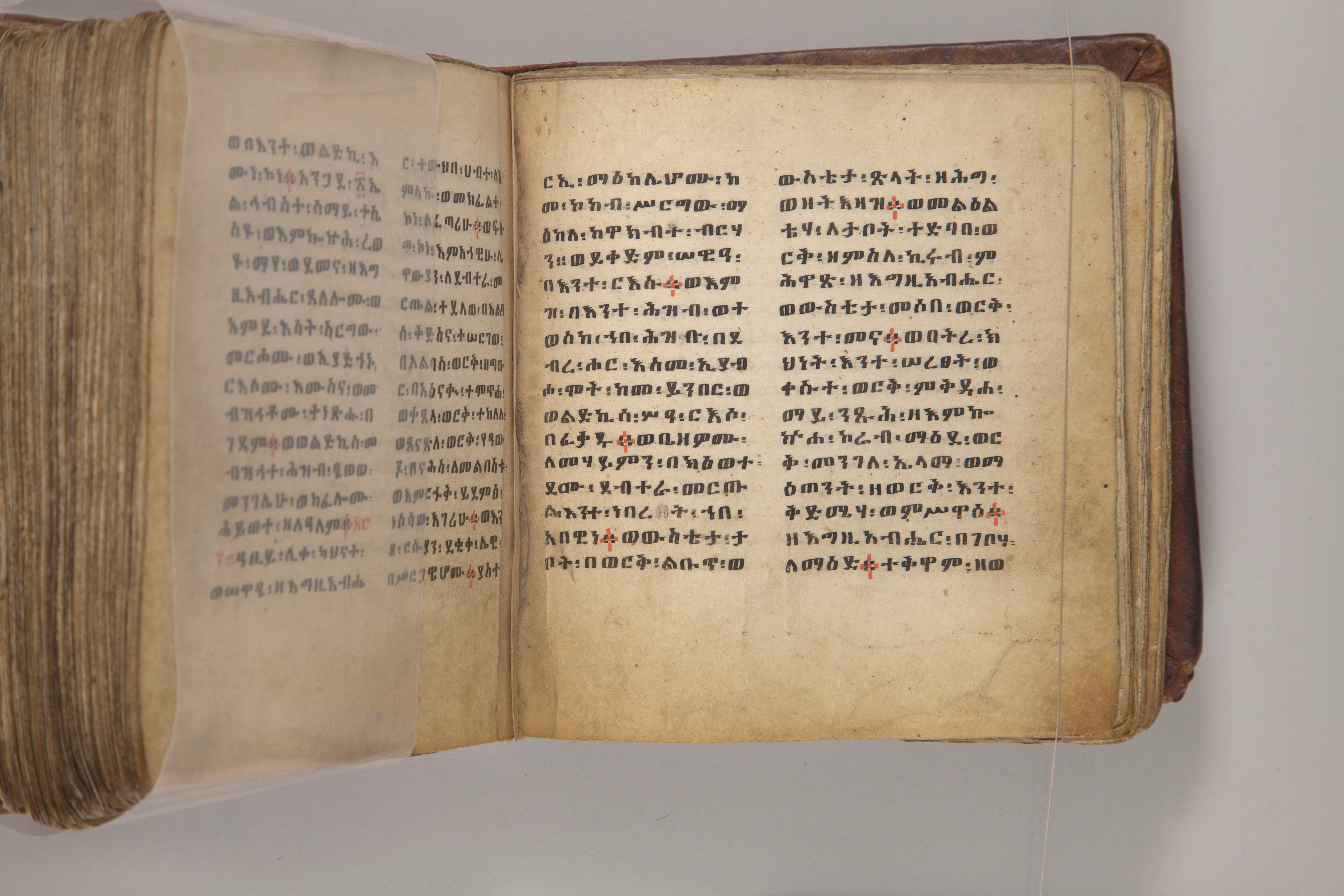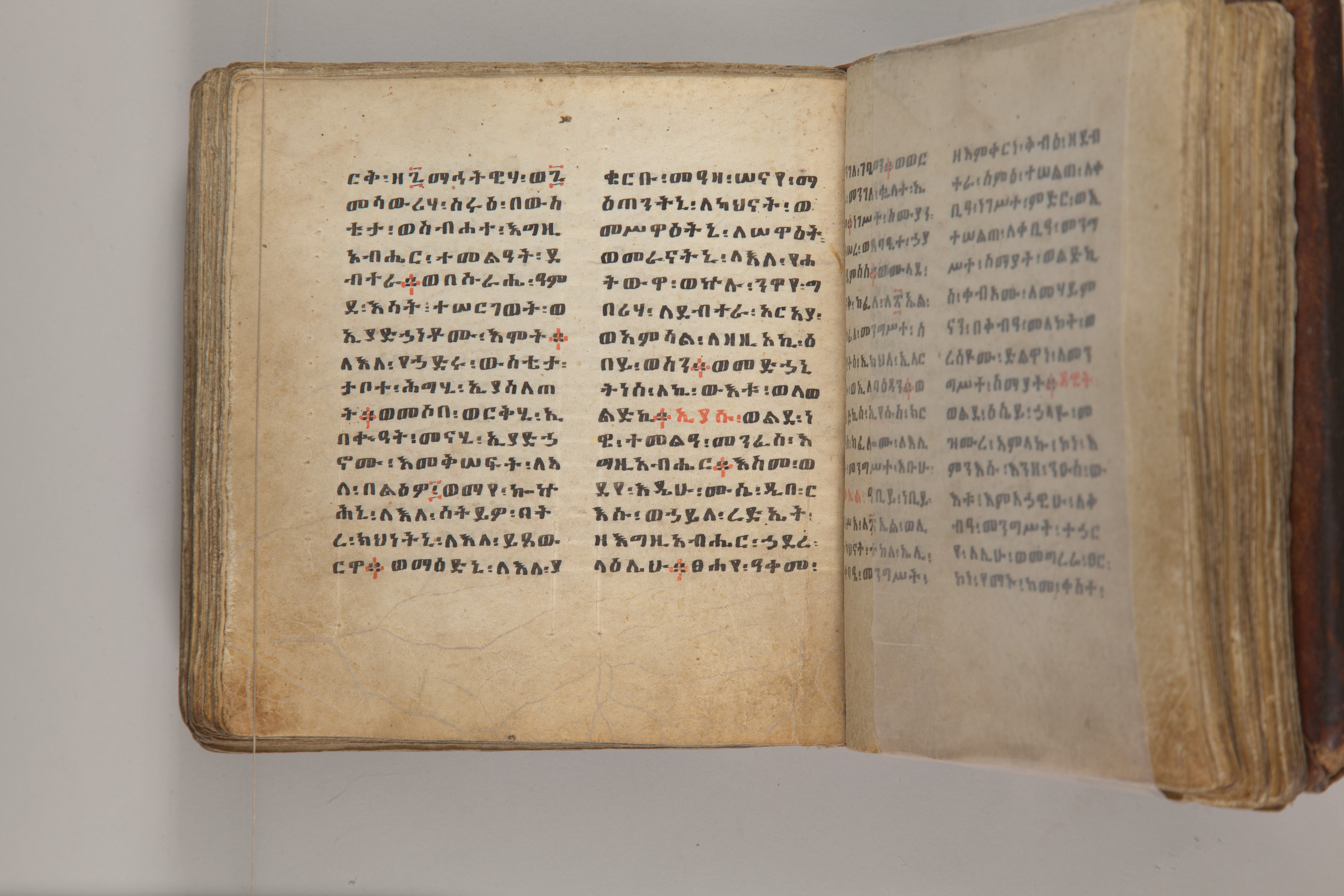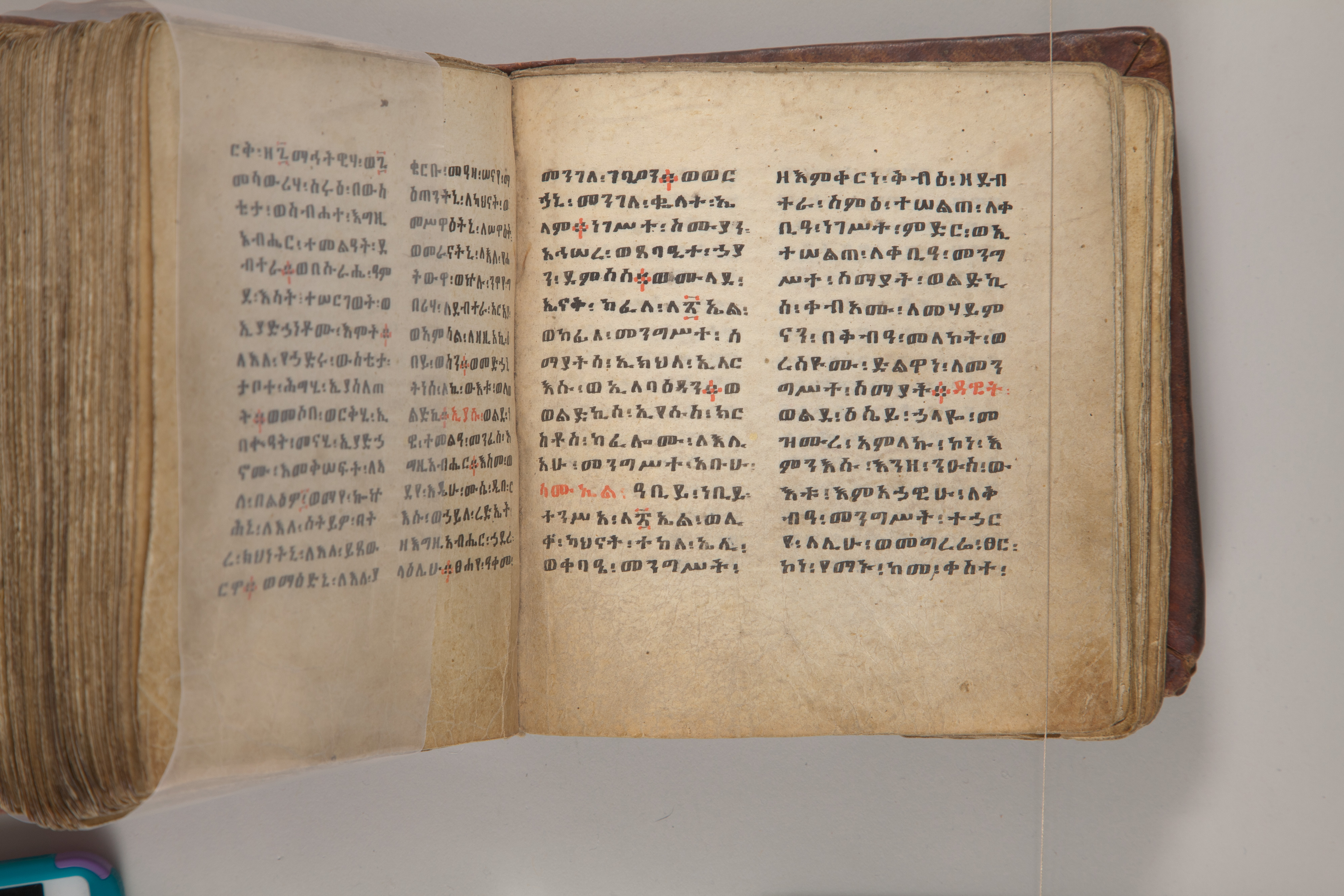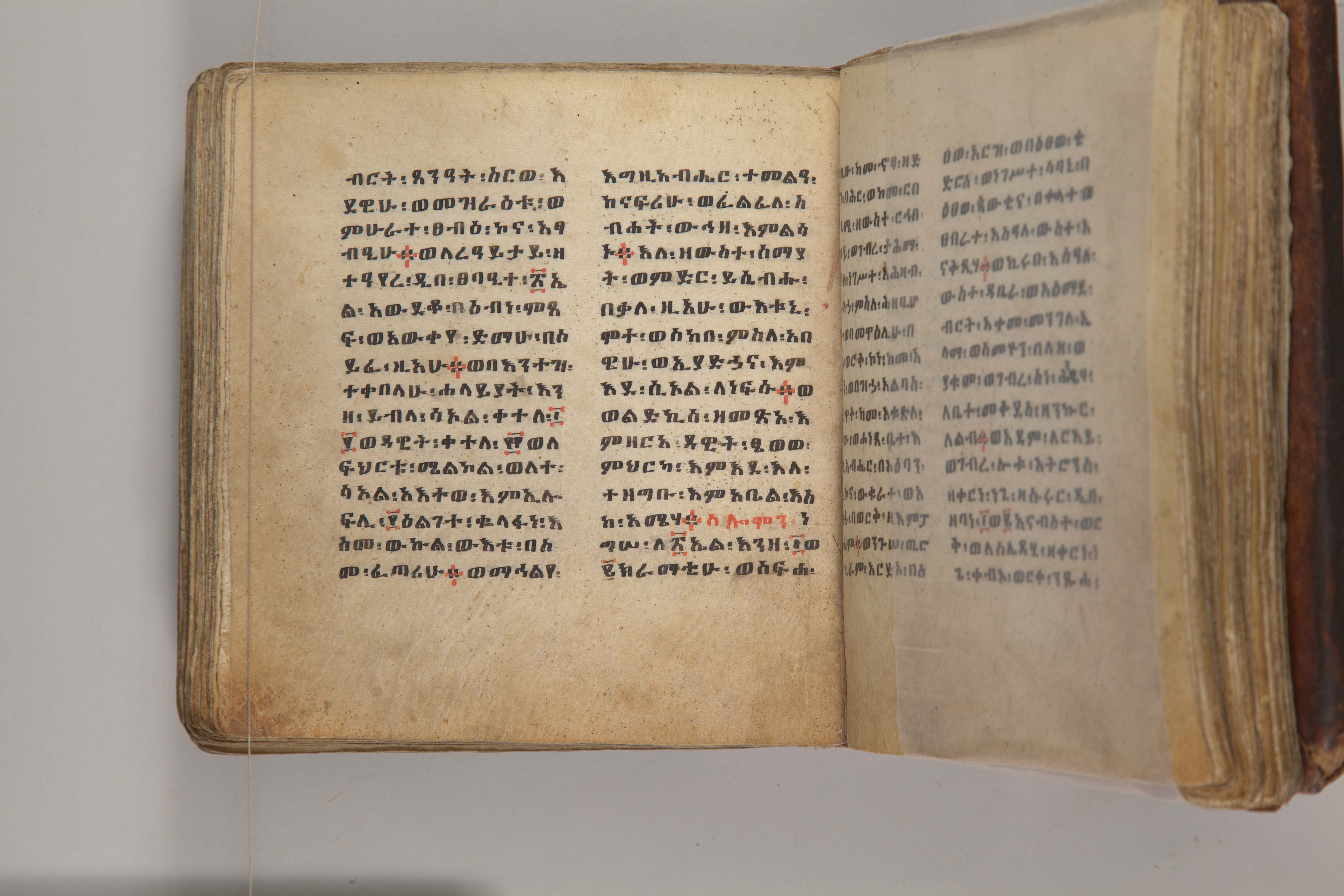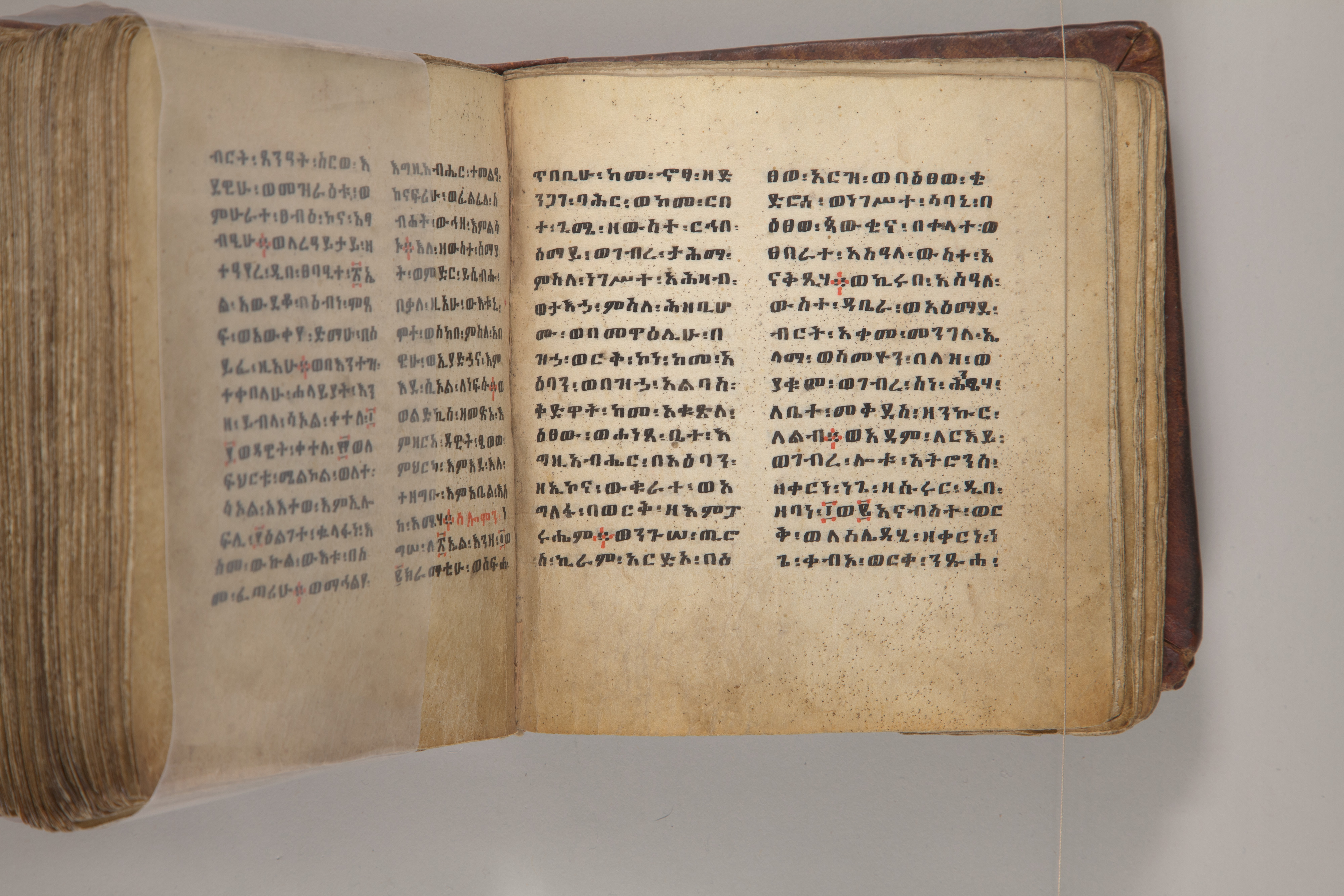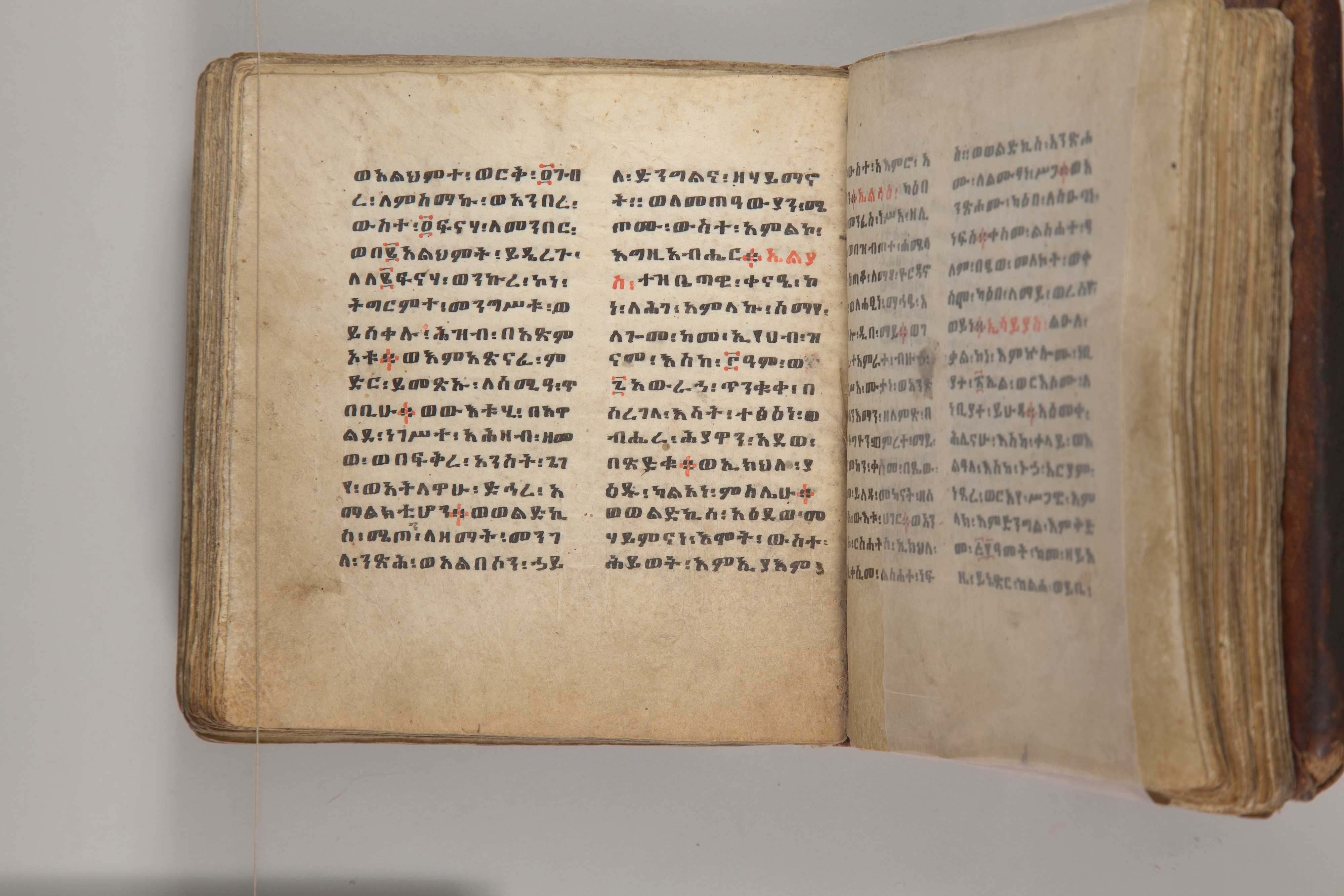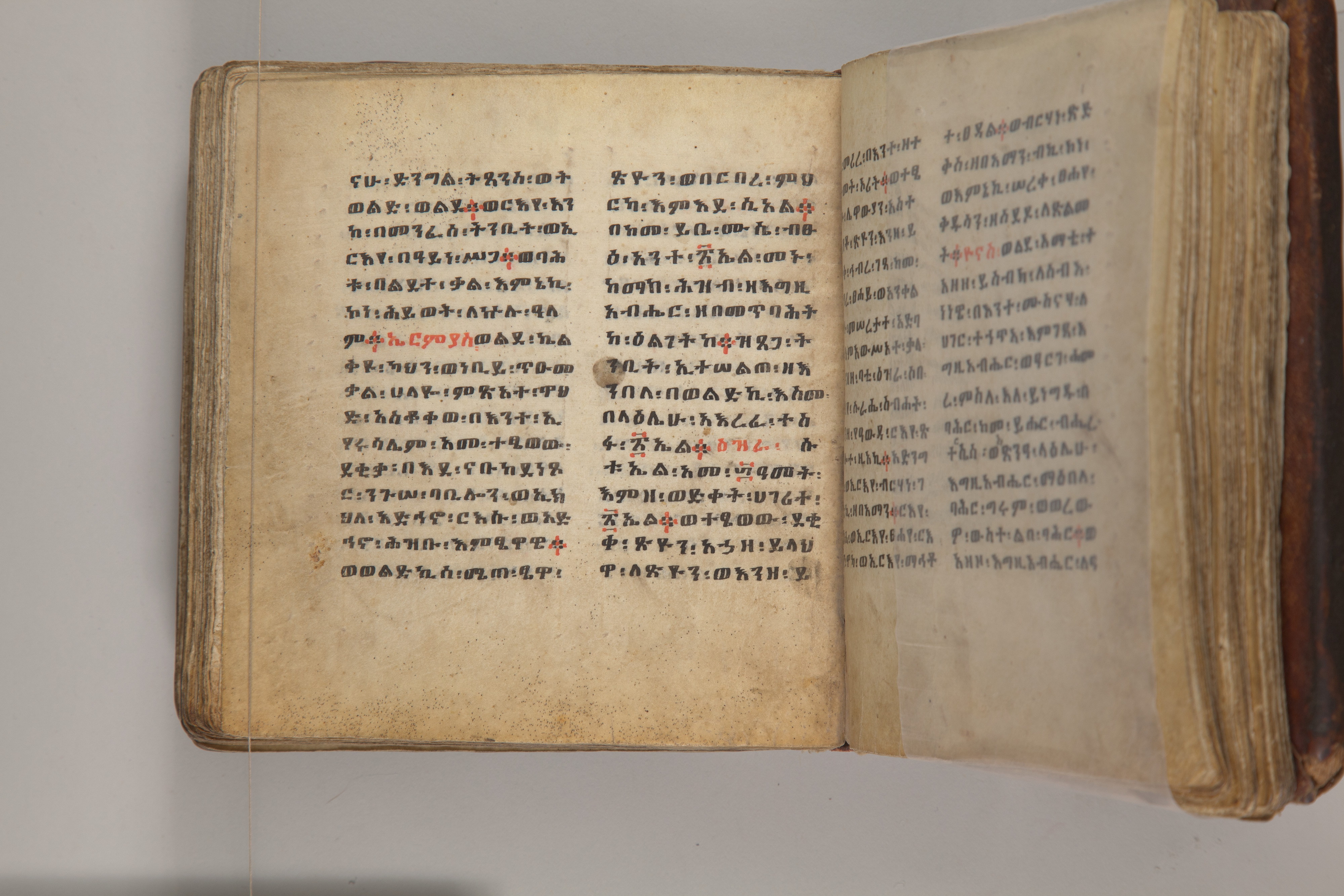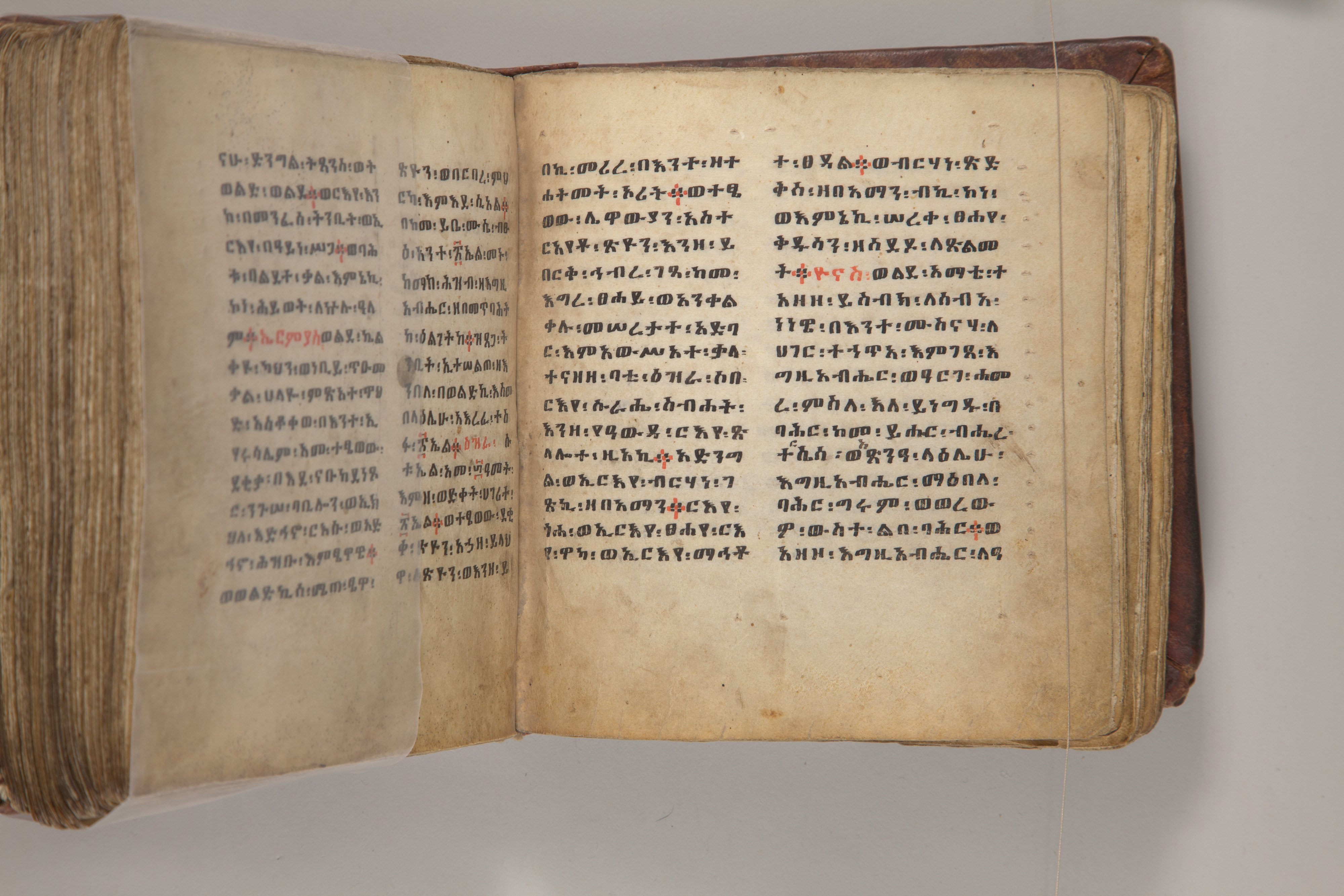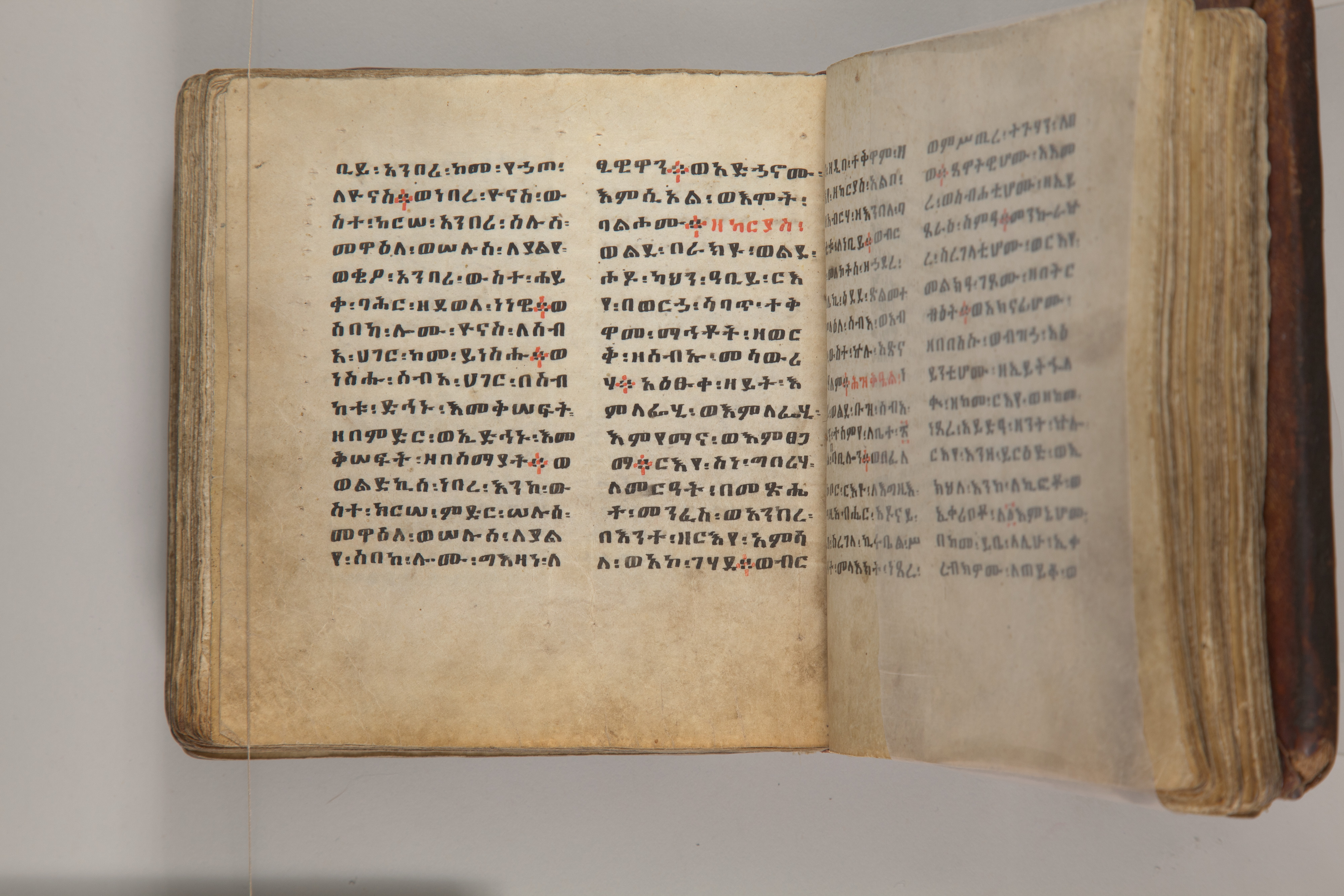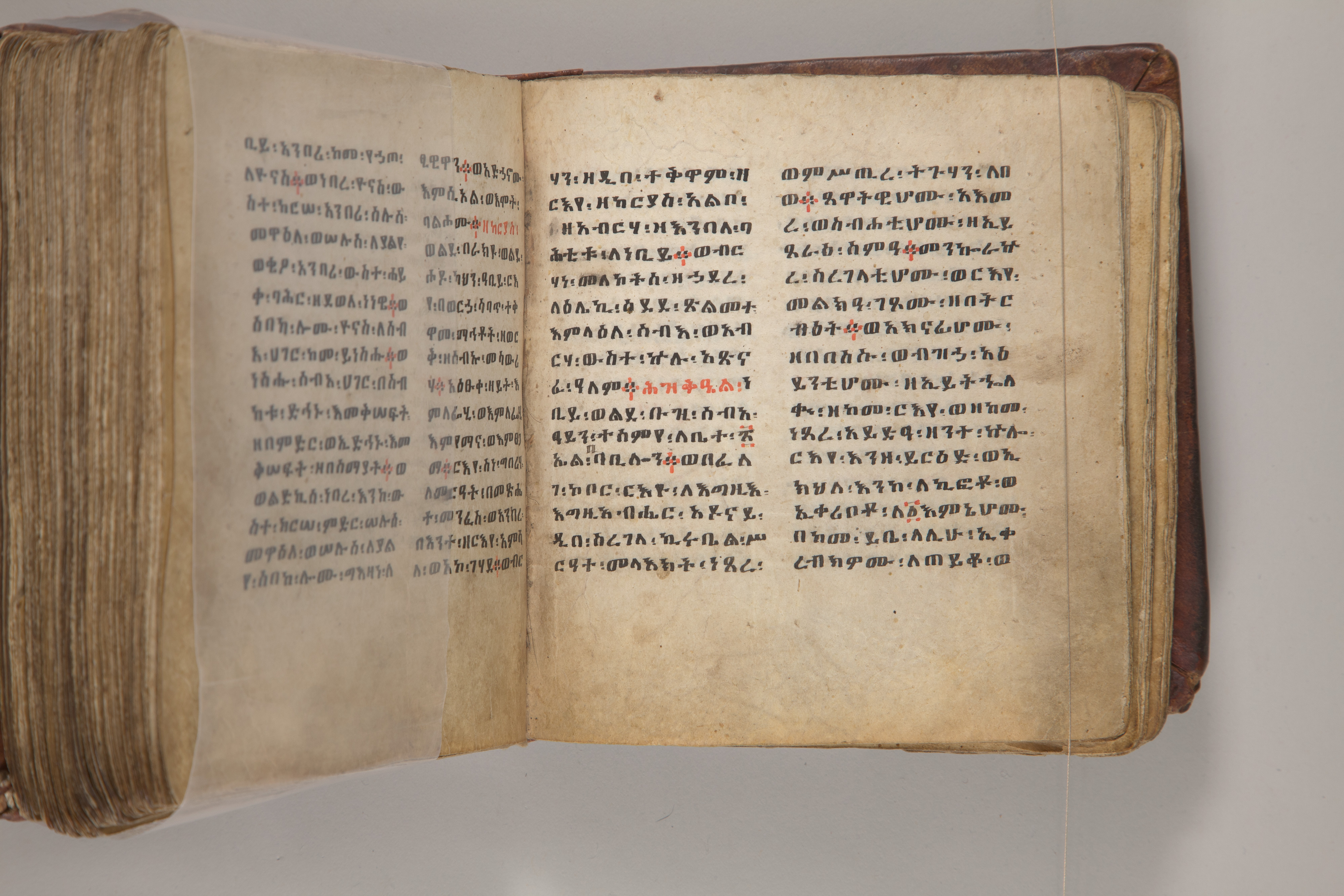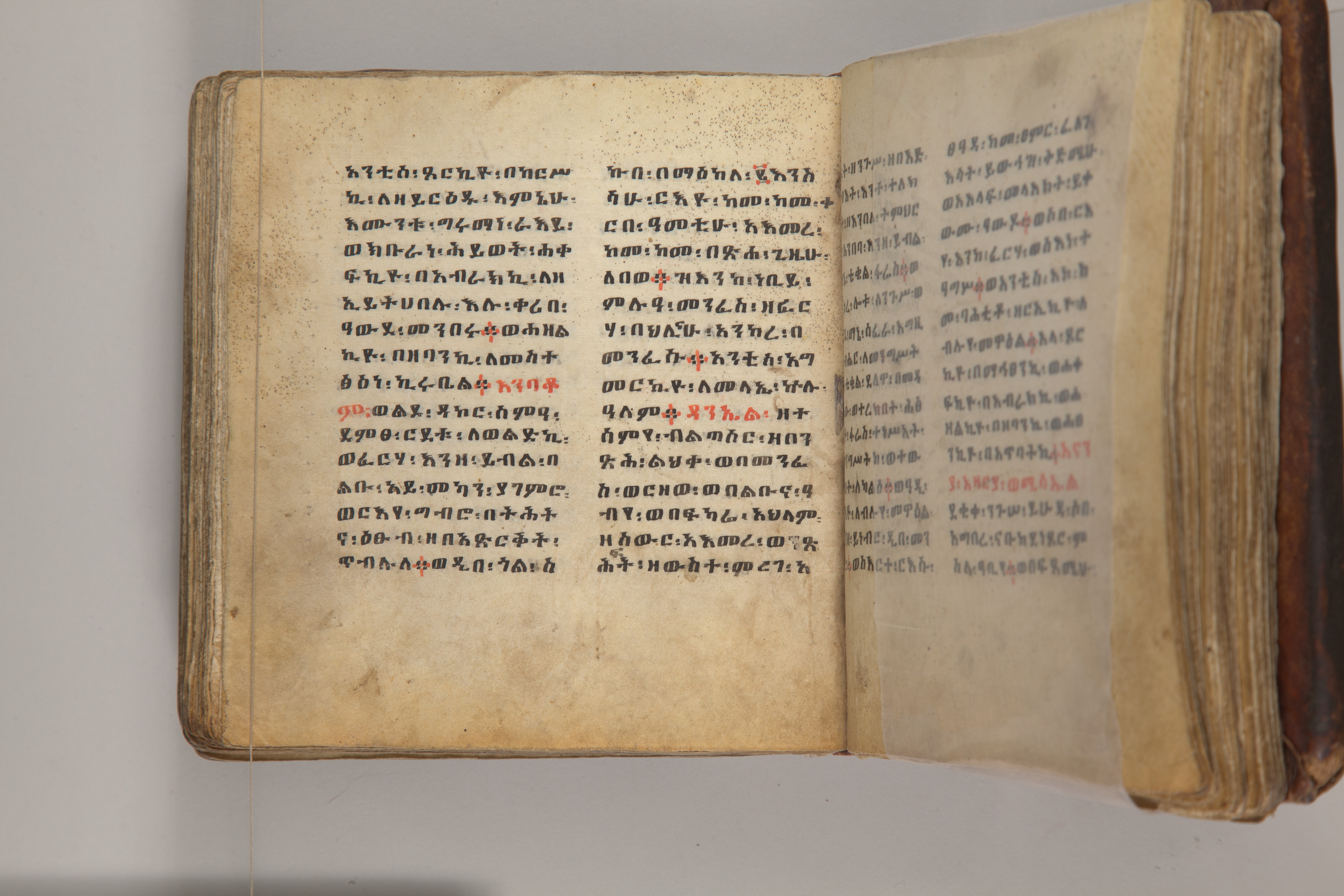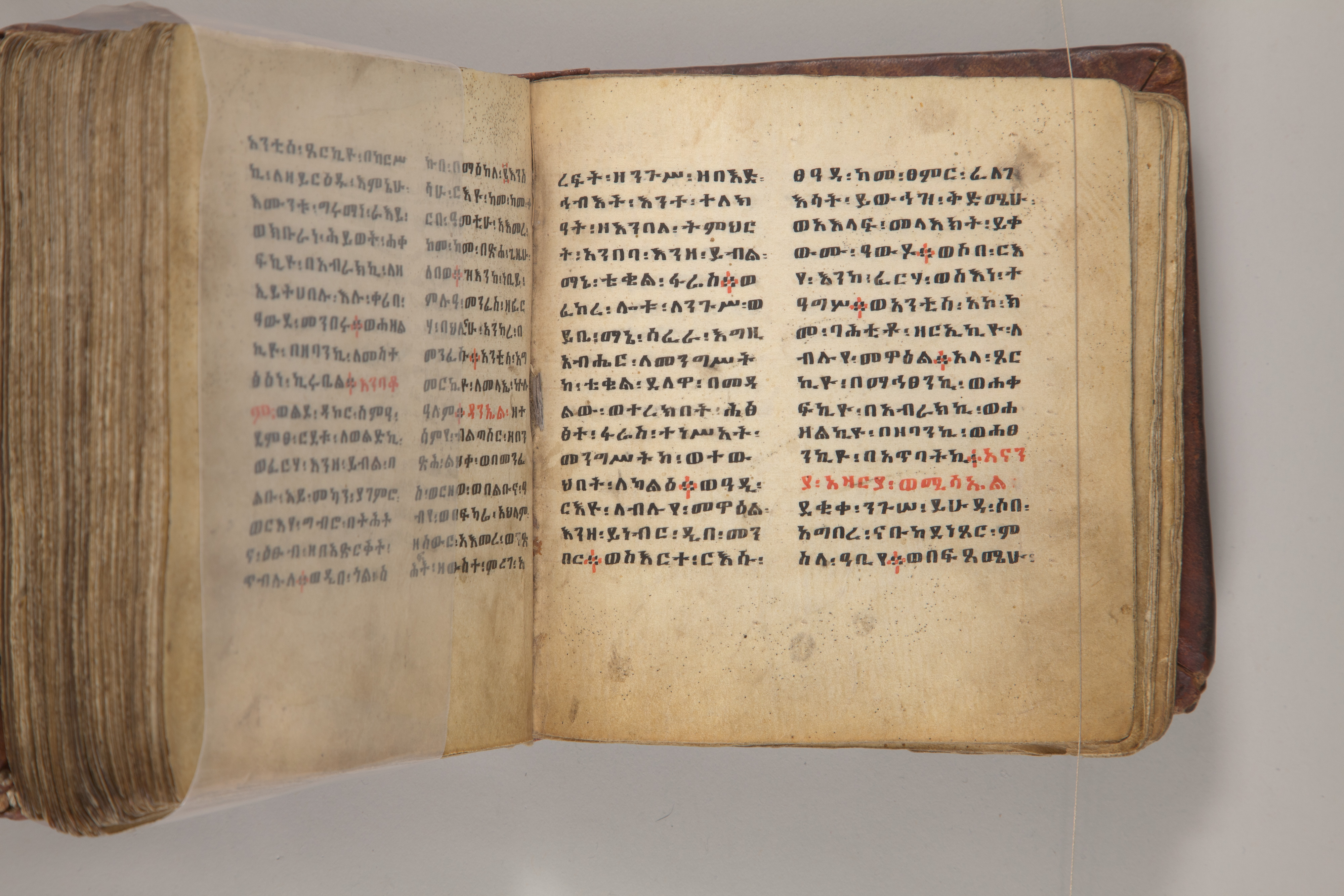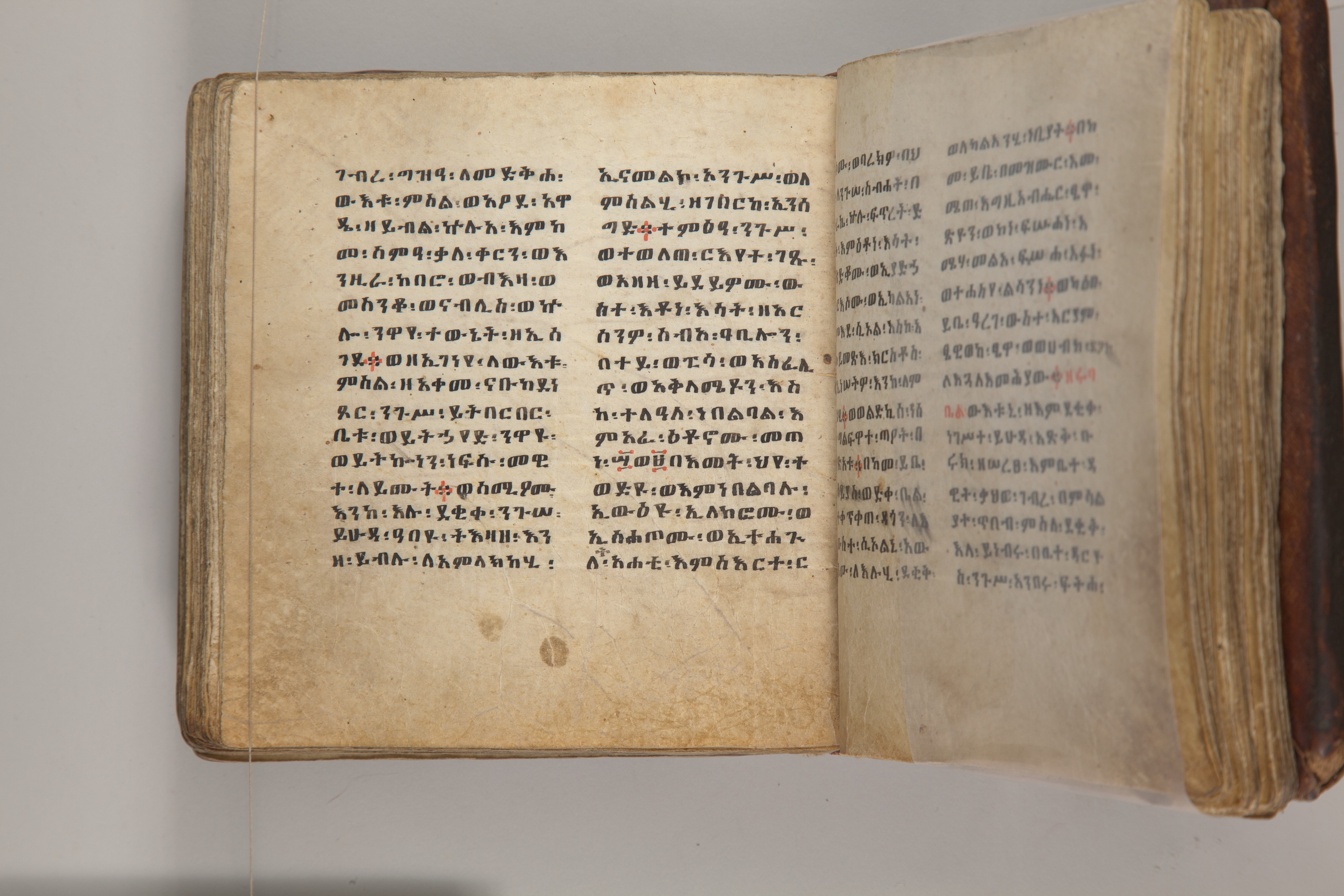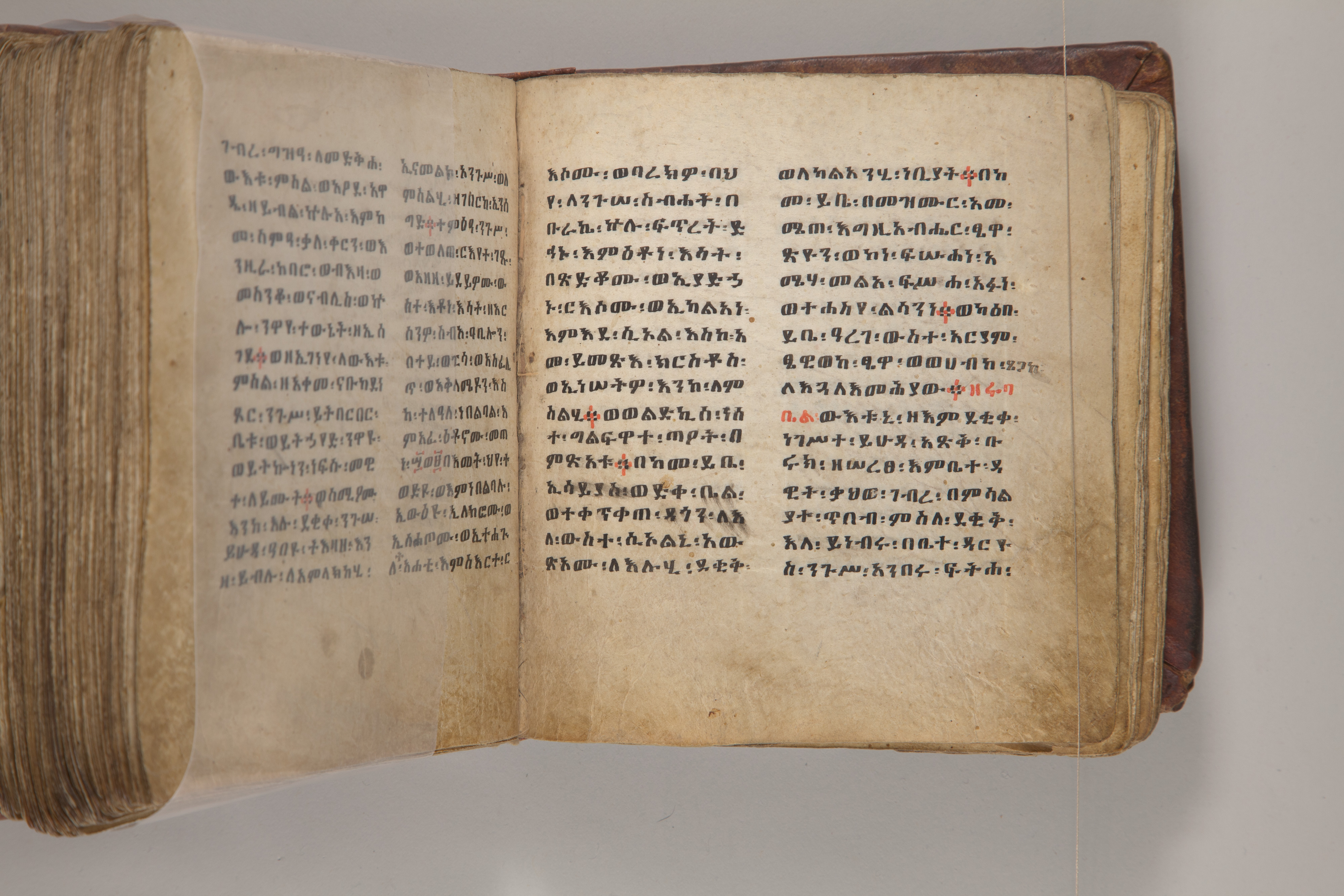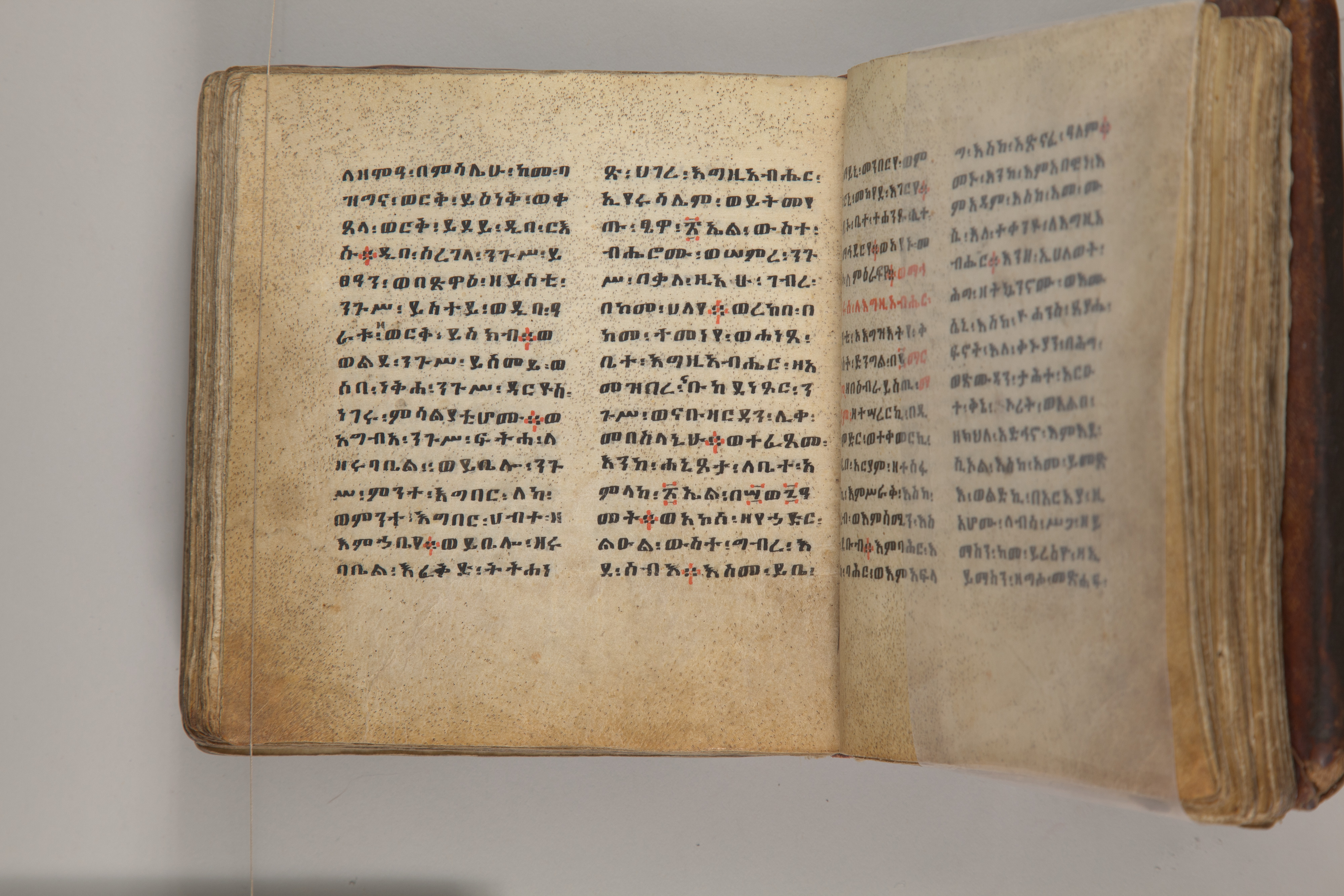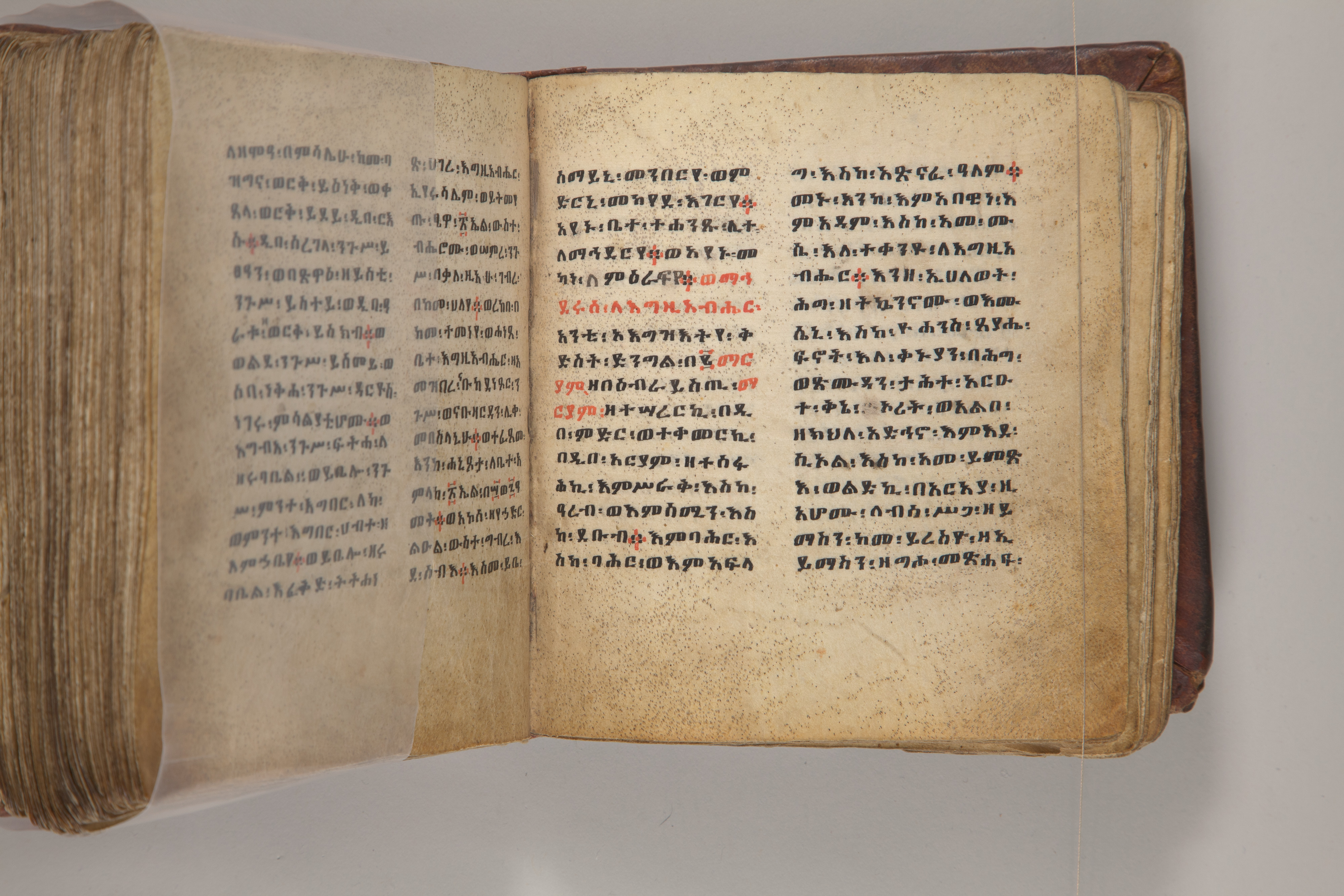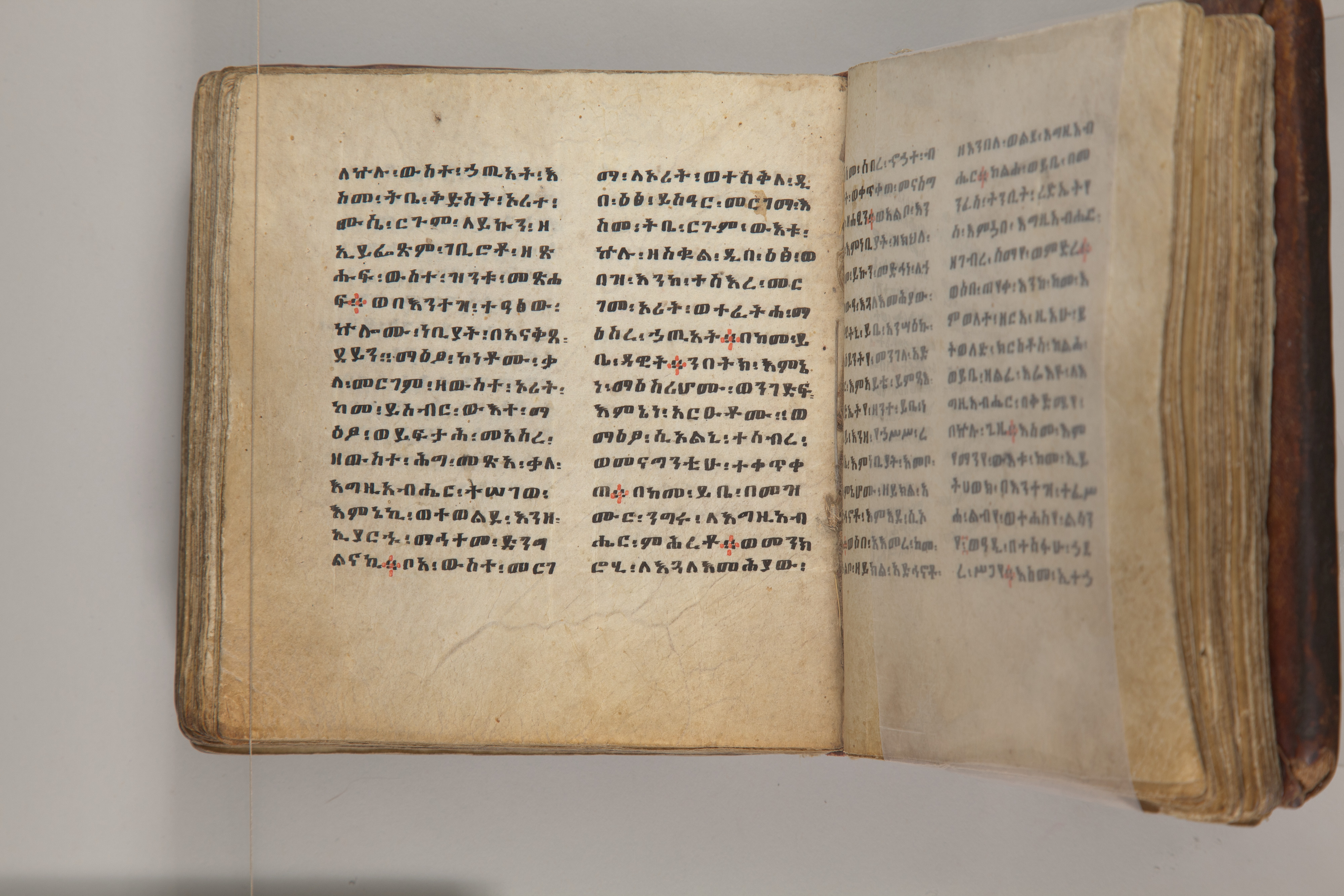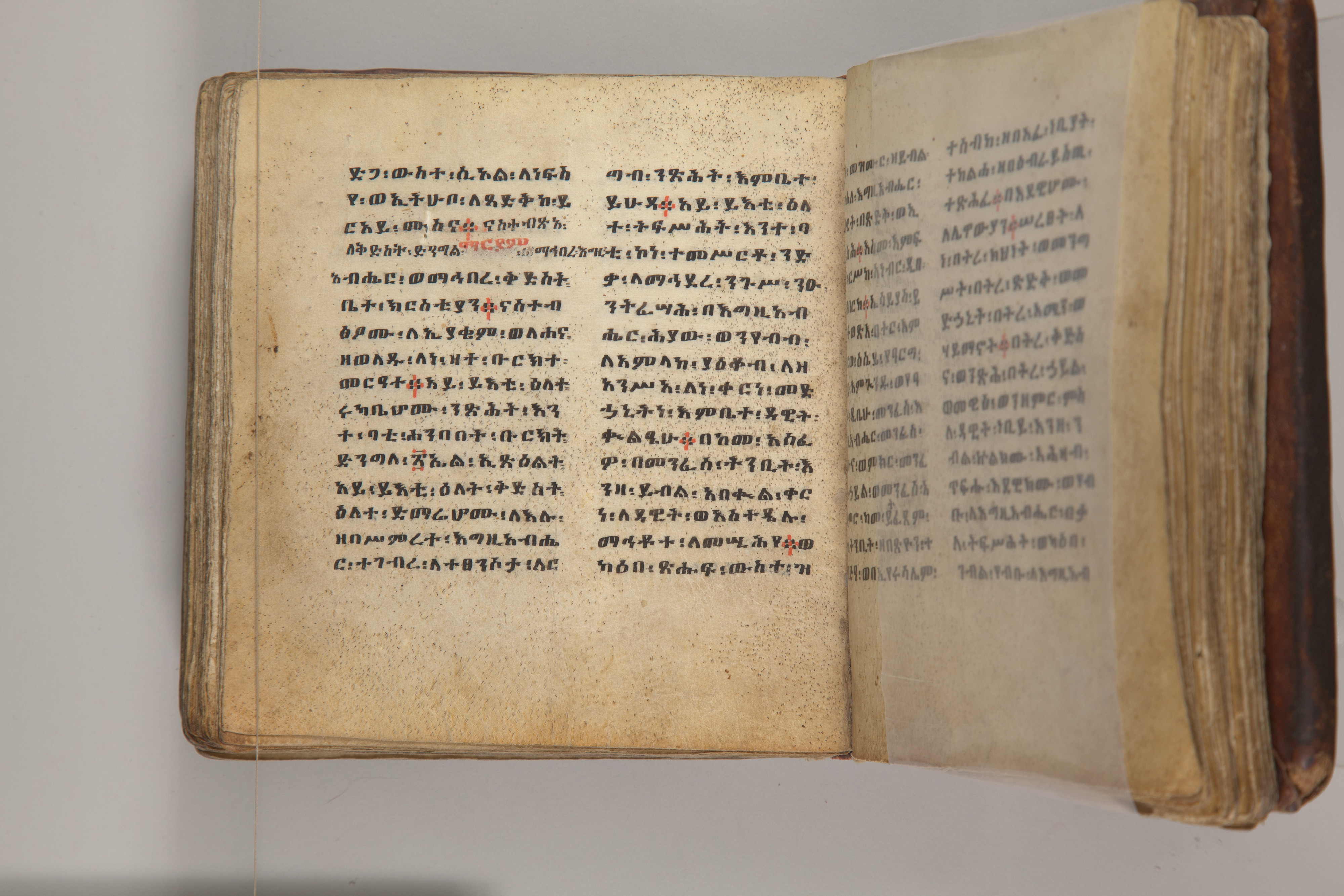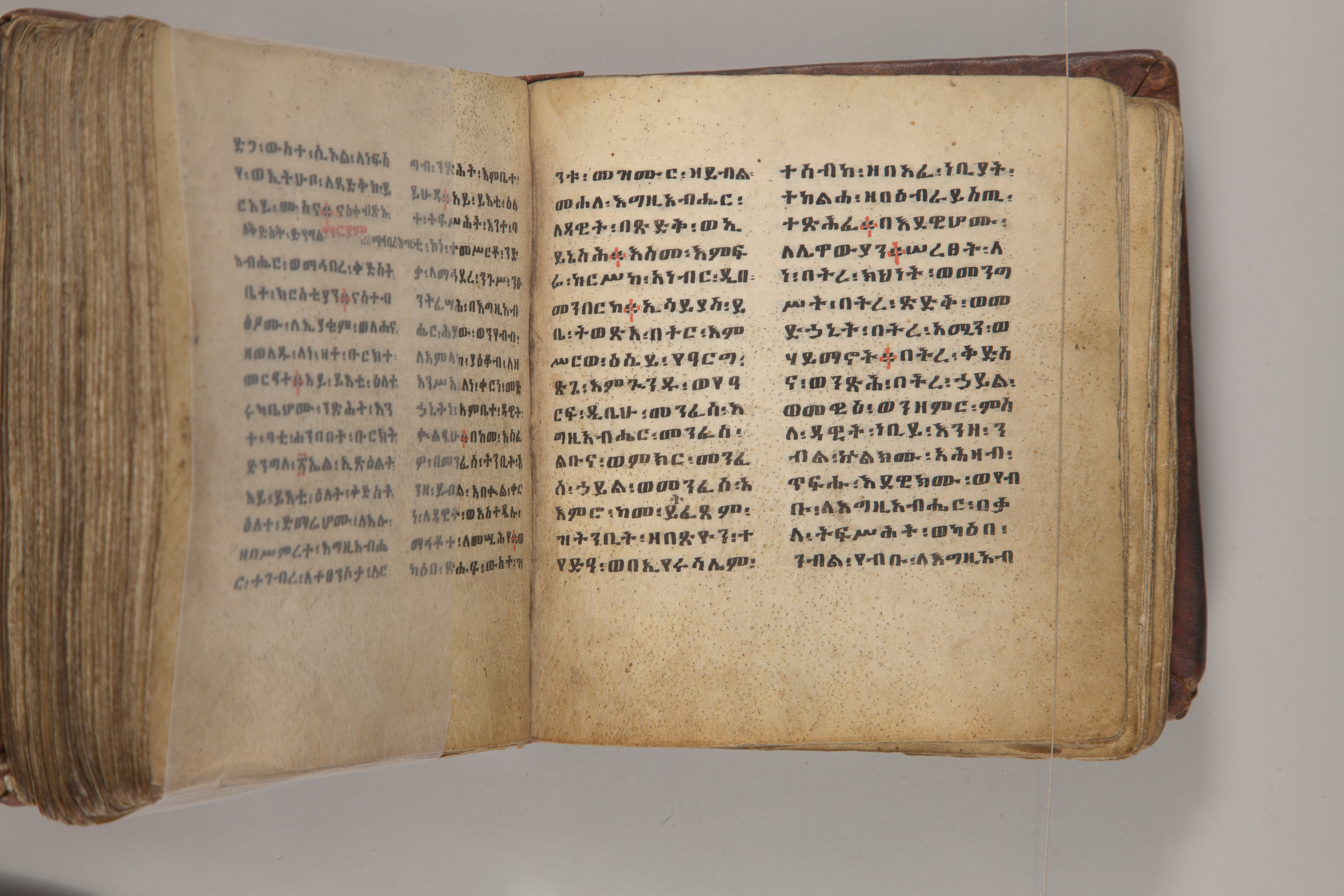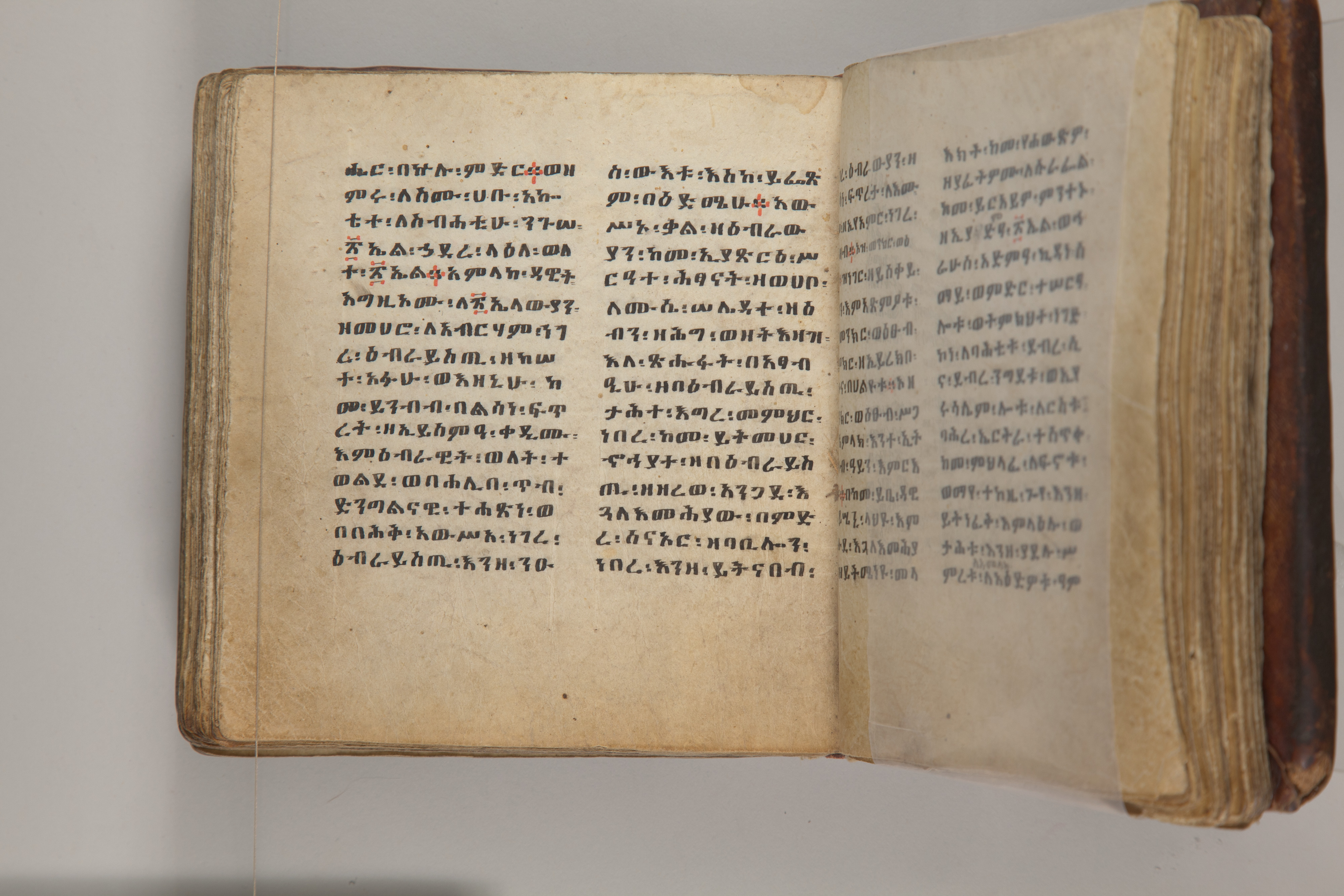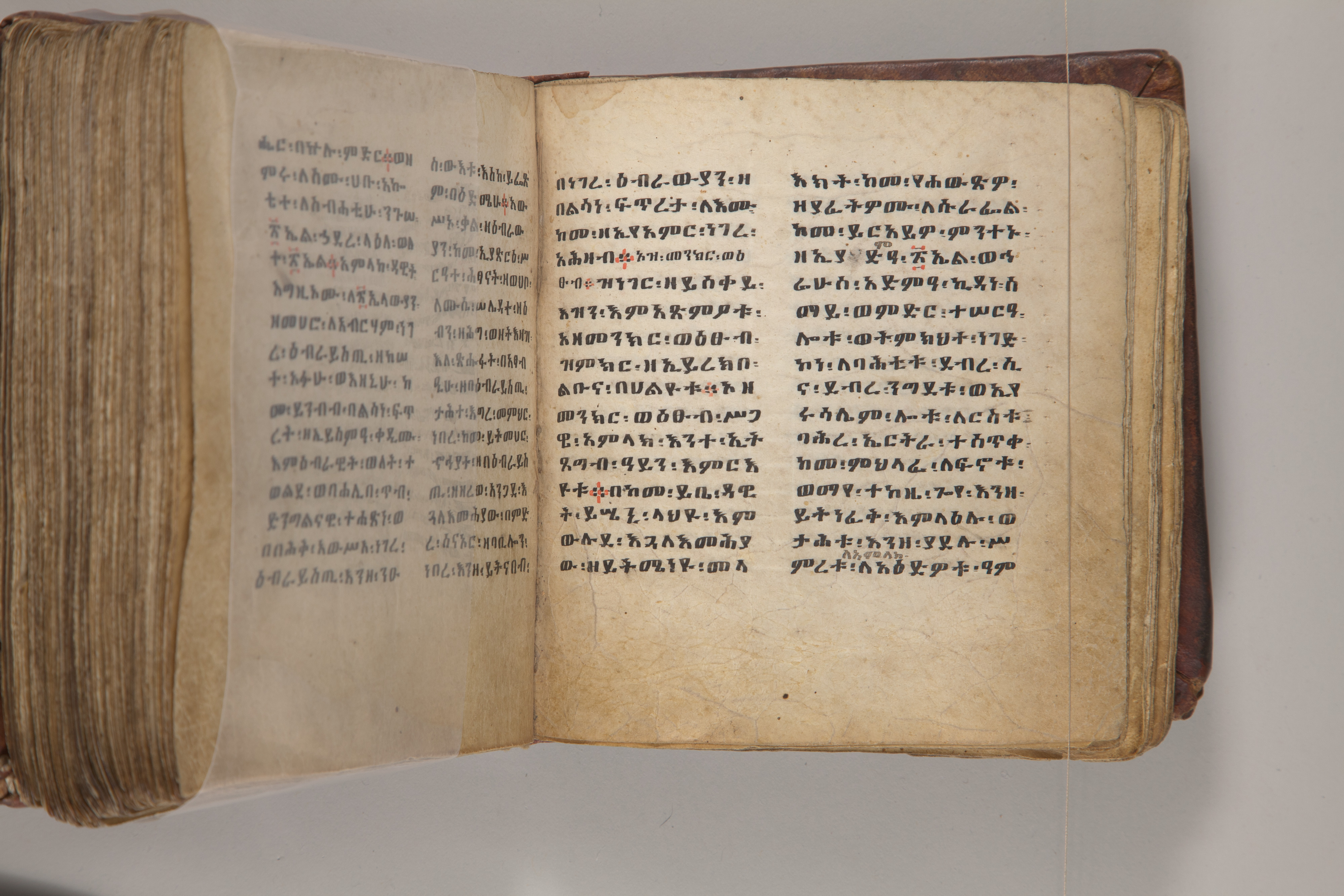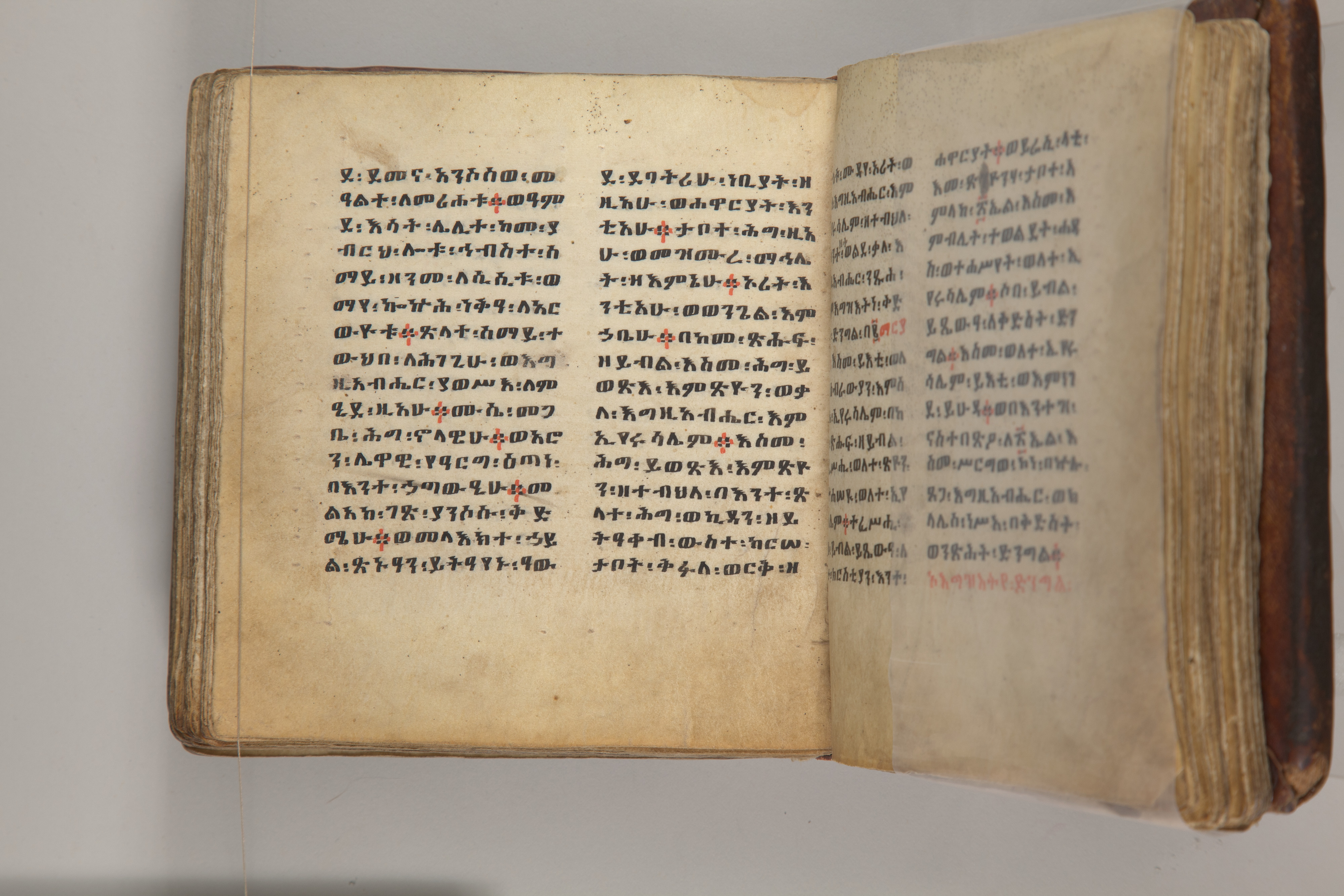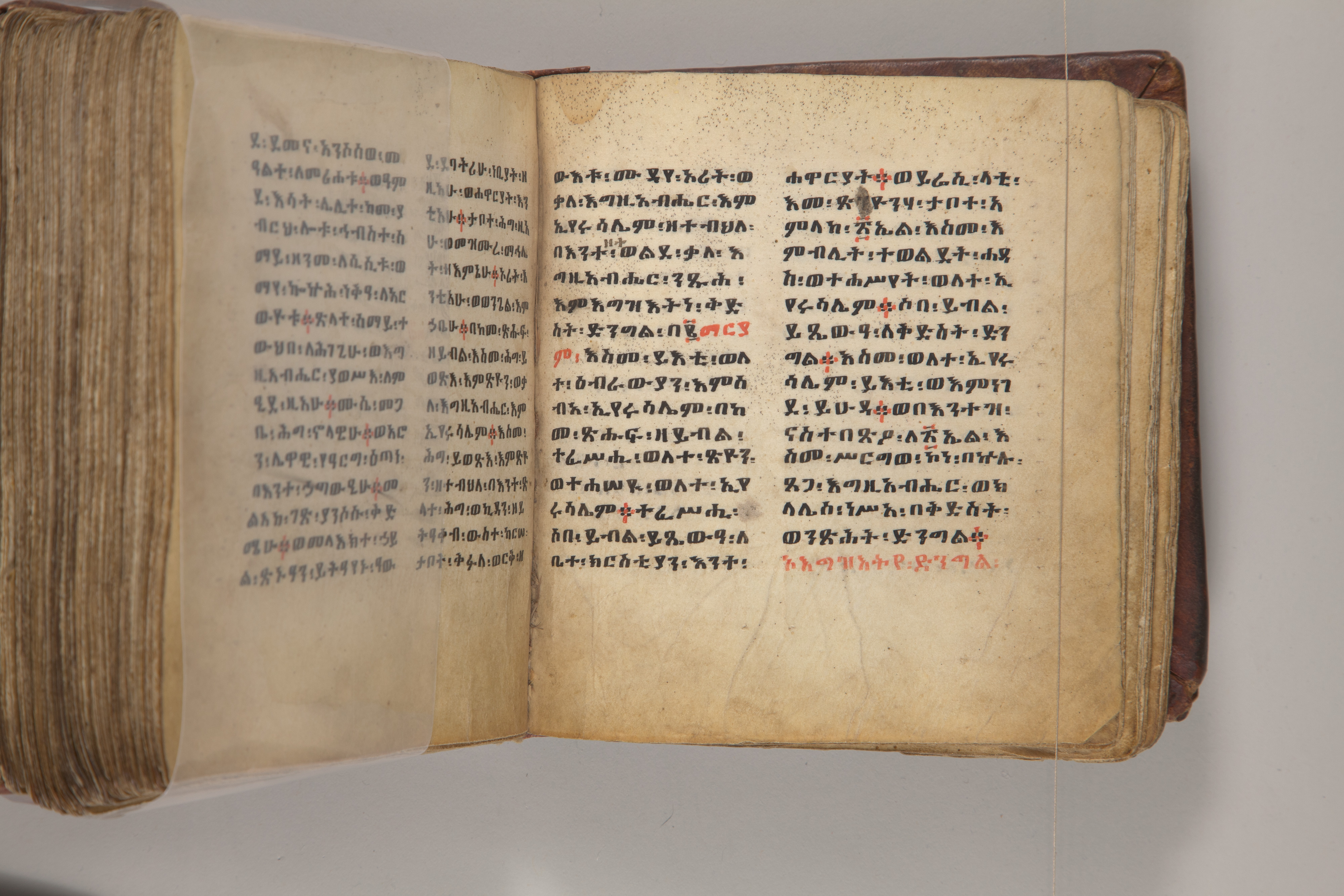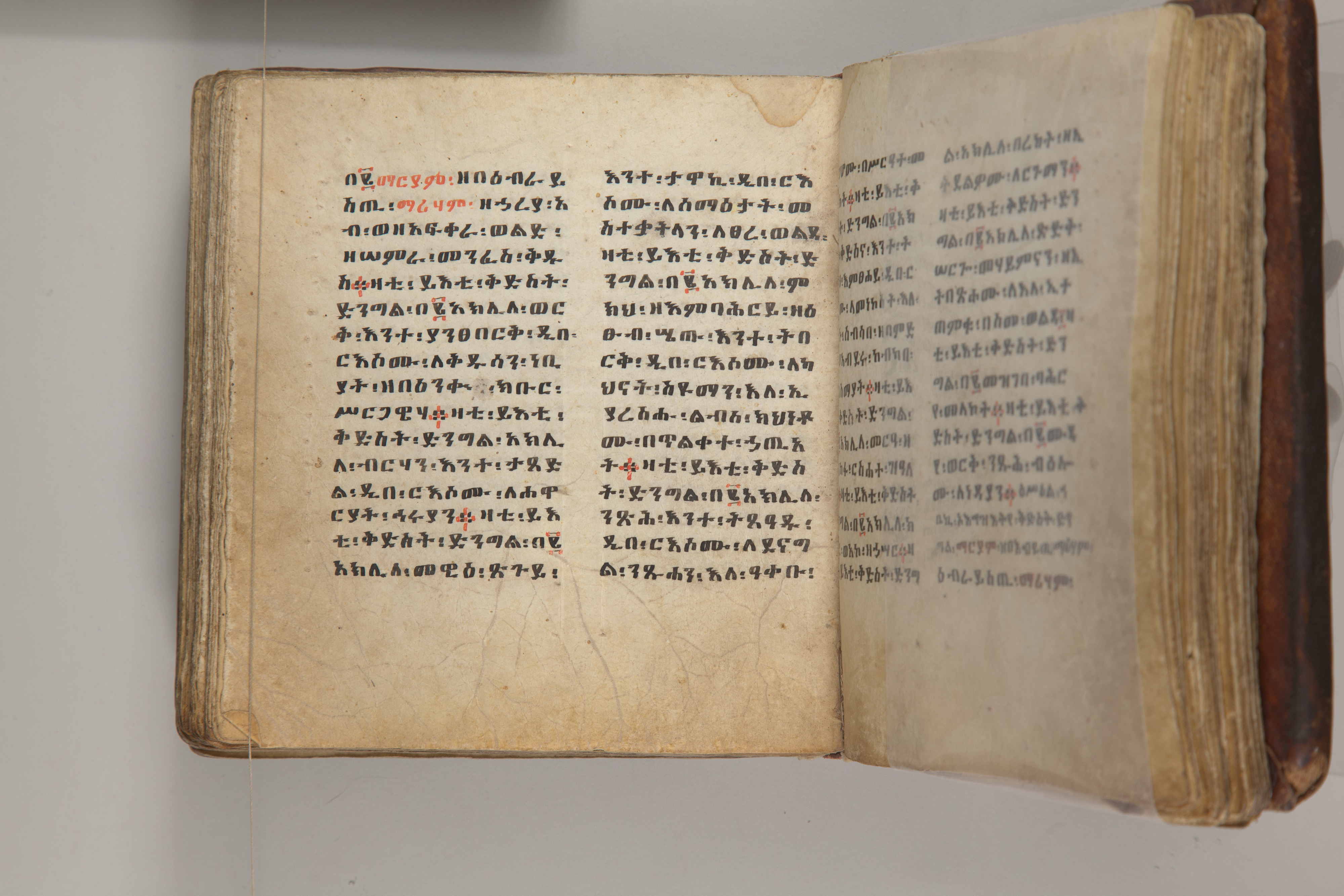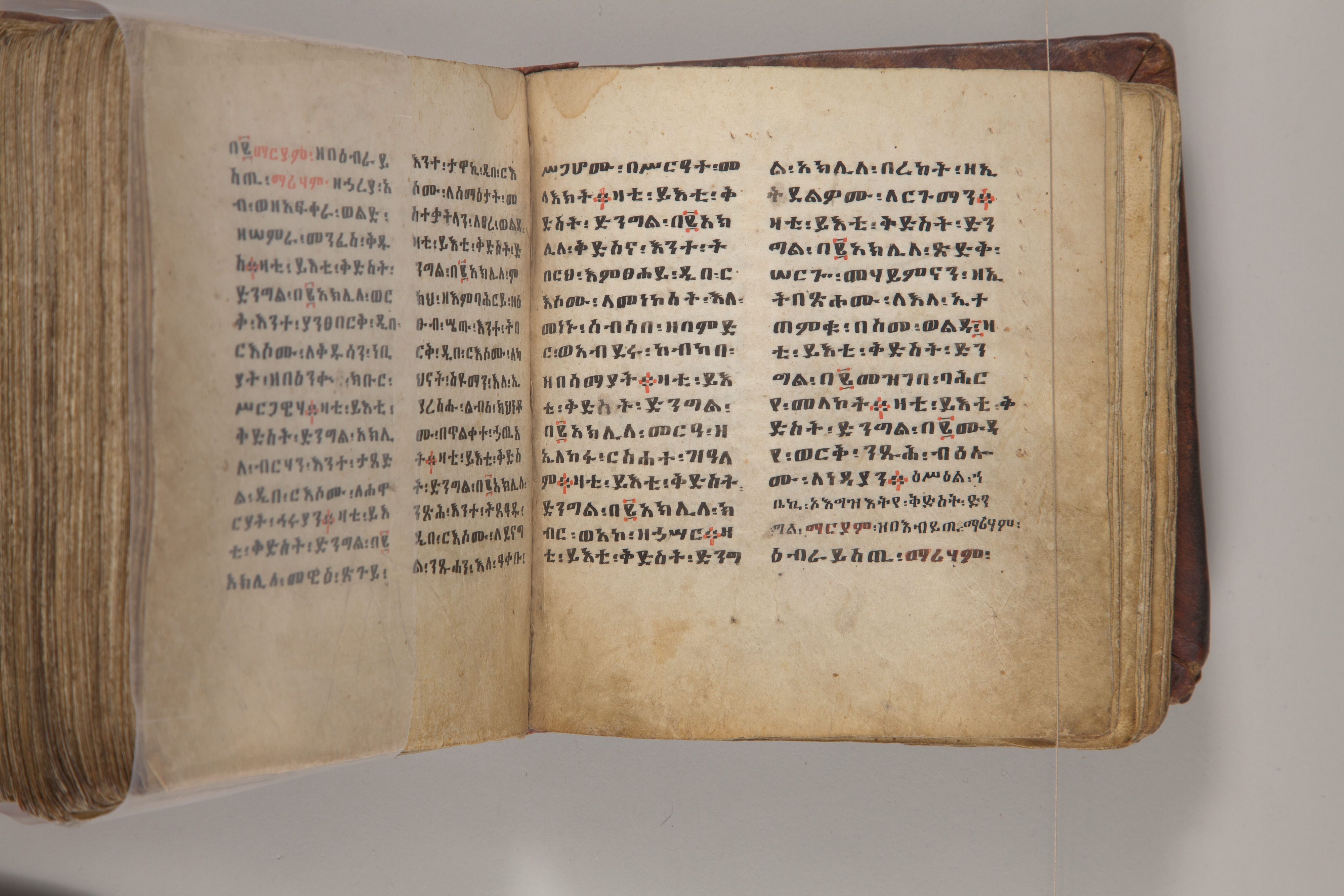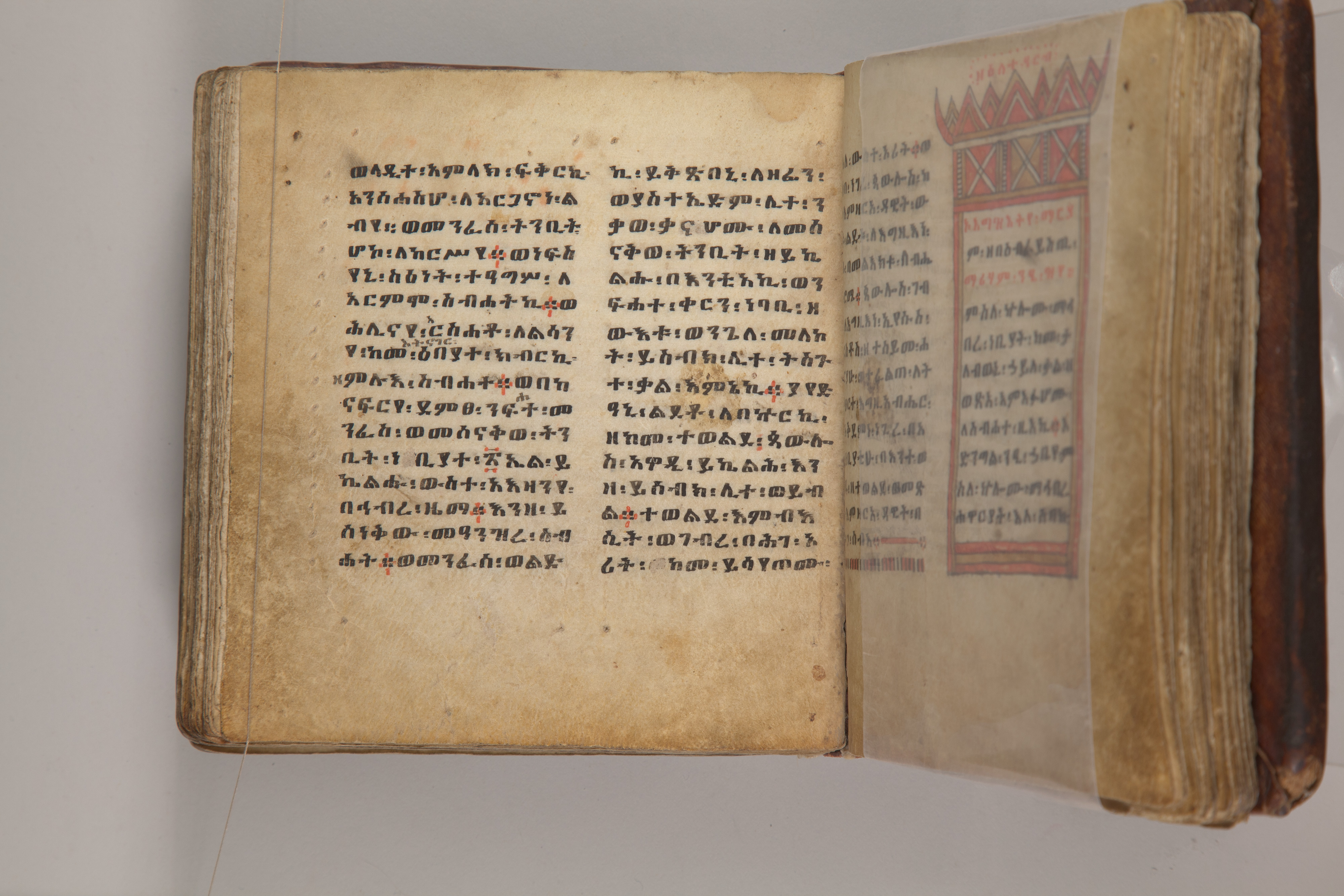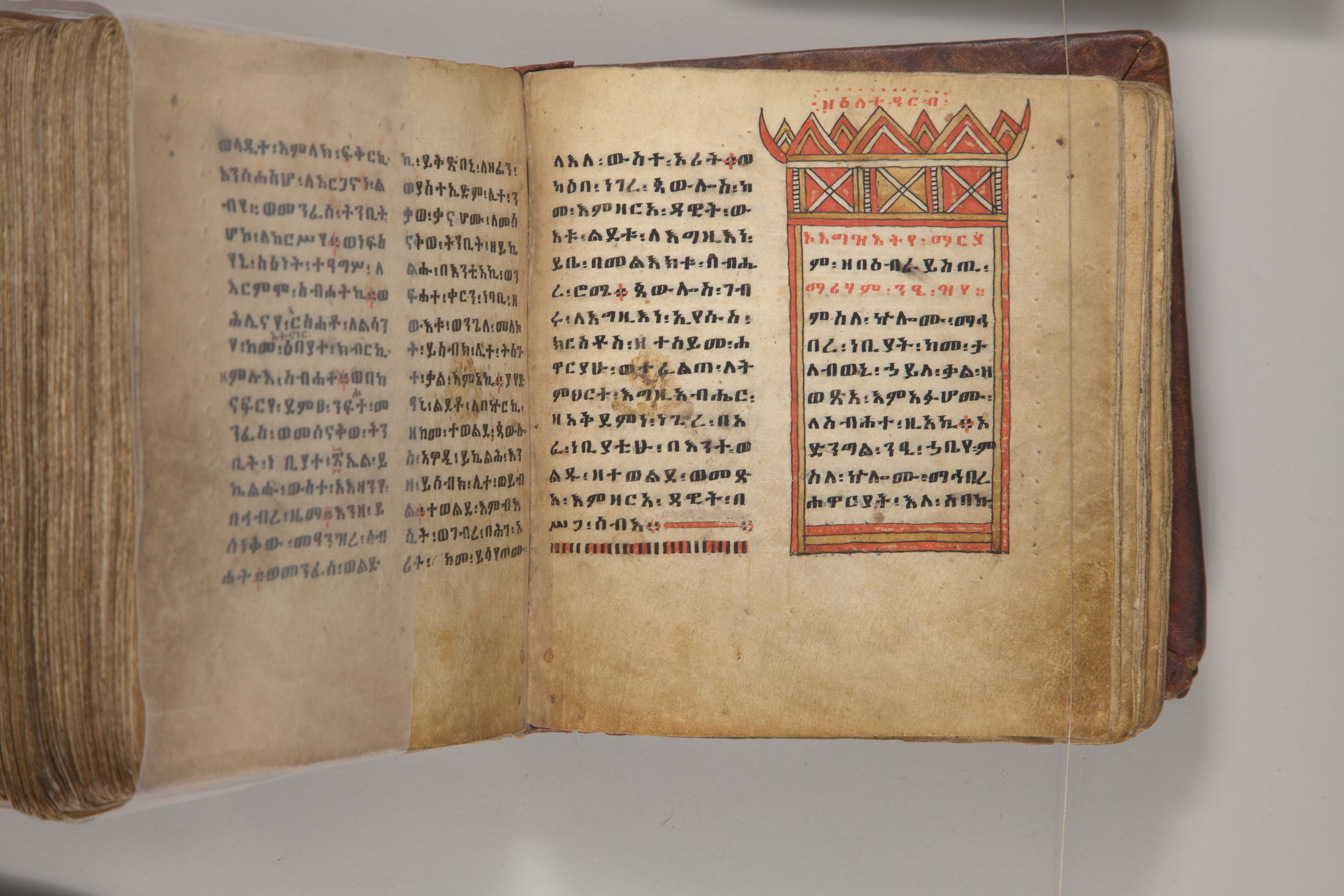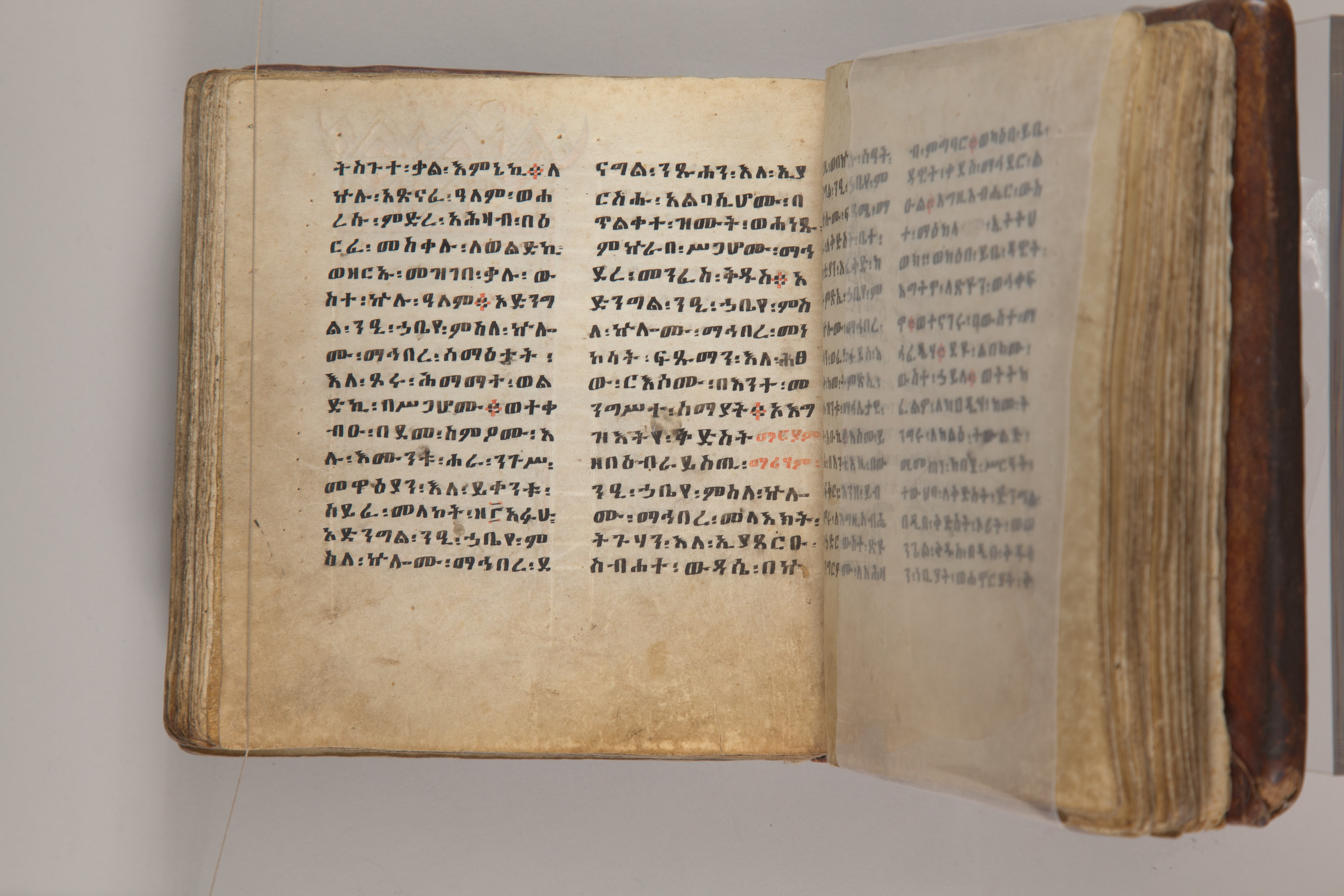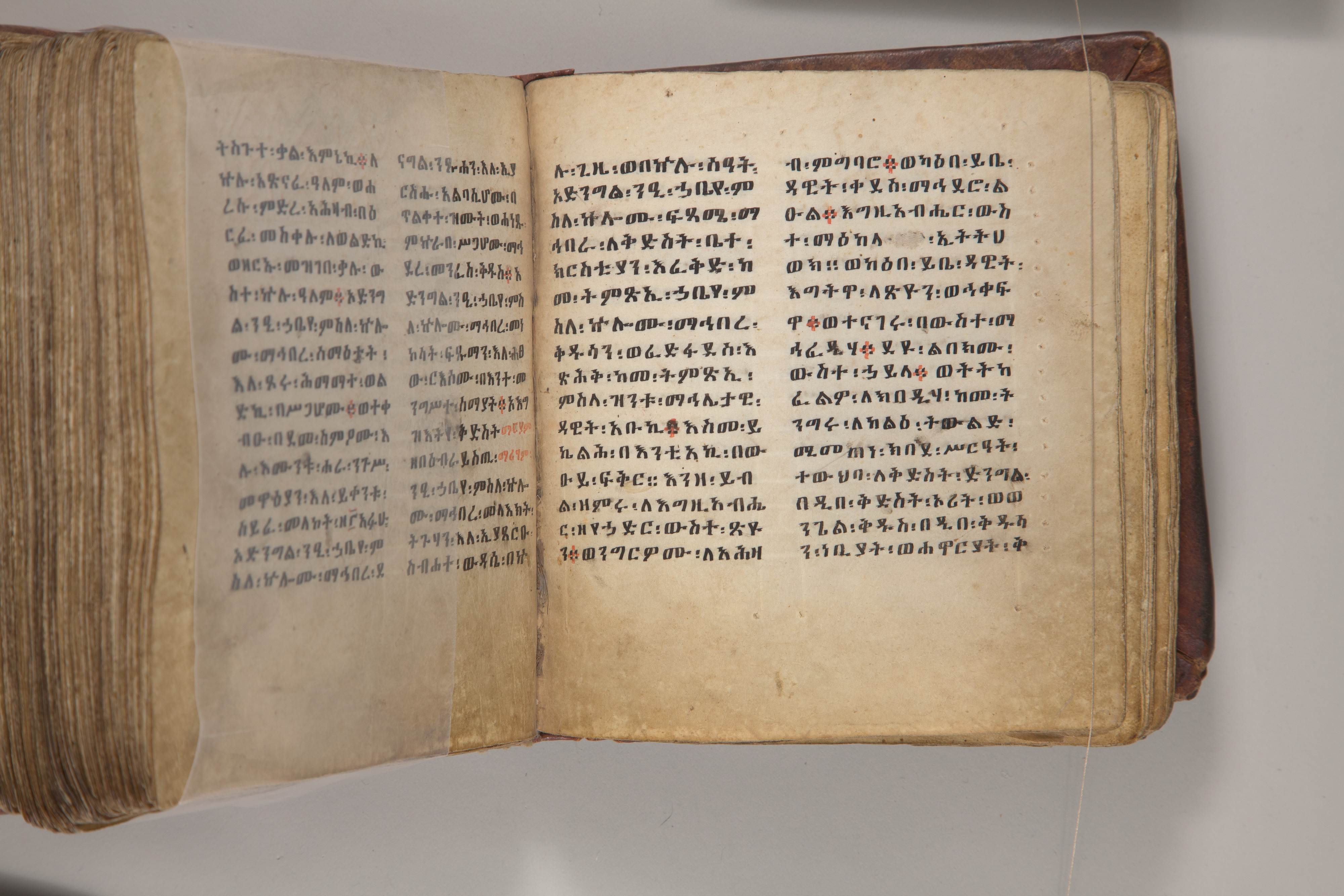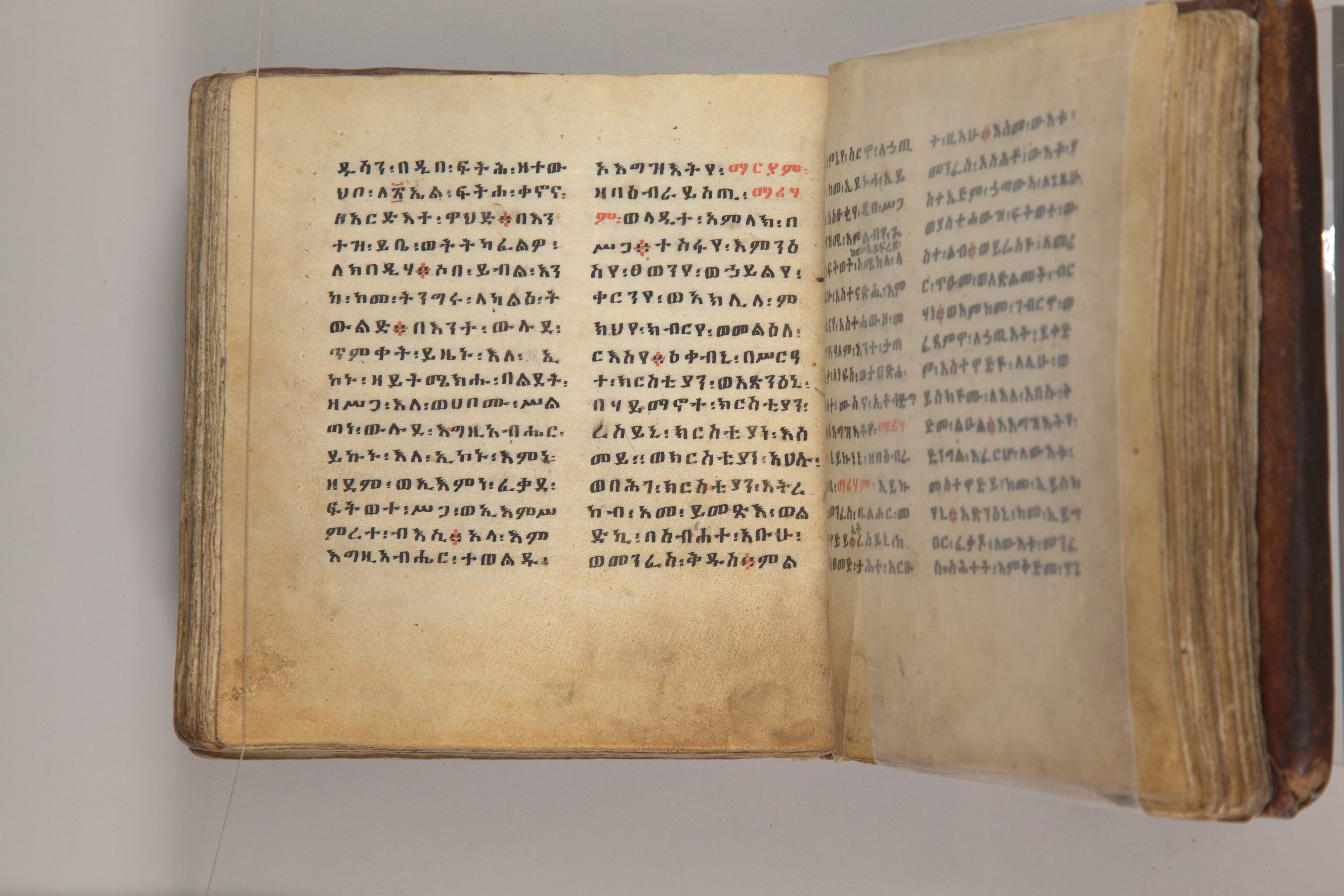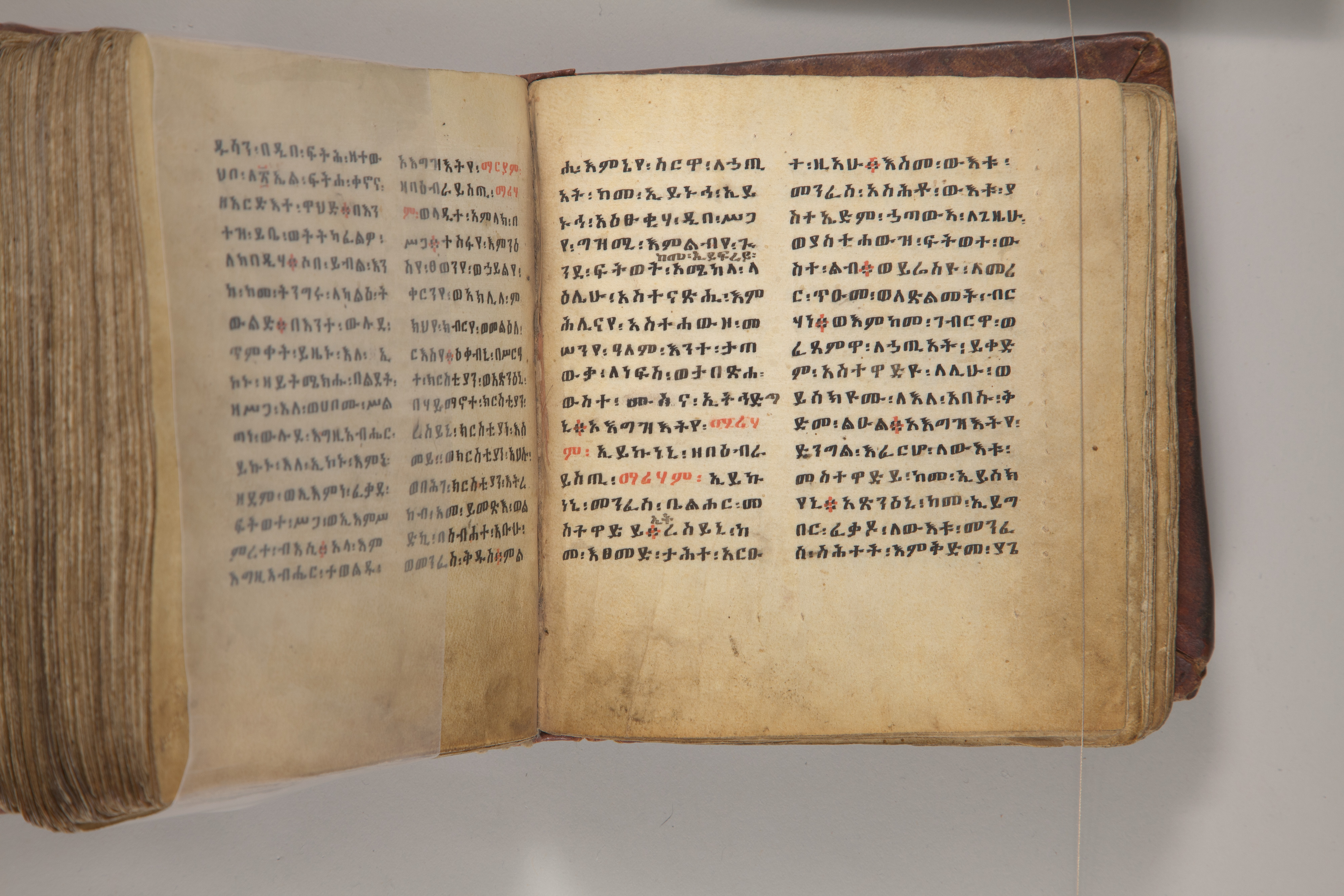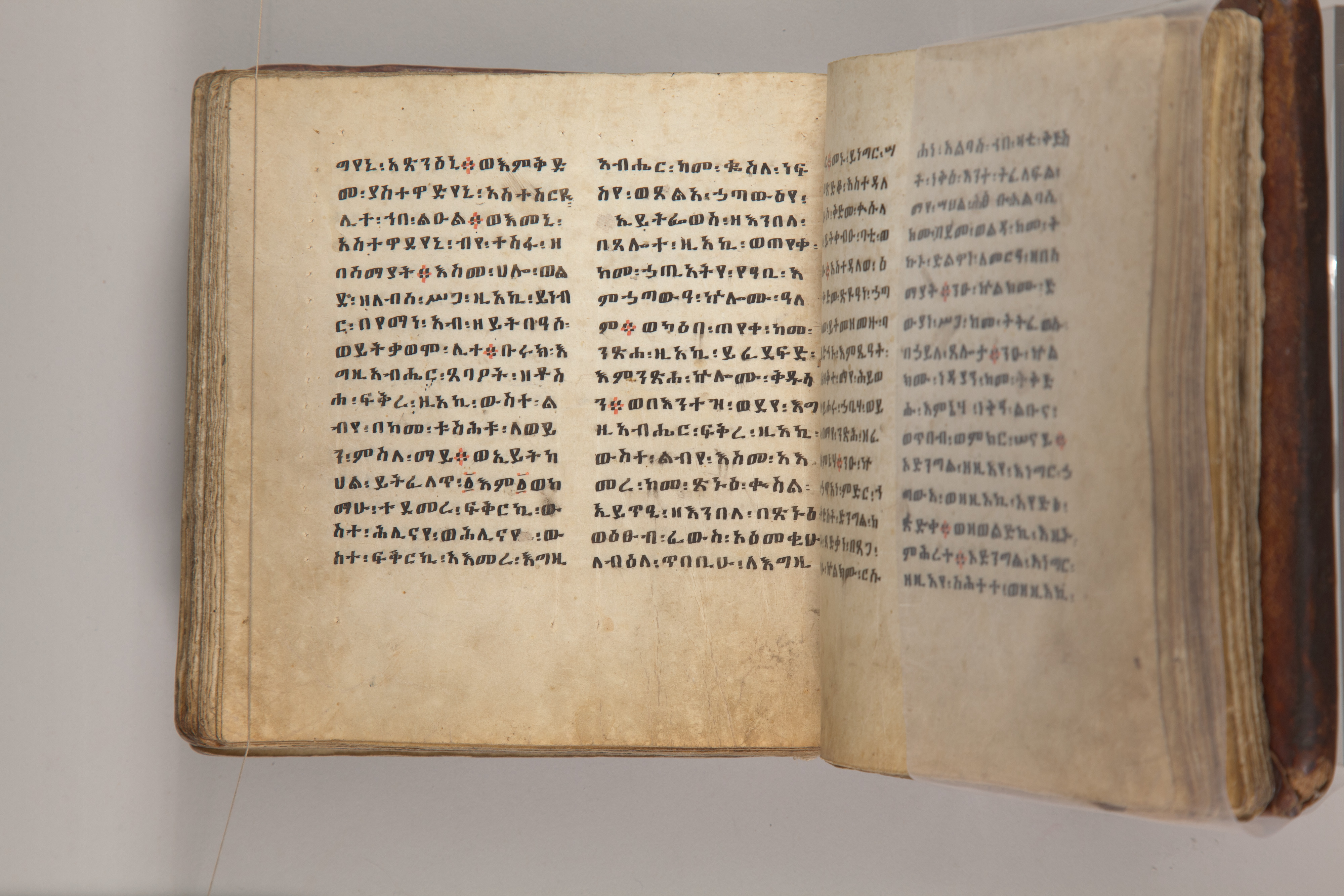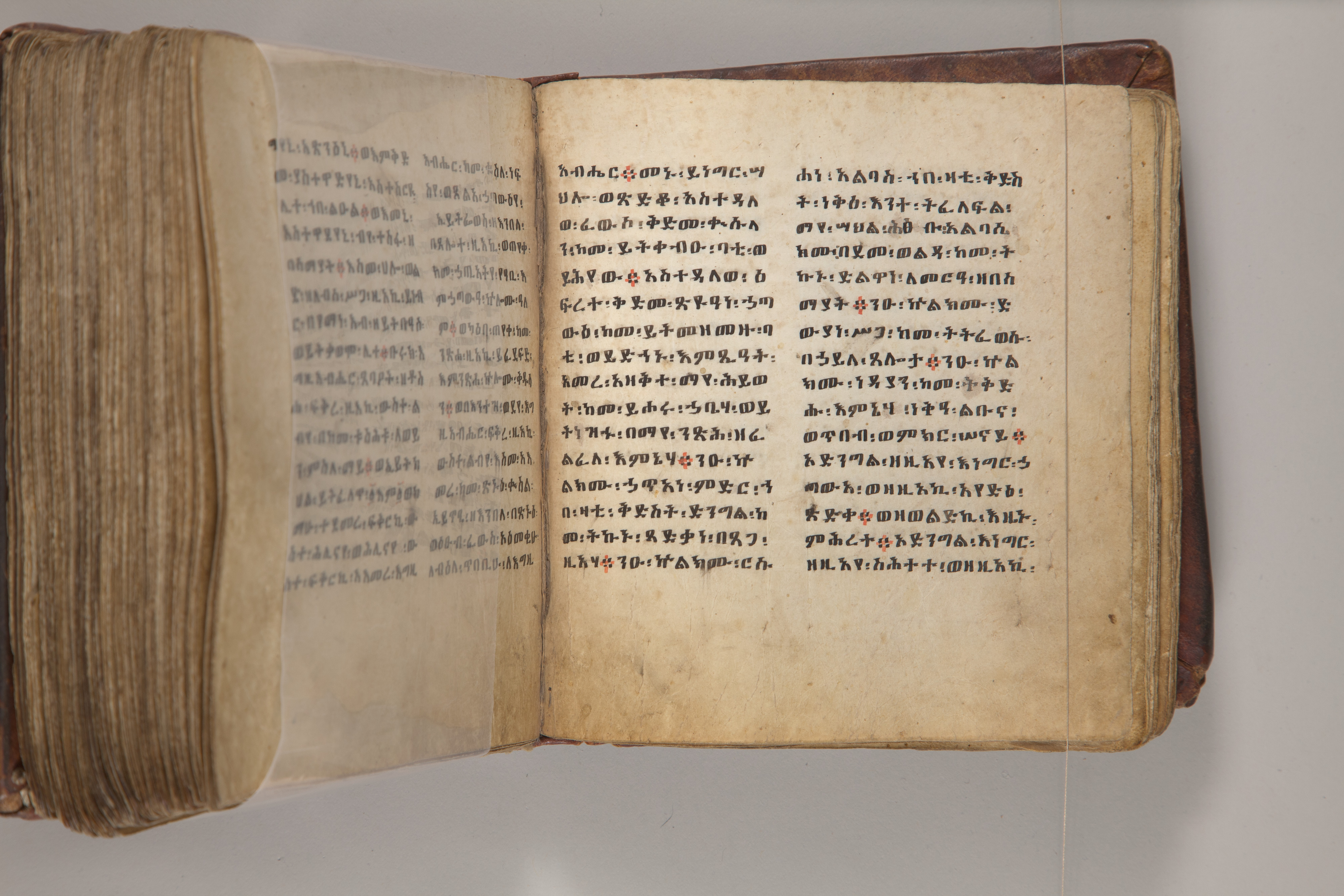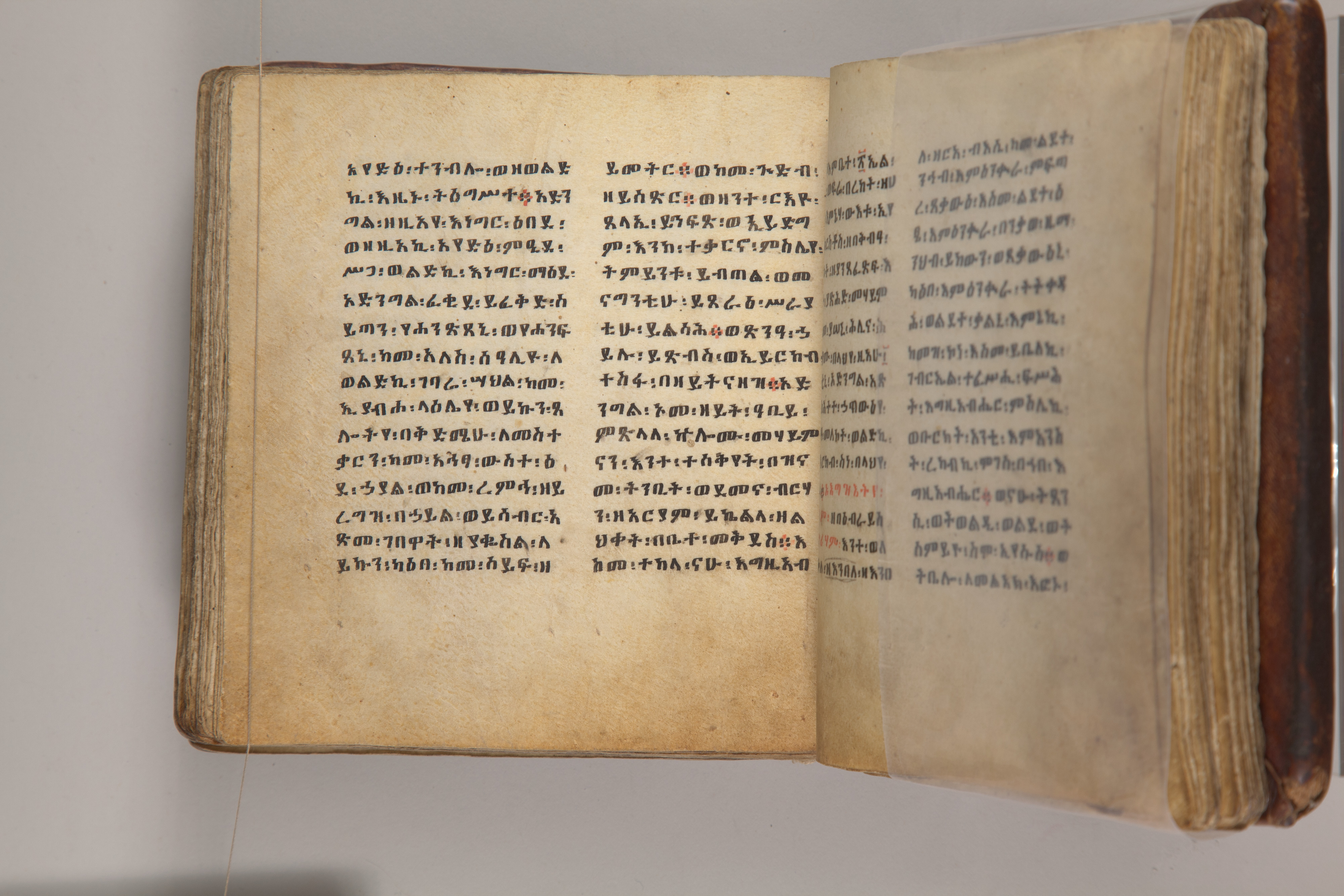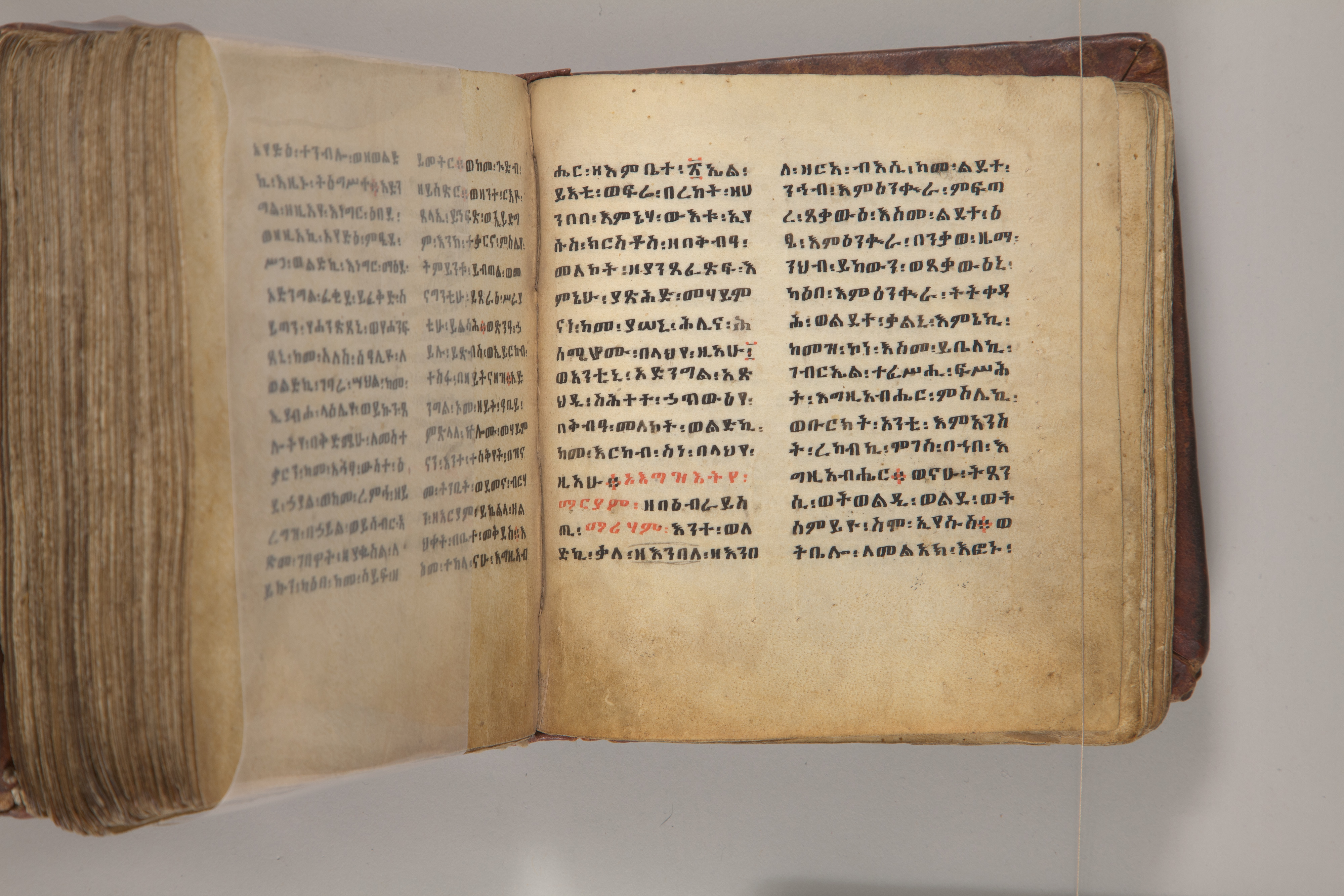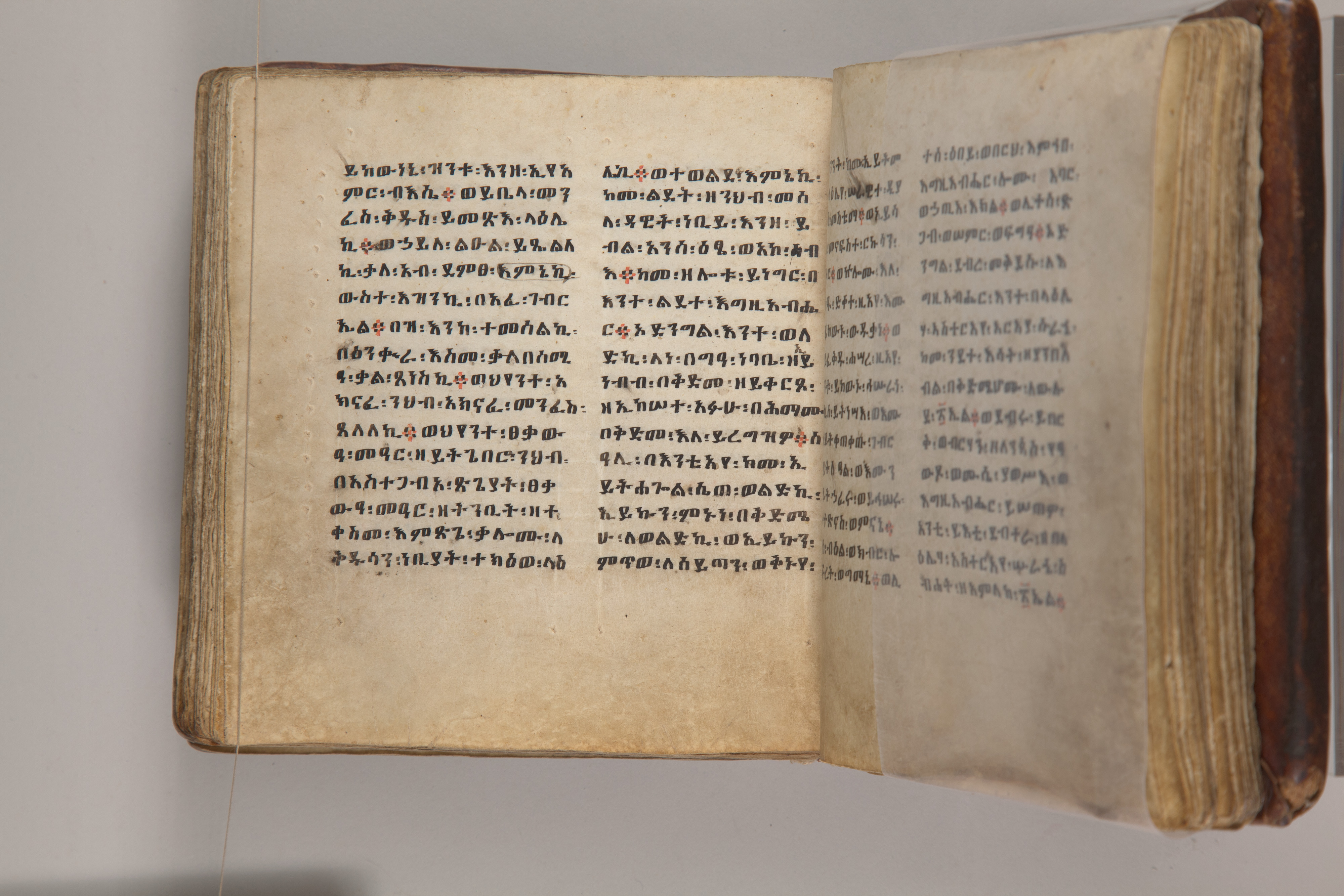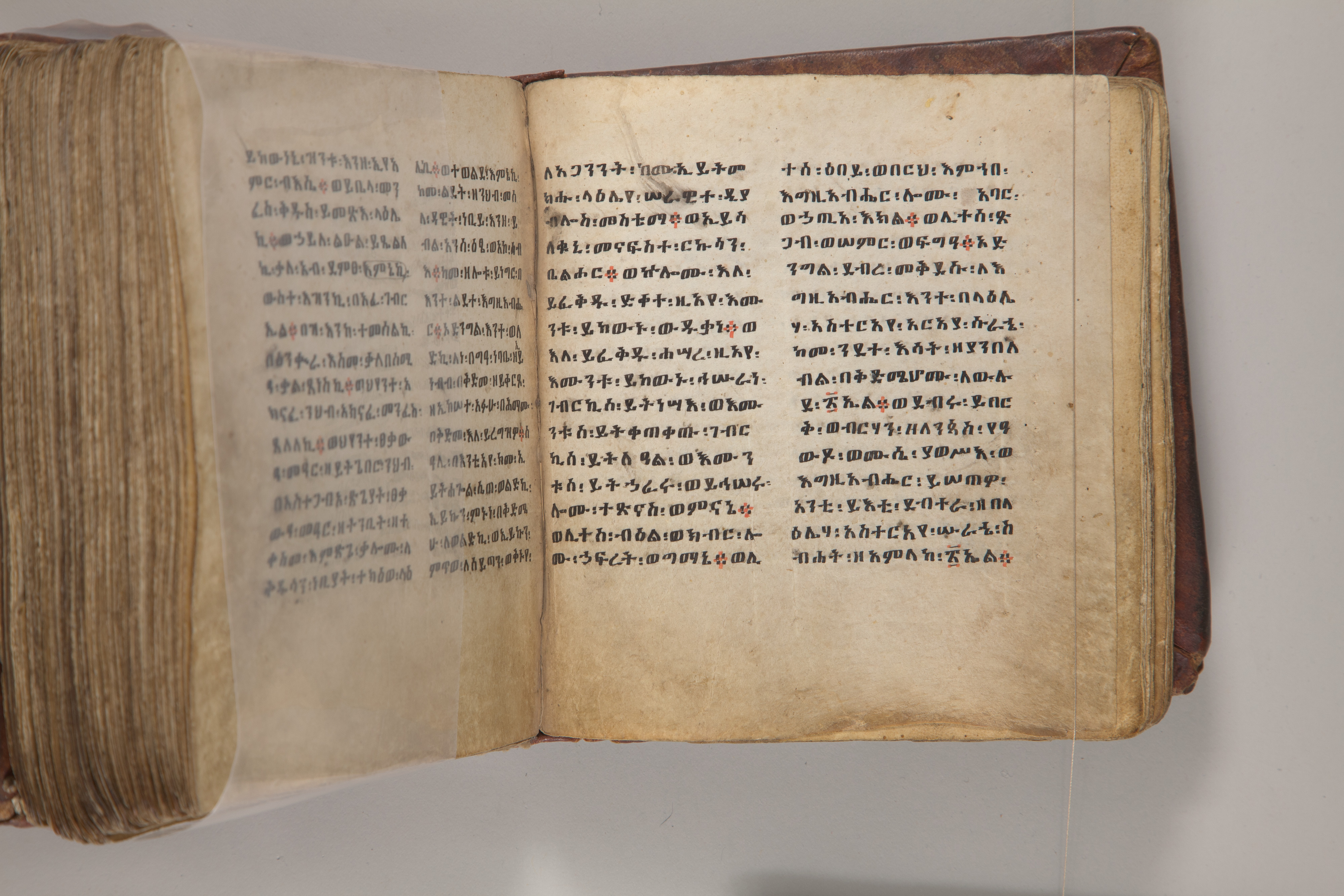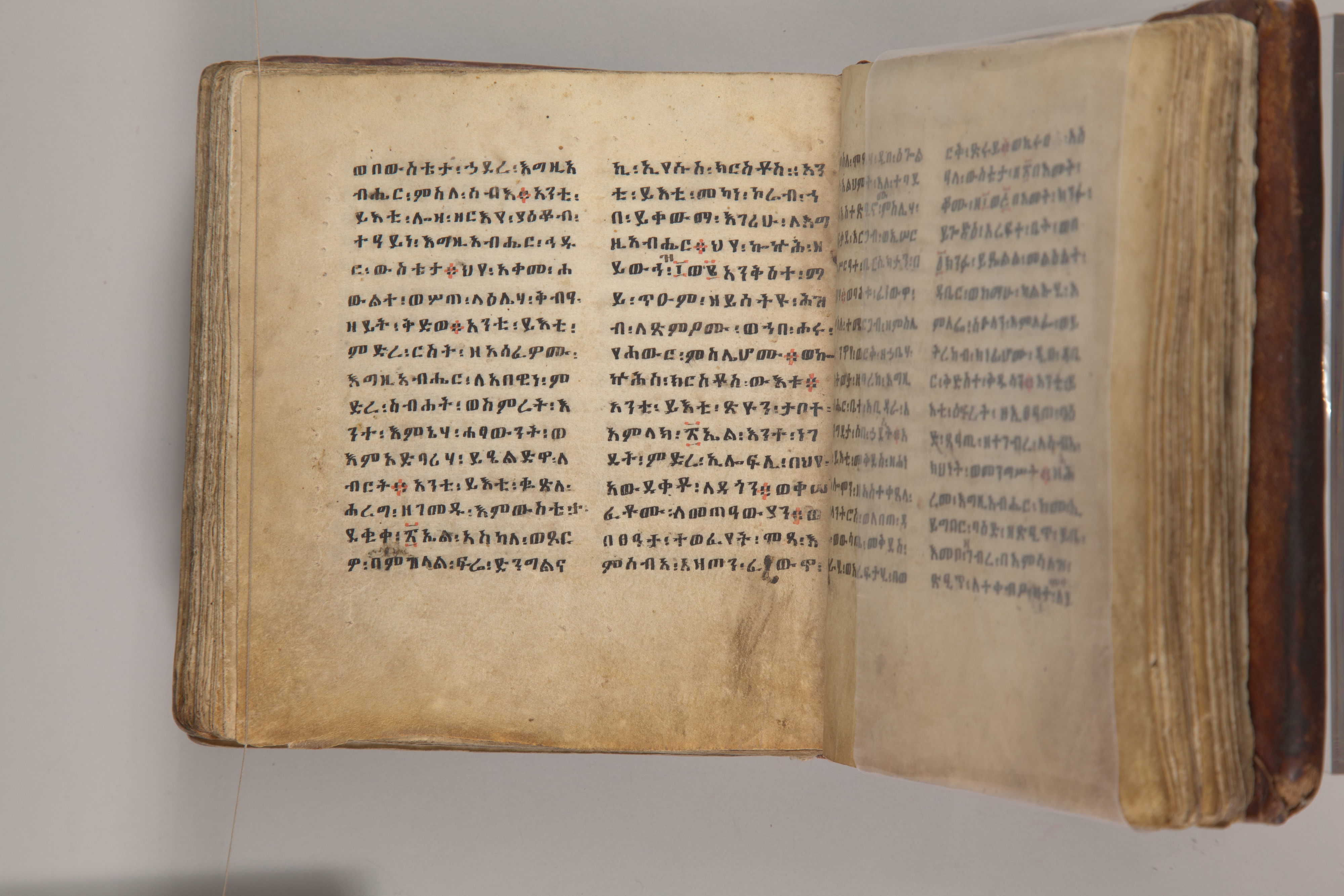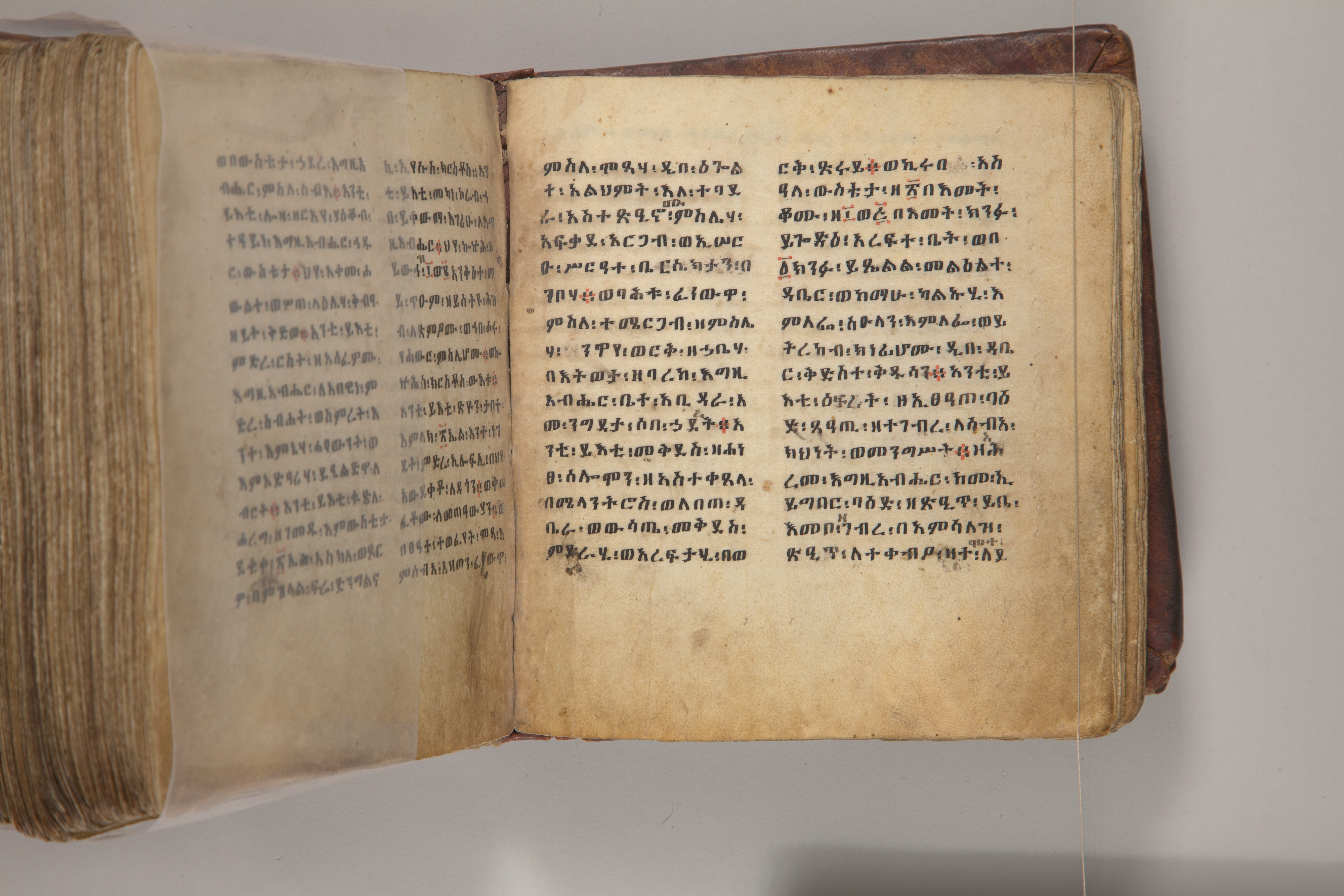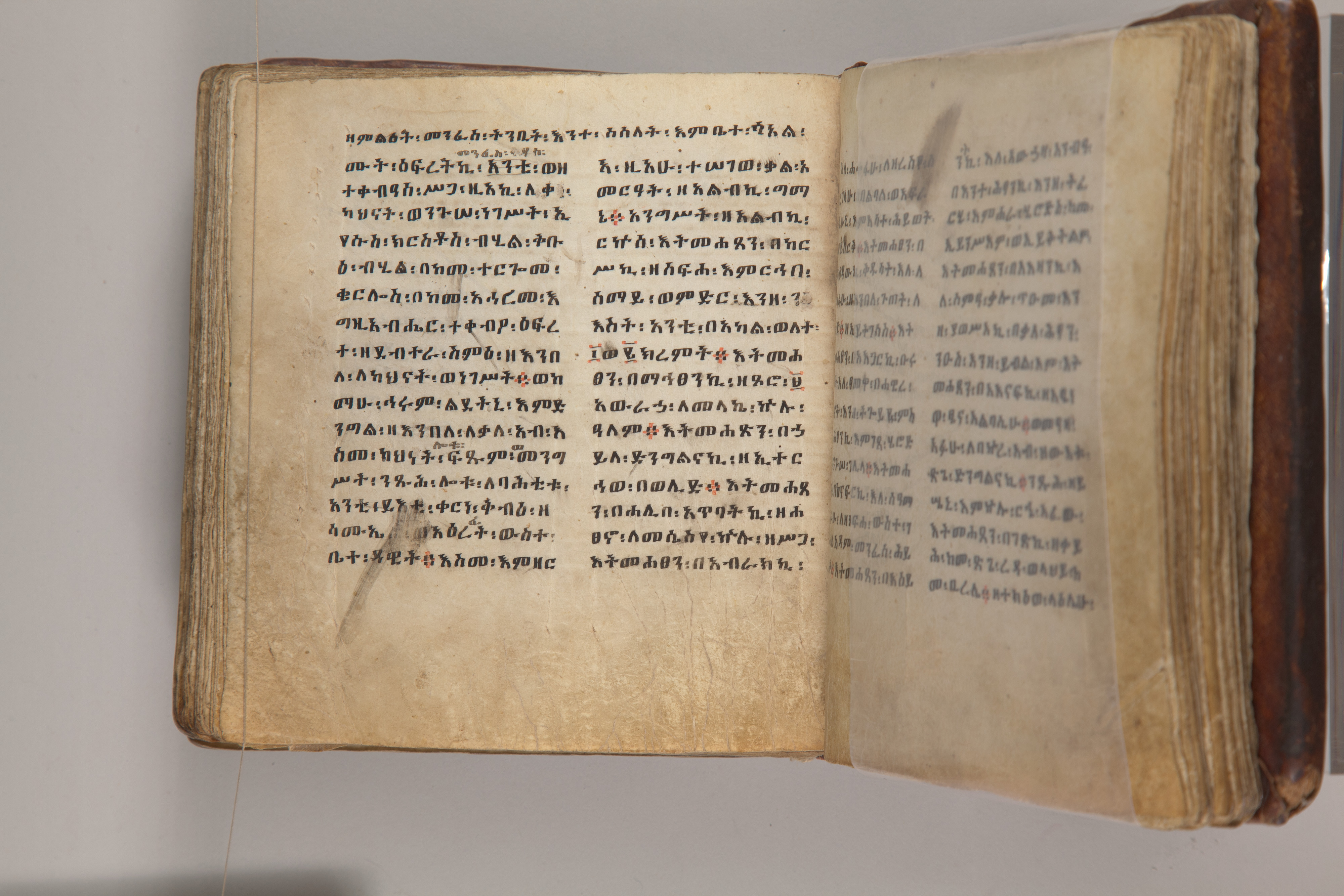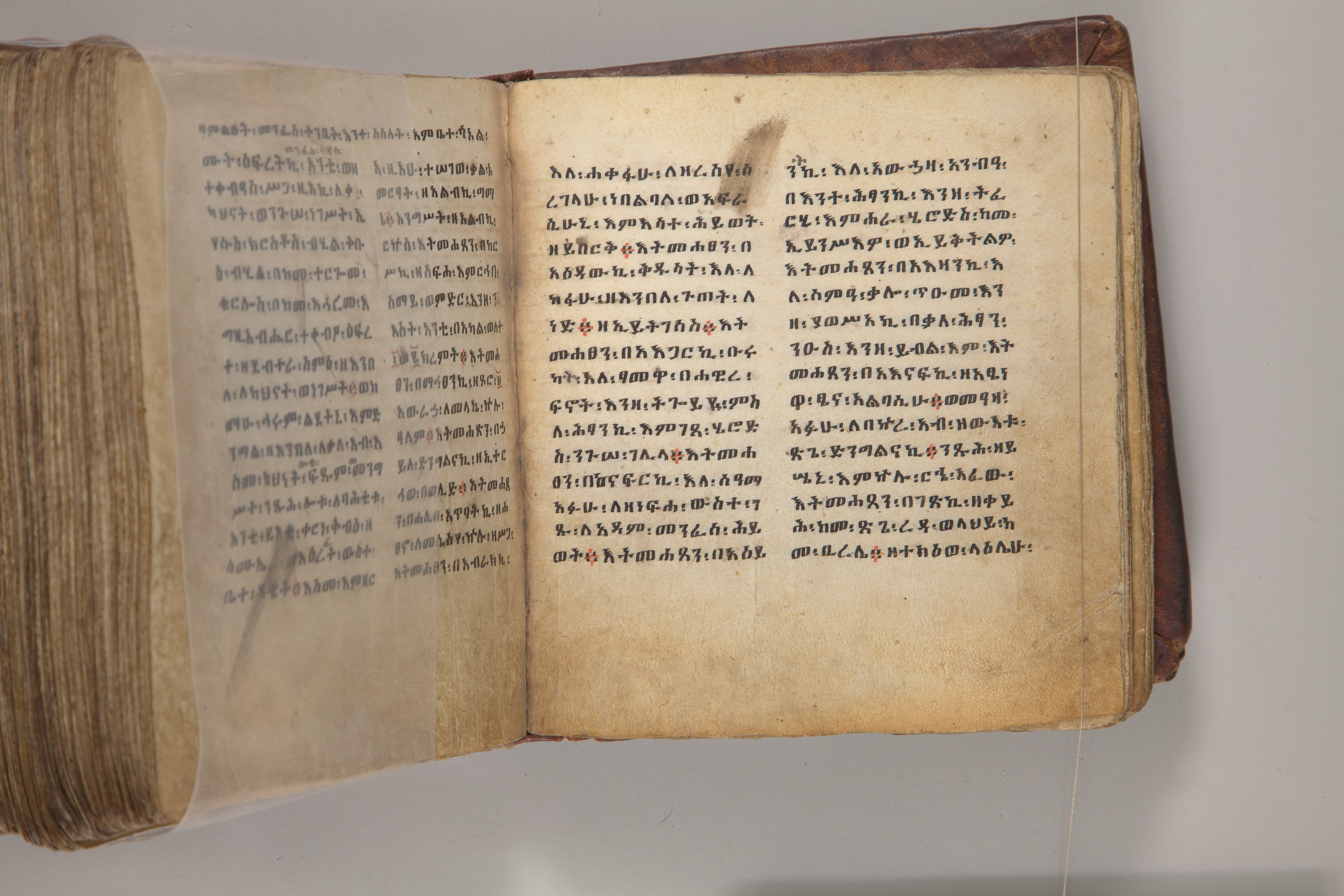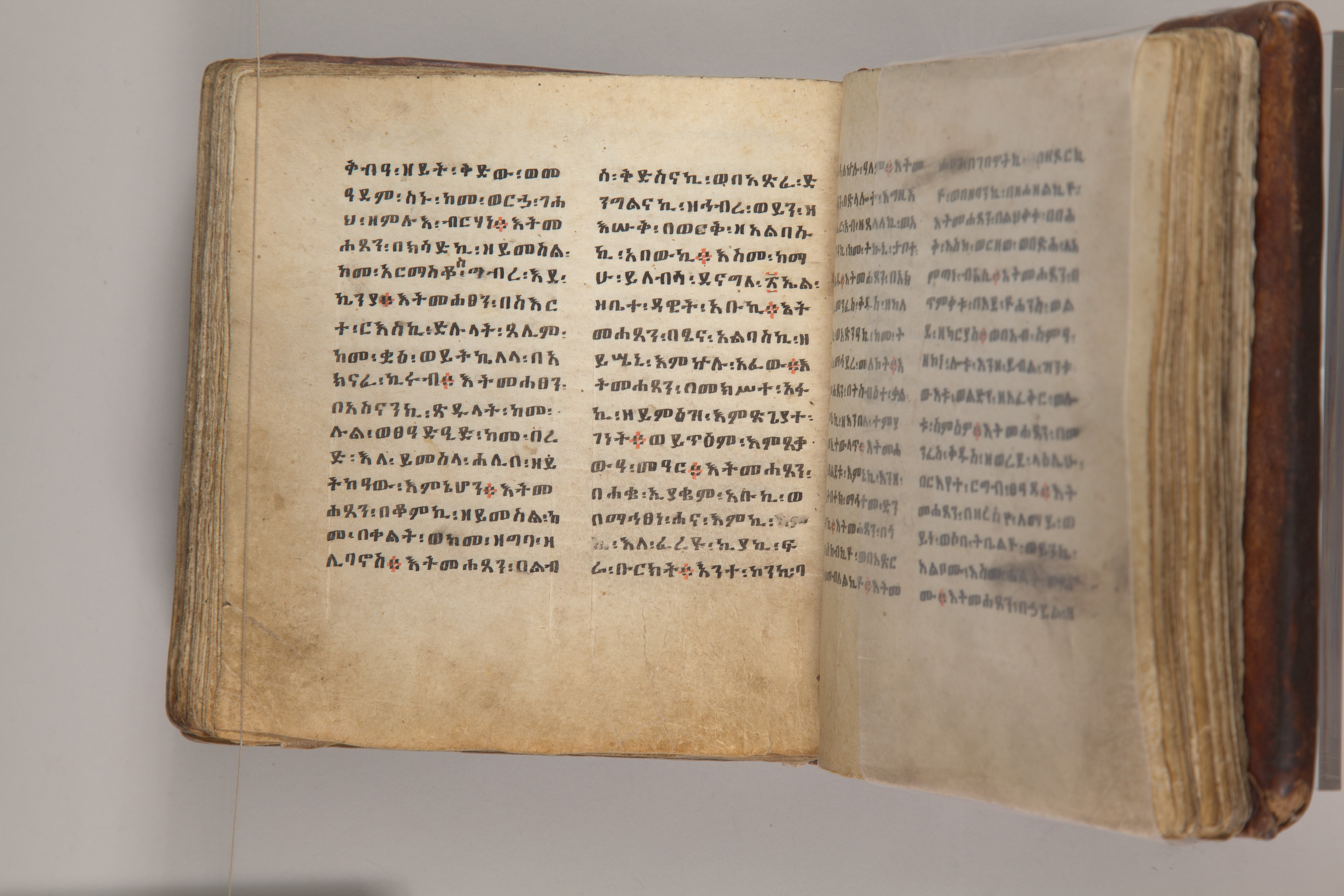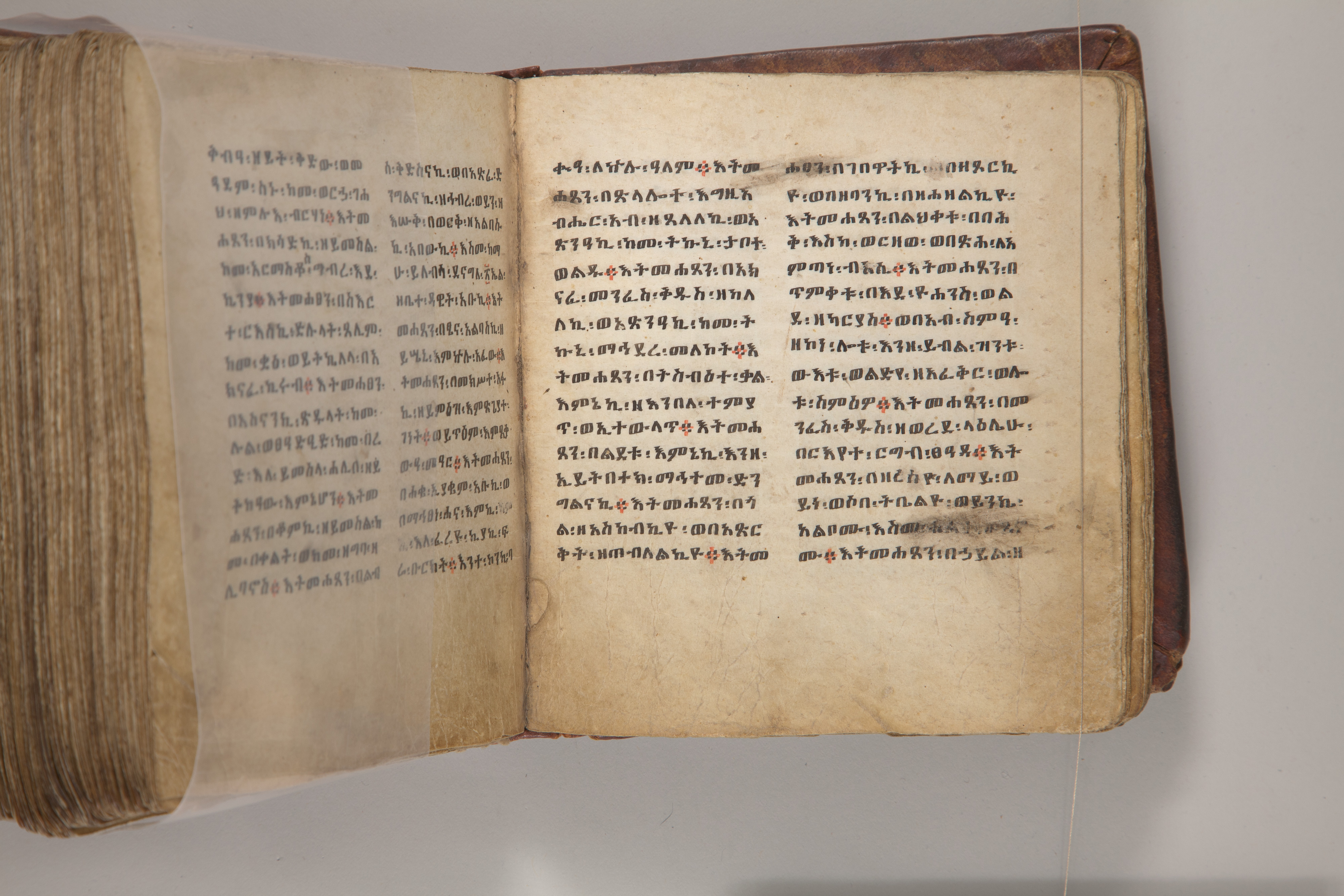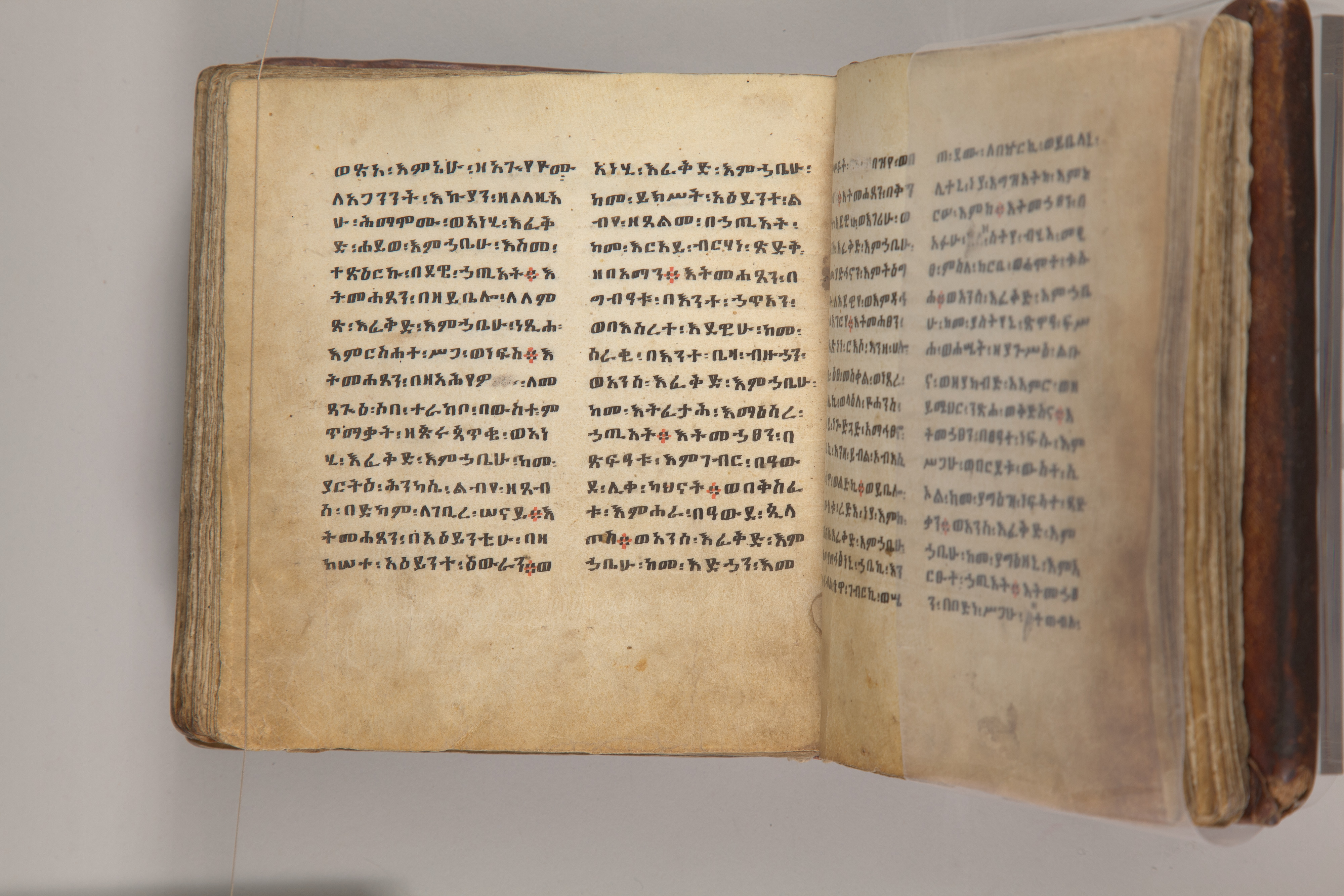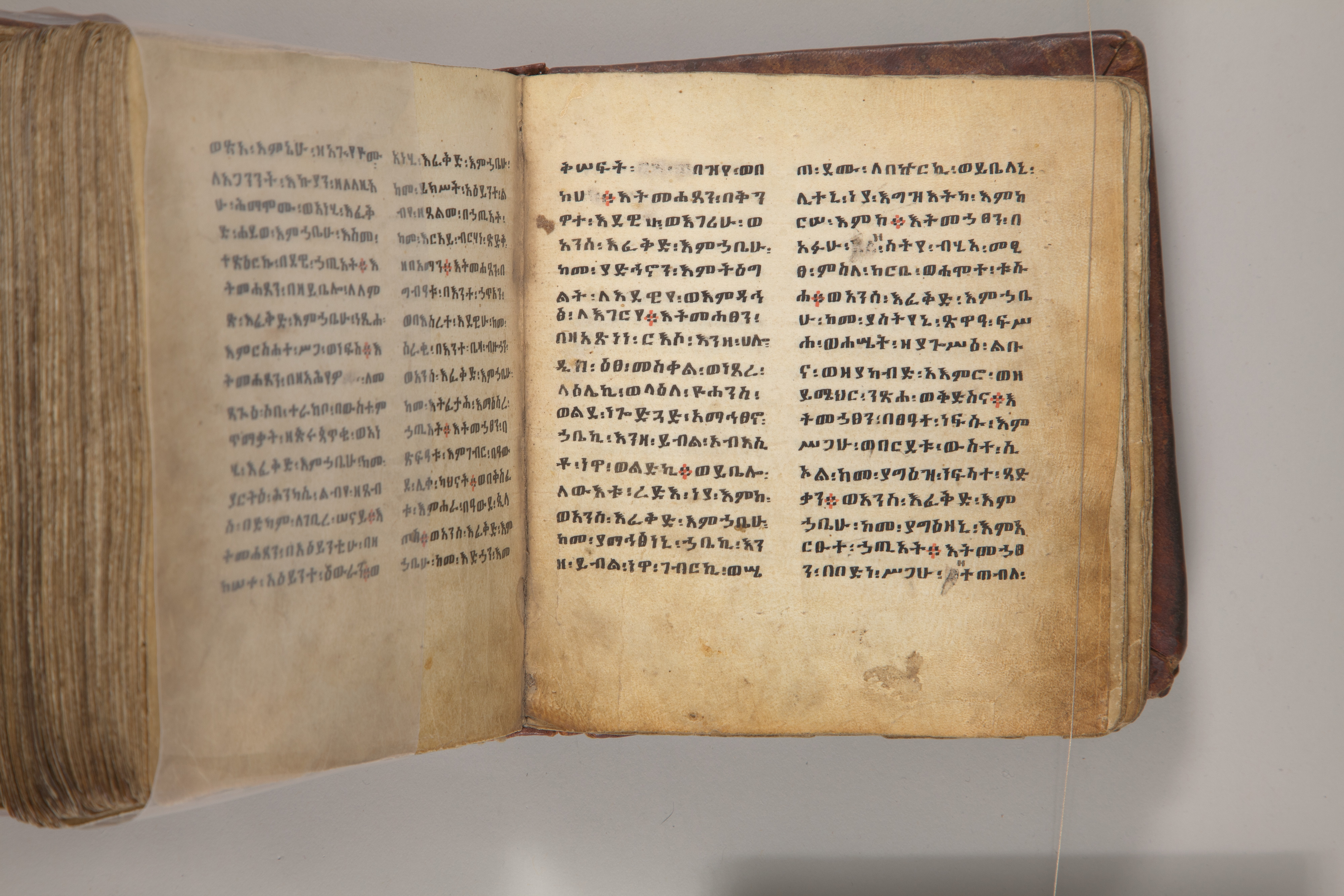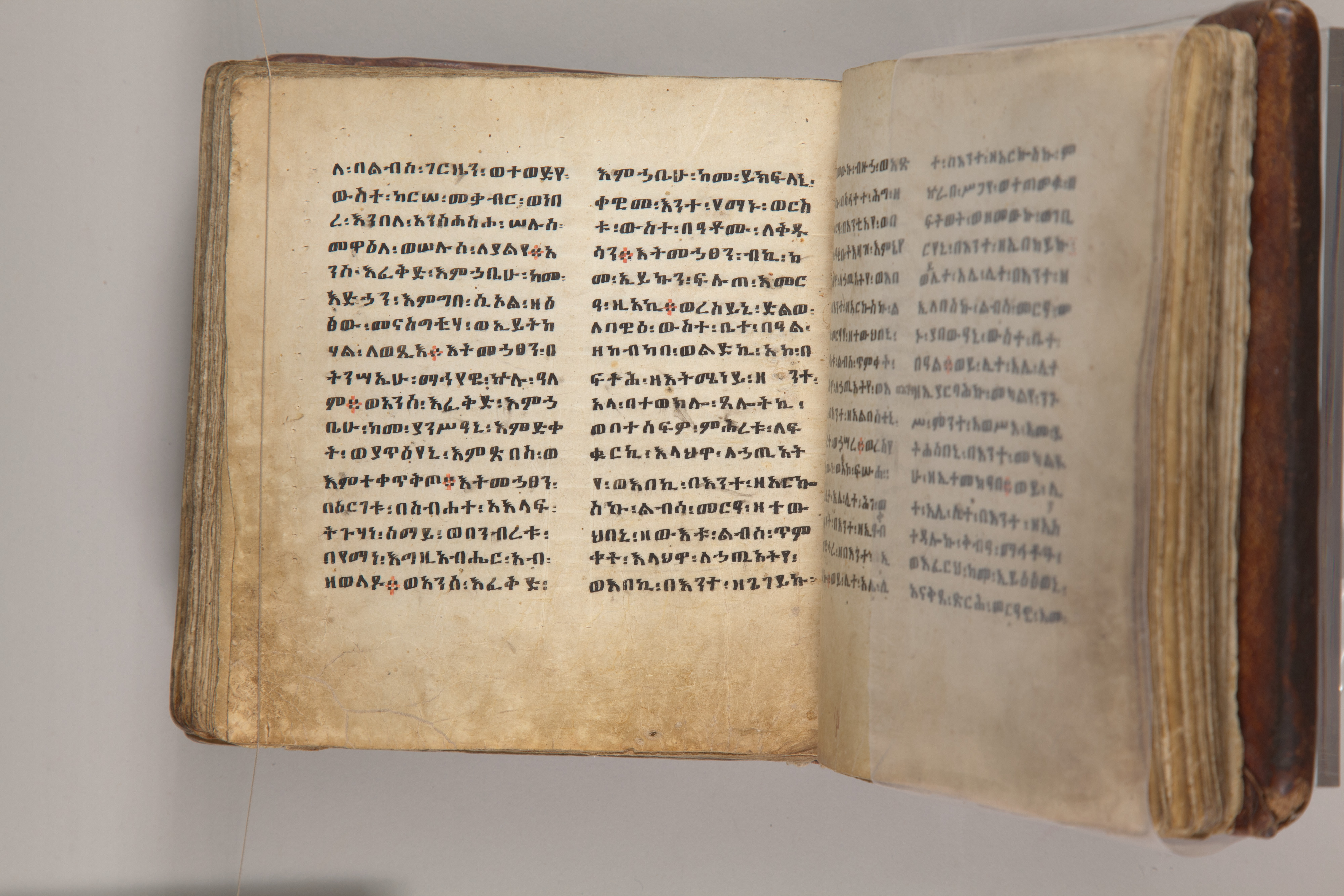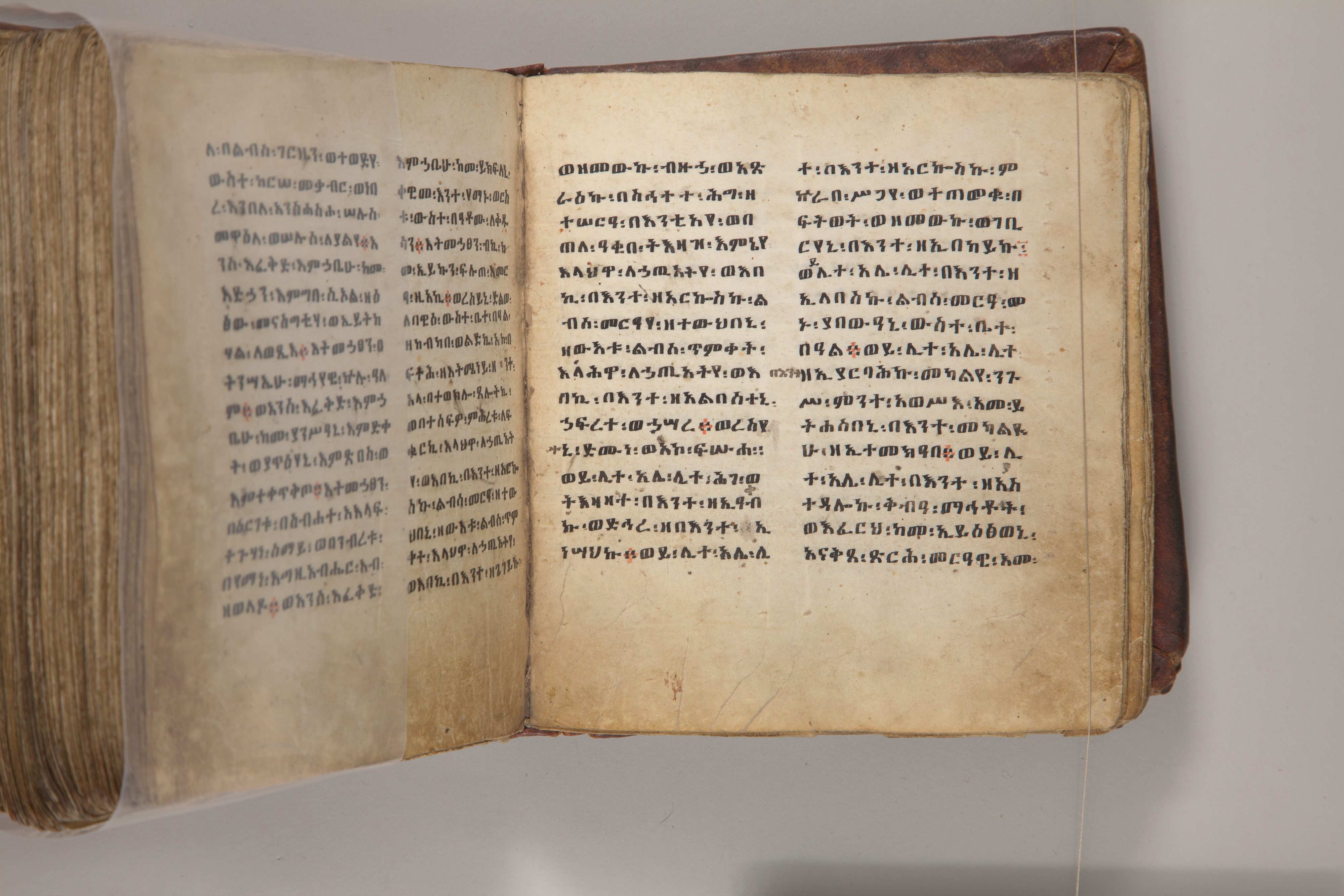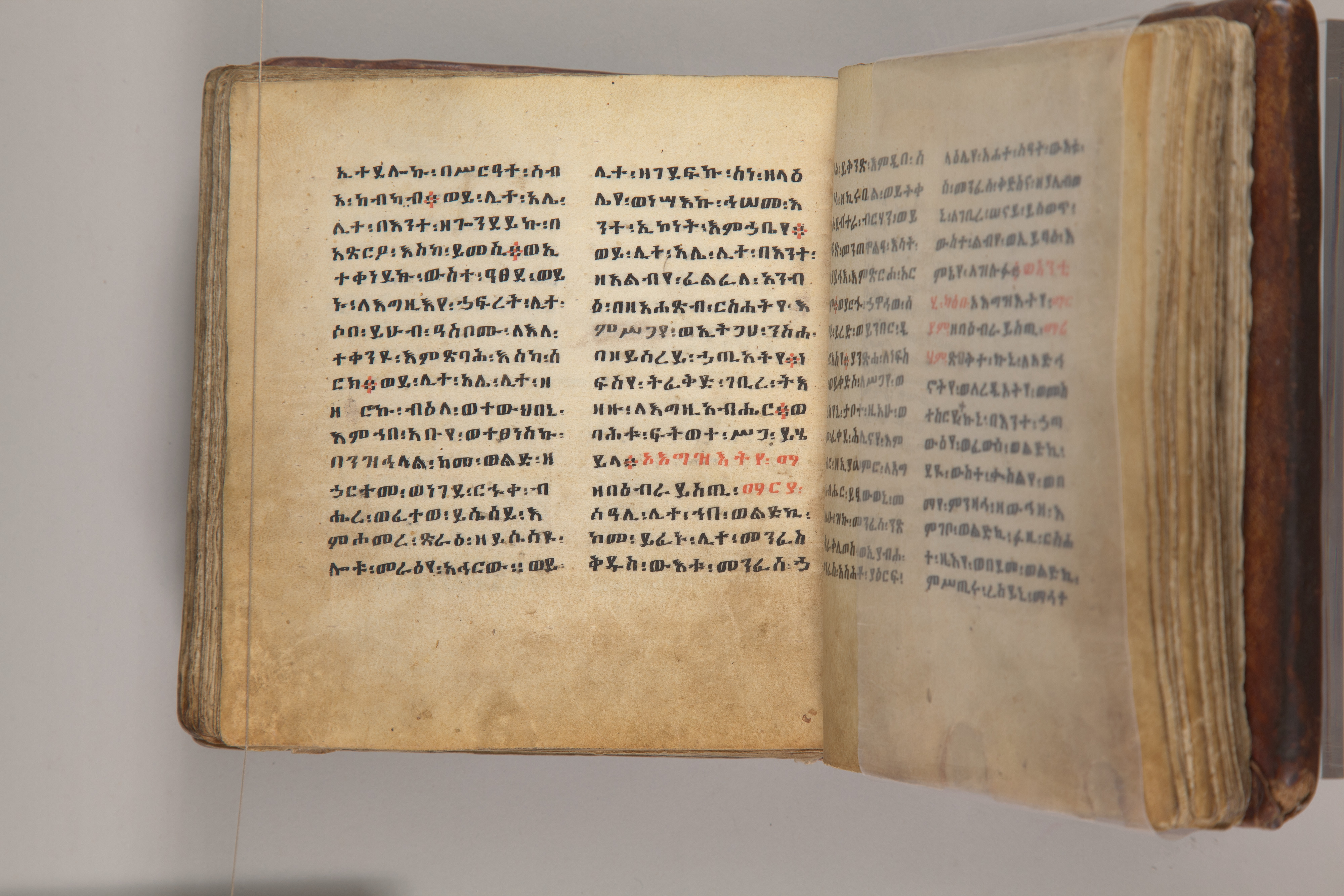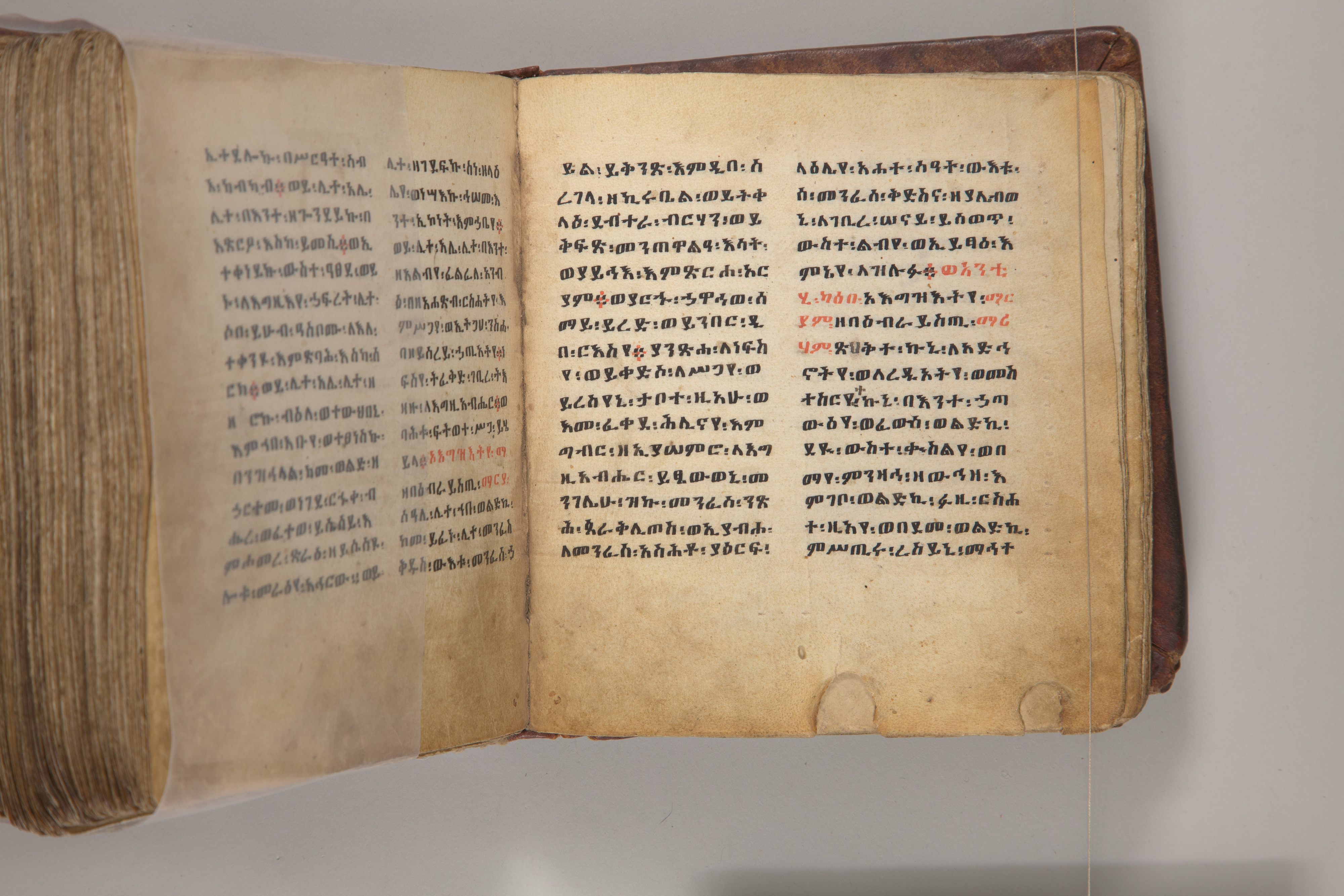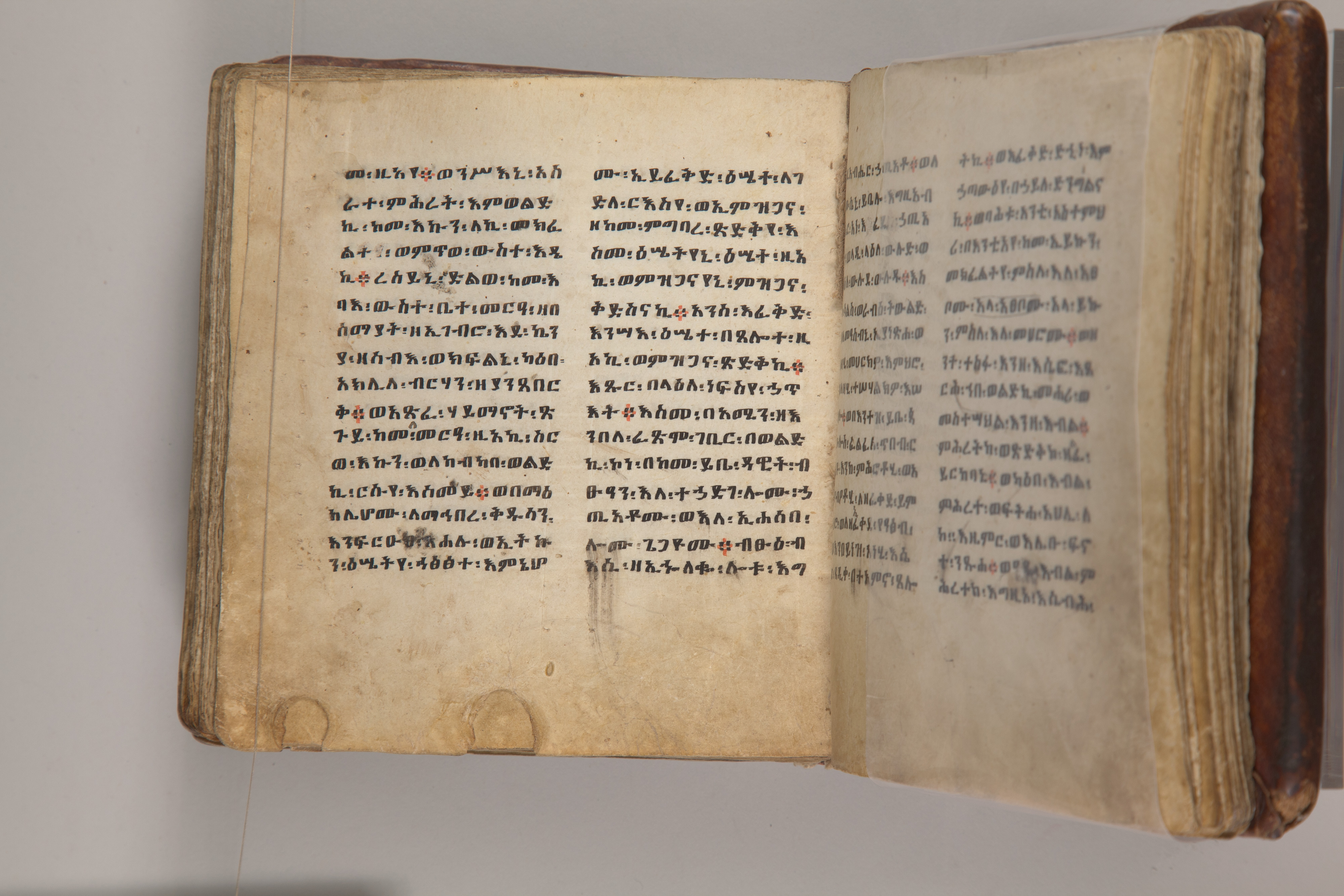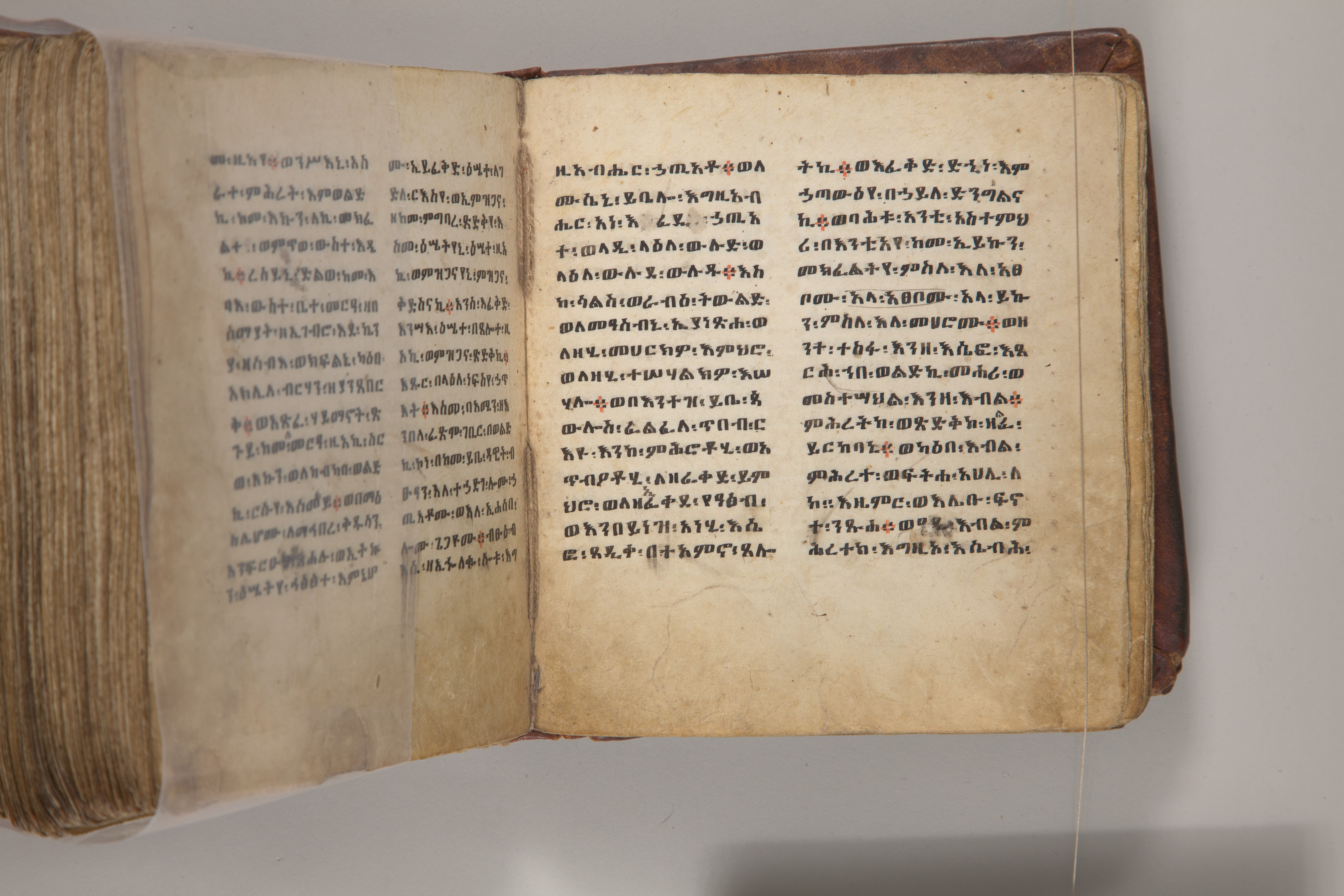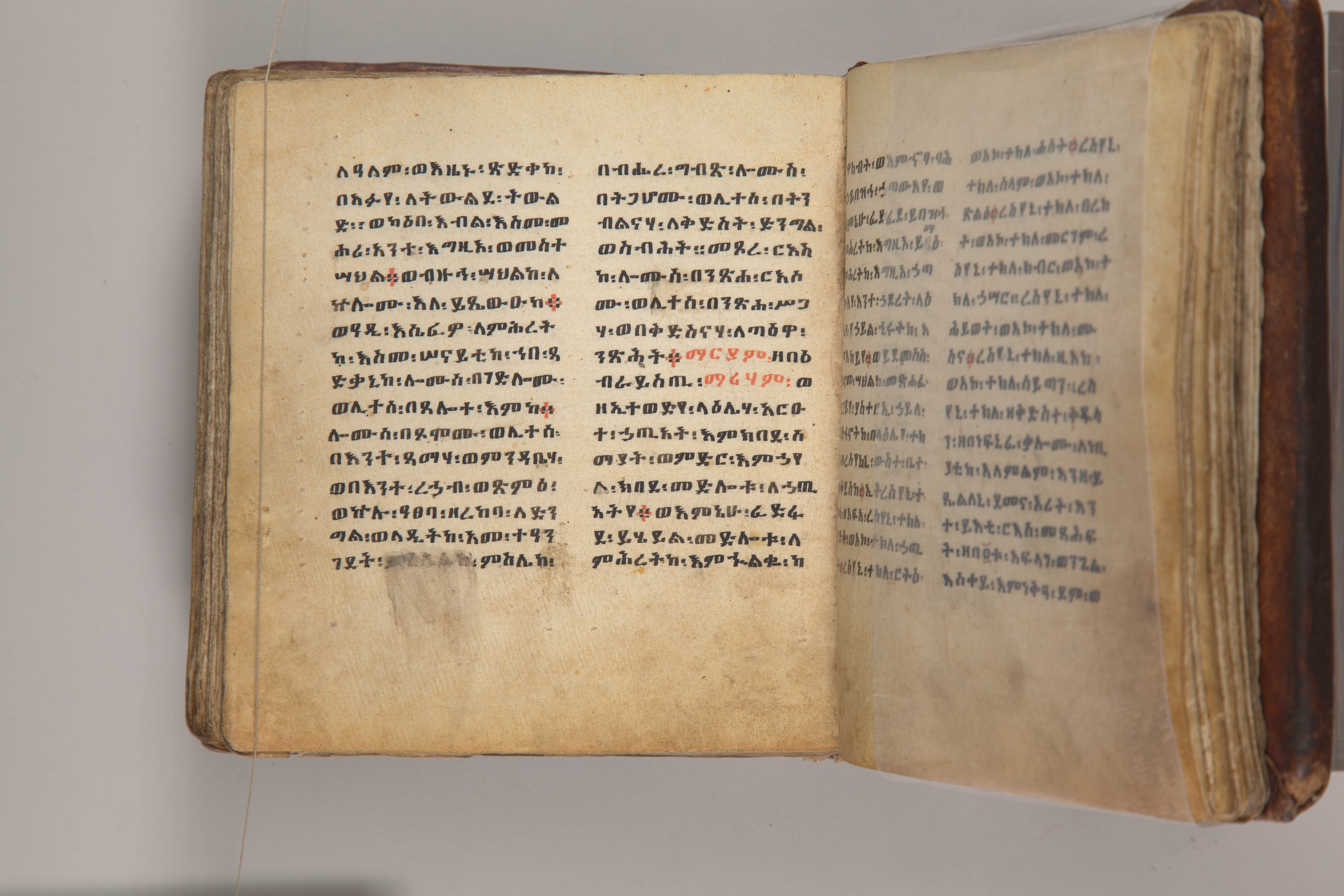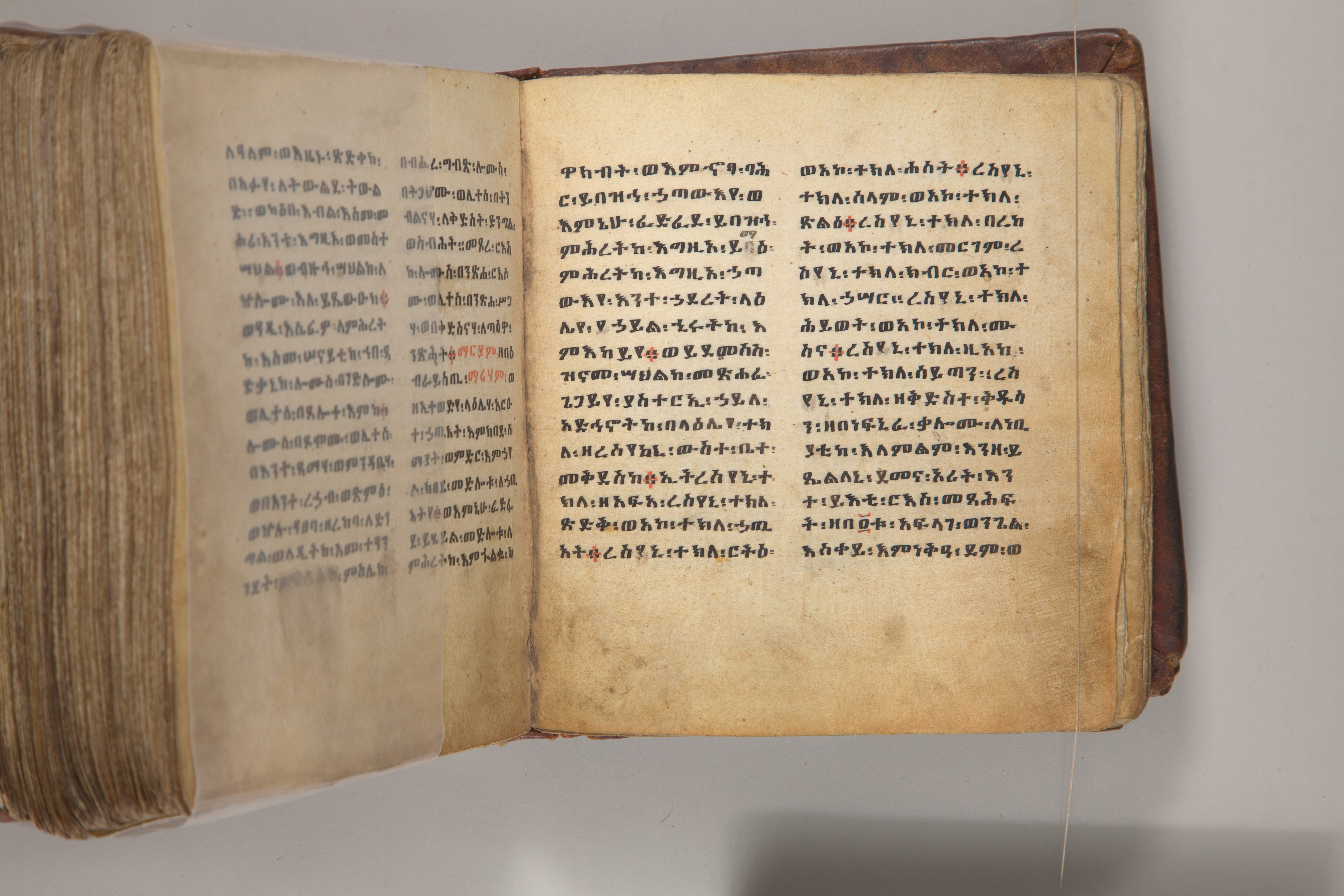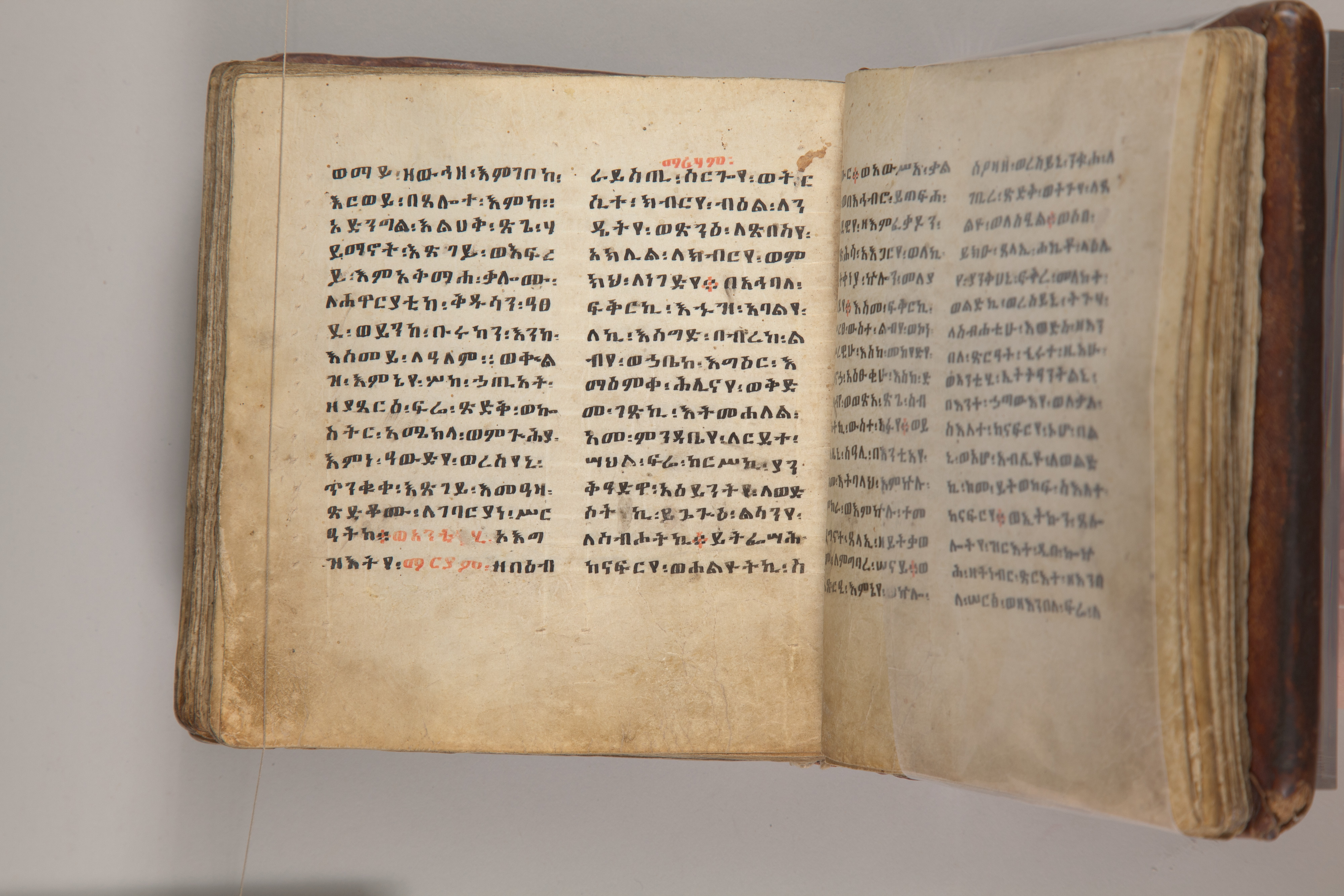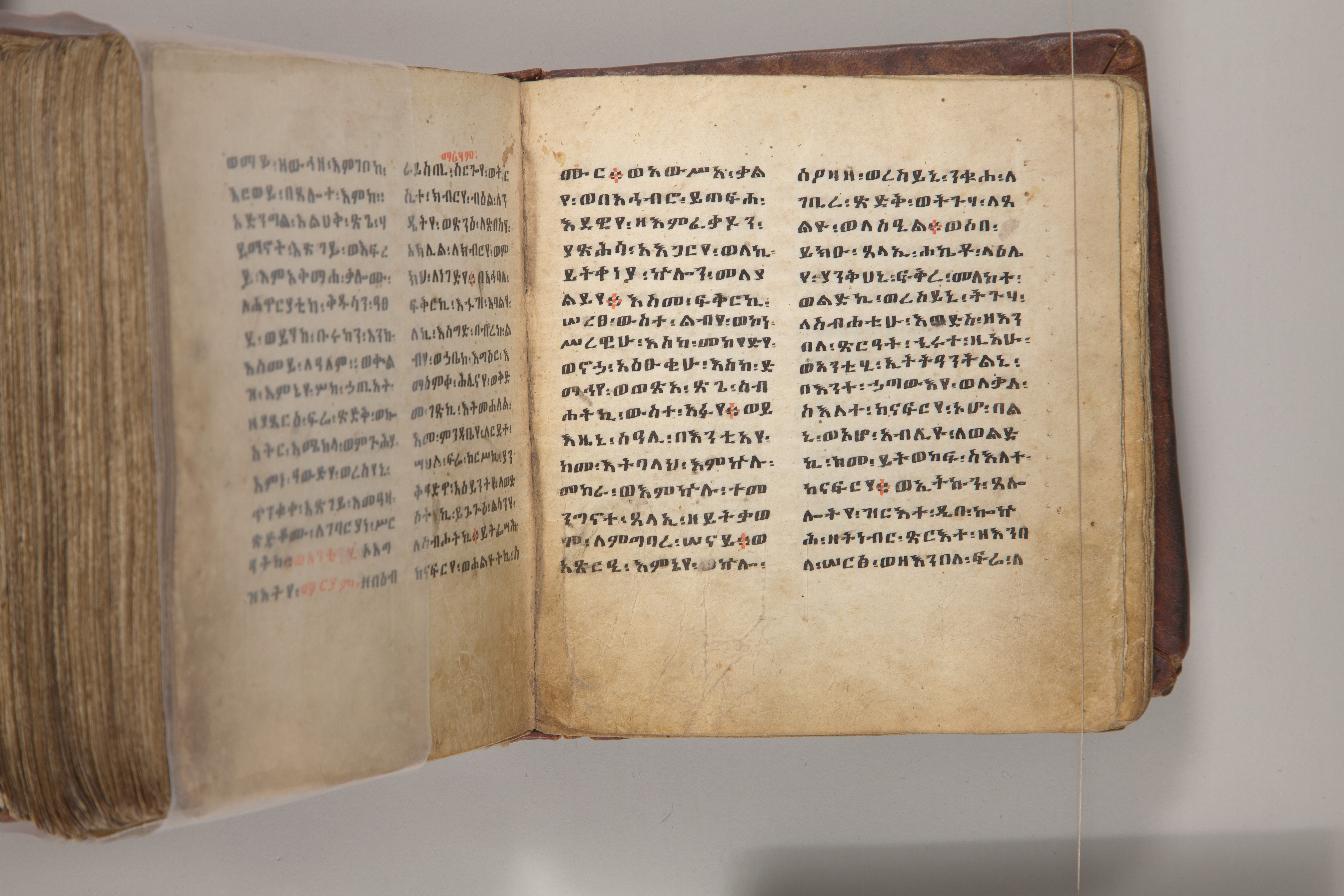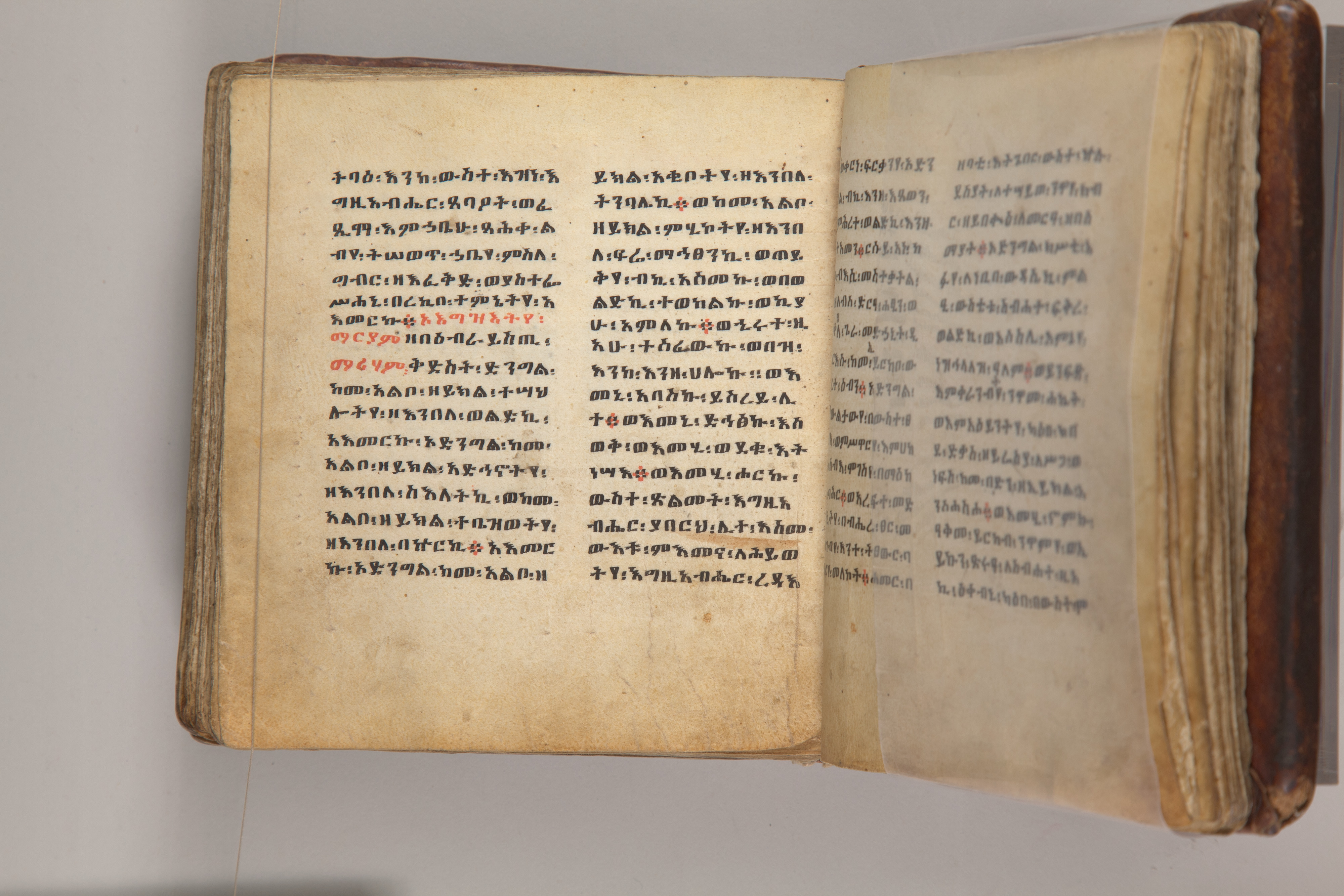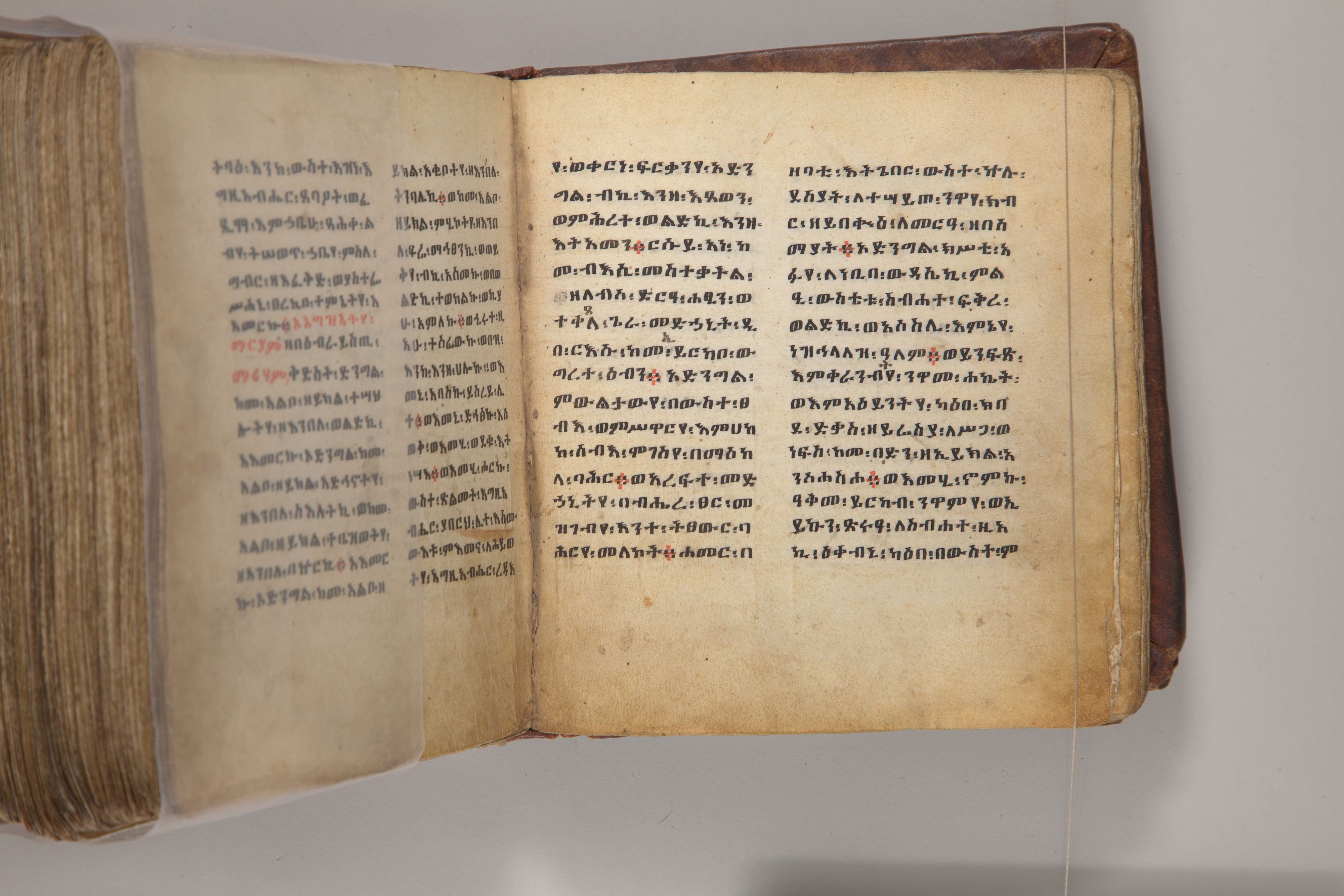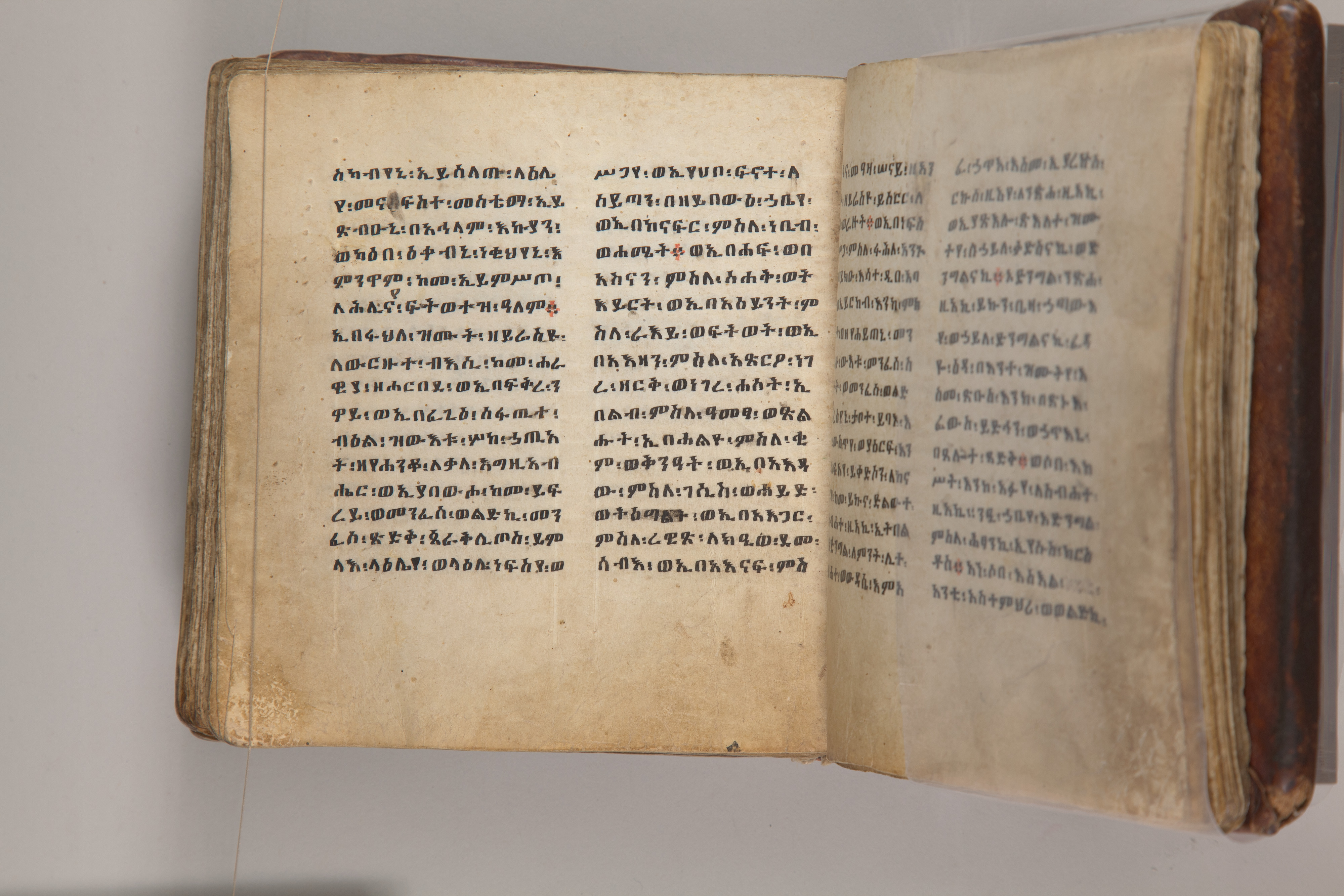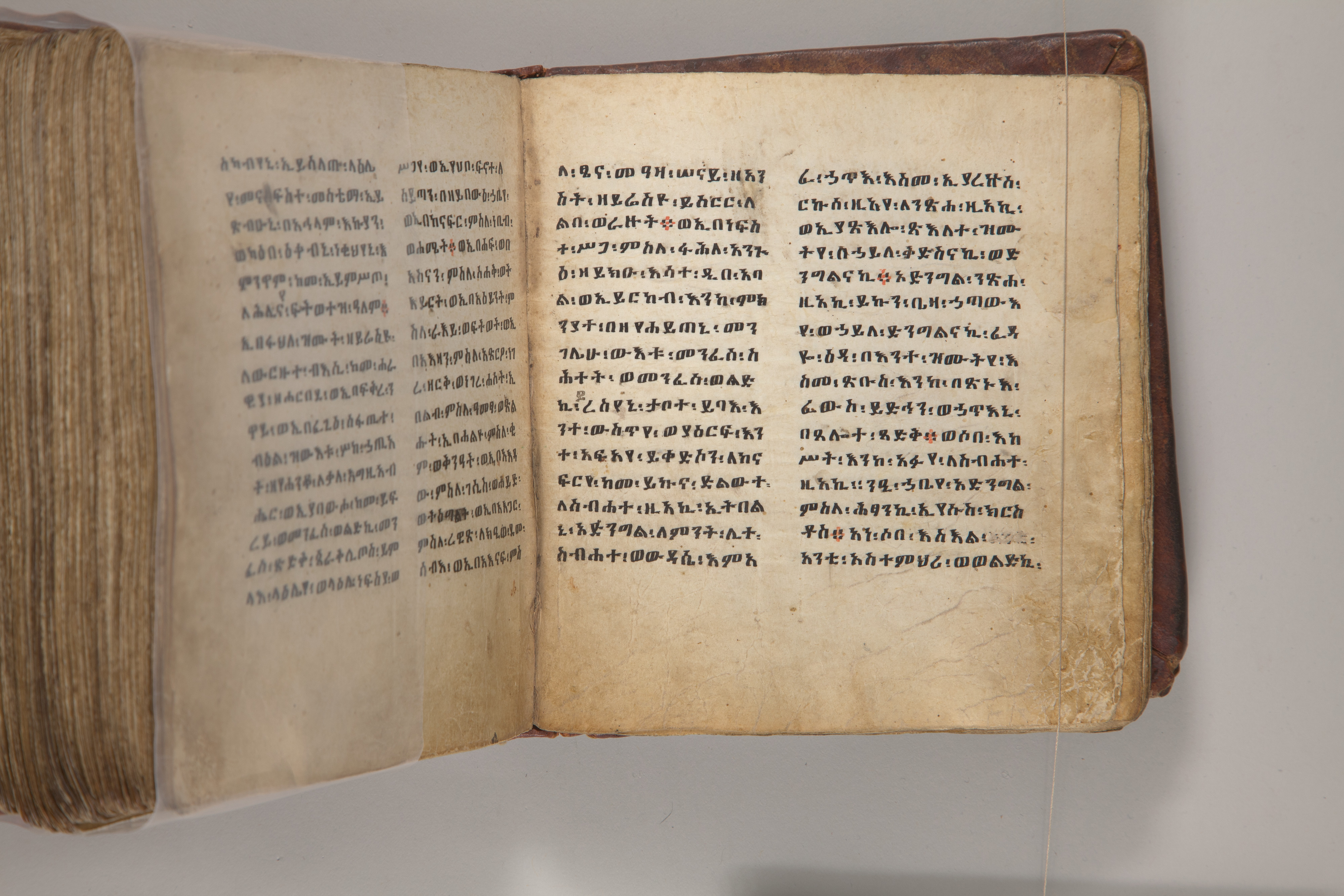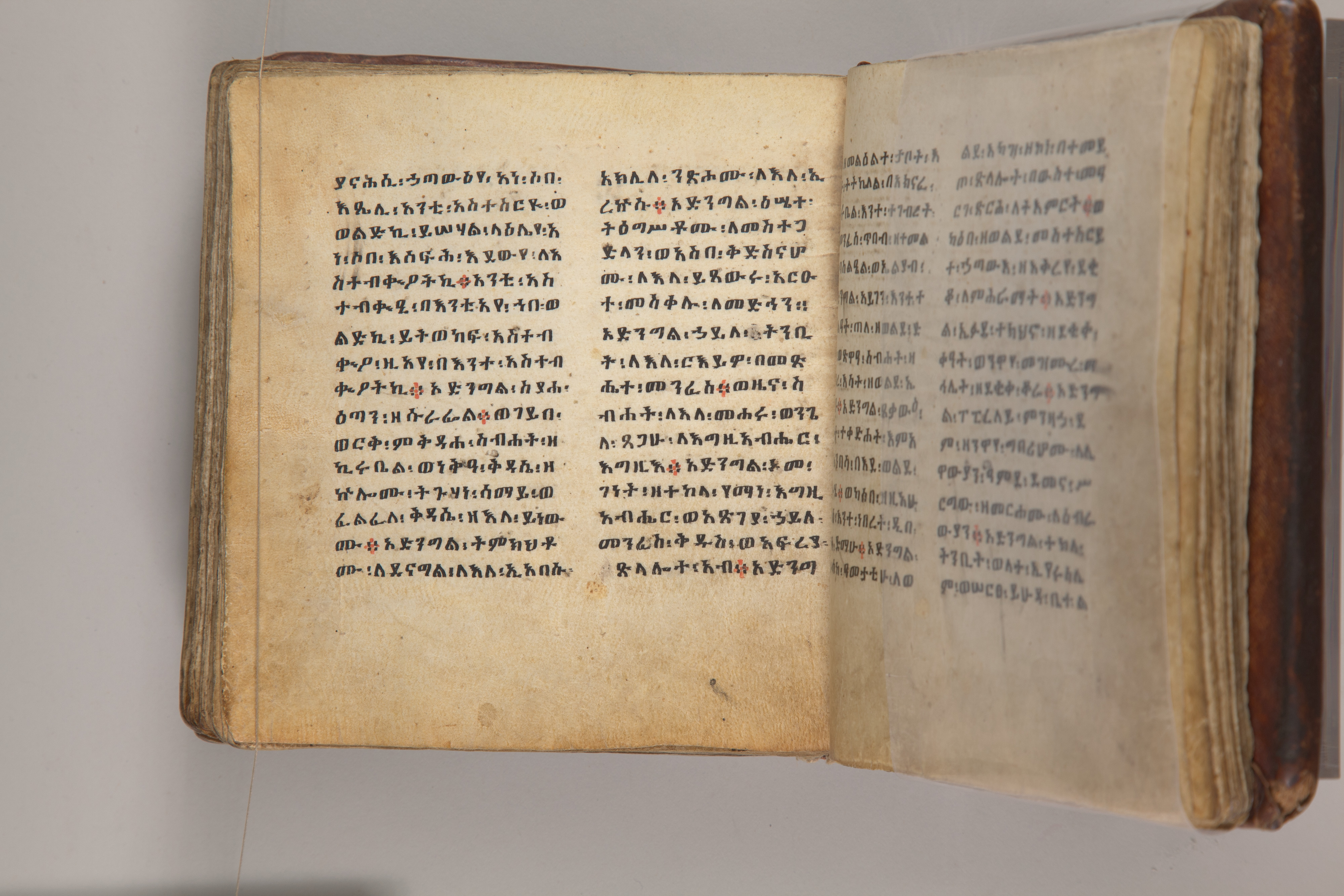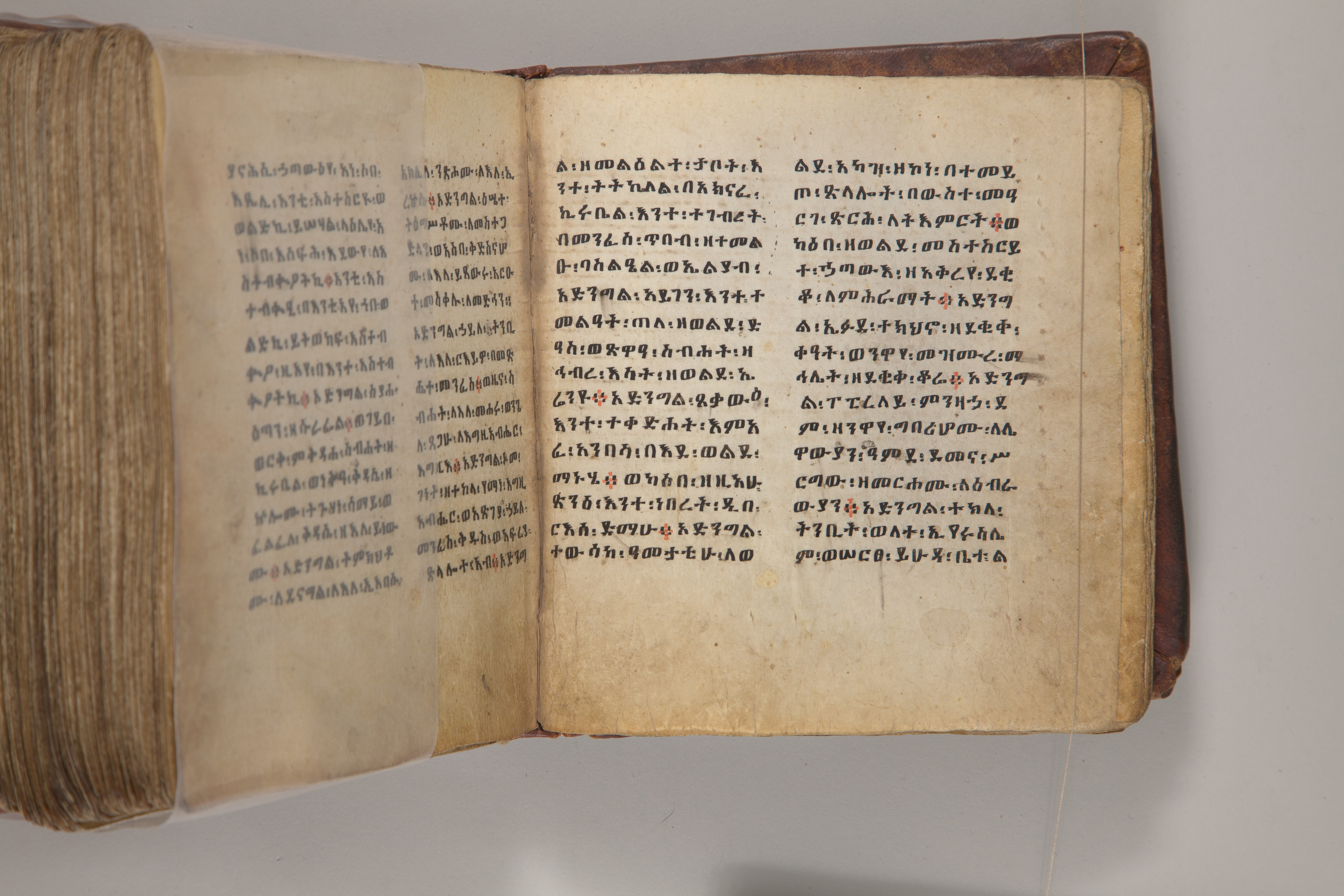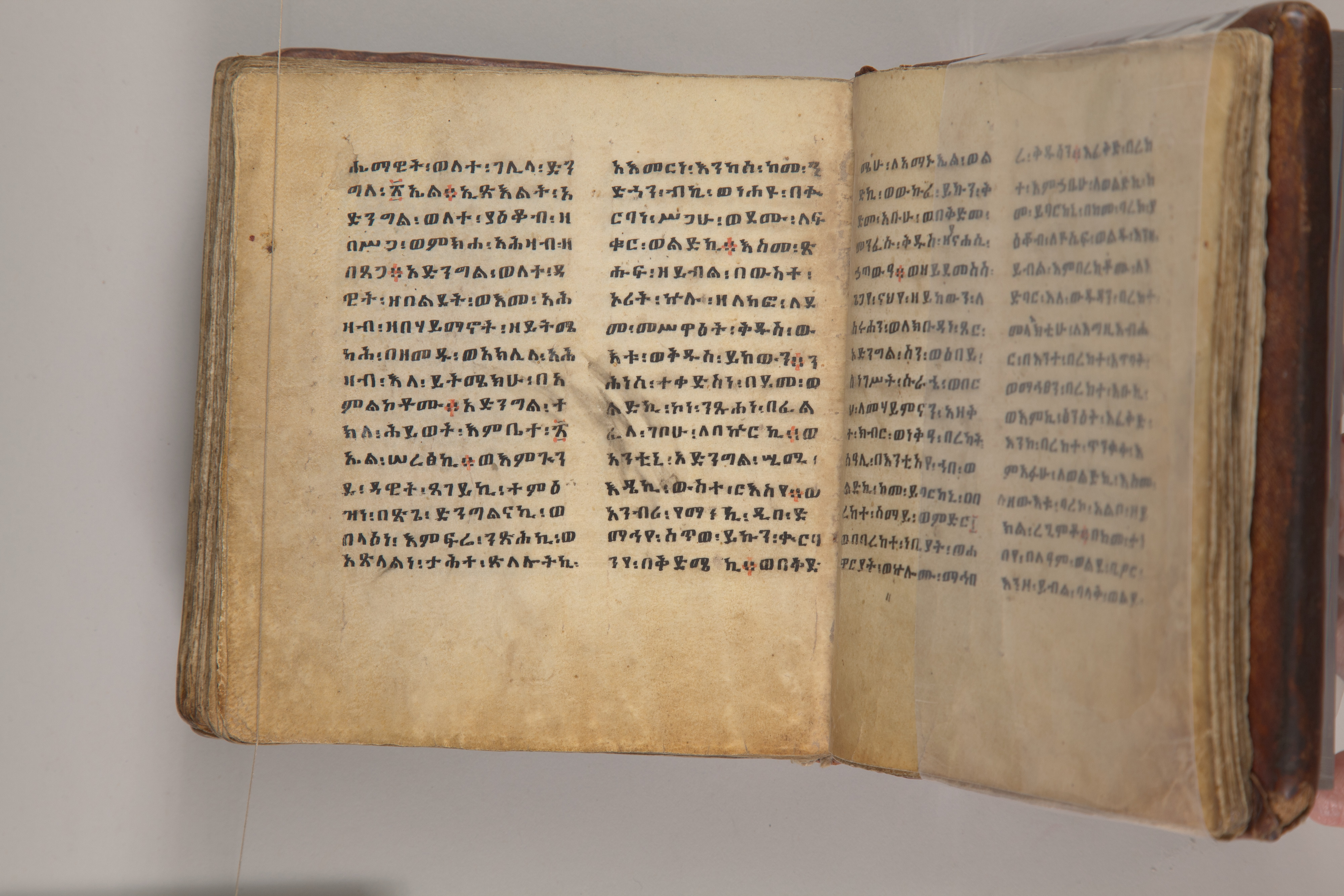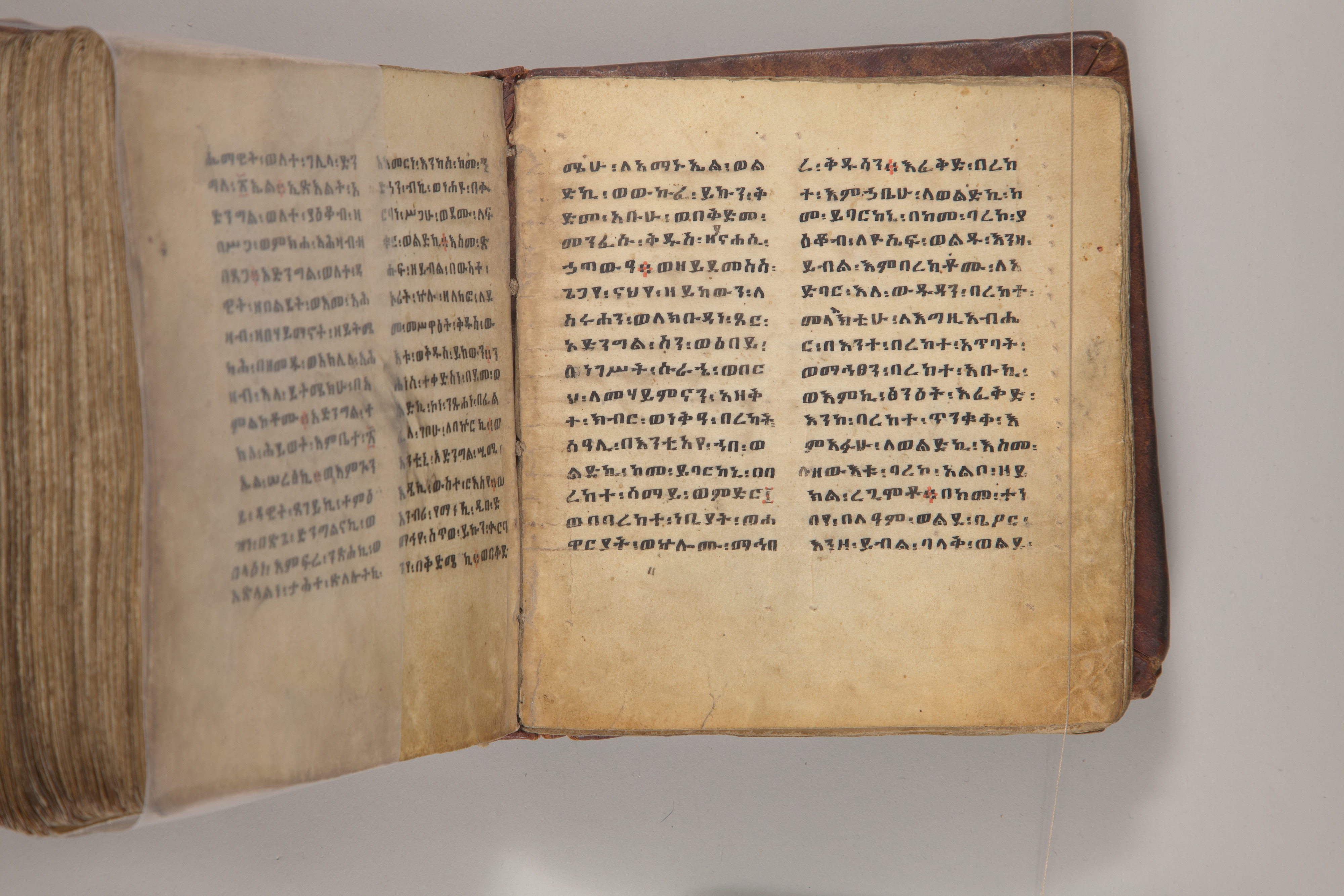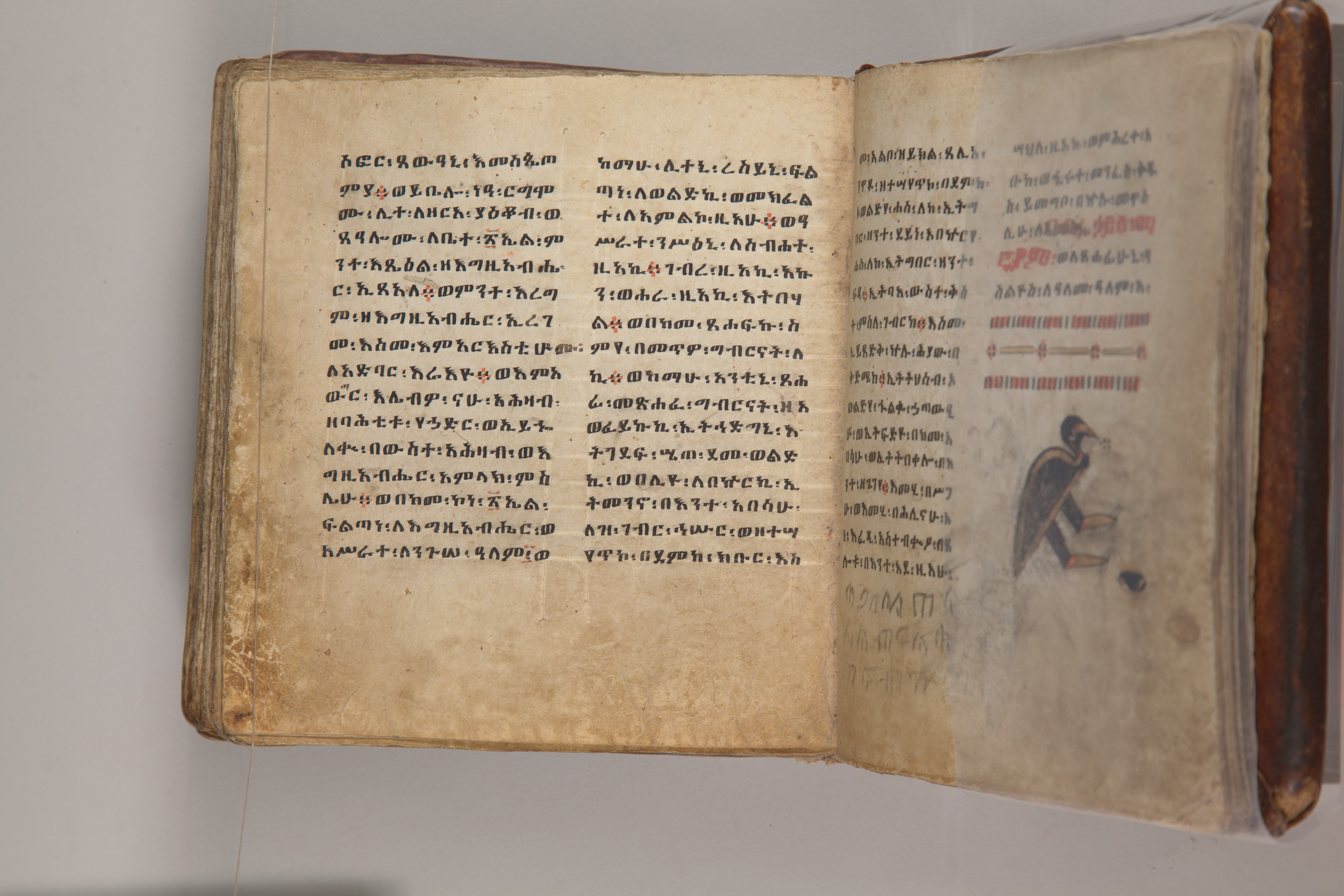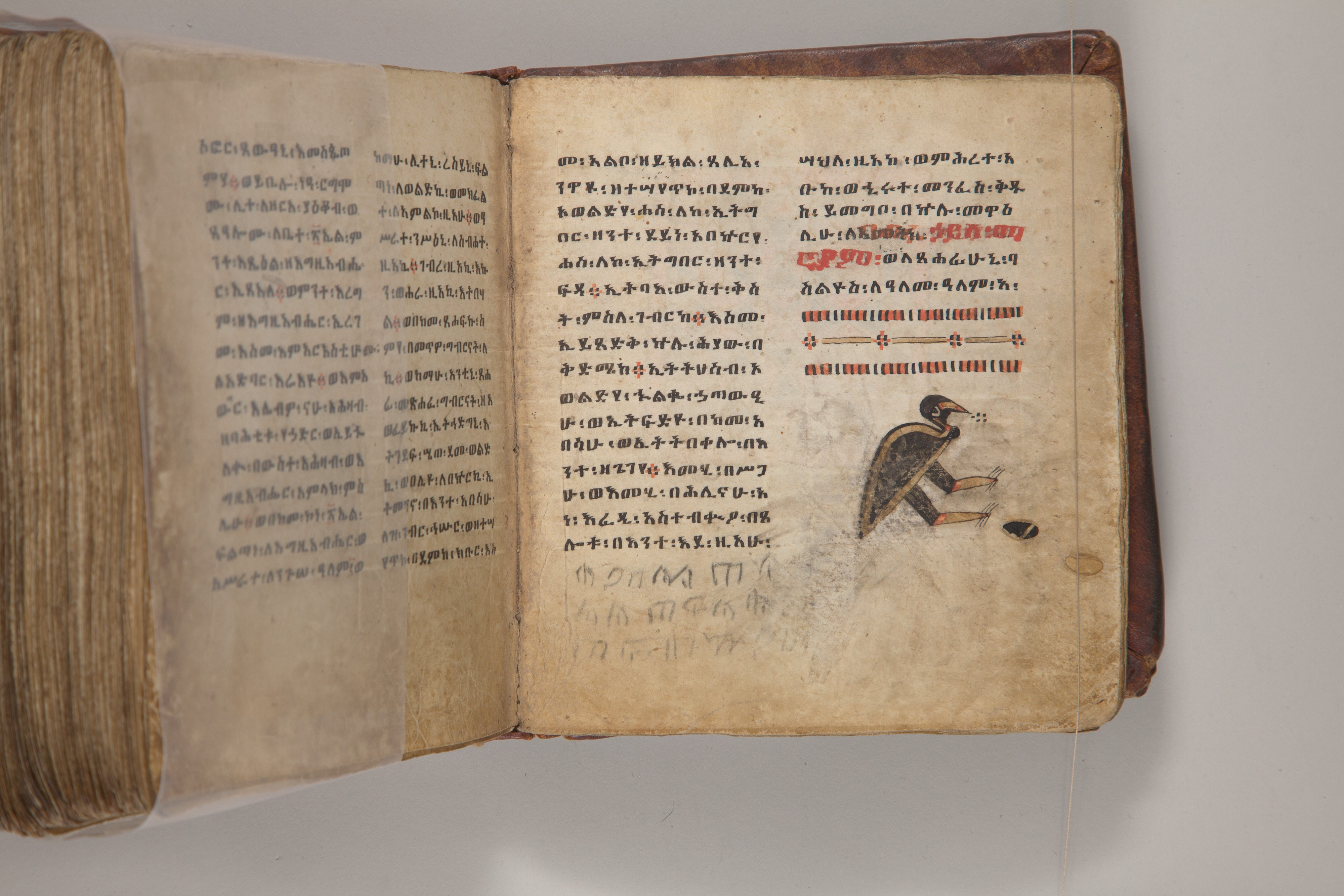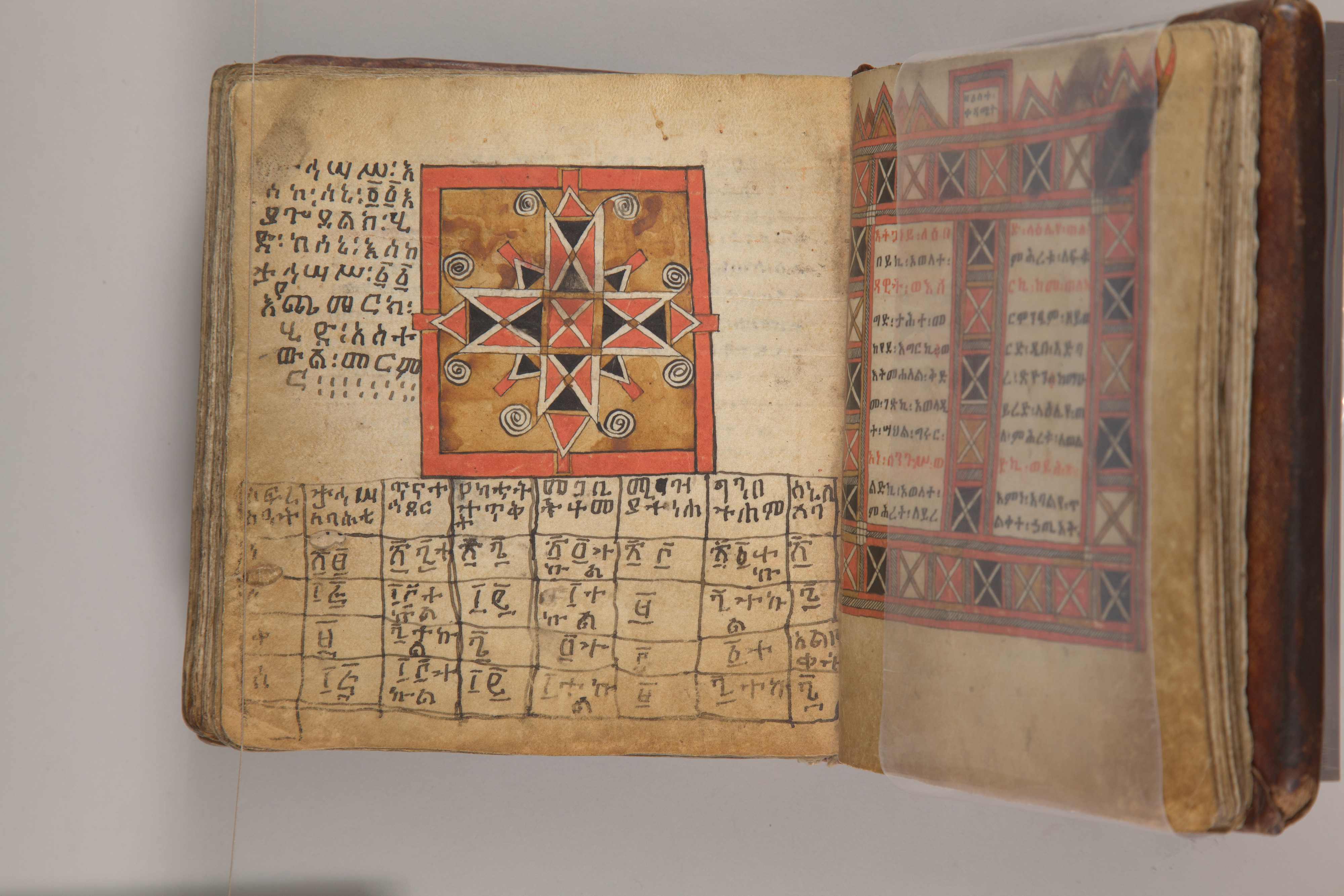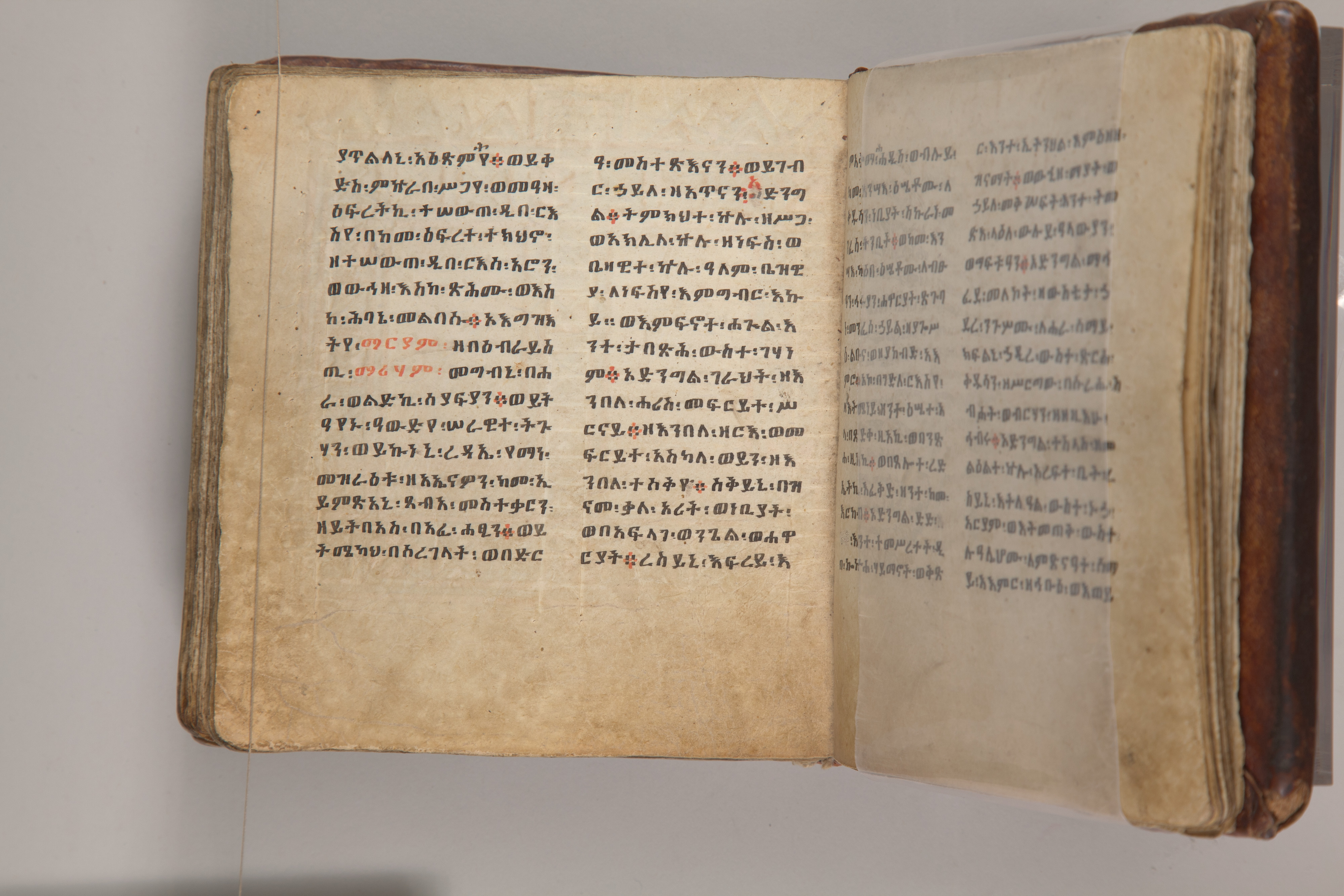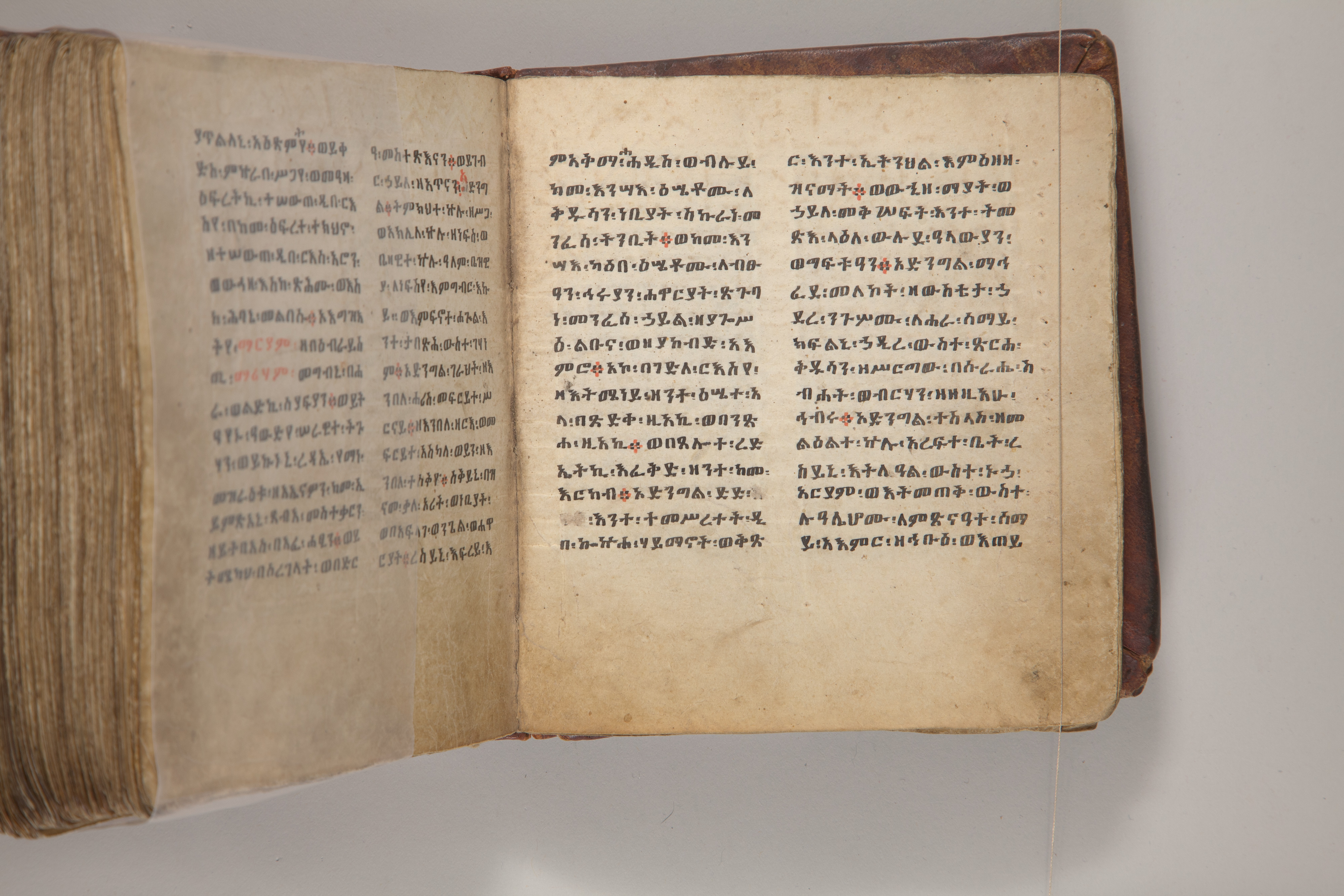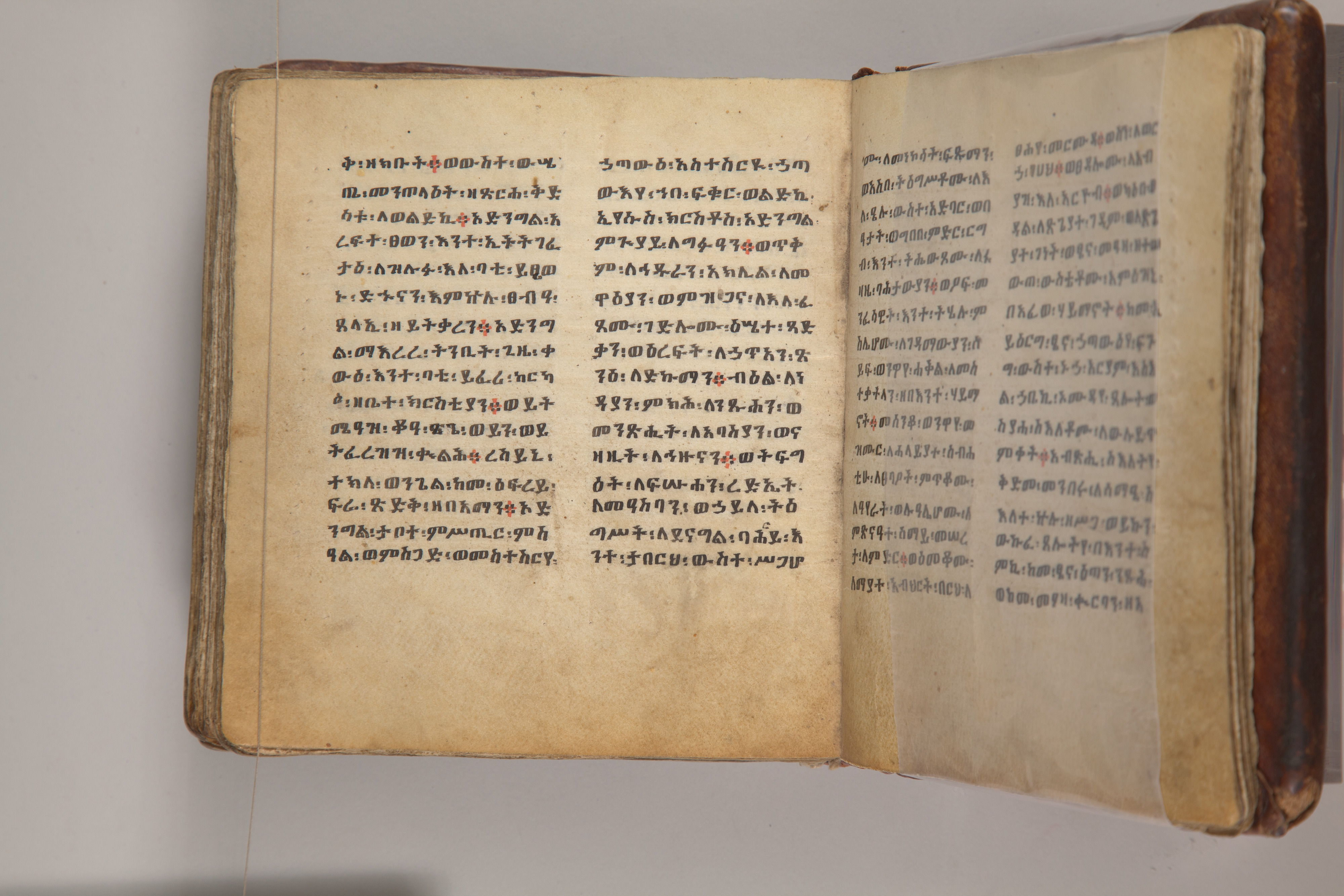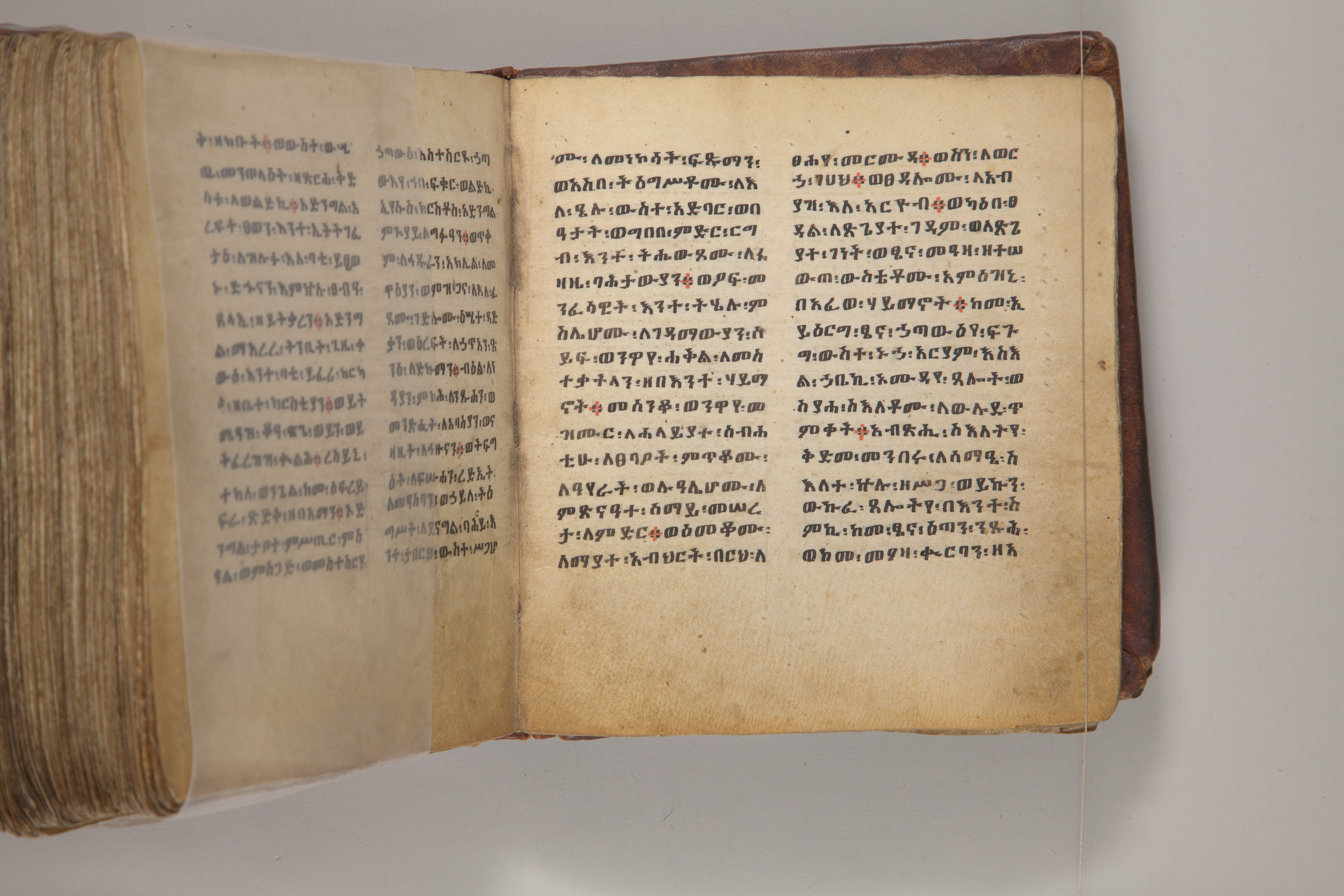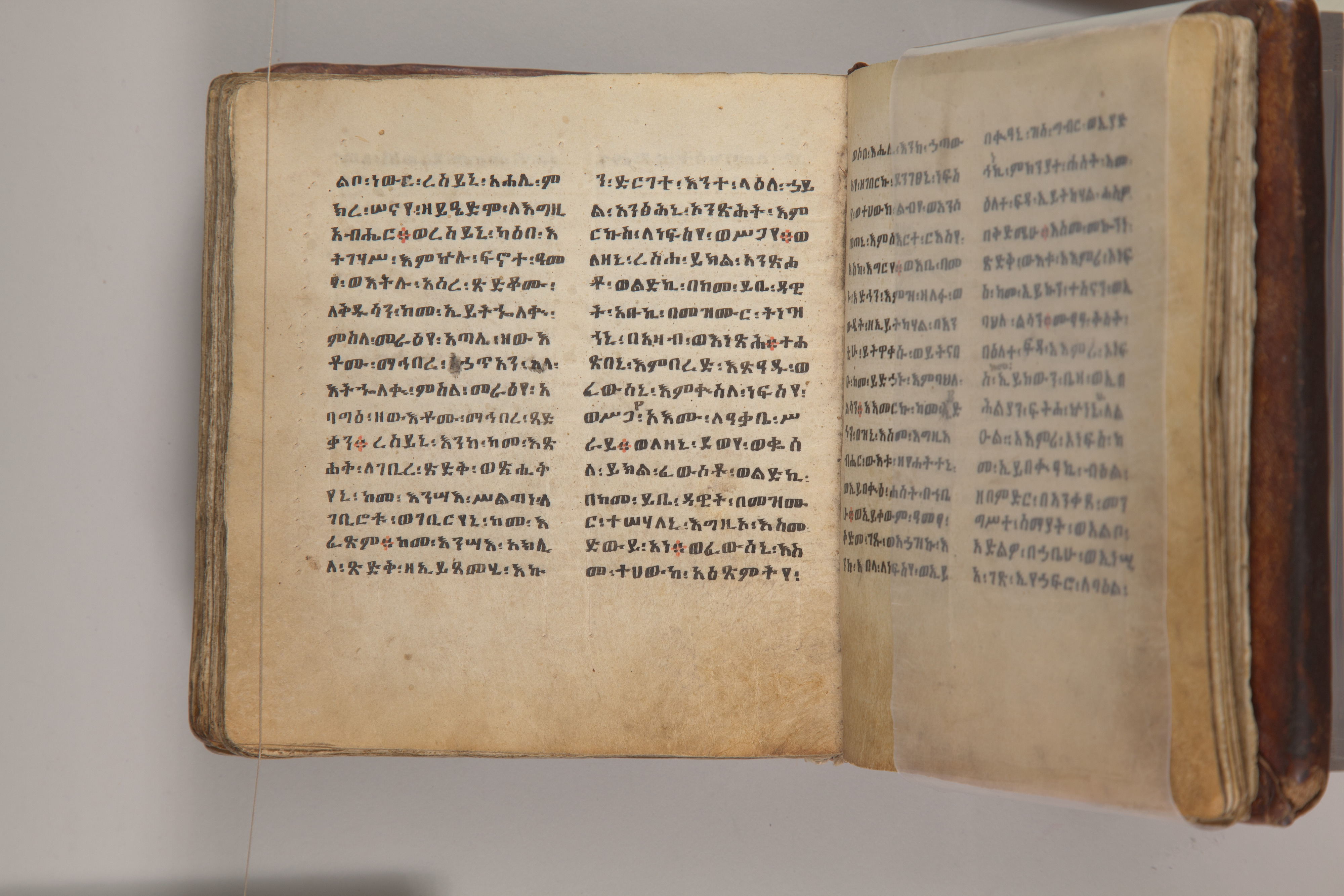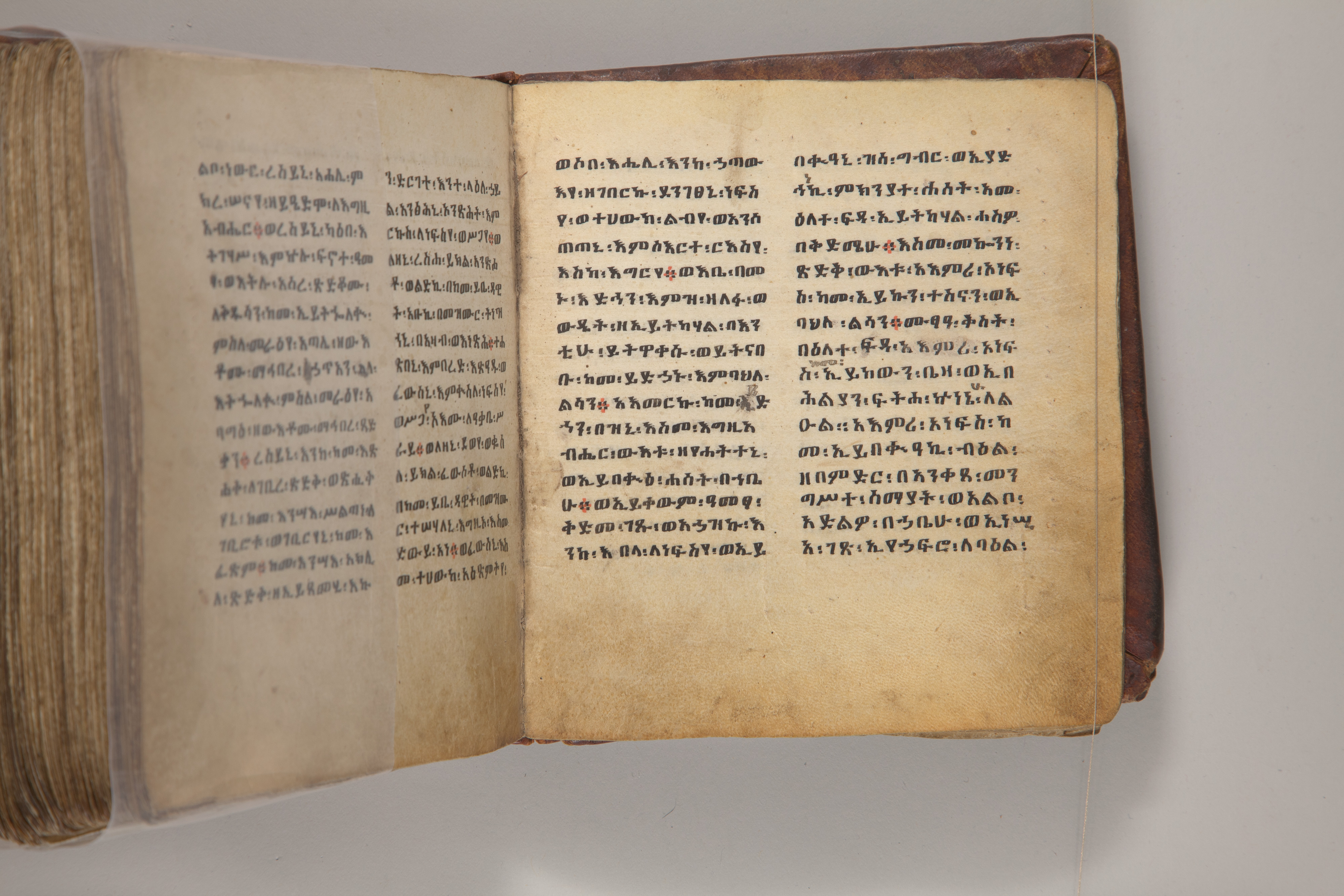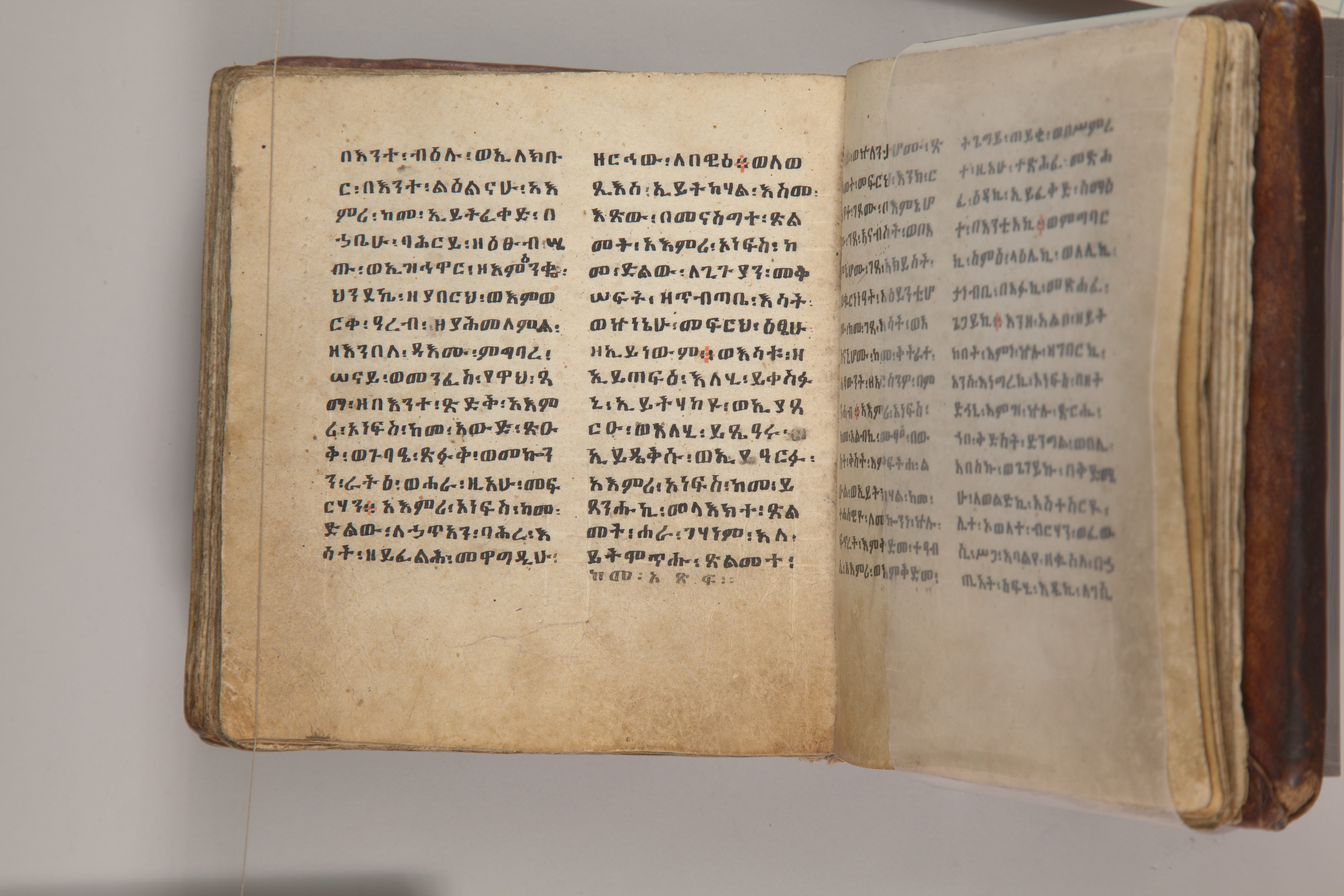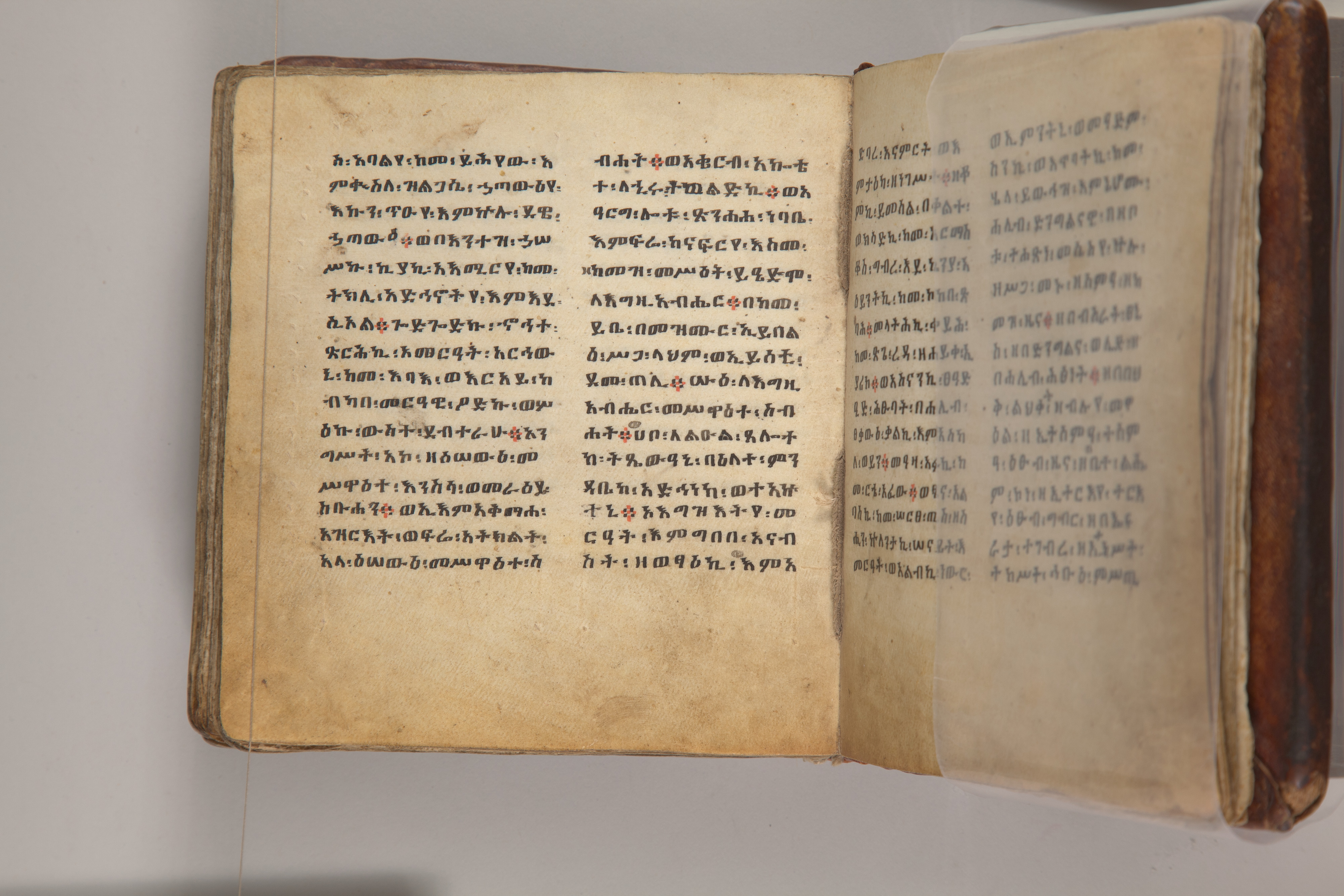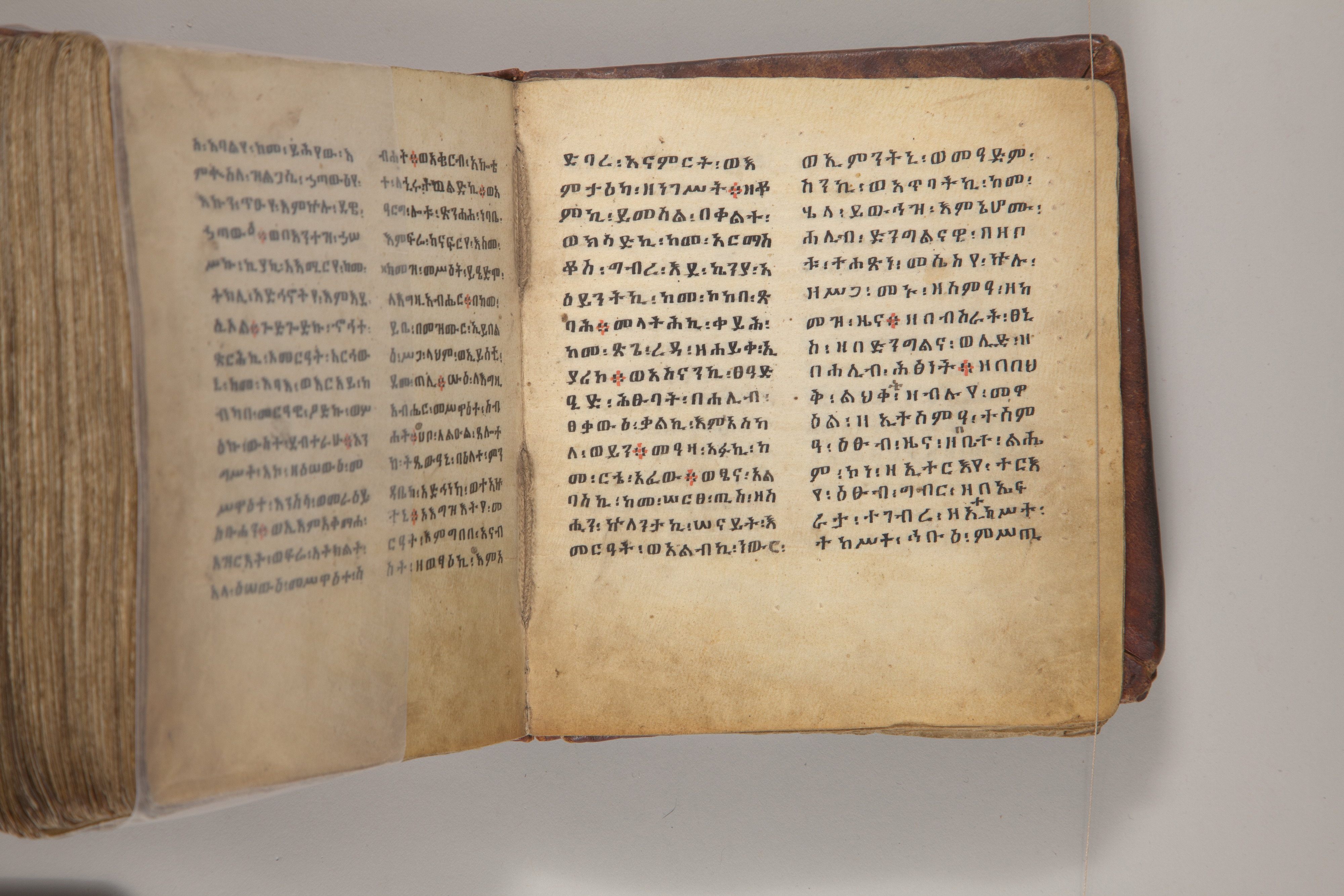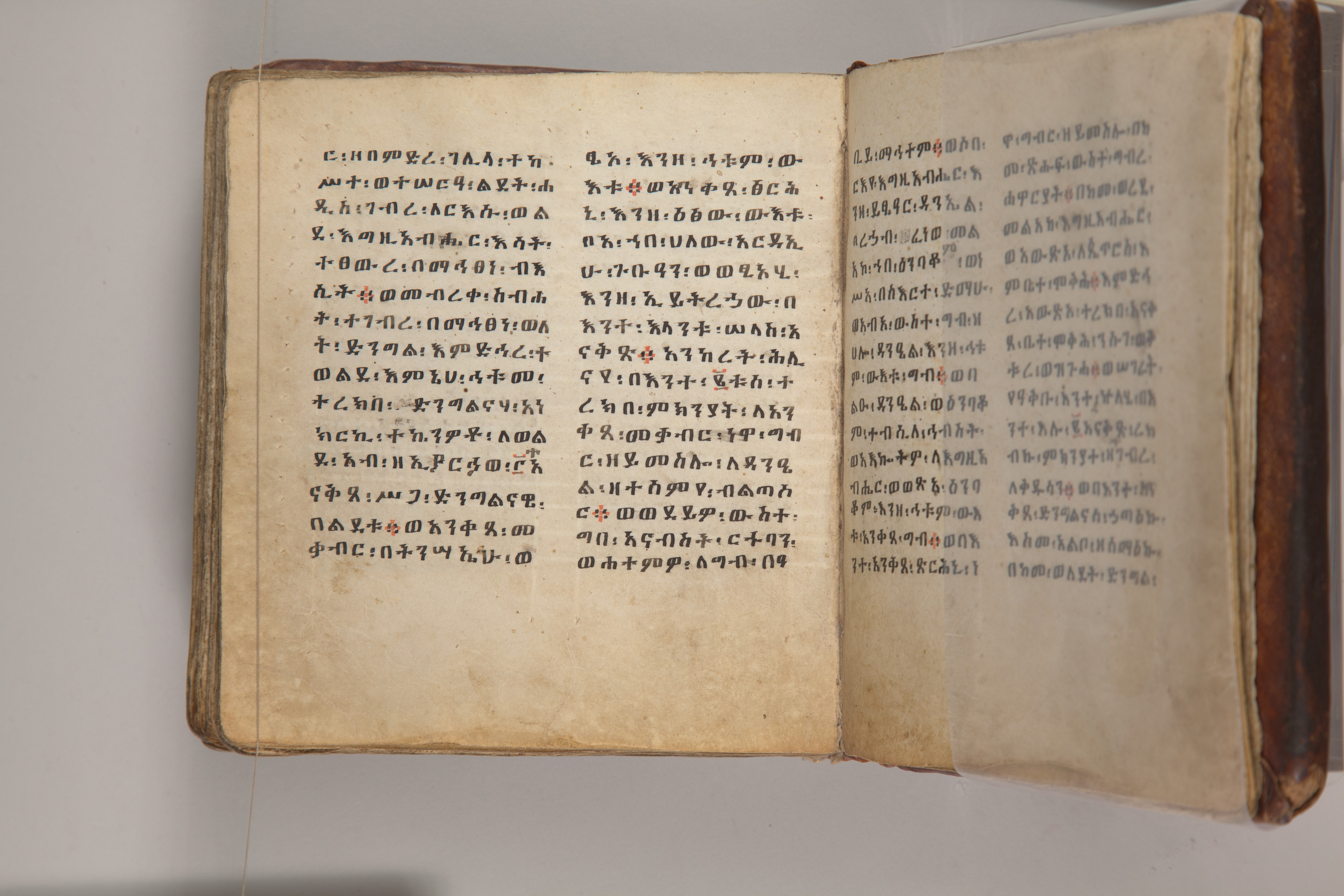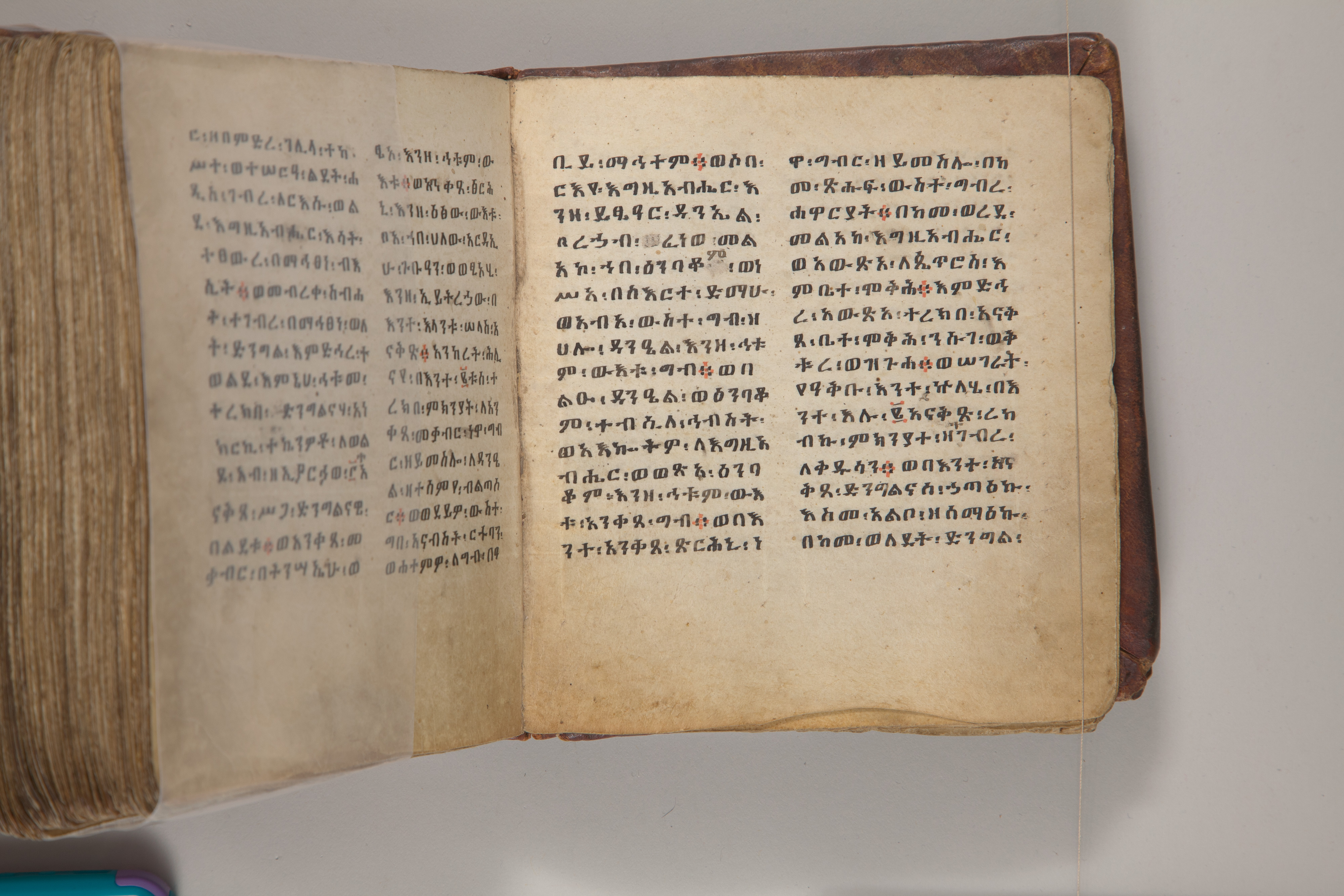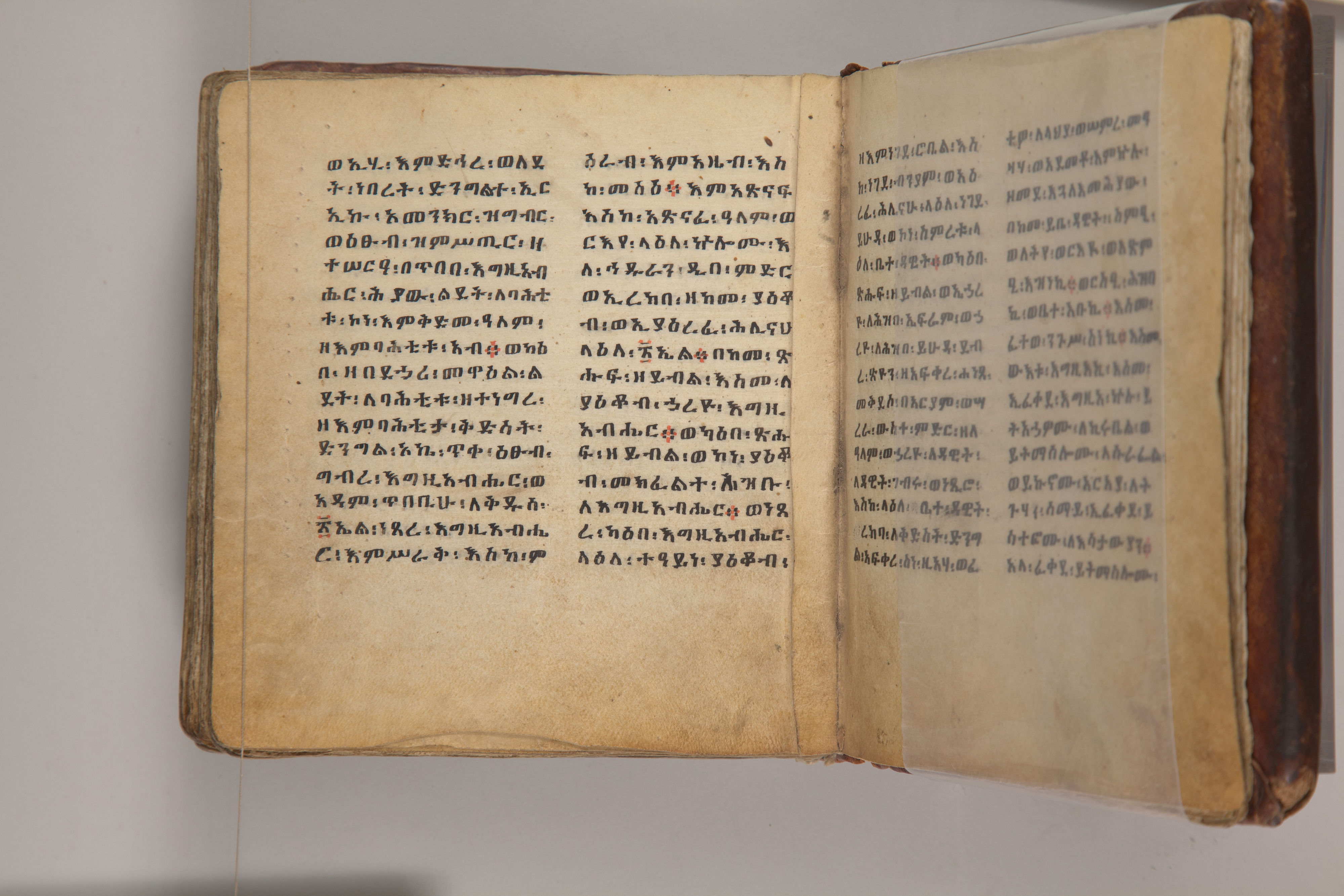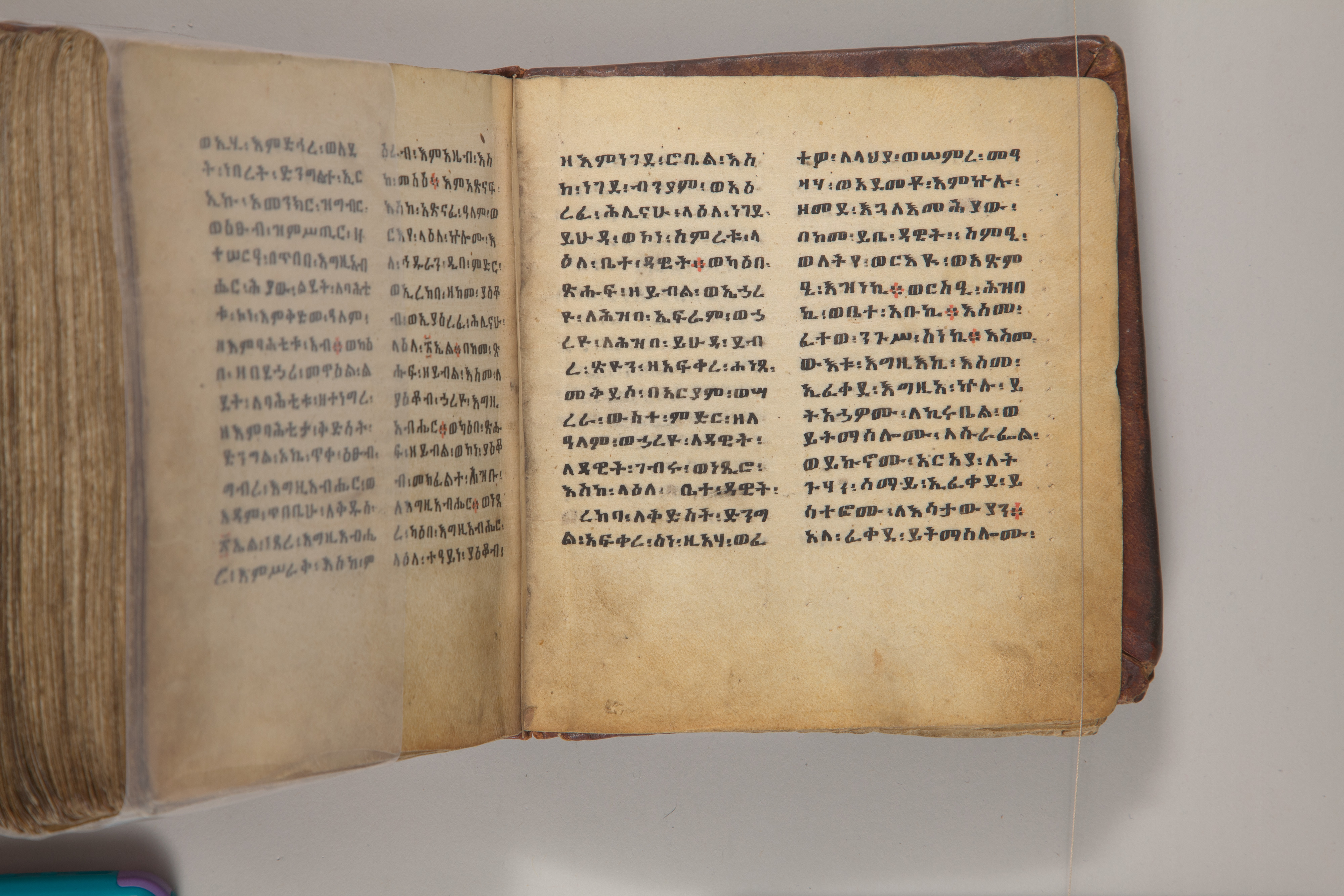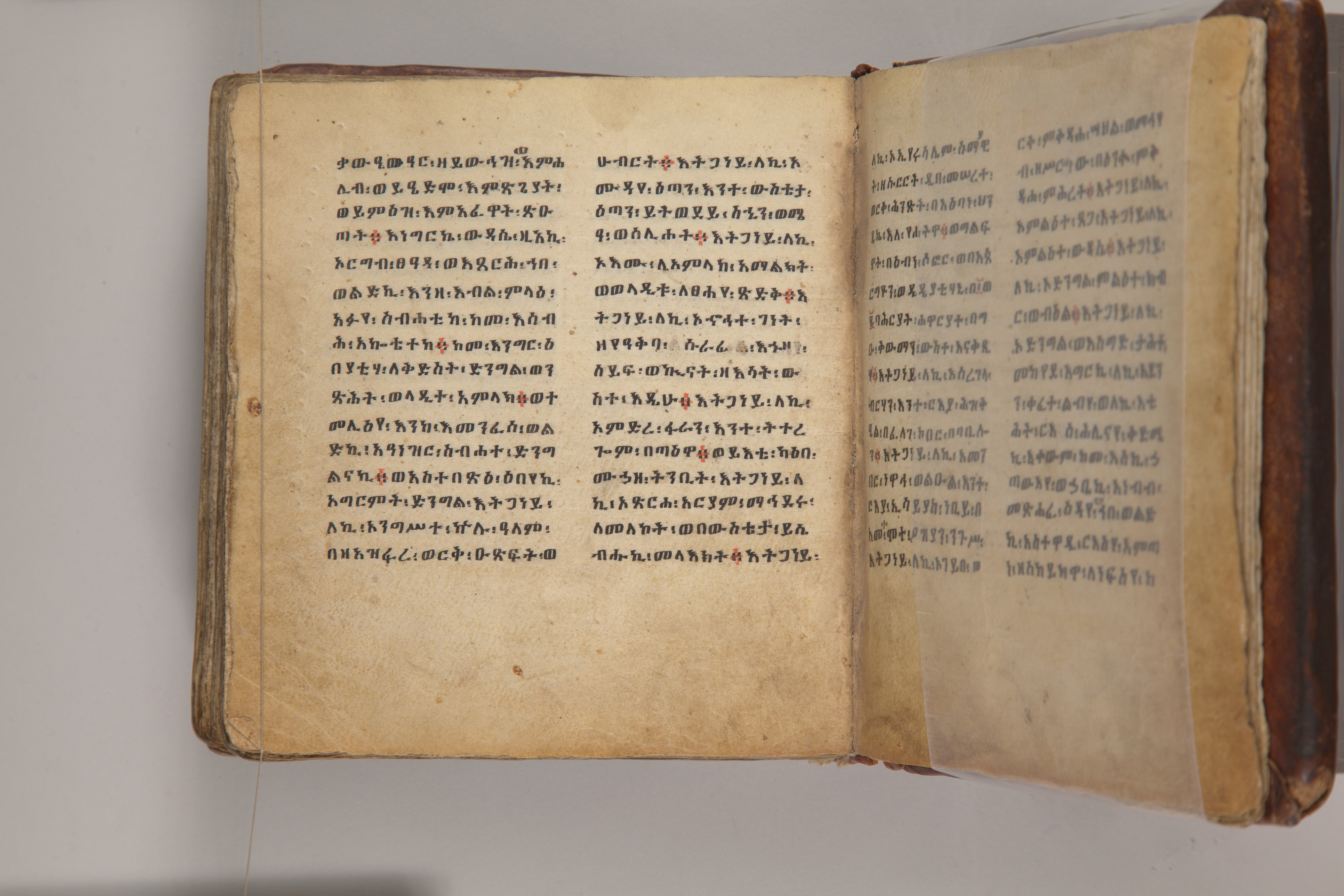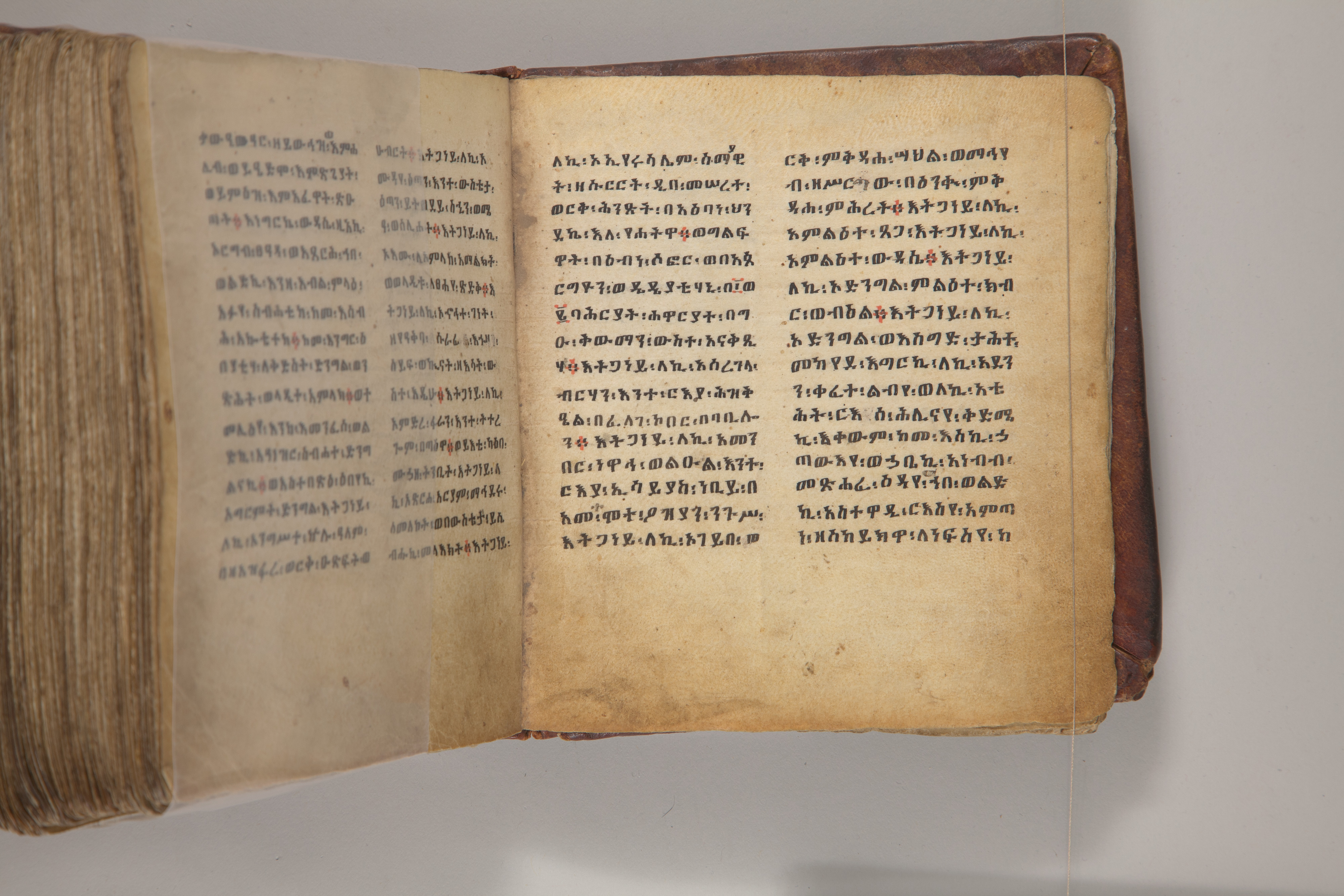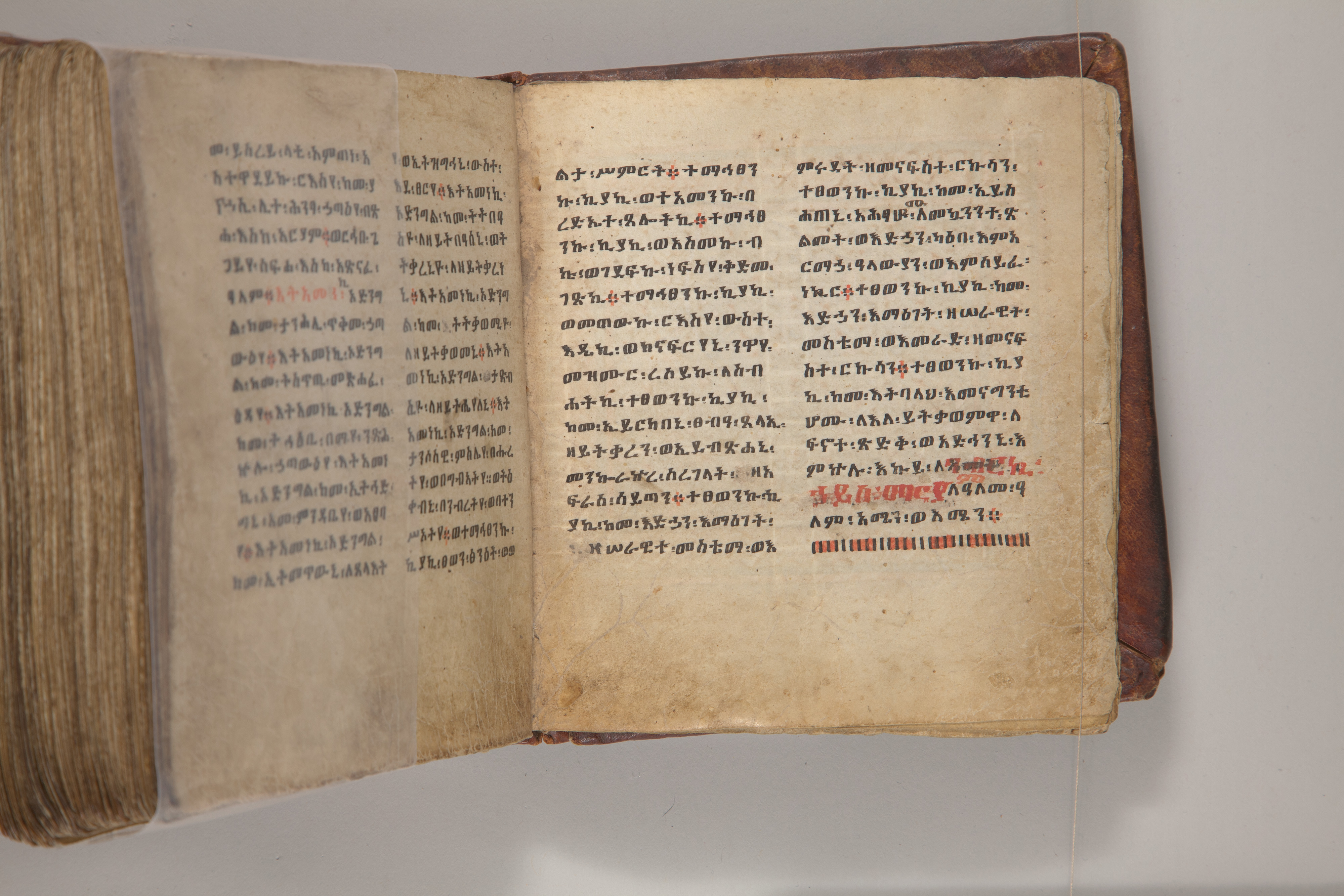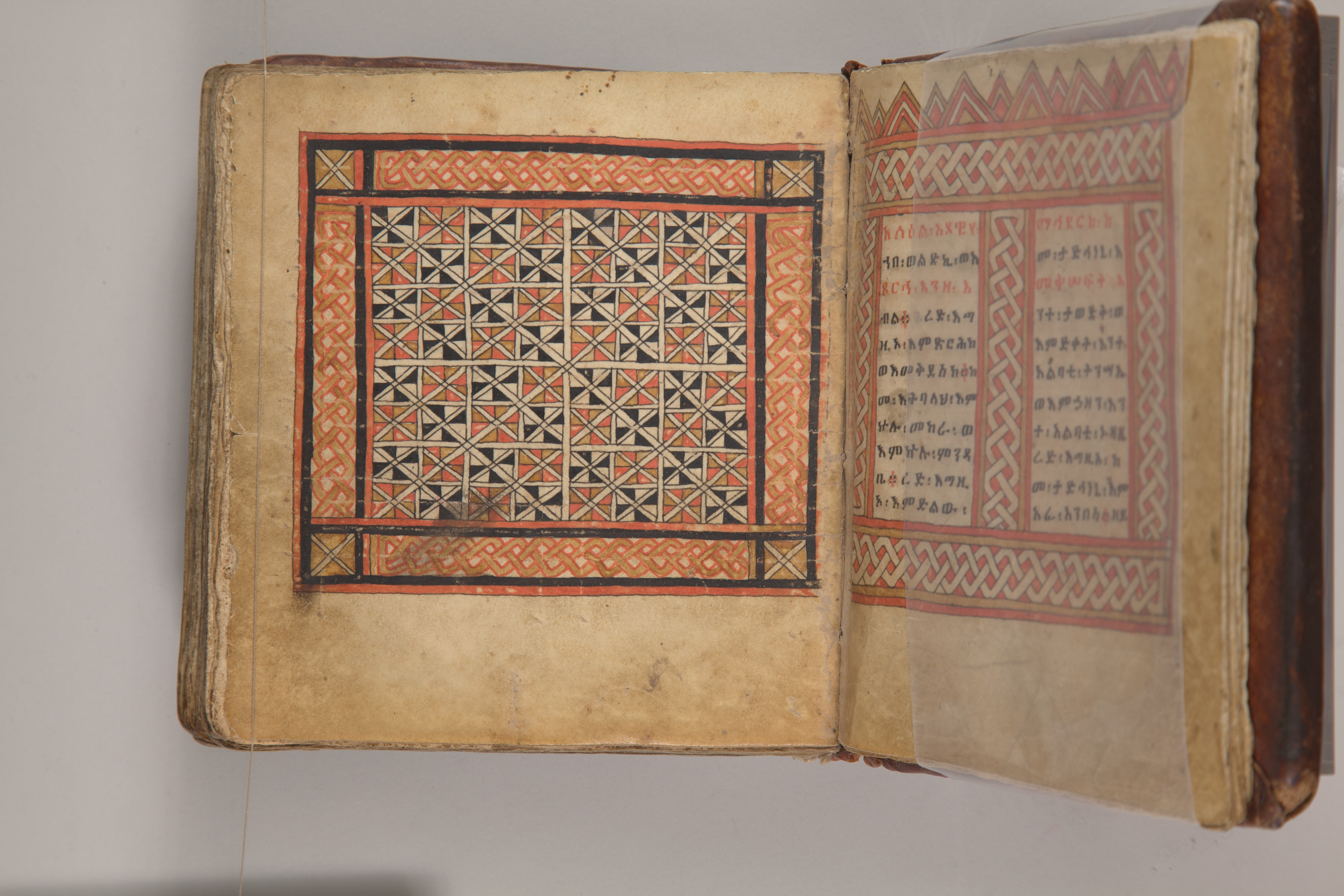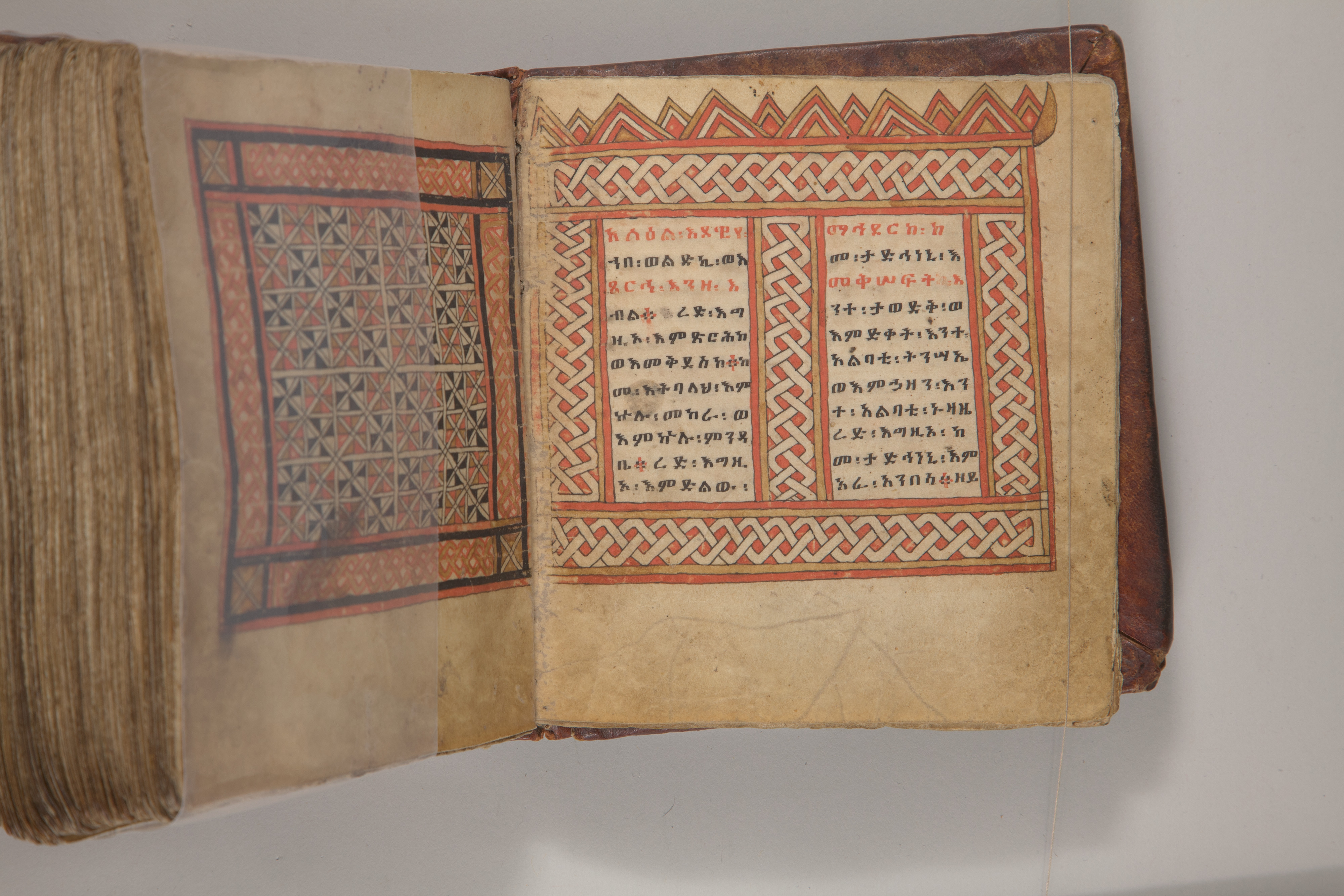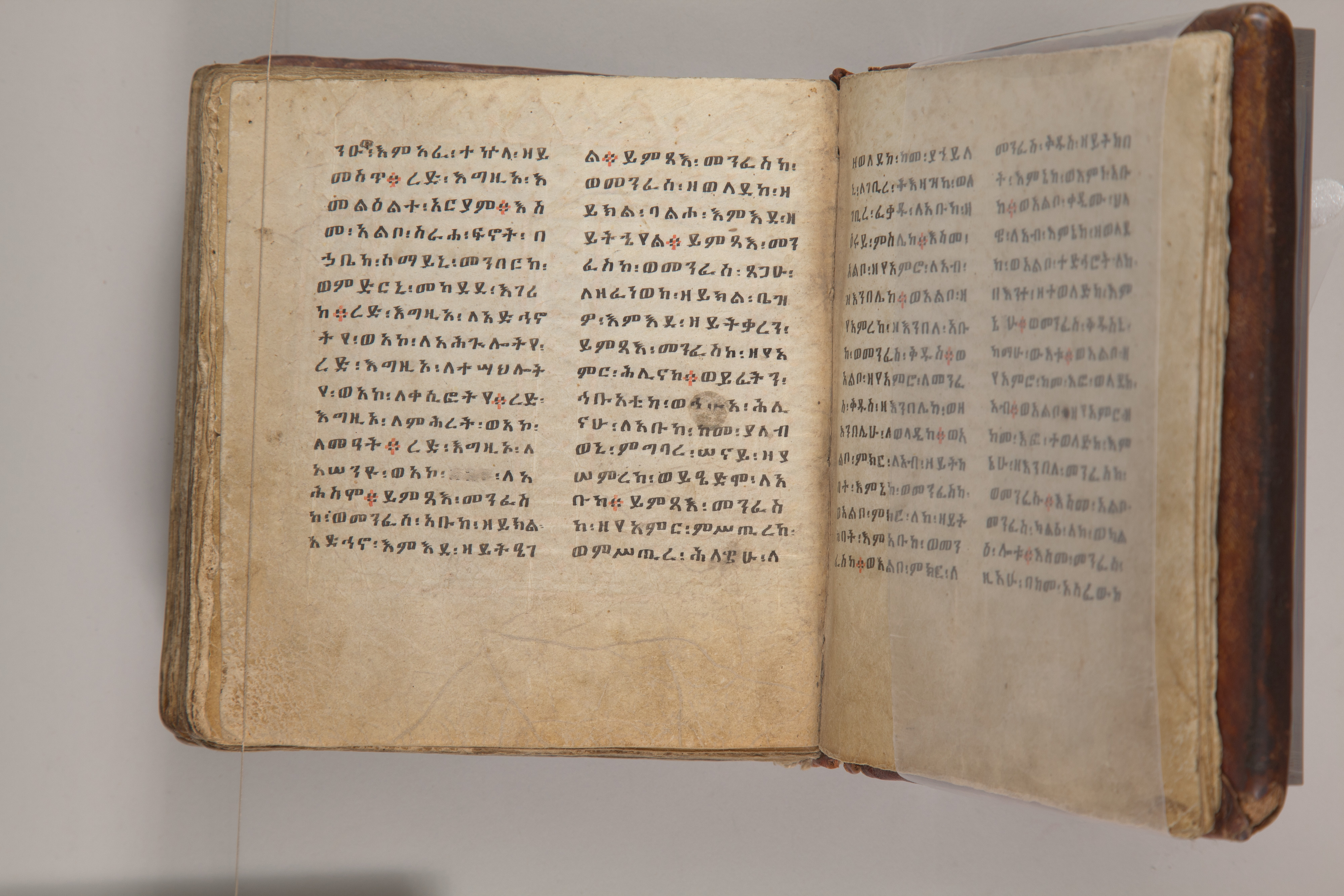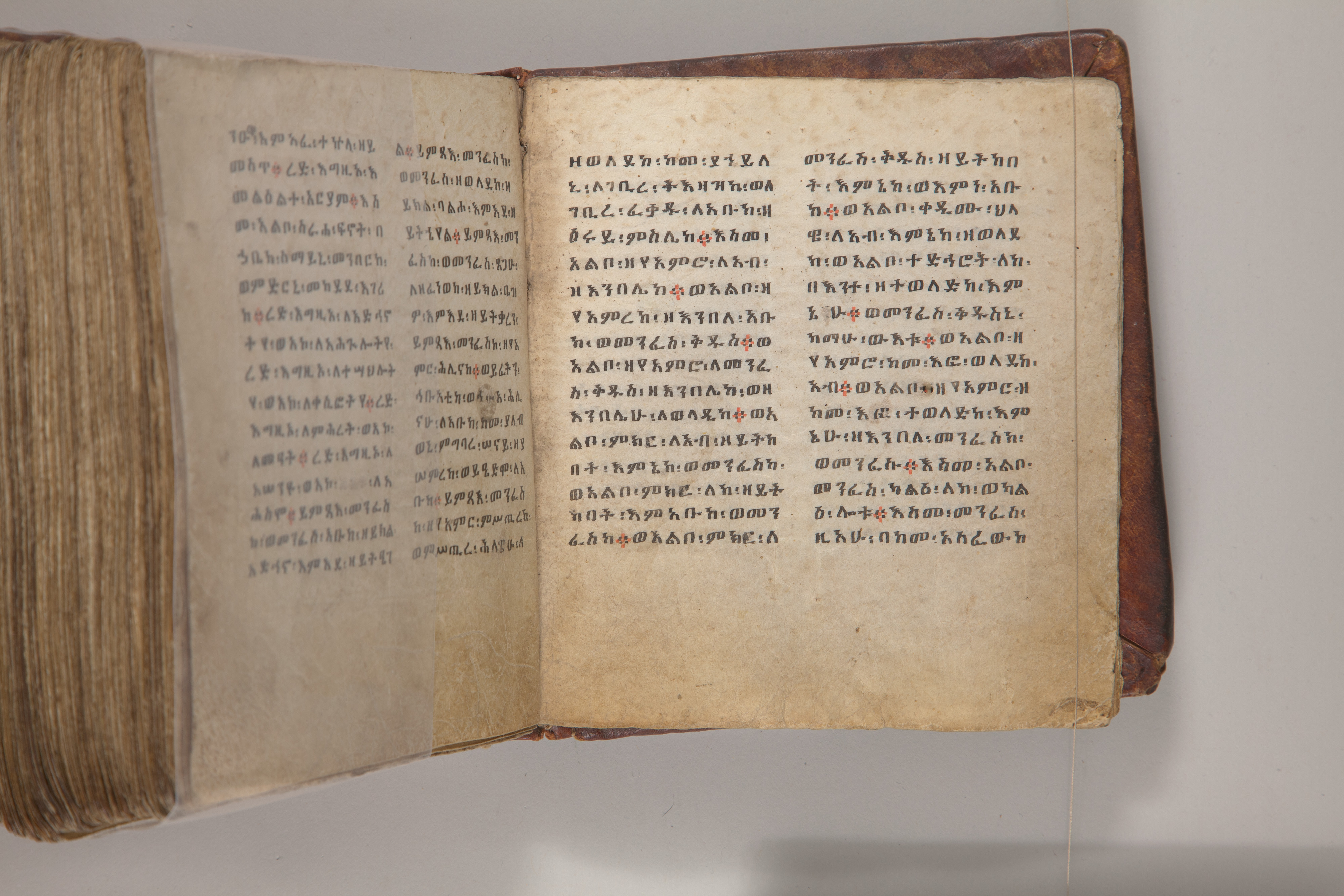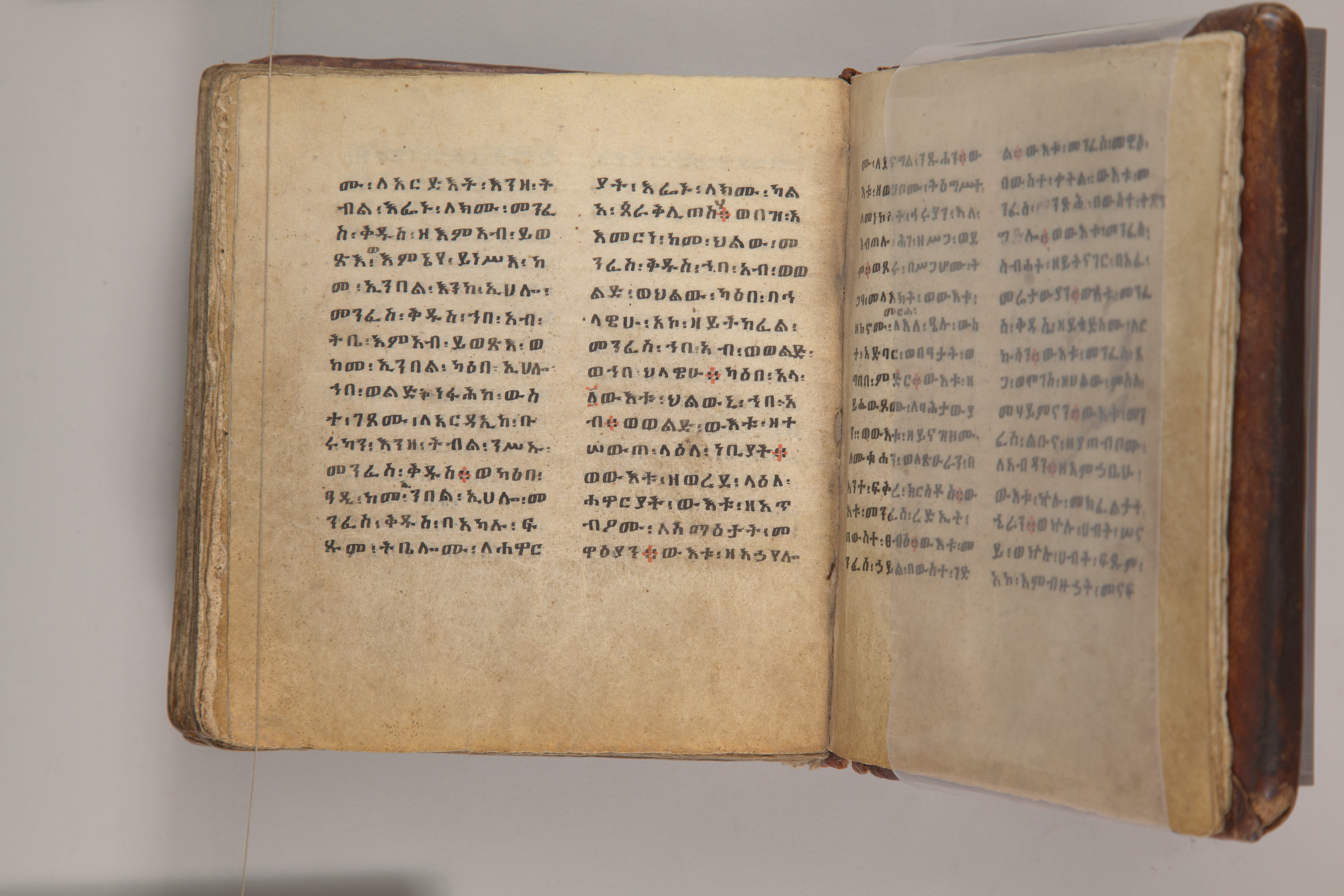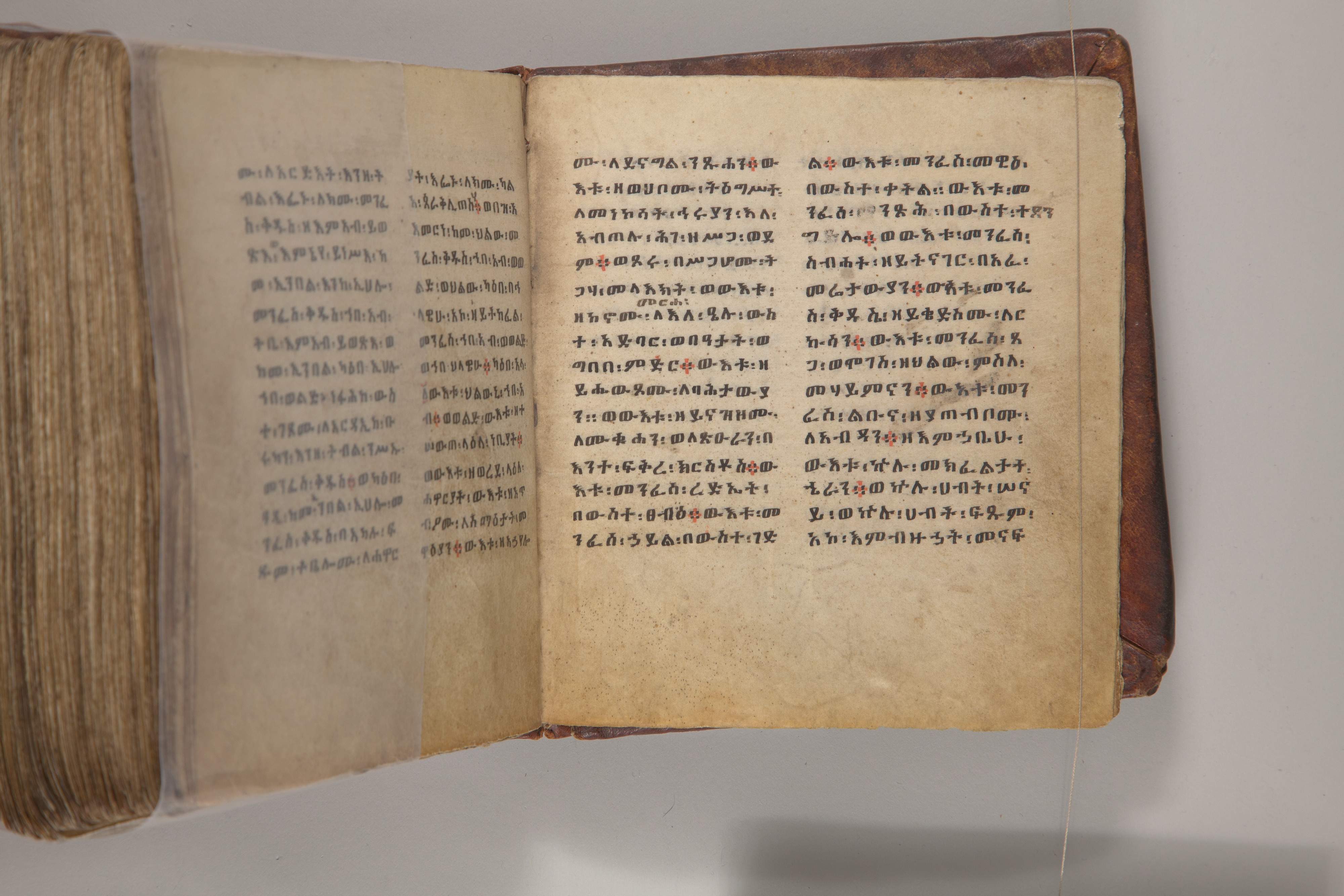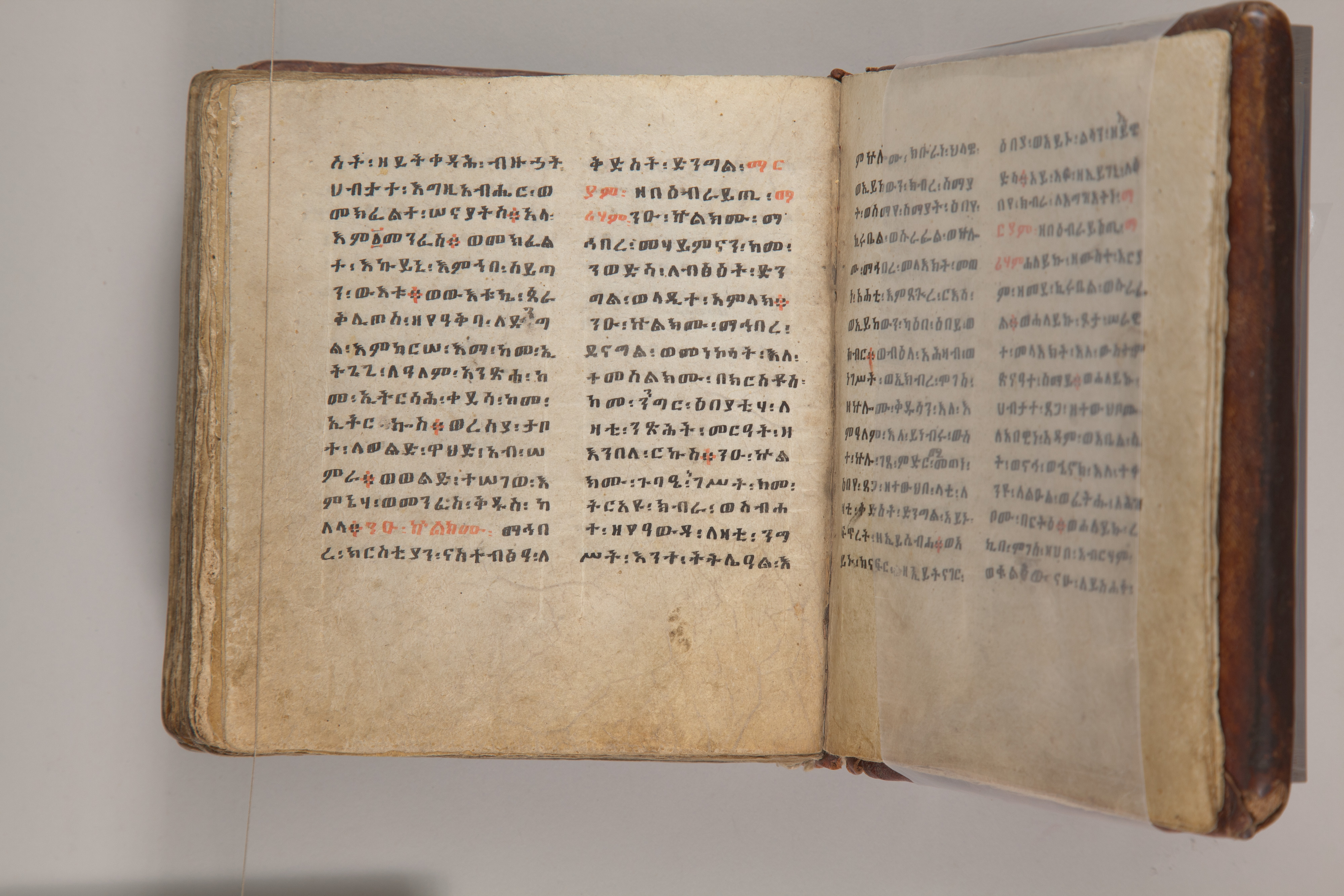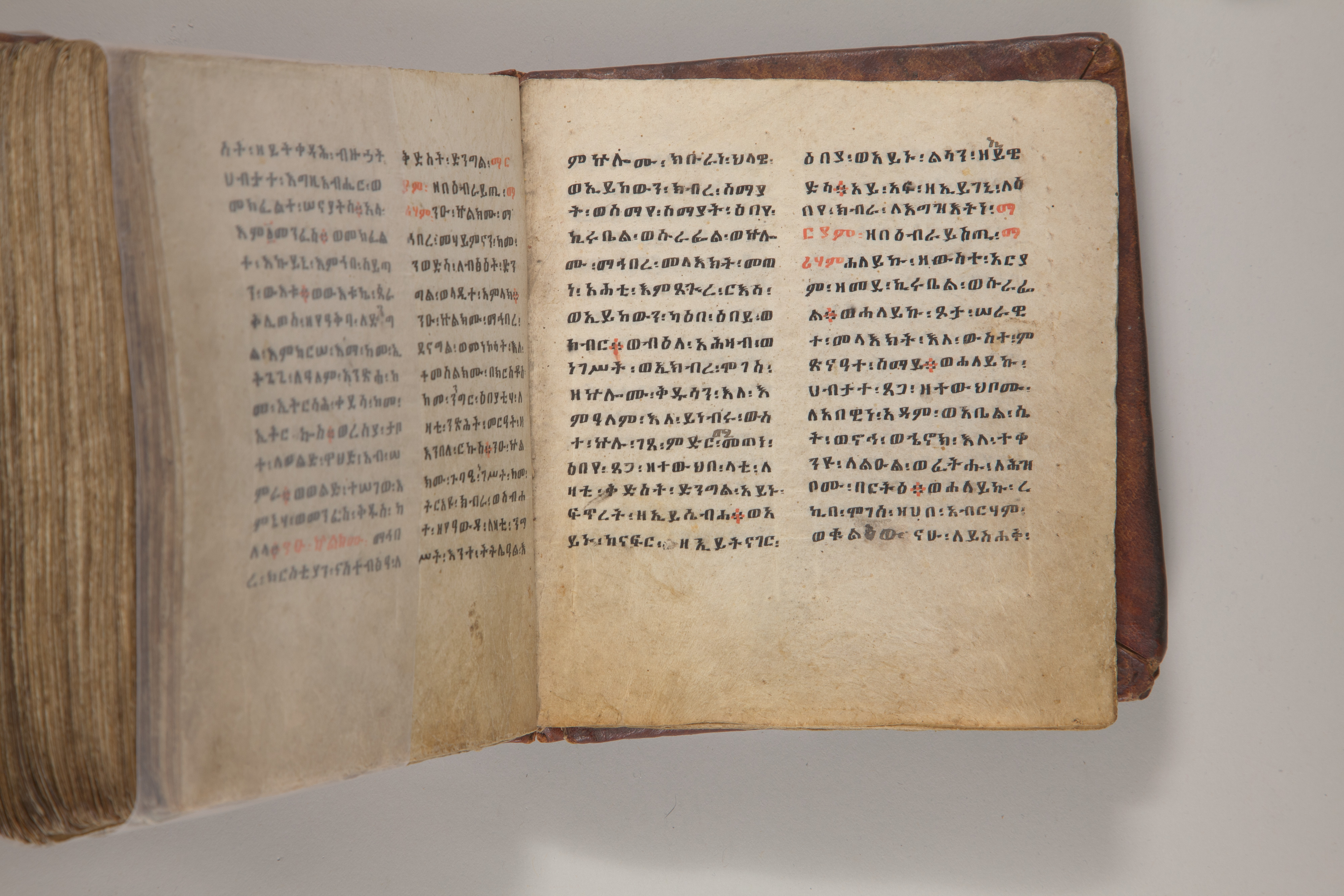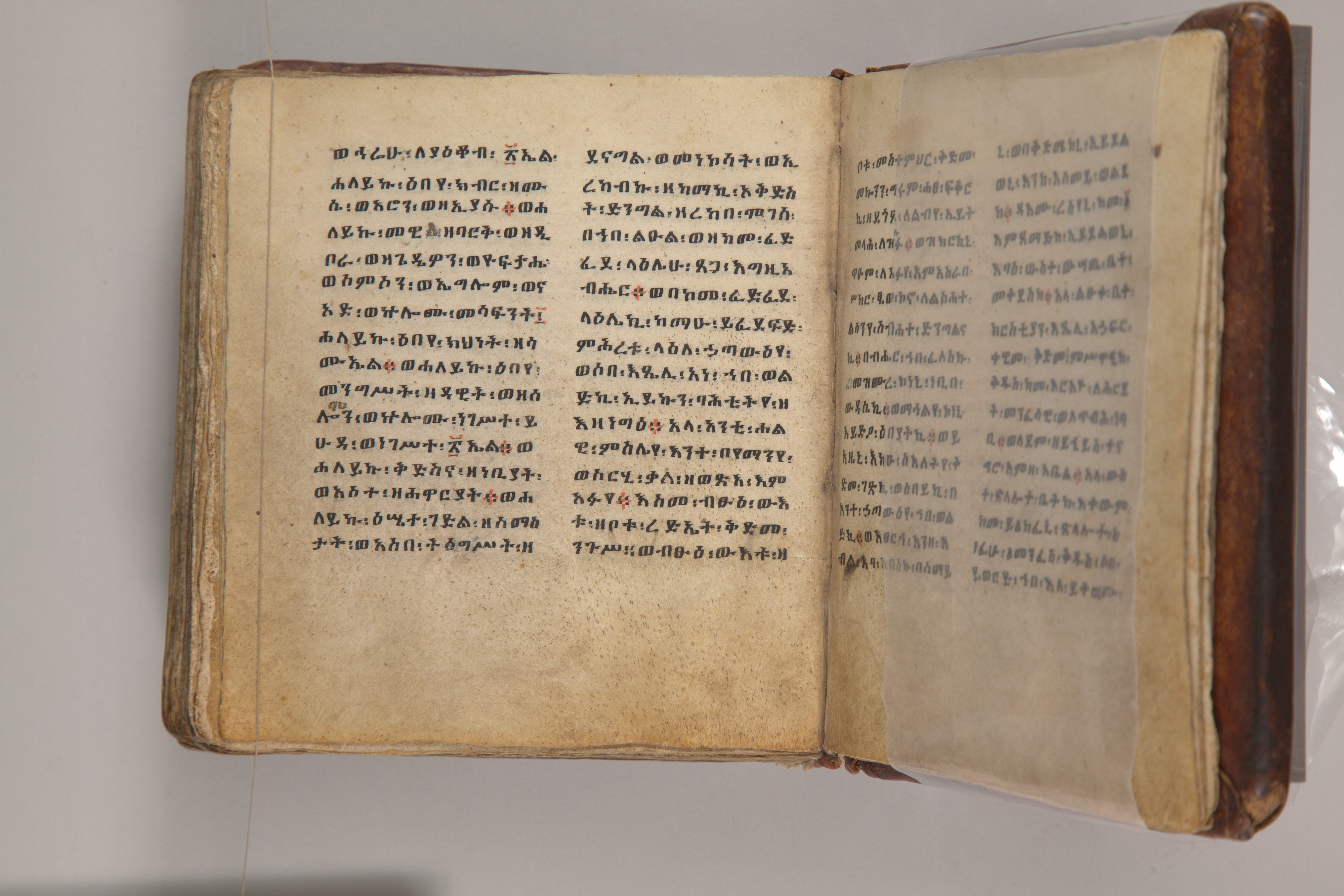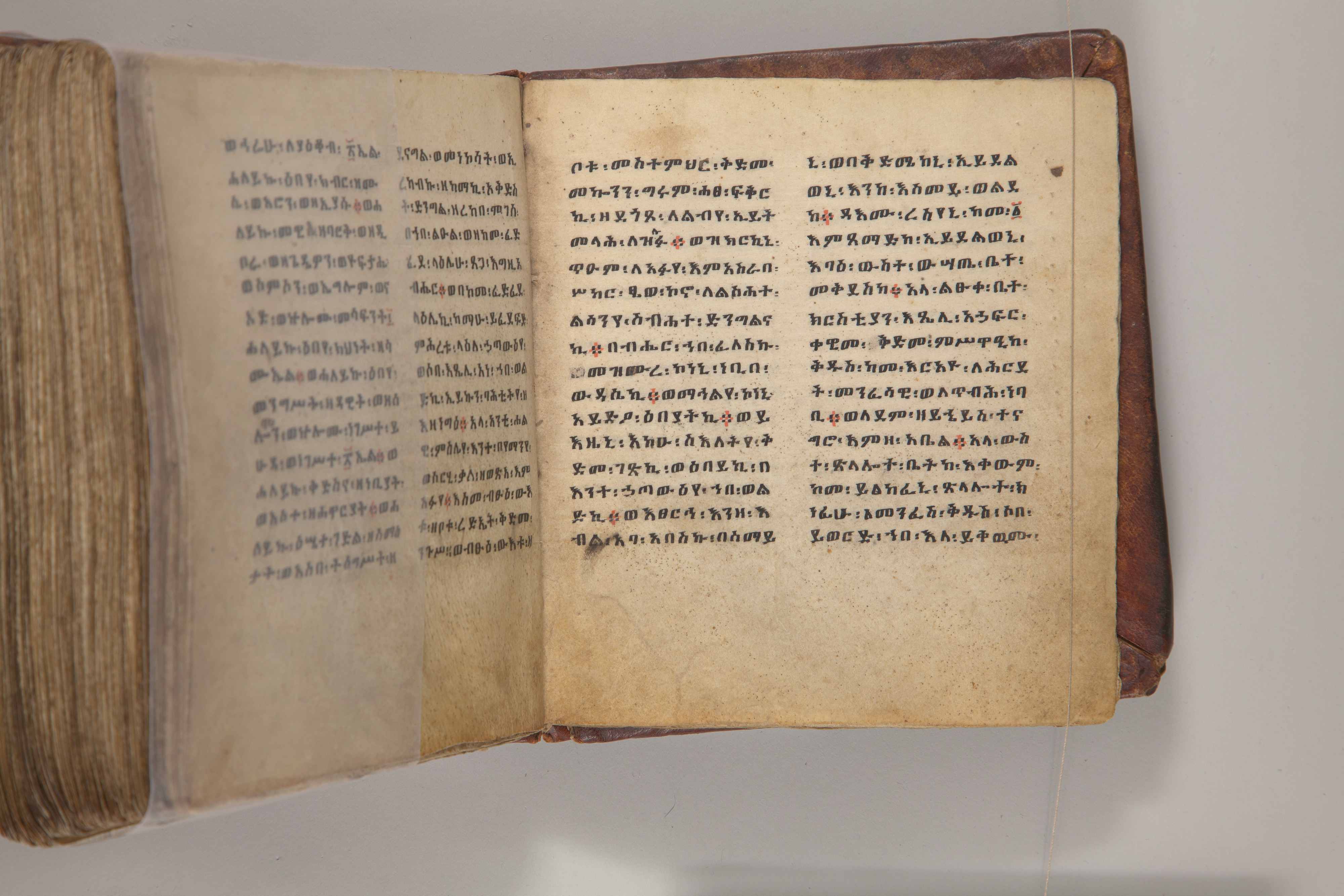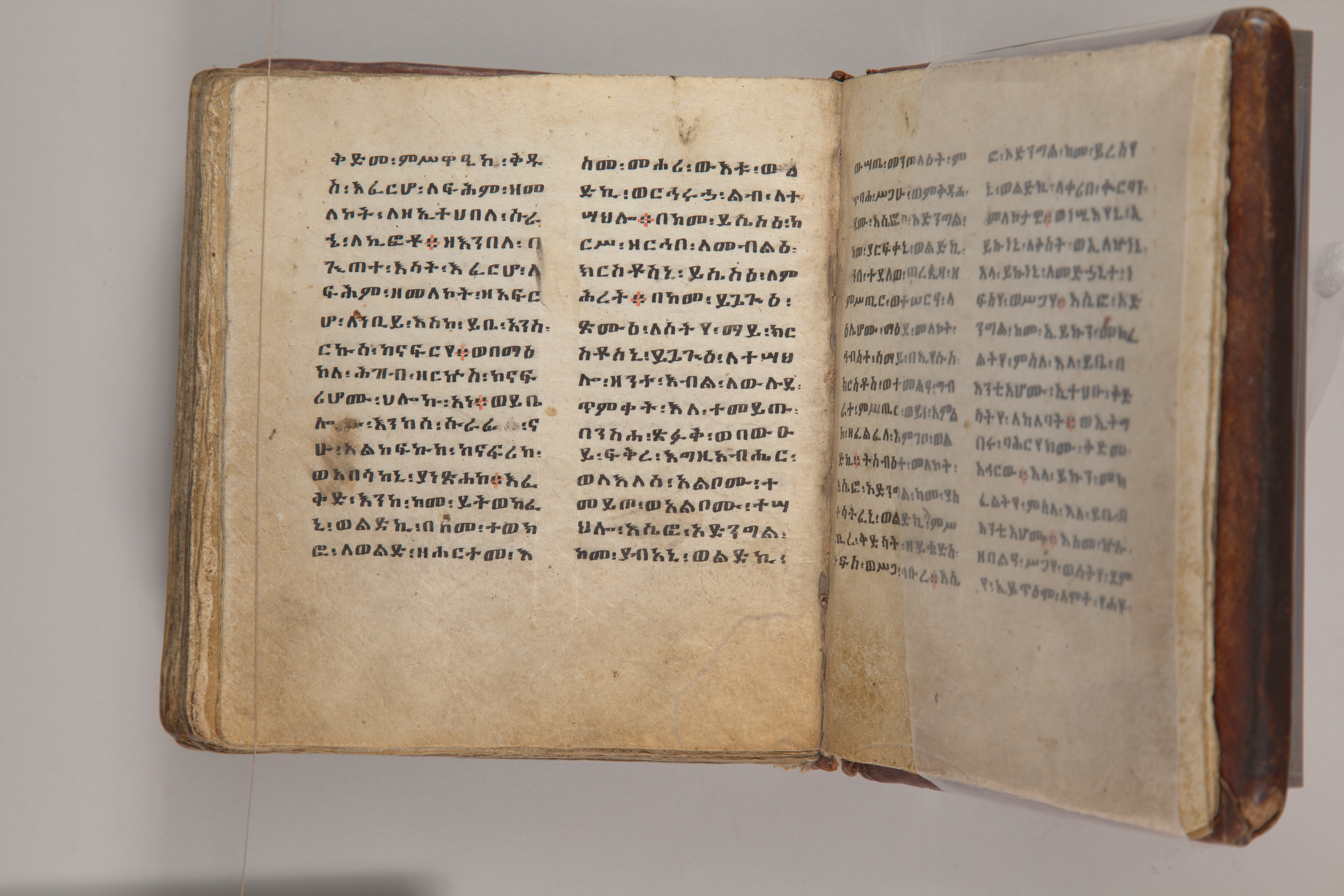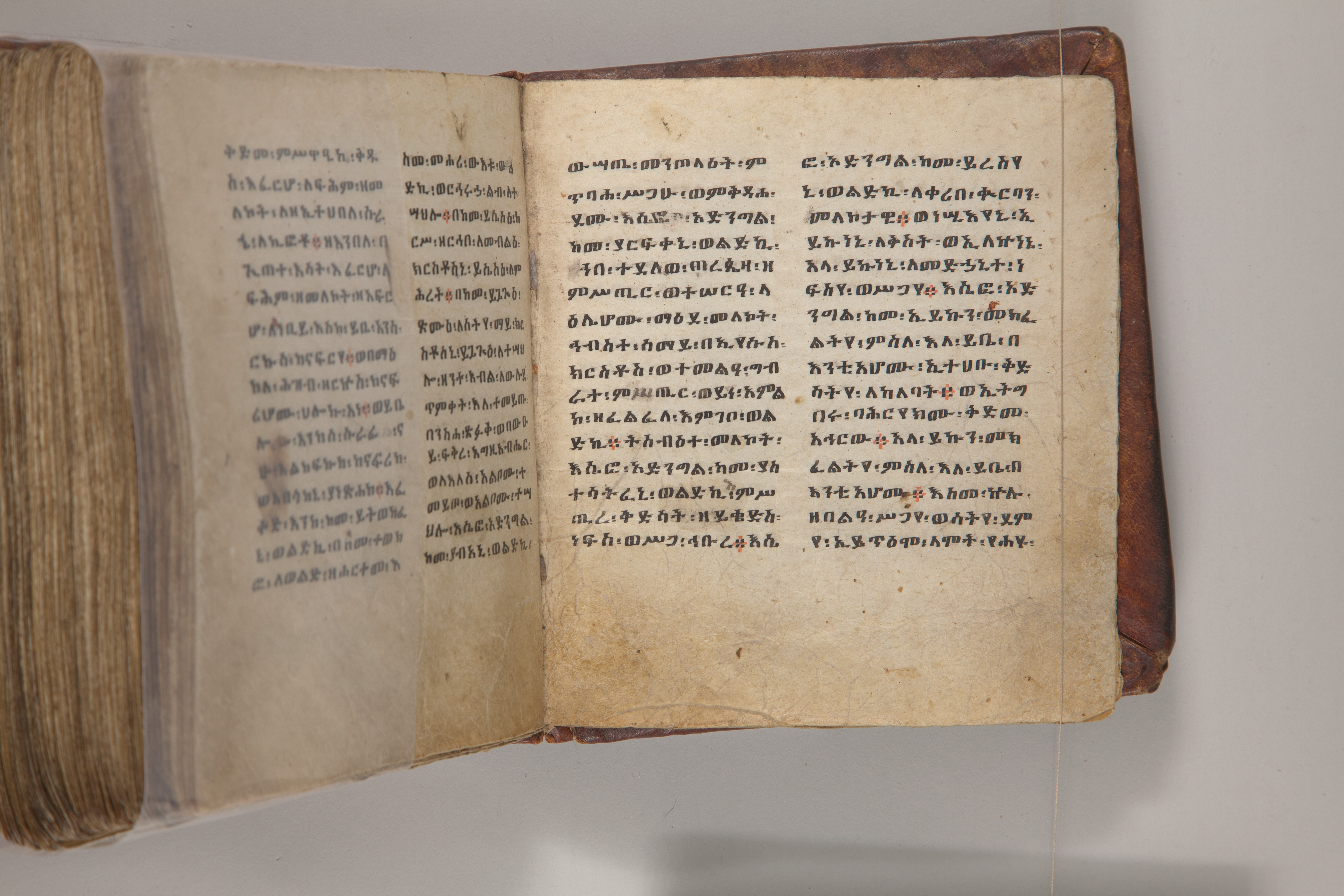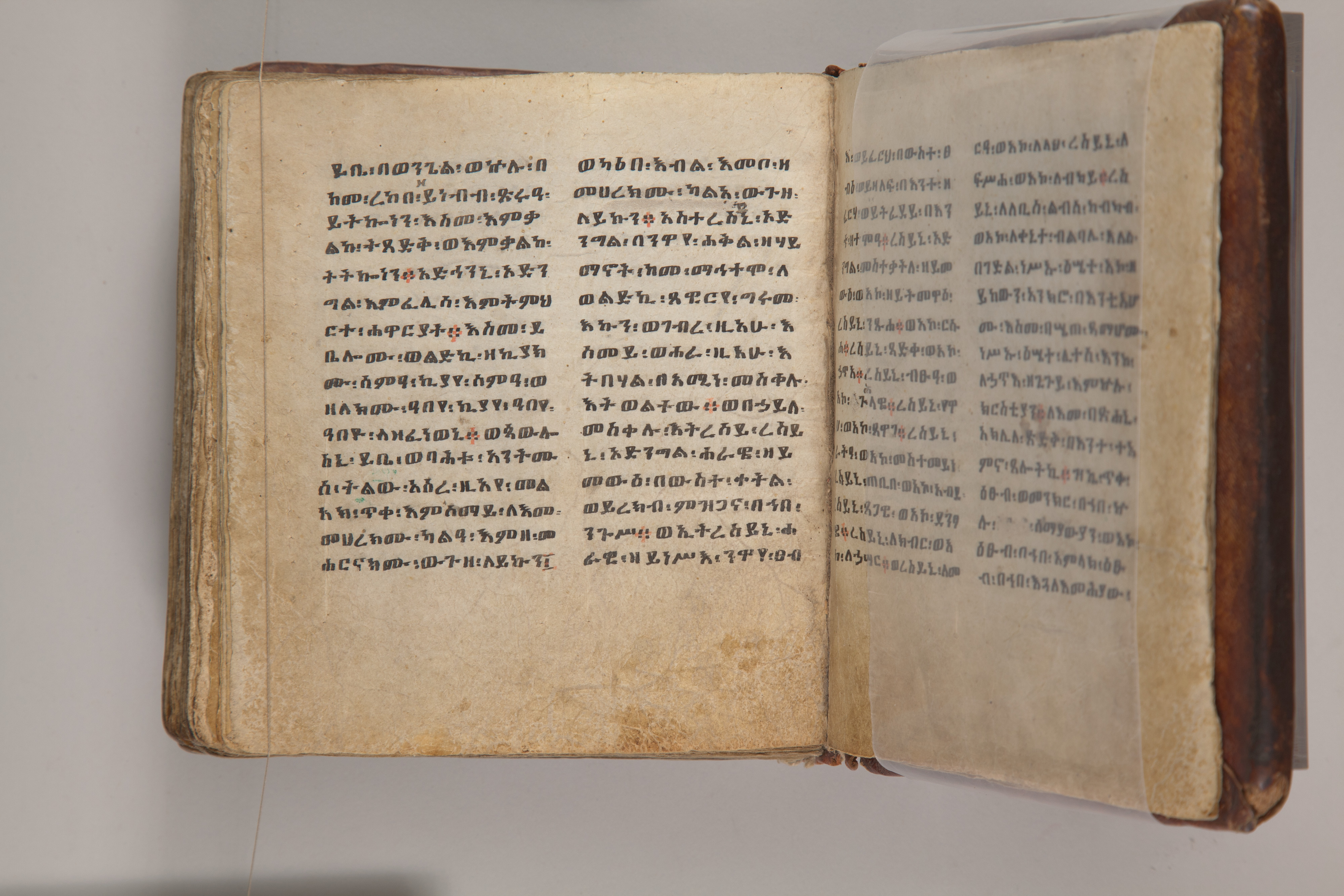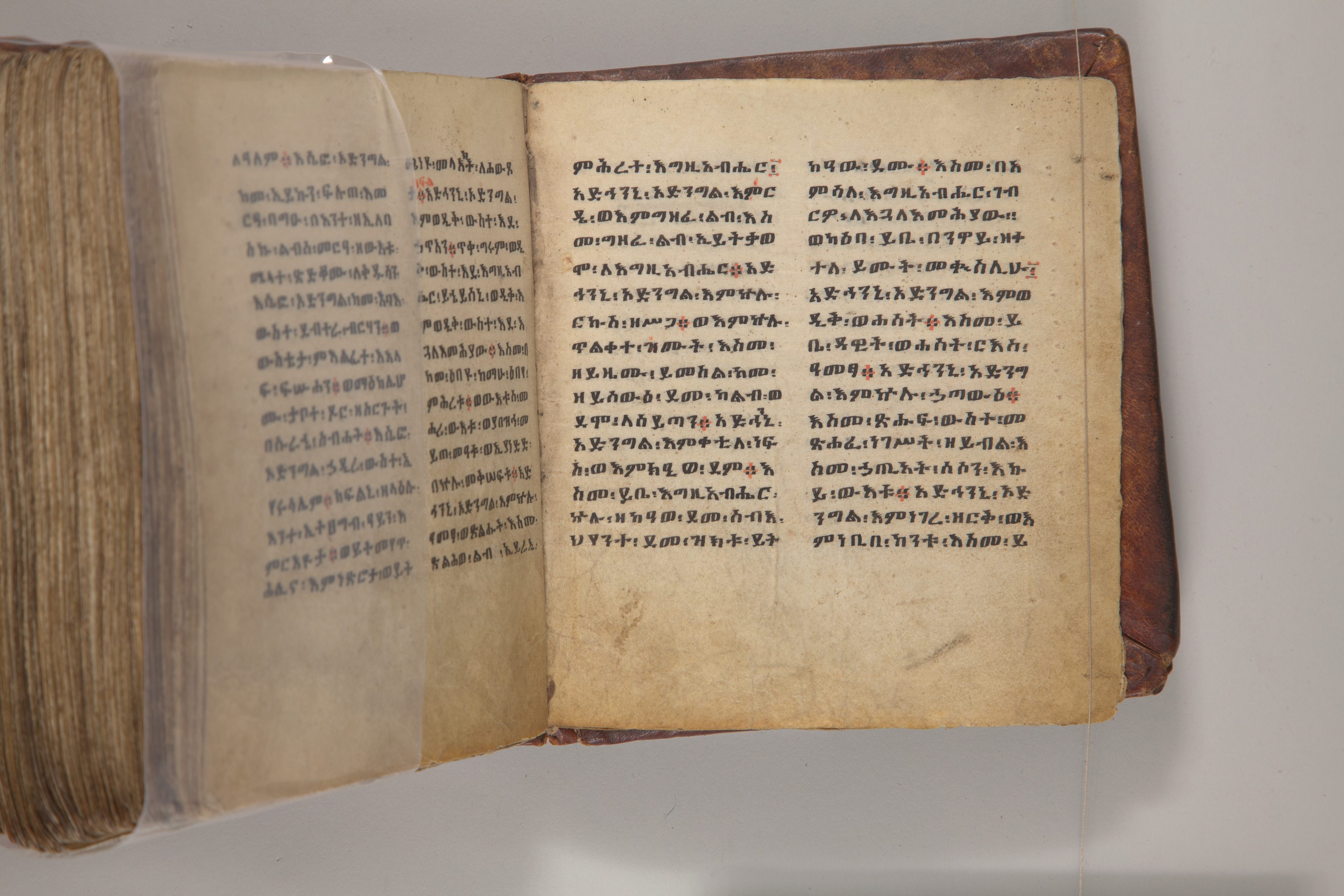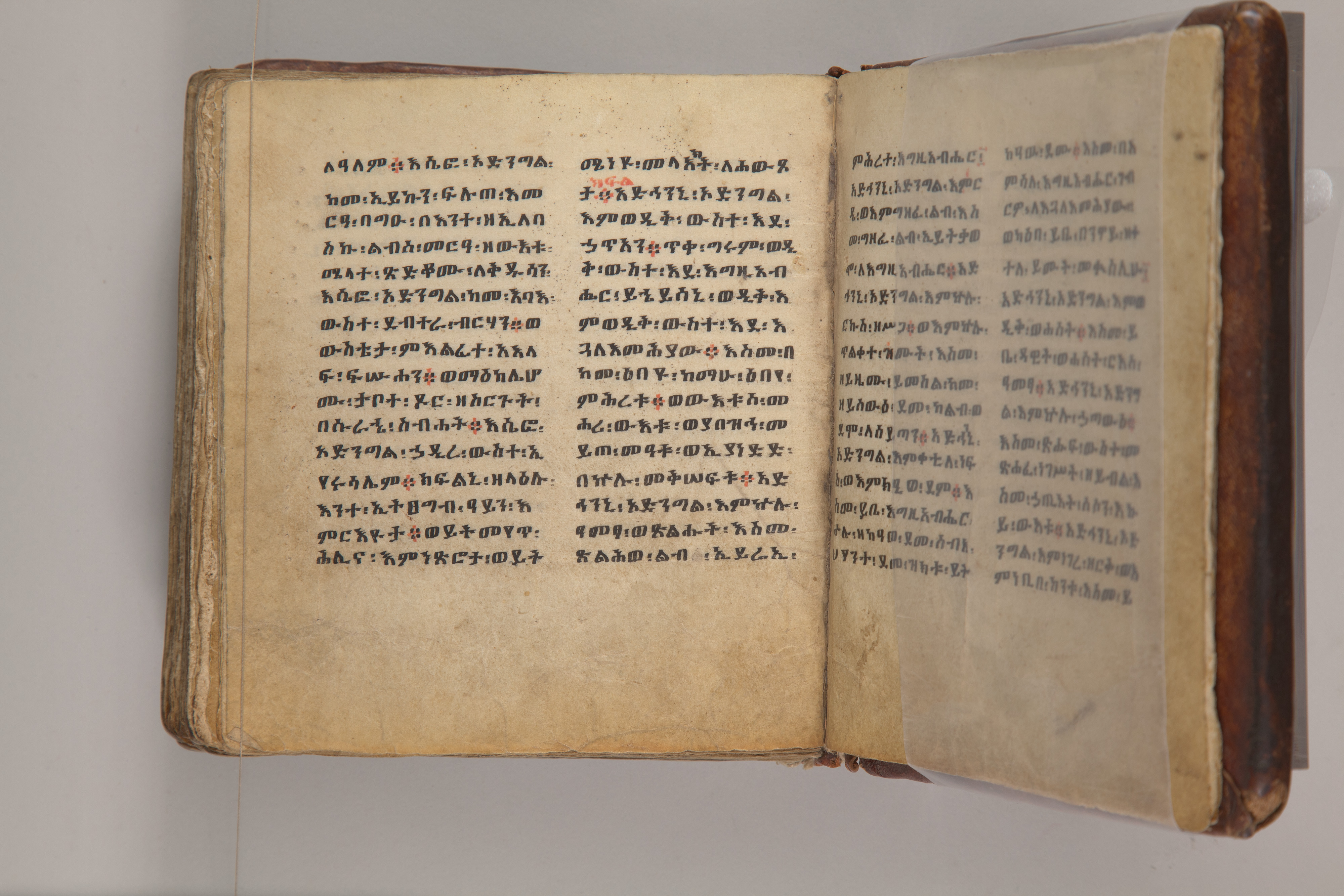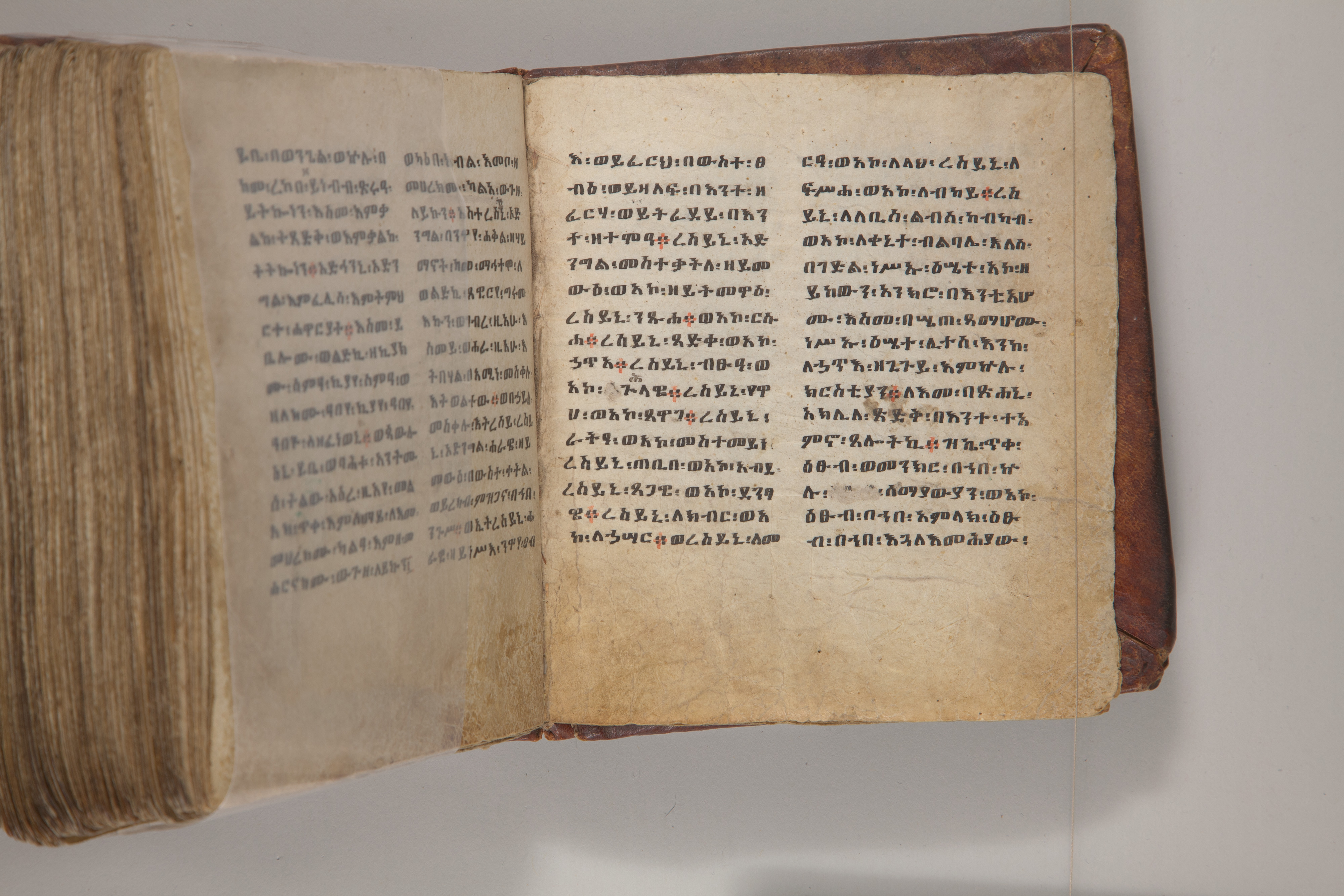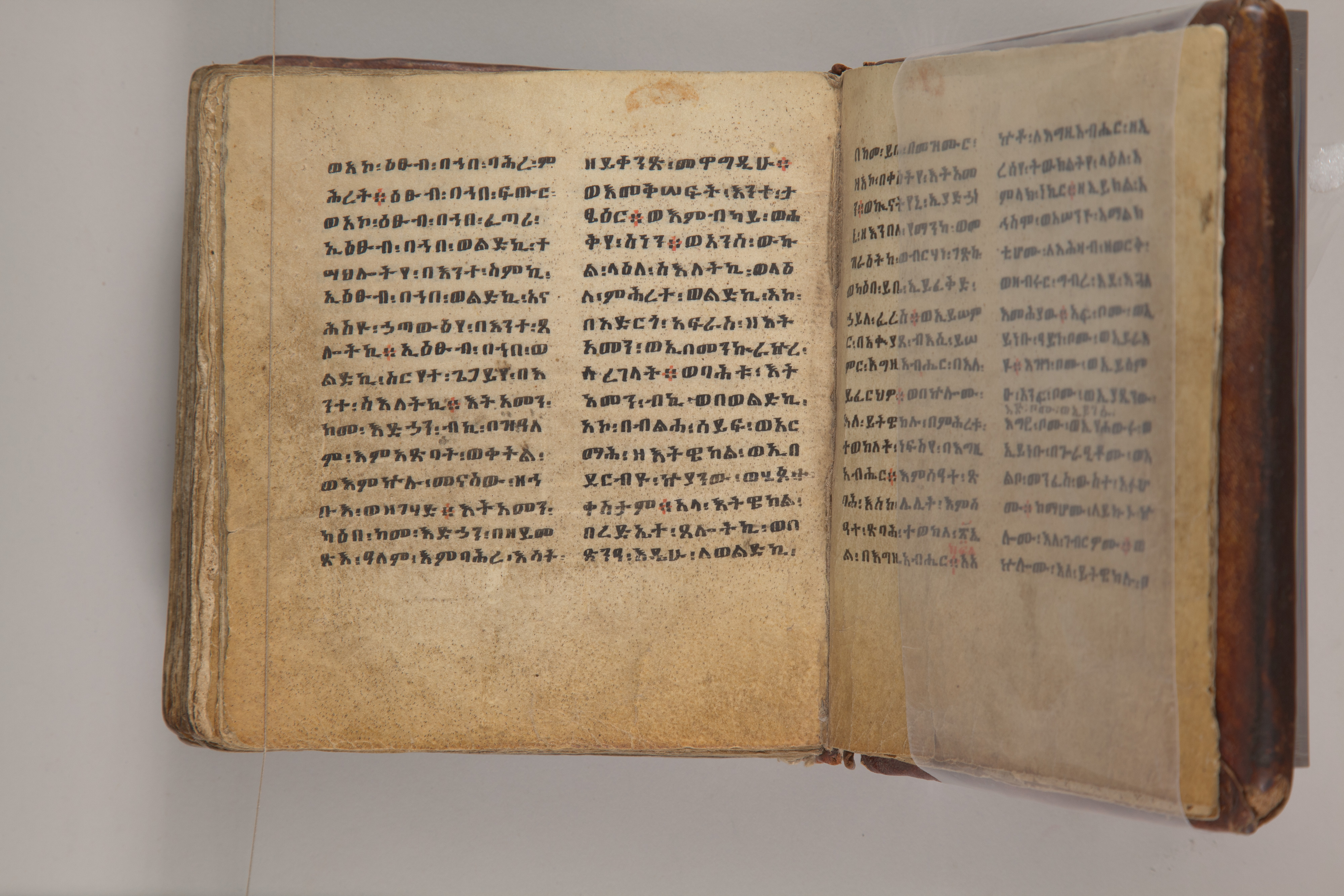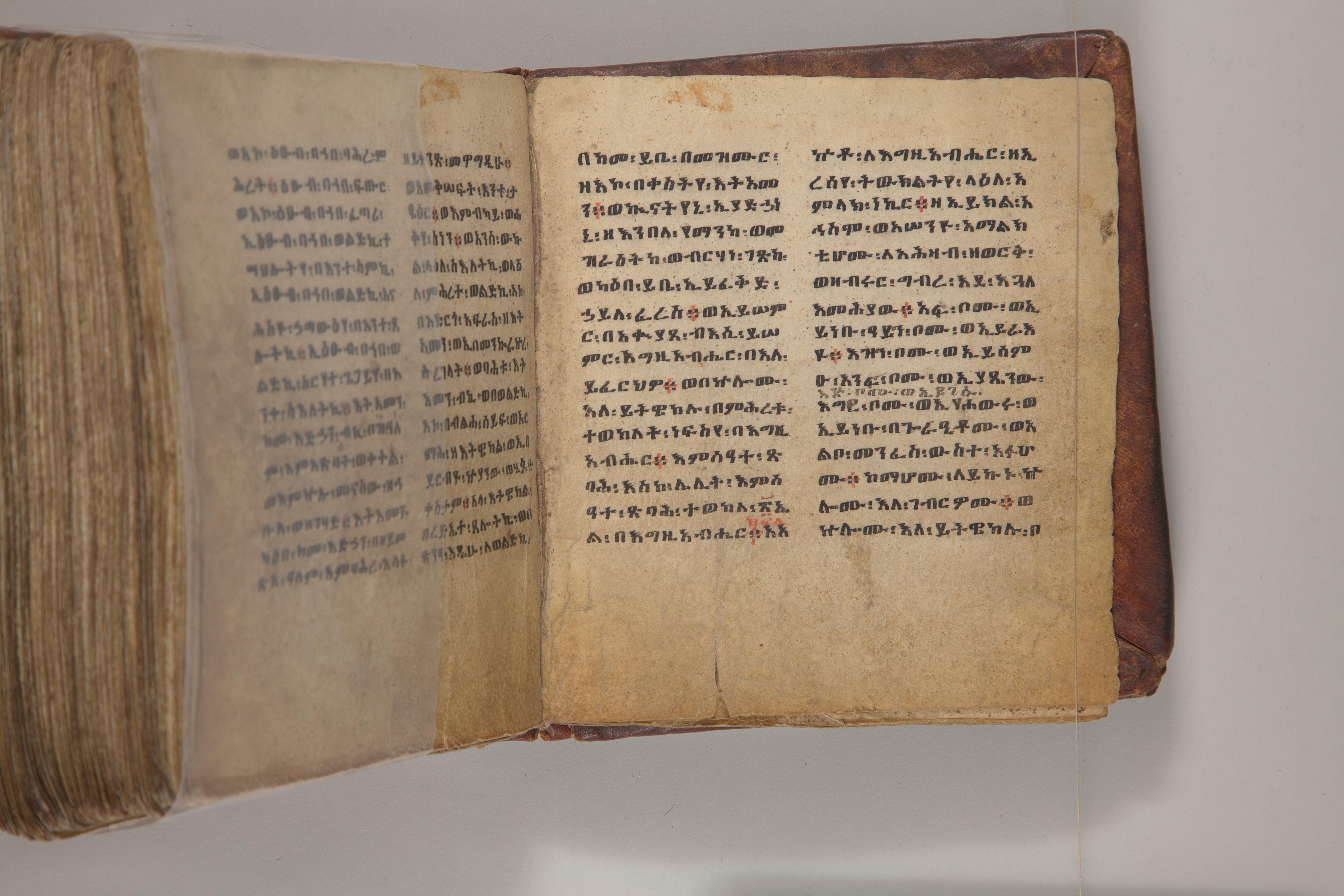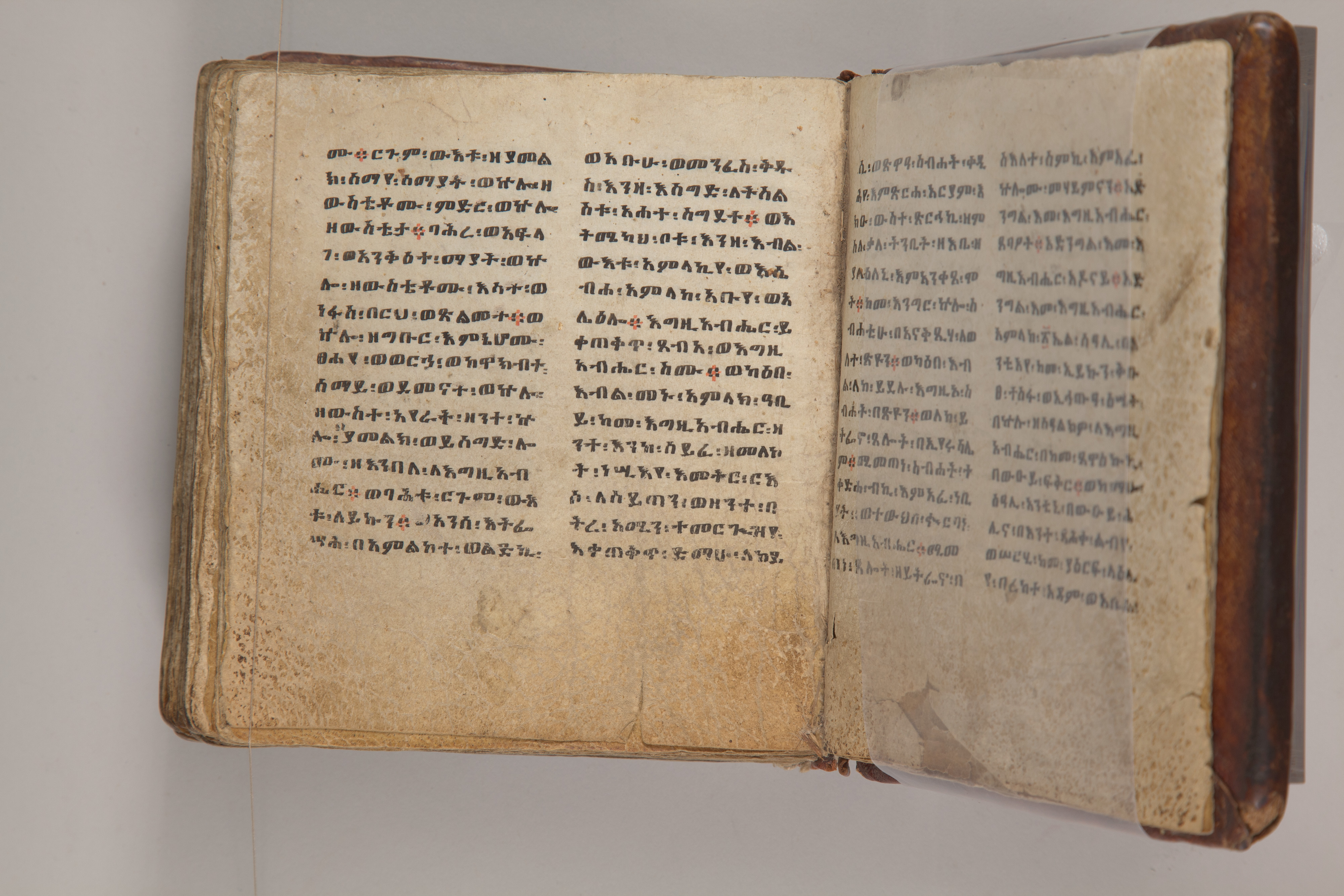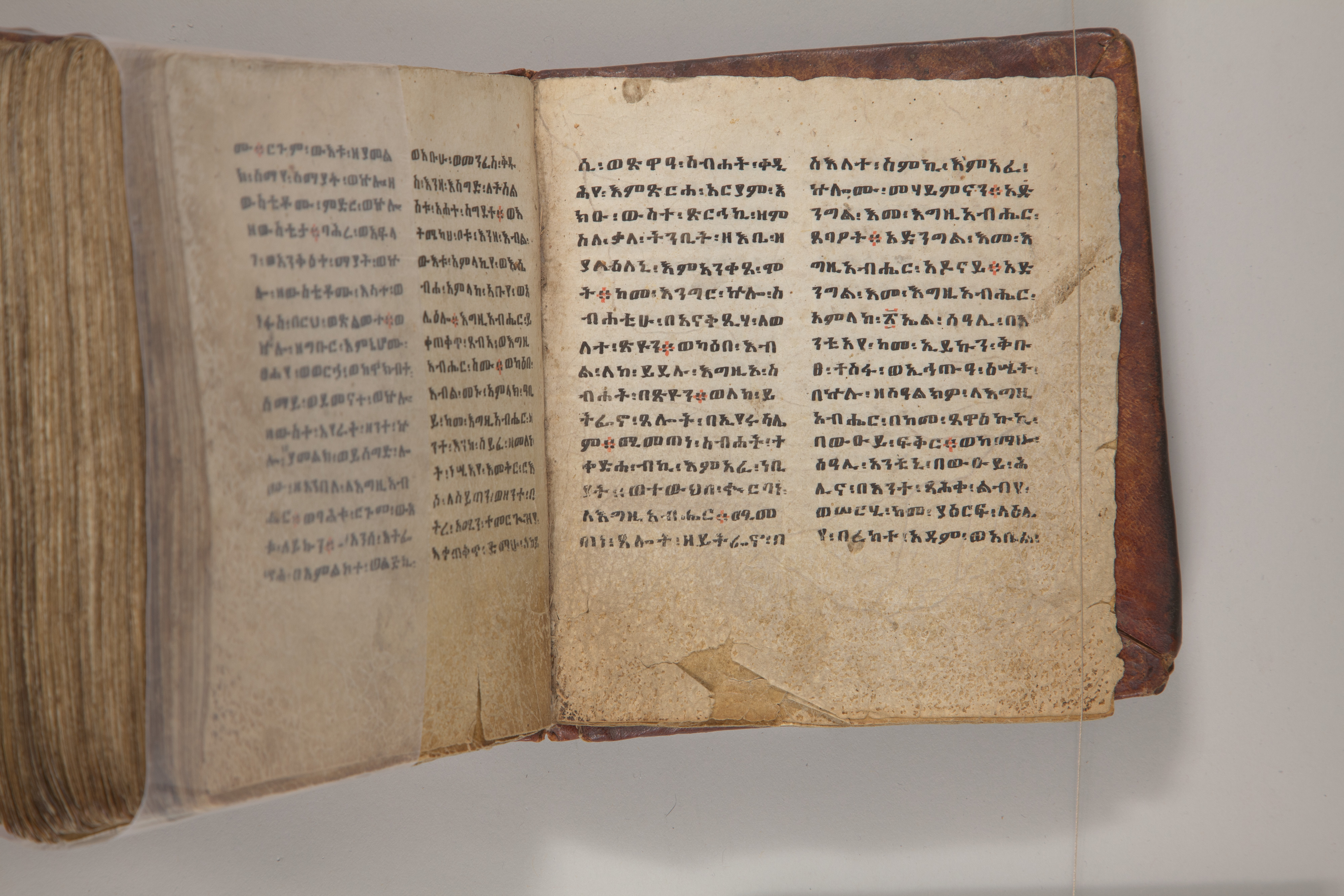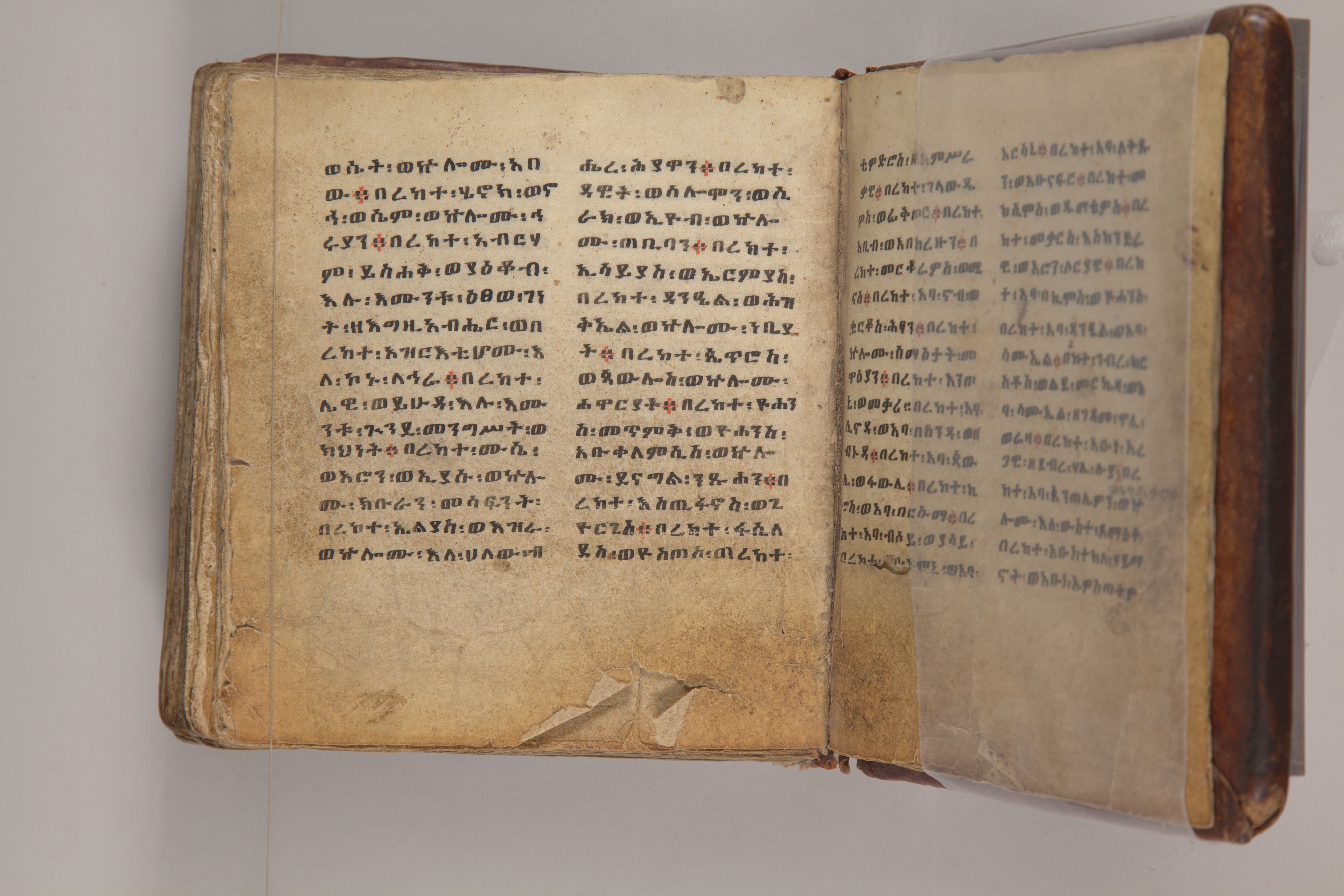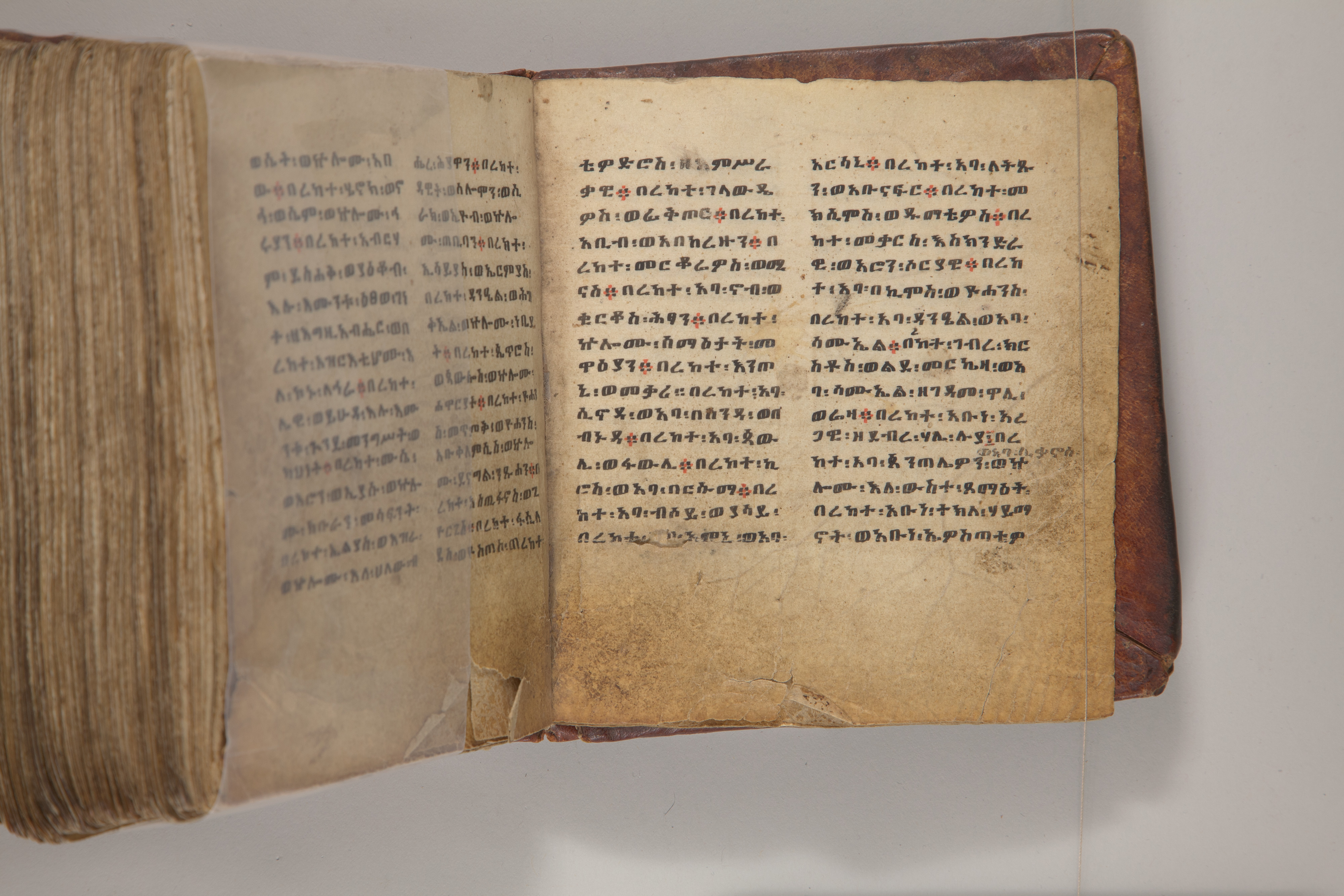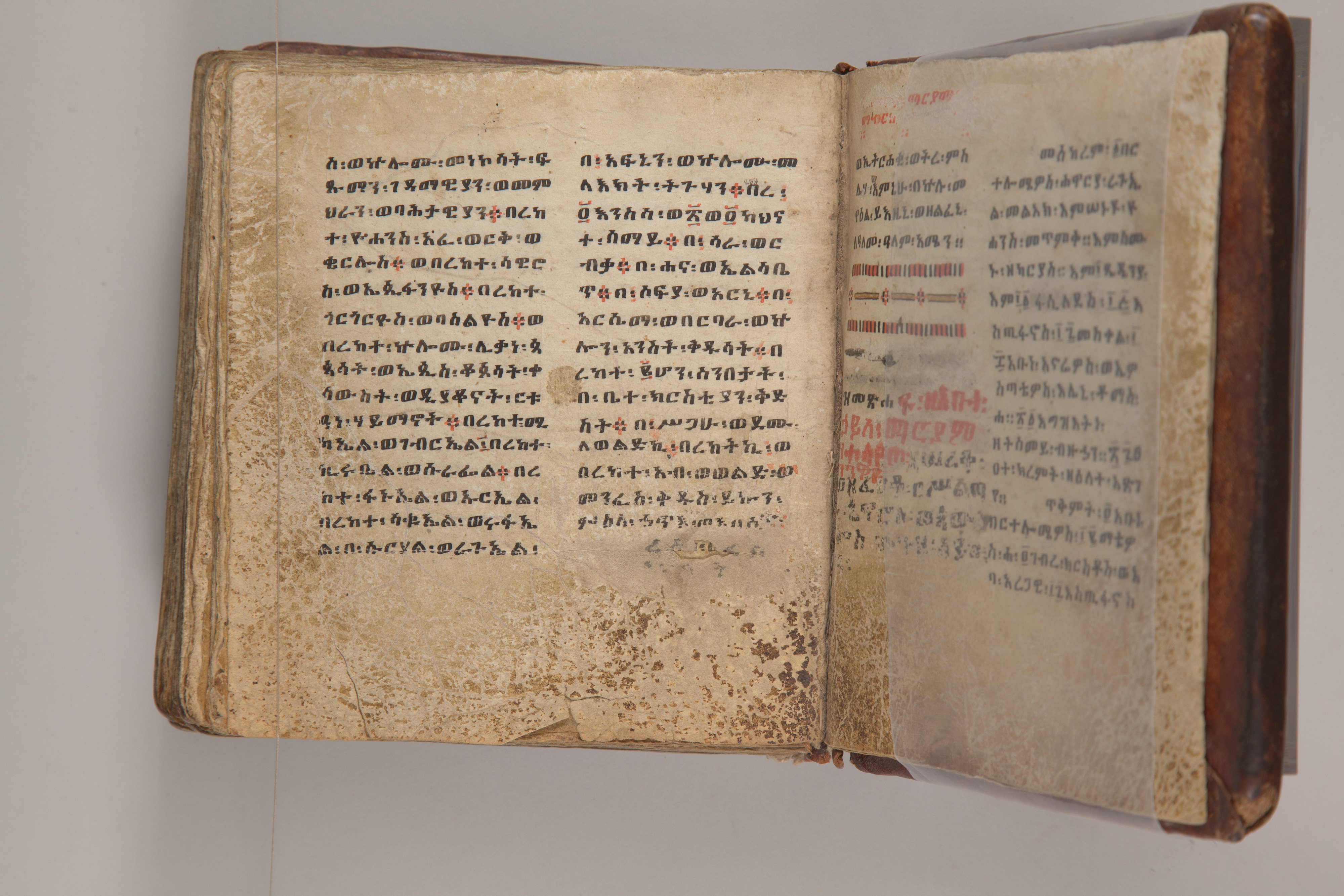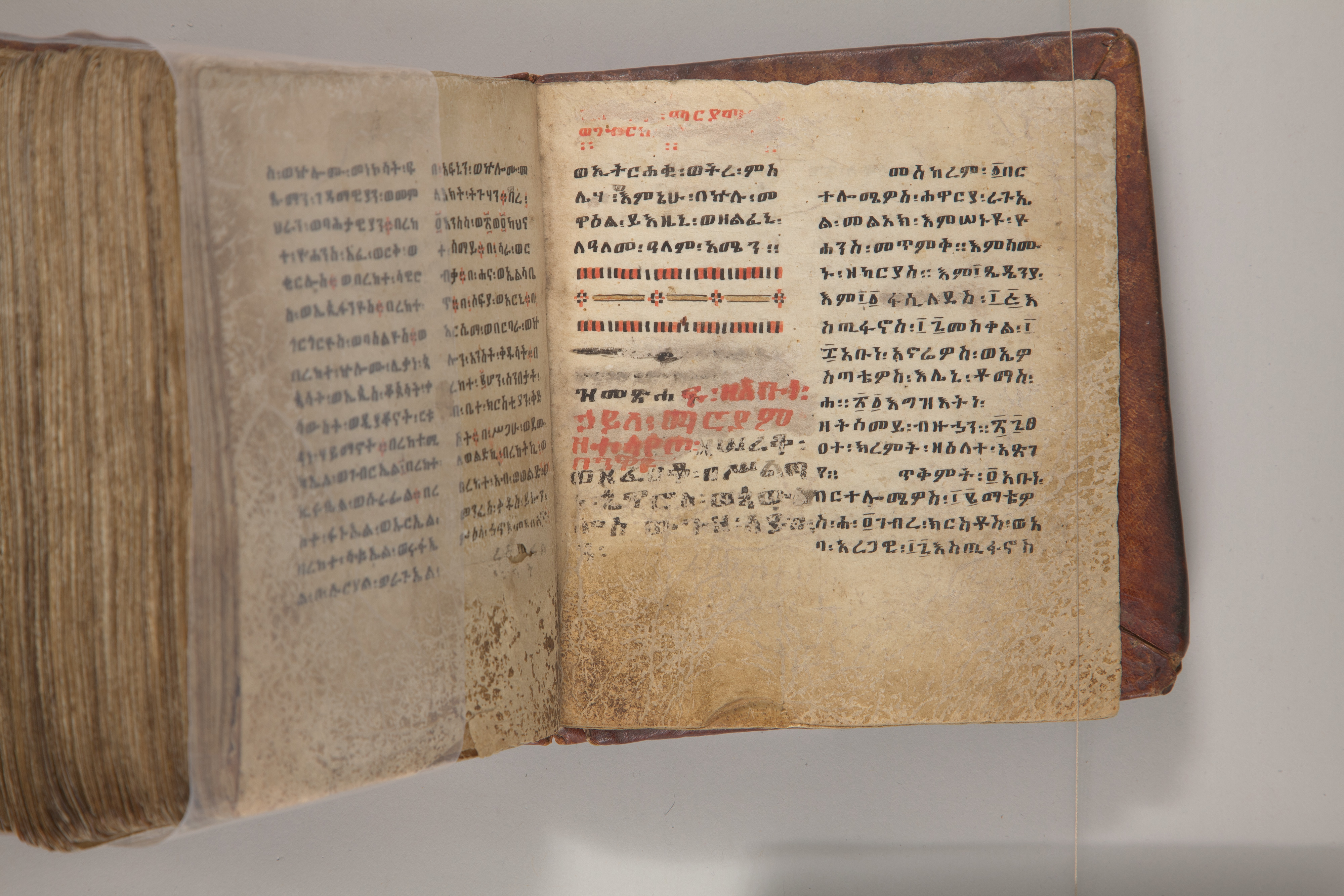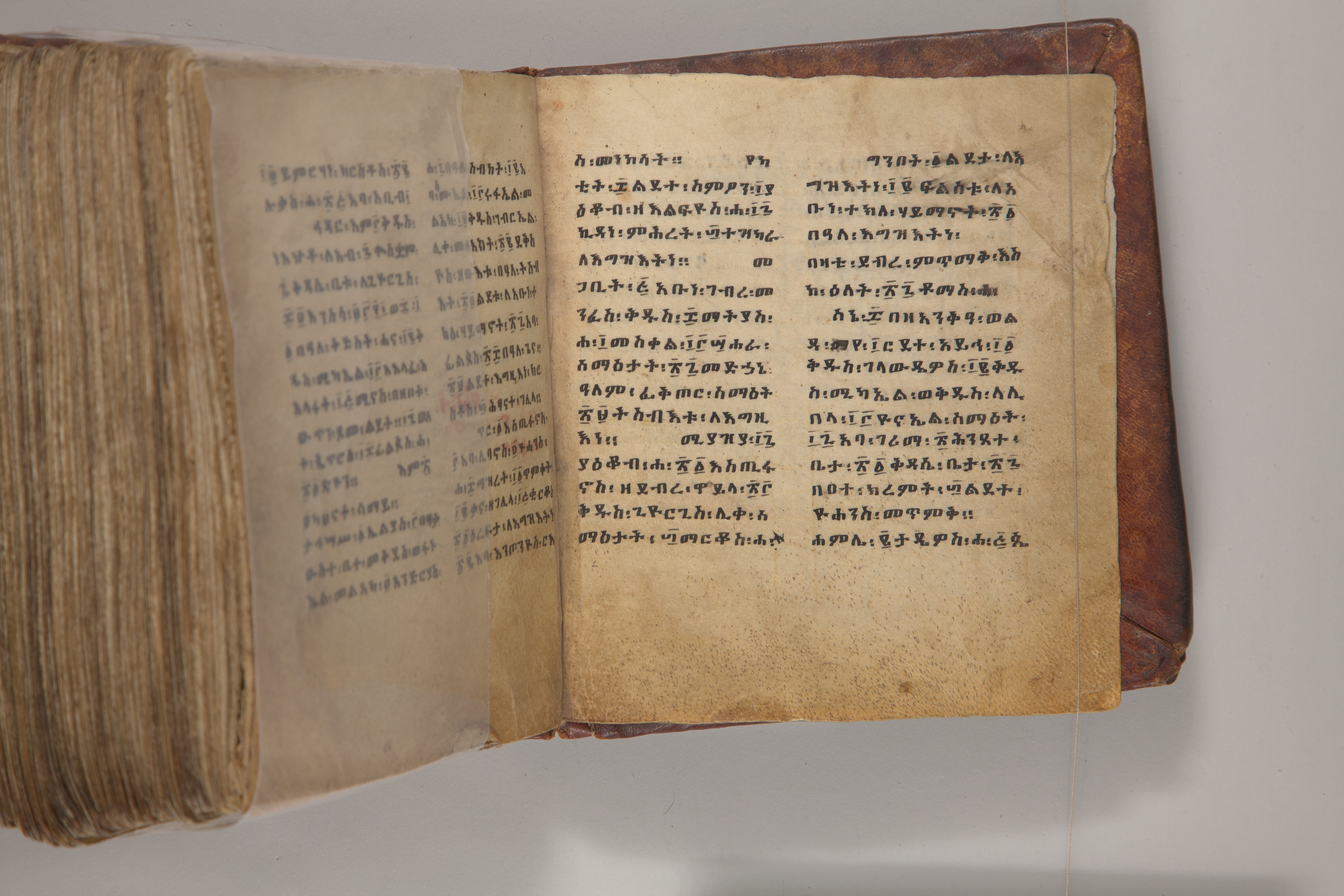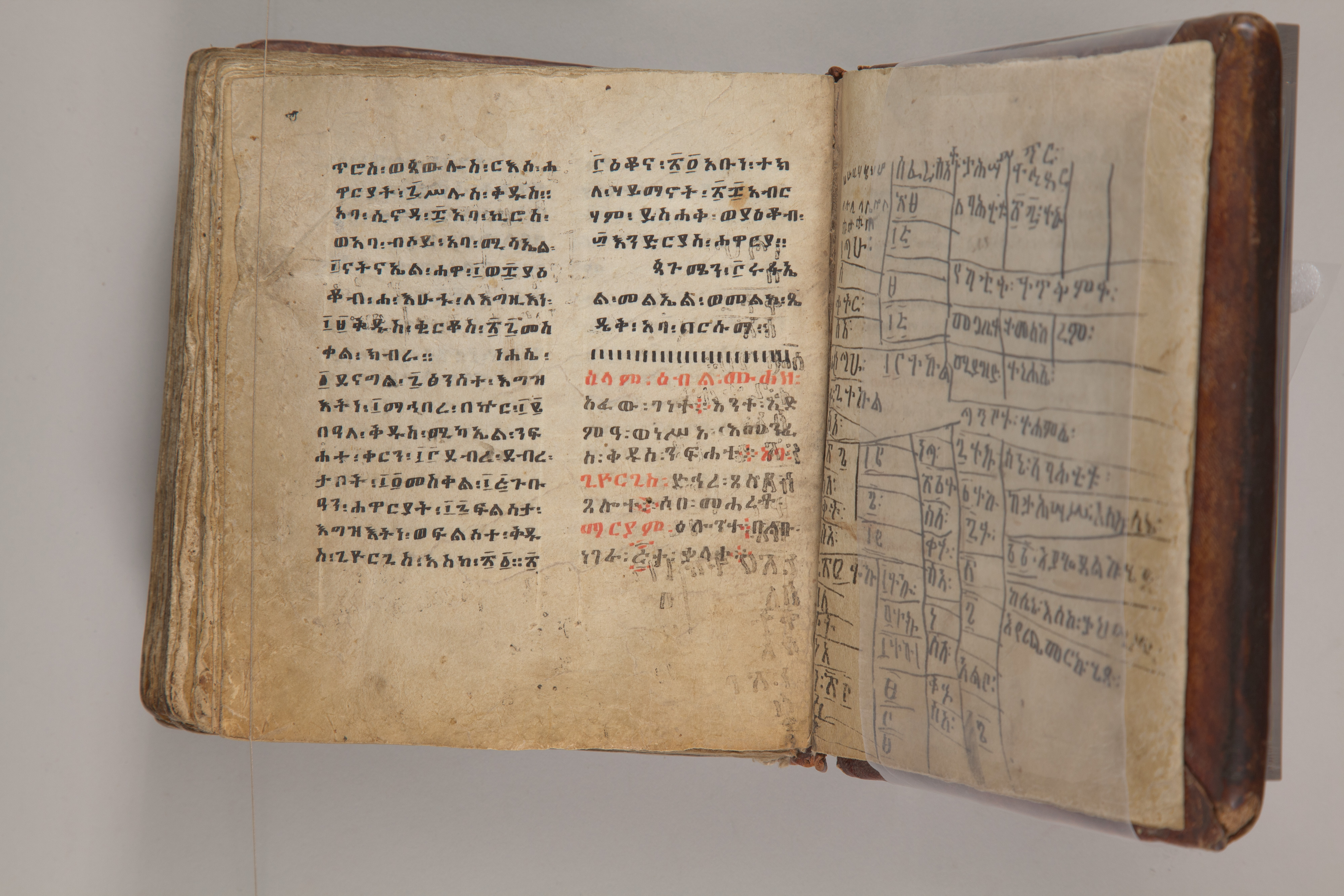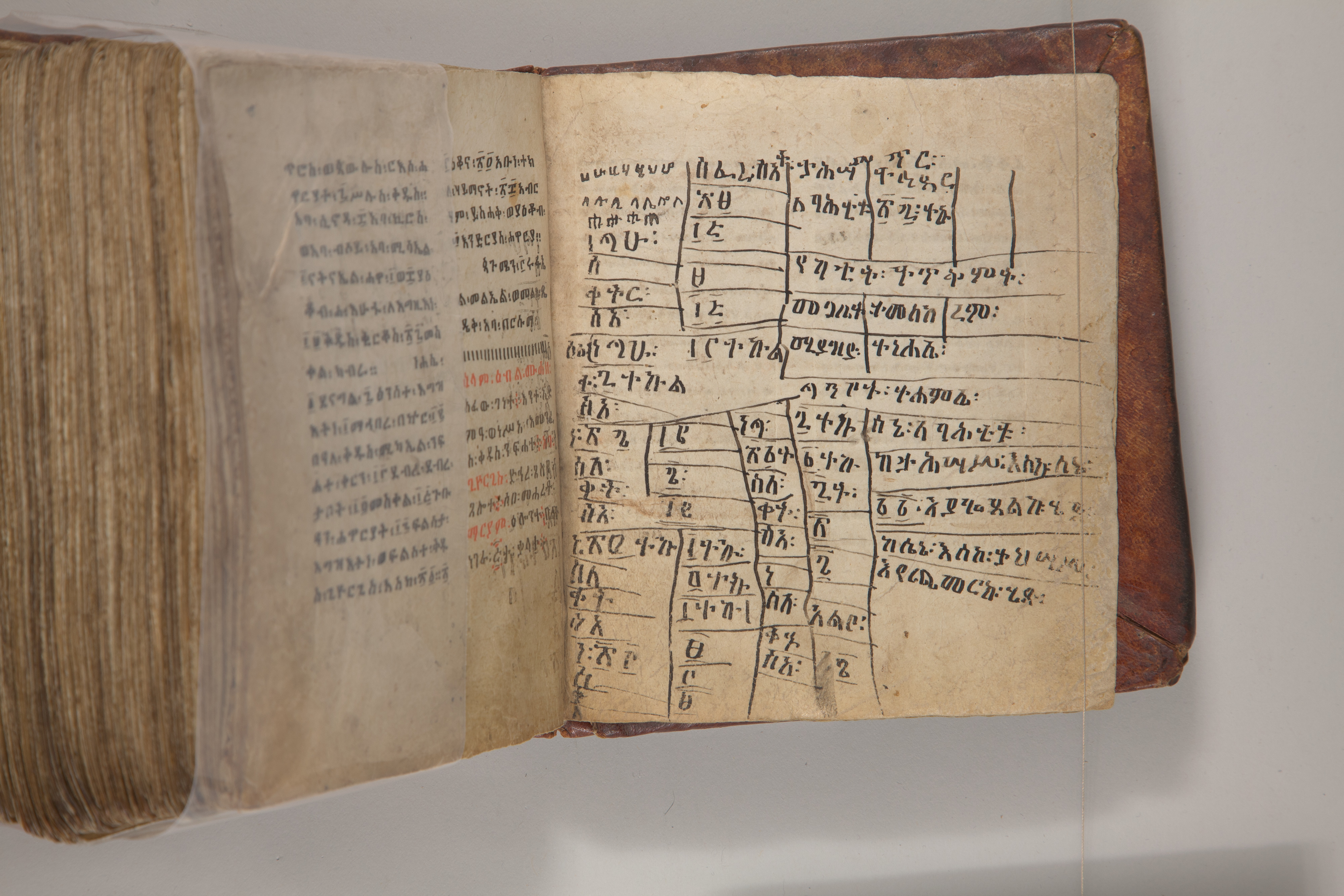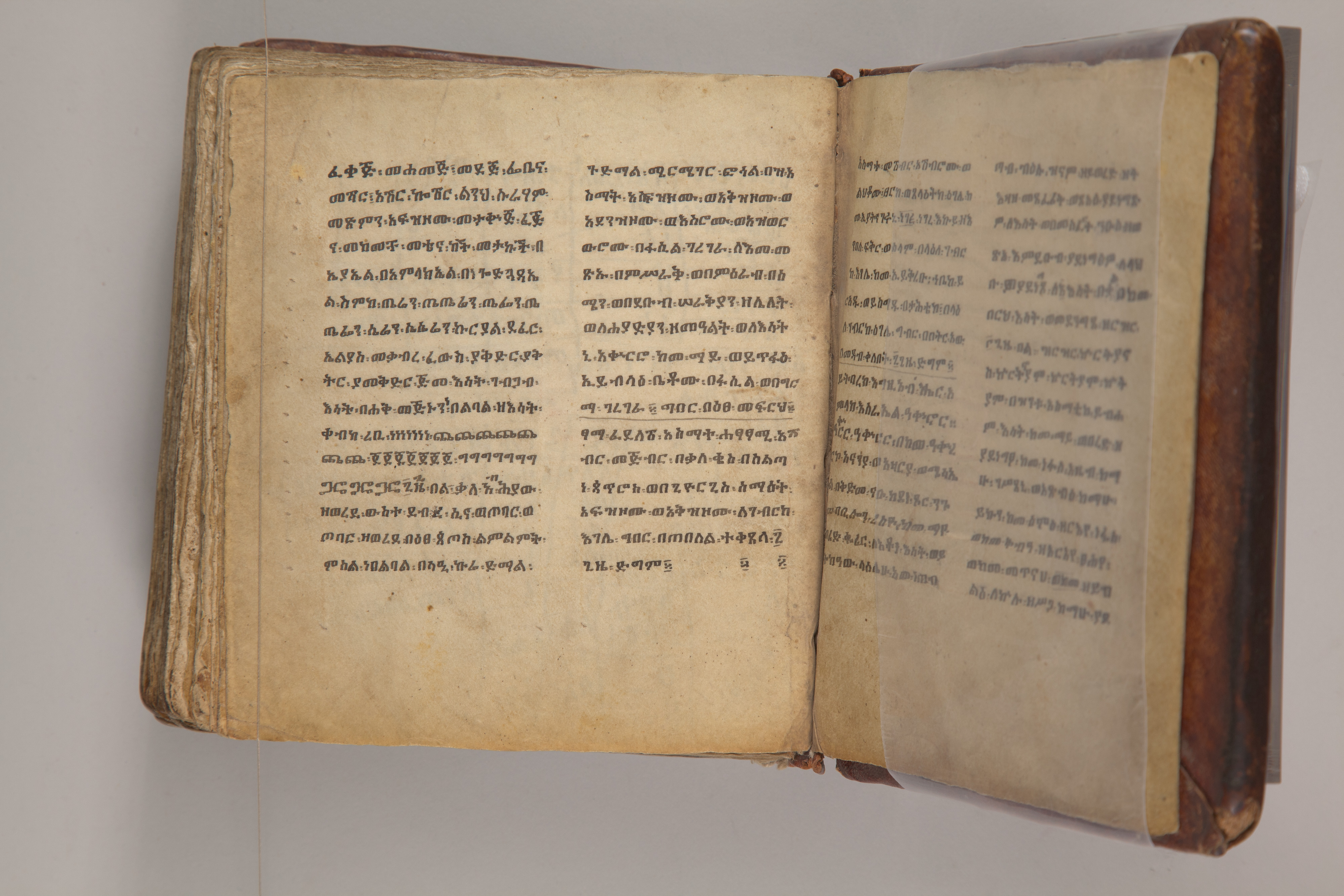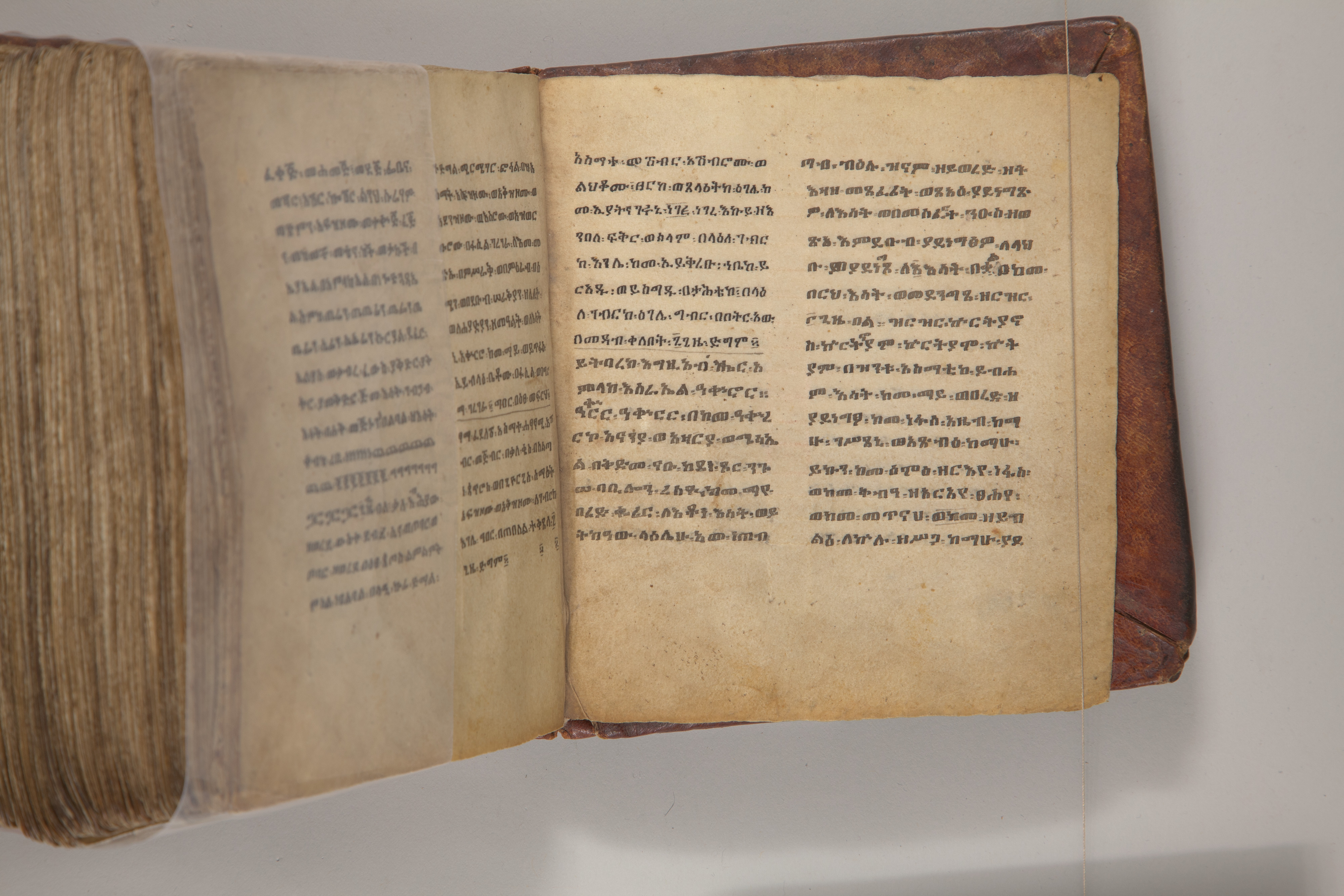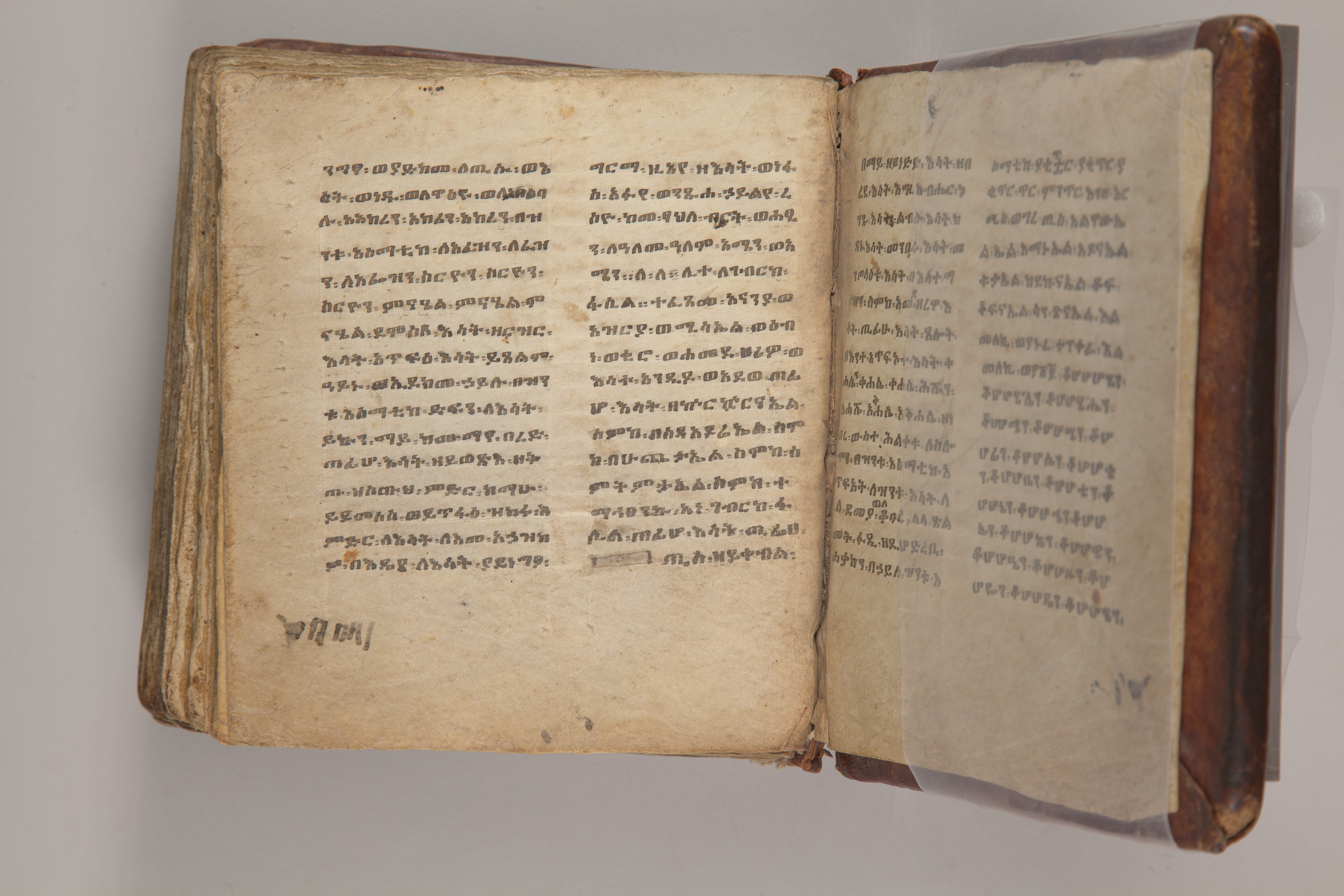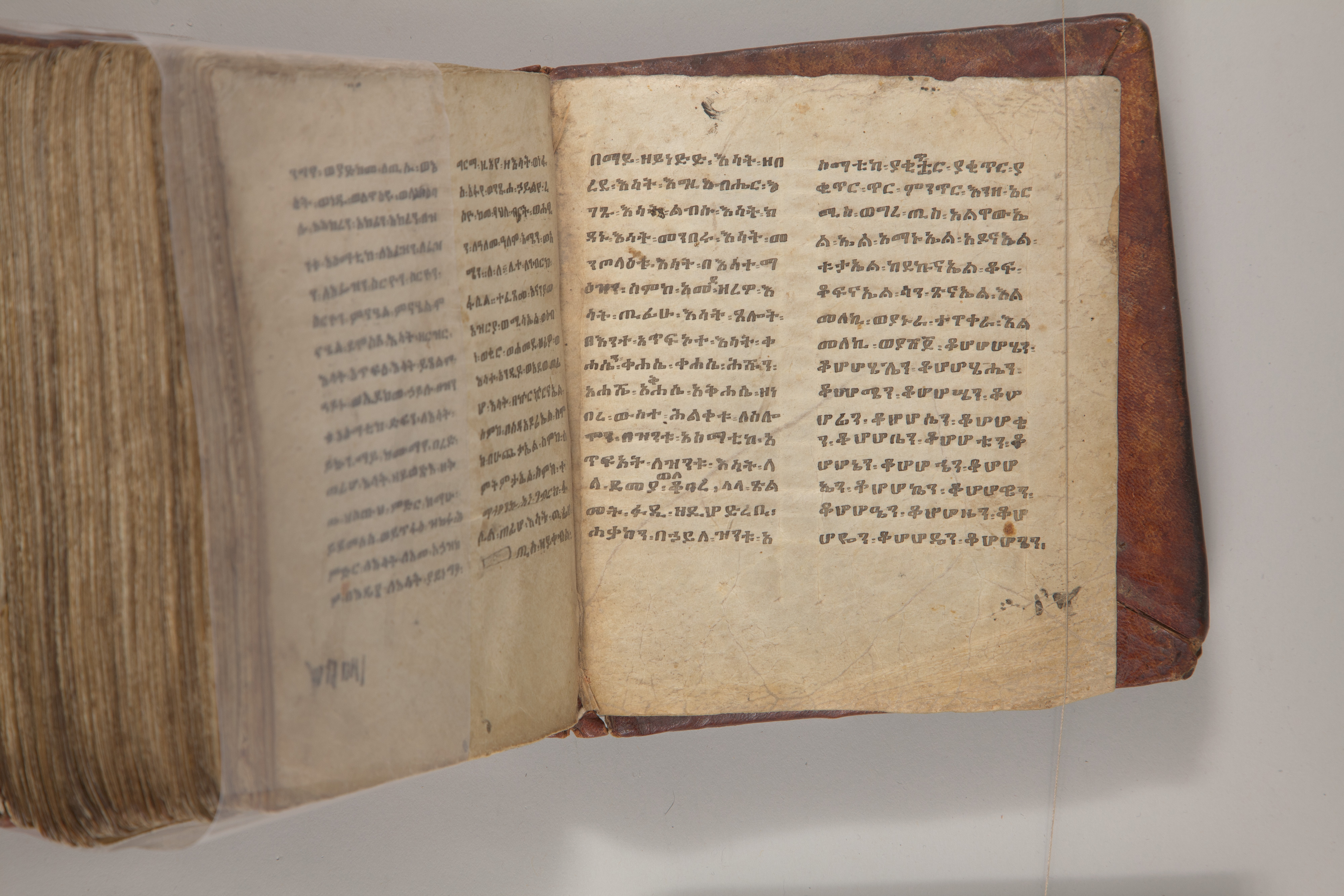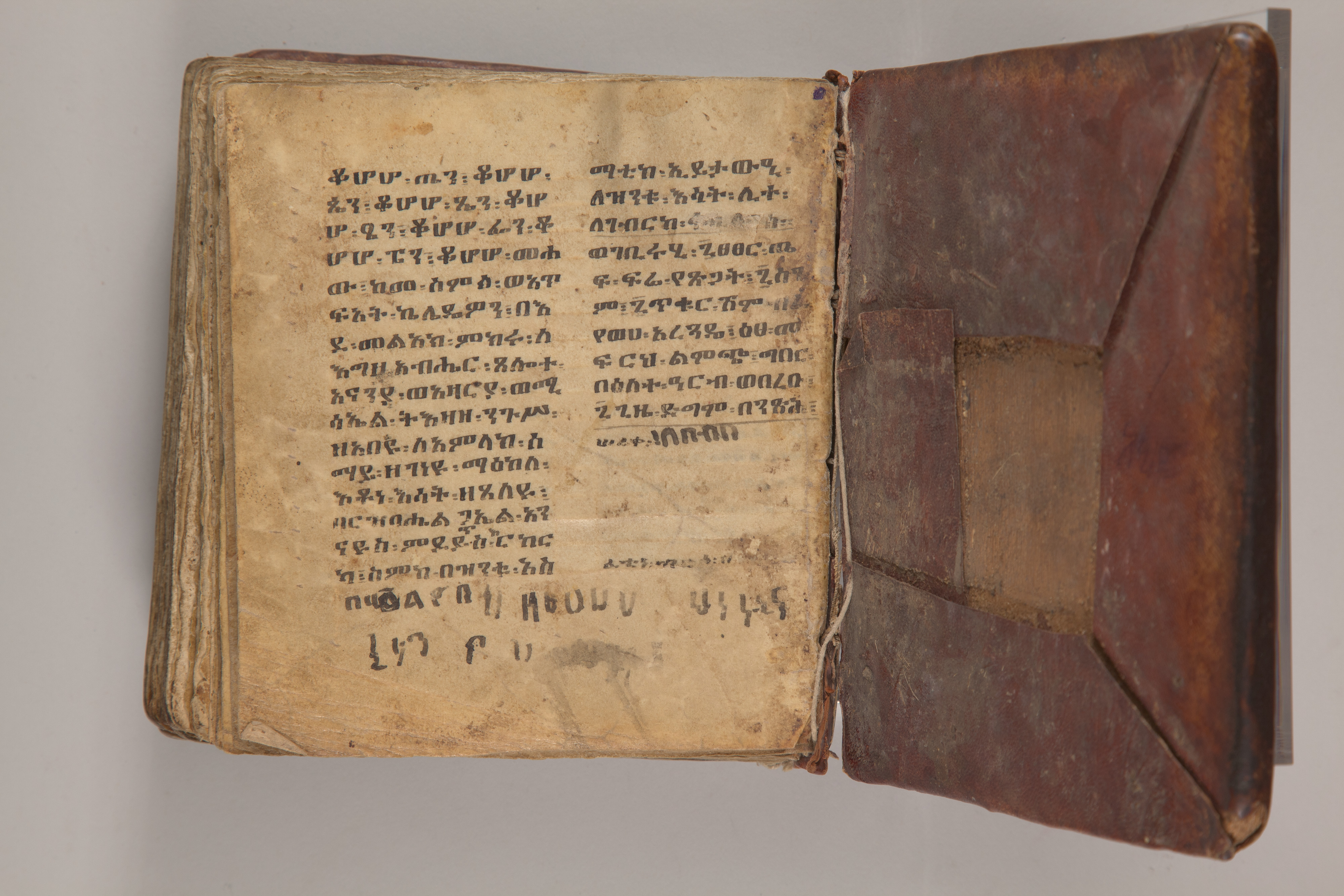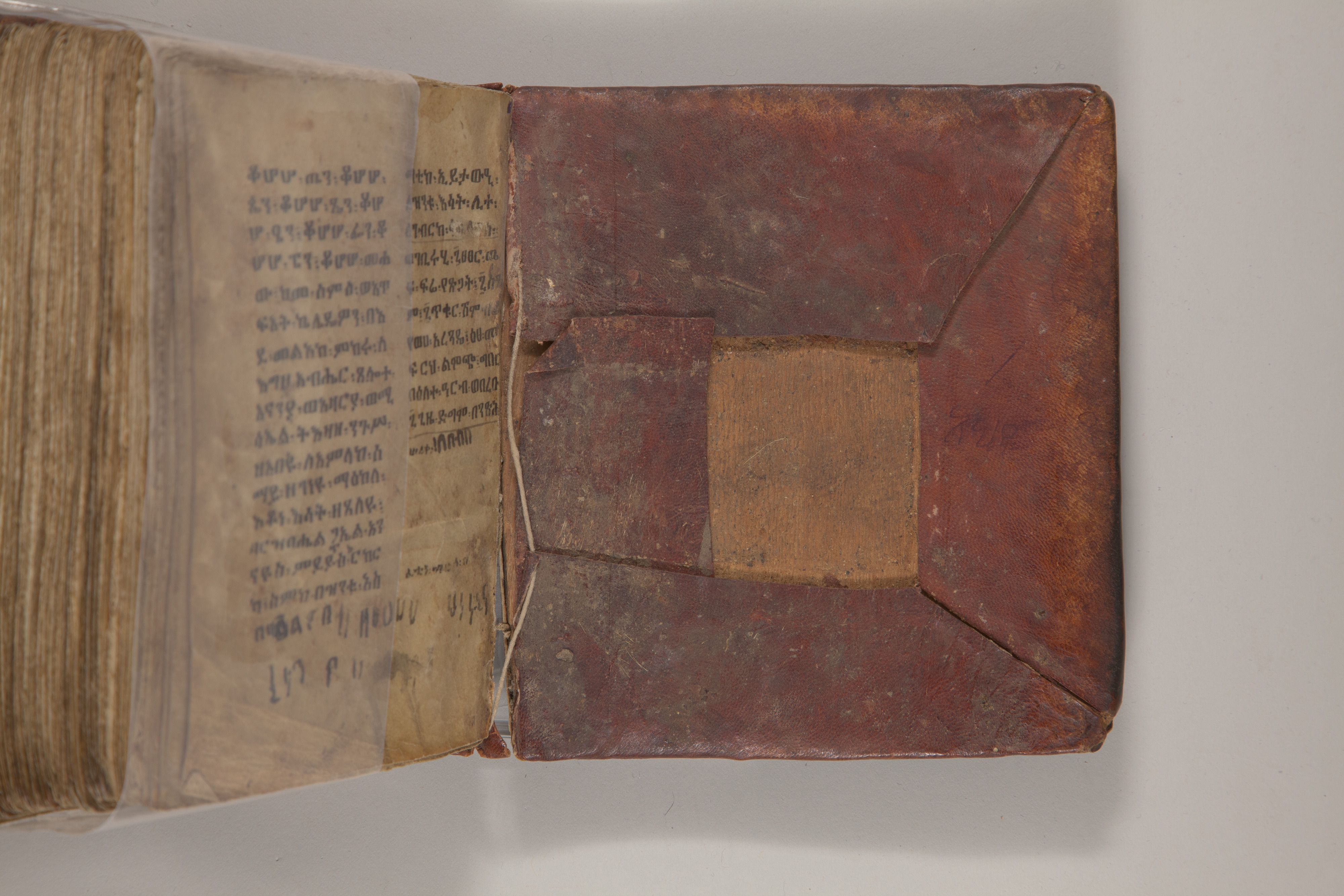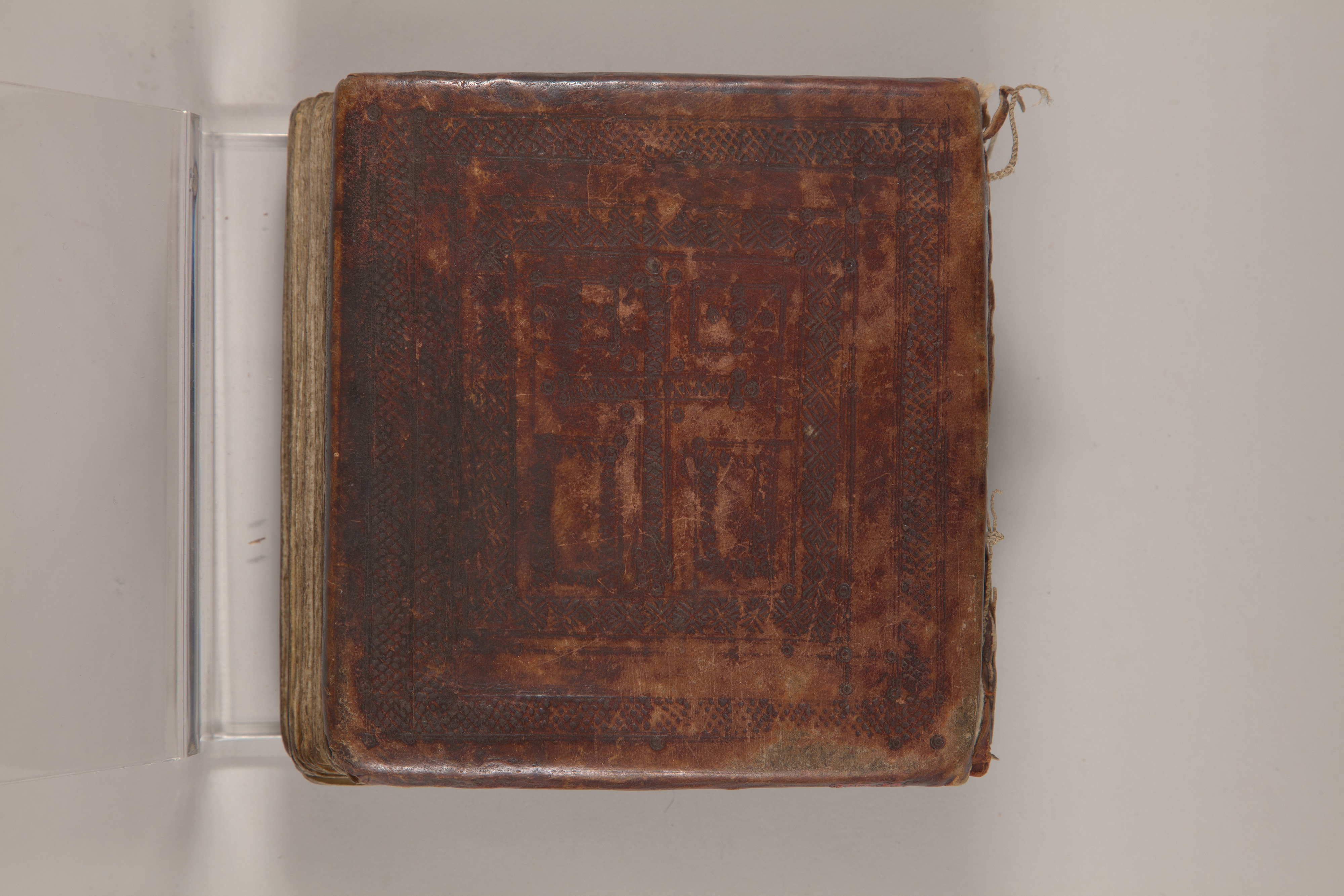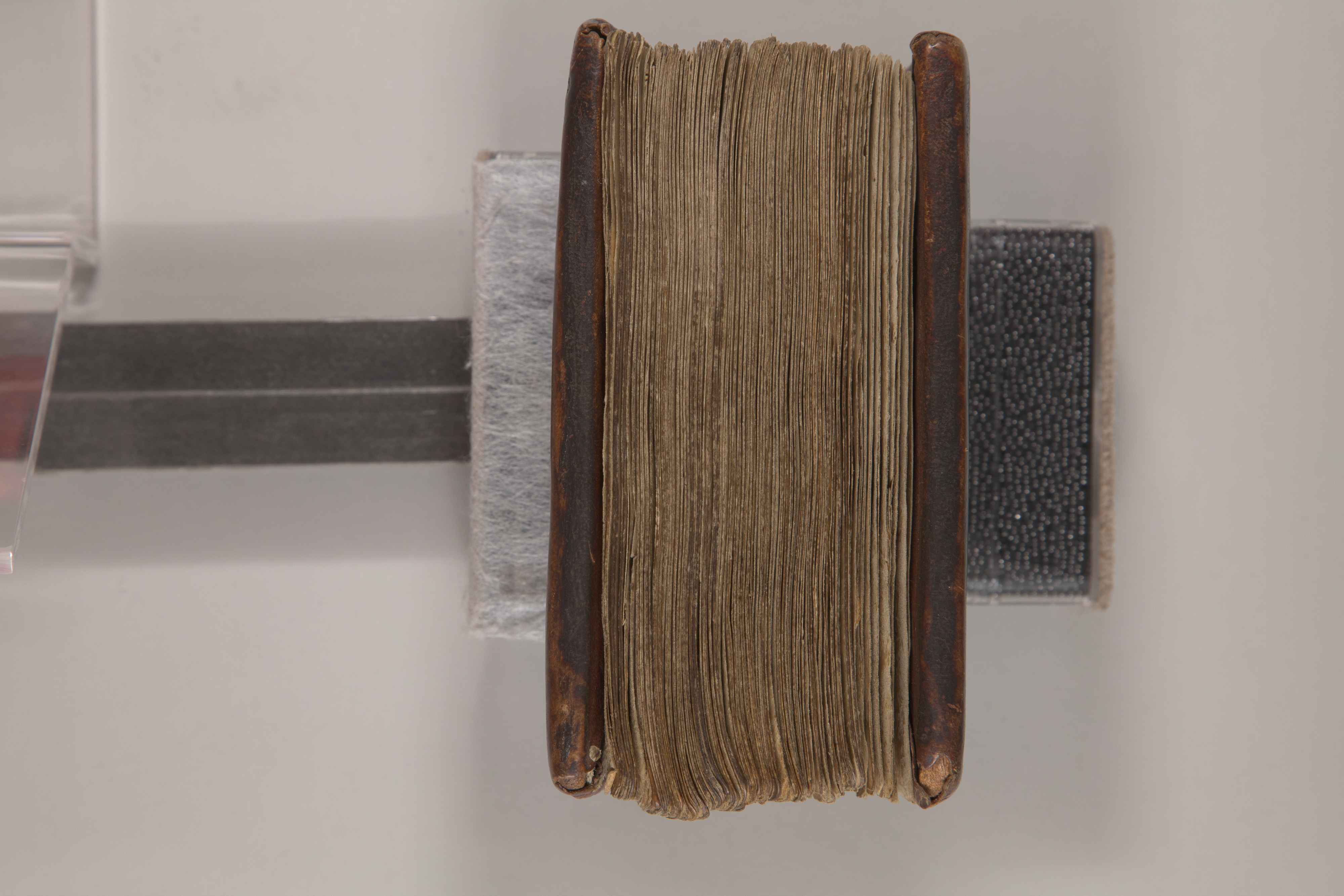Prayer Book: Arganonä Maryam (The Organ of Mary)
Attributed to Baselyos (The Ground Hornbill Master) Ethiopian
This intimately-scaled illuminated manuscript is a luxury example of the Arganonä Maryam (The Organ of Mary), one of the most popular Ethiopian Orthodox prayer books dedicated to the Virgin Mary. It is one of ten works credited to the late-seventeenth century scribe Baselyos. These share a distinctive style of bold, linear, geometric graphic ornamentation. This manuscript features four distinct kinds of ornaments: full-page illuminations; interlaced borders (haräg); magical images; and textual ornament, including punctuation marks and headers. The images throughout the 150-folio text are rendered in a reduced color palette of black, ochre, red, and white. Crisp black lines divide flat planes of pigment into cross and triangle shapes, motifs repeated throughout the manuscript. These vivid color fields are juxtaposed with fine lines evoking woven texture. Non-illuminated pages are filled by text containing prayers to the Virgin Mary.
Abba Giyorgis of Sägla is traditionally credited with writing this hymn of praise to the Virgin Mary in the fifteenth century. Venerated as a saint, Giyorgis of Sägla was a major fifteenth century author of religious texts written in Gə’ez, the liturgical language of the Ethiopian Orthodox church. He is depicted in the illumination on the reverse of the first folio (1v). His oval-shaped head, hair, turban and halo nest within one another. The sense of expanding form is enhanced by alternating flat planes of red and black with thin hatching. Crescent-shaped black eyebrows frame the half-moon eyes, their sloping forms echoed below by the long mustache. The saint wears a long triangular black robe, the hem lifted to reveal bare feet turned at right angles from the ankles. The upper part of his scapular, an apron-like religious garment worn atop the black robe, is patterned with fields divided by a central cross into eight triangles, and then again by a cross set on the diagonal. This motif is called a "gyronny," and repeats both in the border of this illumination and throughout the work. Thin hatching brings lightness to both the robe and in the border, interrupting the otherwise matte planes of color. Posed in the orans position, a gesture of raised hands with upturned palms. The oversized hands and extended fingers with prominent nails (or finger pads) exaggerate his prayerful stance. Rather than the three-quarter pose favored by Ethiopian artists from the seventeenth century onwards, its frontal pose reflects those typically used in fifteenth century Ethiopian manuscripts. This depiction appears to be a kind of convention that the artist of this manuscript developed for depicting sacred figures. Modifying little more than the pattern of their robes, or their placement within the composition, he employed it in other religious works to depict saints like Luke the Evangelist, Täklä Haymanot, and Gäbrä Mänfäs Qəddus. If not for the identifying caption written inGə’ez above his head, the figure depicted in the Metropolitan’s manuscript would be impossible to distinguish from those other holy men.Though dedicated to the Virgin Mary, one of Ethiopia’s most popular saints, this work does not include her image, unlike other religious texts dedicated to her.
While the original text was probably a long prose passage, subsequent examples—including this one—divided the text’s prayers according to the days of the week. The names of the days of the week are written in the small boxes at the summit of the elaborate borders, allowing the owner to select the appropriate daily prayer. Called haräg in reference to their vinelike interlacing motifs, these banded borders serve to both highlight and separate key parts of the text. This Arganonä Maryam contains five full-page haräg, and a smaller half-page example that encloses the column of text intended for Friday (ዘ ዕለተ :ዓርብ). Painted with the same colors used in the primary illumination, the haräg incorporate three major motifs in a variety of arrangements: interlaced bands; gyronny squares filled with radiating triangles; and nested triangles. The repetition of motifs ensures that each haräg is unique, yet remain harmonious throughout the work.
The manuscript contains two additional illuminations. Rather than being purely graphic, or abstract, these are magical images. Magical images, as well as a wide variety of magical texts or magical-religious prayers, are part of Ethiopian Orthodox Christianity: generally, they are characterized by the belief in the power of a name or prayer, and its associated ability to protect, heal, or fulfill a desire. Typically included in scrolls or codices, talismanic images (ṭälsäm) are a particular kind of representation of this magical belief. Imbued with their own power to heal or protect against disease and misfortune, these images are not religious, but can be better understood as protective tools. The eight-pointed star with triangular and swirled projections (folio 123v) is commonly known as the "Seal of Solomon," a reference to the Ethiopian king’s reported descent from the King of Solomon. Several pages later, folio 134v is illuminated with a design of magic squares encased in an interlaced border. The white diagonal rods that both divide the individual squares and subdivide the illumination into smaller quadrants form a series of x-shapes. In combination with prayers, these white x-motifs aid in the undoing of spells. The magic squares are built from the same gyronny pattern used throughout the book, visually linking the Christian and magical imagery.
Baselyos incorporated magical images into at least one additional manuscript, an Arganonä Maryam now in the collection of Oxford University’s Bodleian Library (Ms. Aeth. e.28), which also shares an identical harägwith the Metropolitan’s prayer book. Notations, including a table of numbers, around the talismanic image in the Met’s volume are in a different scribal hand than the rest of the text, suggesting a later addition. Additional commentary has been added in pencil on the page with an illuminated hornbill and the colophon (123r). Red text has also been scrubbed out and rewritten on that same page, suggesting the alteration of a name within the text, possibly effacing that of the previous owner. These additions, along with two-fingerprint shaped smudges on folio 124r and notations written in pencil on folio 123r, suggest the active use of this text by multiple individuals. The high quality of the work—from its fine parchment to its exquisitely rendered script and illuminations—suggest an elite owner. Written during the fifteenth century, when the cult of the Virgin Mary was being vigorously promoted by both the Ethiopian Church and rulers such as Emperor Zärʾa Yaʿəqob, the book is an effusive adoration of the mother of Christ. Written in Abba Giyorgis’ signature style—which combines metaphor and simile with natural and scriptural references—the text praises the Virgin while guiding the reader as they atone for their sins and seek her prayers: for example, the introductory prayer lauds her grace and virginity, comparing her to a "ship of gold" and a "pillar of pearl." (Budge 297) While volumes such as the Metropolitan’s are divided into the days of the week, the original text was likely a single story; divisions between days frequently interrupt the flow of the narrative. As such, only five days of the week can be accounted for in this volume.
As is common in texts written in Gə’ez, the main text is composed in a carbon-based black ink, while vegetable-based red ink is reserved for proper names, punctuation marks, and headlines, as in the text indicating the days of the weeks. The text is written in the clear, vertical script known as Gwelḥ, a letterform that developed at the court in the mid-seventeenth century for use in official documents and presentation manuscripts. Its use in the Arganonä Maryam suggests the importance of the text, or of its commissioner. As the style of the illuminations in the manuscript are so distinct from those that developed at the court at Gondär (which essentially dominated Ethiopian Christian art for a century-and-a-half), the use of this courtly script suggests that the work had two makers: a scribe who wrote the text, and an artist who created the full-page illuminations and the borders. Artists did not frequently sign their work at the time of this manuscript’s creation.
A black and ochre bird with a pointed beak seems to hop on one foot below the text on folio 123r. Bent Juel-Jensen has identified this bird as the ubiquitous Abyssinian ground hornbill (1977). Present in other visually similar manuscripts, this still-enigmatic avian has come to stand as an ‘image-signature’ of their creator. "The Ground Hornbill Master," as he has come to be known, may be the same individual as the scribe Baselyos (ባስልዮስ). This scribe included his name in the colophon on folio 123r of the Metropolitan’s prayer book, and on one other book. As the scribe and illuminator of Ethiopian texts were not always one and the same, it remains possible that Baselyos—the scribe of the Met’s volume—and the "Ground Hornbill Master"—the illuminator of this and other volumes—were two distinct individuals, though recent scholarship suggests they were a single creator, with the bird functioning as a visual signature that underscored the inclusion of the scribe’s name in the colophon. (Mercier 2012). However, there is debate as well about whether or not the "Ground Hornbill Master" was a single artist, or a group of artists. Stanislaw Chojnacki (1983) argues for a "Lasta school" of artists whose distinctive style emerged in both the Lasta province around the holy city of Lalibela and in the northern region of Tegray at the same time as the prolific, and better-known style of the court at Gondär to the south, exemplified in a diptych pendant in the Metropolitan’s collection (1997.81.1). Nearly a dozen examples of works in this distinctive "Lasta school" style exist, including codices, sensuls (folding parchment books), and one group of wall paintings in the rock-hewn church of Yohannes Metmek in Gazien. Several remain in use in Ethiopian Orthodox churches. Greater comparisons of the handwriting and illuminations across the texts, along with examinations of the colophons of each text, could clarify whether all of the works were created by a single scribe-artist, or by a workshop.
Baselyos, the scribe of this book, was likely responsible for the physical aspects of its creation, including the making of parchment and ink. Parchment for a book of this scale and quality was likely sourced from the skin of a goat or a gazelle. After soaking in water, skins are tied to a frame to be scraped clean of fat and flesh with a curved metal knife and a pumice stone, then dried in the sun. After drying, the skin is again scraped to removed hair and make the surface even. Prior to removal from the frame, the skin is pricked with an awl to indicate where the bifolio parchment sheets will be cut. Faint lines are then scored on the flesh side to guide the scribe’s pen, or to block out areas for illuminations. After the text and illuminations are complete, the collated bifolios are bound into quires, small collections of parchment leaves, and then bound with a kind of chain stitch. This manuscript’s 150 pages are bound into fourteen quires containing different numbers of bifolios. Quires one, seven, and nine each contain a bifolio where one of the leaves has been cut close to the binding, suggesting that pages were intentionally removed at an unknown time in the manuscript’s life.
Ethiopian manuscripts are nearly always bound between pieces of wood. Especially valuable works, such as this Arganonä Maryam, were then covered with dyed and ornamented leather. Once glued to the wooden cover with starch paste, the scribe decorated it with blind tooling, stamping designs into the leather with heated metal tools. While a large variety of patterns is preferred, as is typical in smaller codices, the cover of this prayer text incorporates only three of the most commonly used. The decorative motifs are not purely abstract, but often carry names that evoke both their own forms or the names of religious symbols. The bars of the central cross and the outermost border are filled with a hatched-design called "criss-cross" (res, ርዕስ) punctuated at the ends and corners by nested circles called "dove’s eye" (ayne regib, ዓይነ:ርግብ). The border surrounding the central cross is filled with an x-form motif also known as "cross" (mesqel, መስቀል), amplifying the symbolic power of the central image through repetition. A luxury volume like this was likely once enclosed in a leather pouch or wrapped in fabric.
Kristen Windmuller-Luna, 2016
Sylvan C. Coleman and Pam Coleman Memorial Fund Fellow in the Department of the Arts of Africa, Oceania, and the Americas
Further Reading
Budge, Alfred W. "Organ of the Praise of the Blessed Virgin Mary" in Legends of Our Lady Mary the Perpetual Virgin and her Mother Hanna (Oxford University Press, Oxford, 1933), 297–304.
Chojnacki, Stanislaw. Major Themes in Ethiopian Painting (Wiesbaden, F. Steiner, 1983), 489–494.
Juel-Jensen, Bent. "The Ground Hornbill Artist: Of 17th century Ethiopic Manuscripts." The Collector Limited, 1977, 61–74.
Selassie, Sergew Hable. Bookmaking in Ethiopia. Karstens Drukkers B.V, Leiden, 1981.
Published References
Mann, Griffith C. Art of Ethiopia. PaceWildenstein and Sam Fogg Rare Books & Manuscripts, New York October 18–29, 2005. pp. 92–93.
Due to rights restrictions, this image cannot be enlarged, viewed at full screen, or downloaded.
This artwork is meant to be viewed from right to left. Scroll left to view more.


